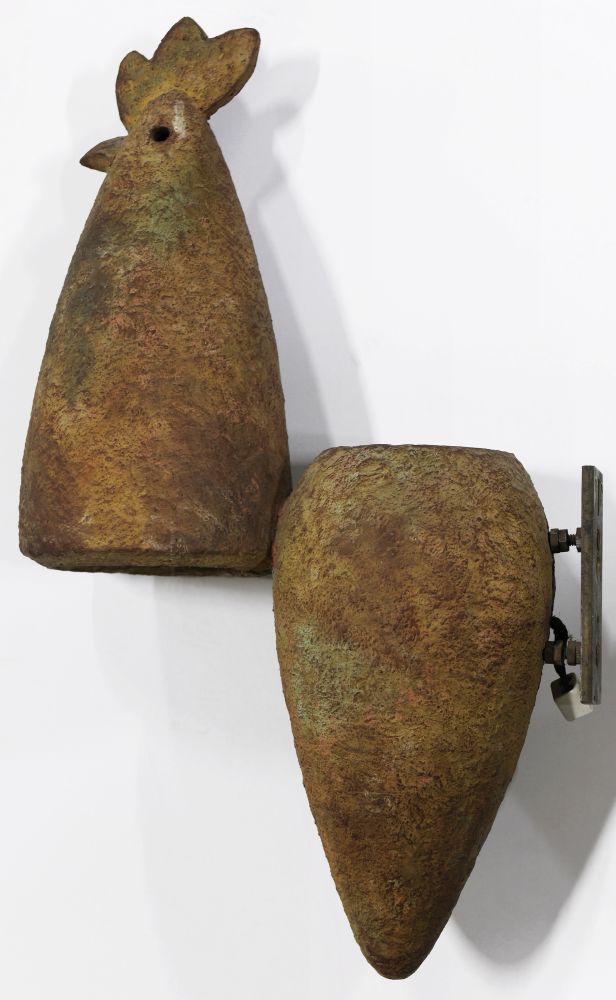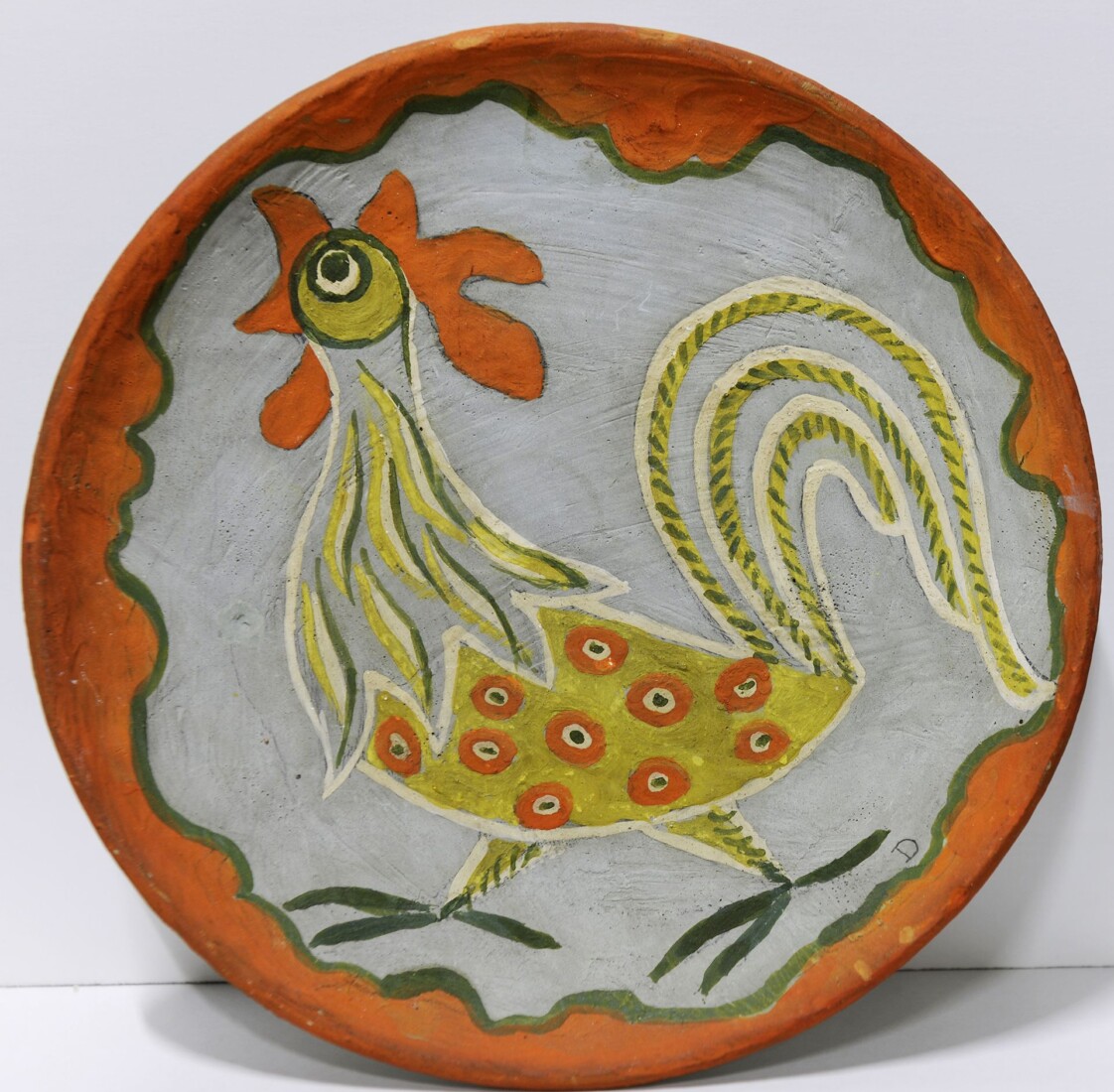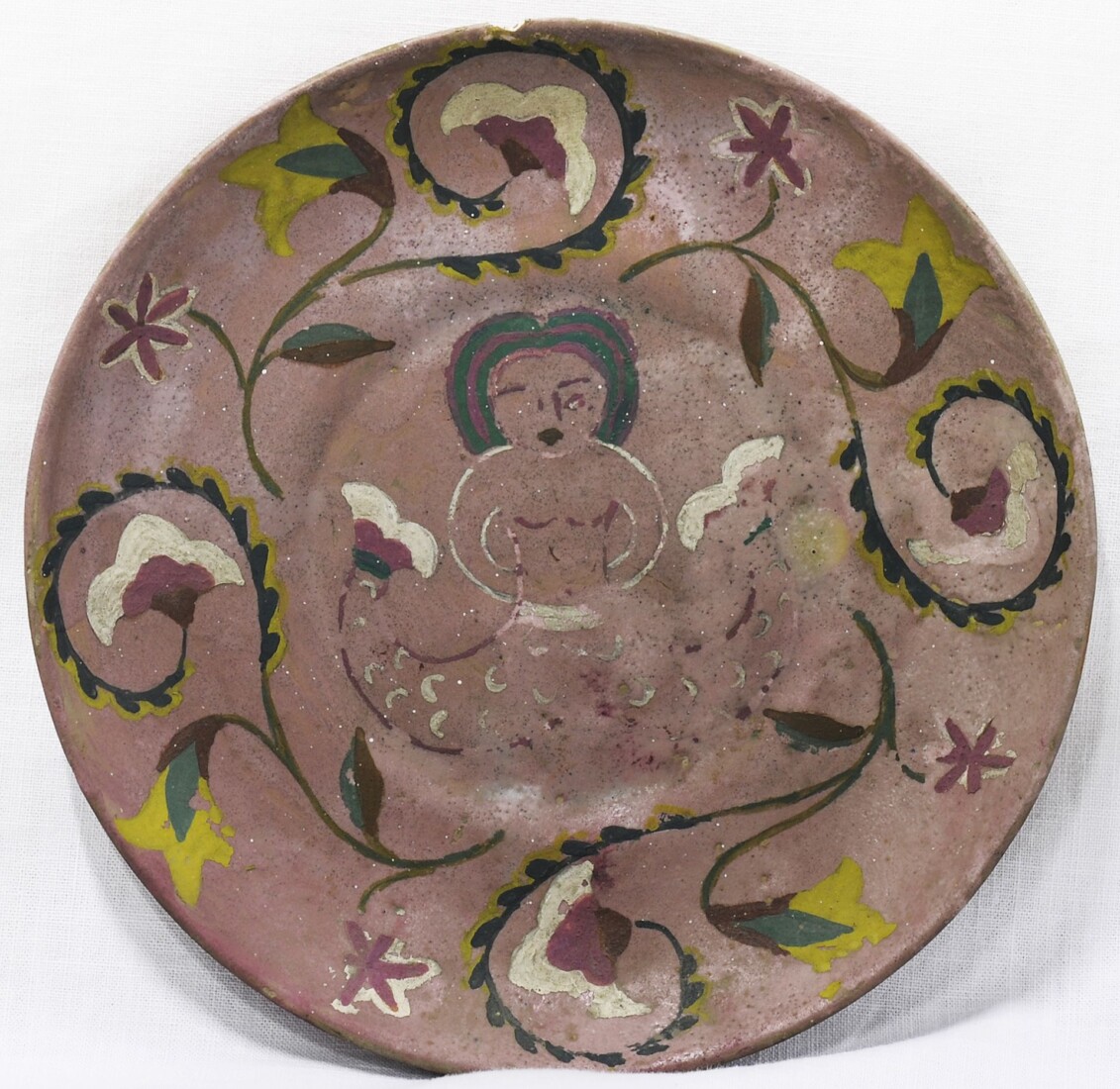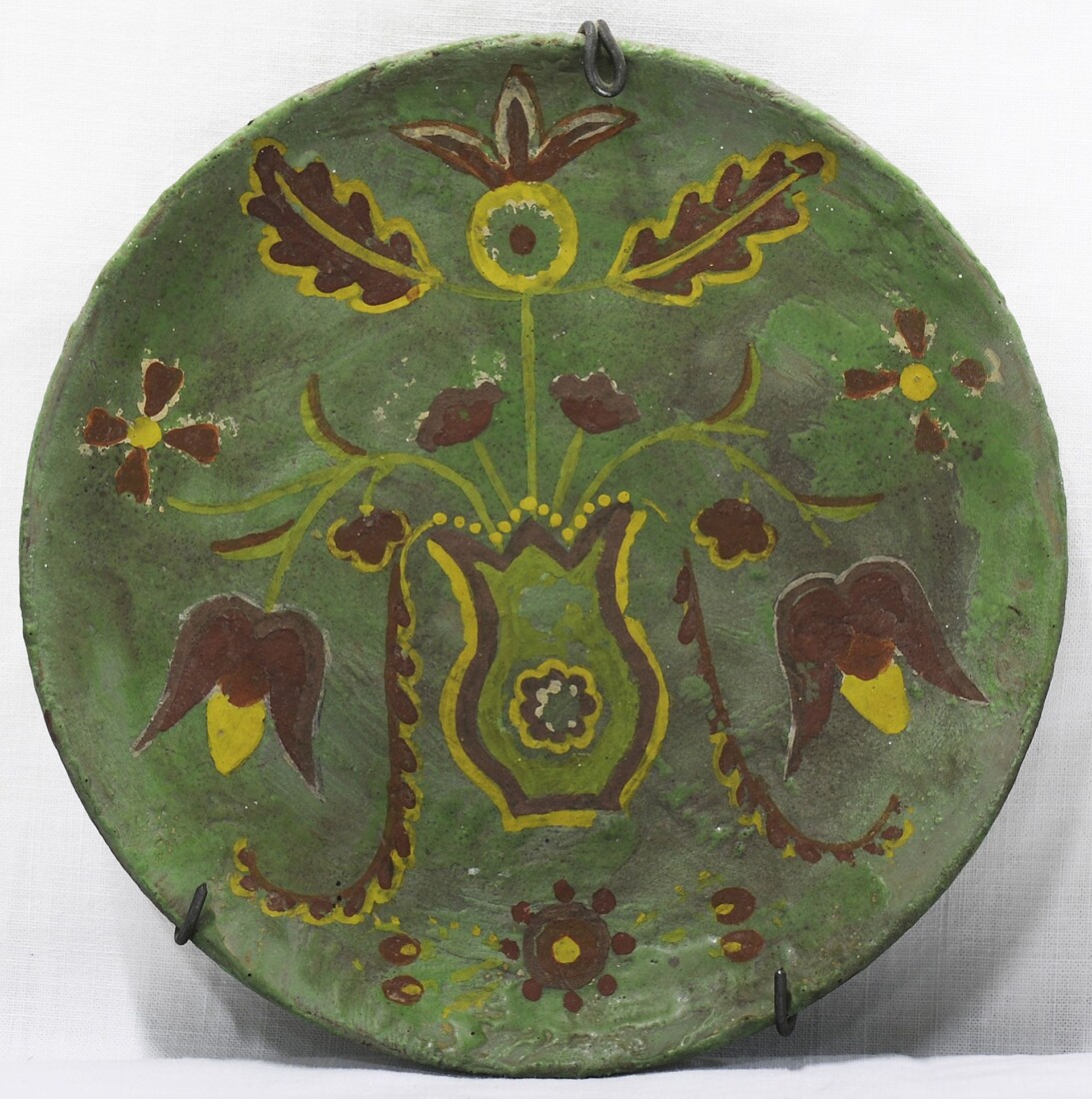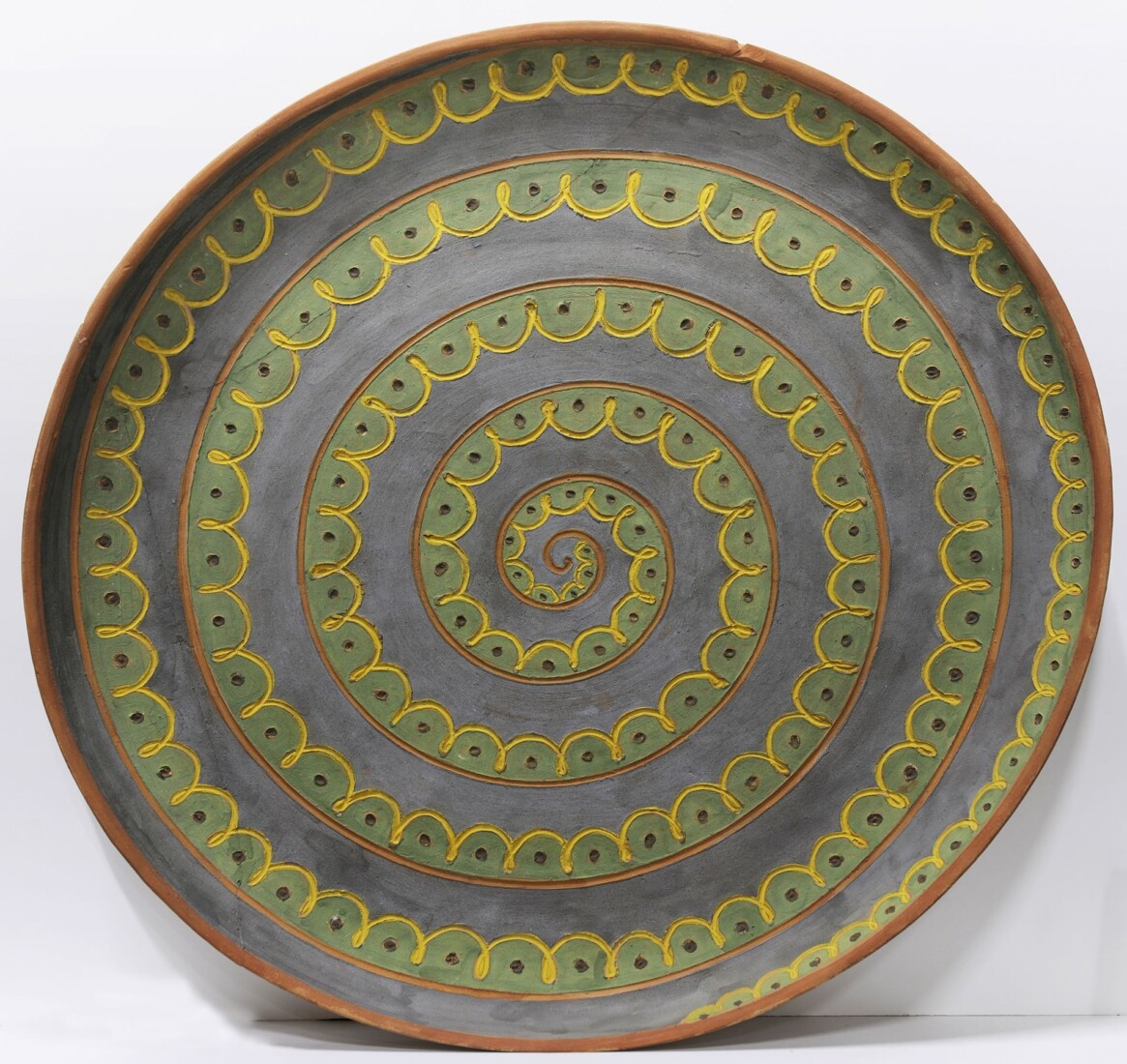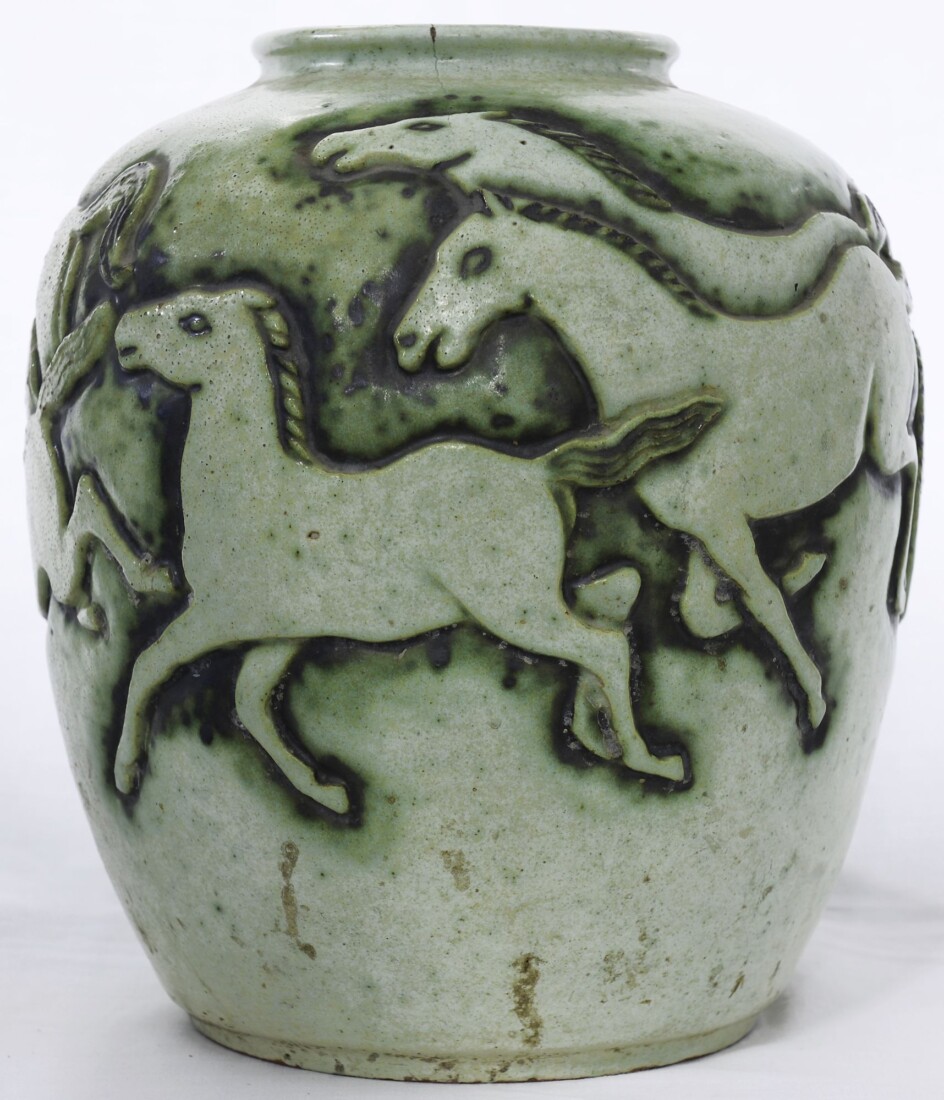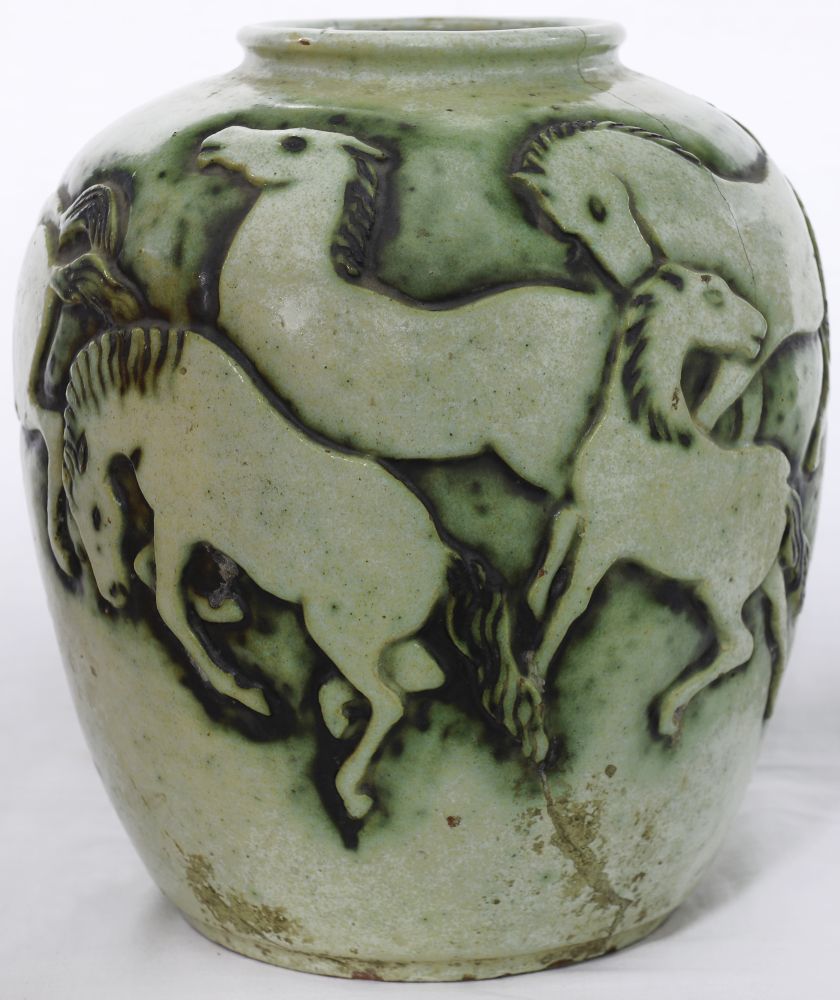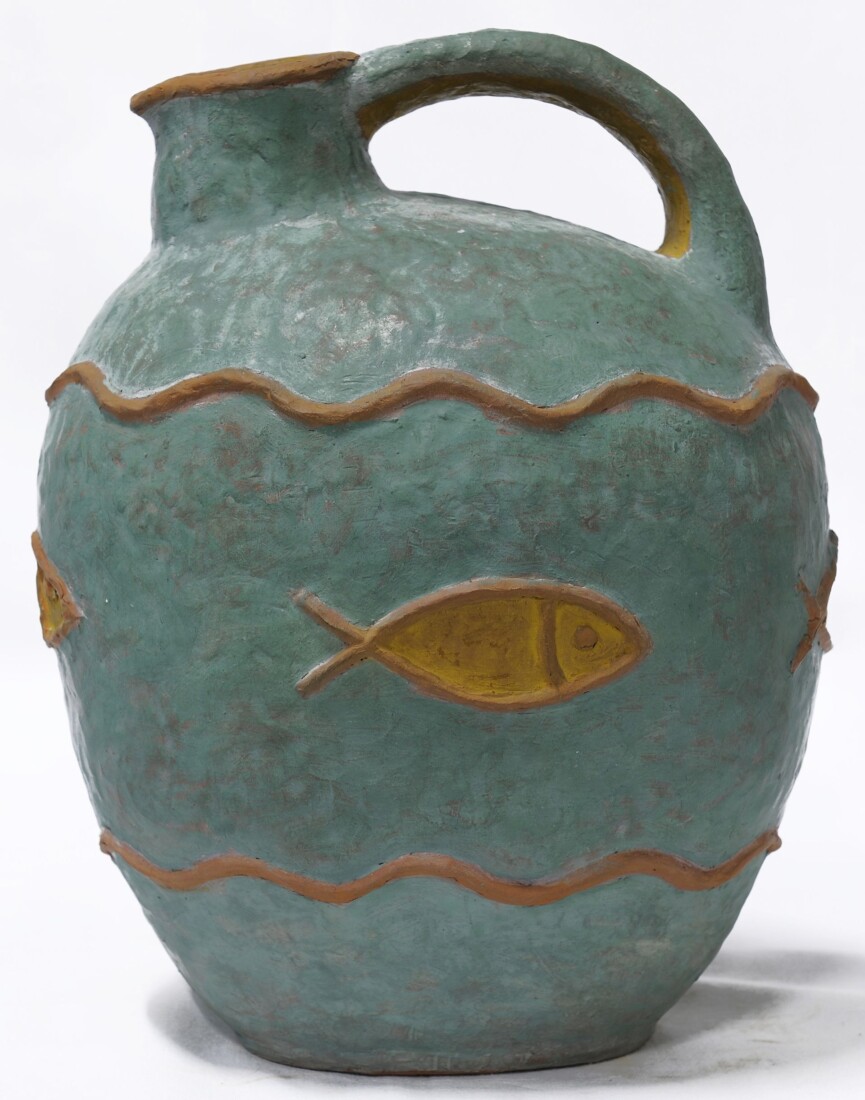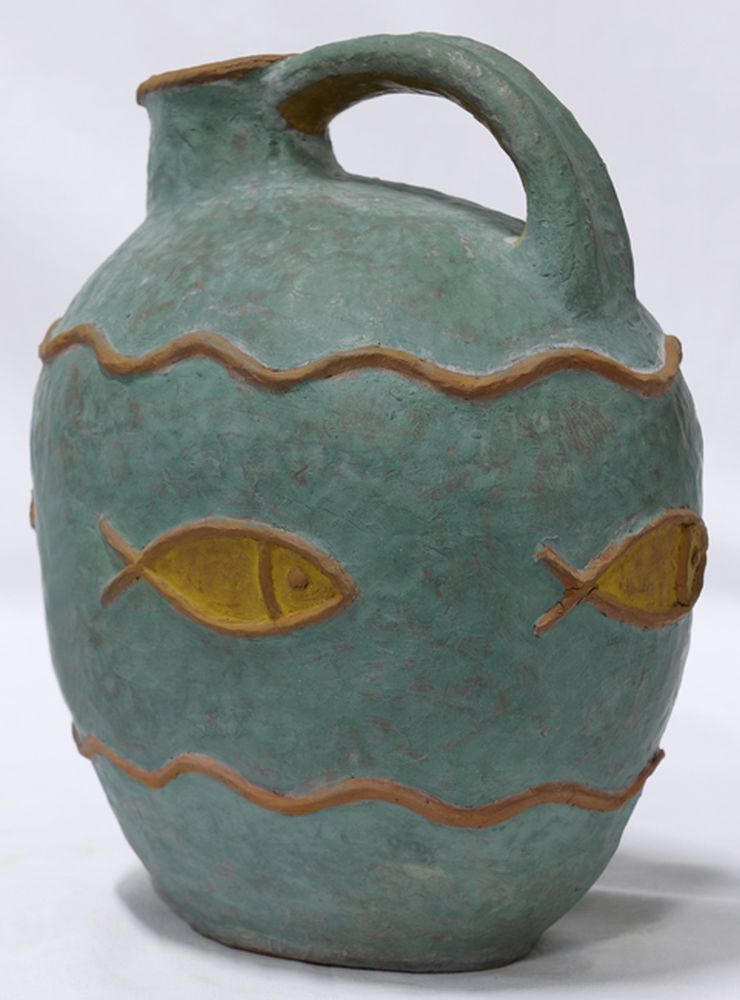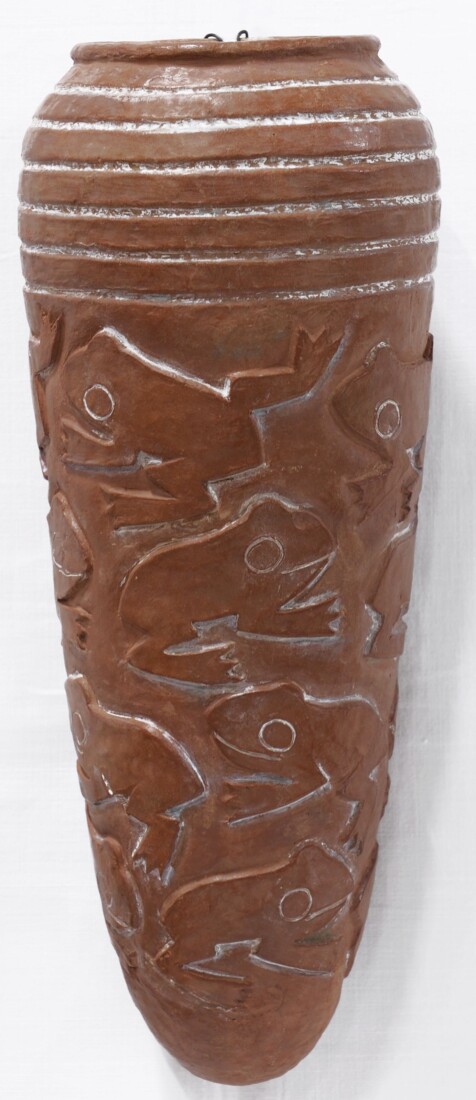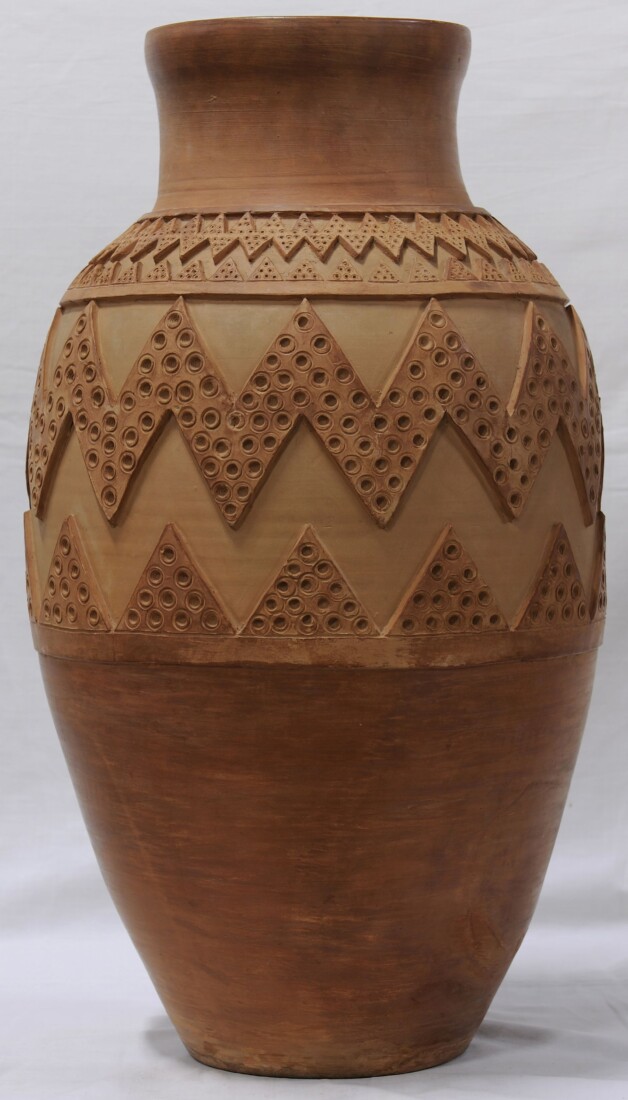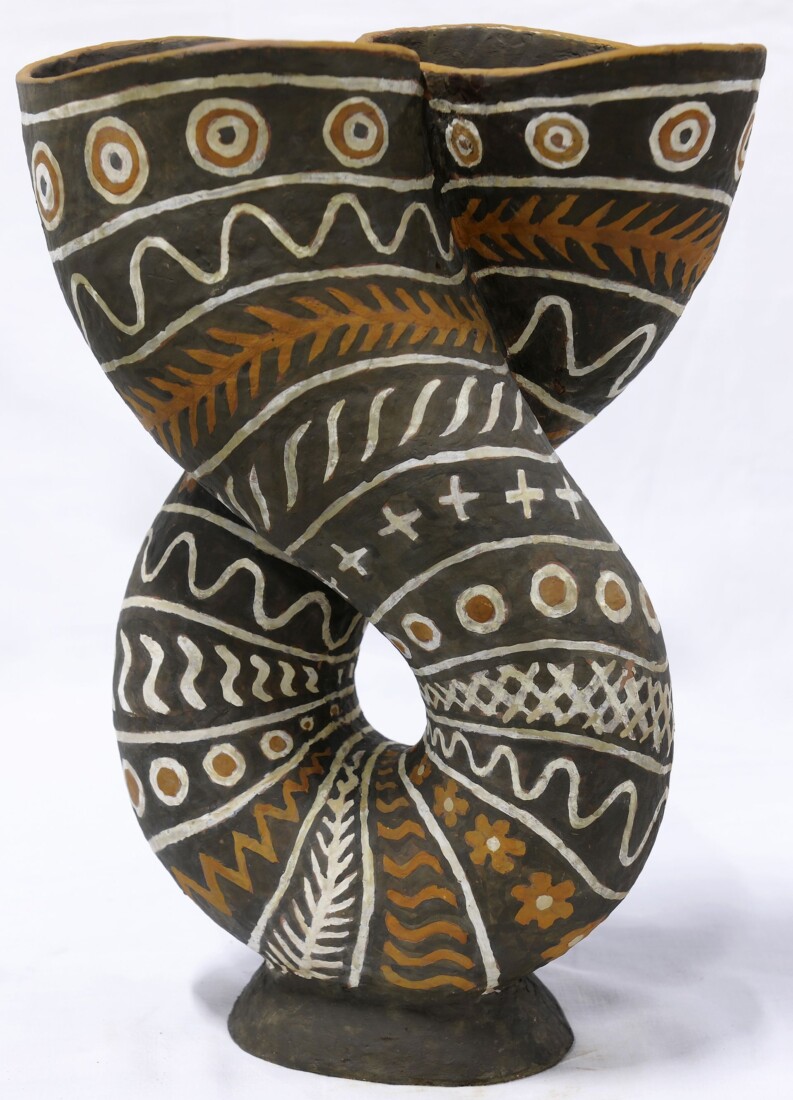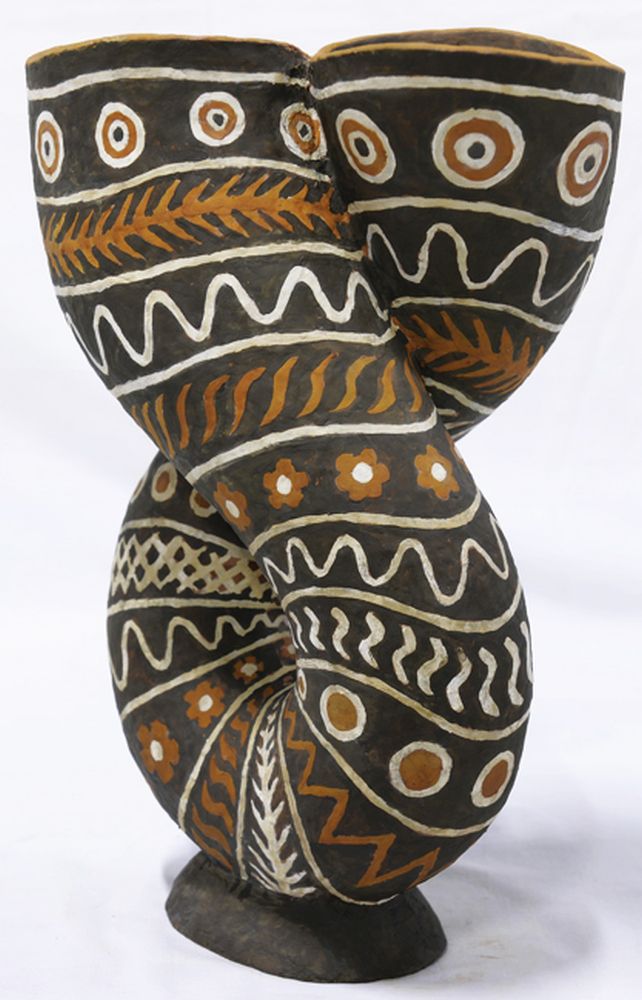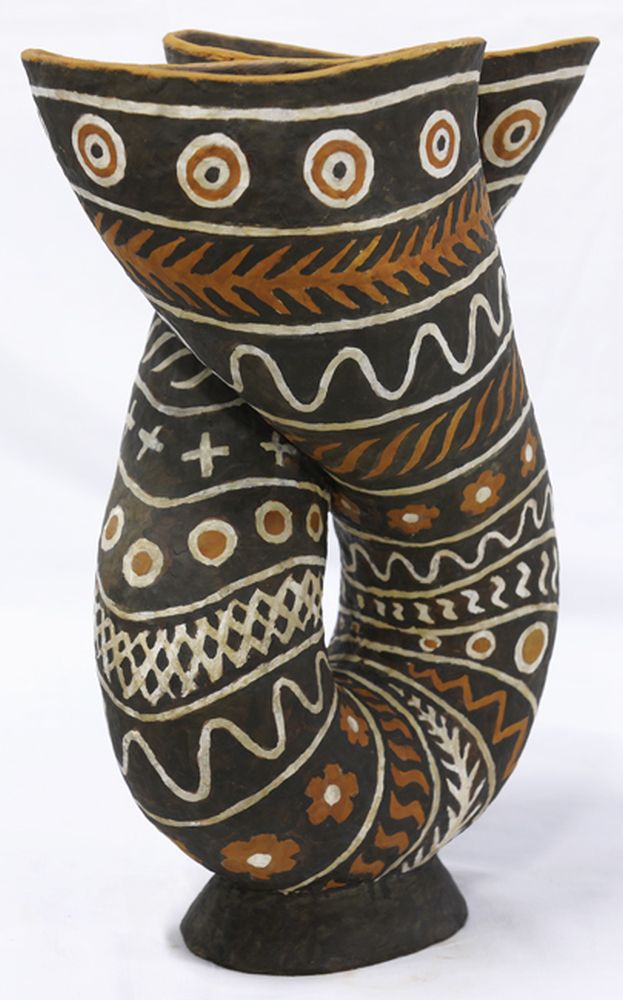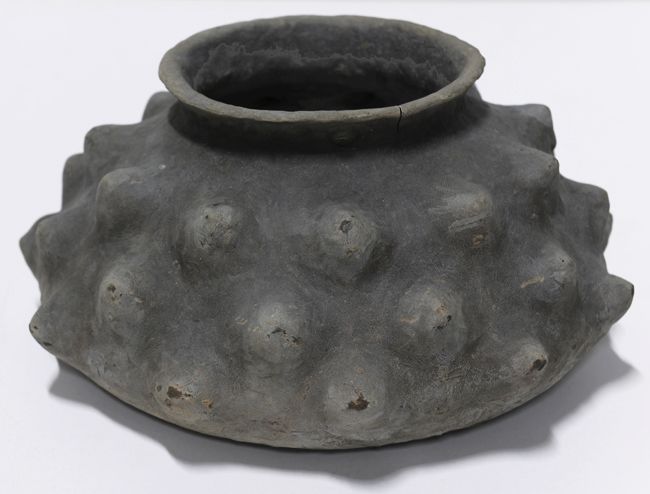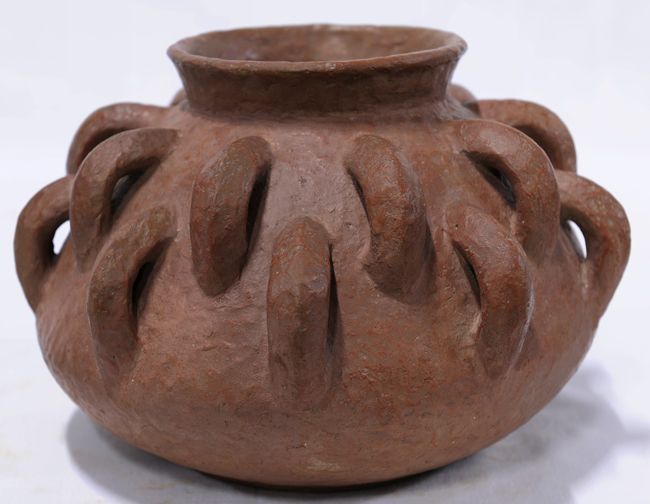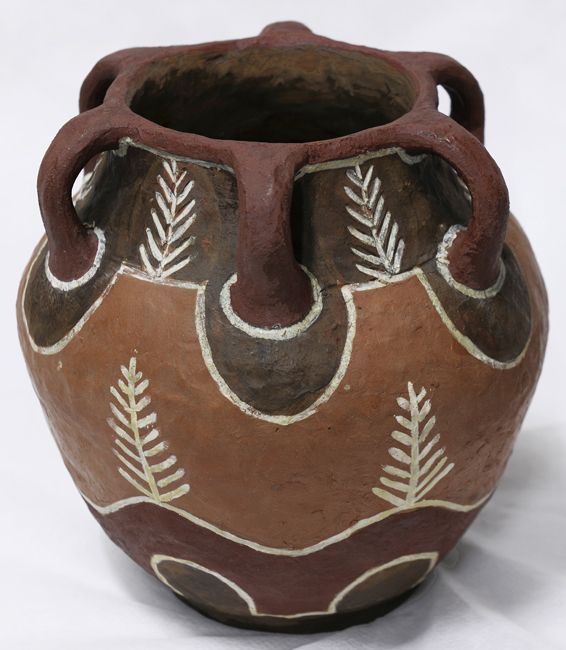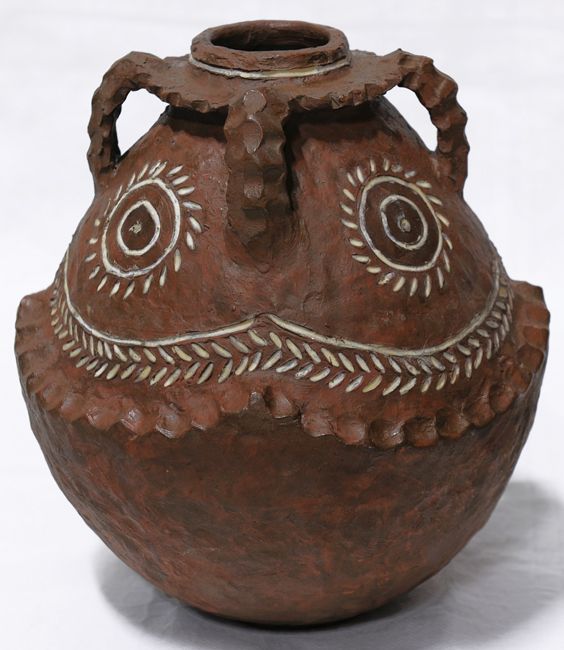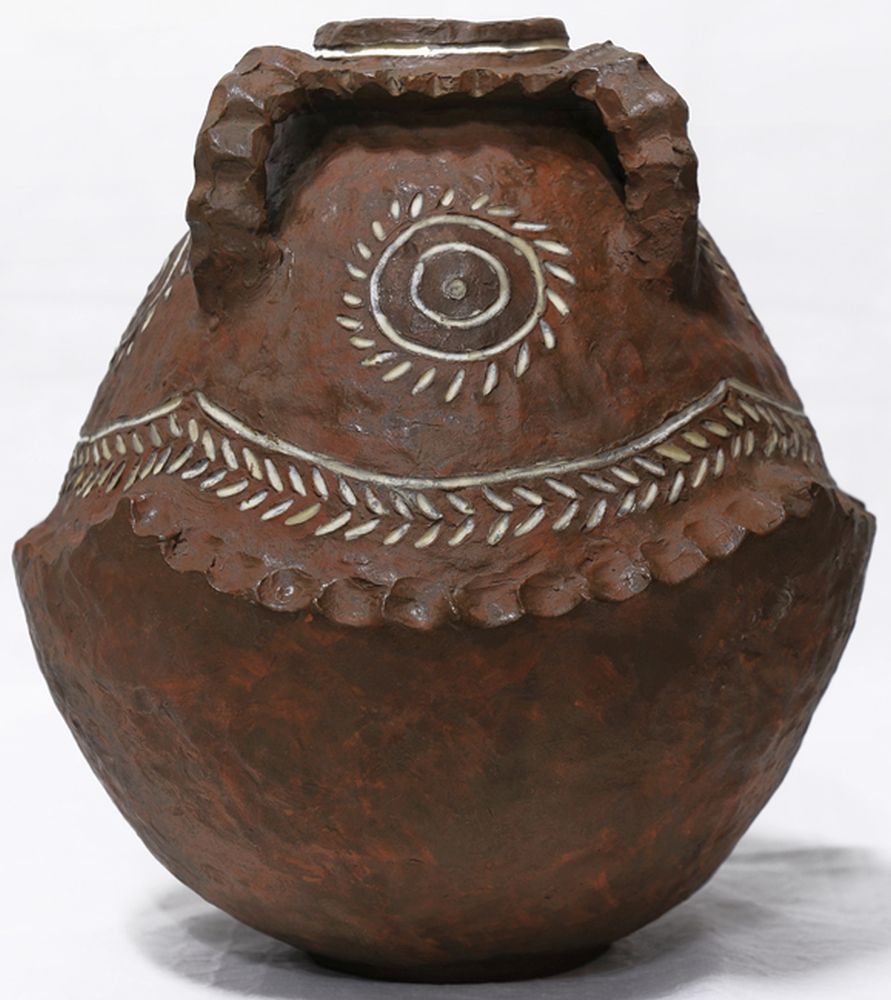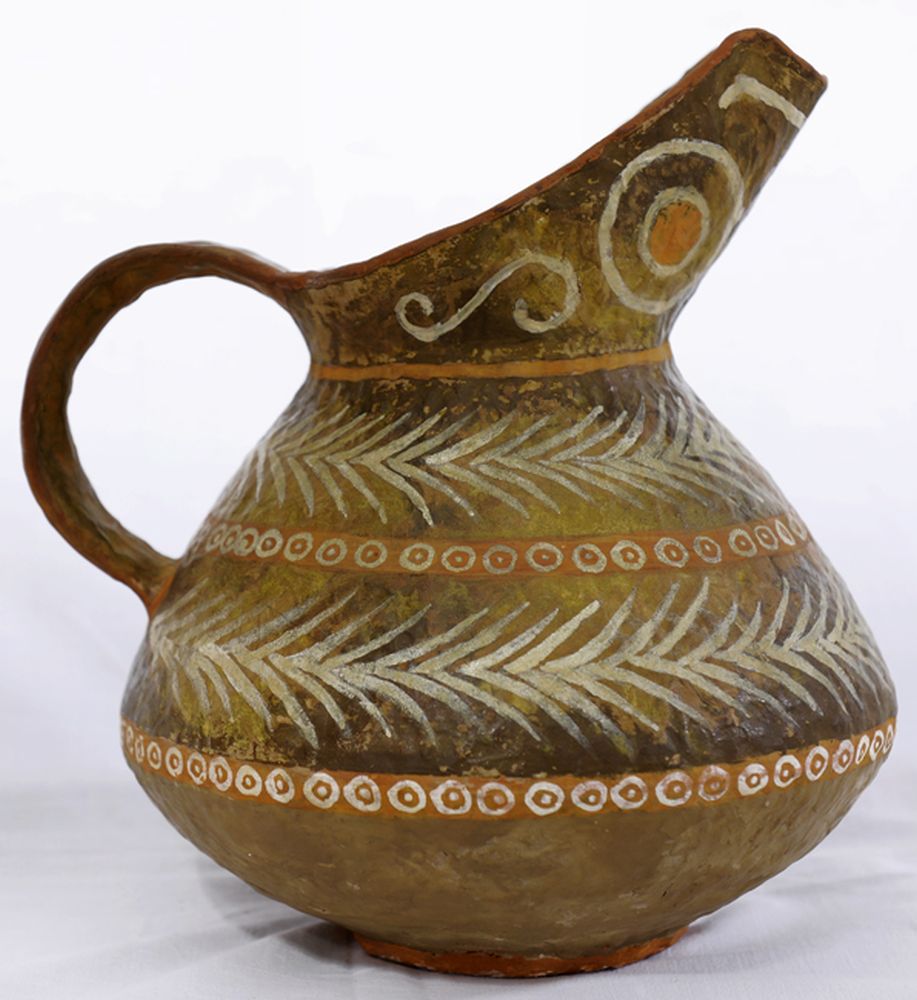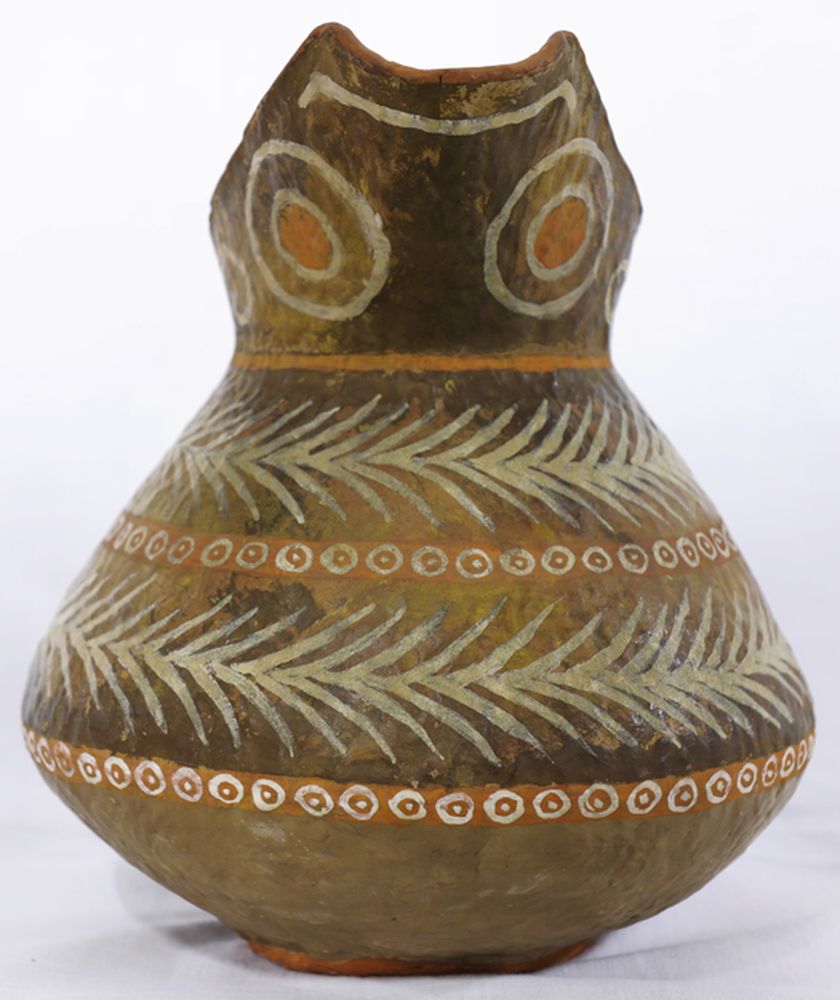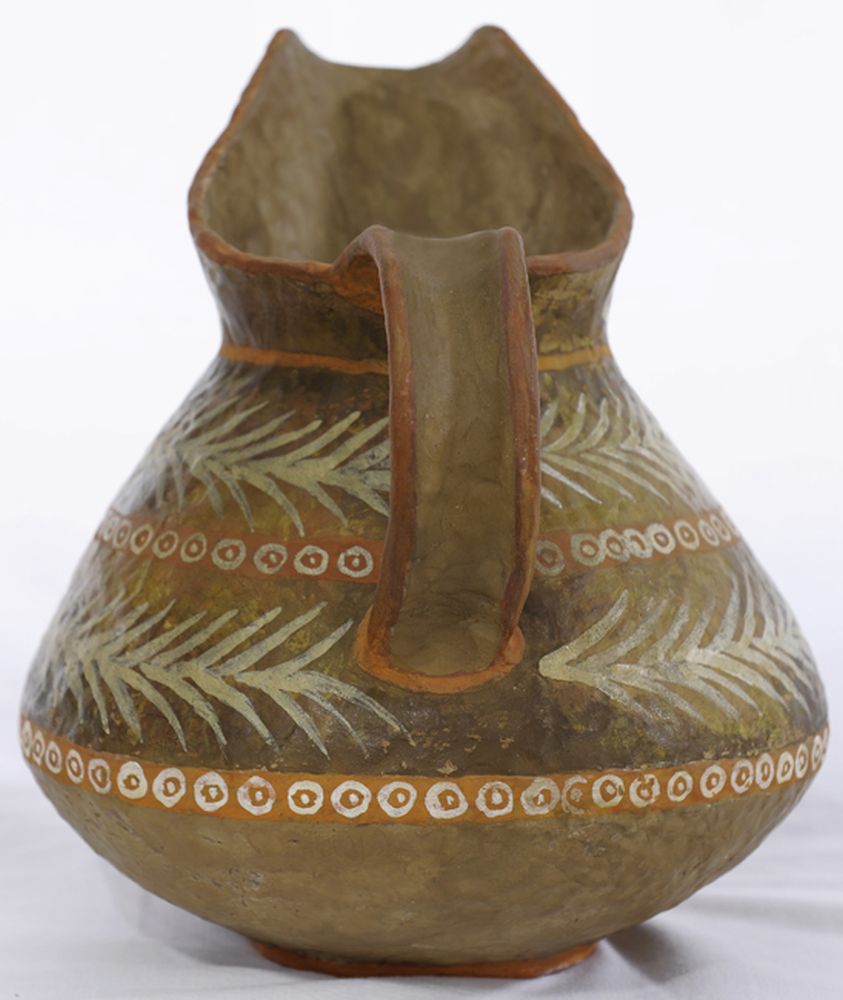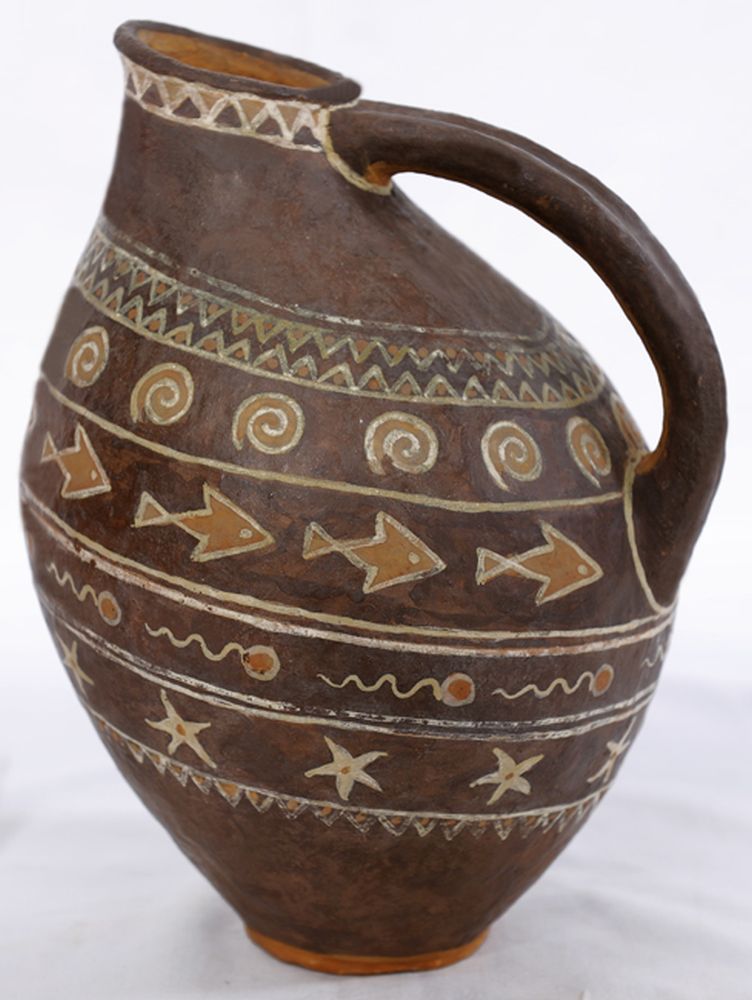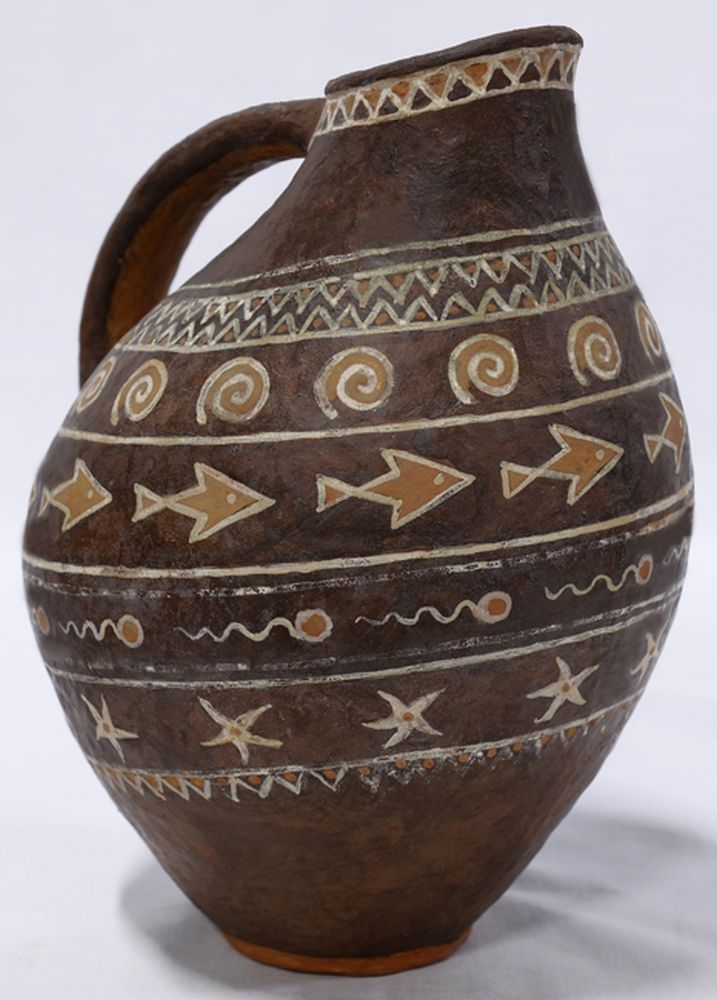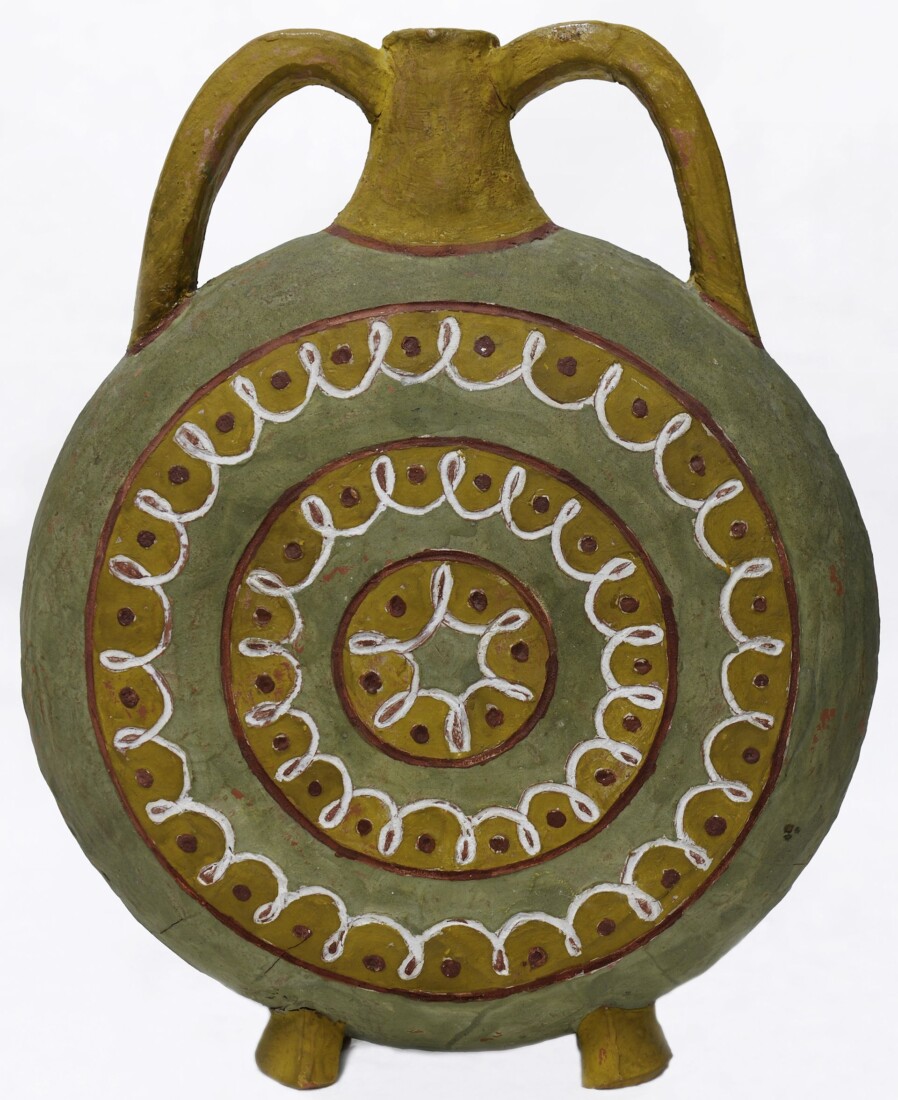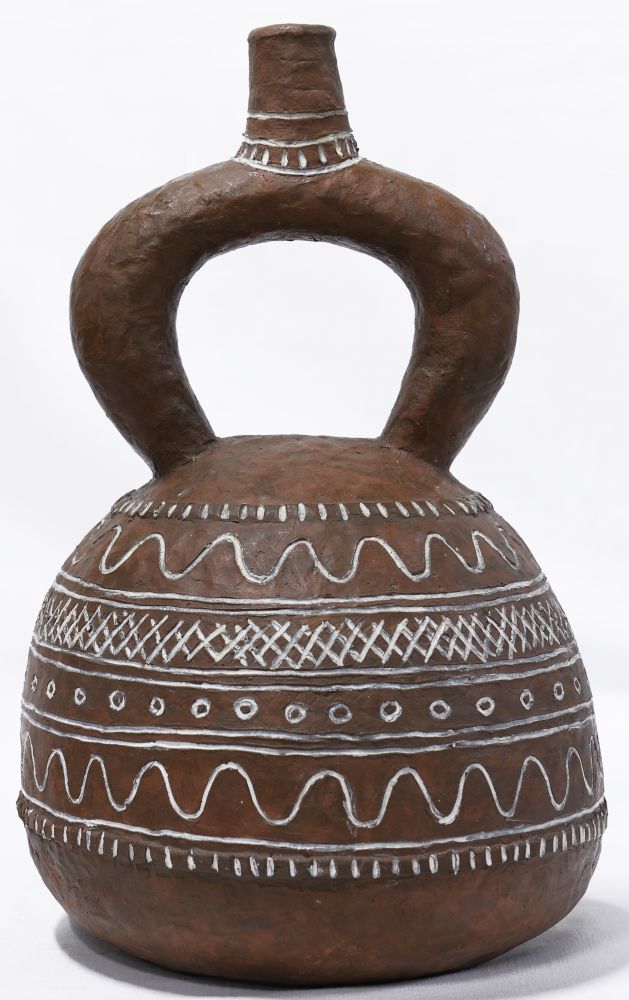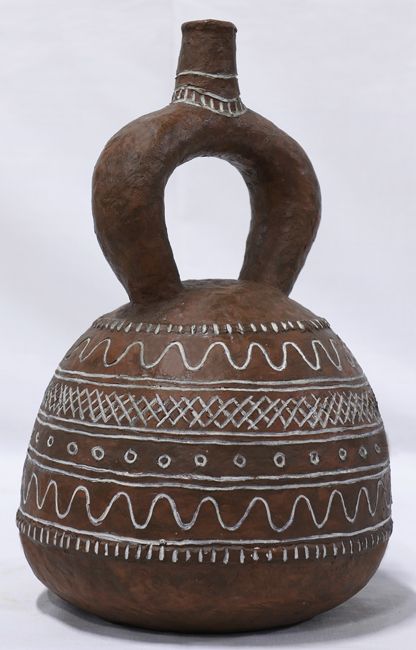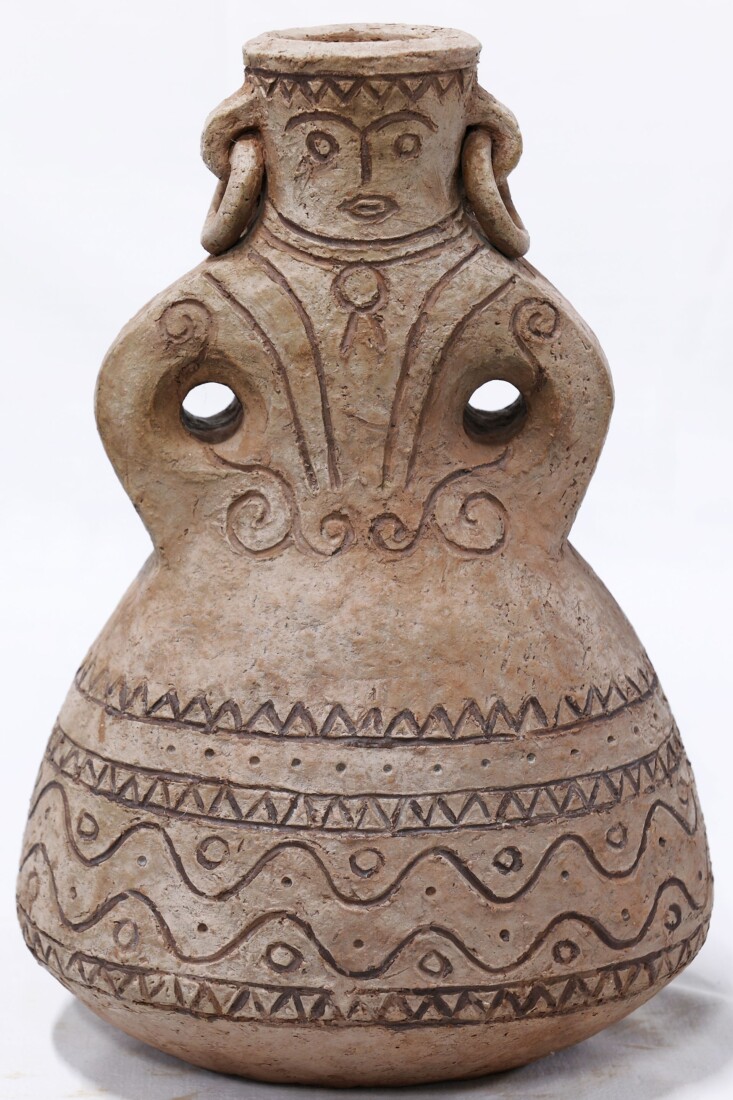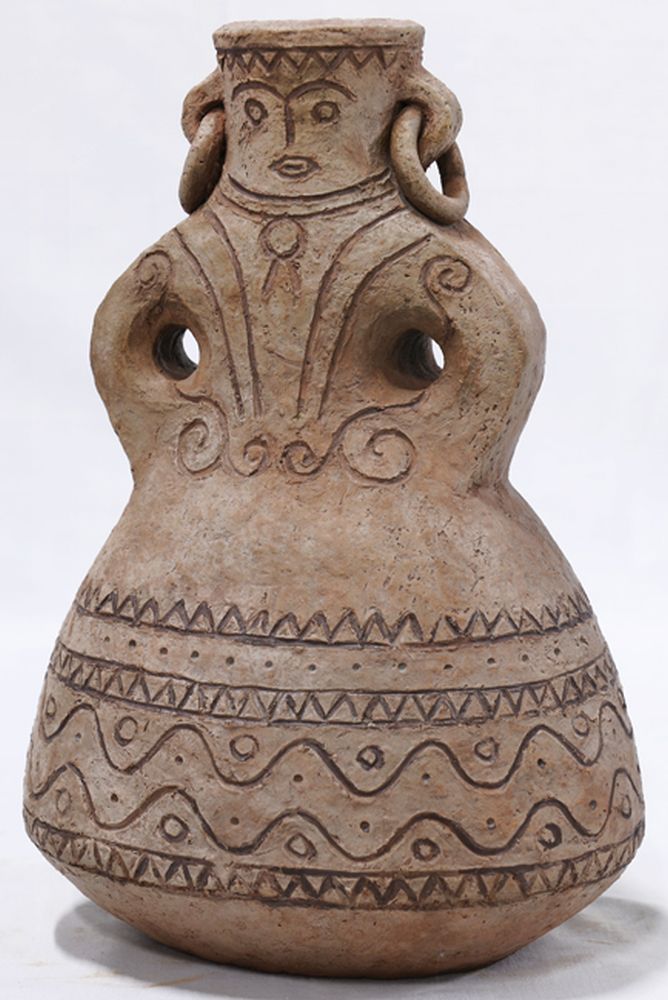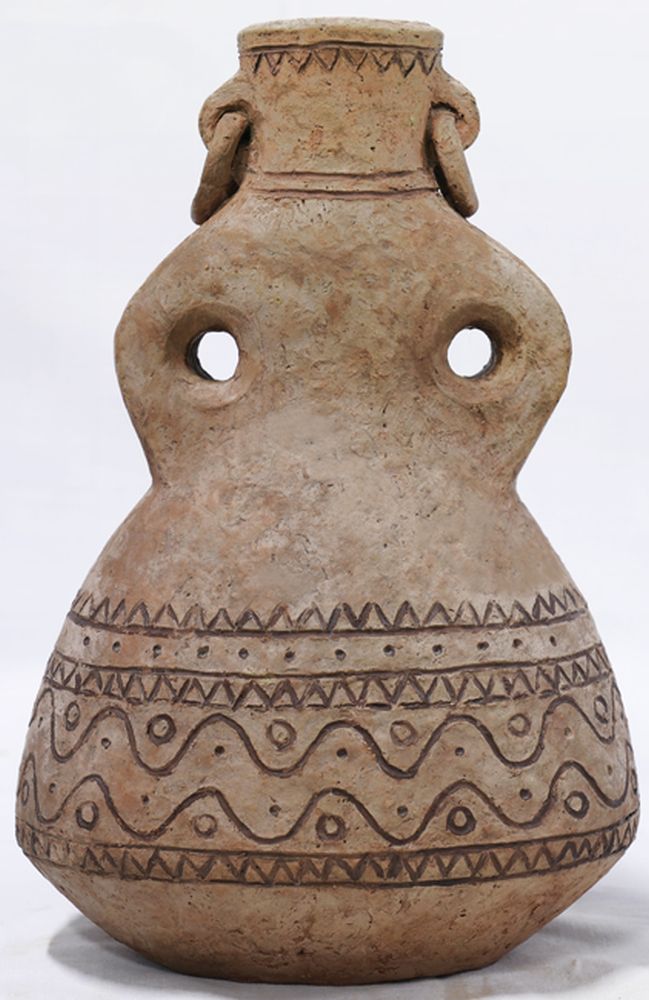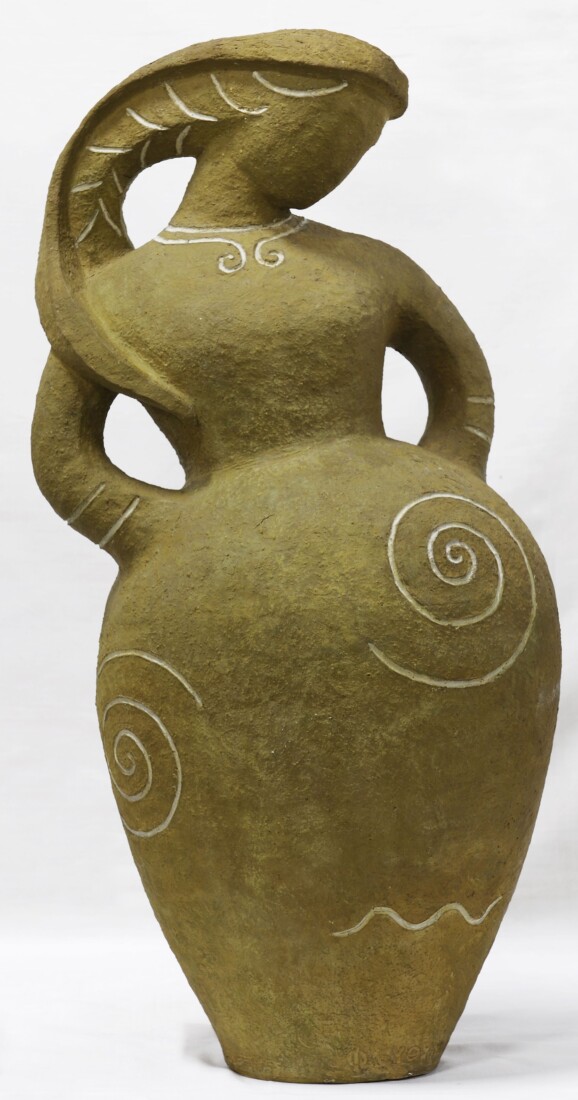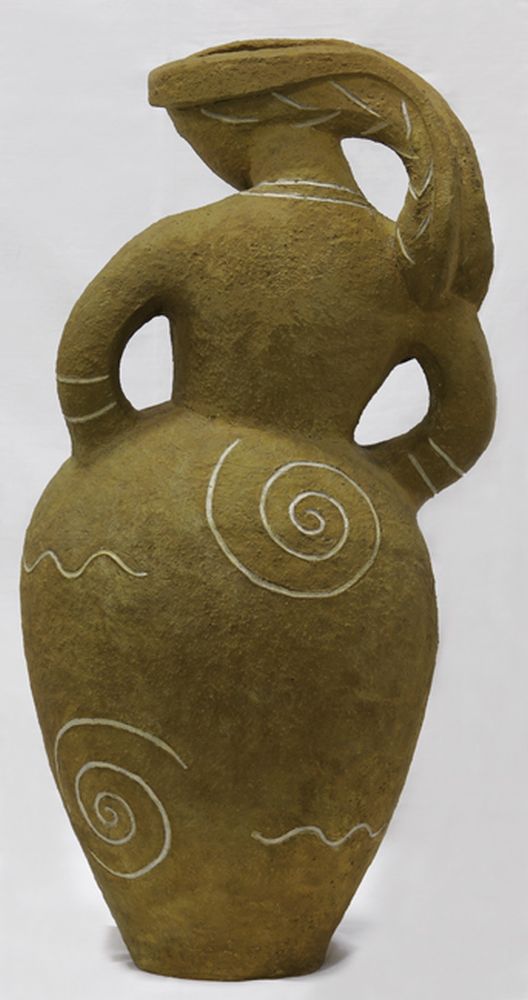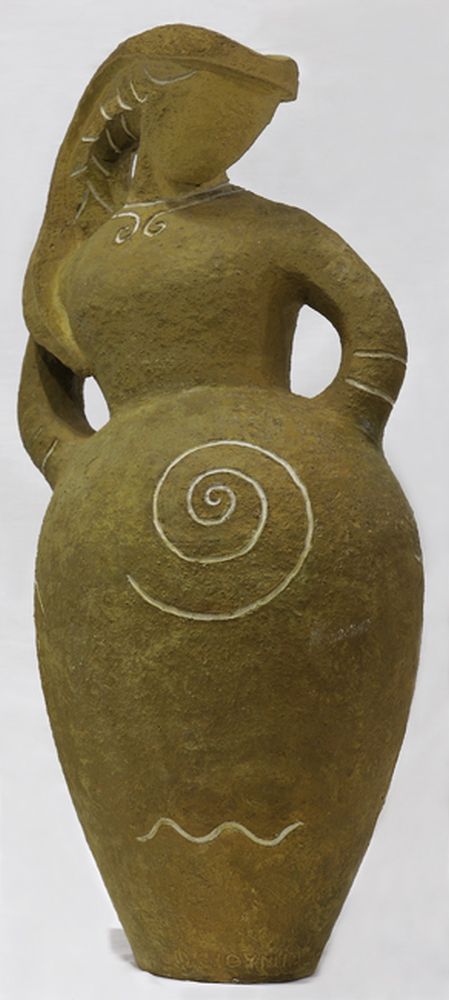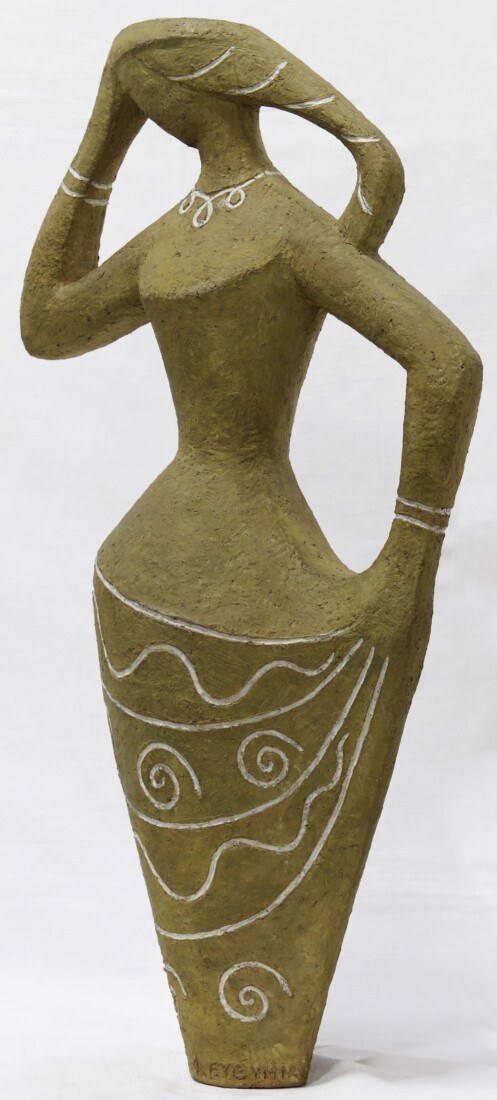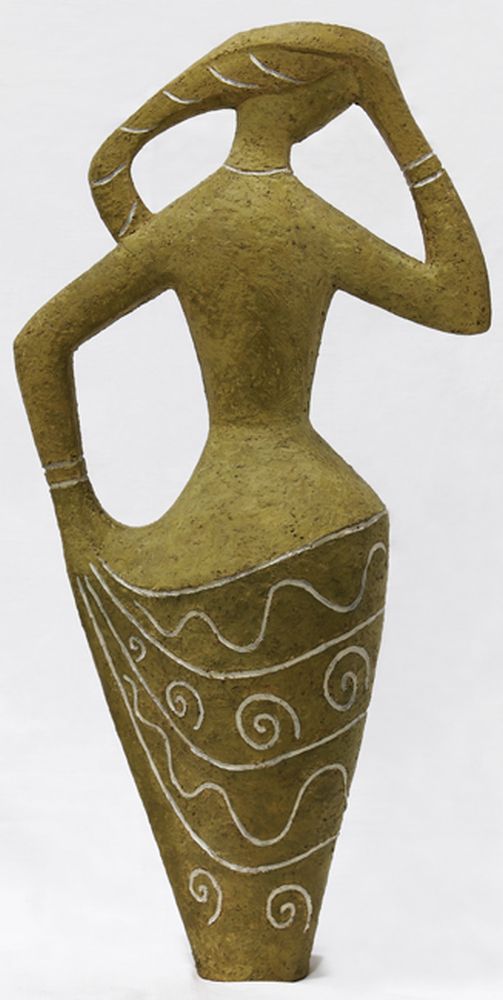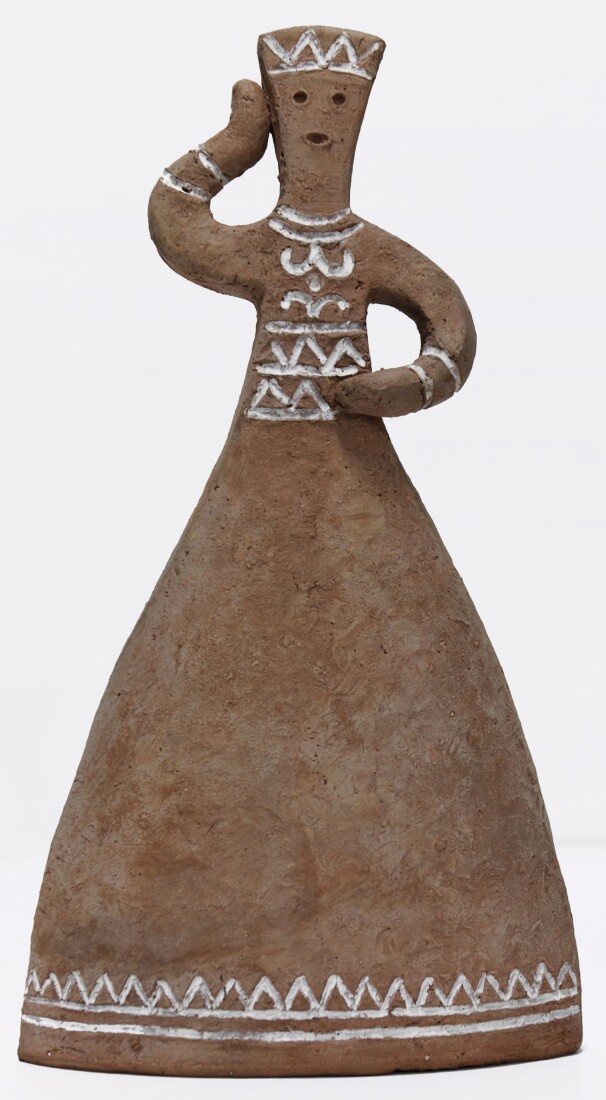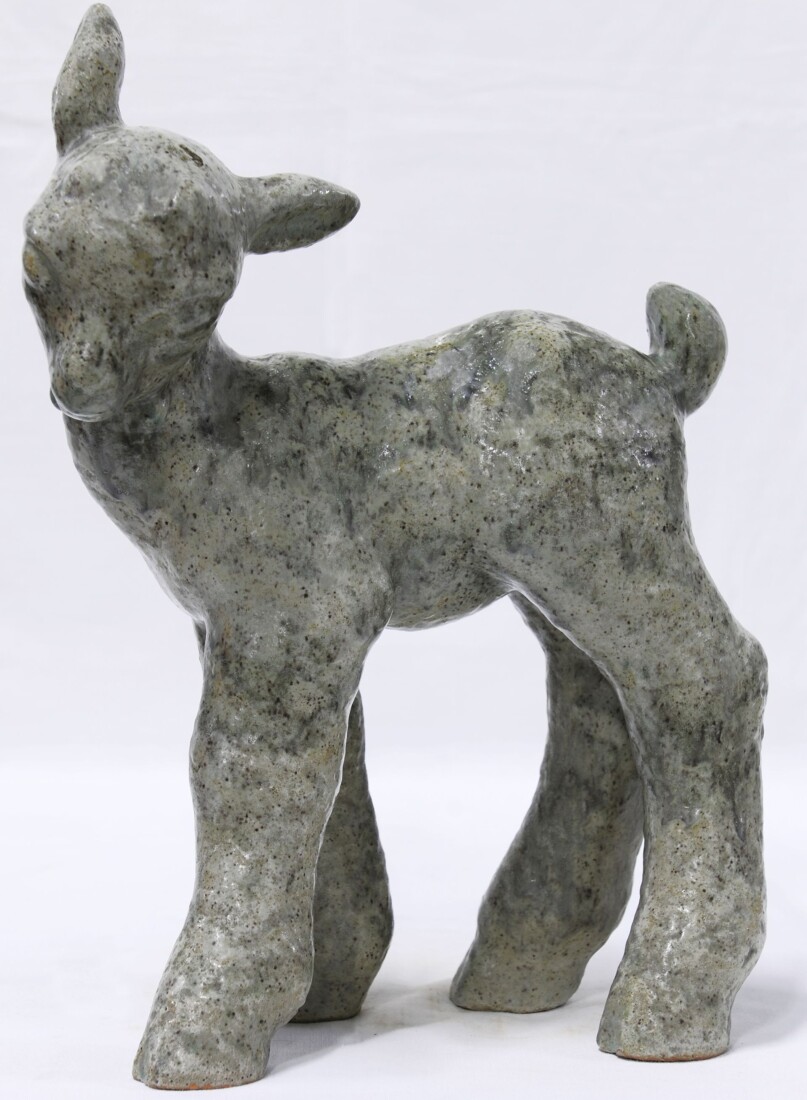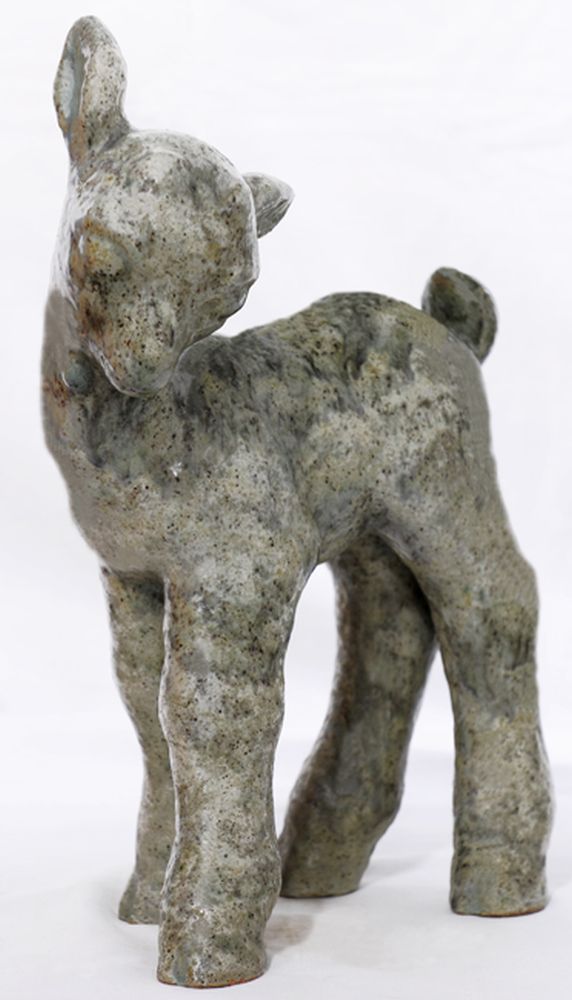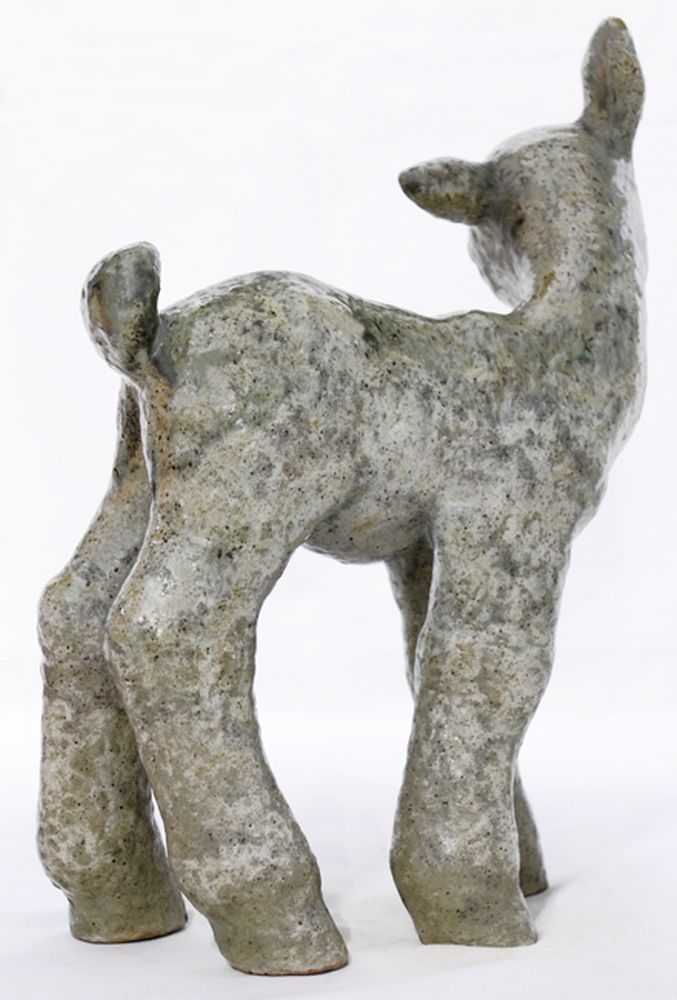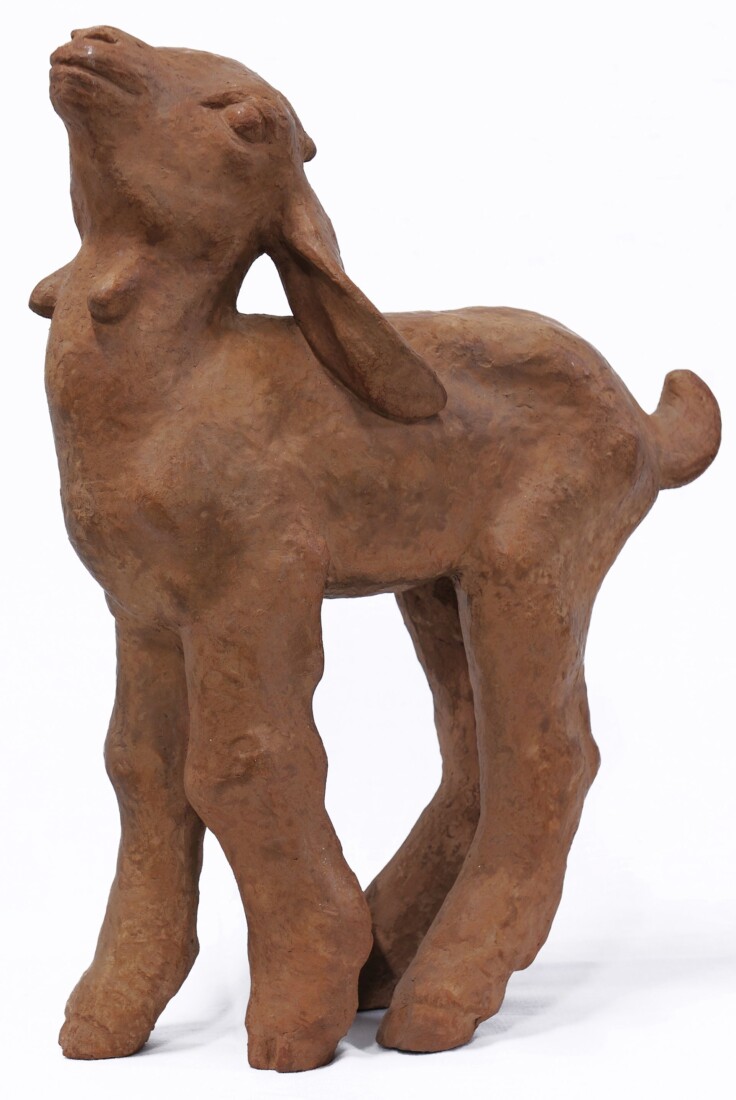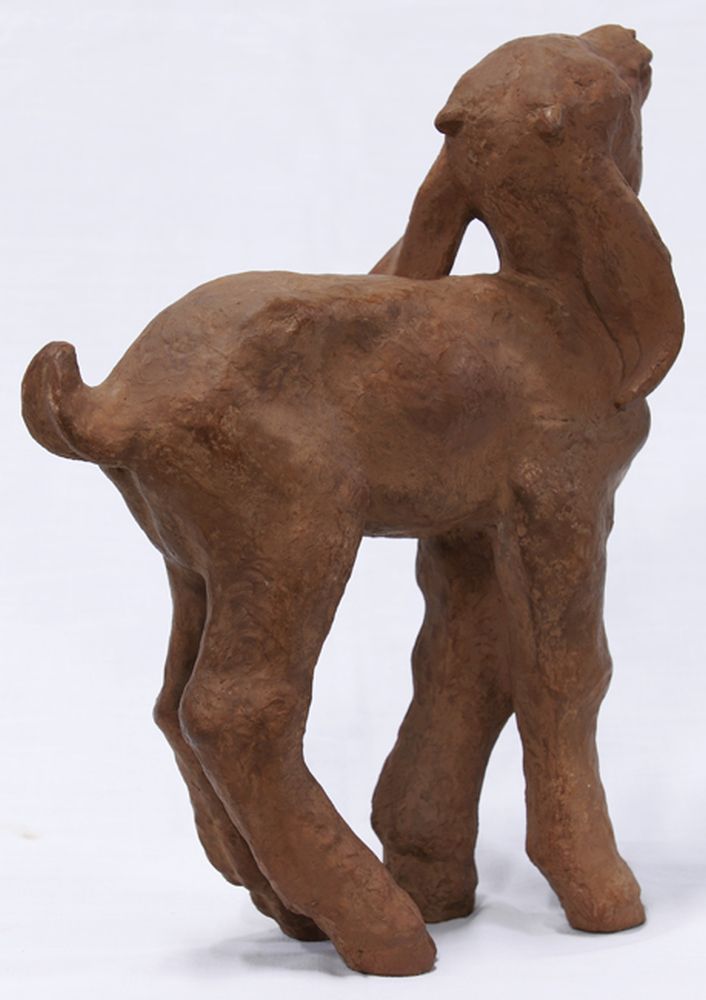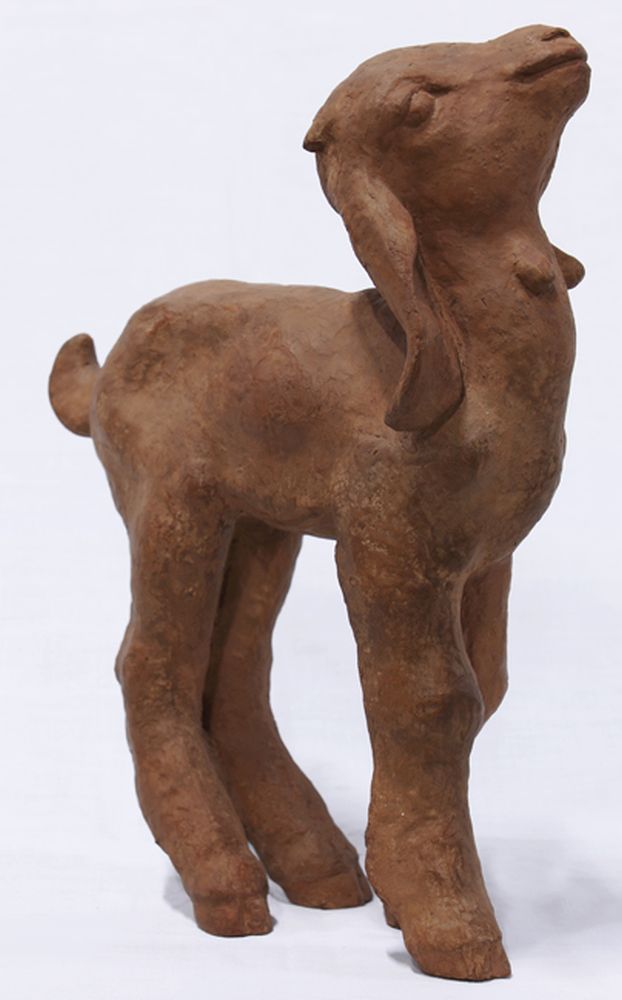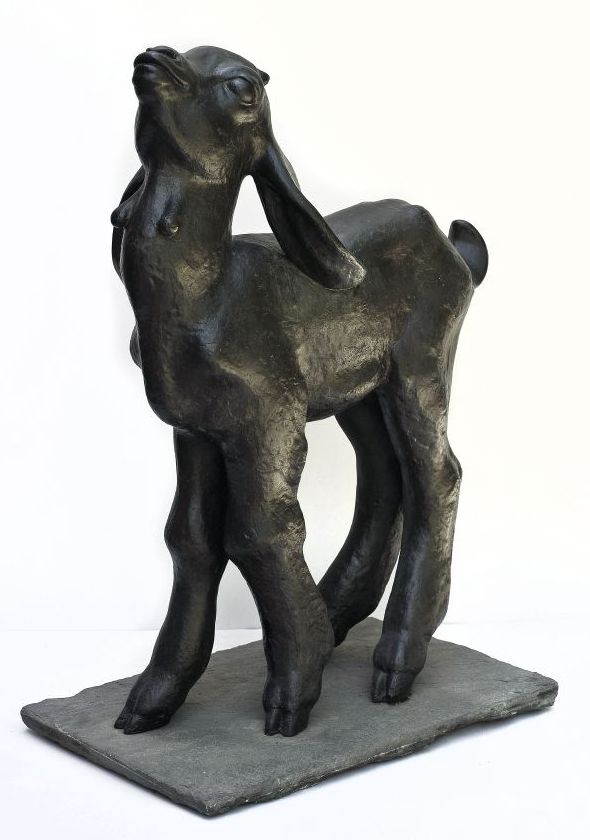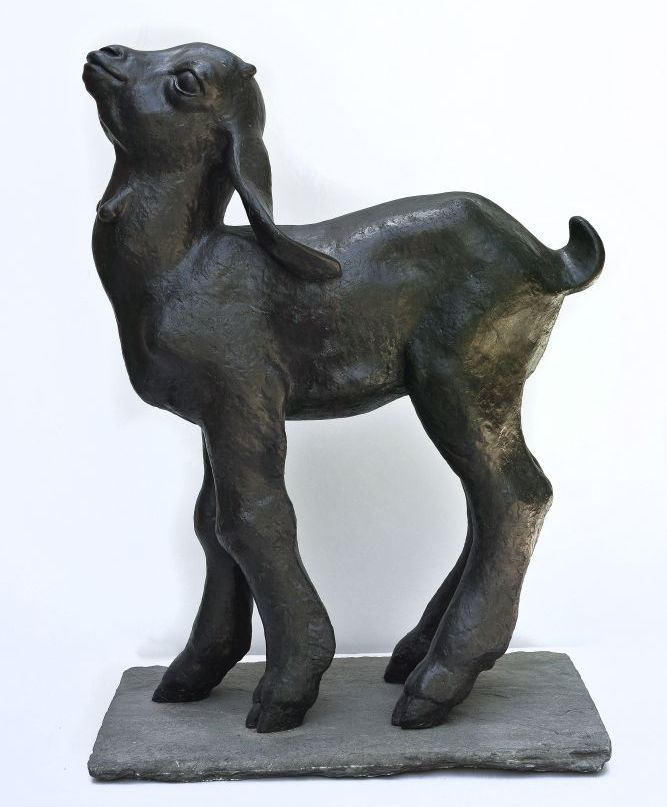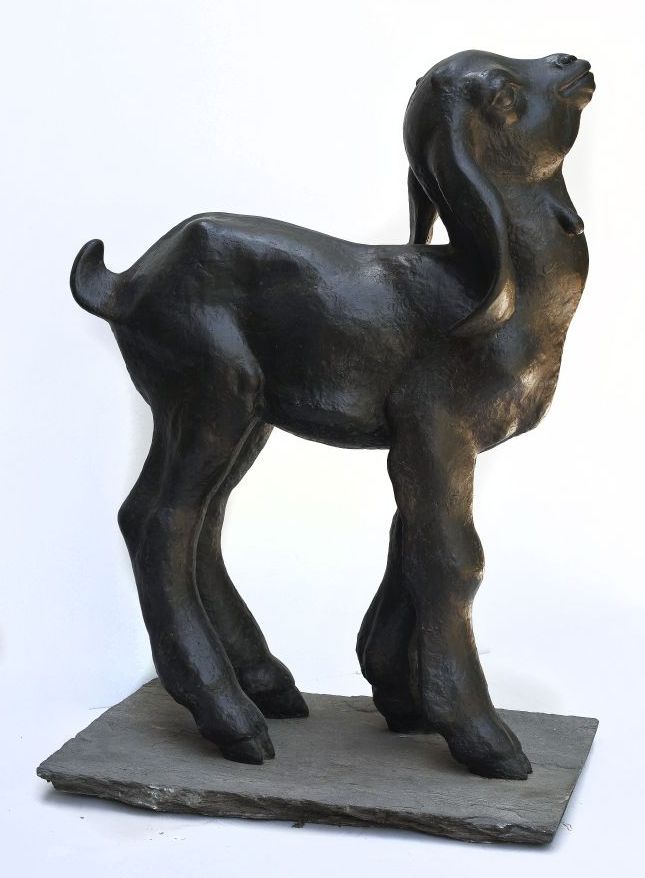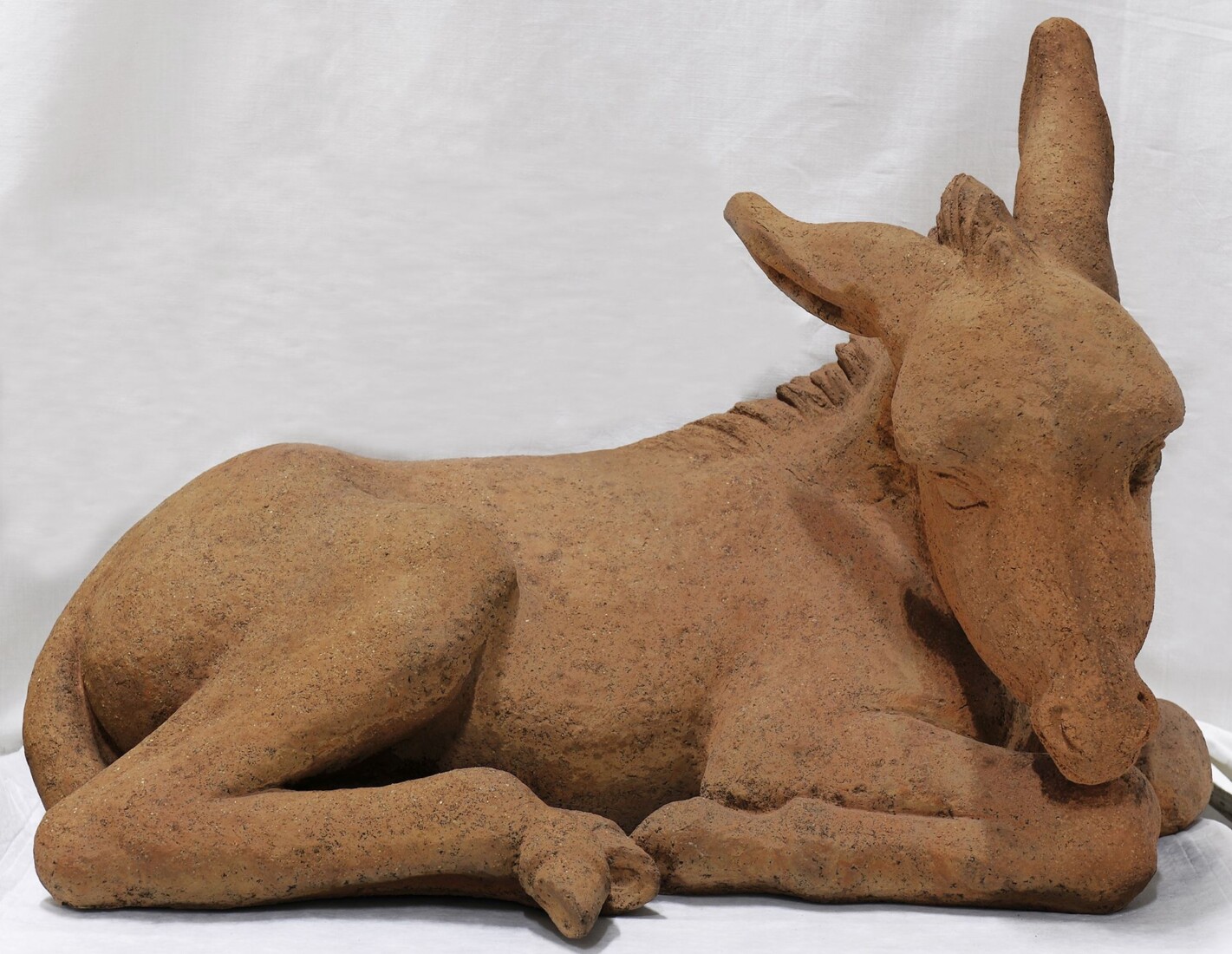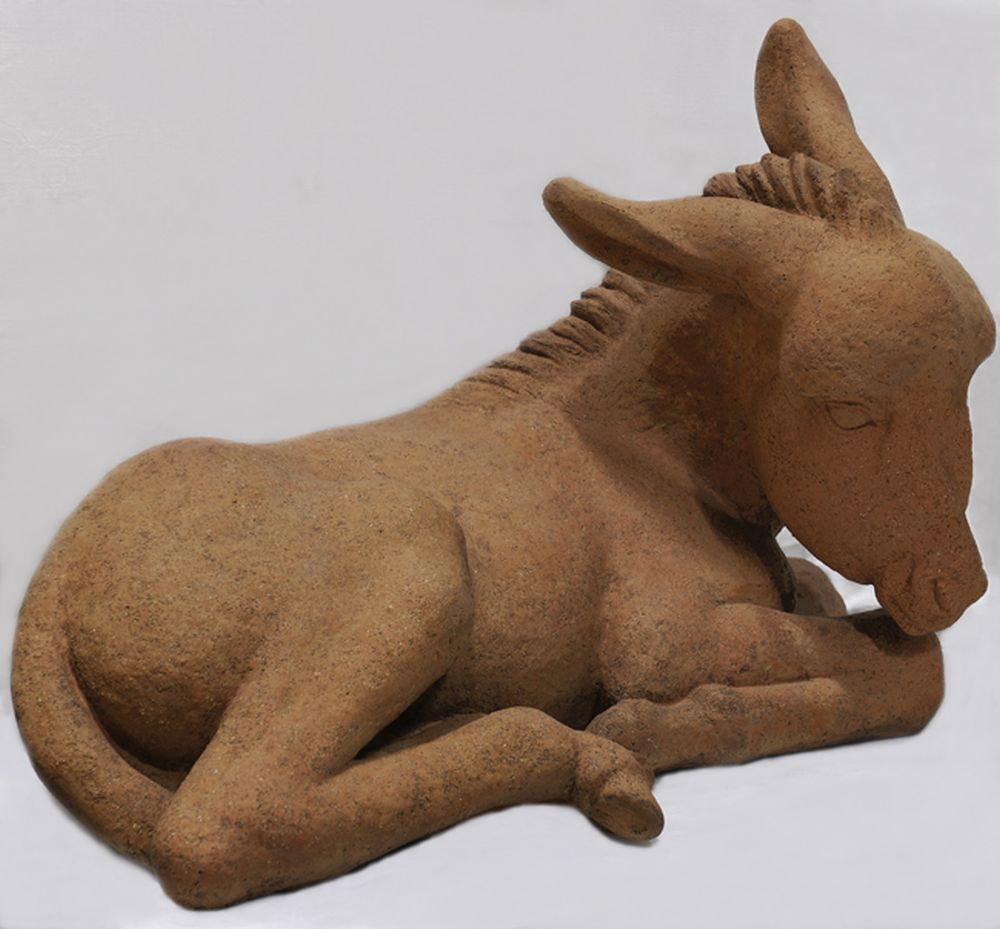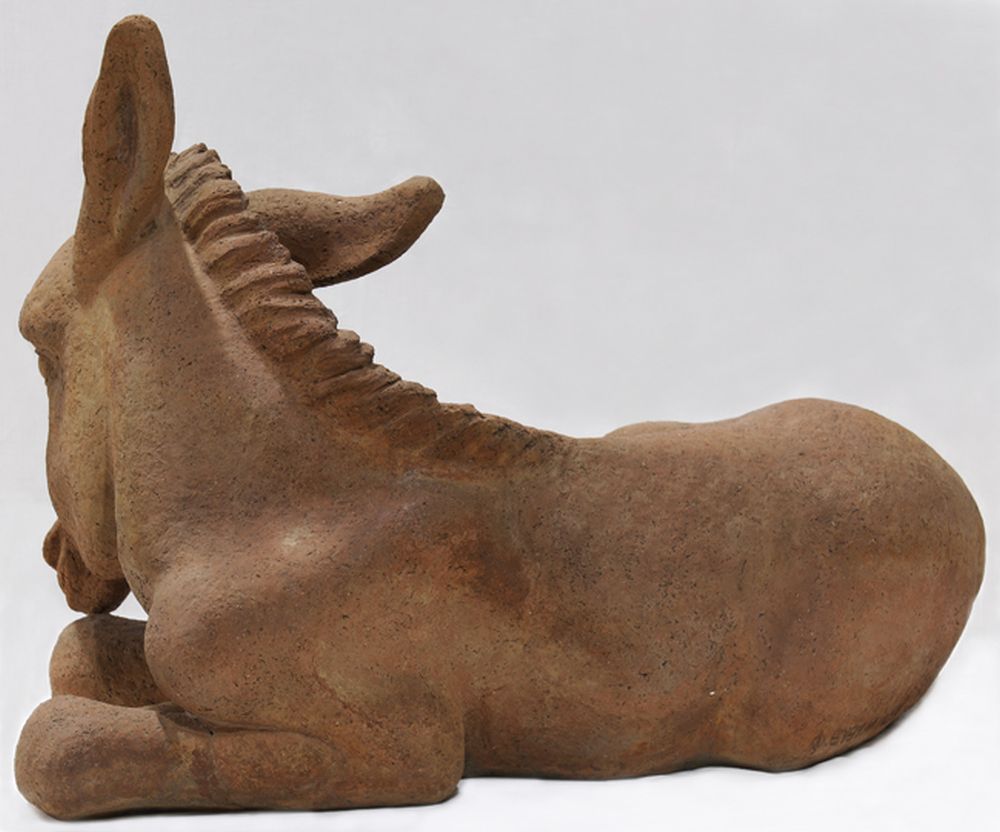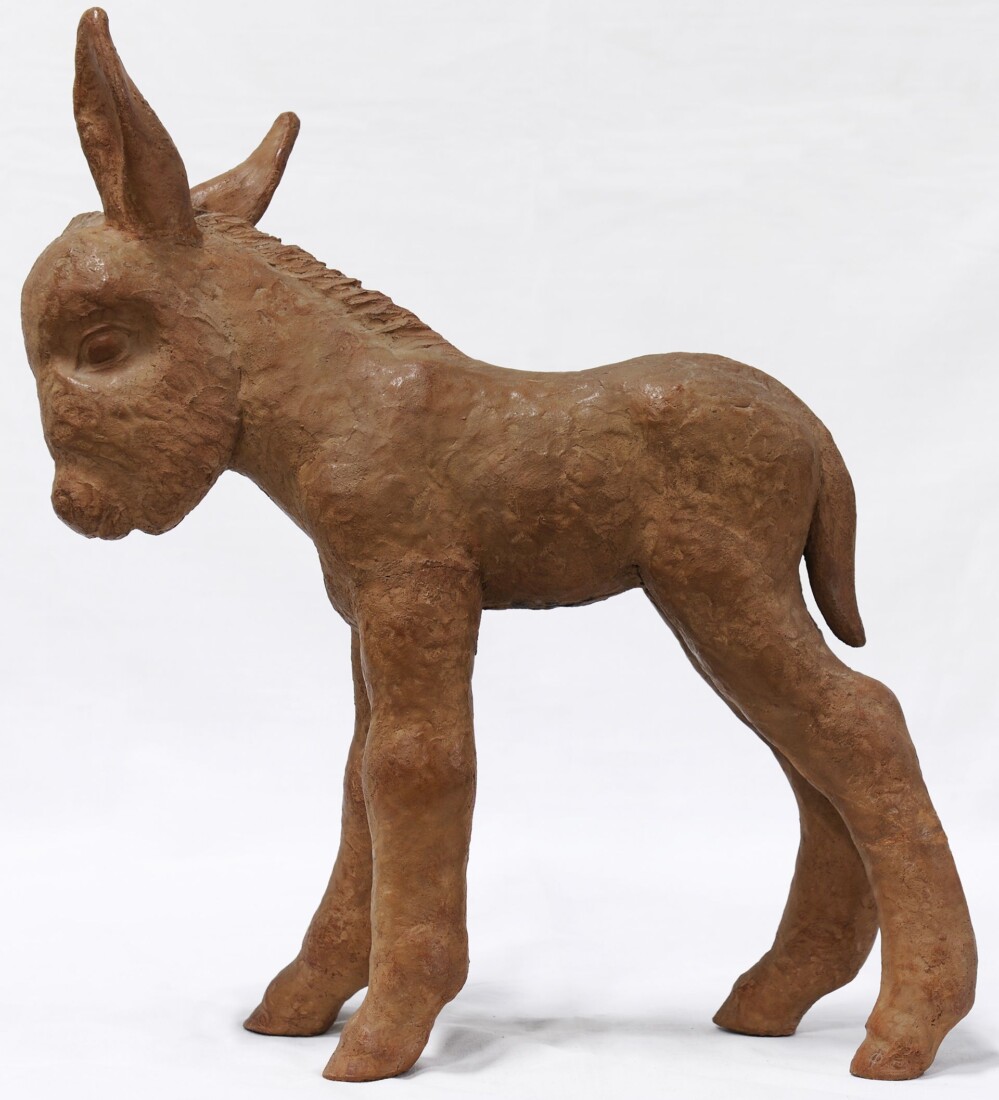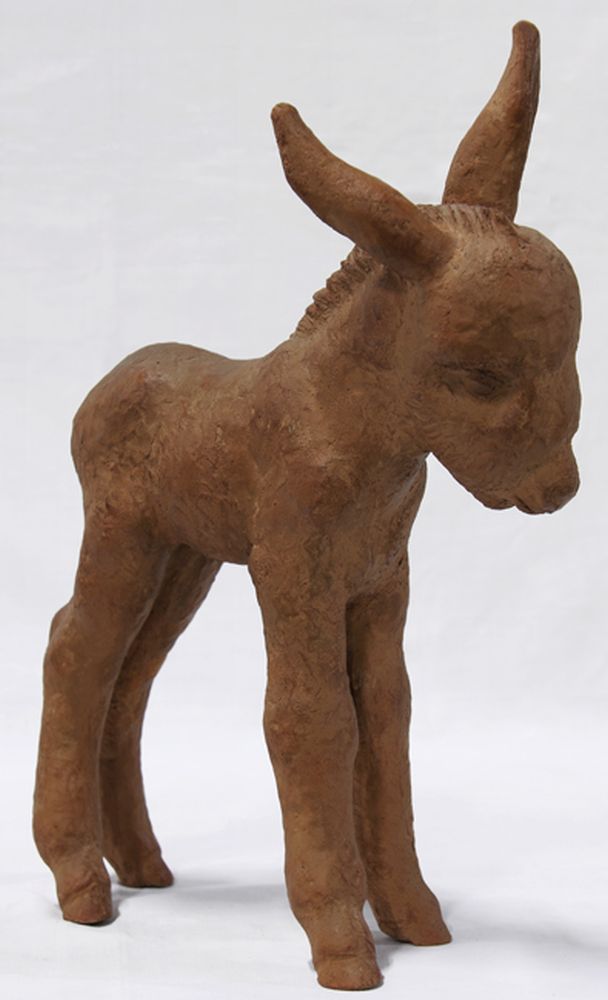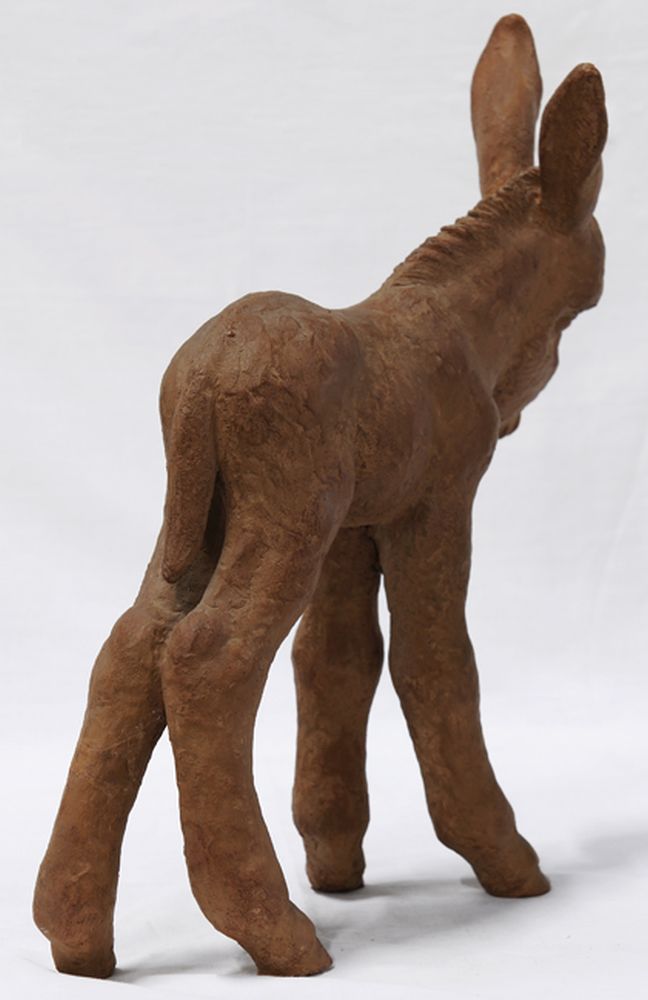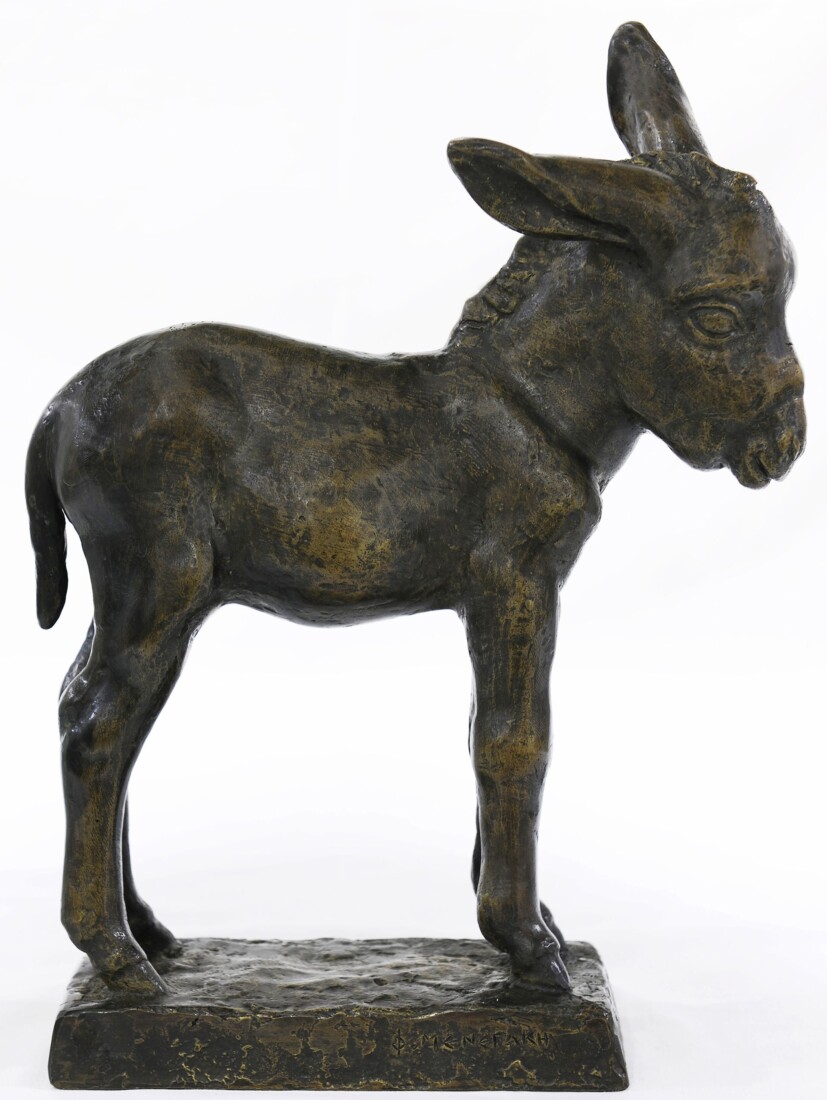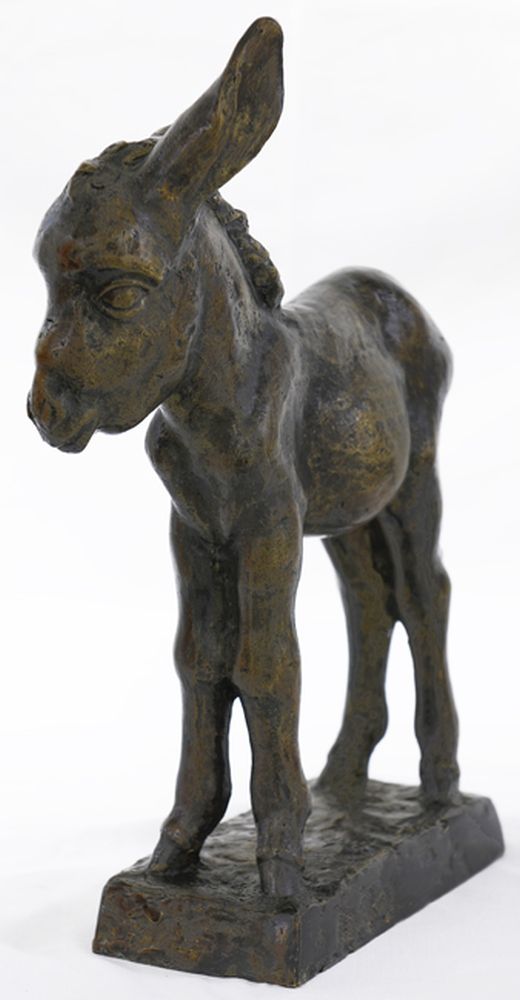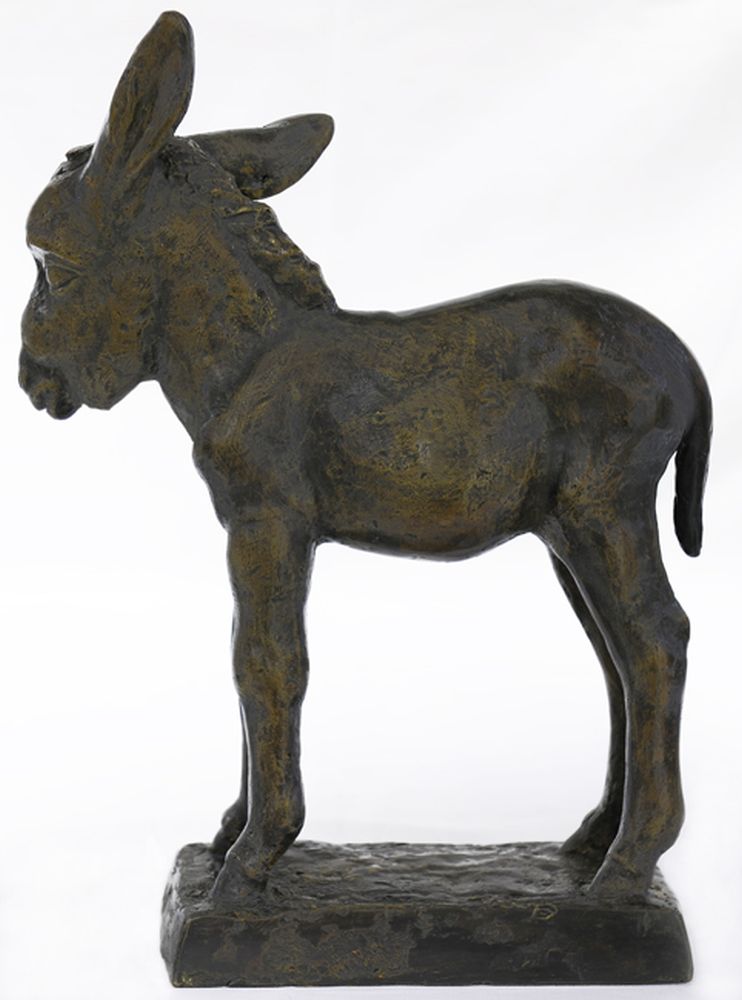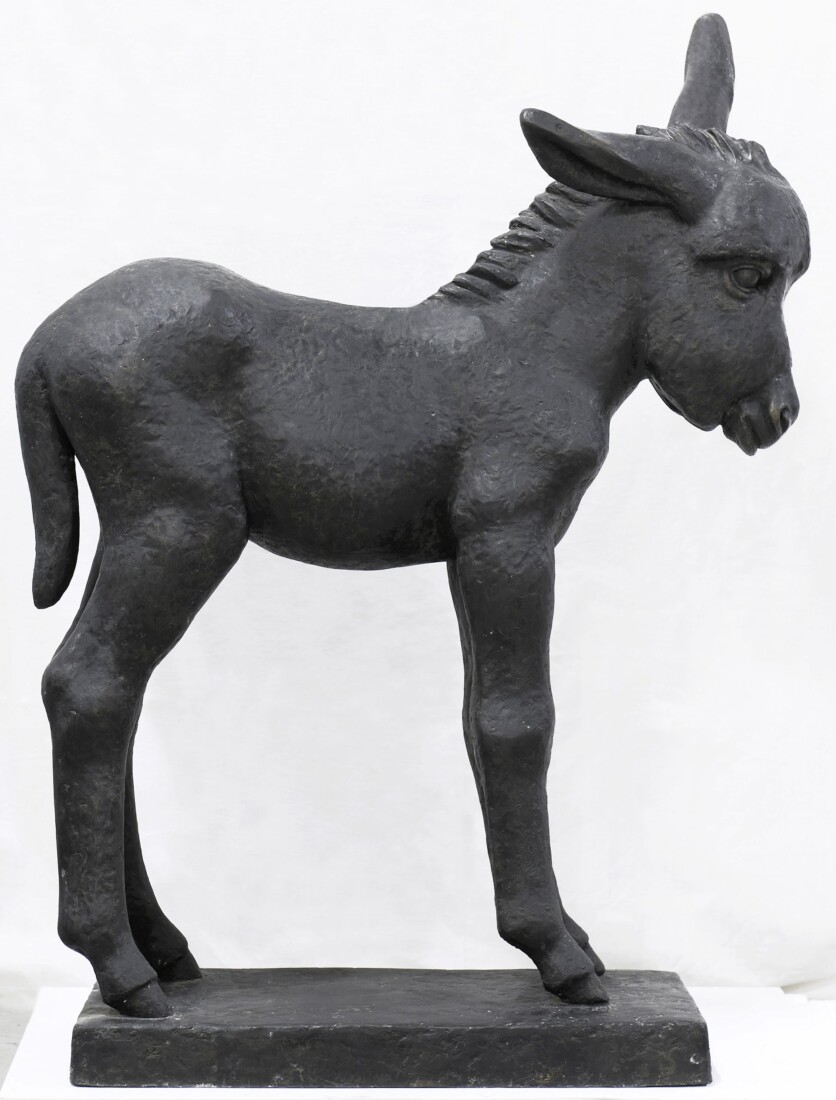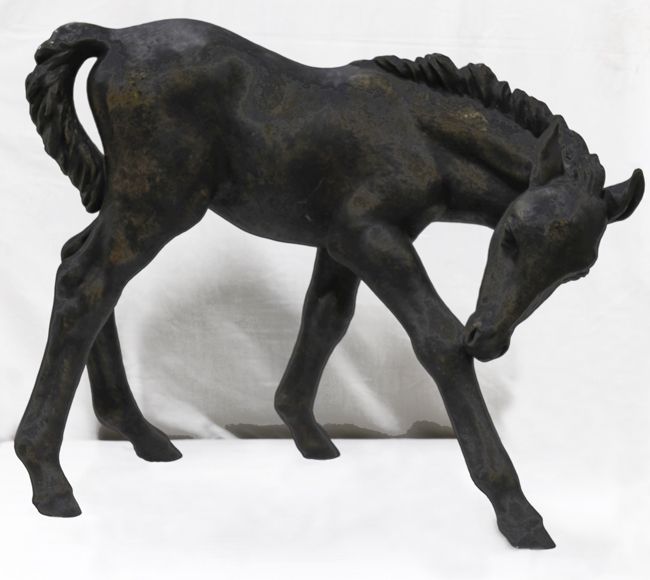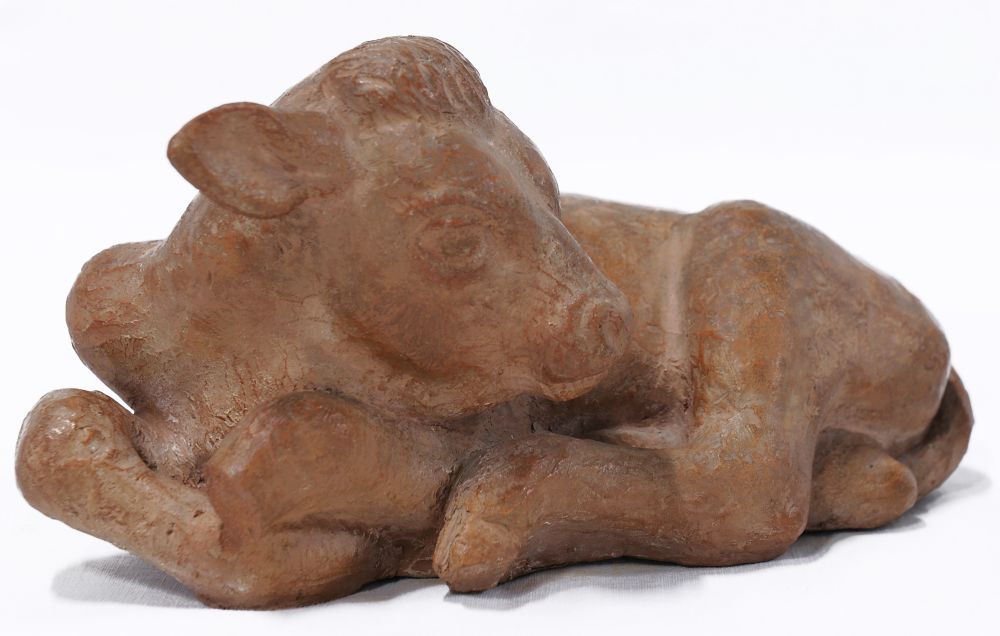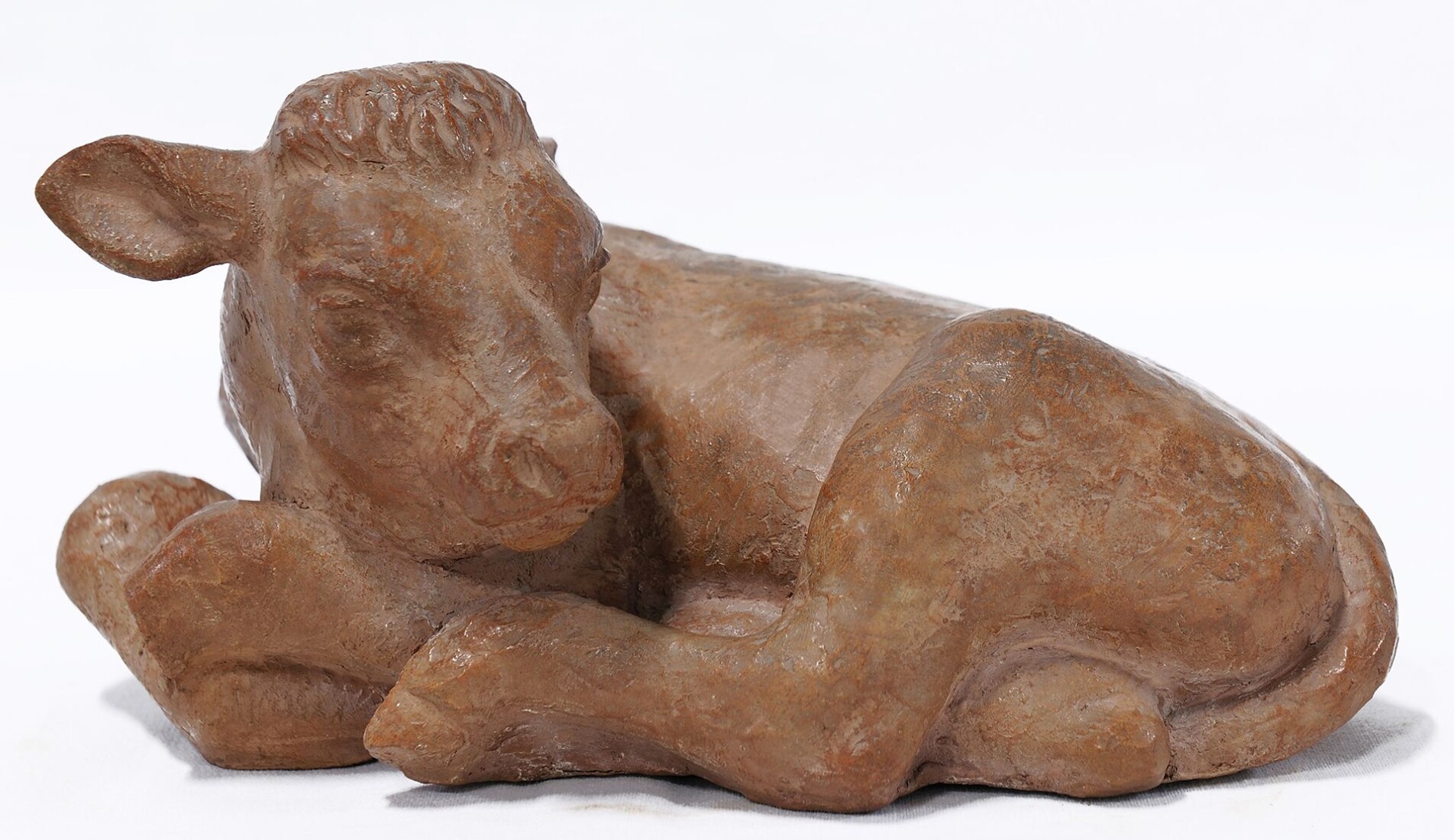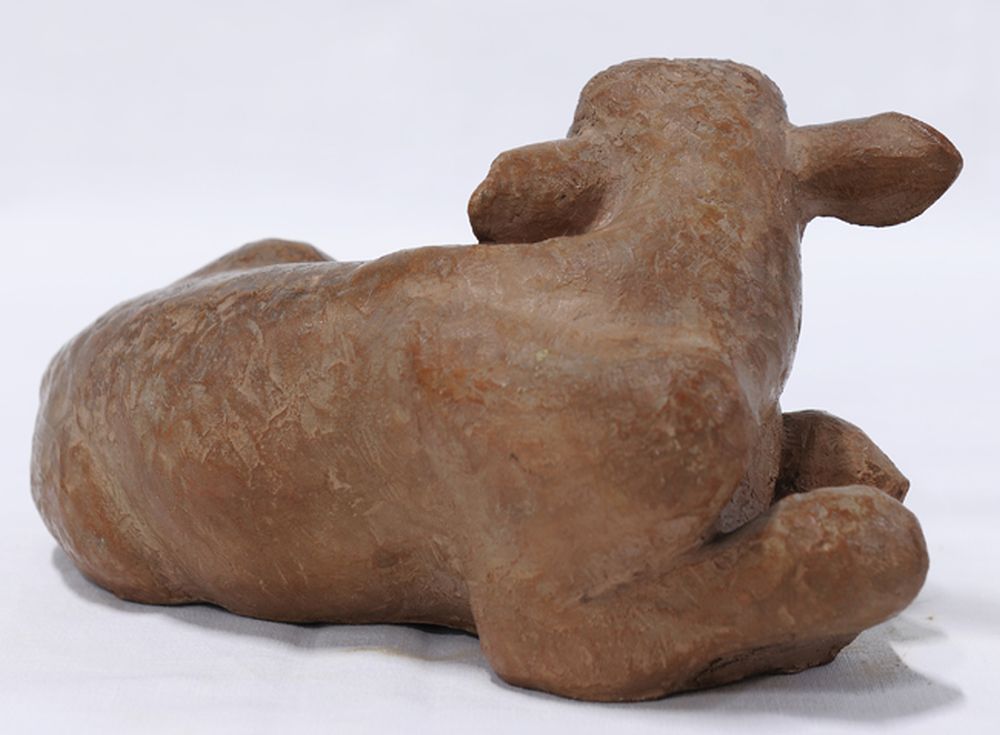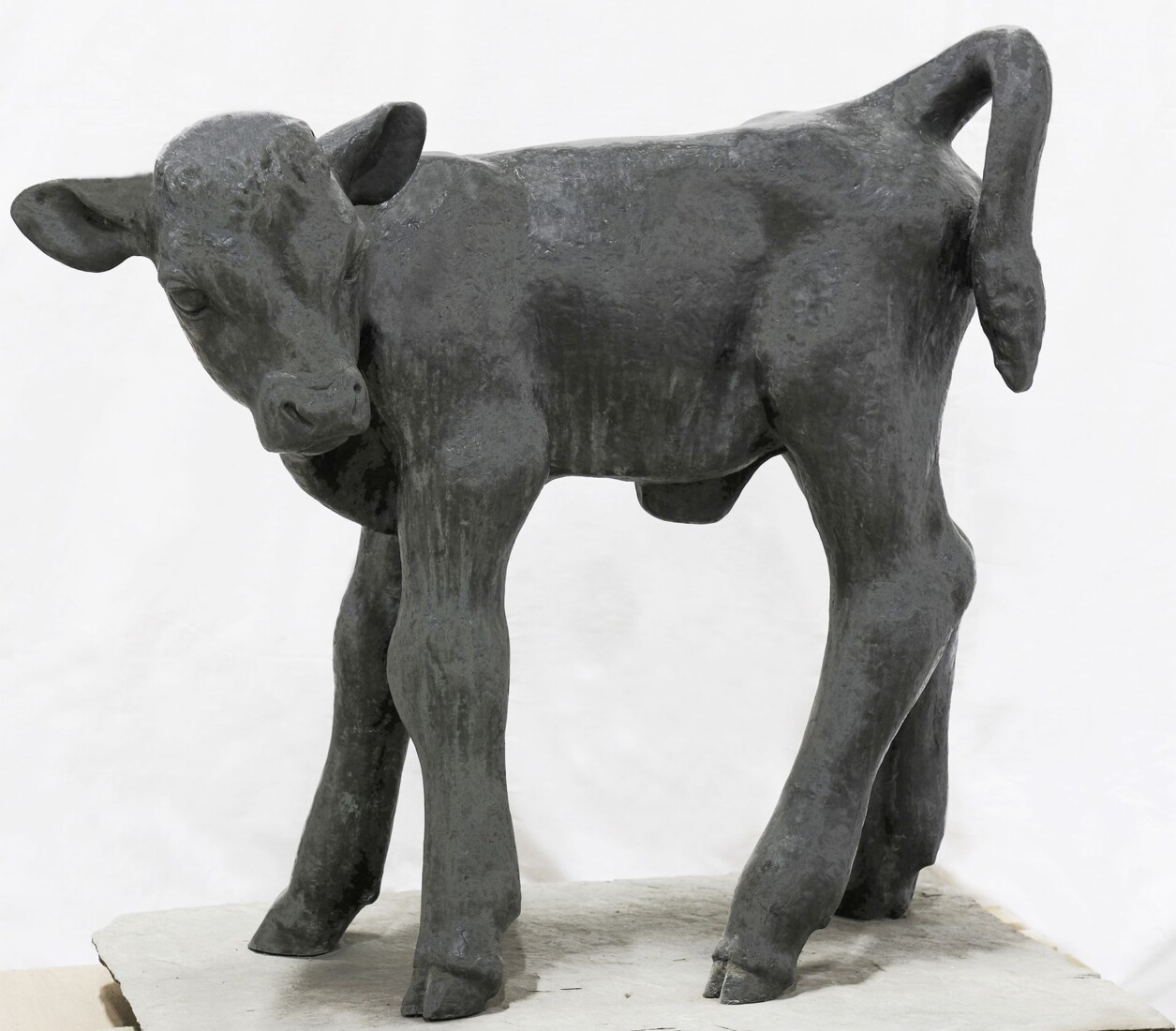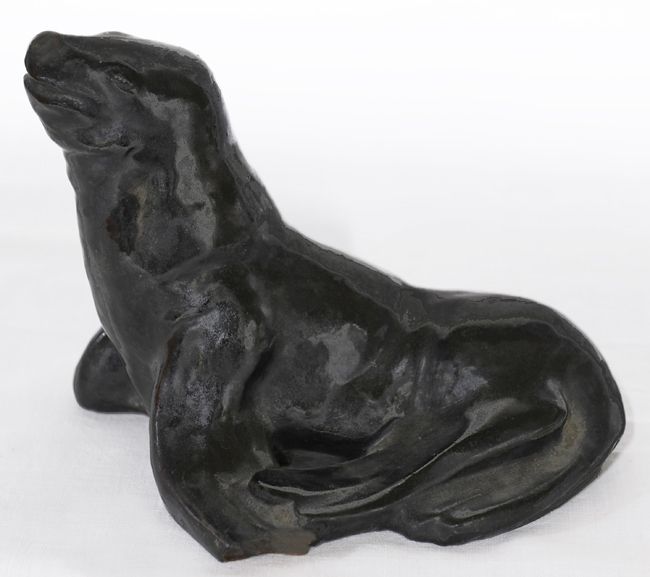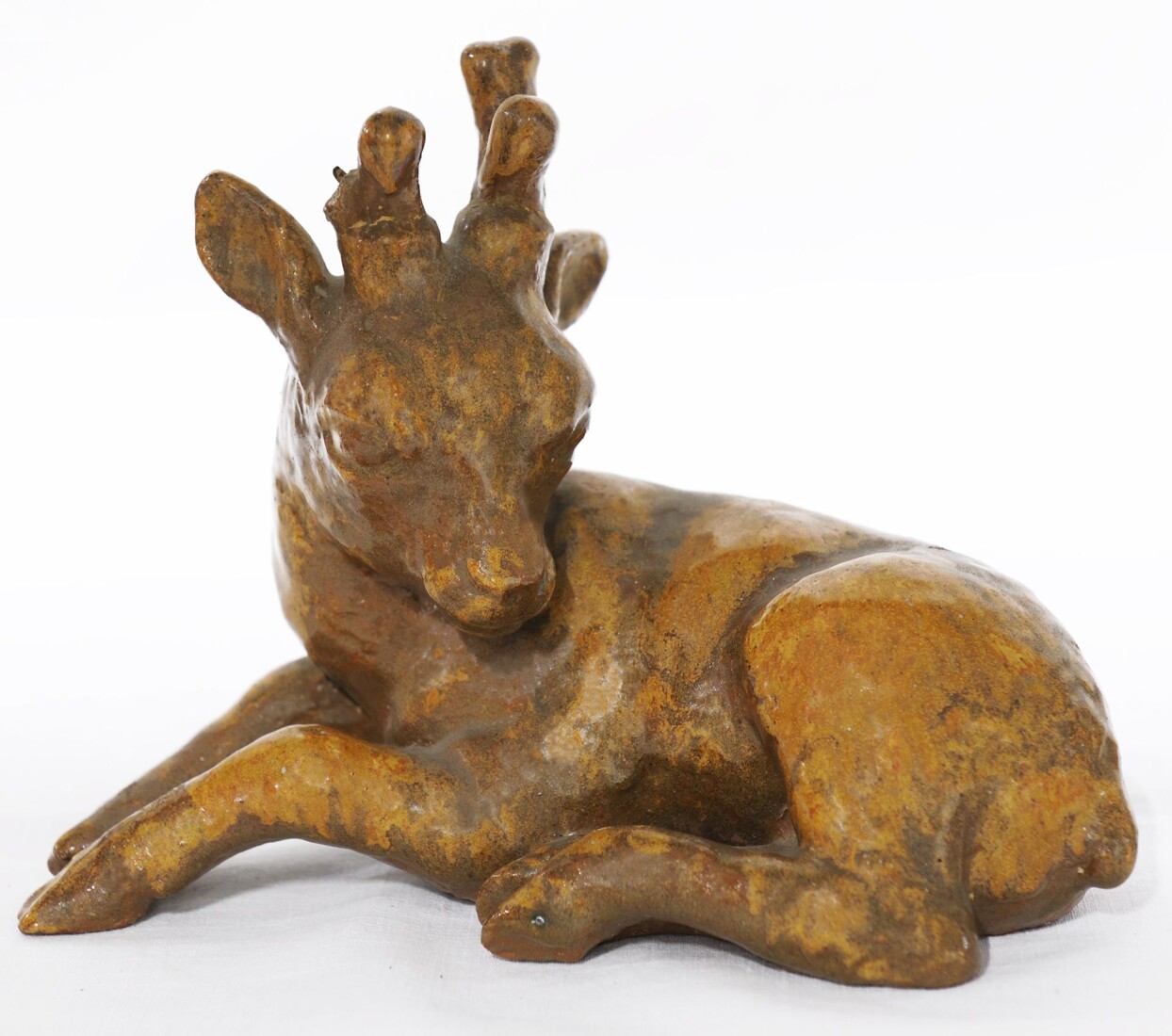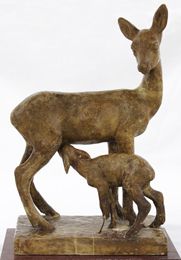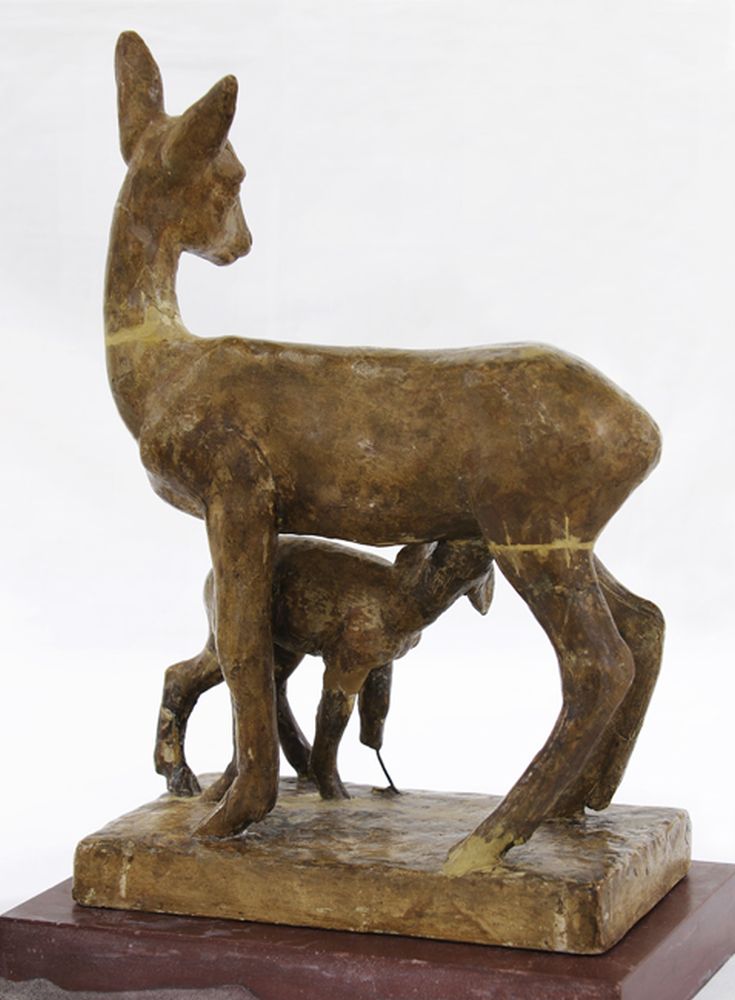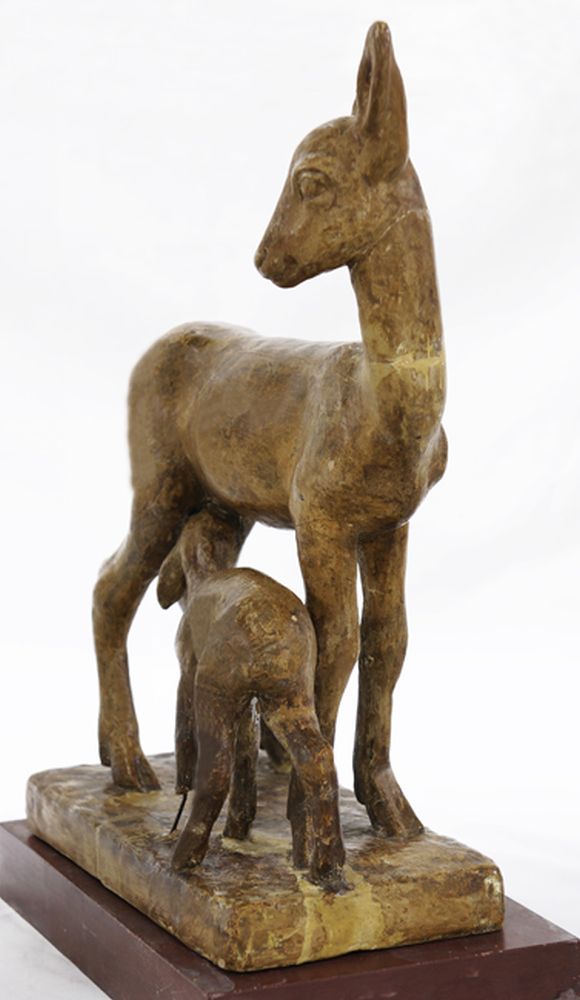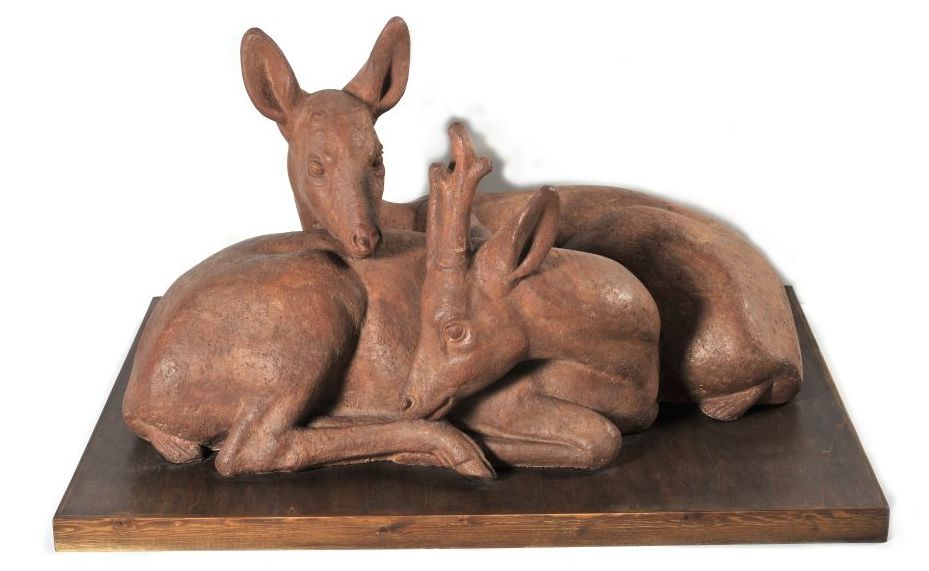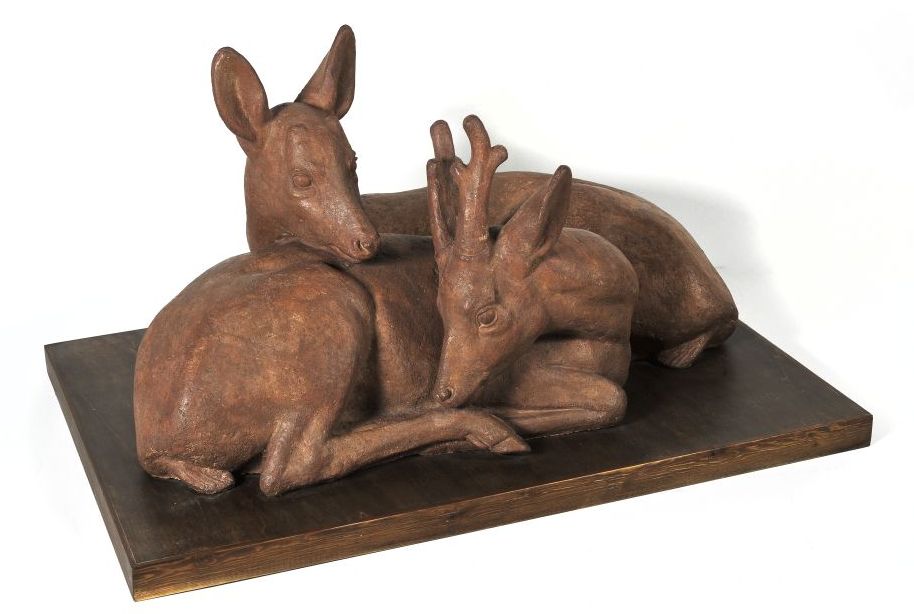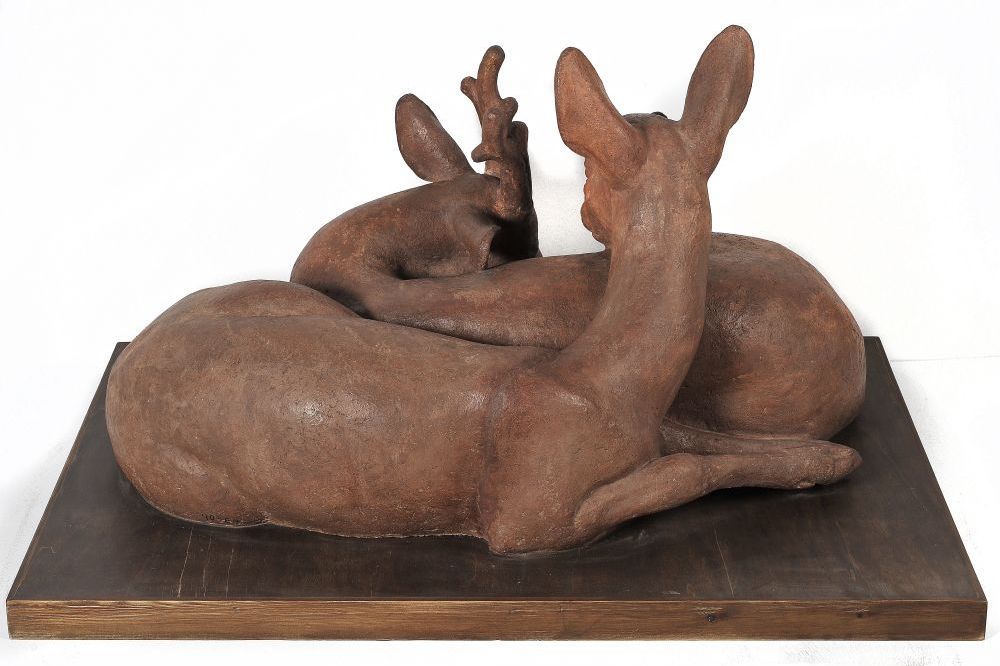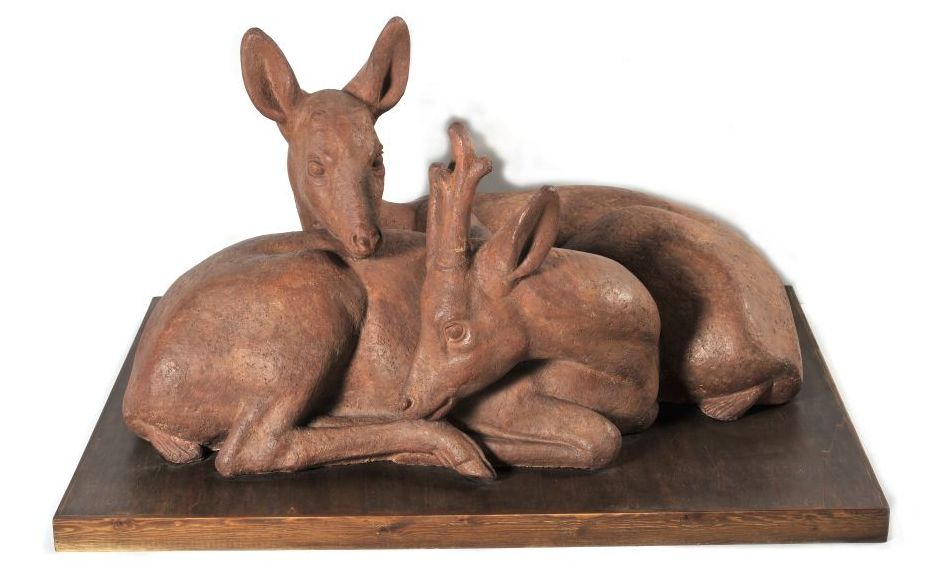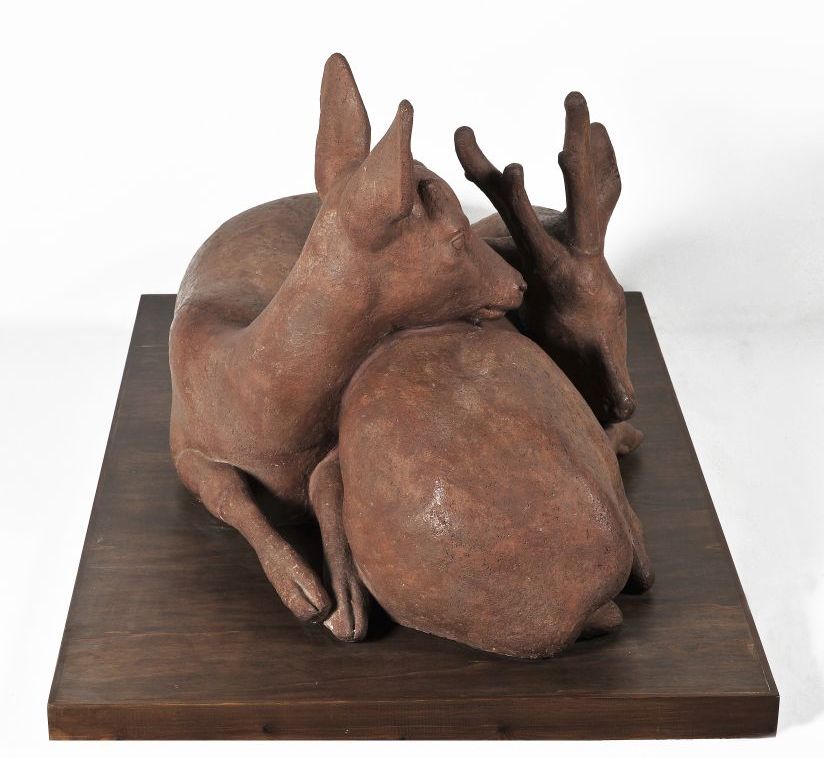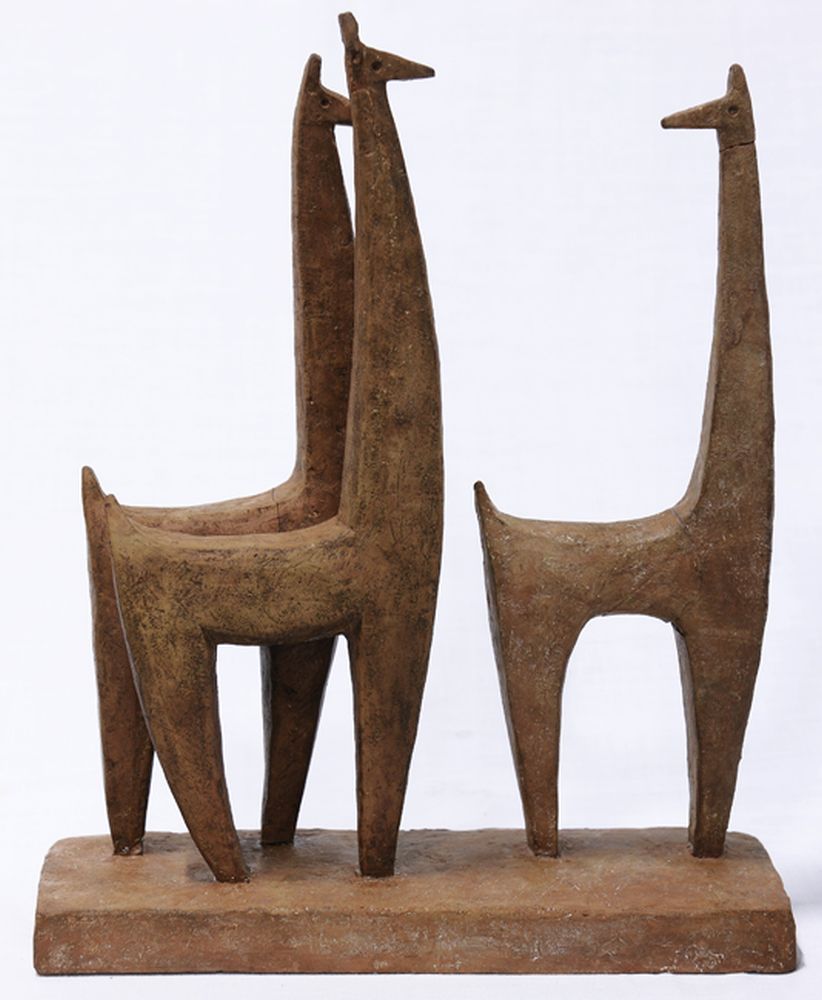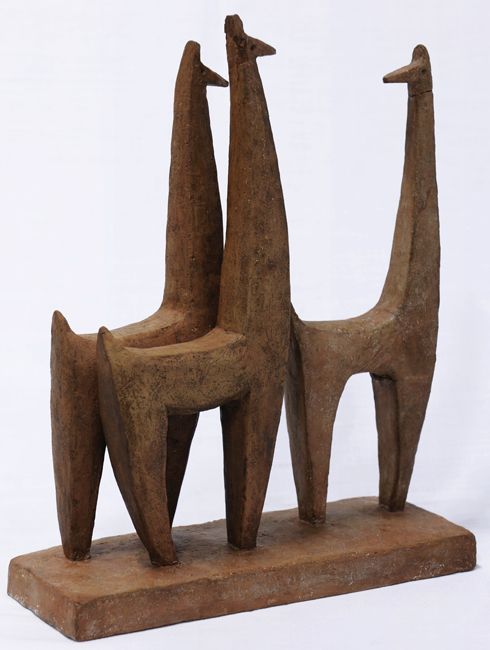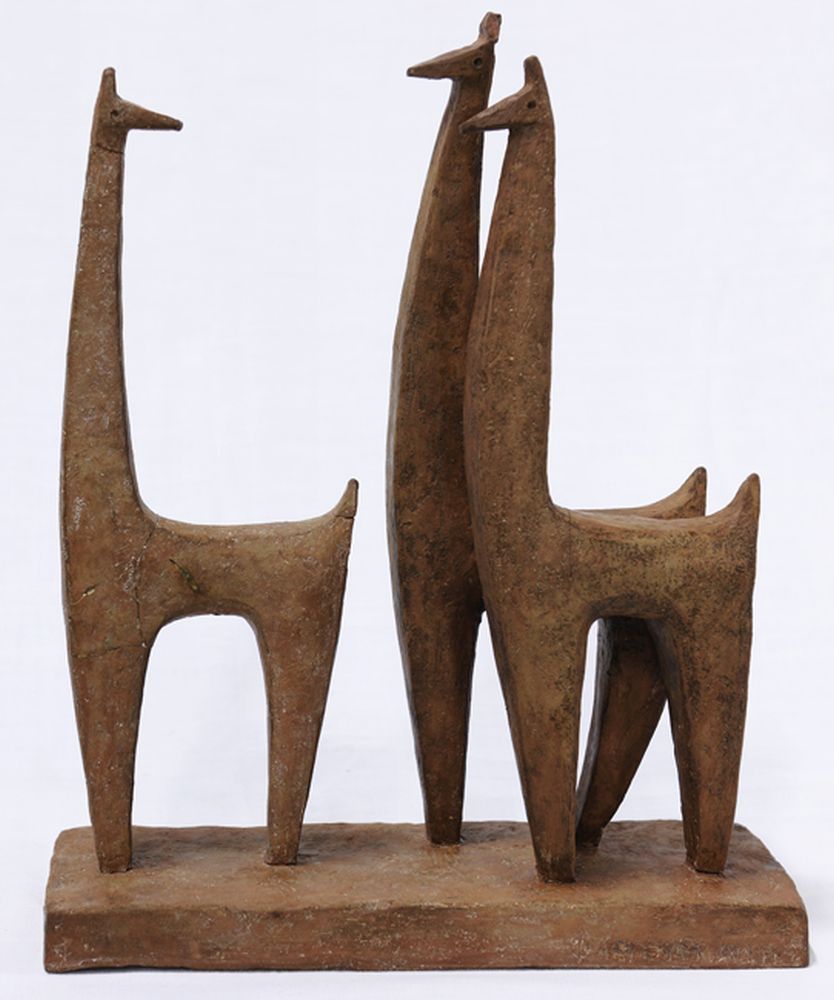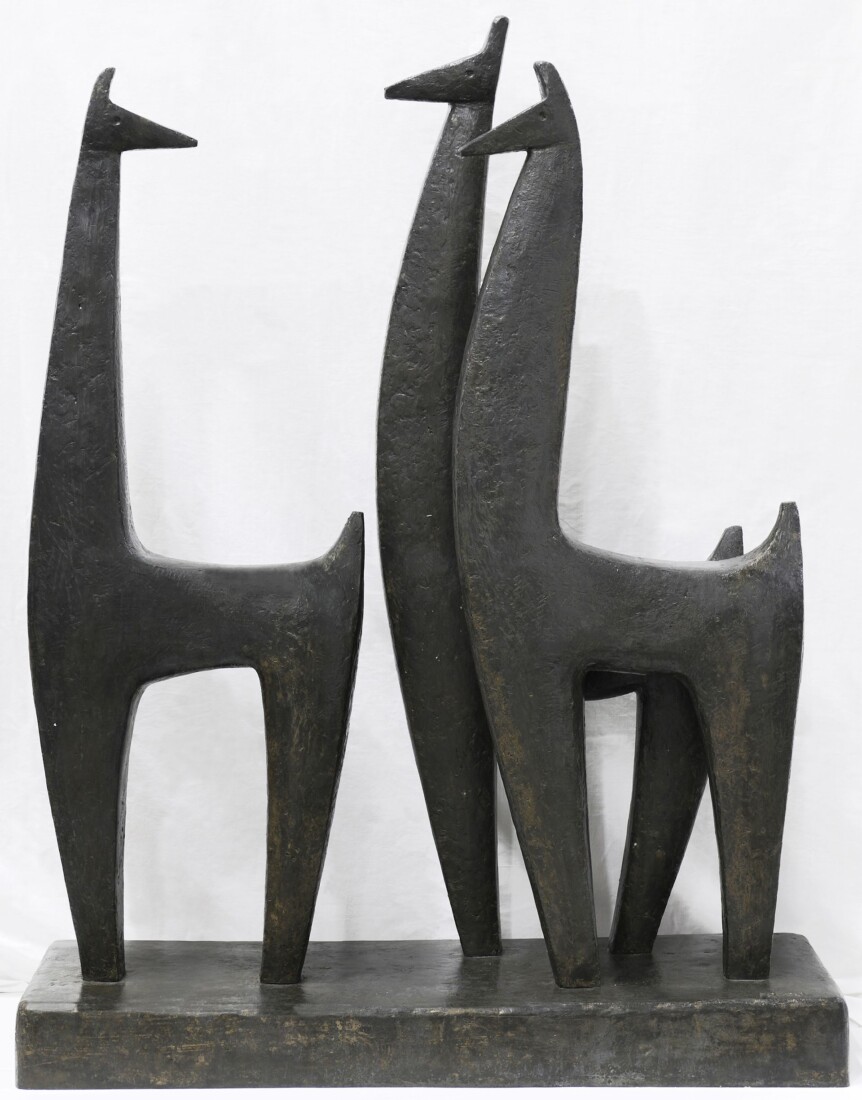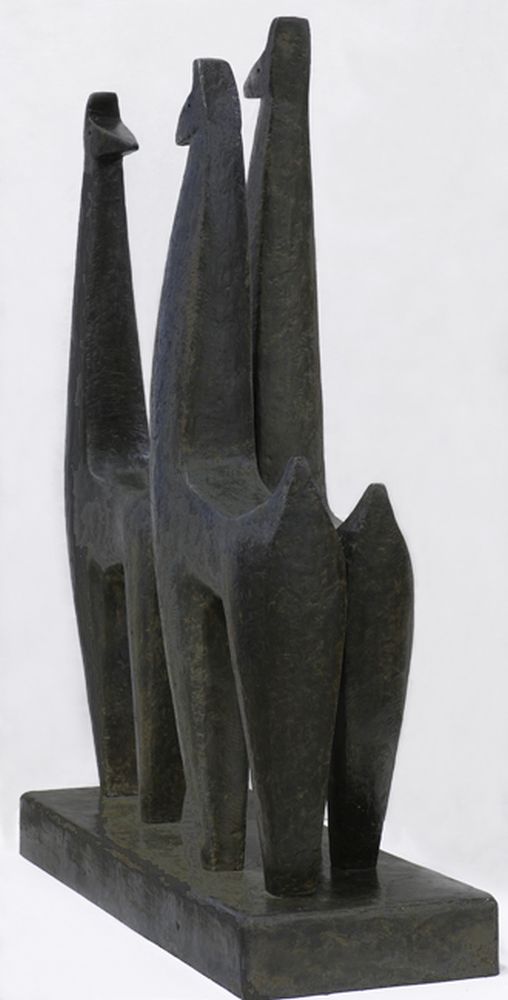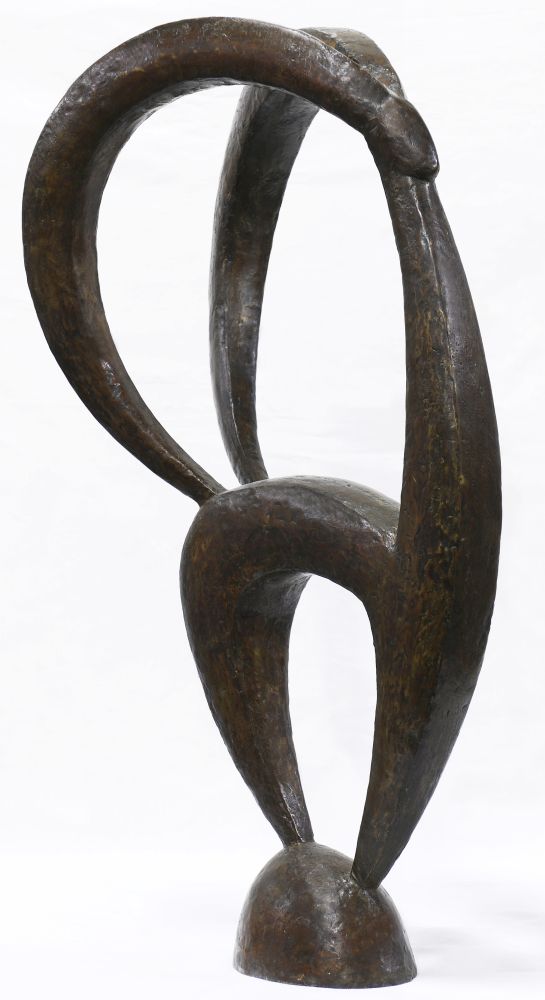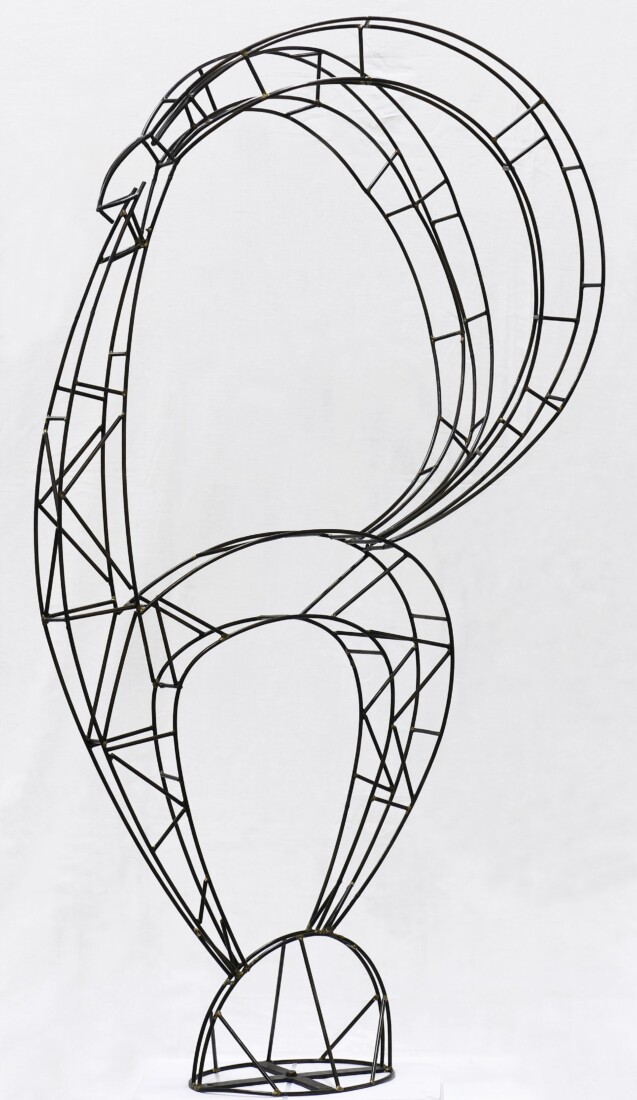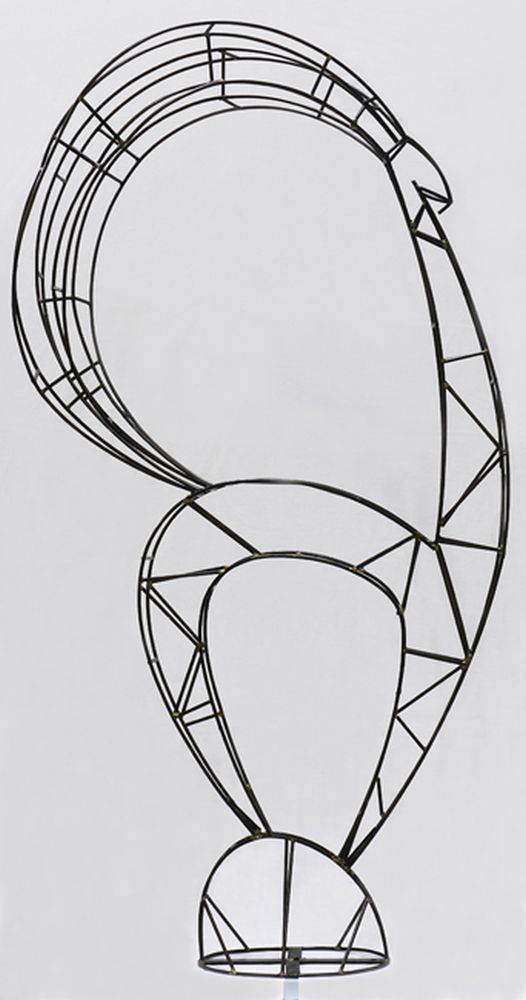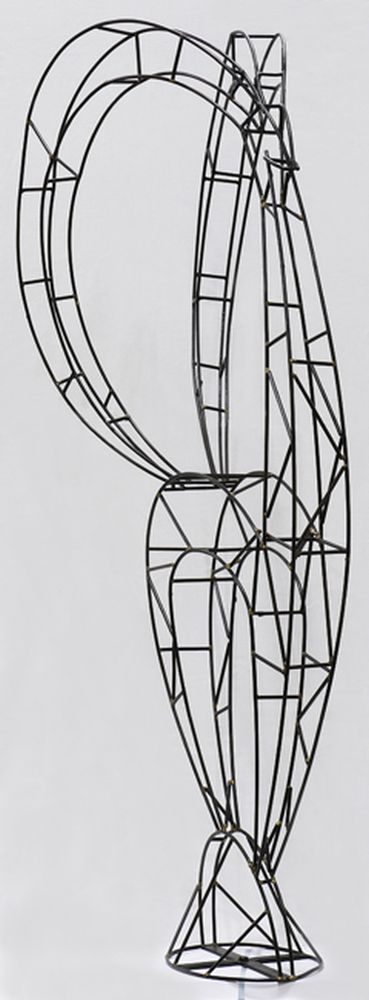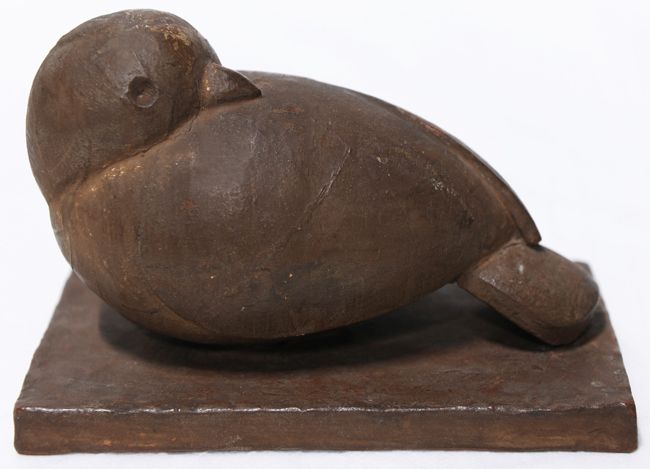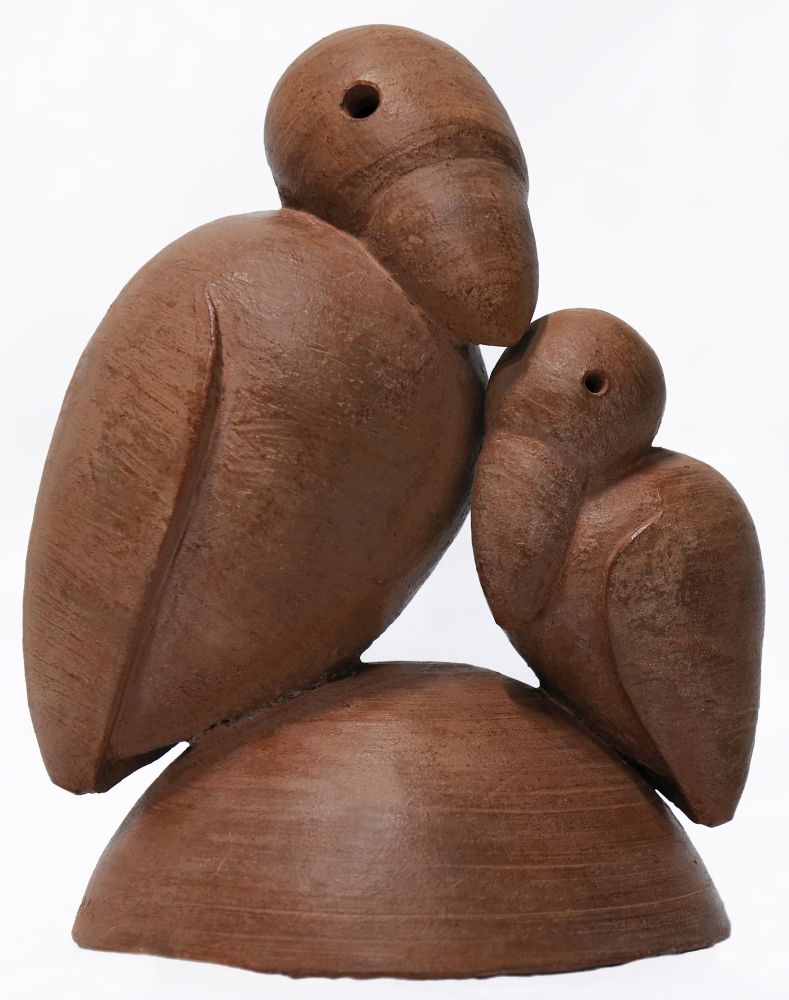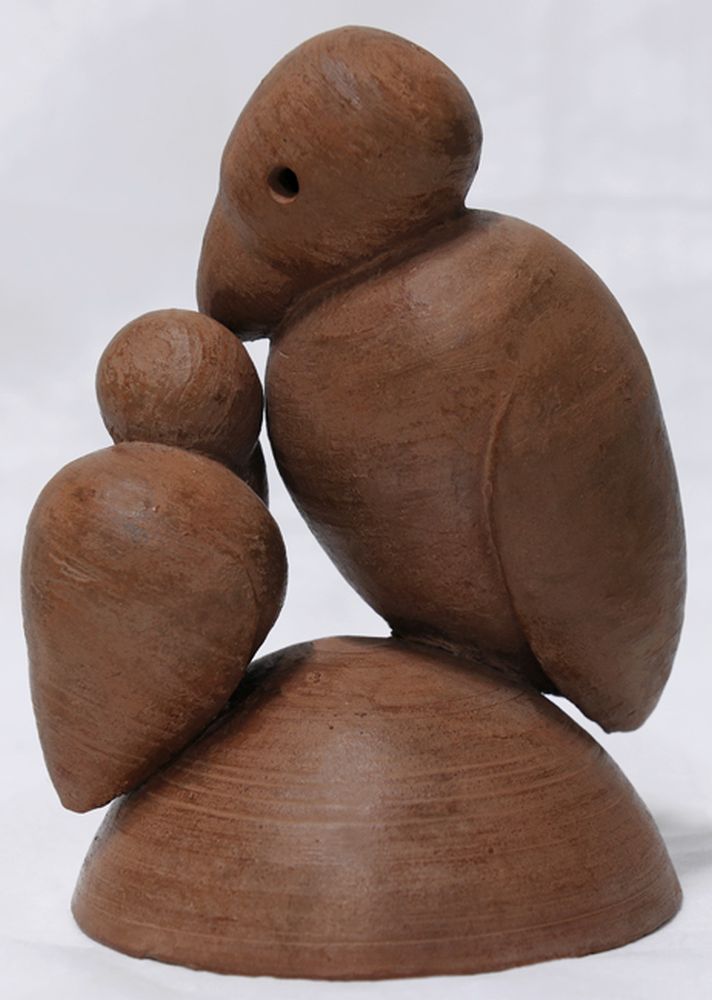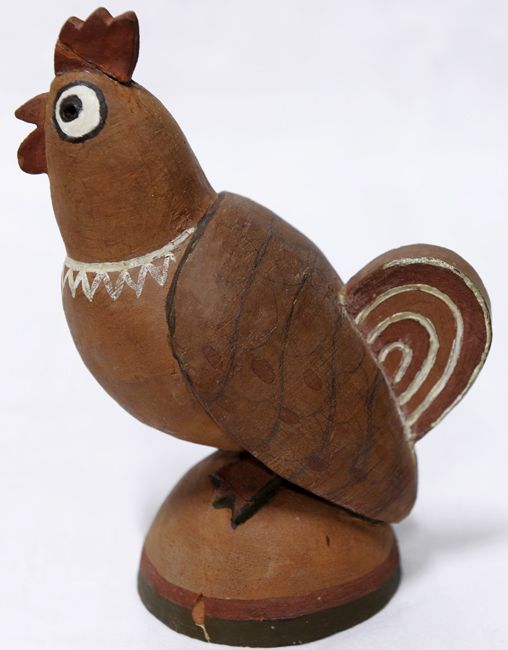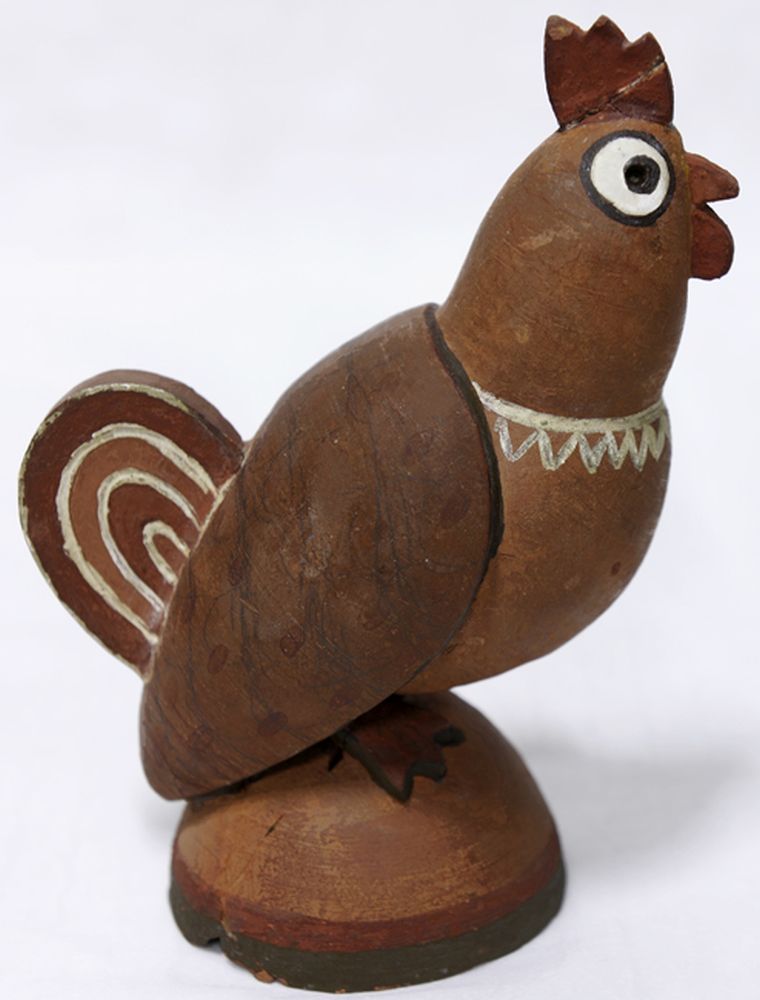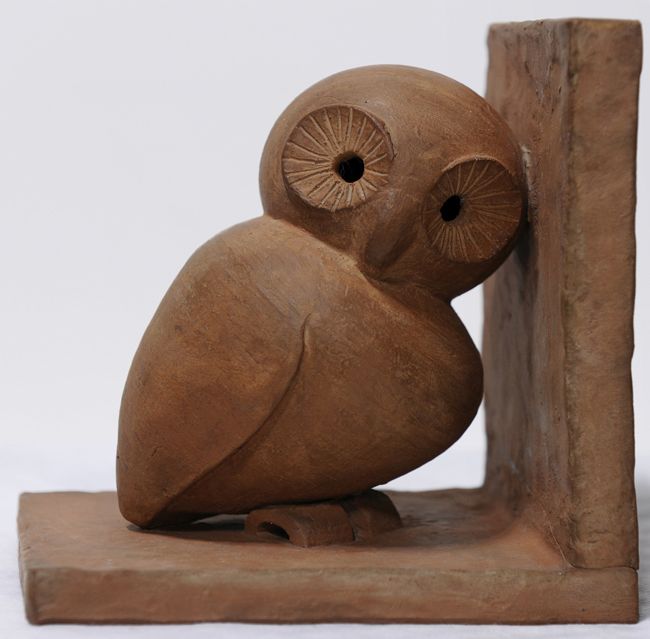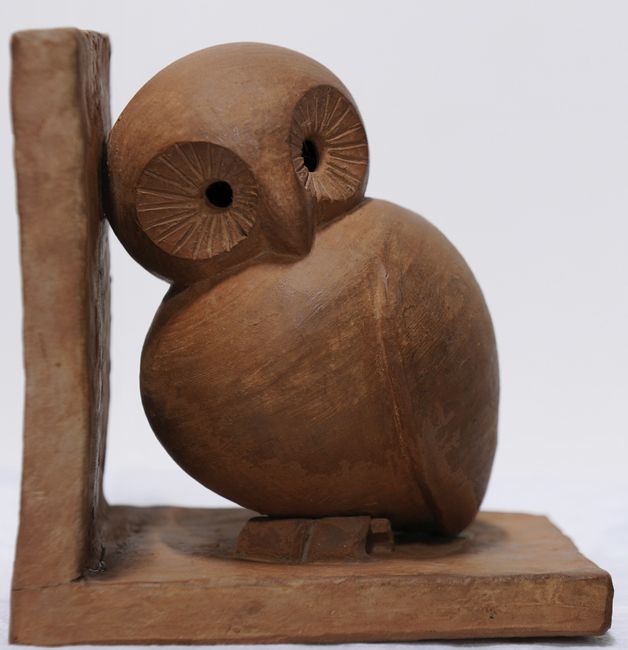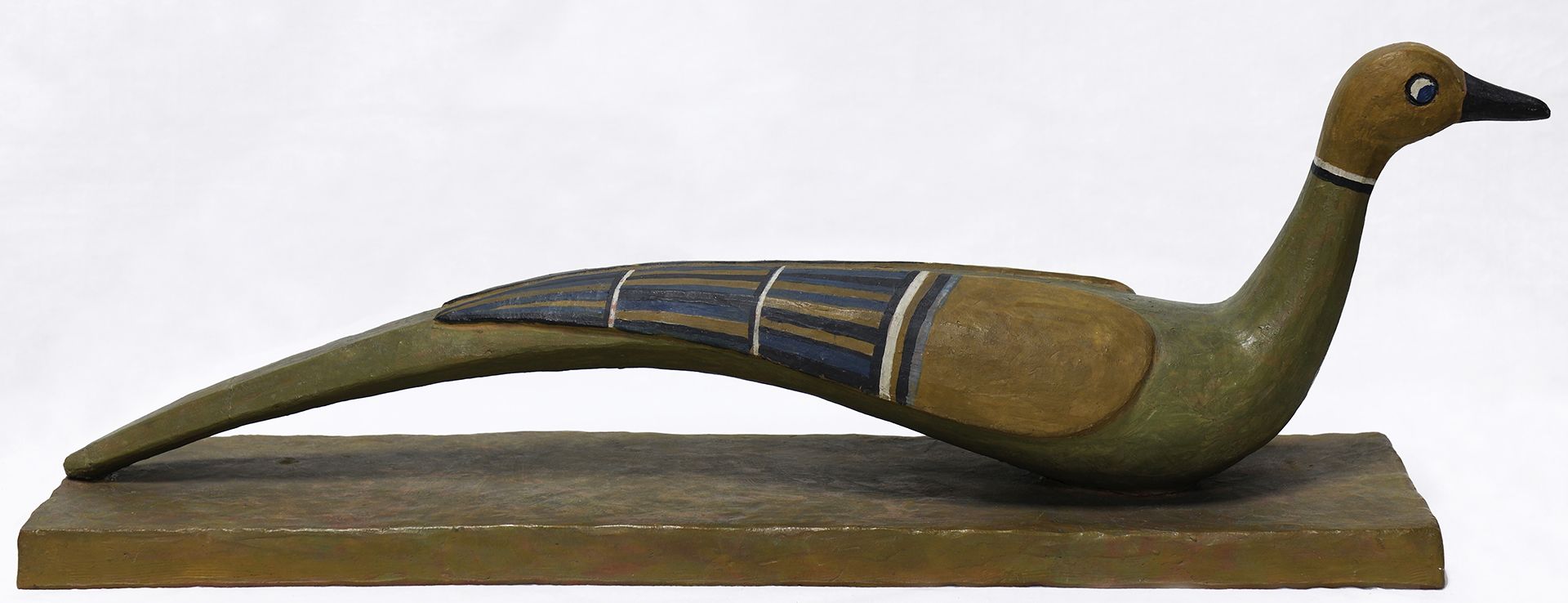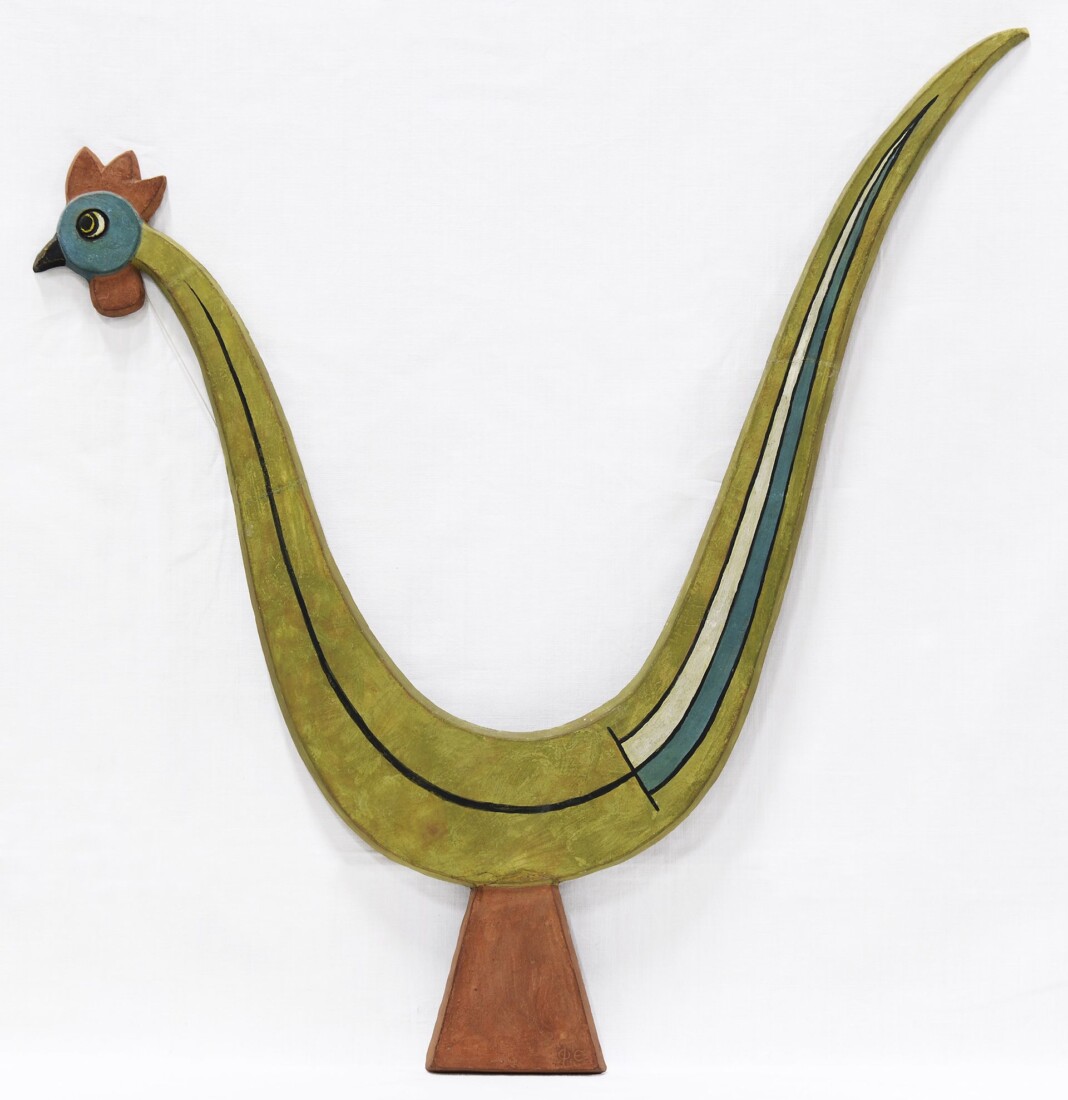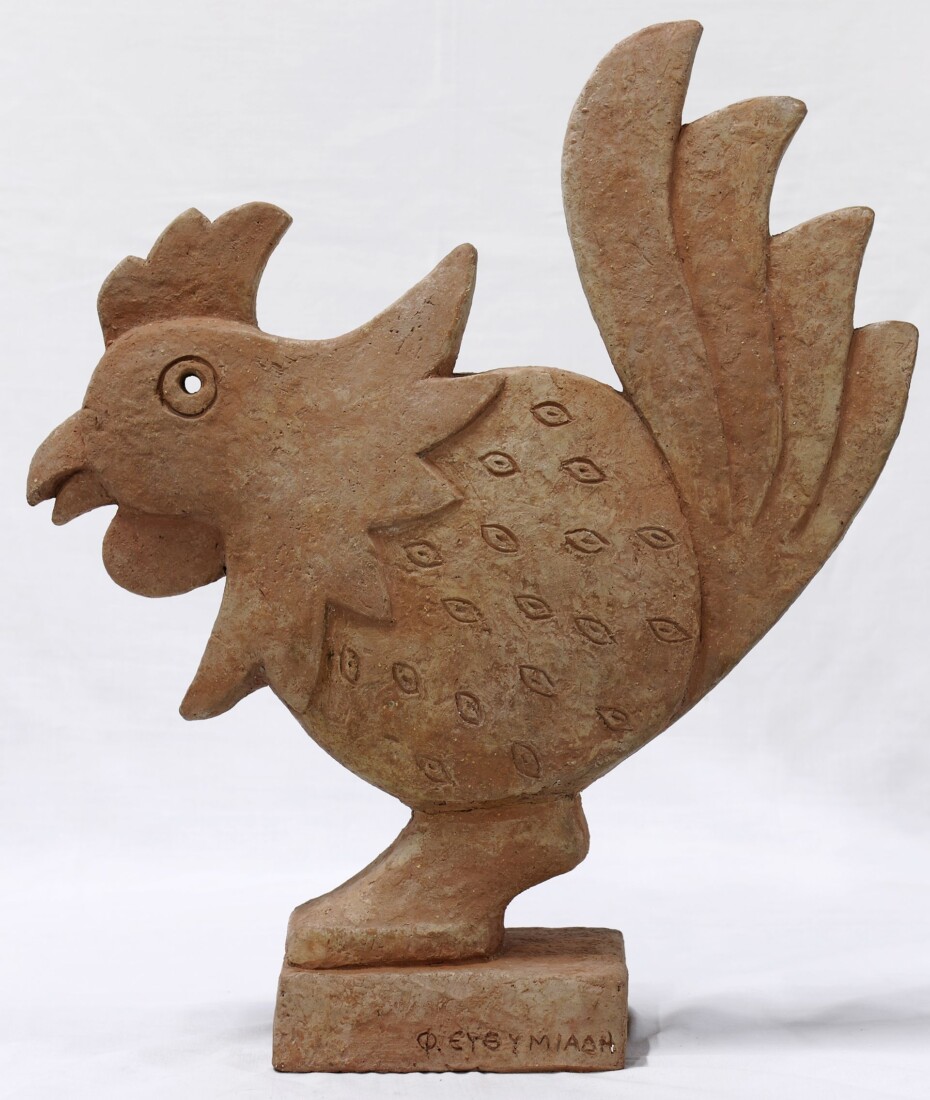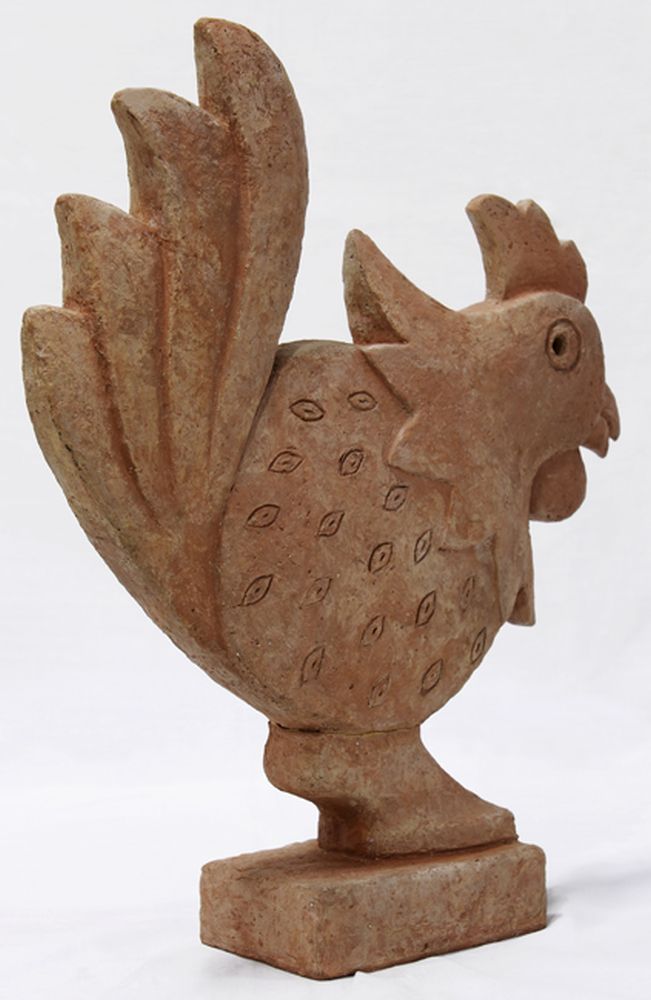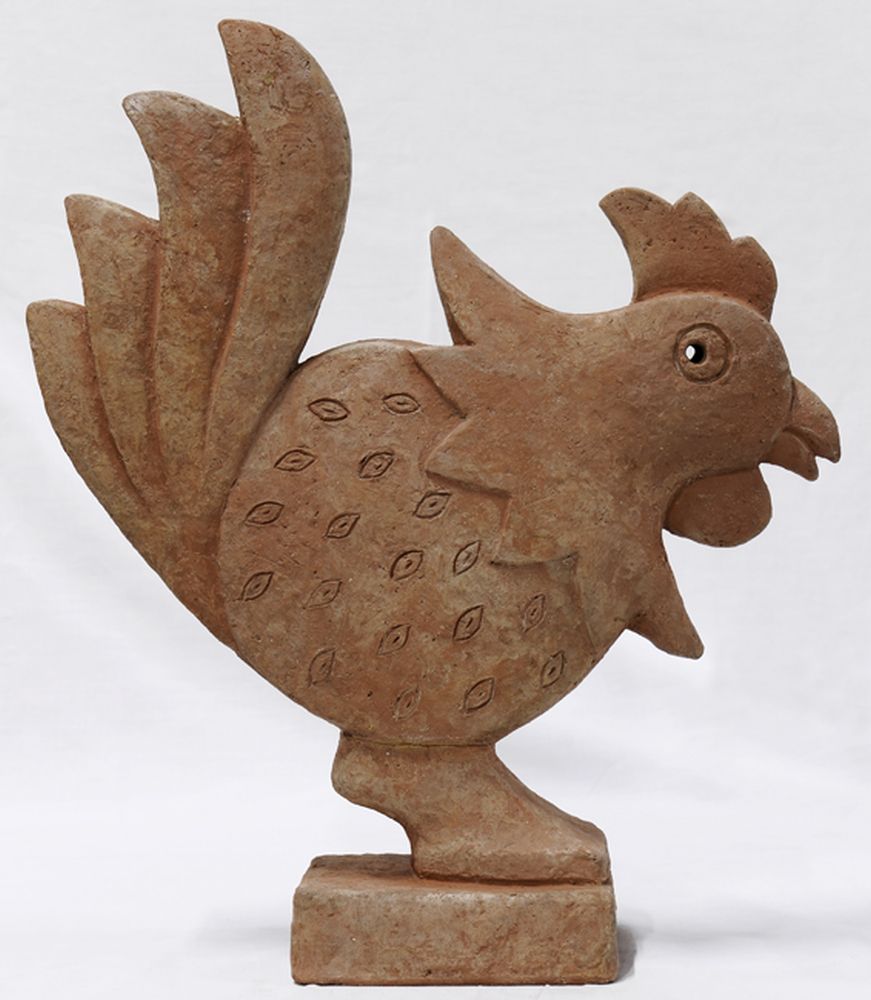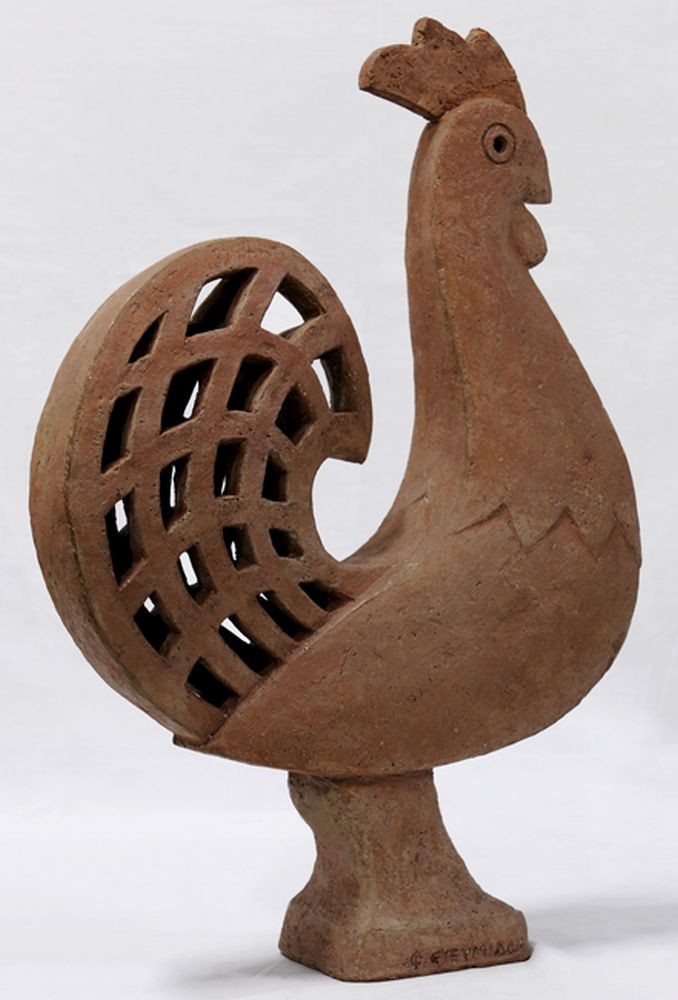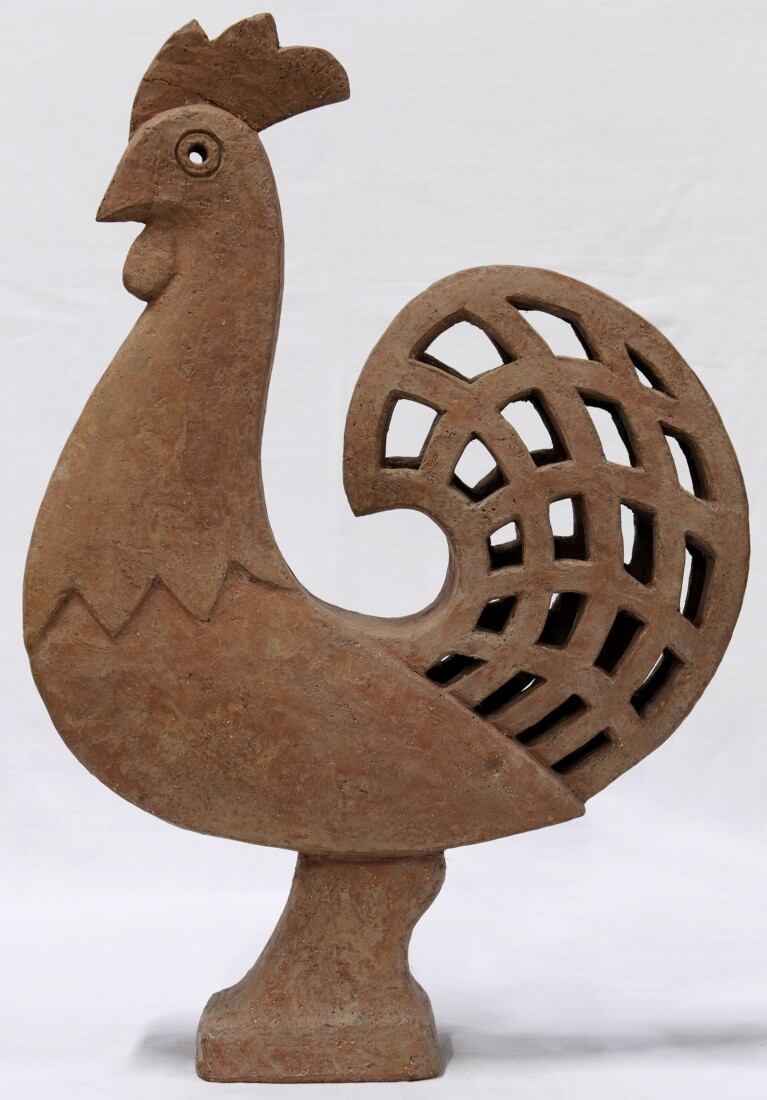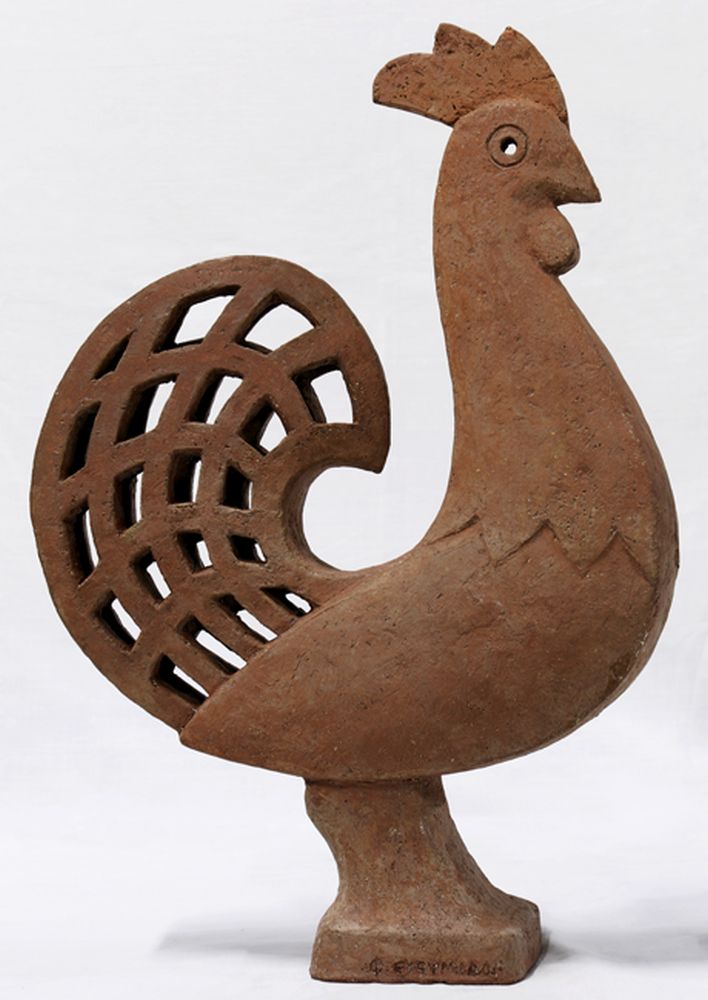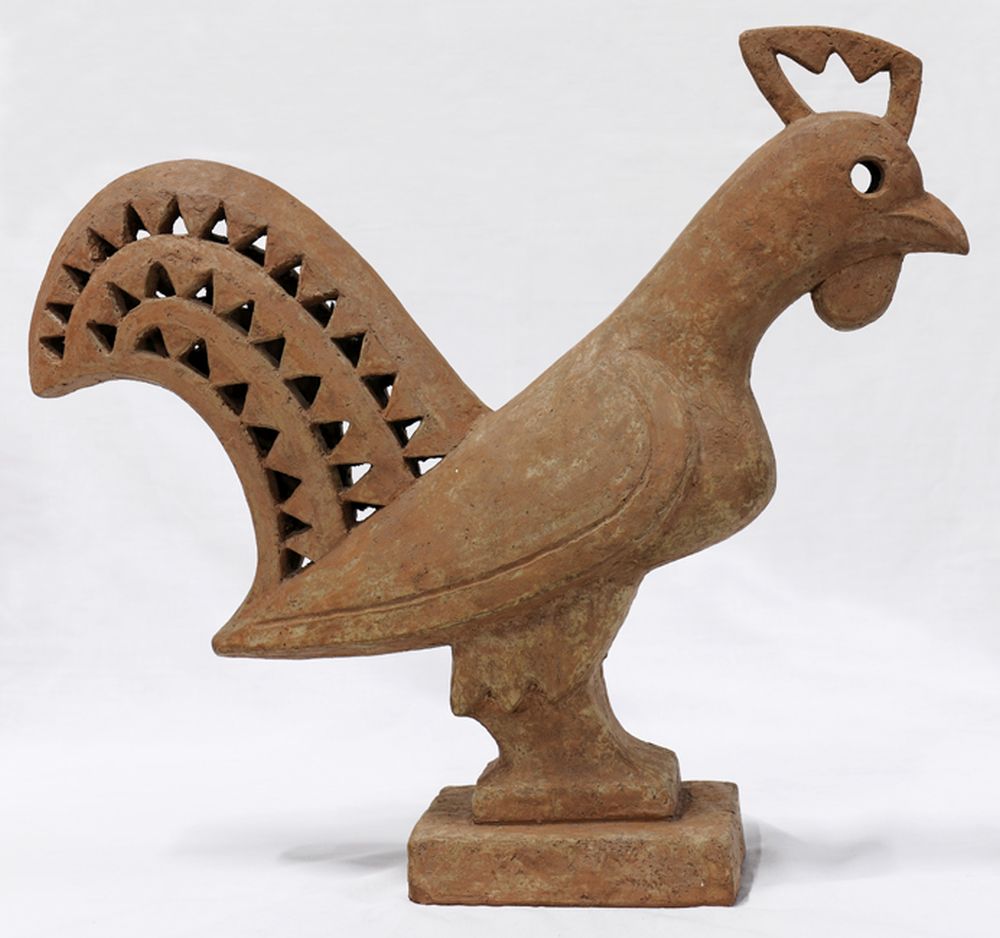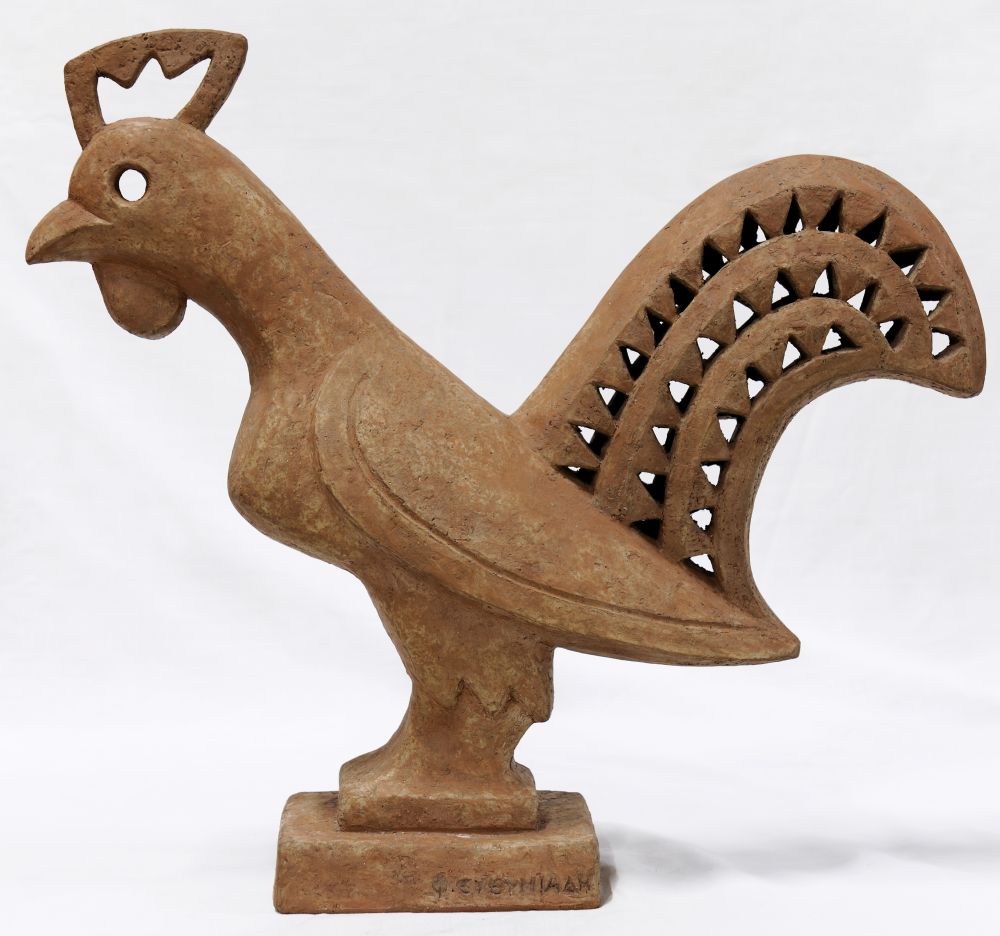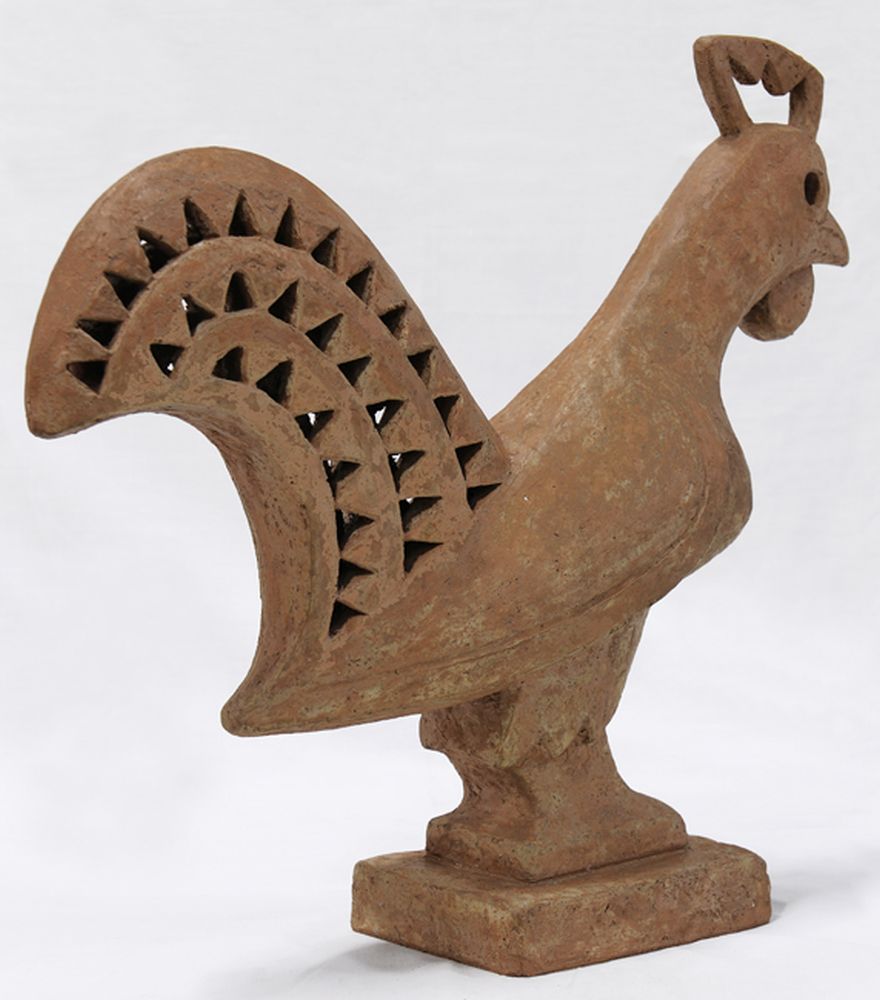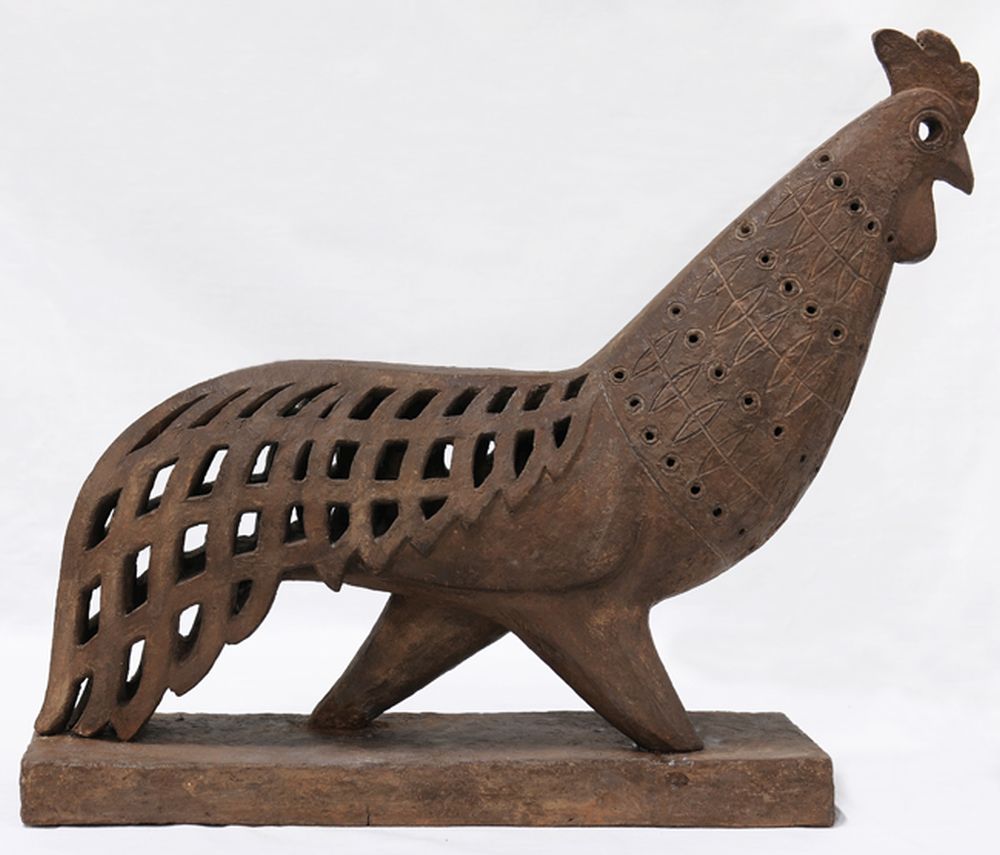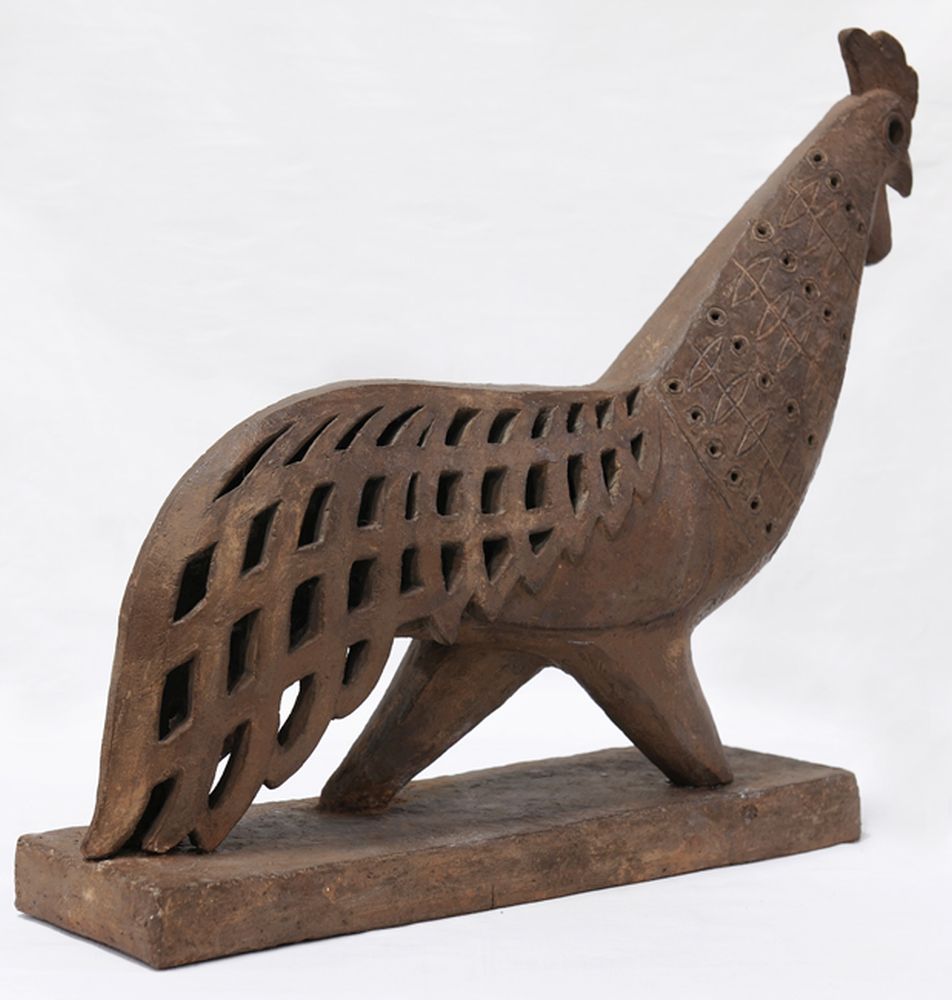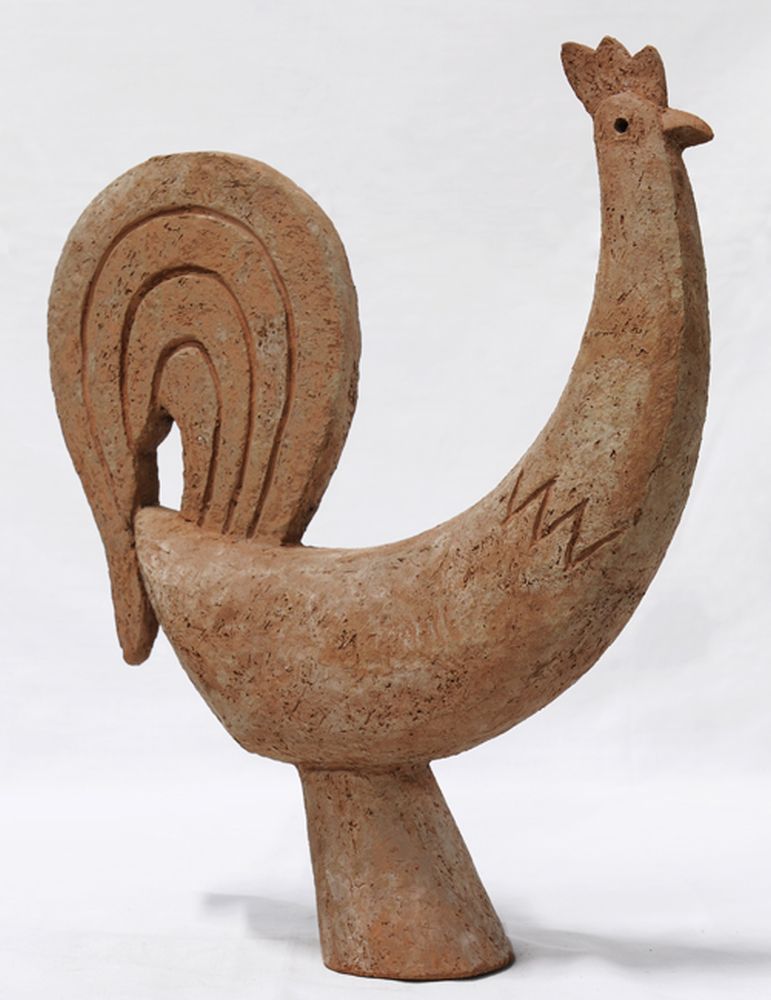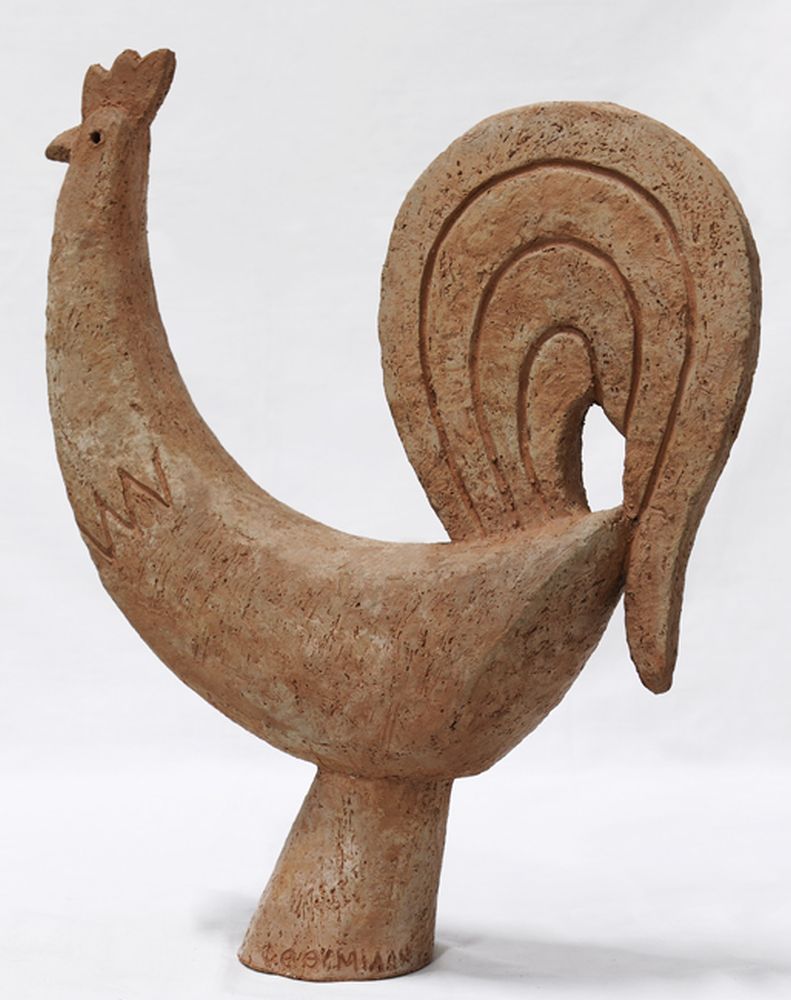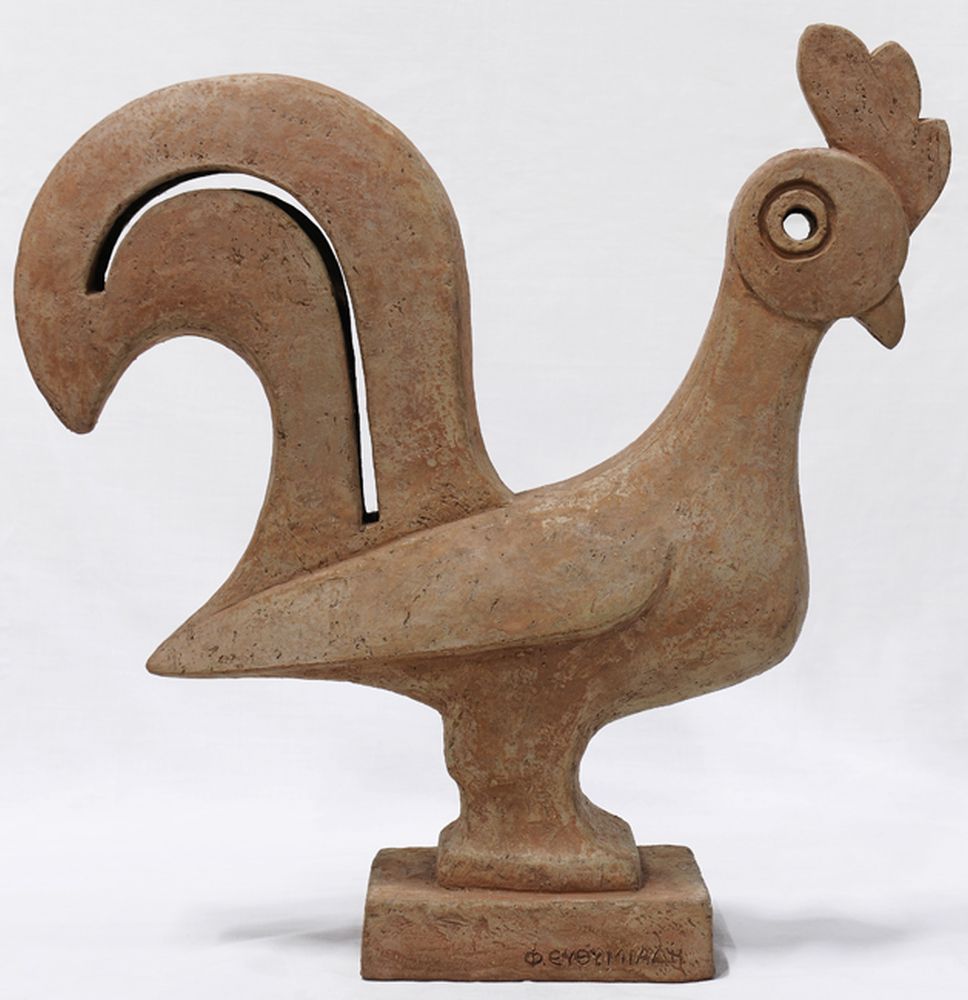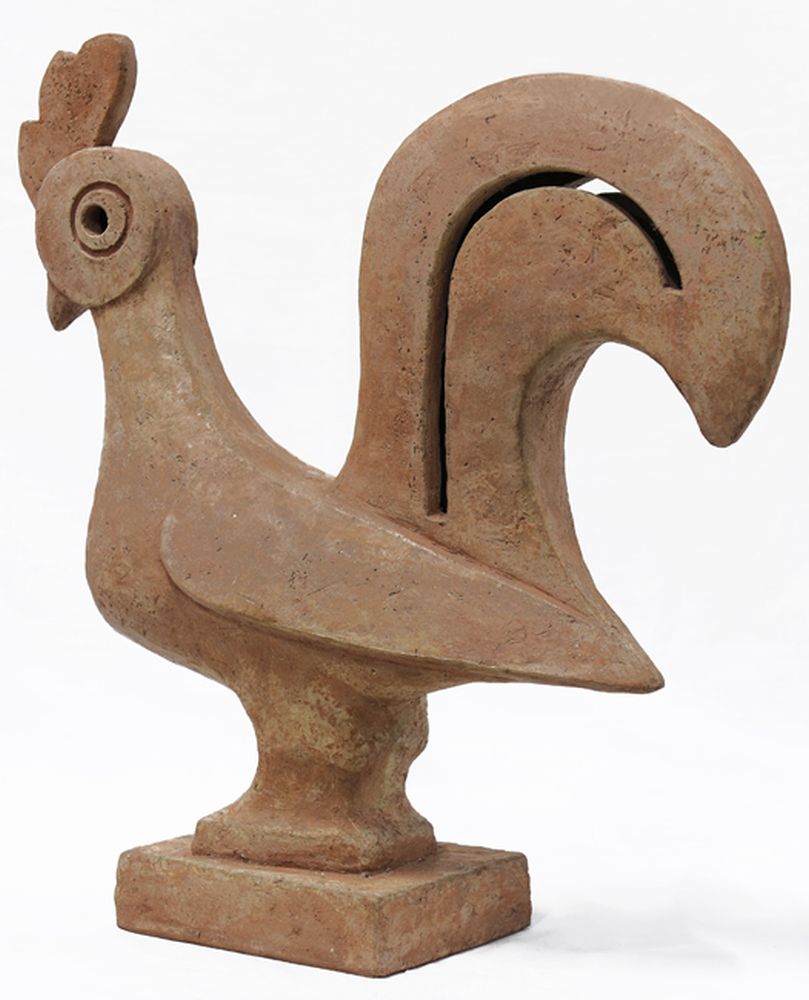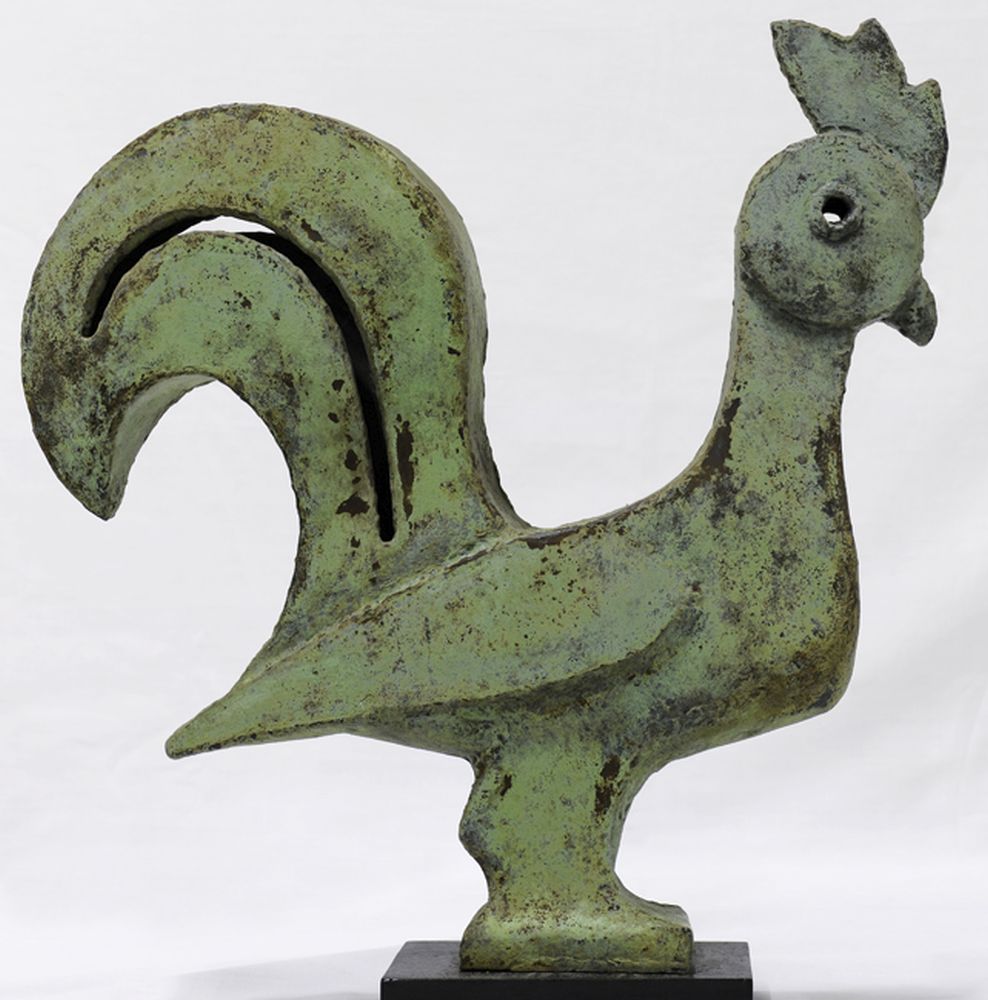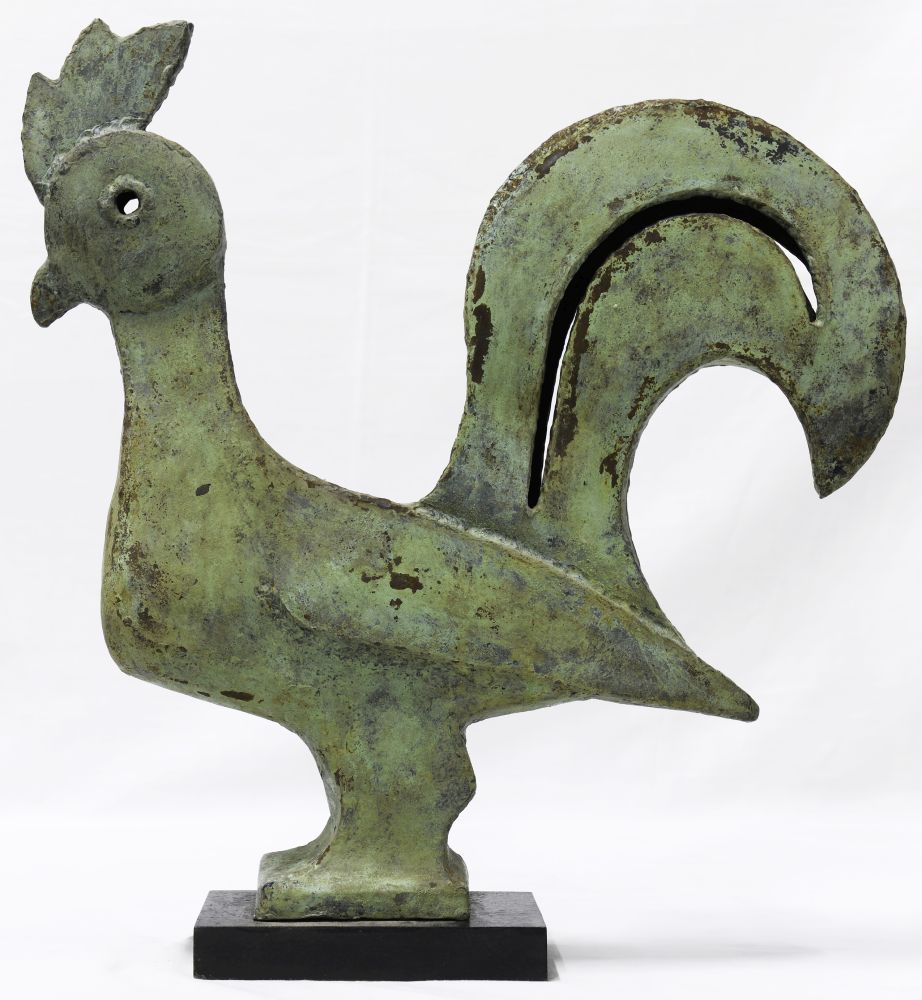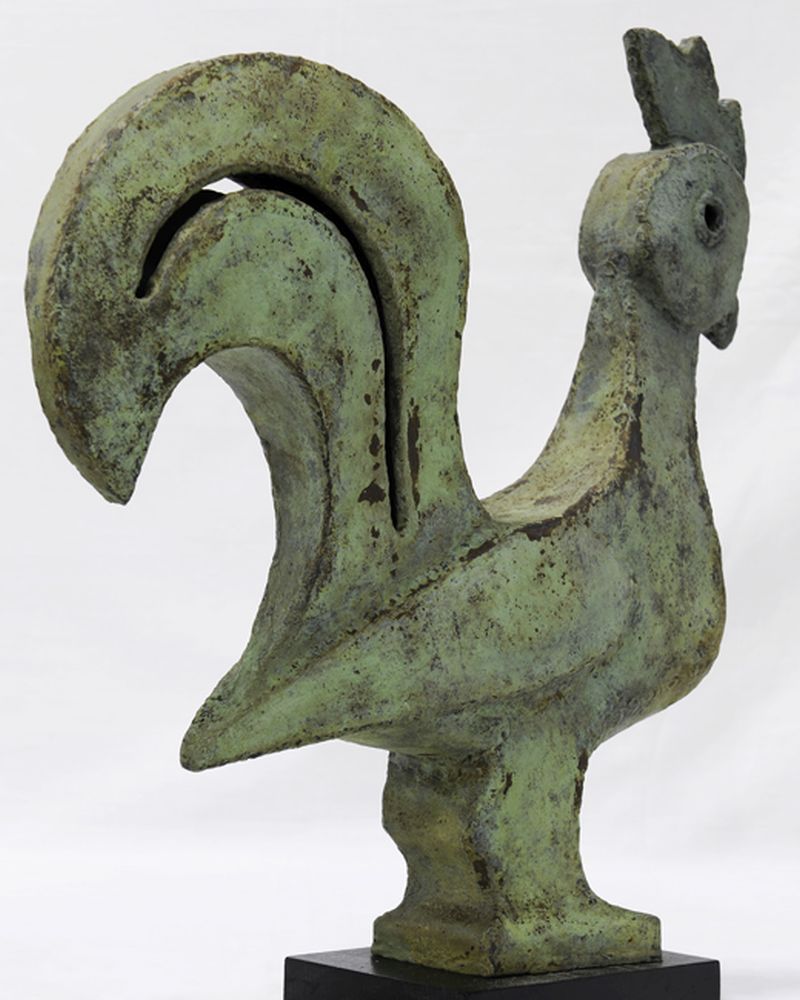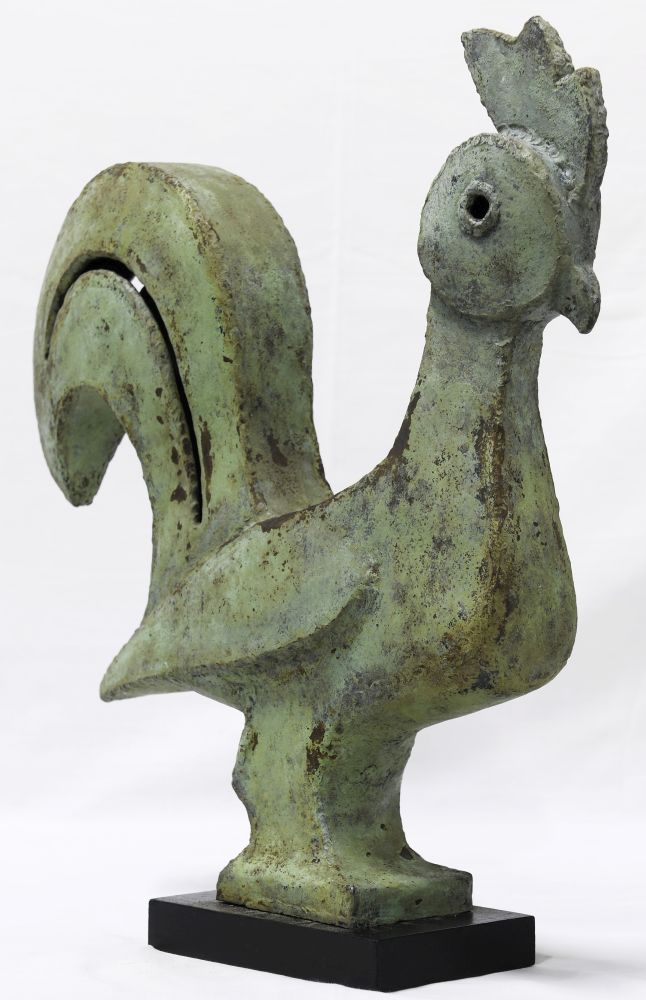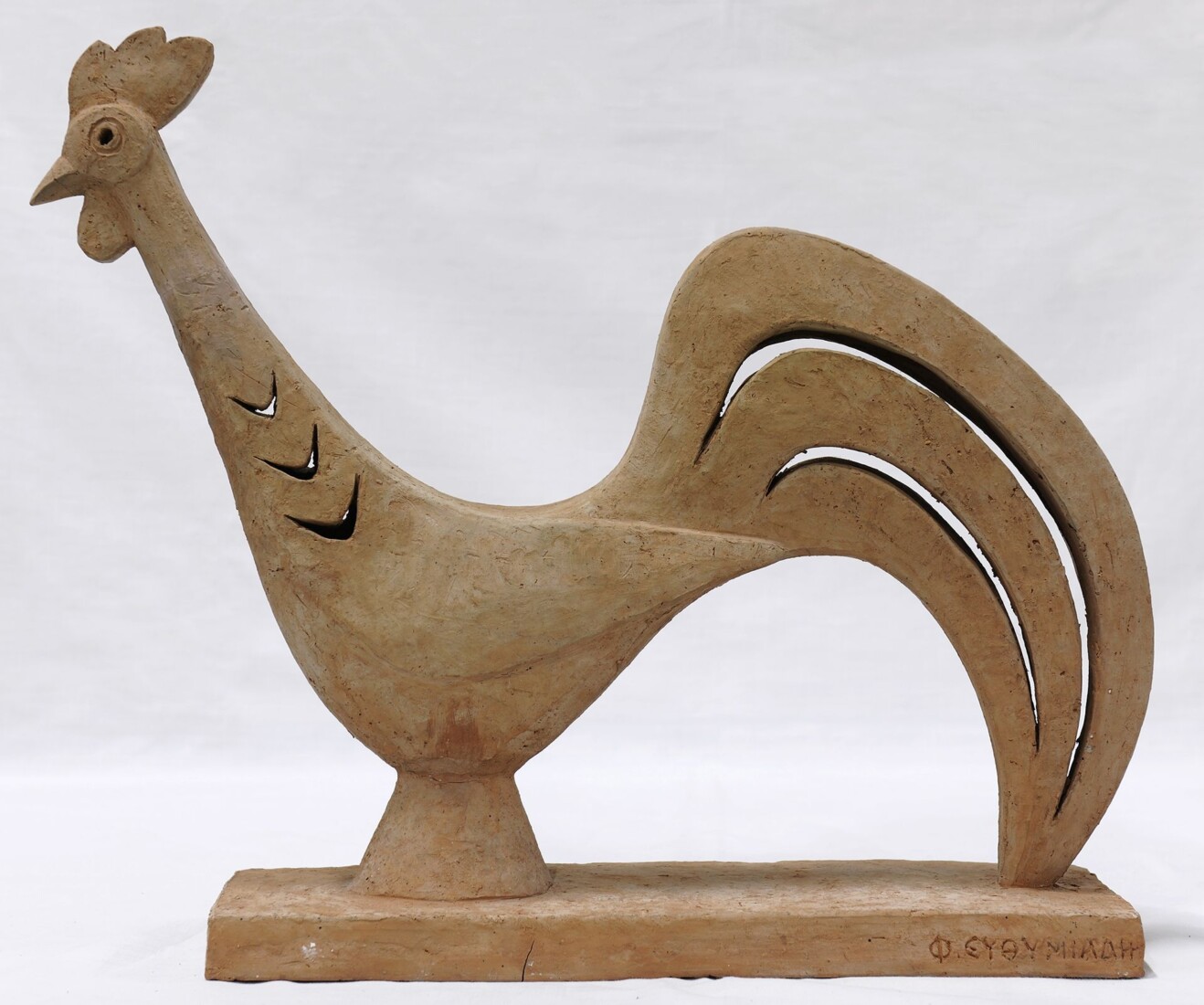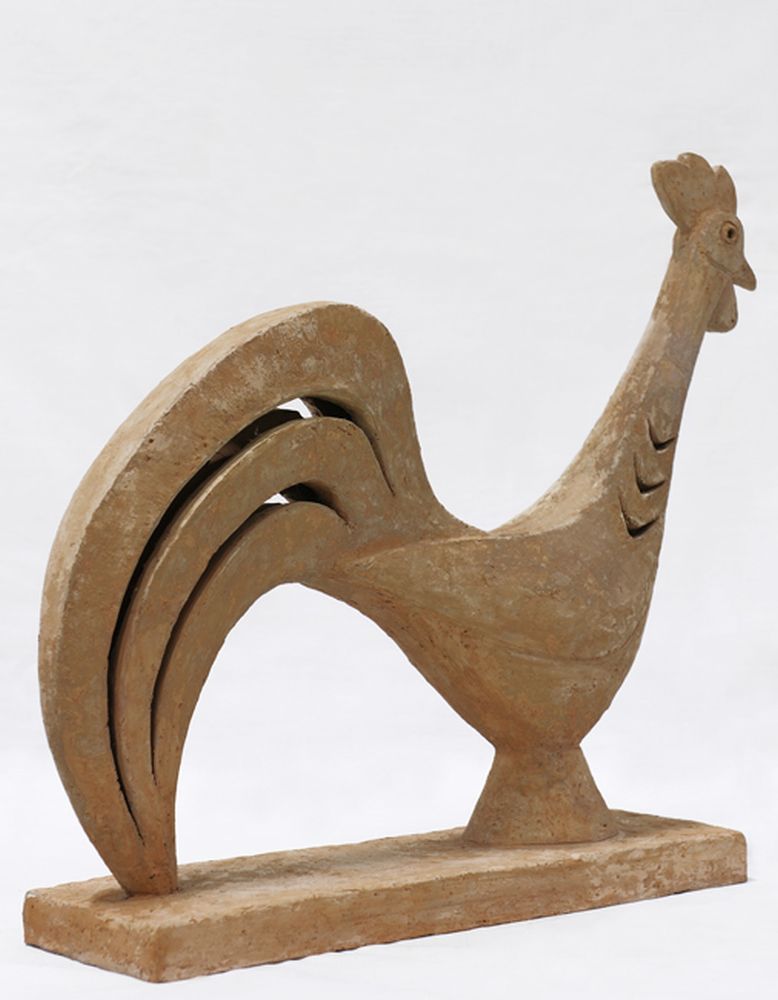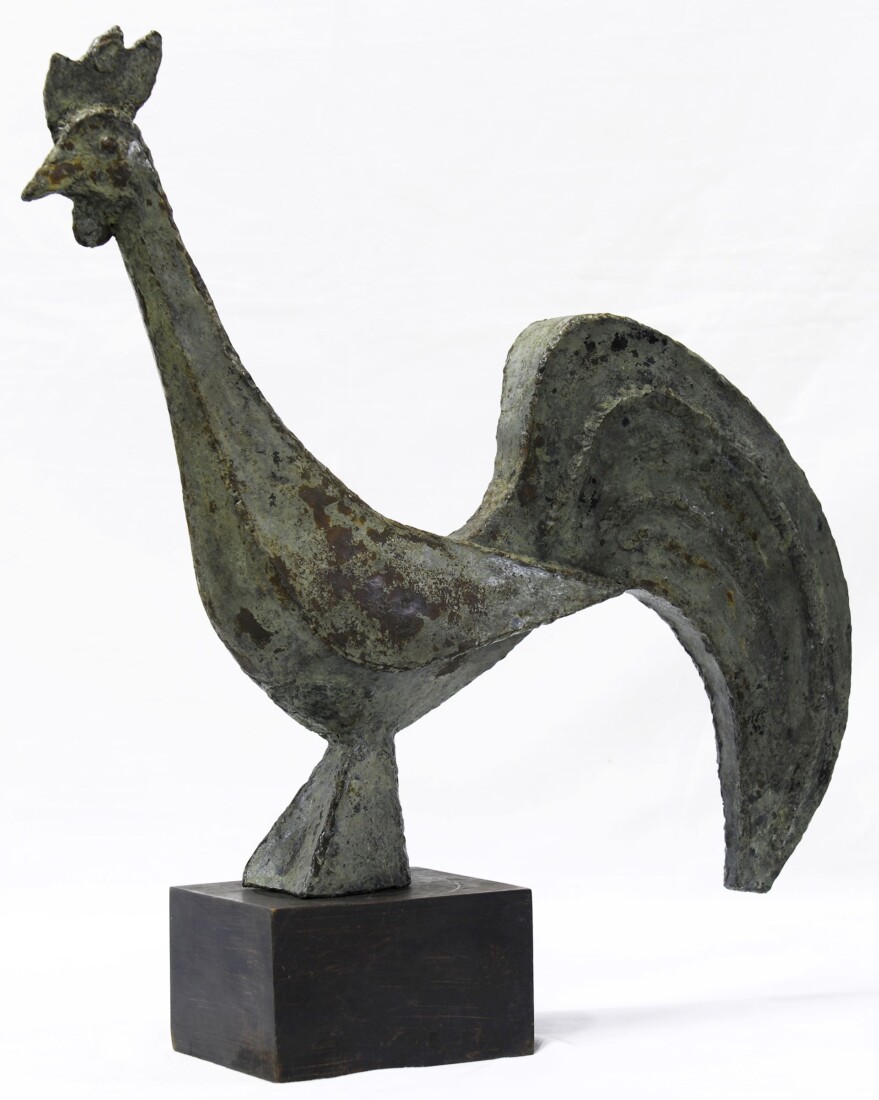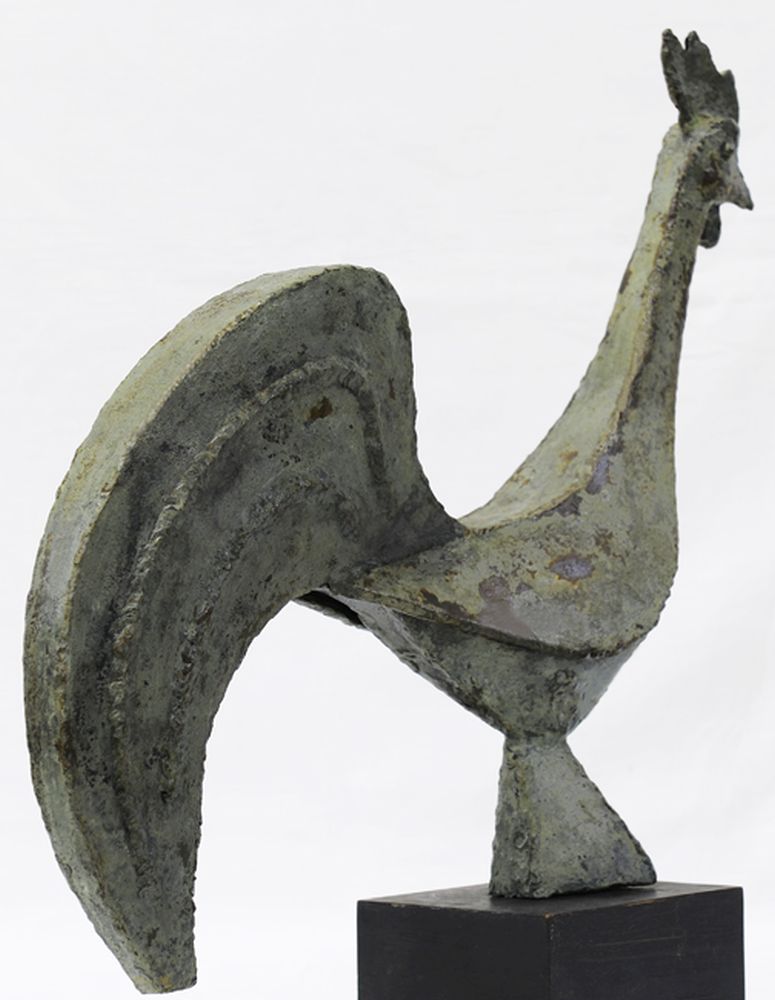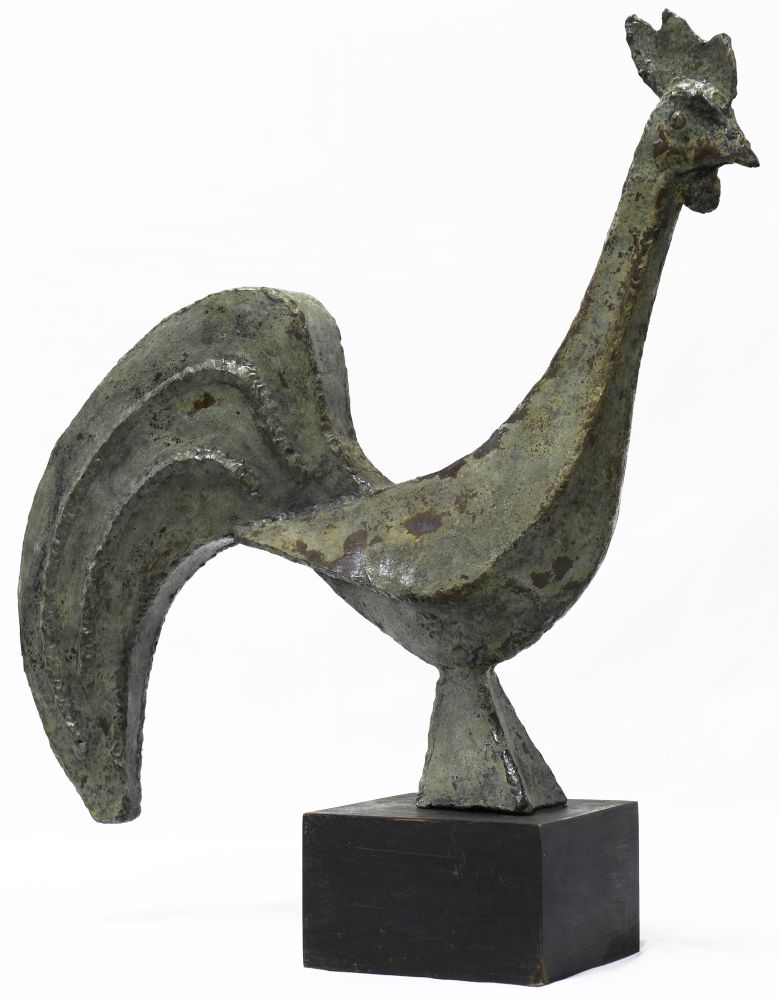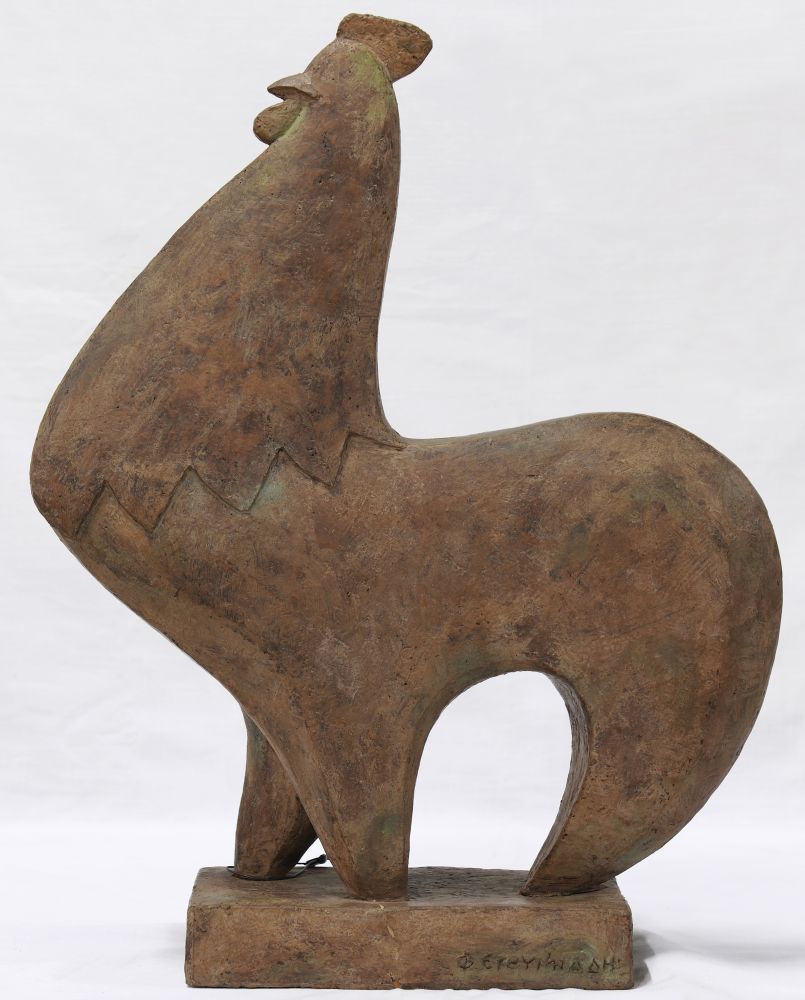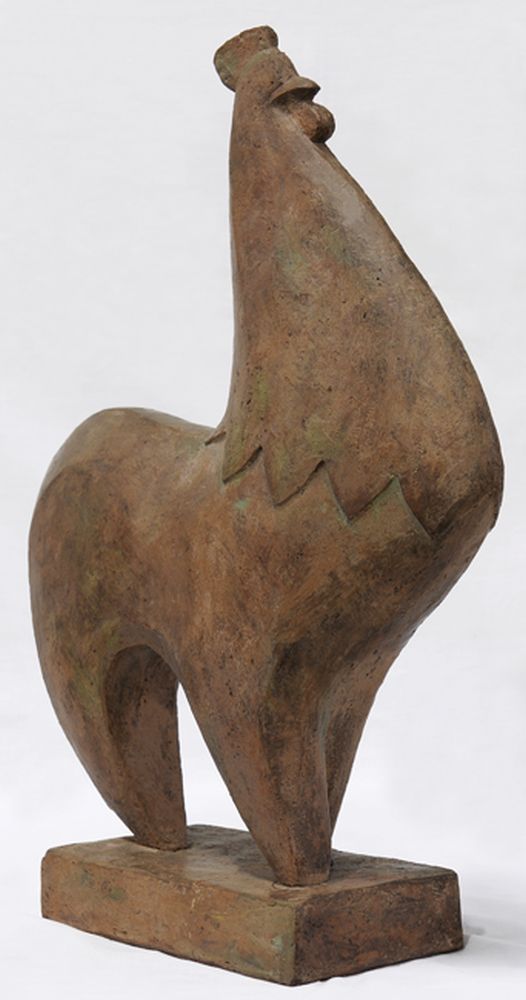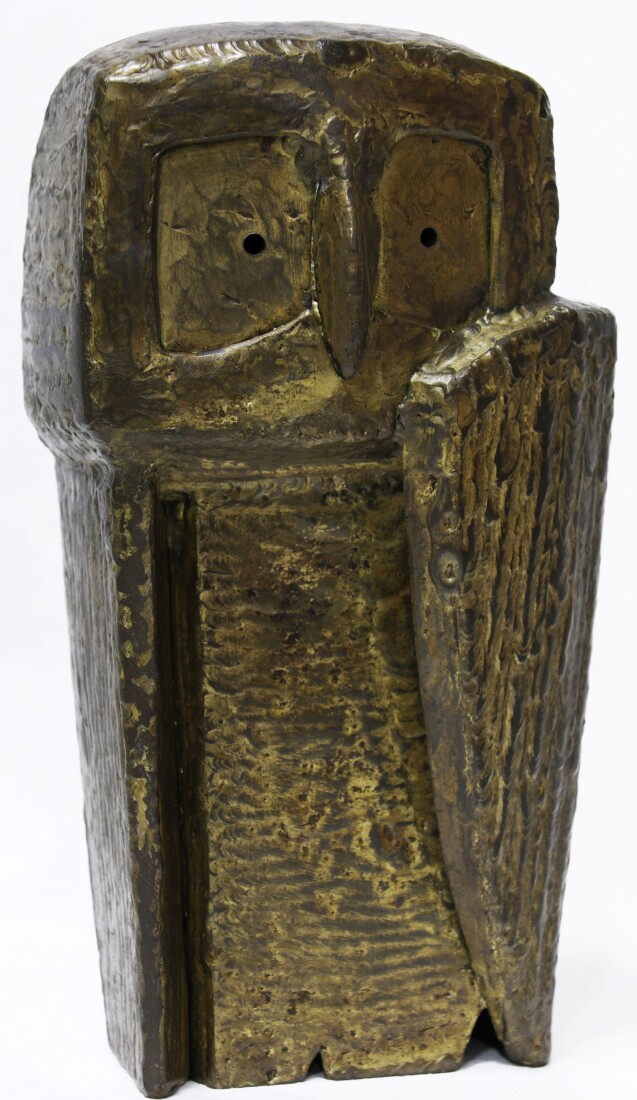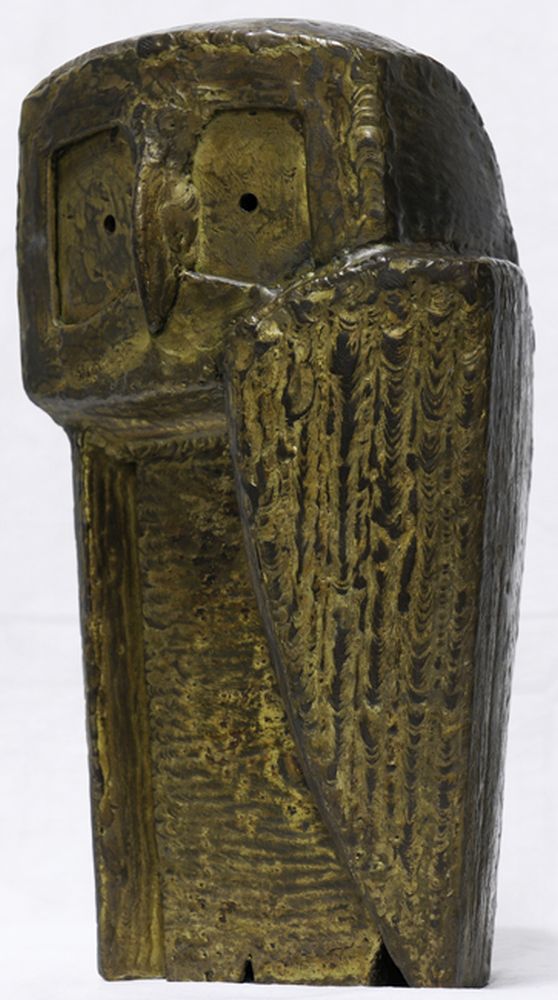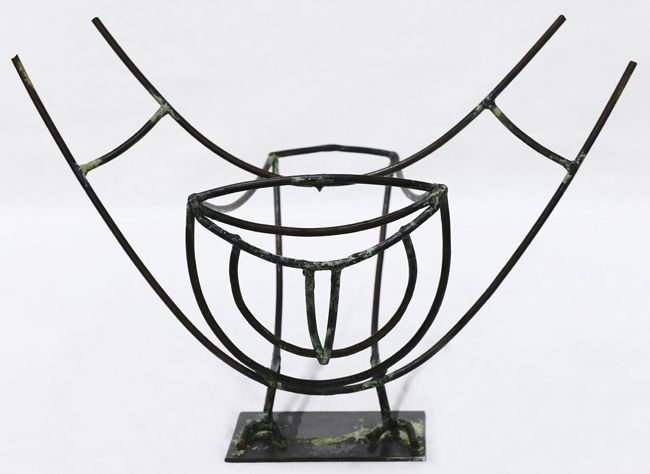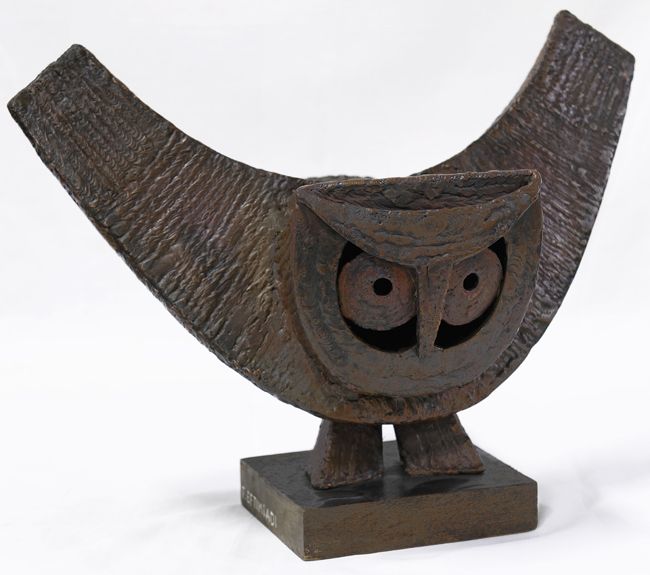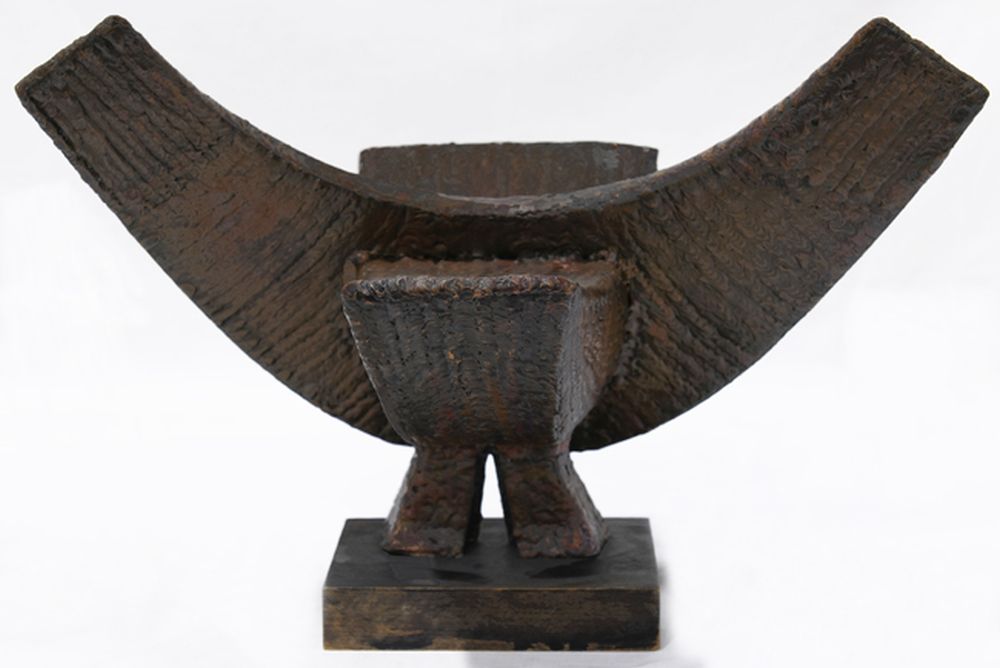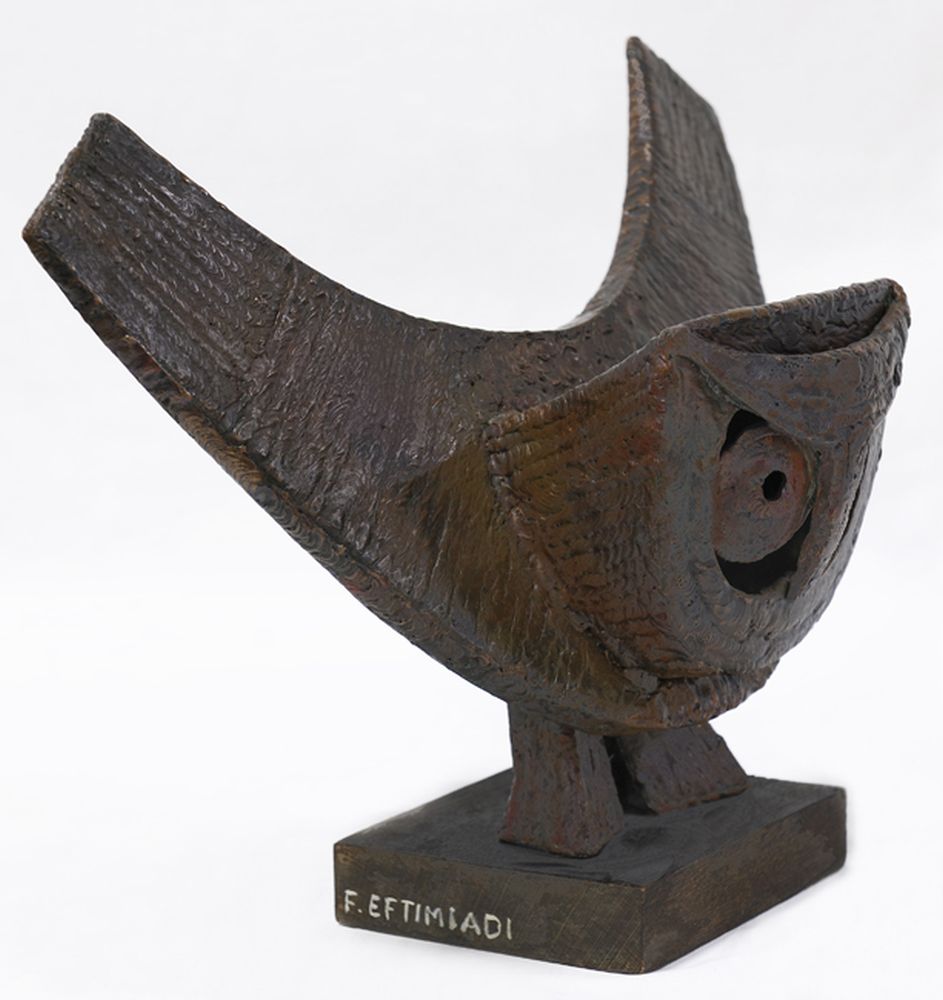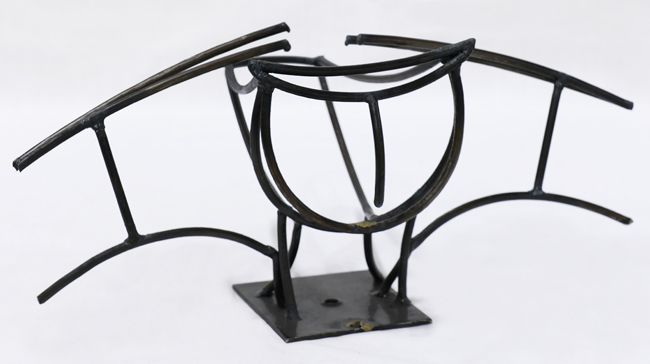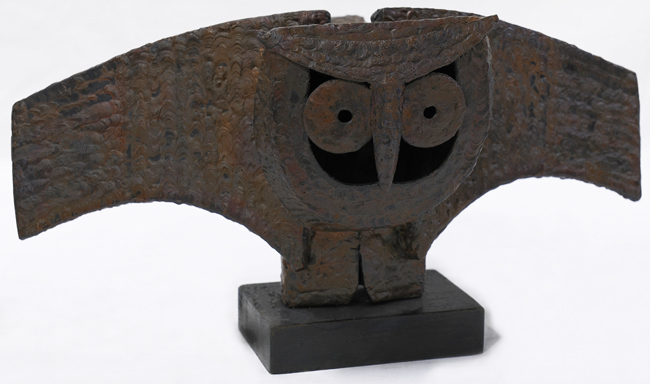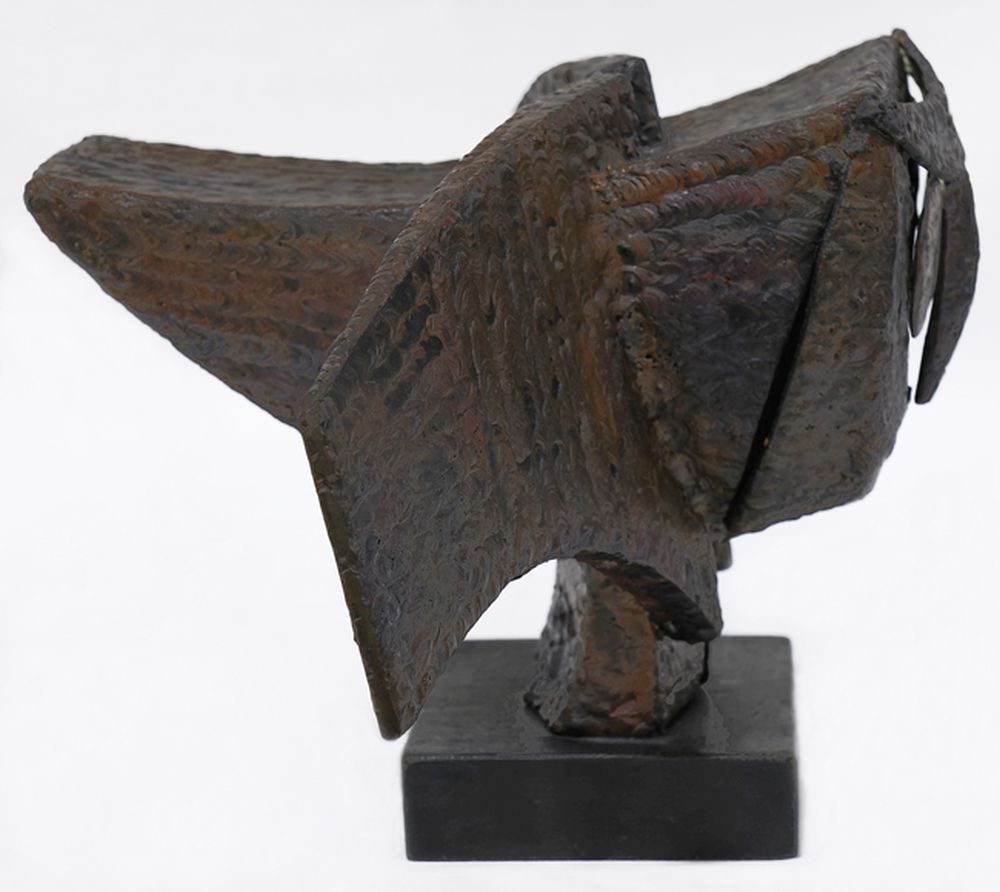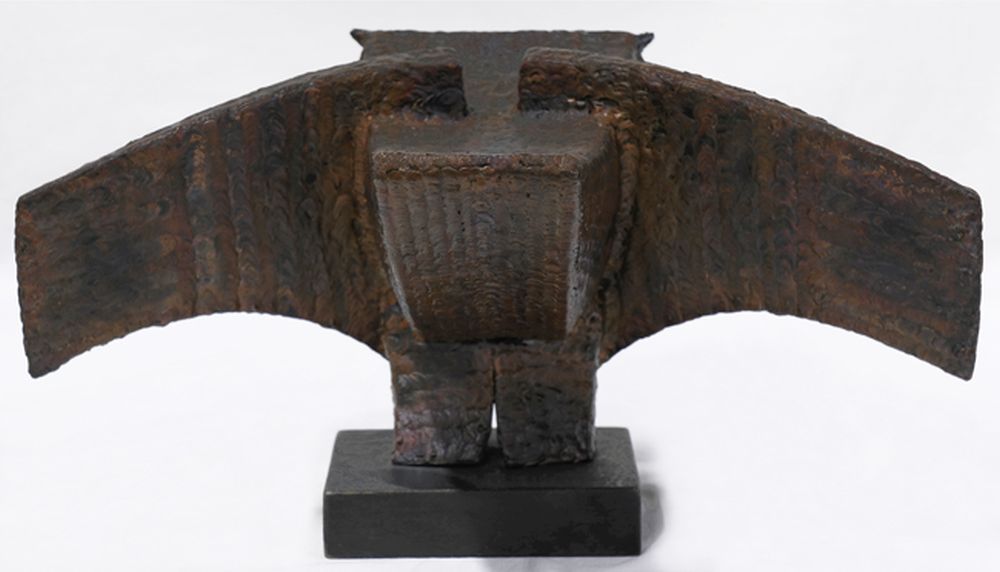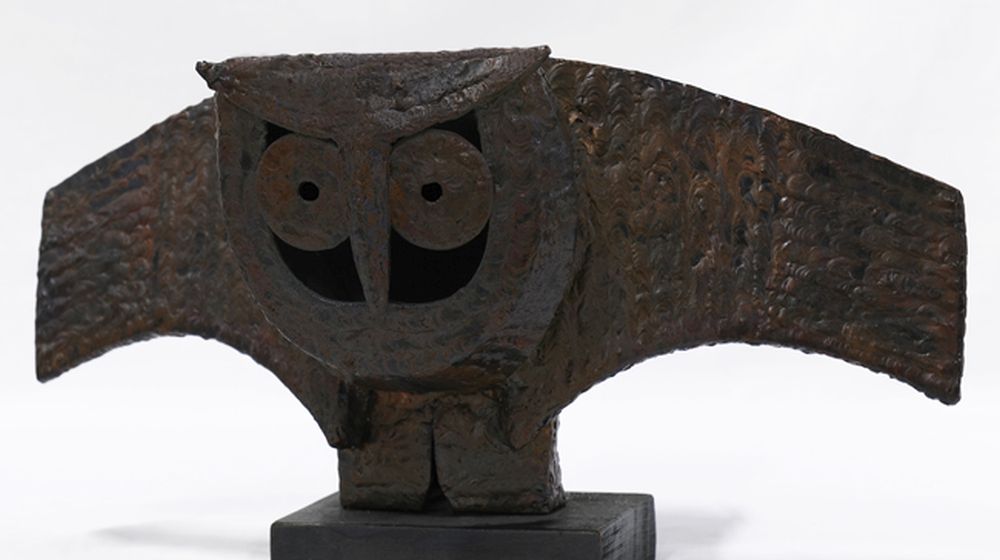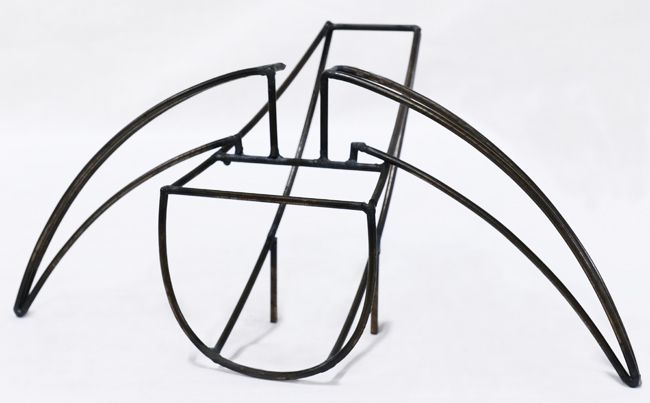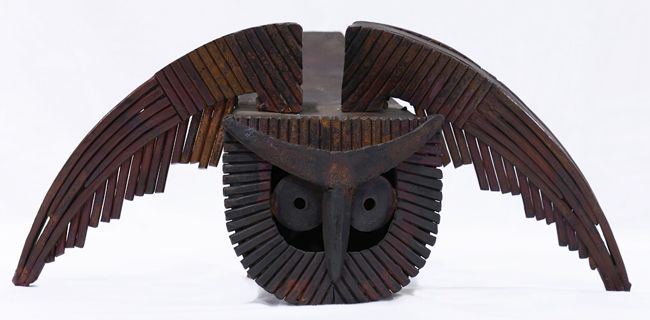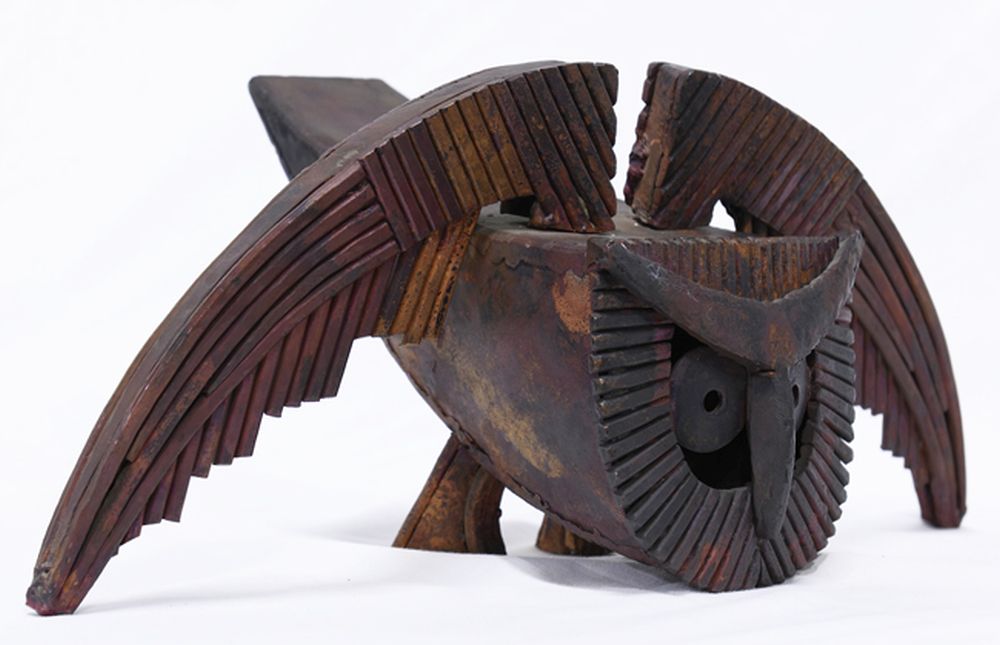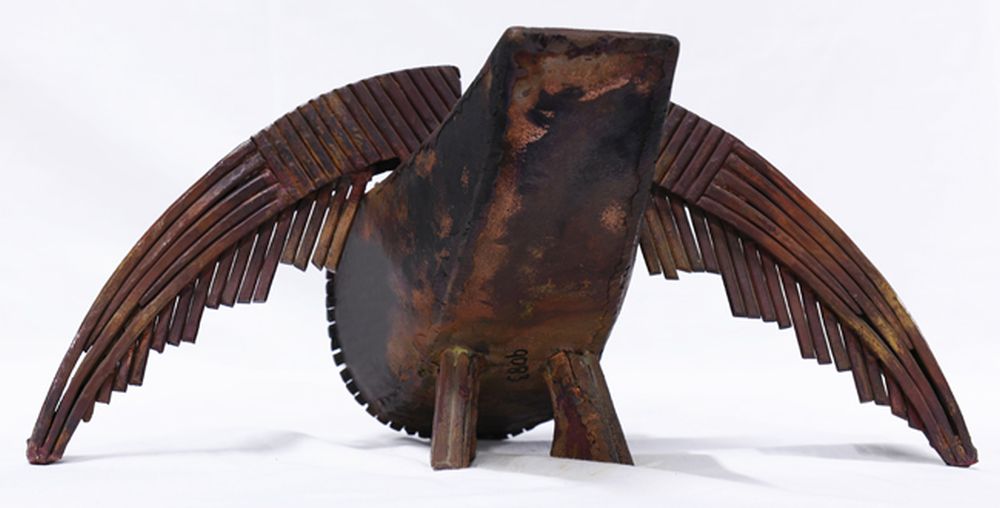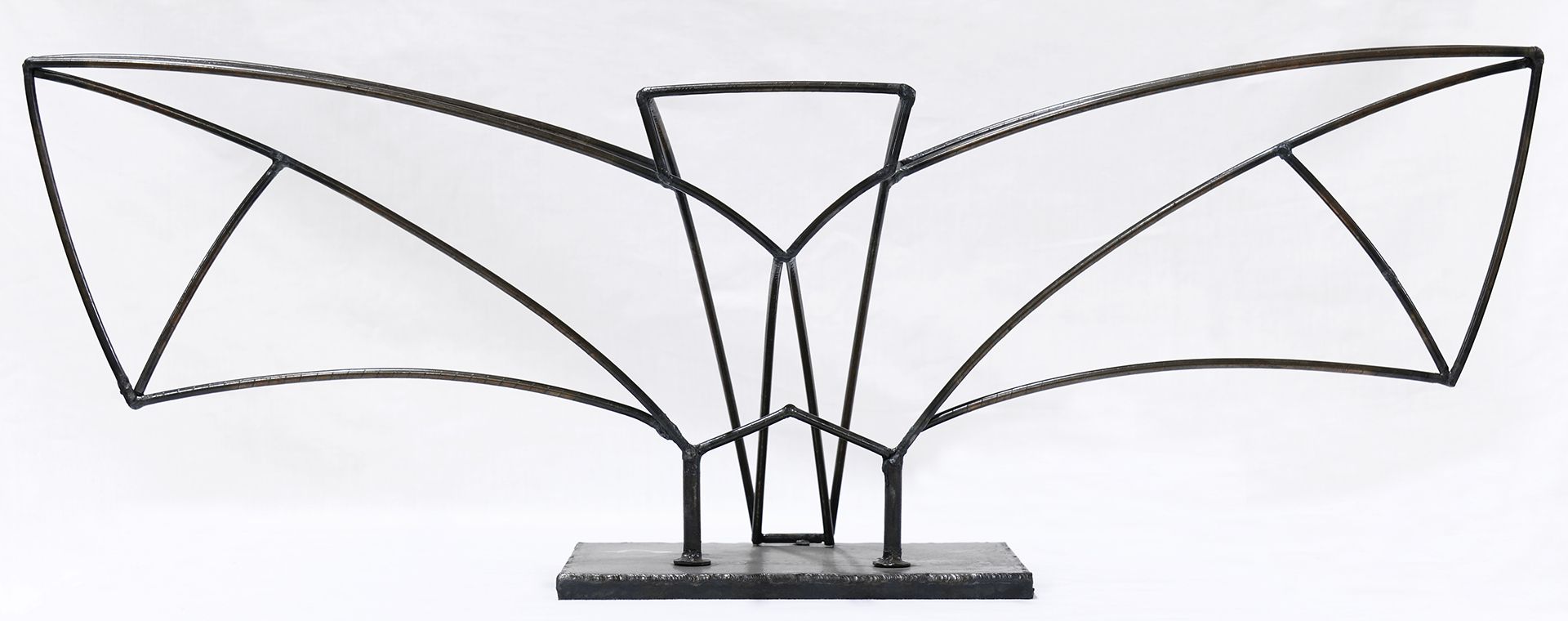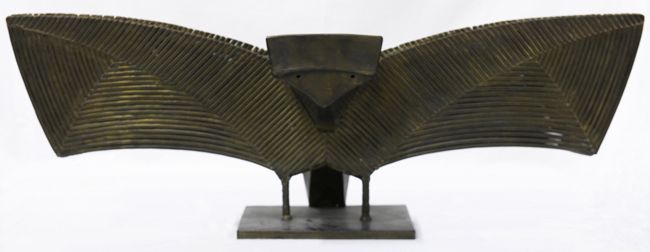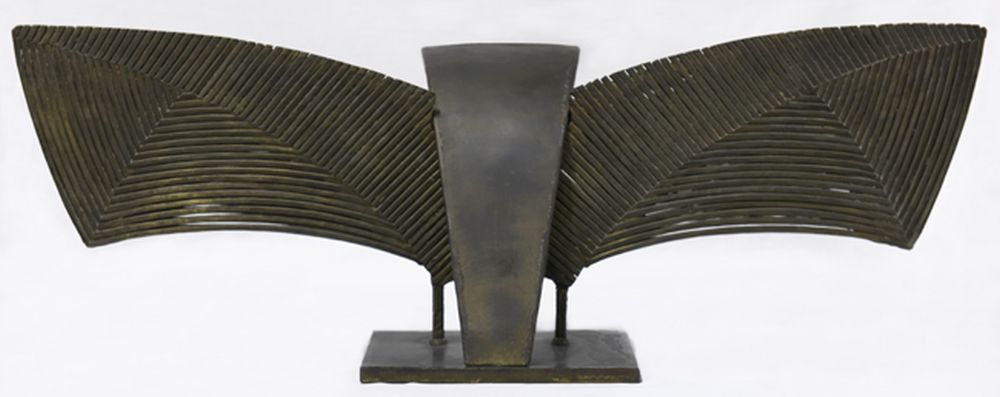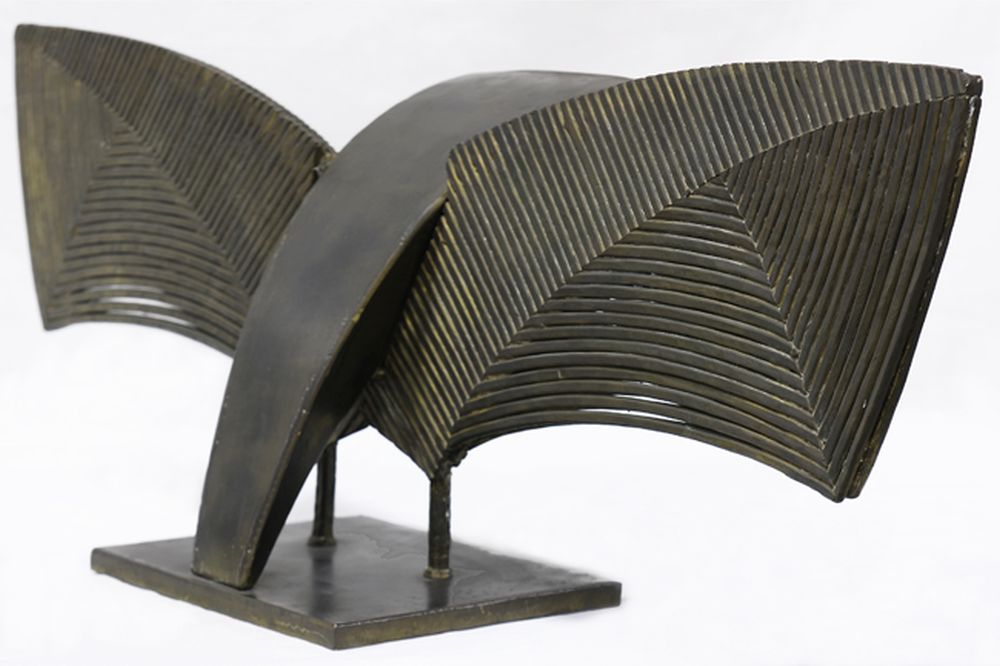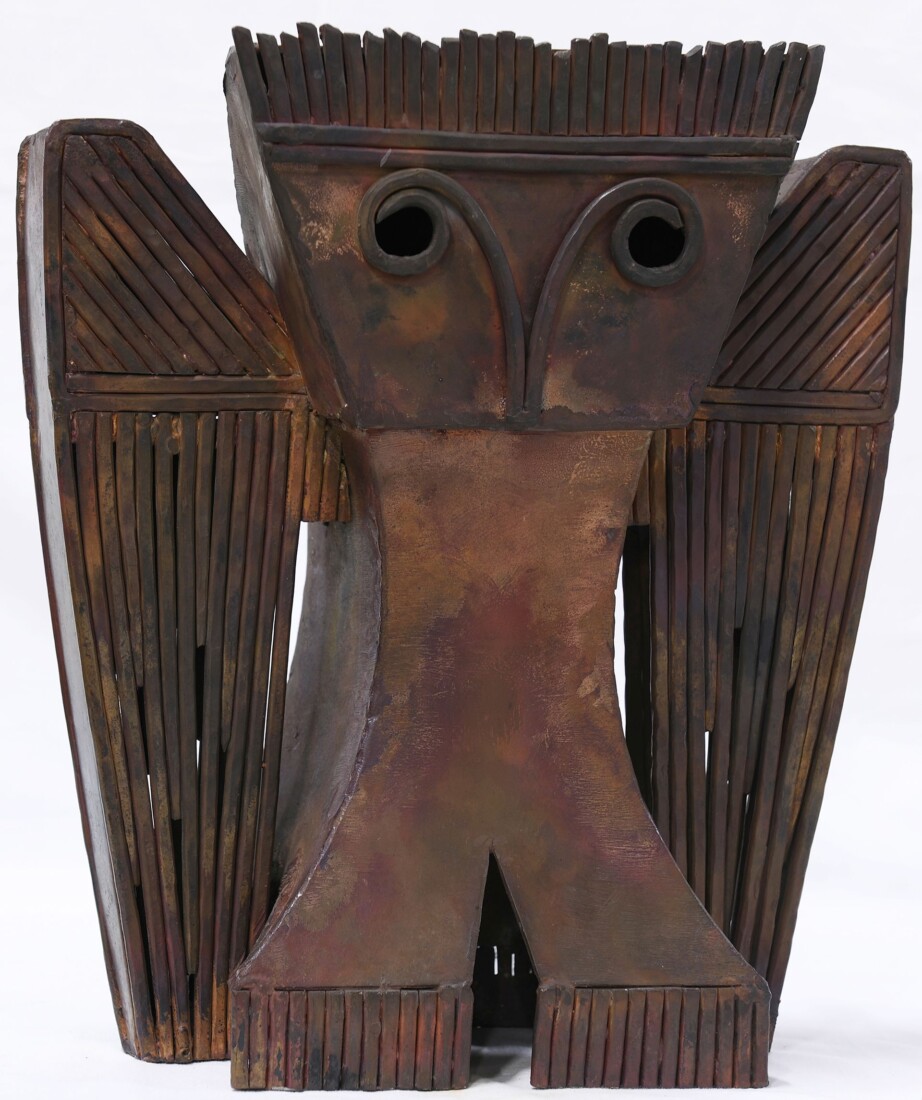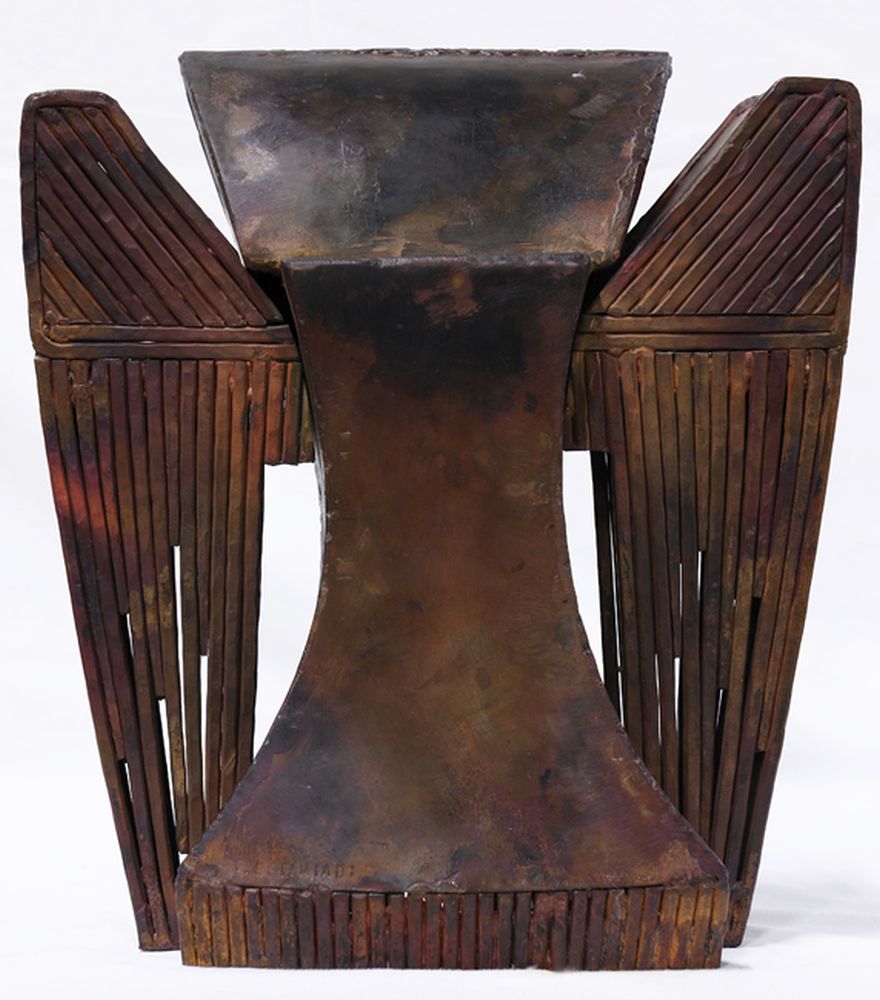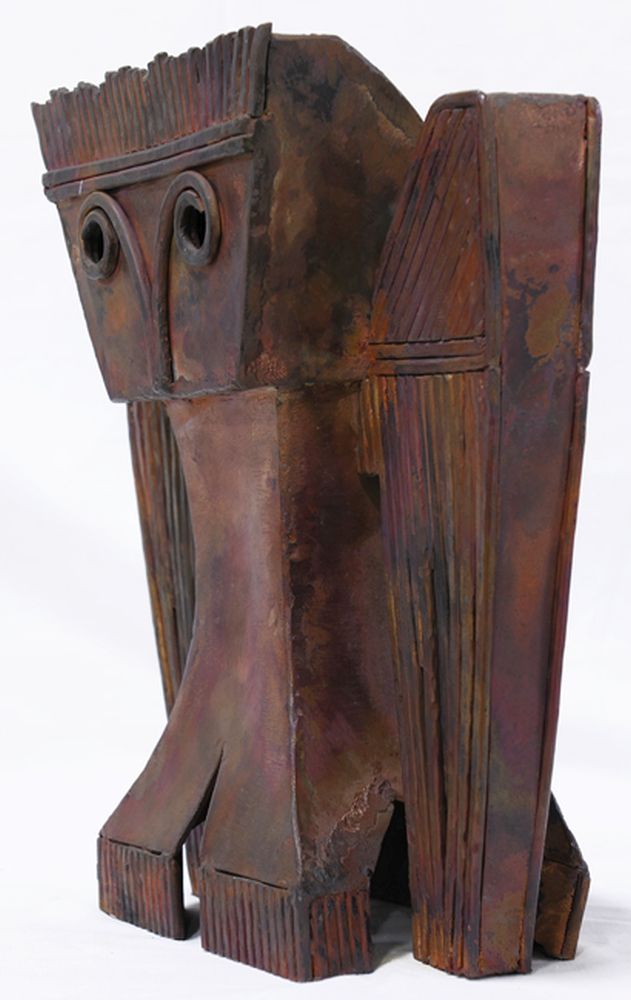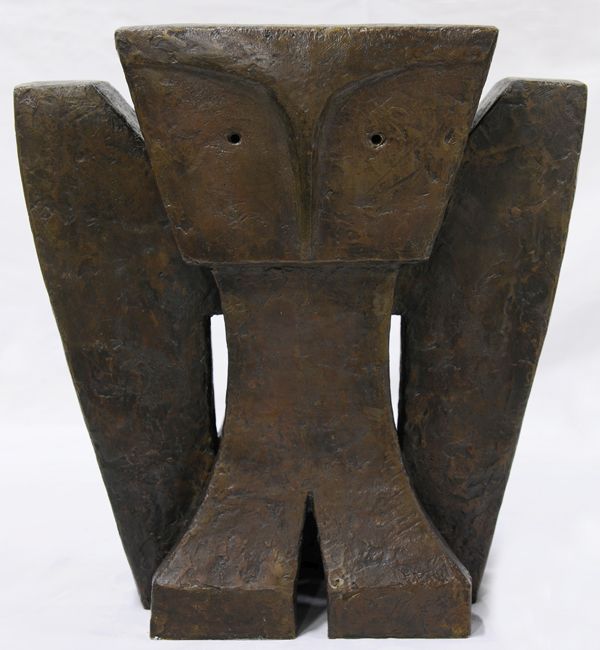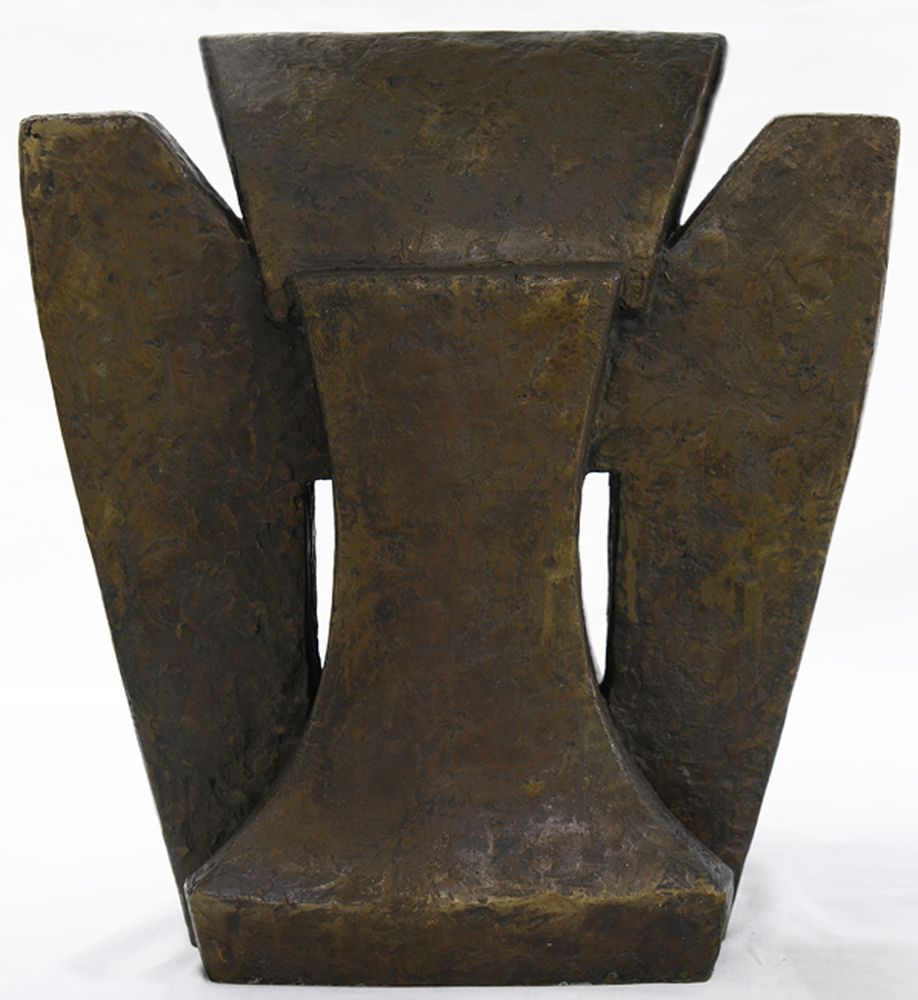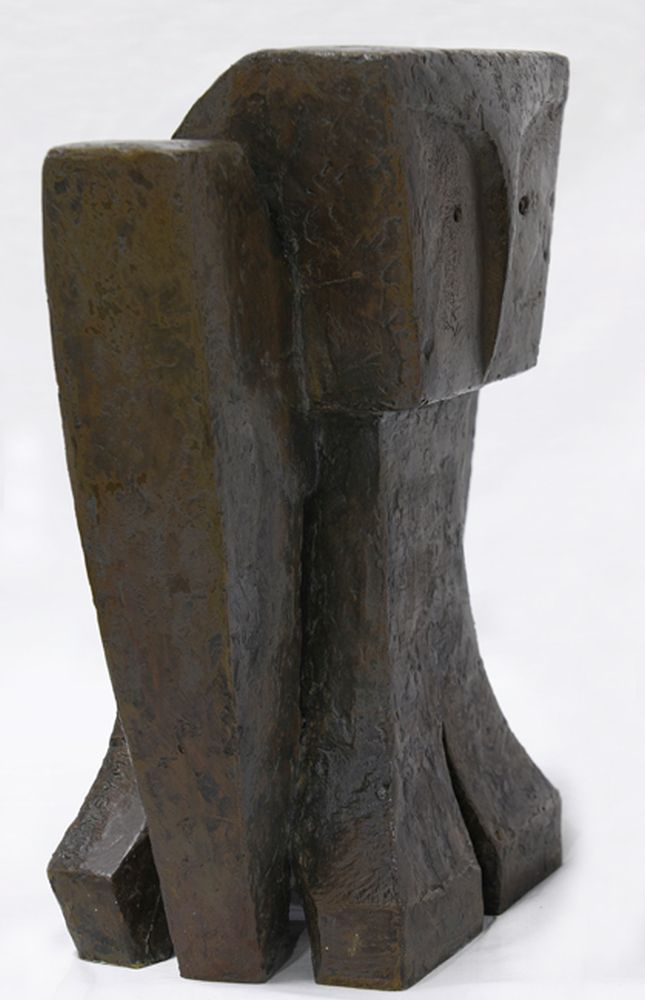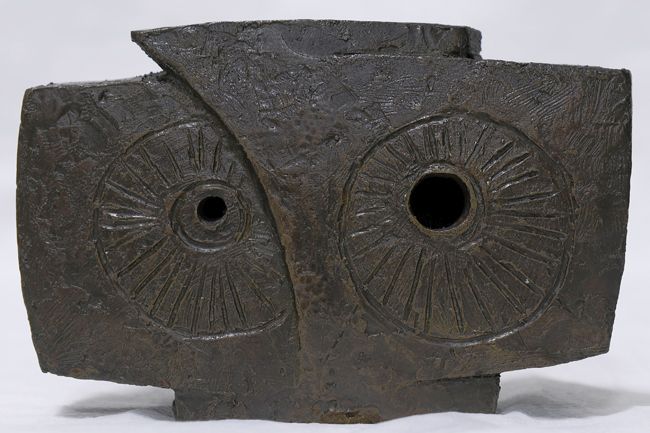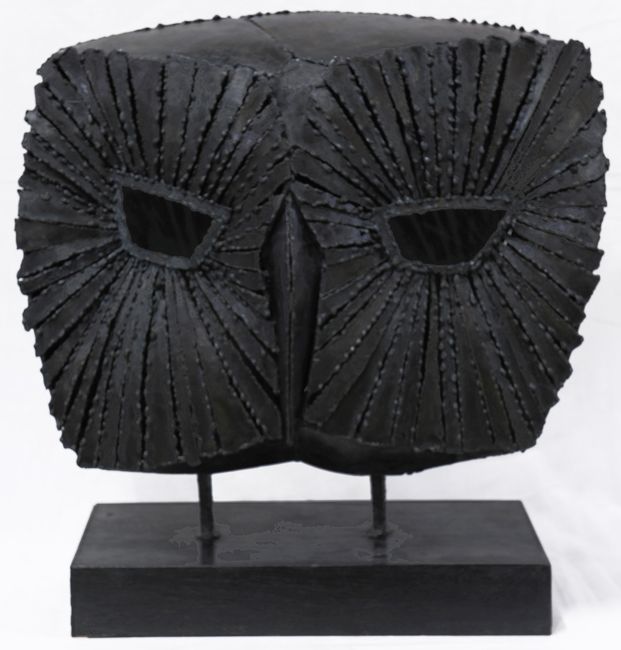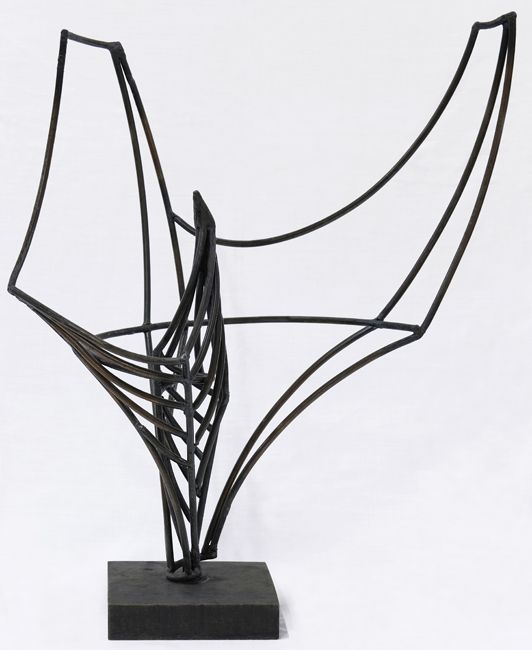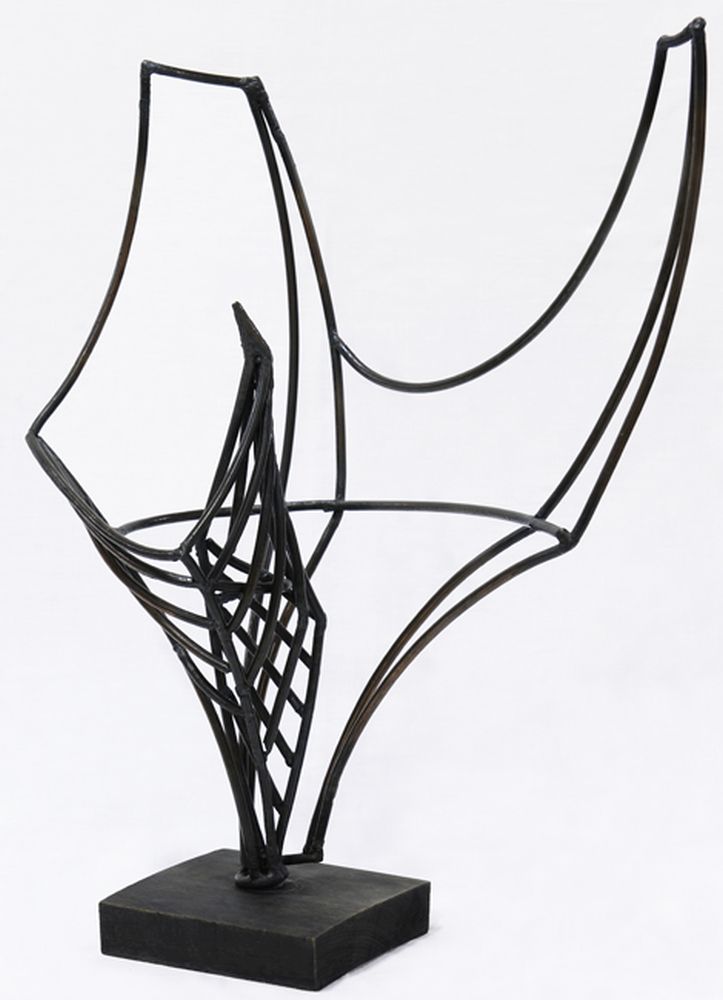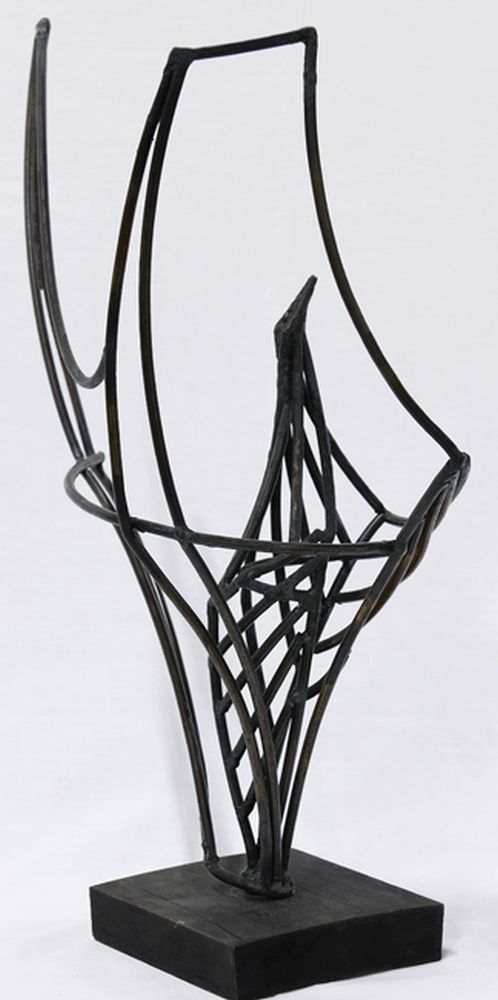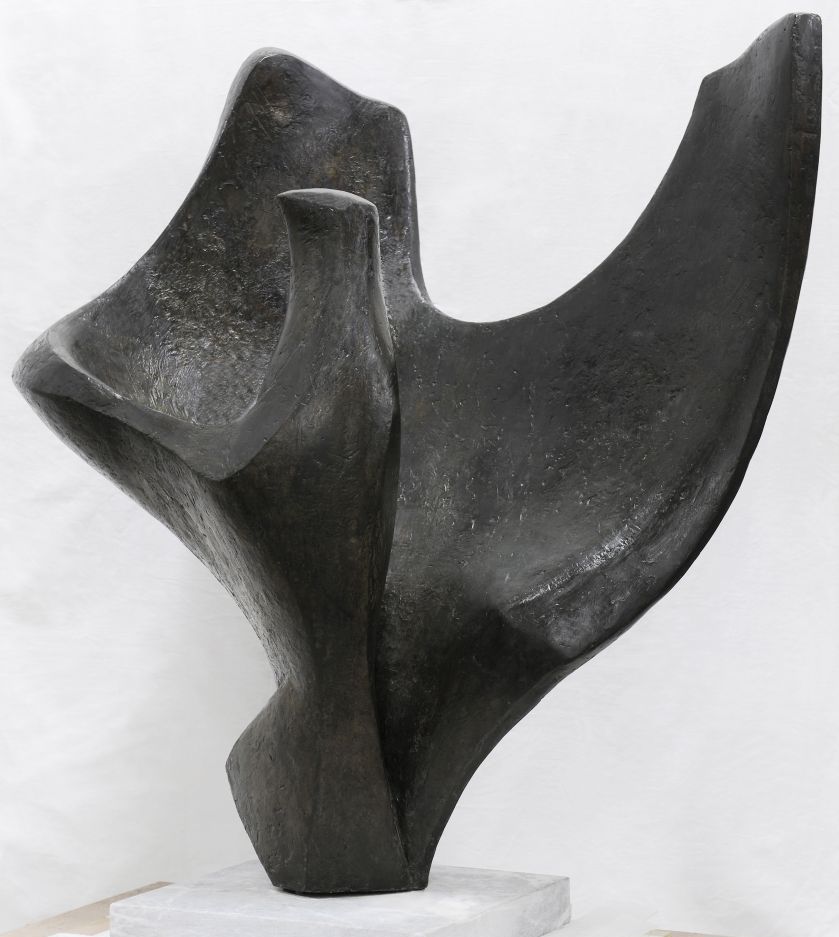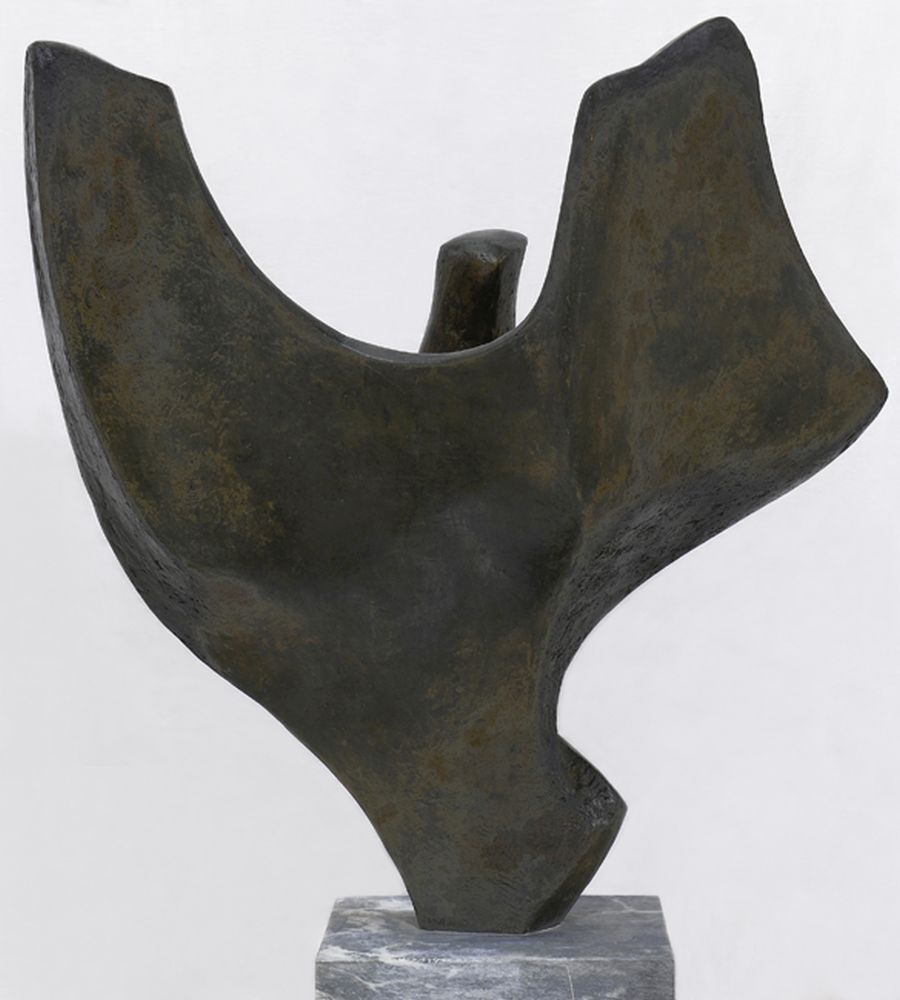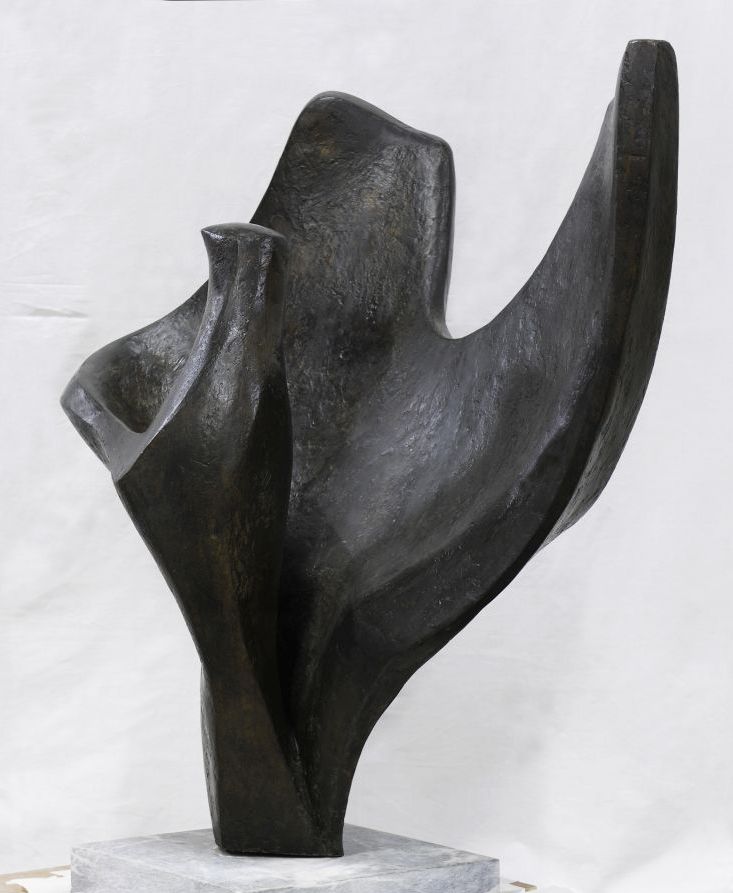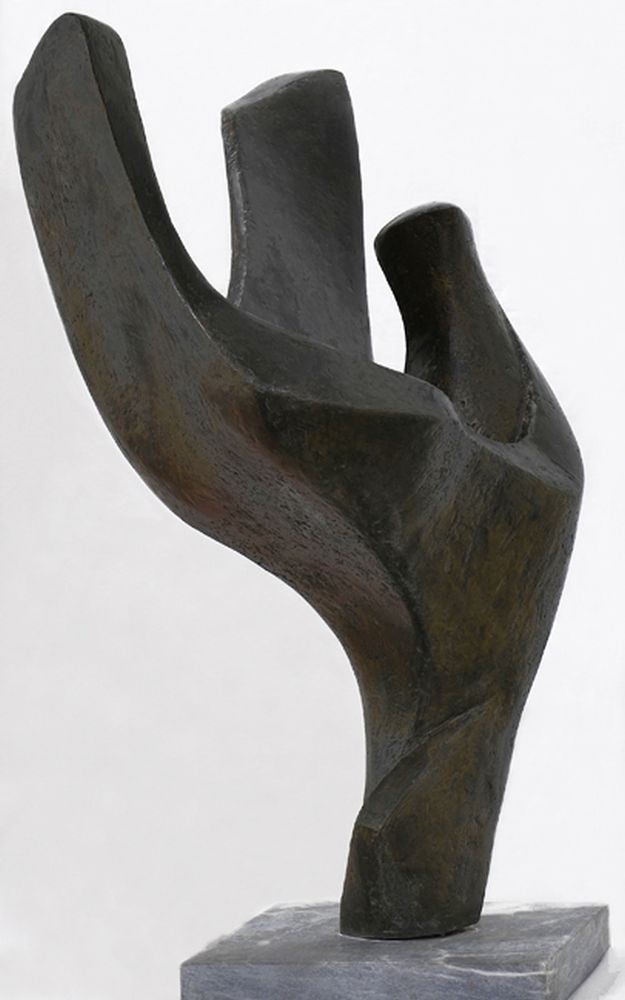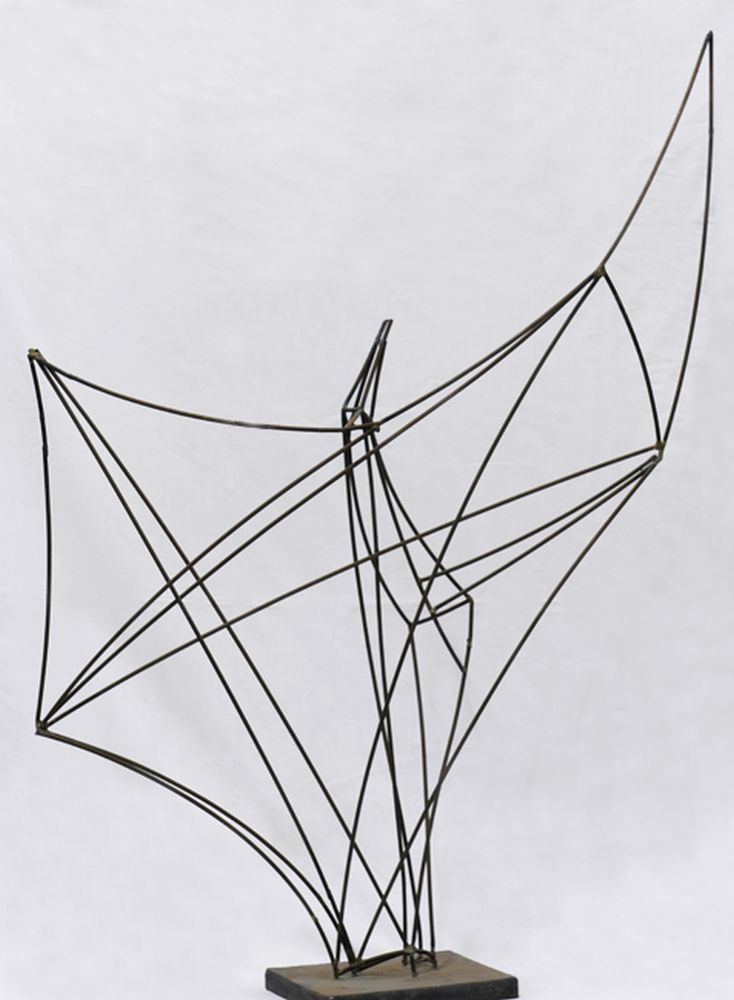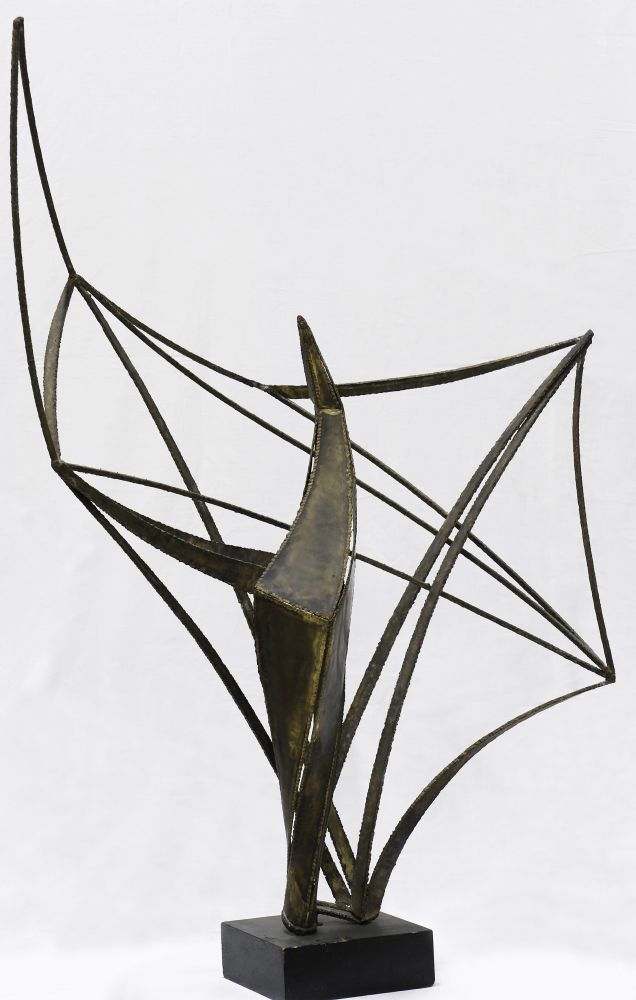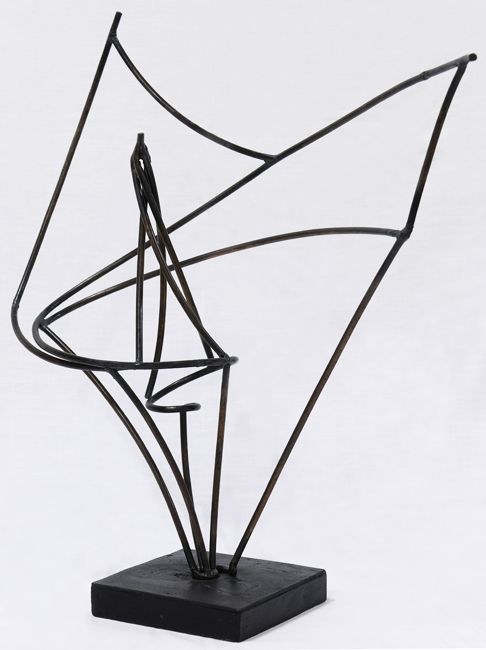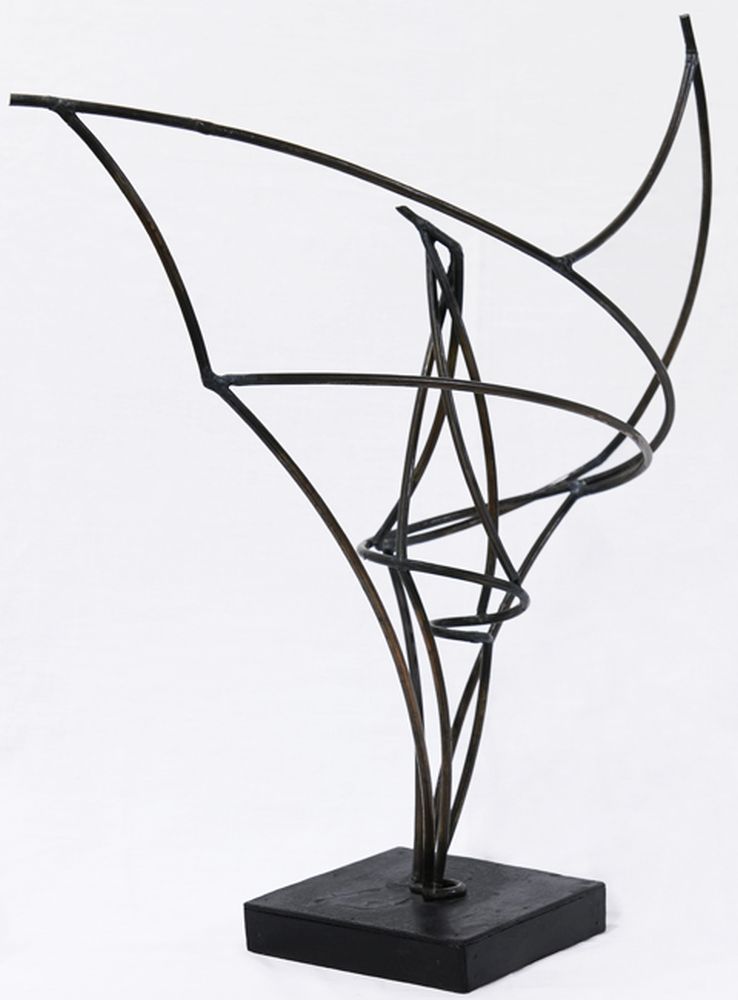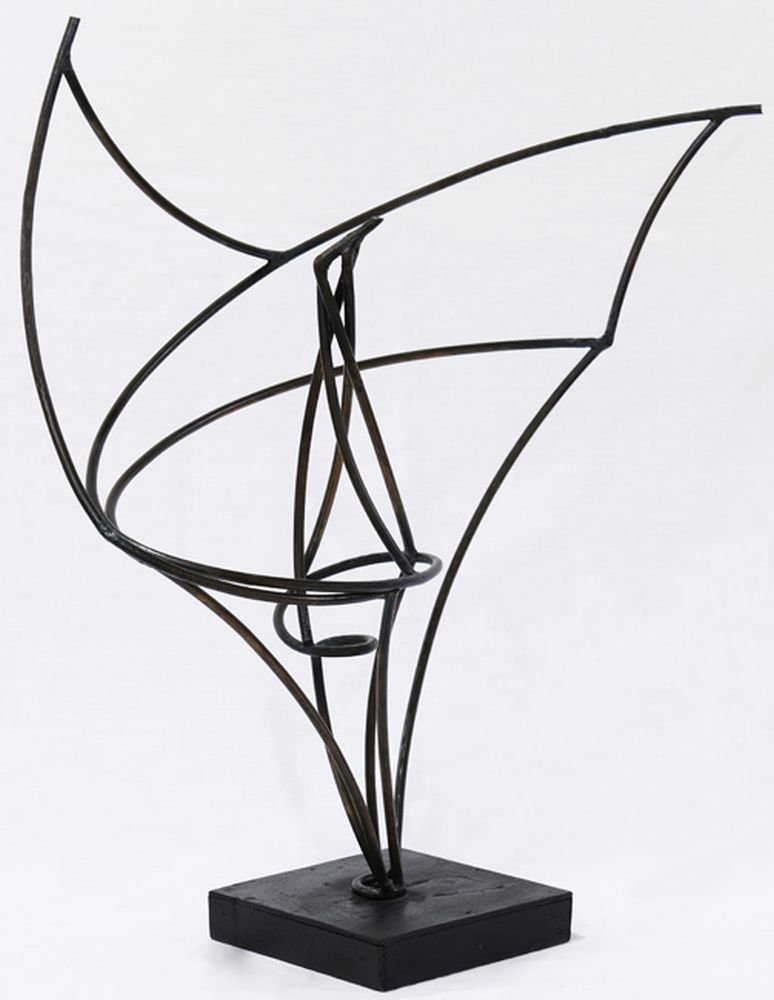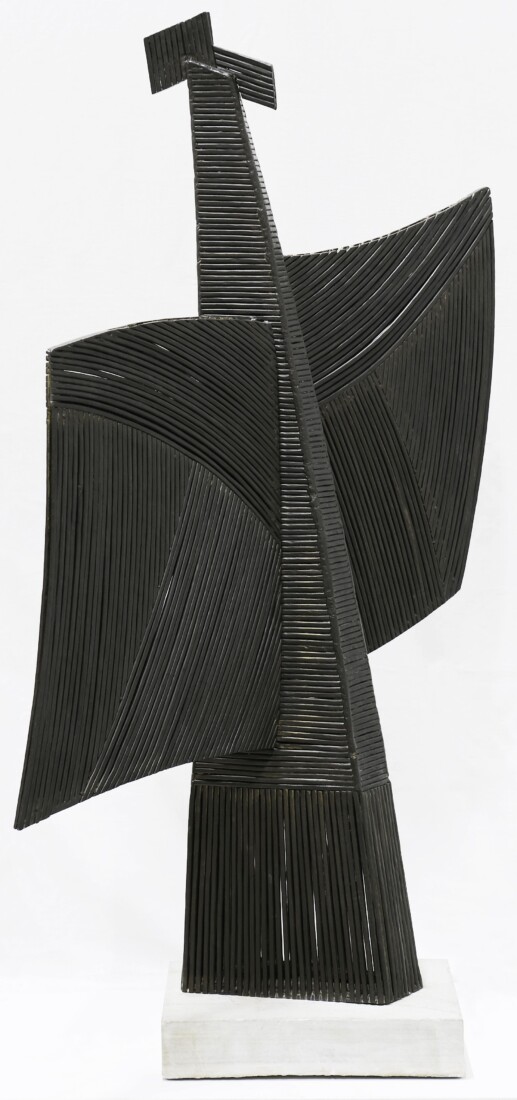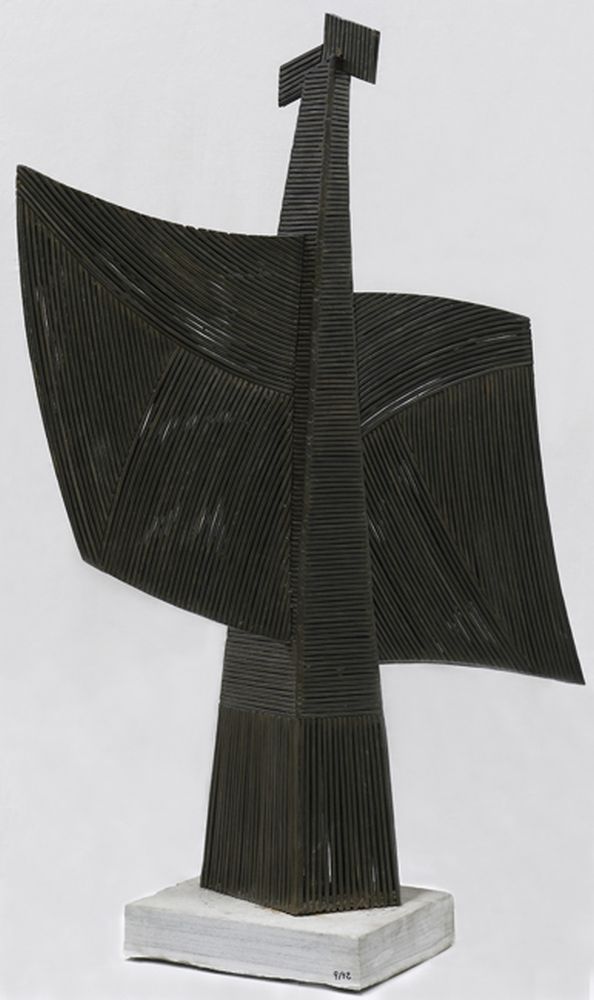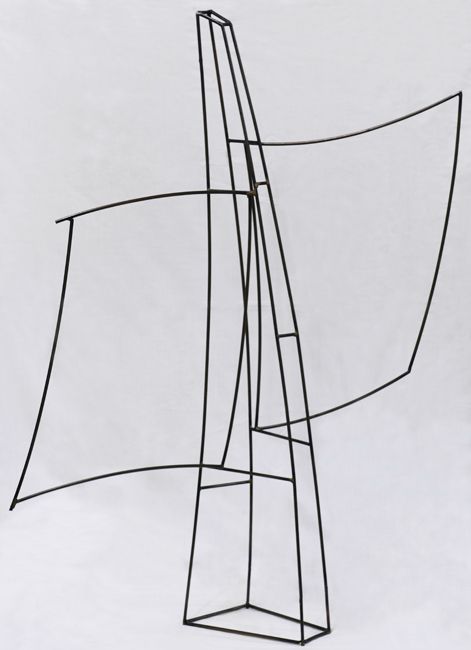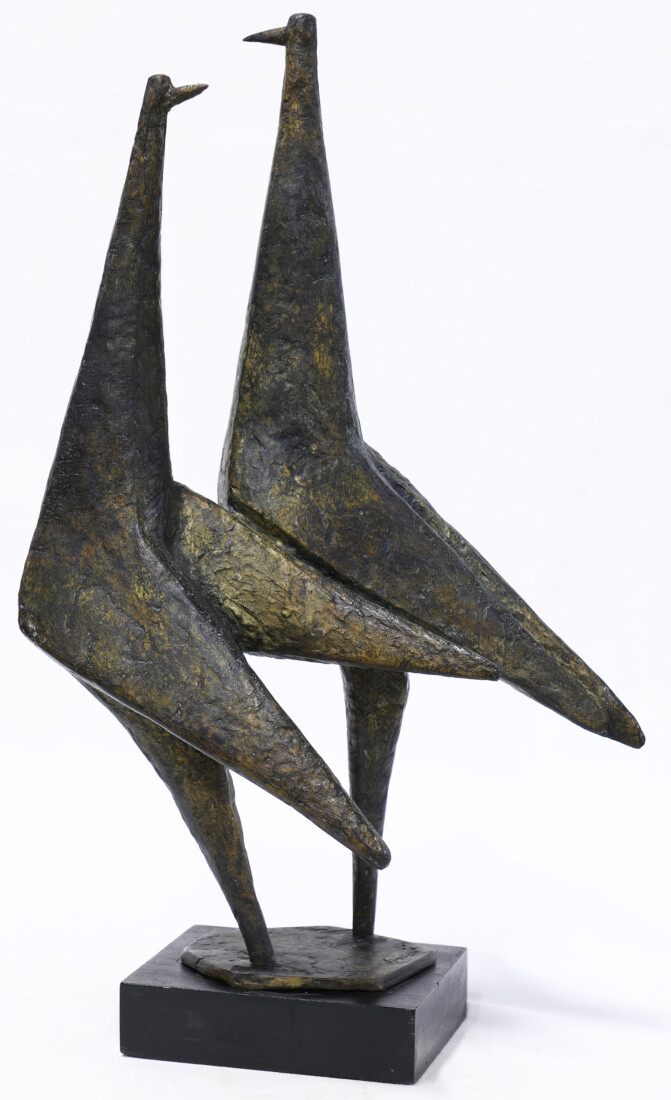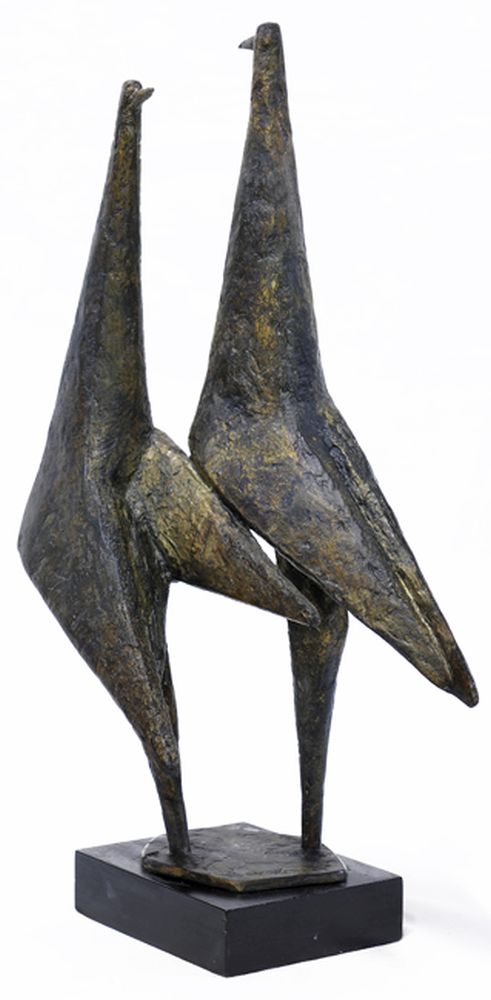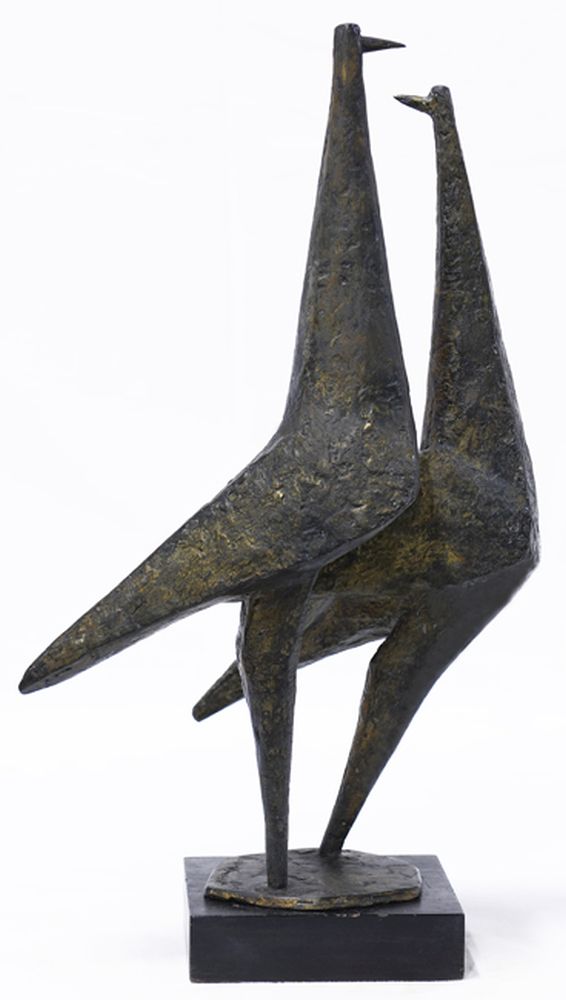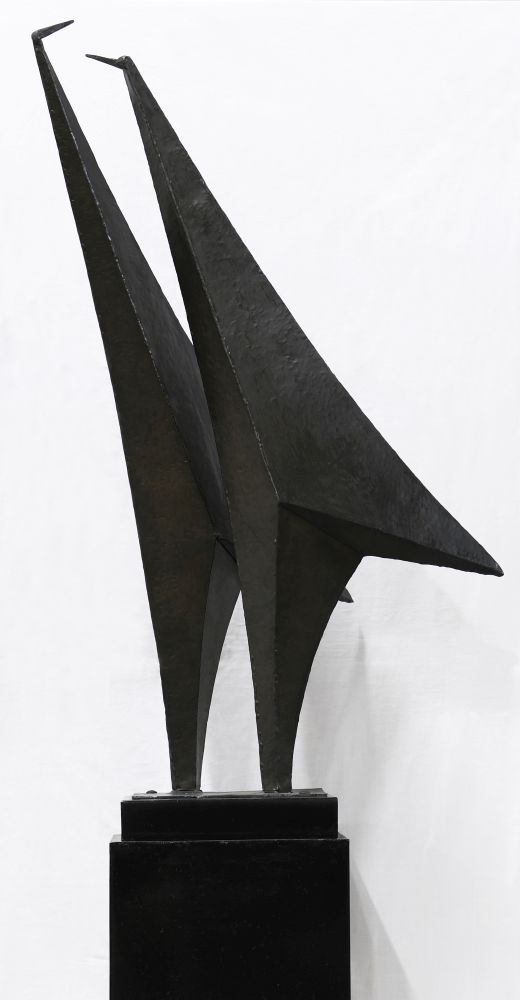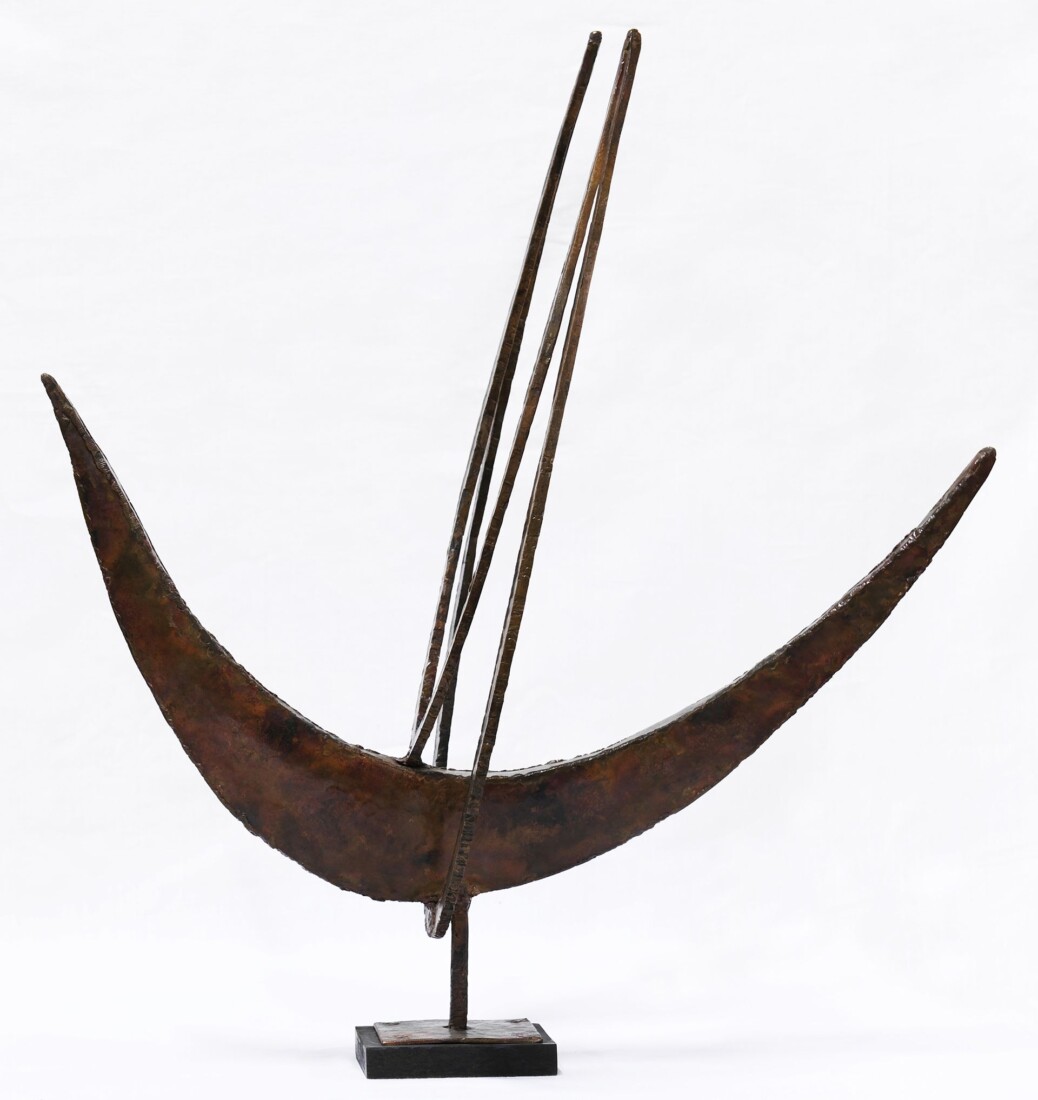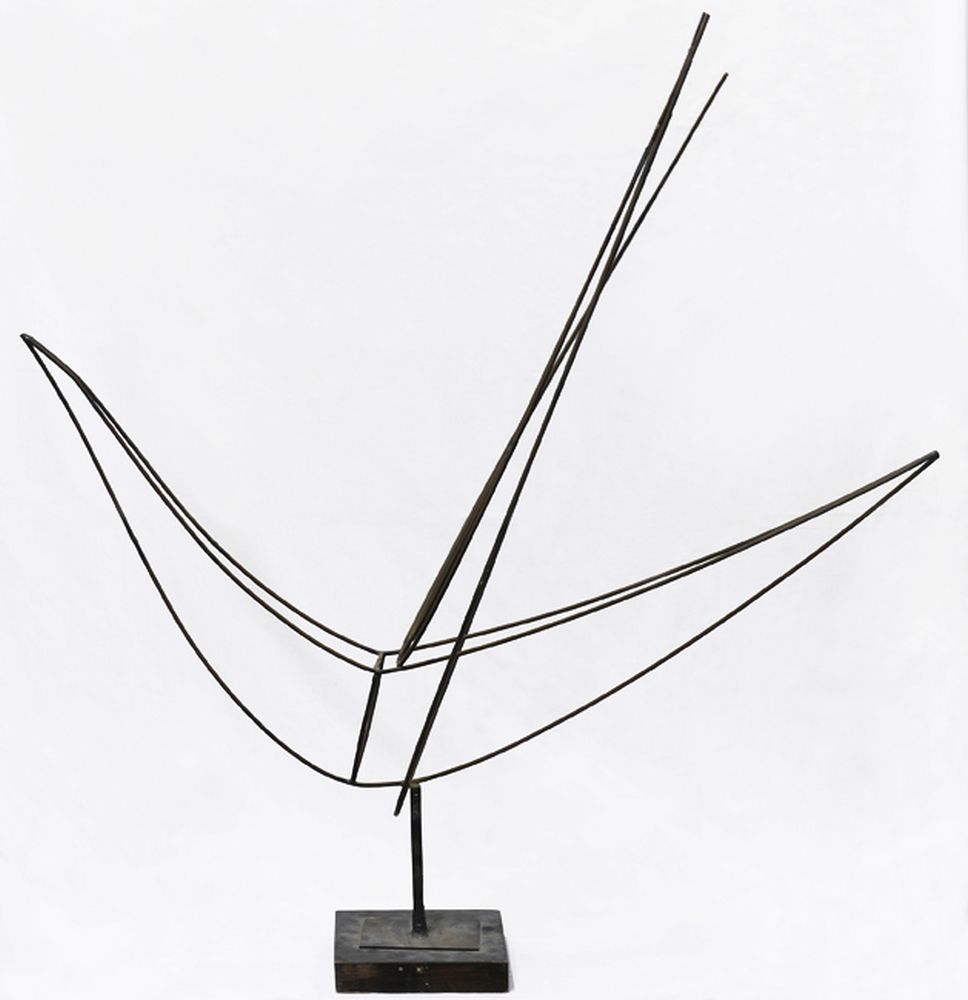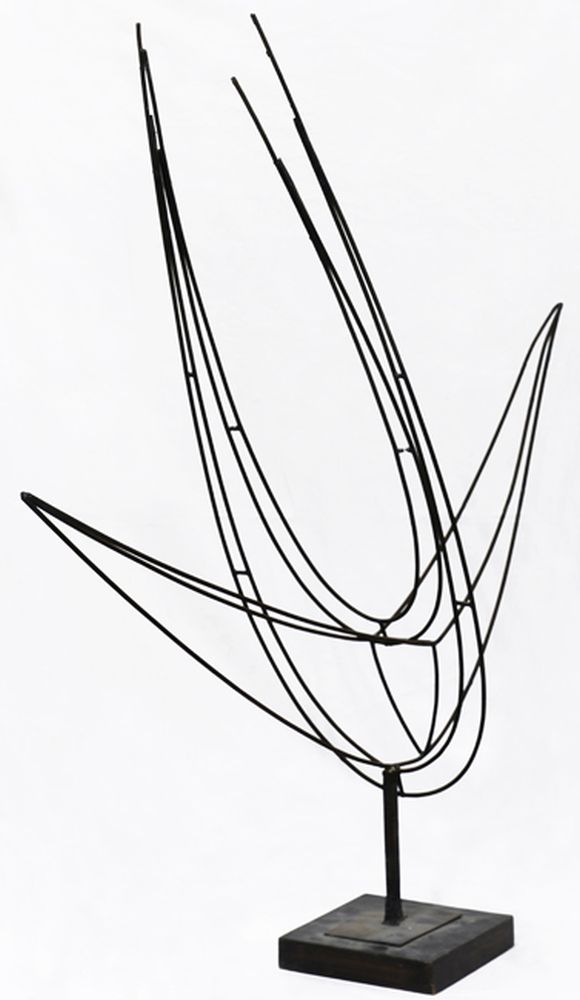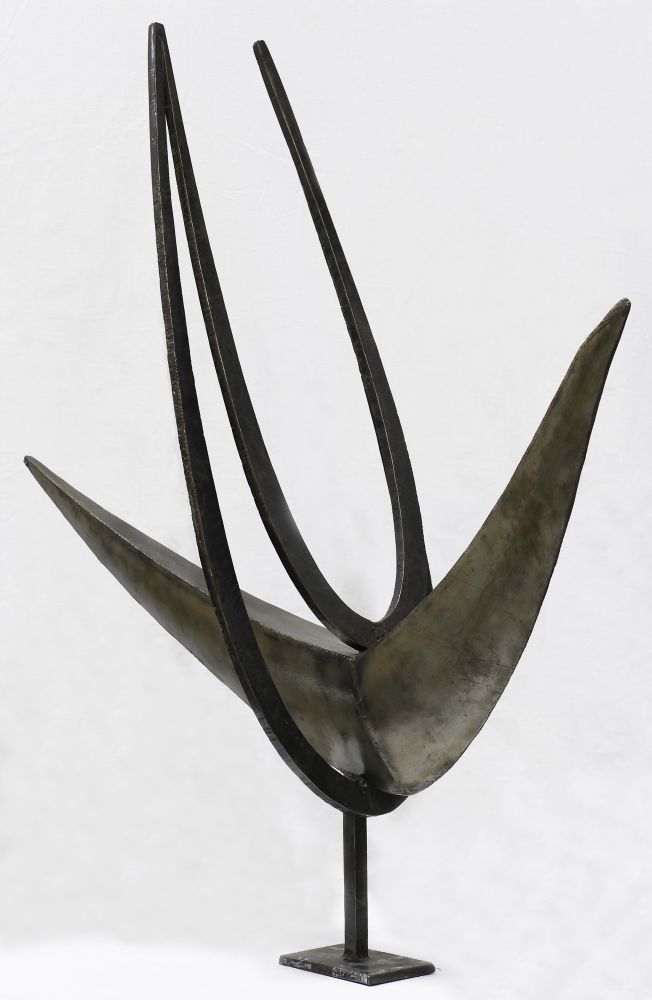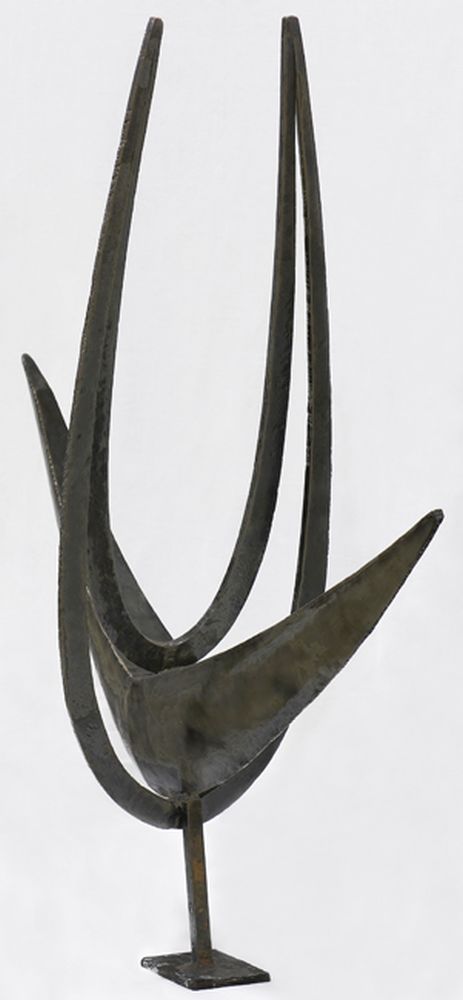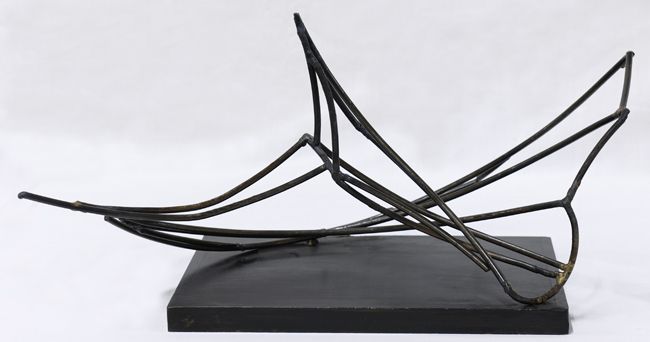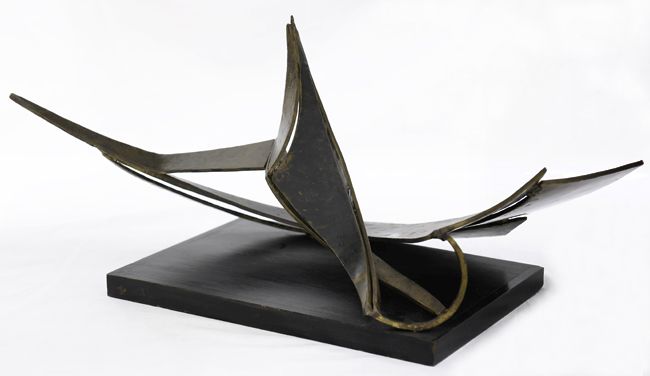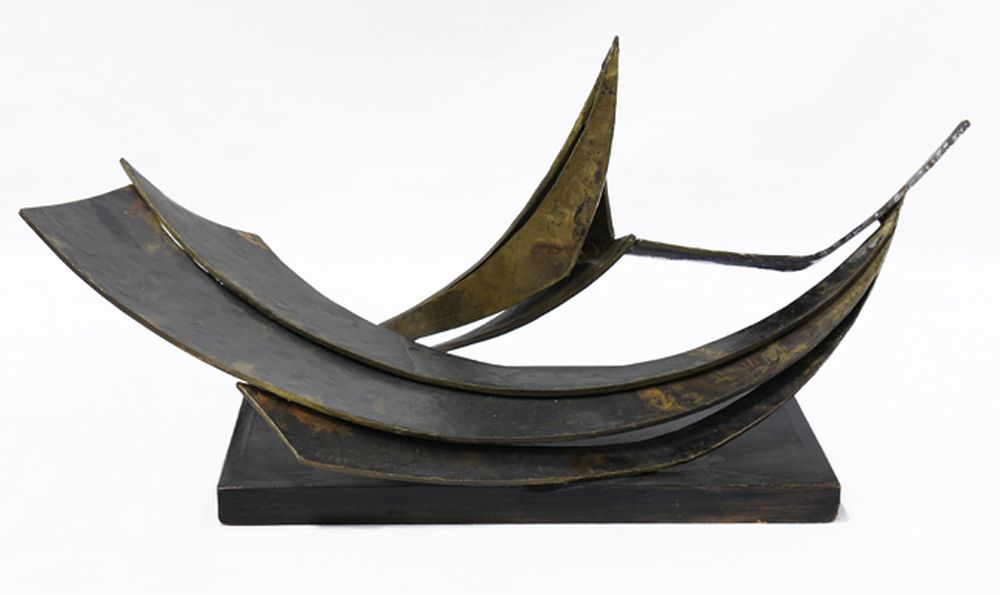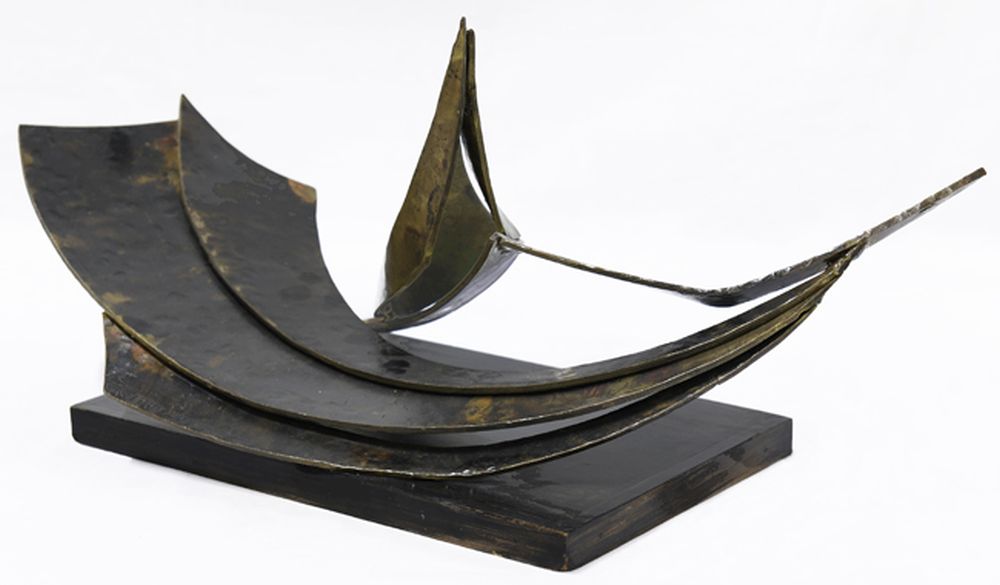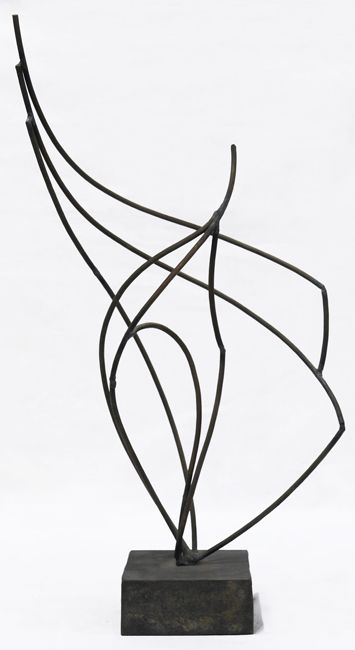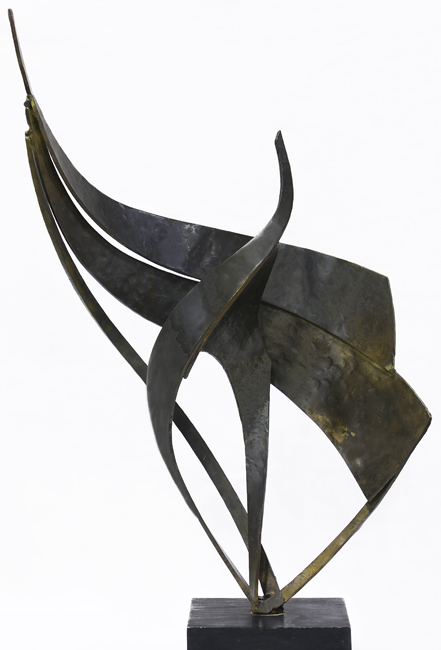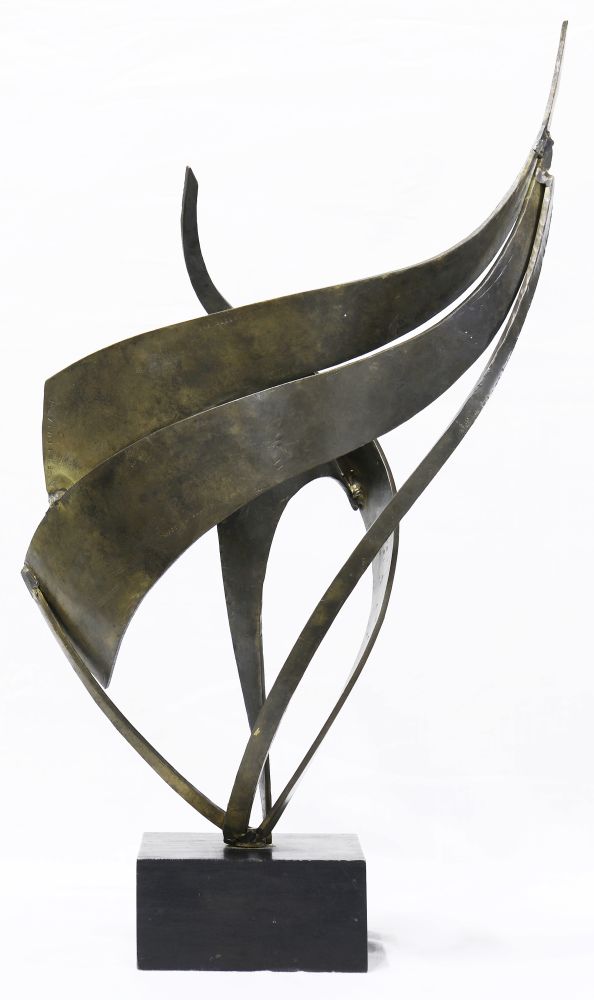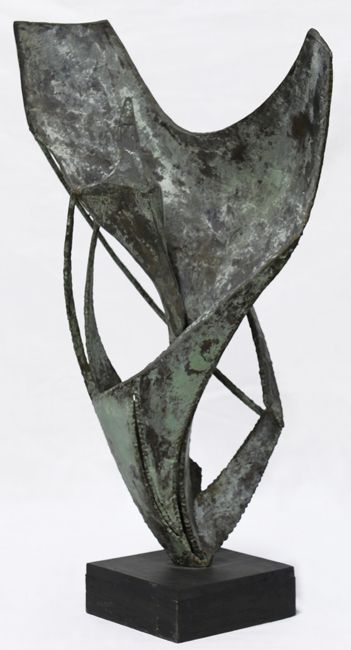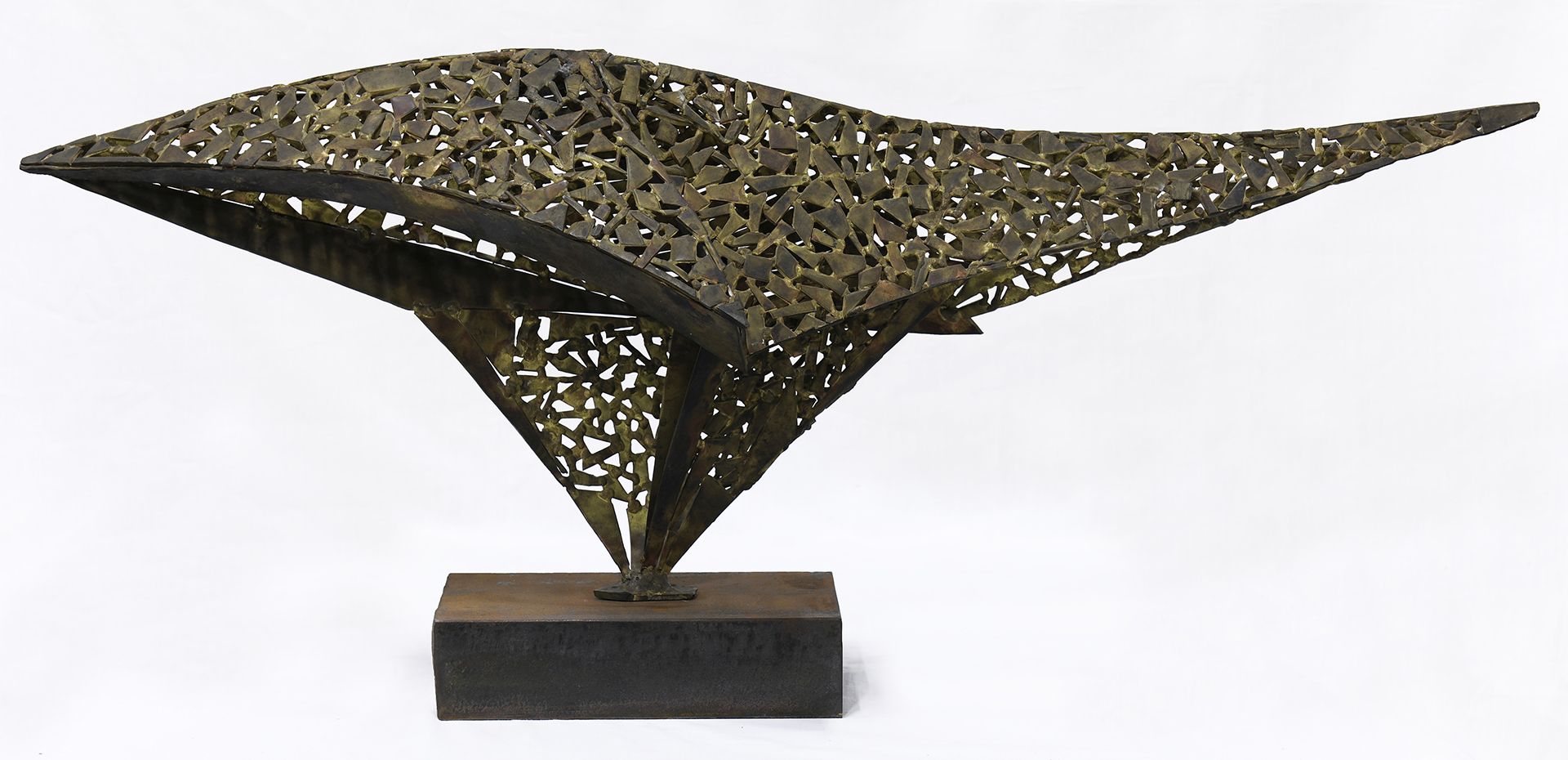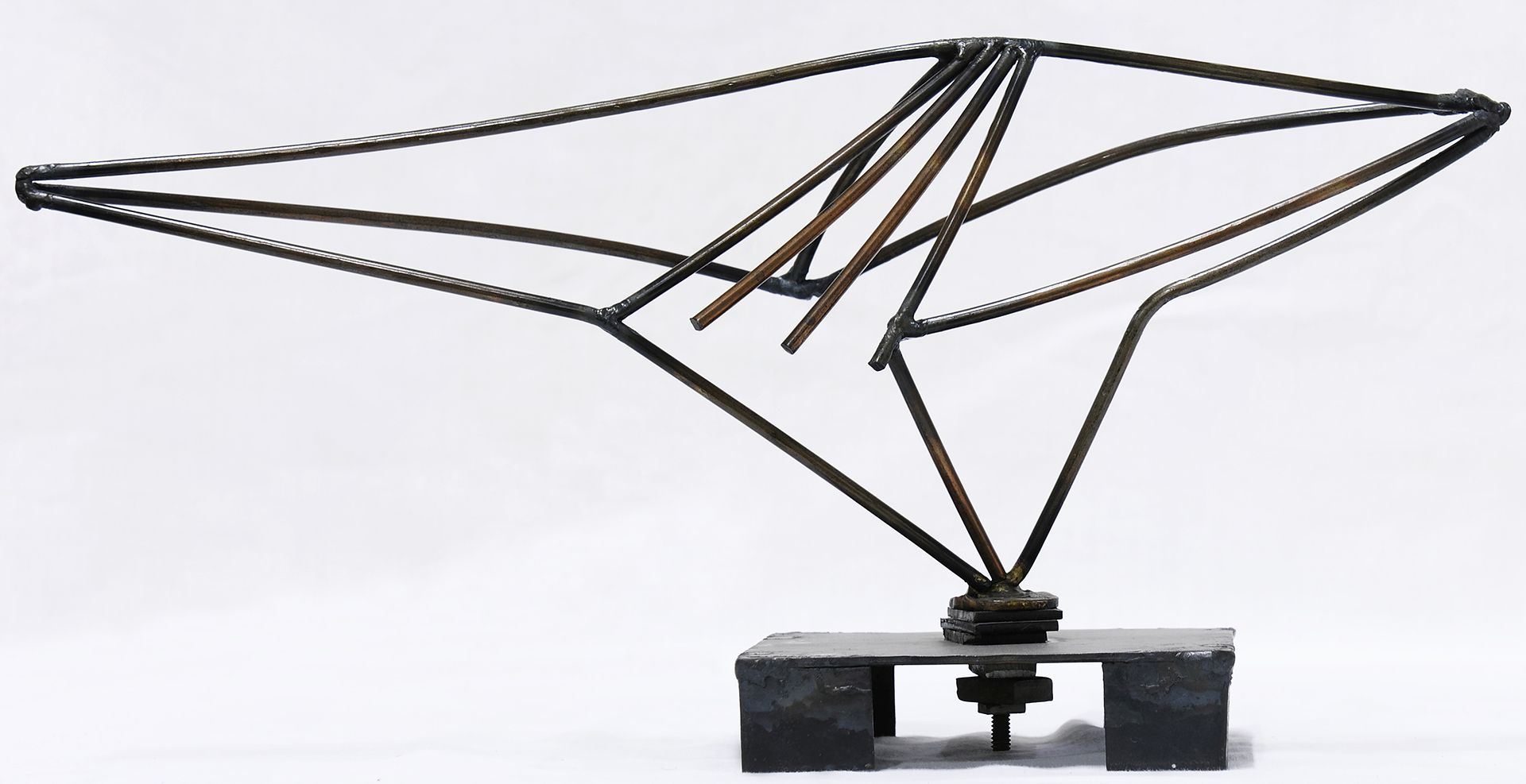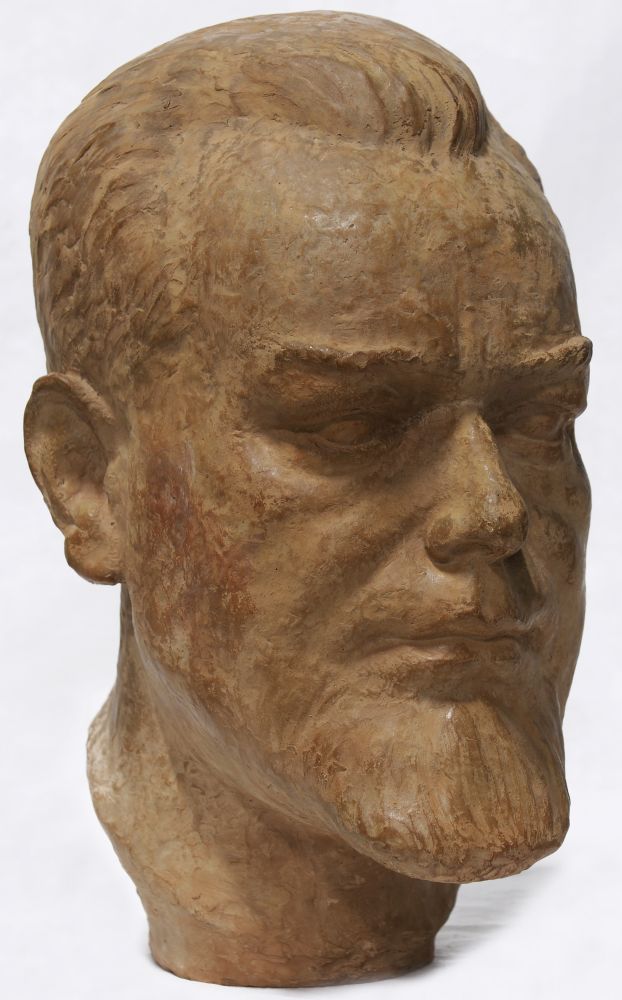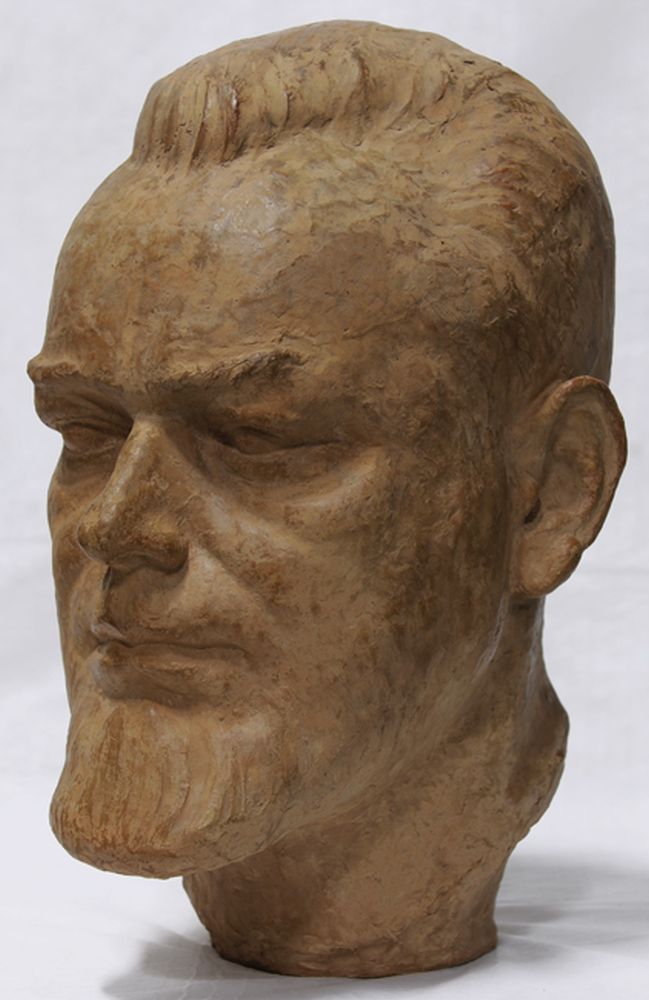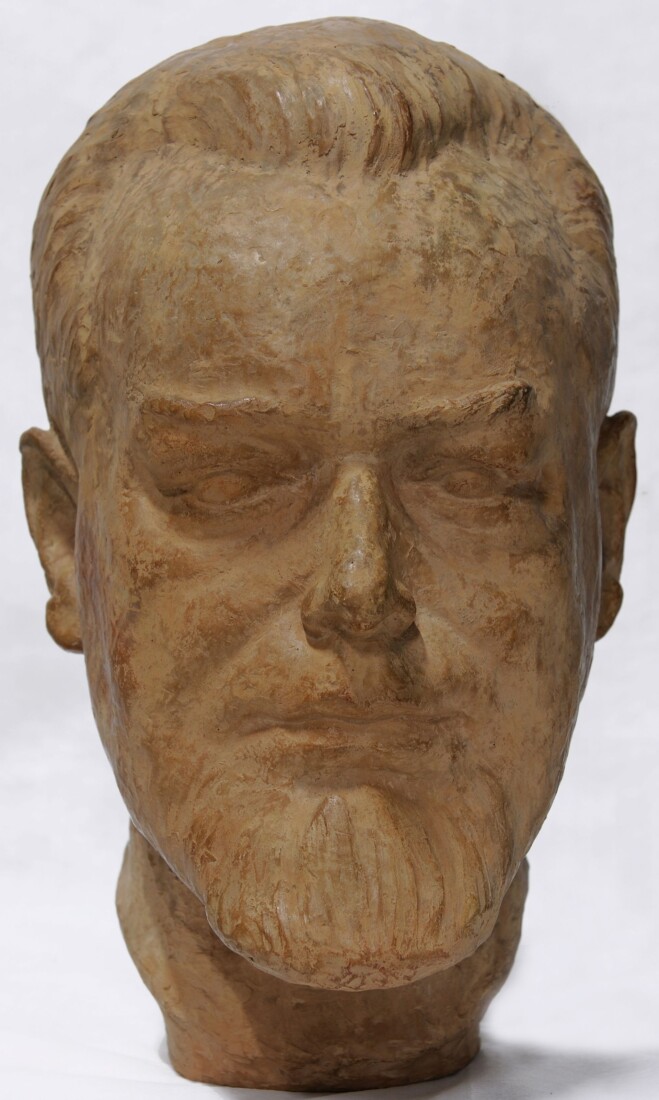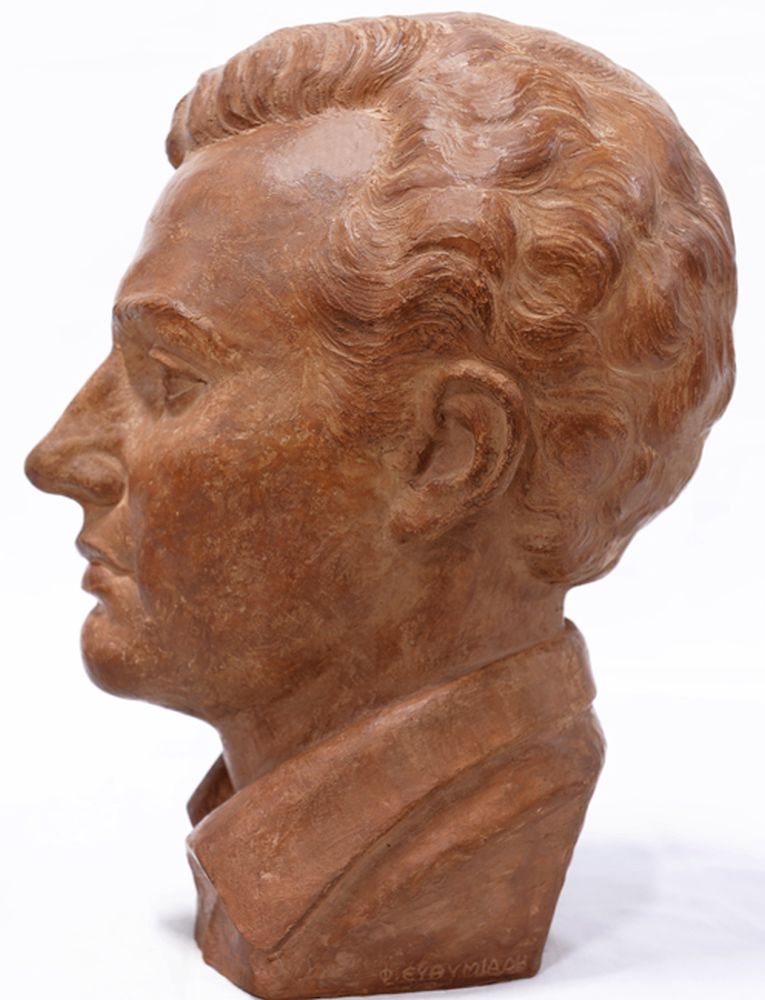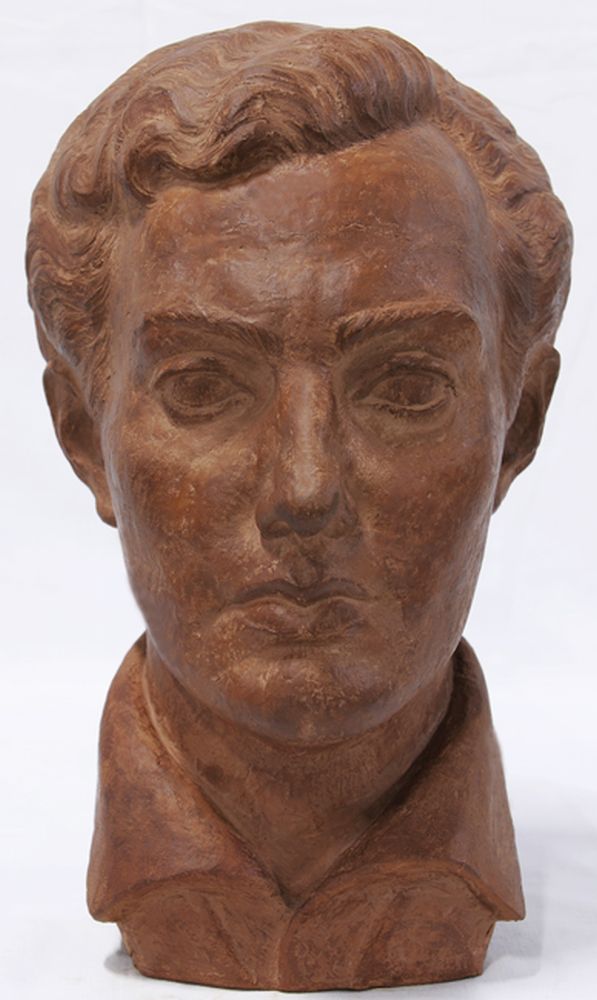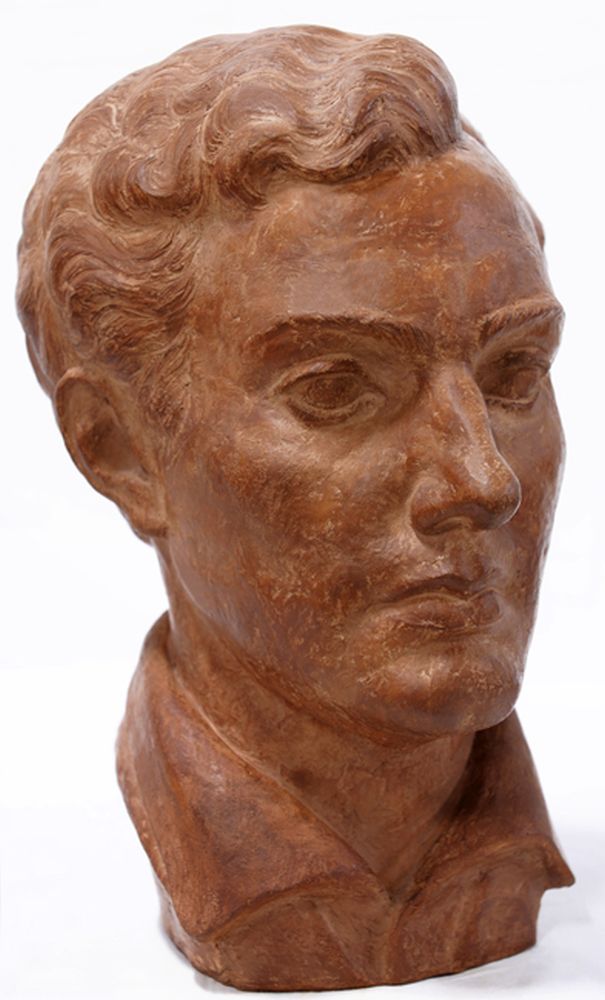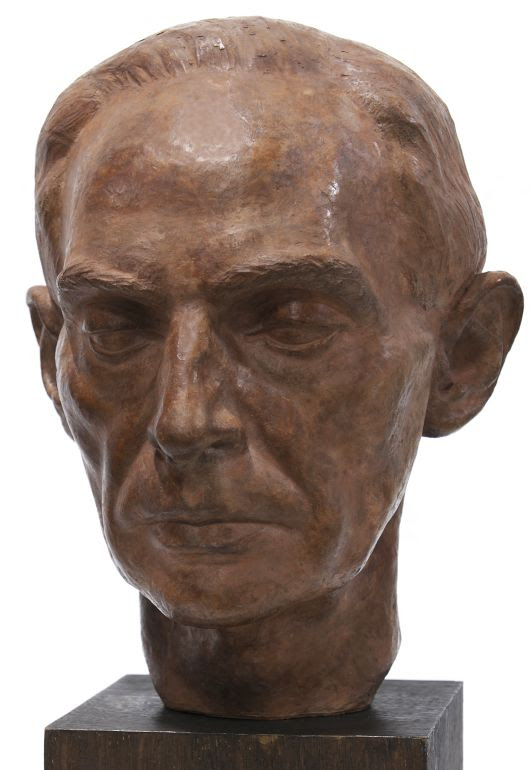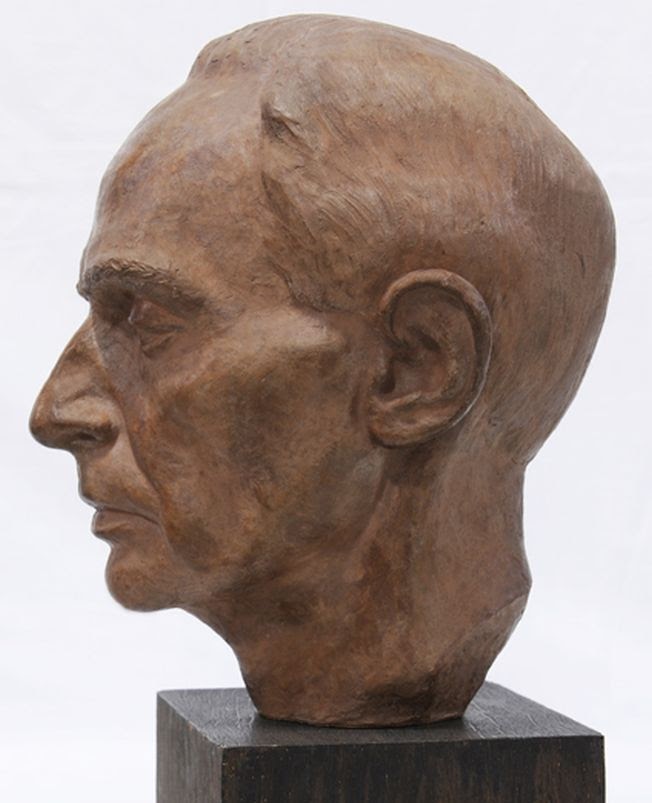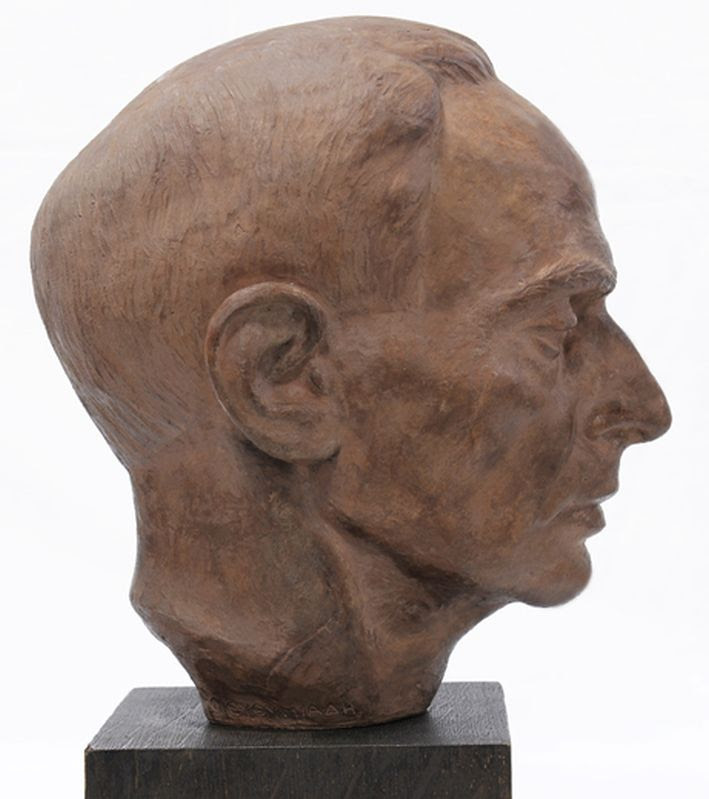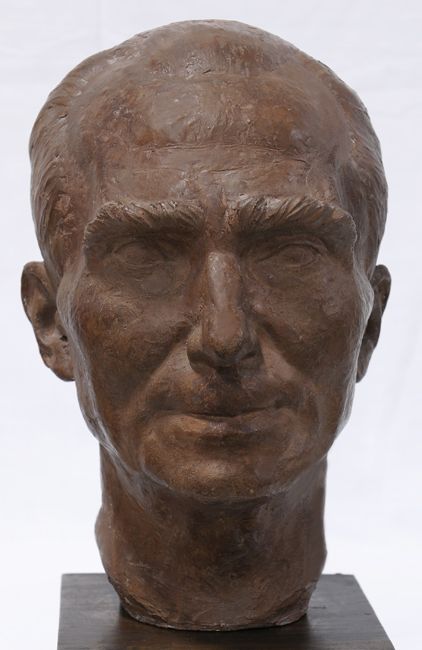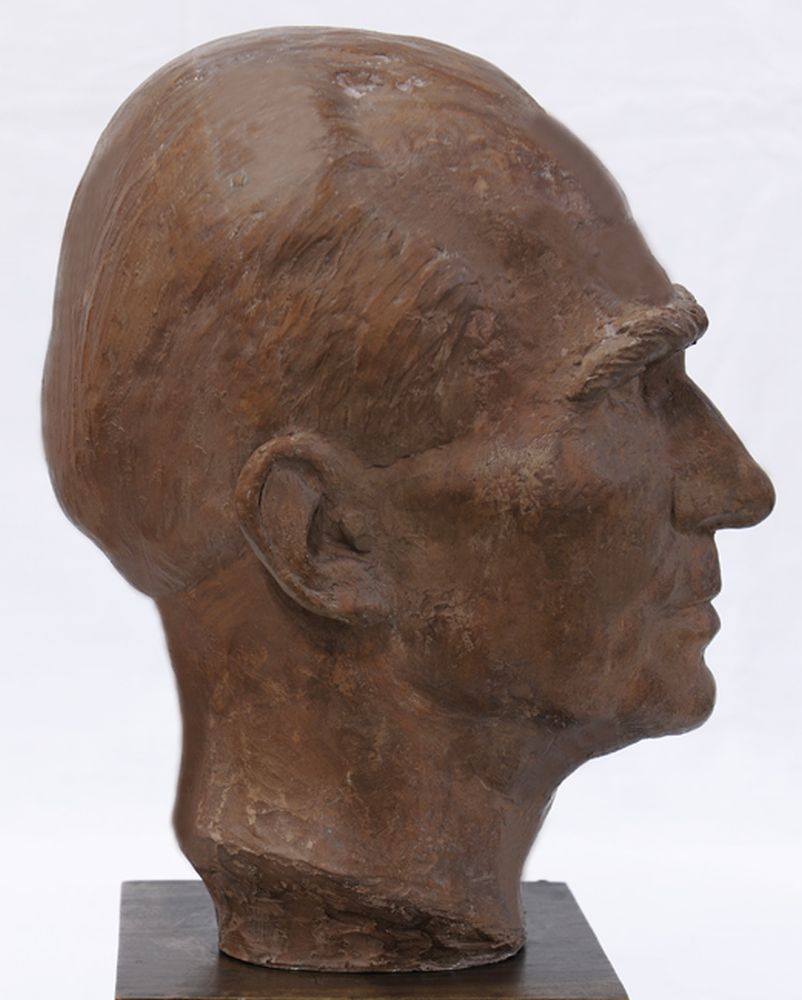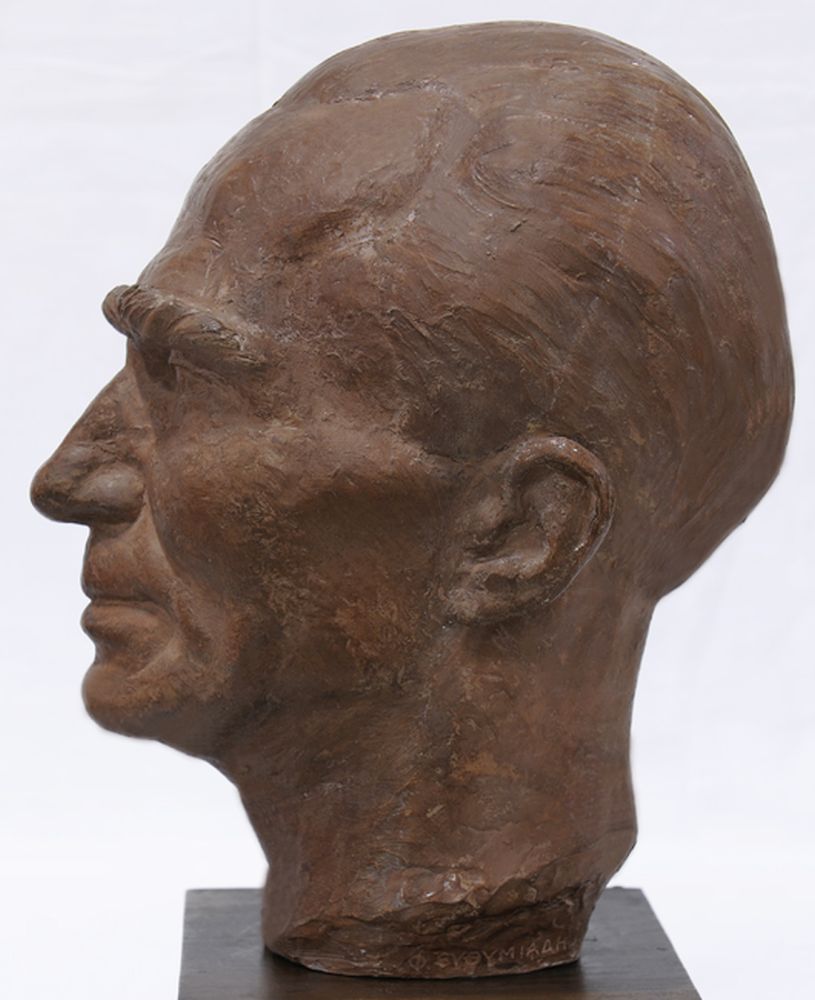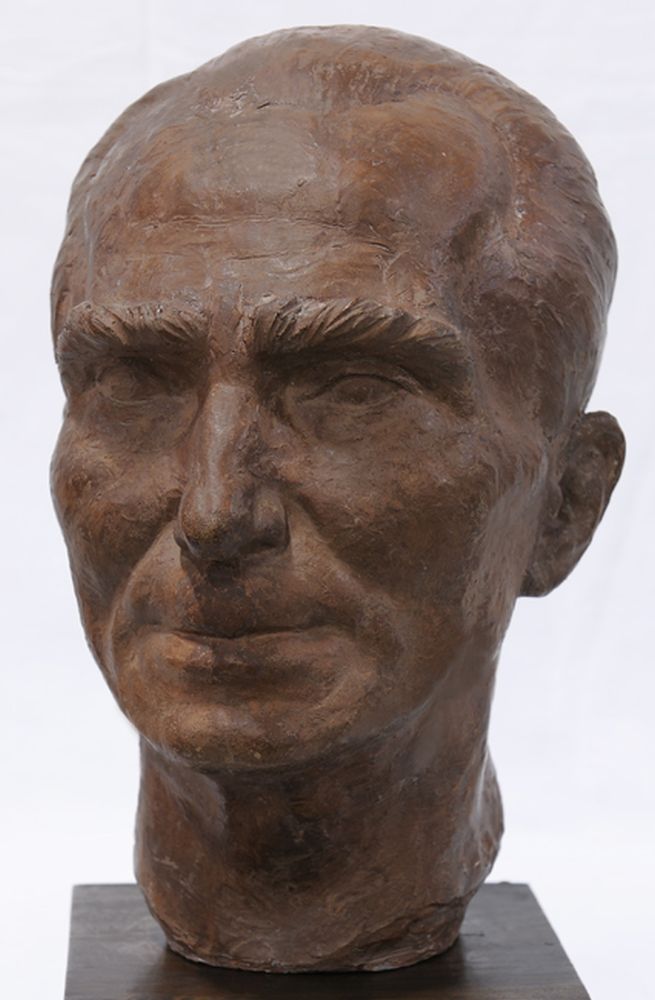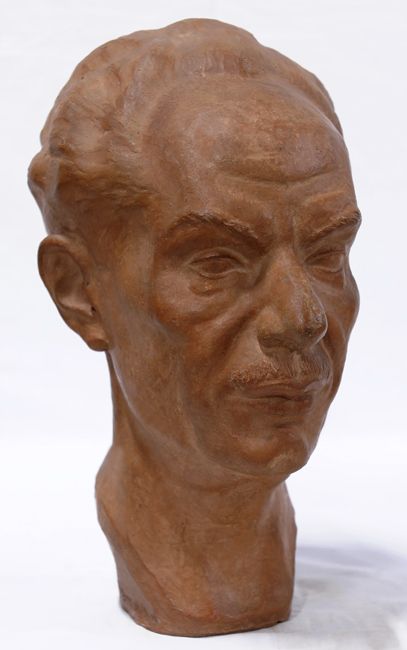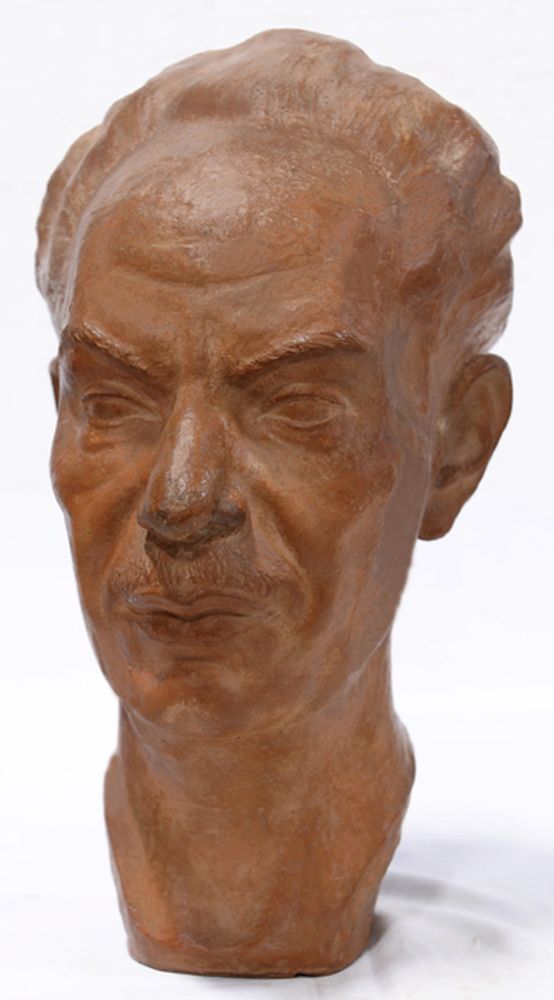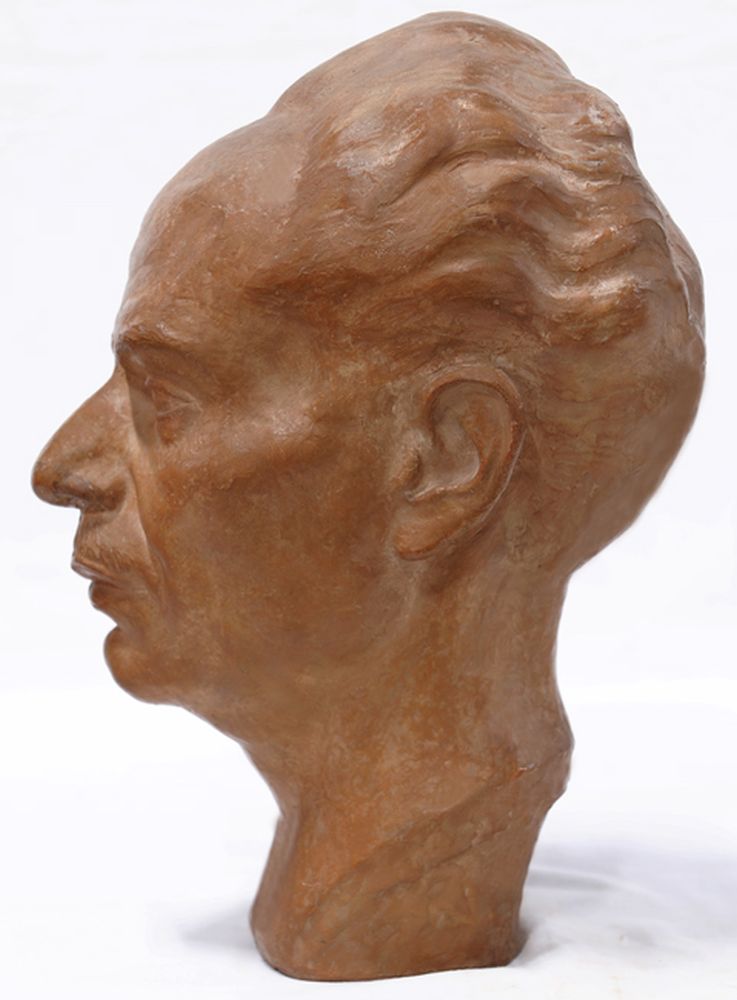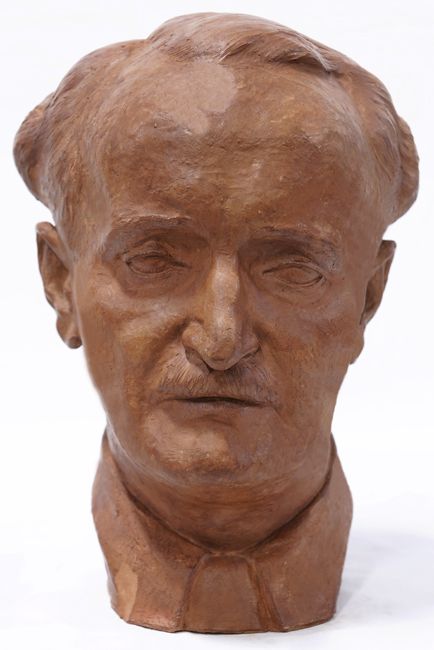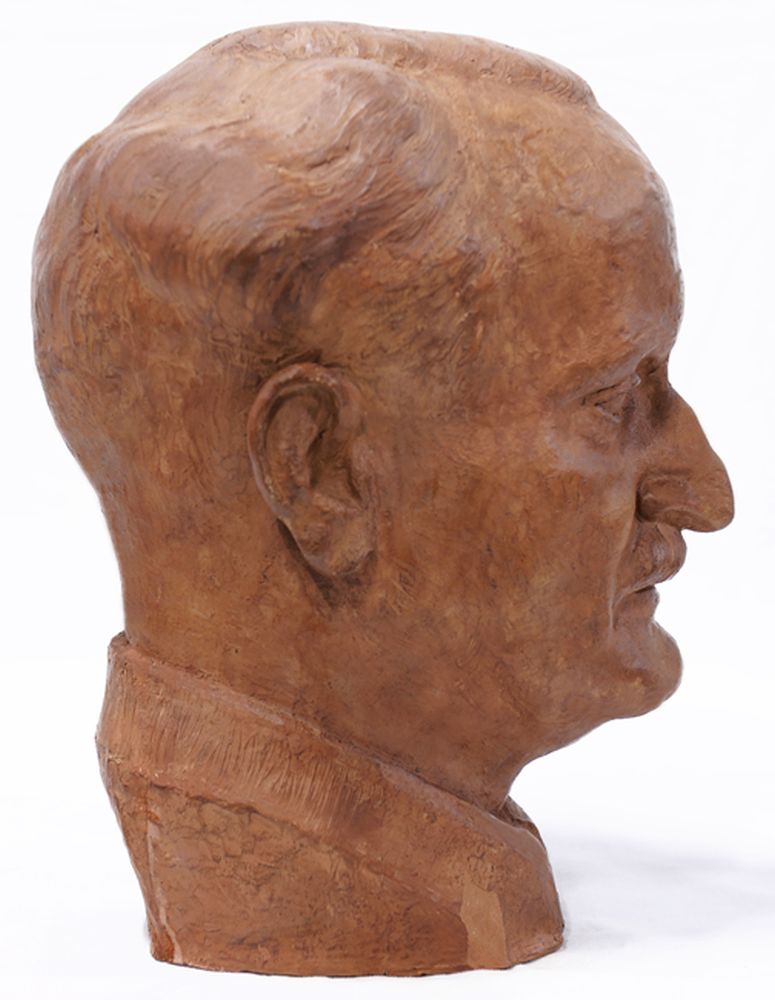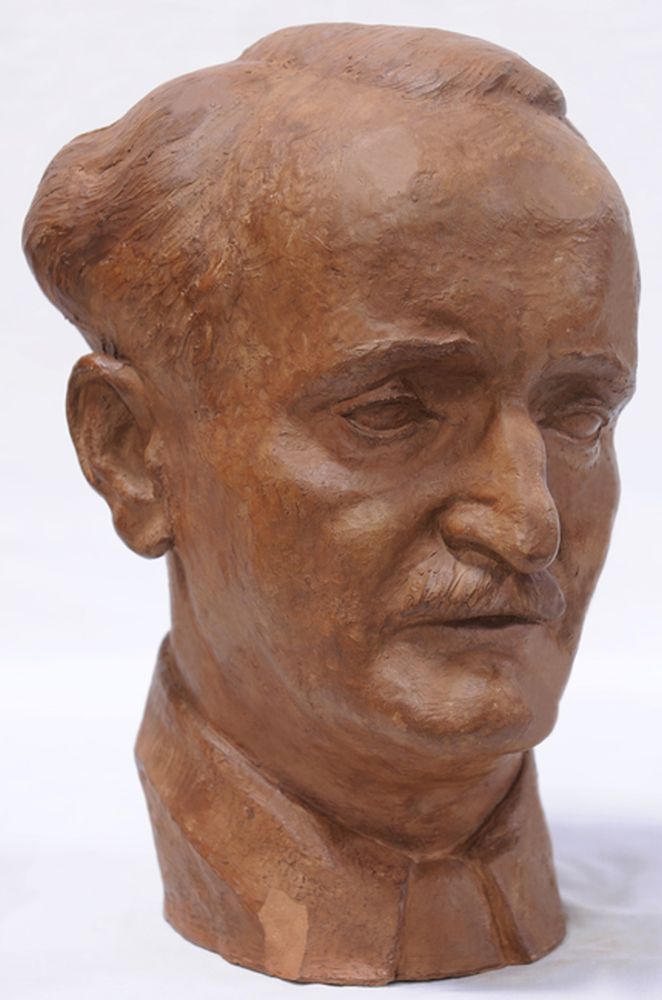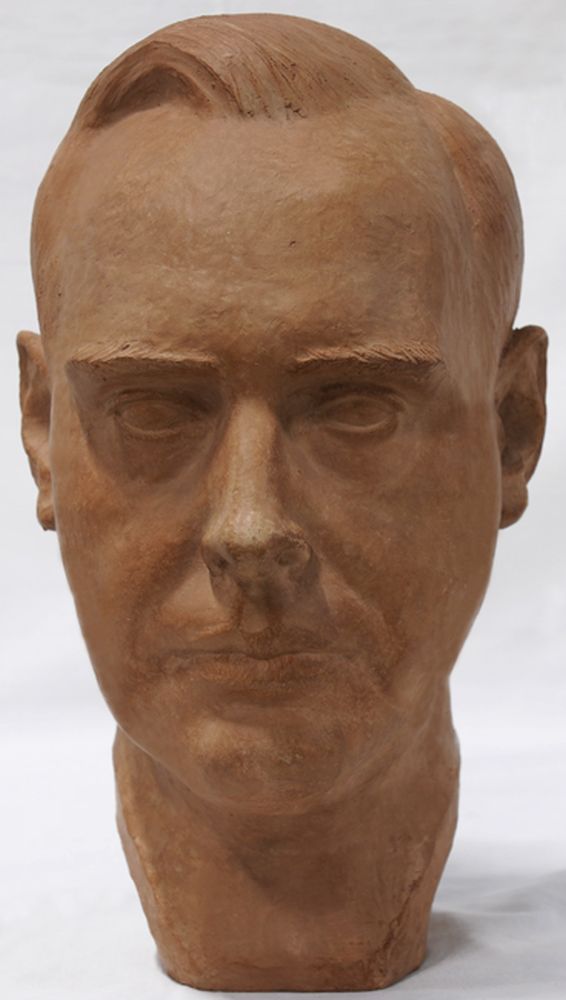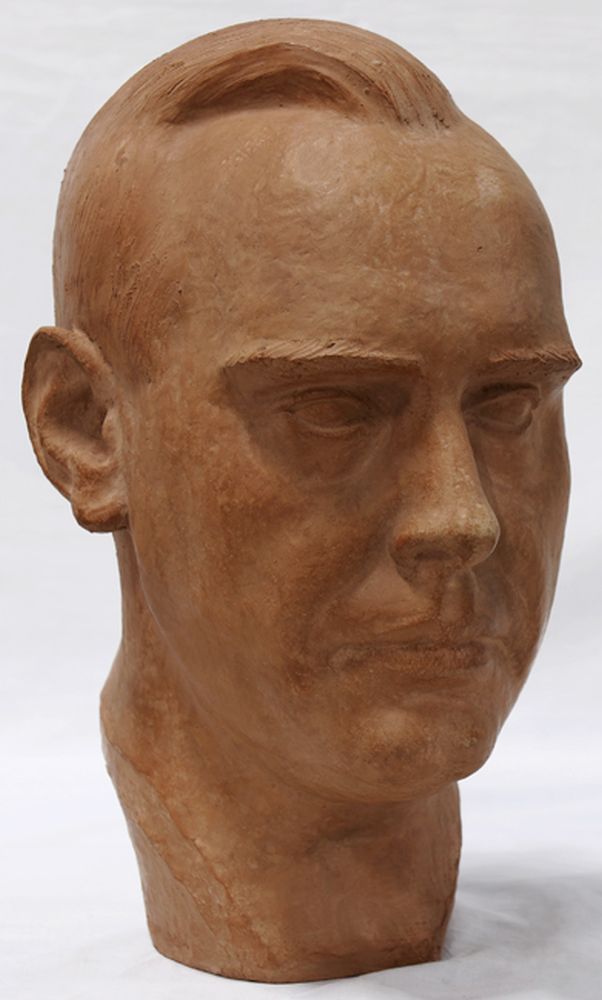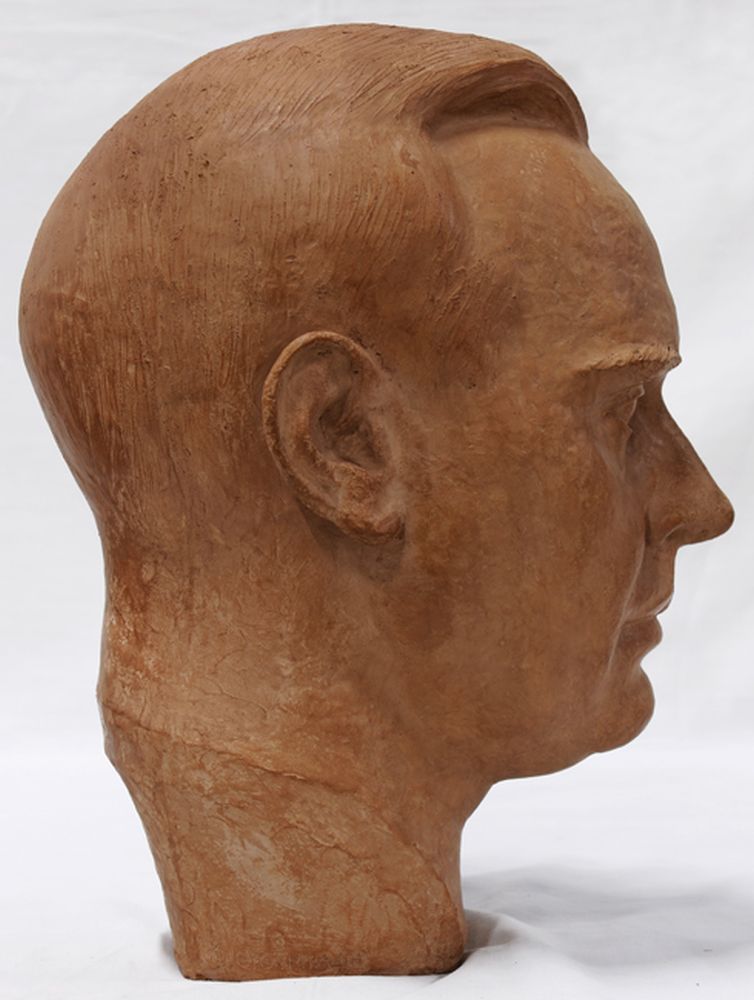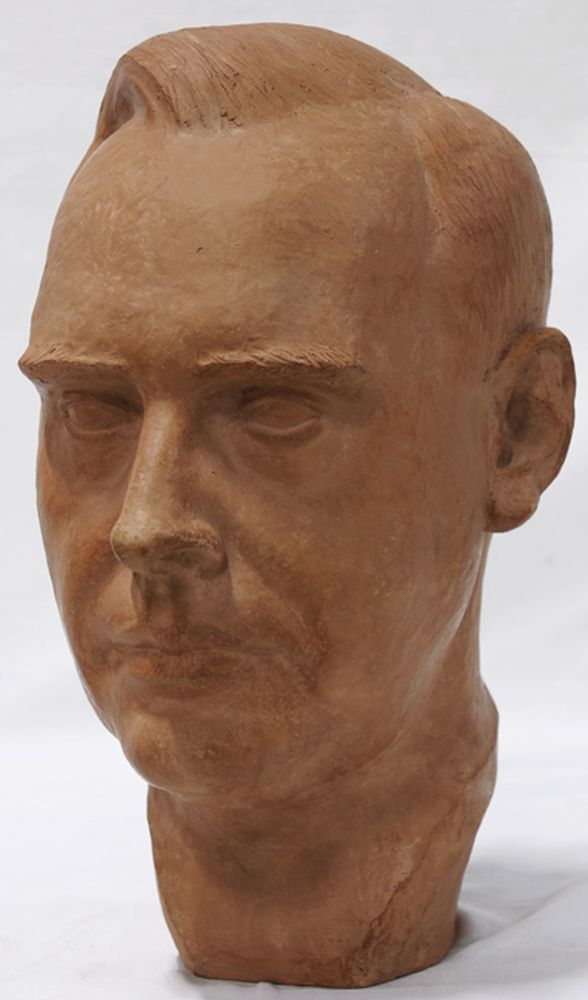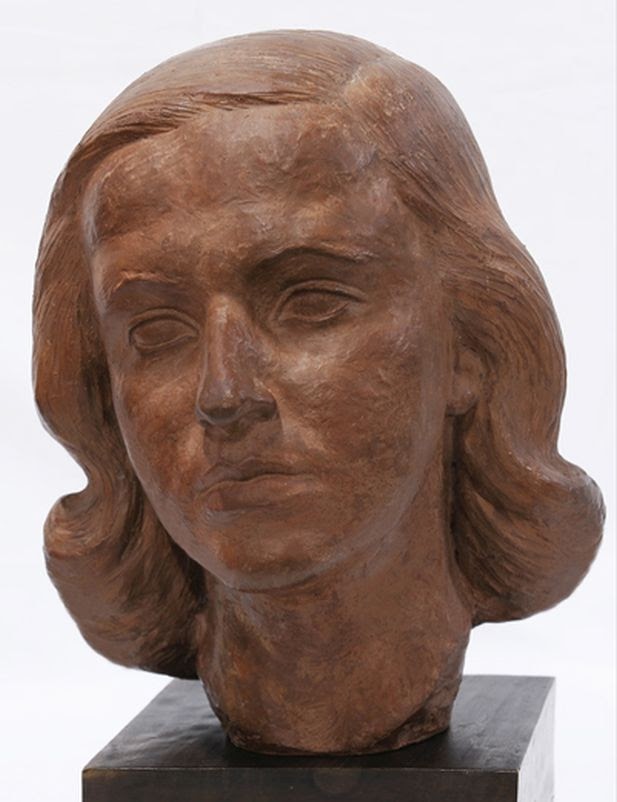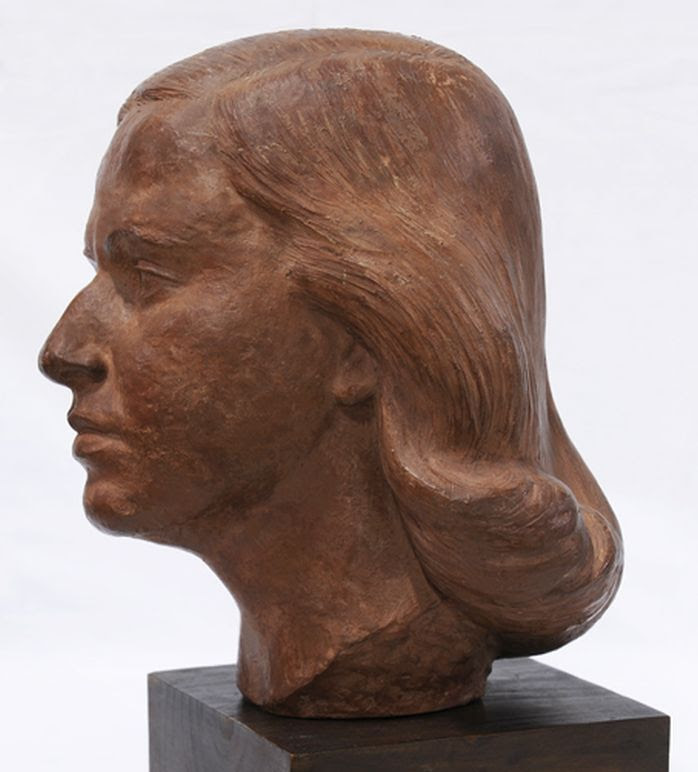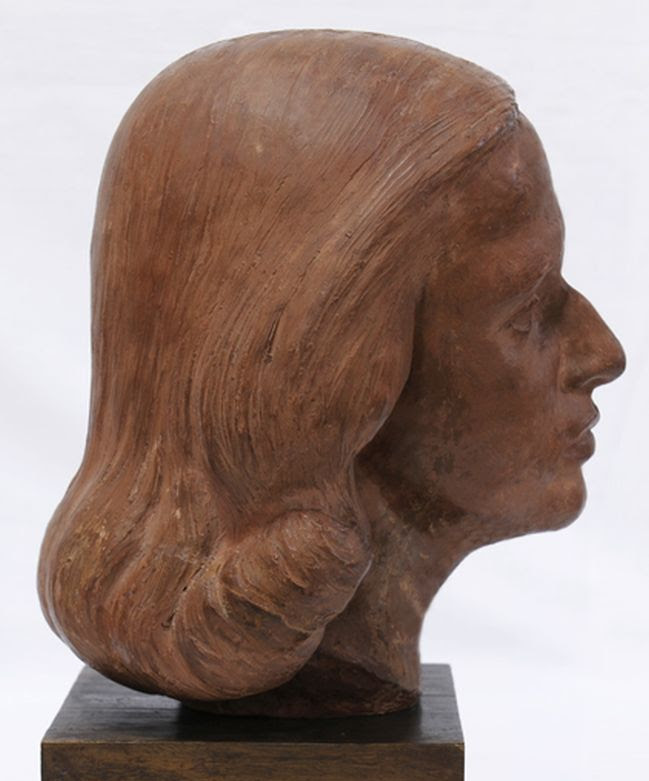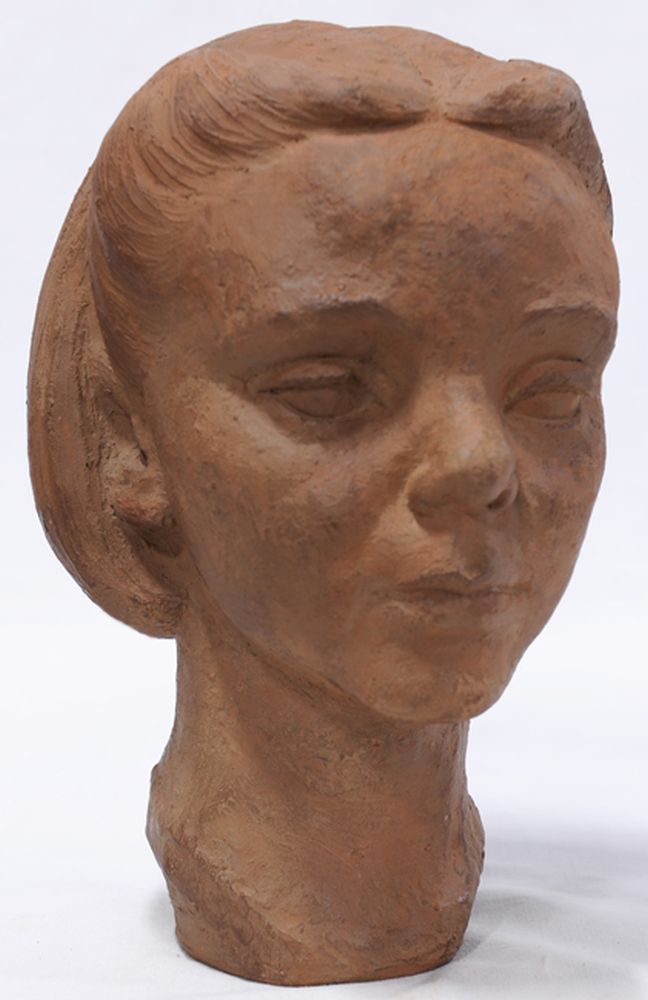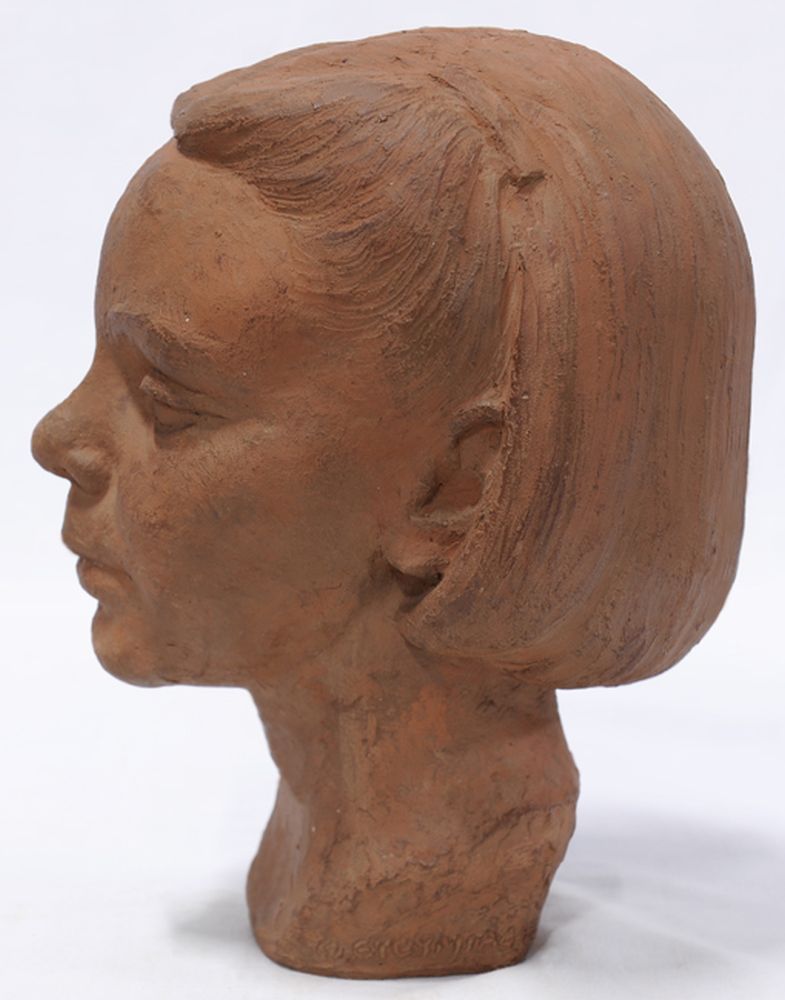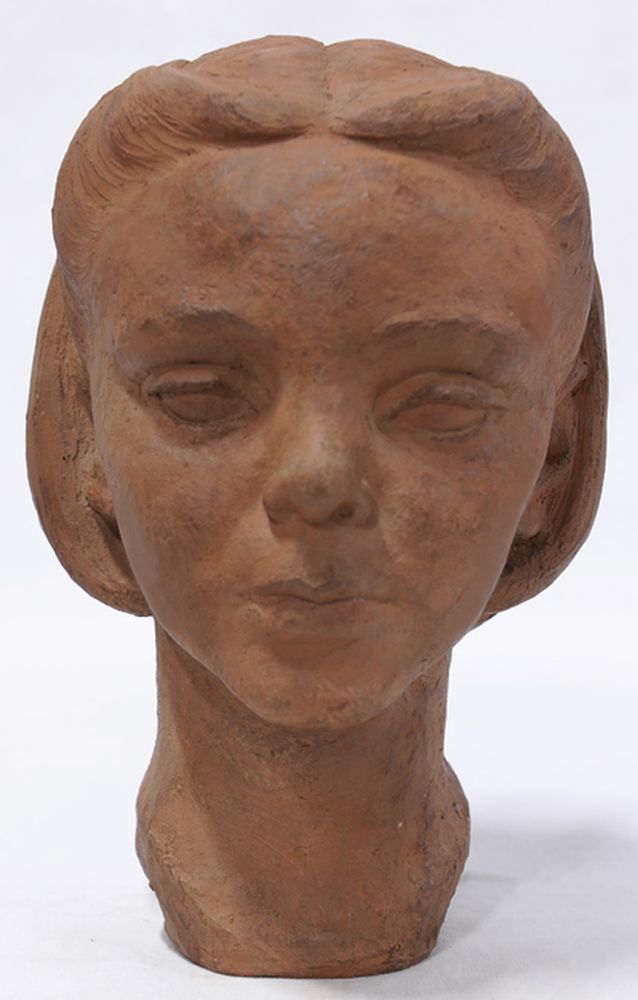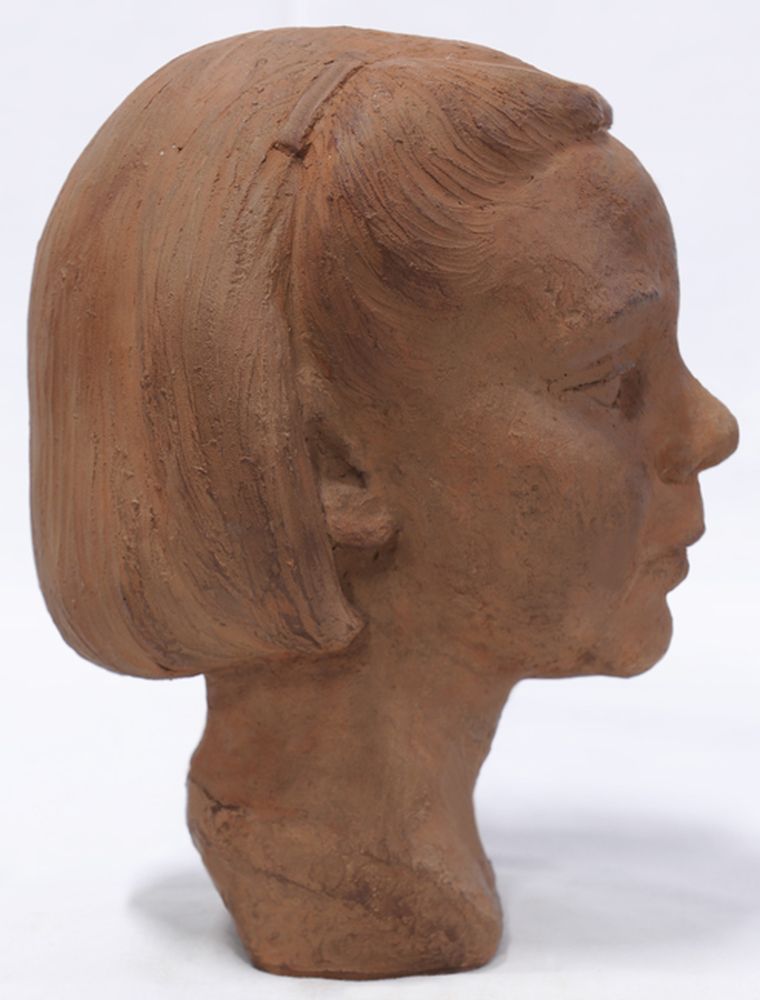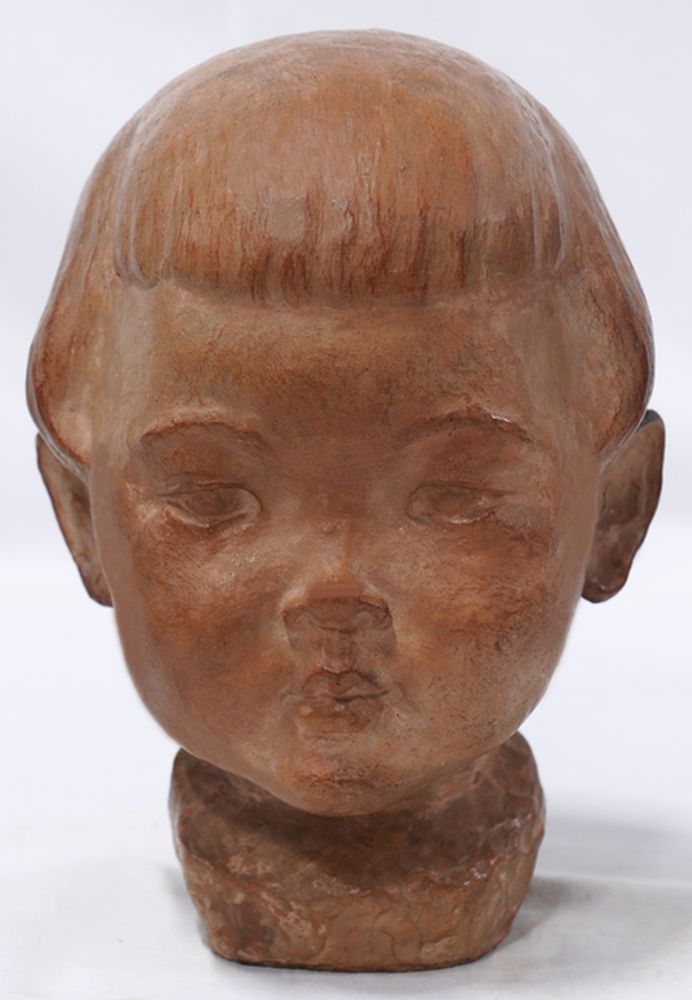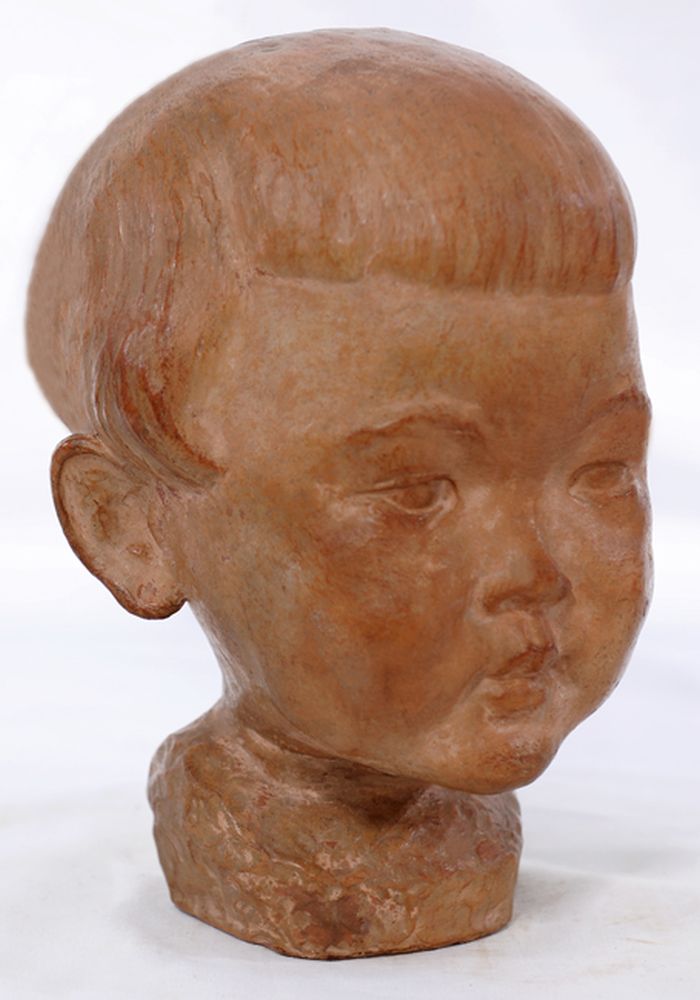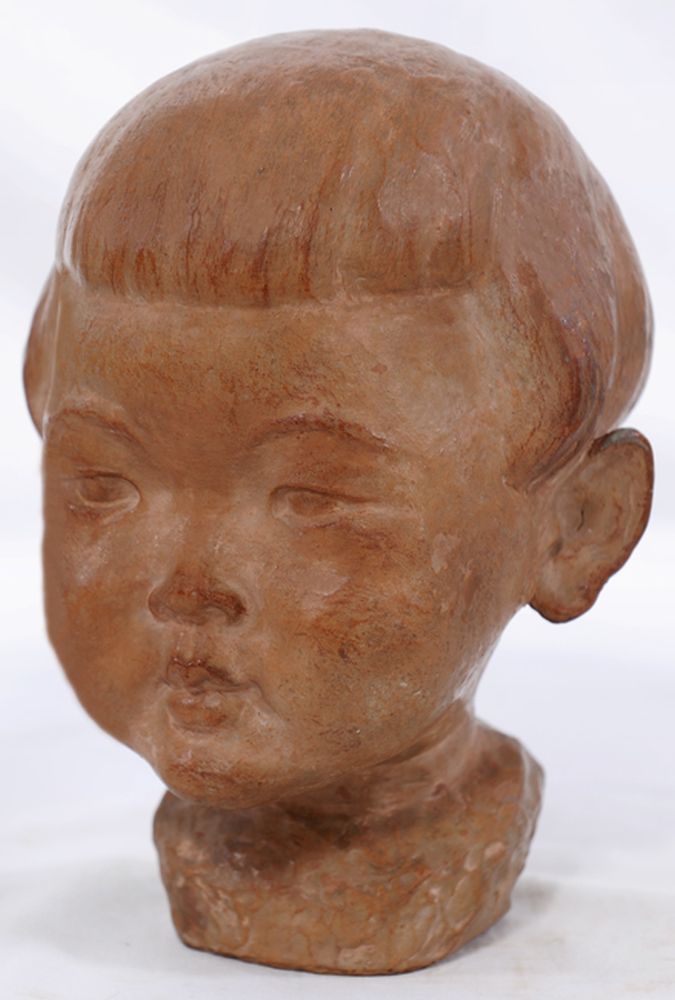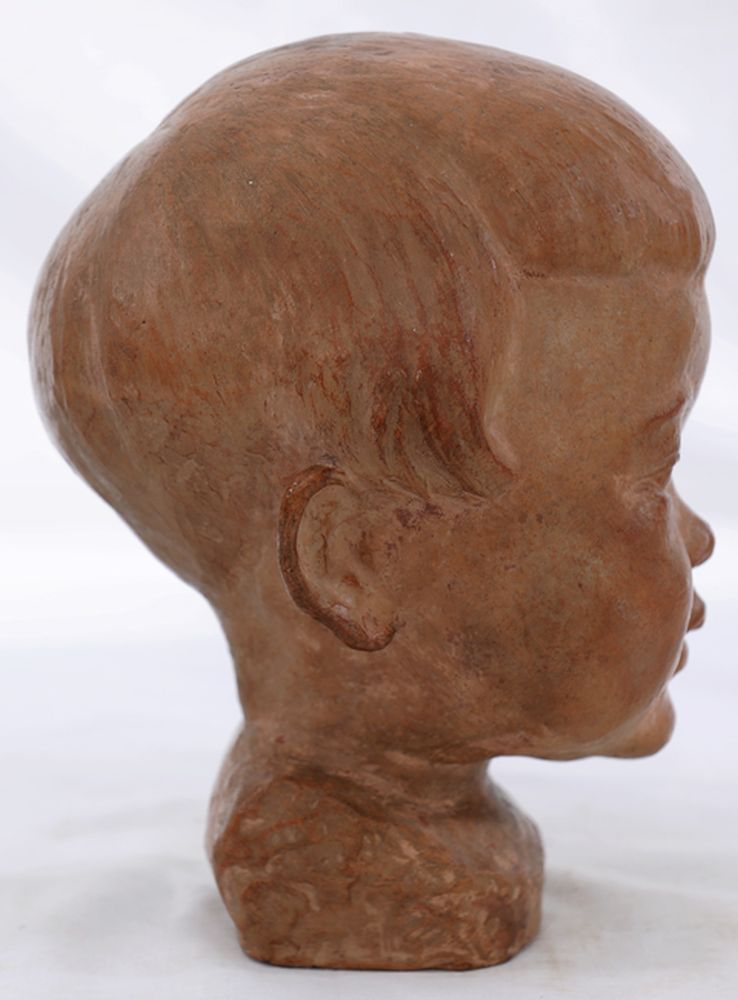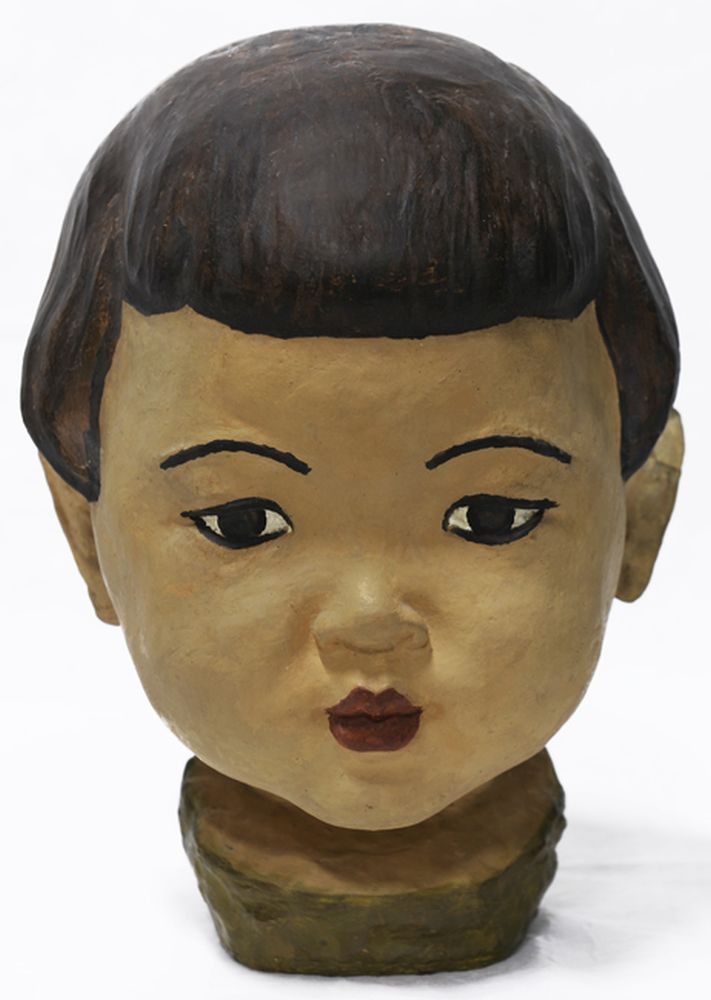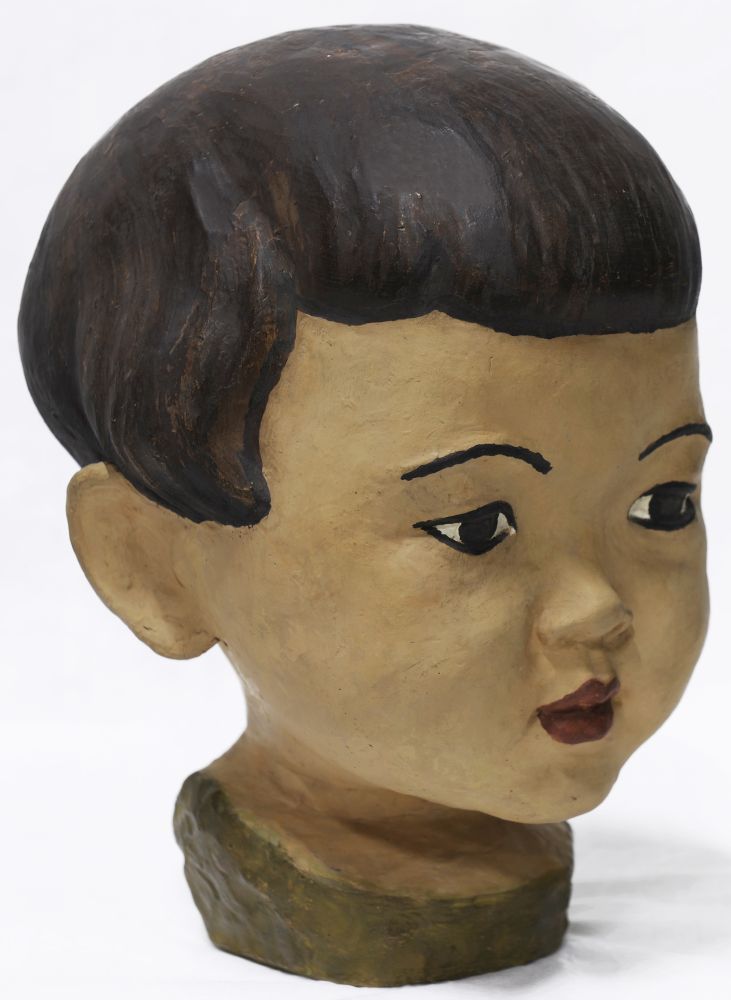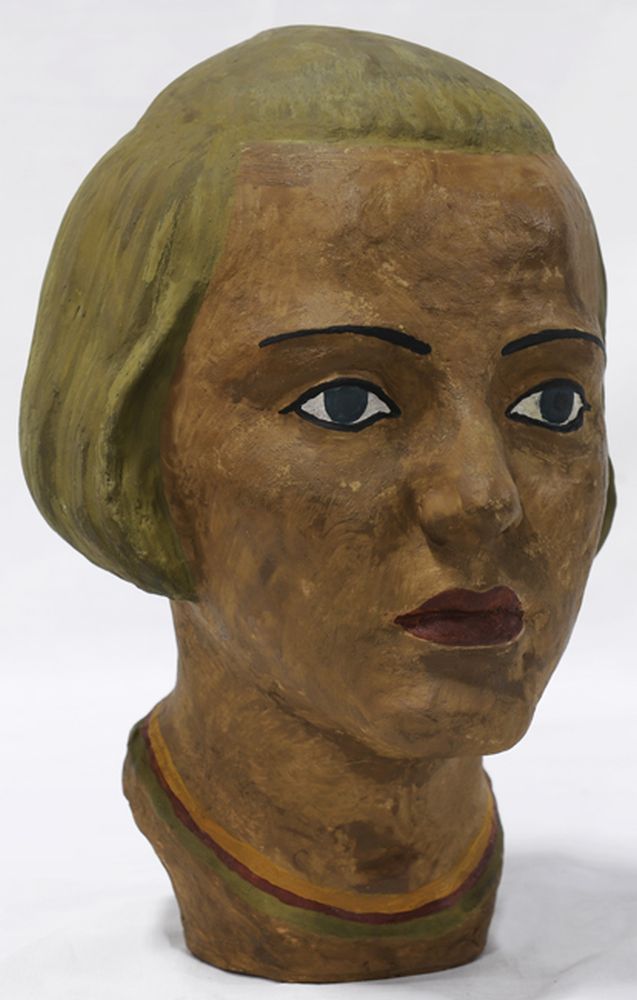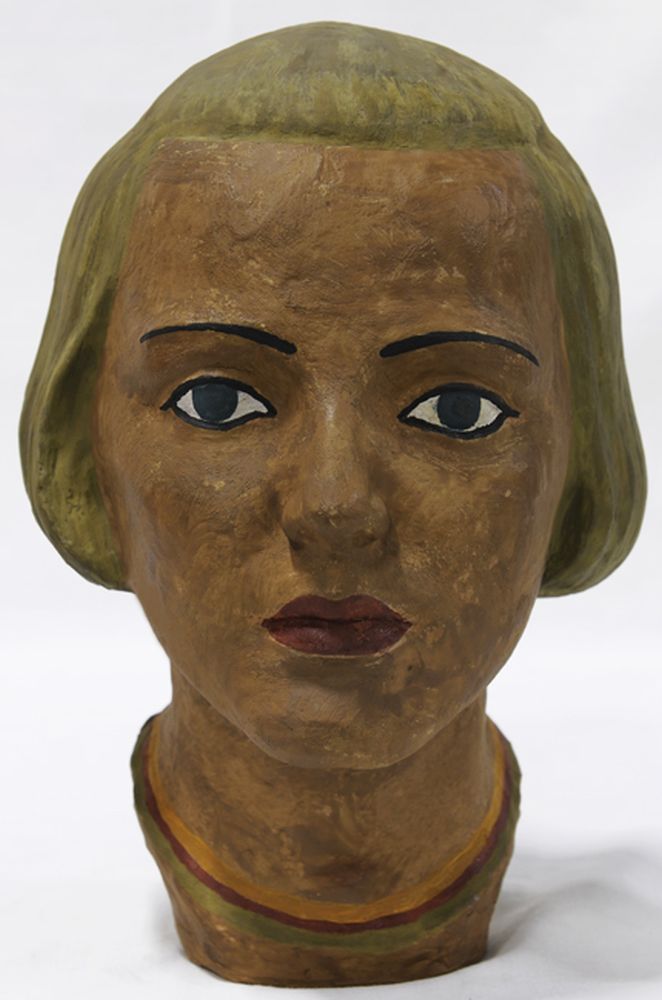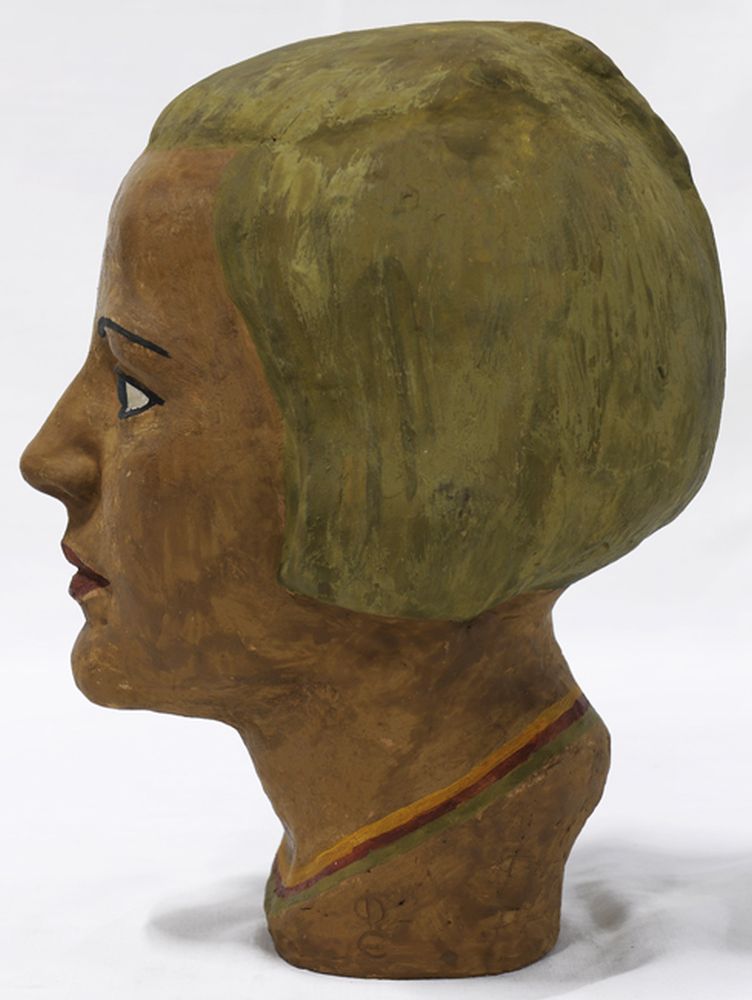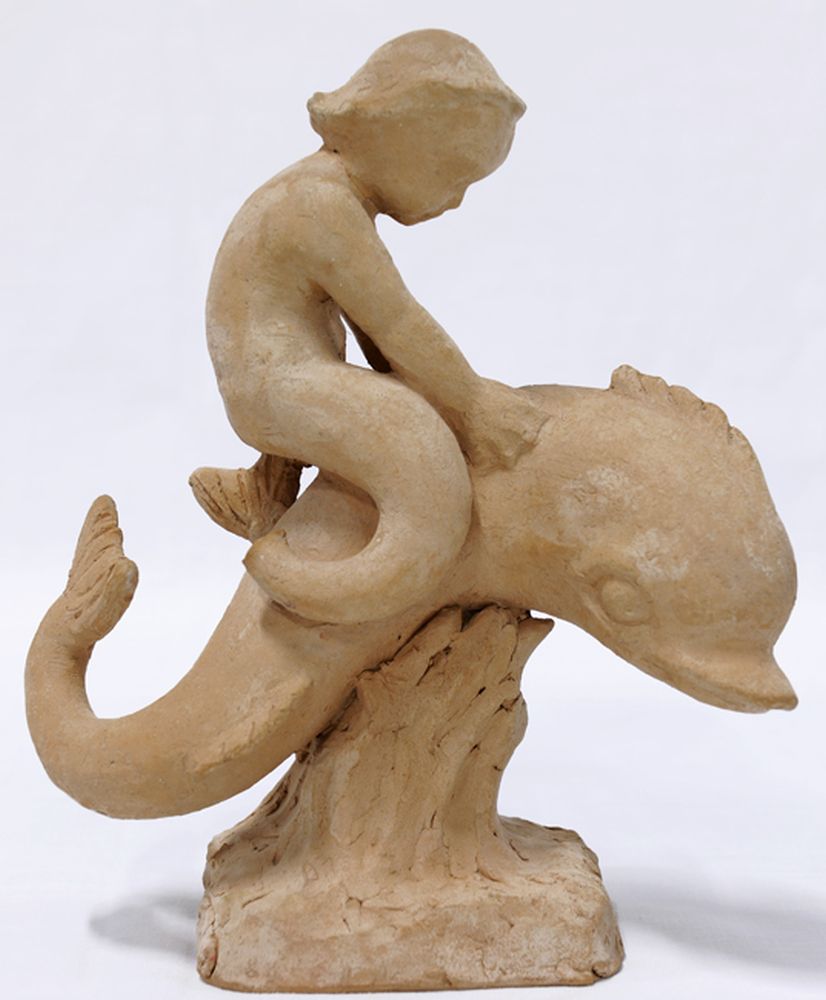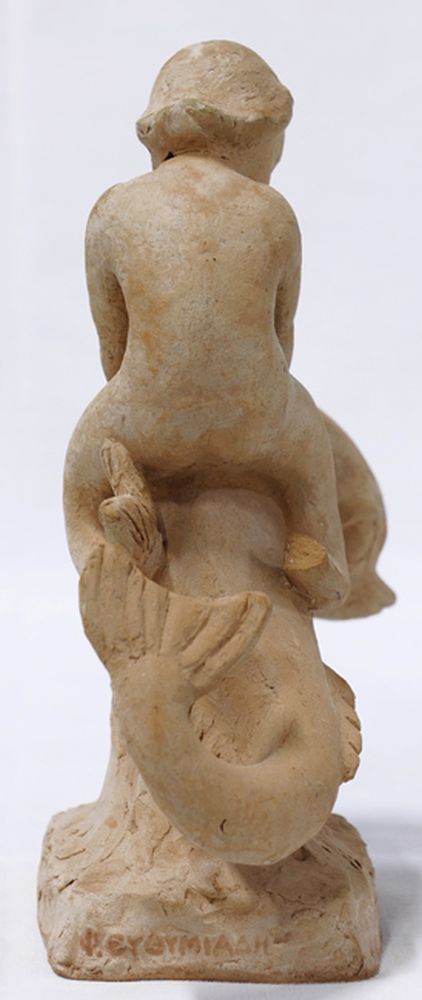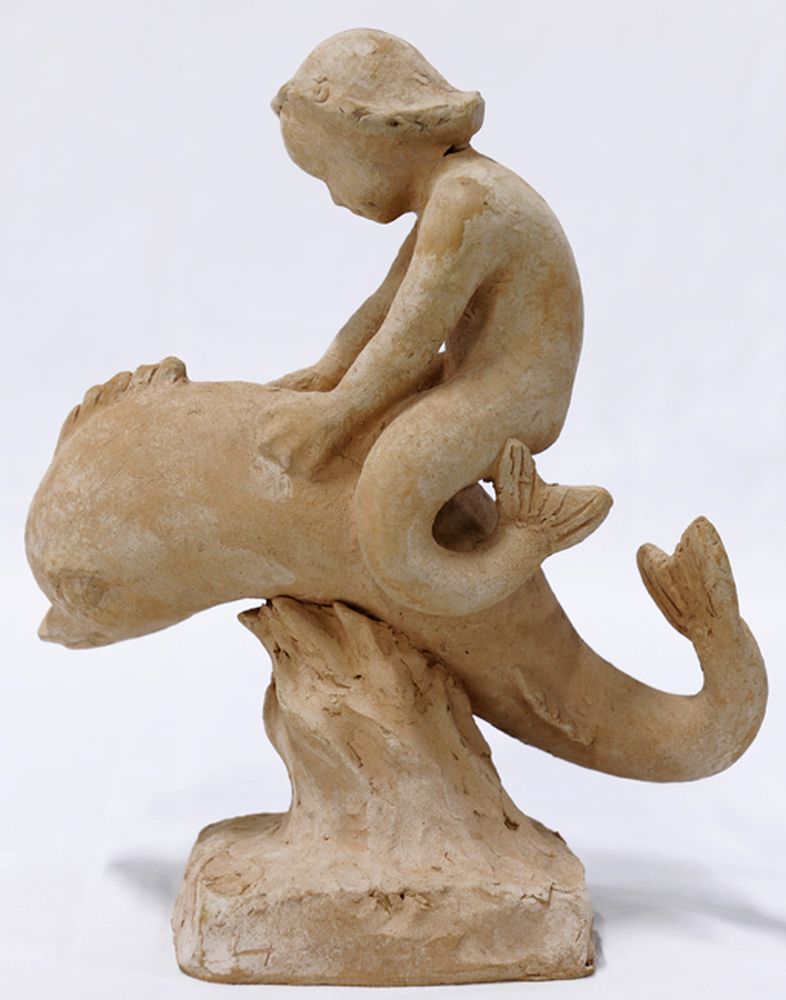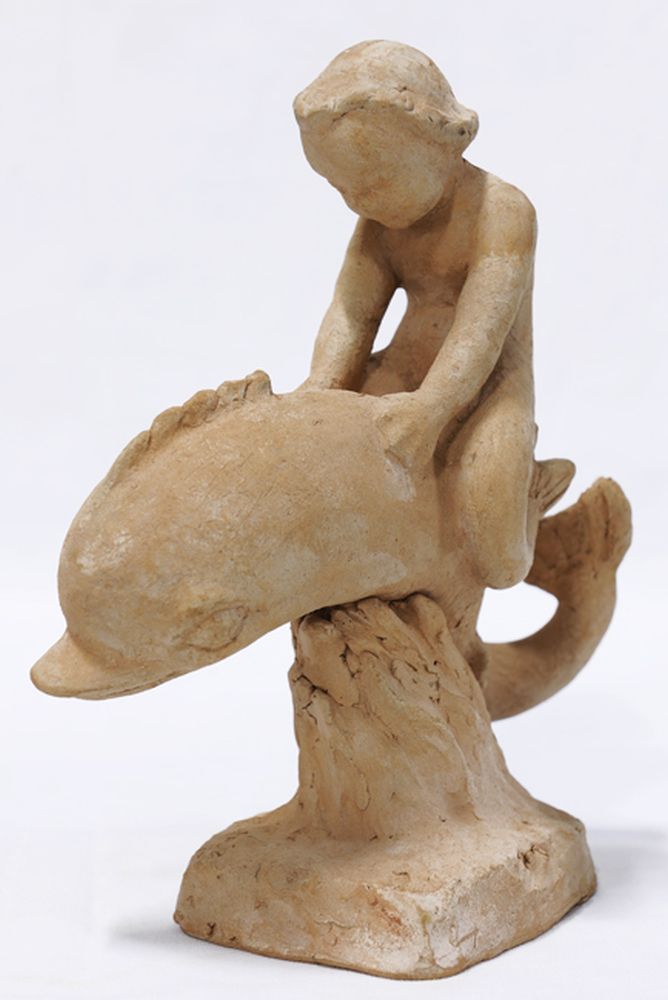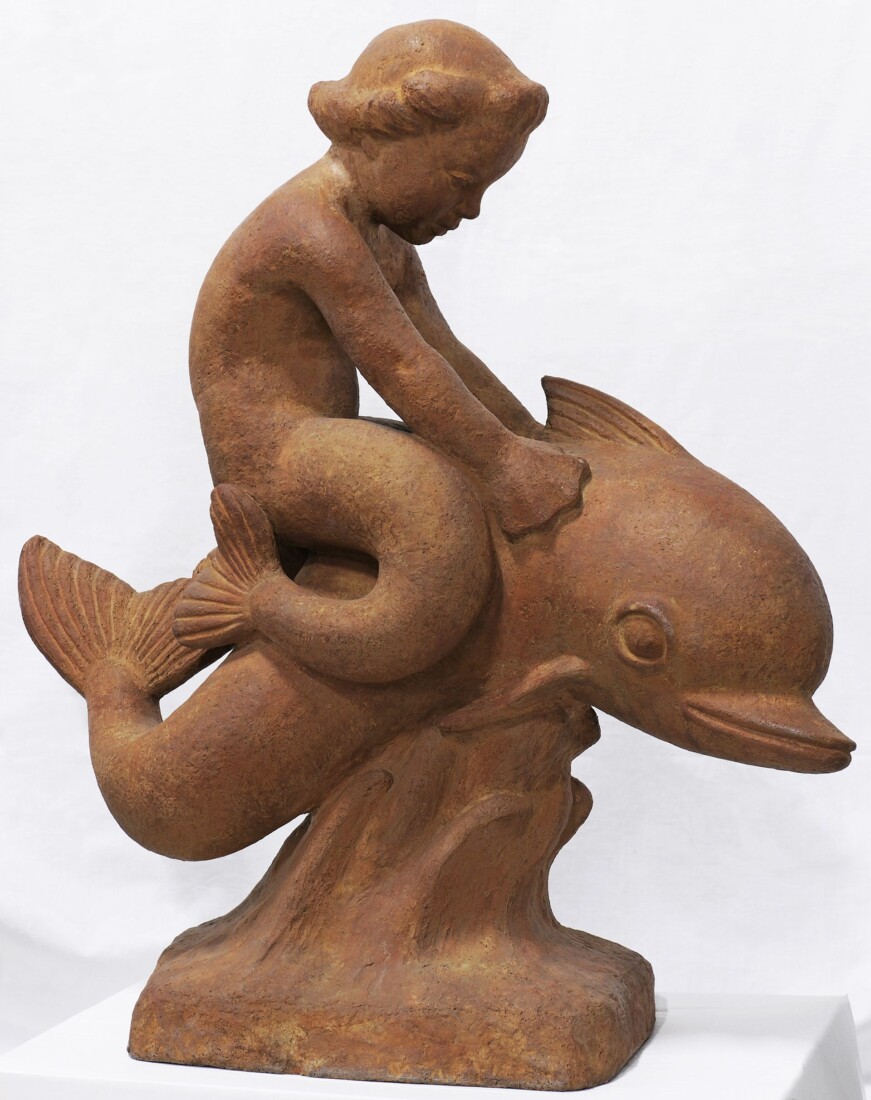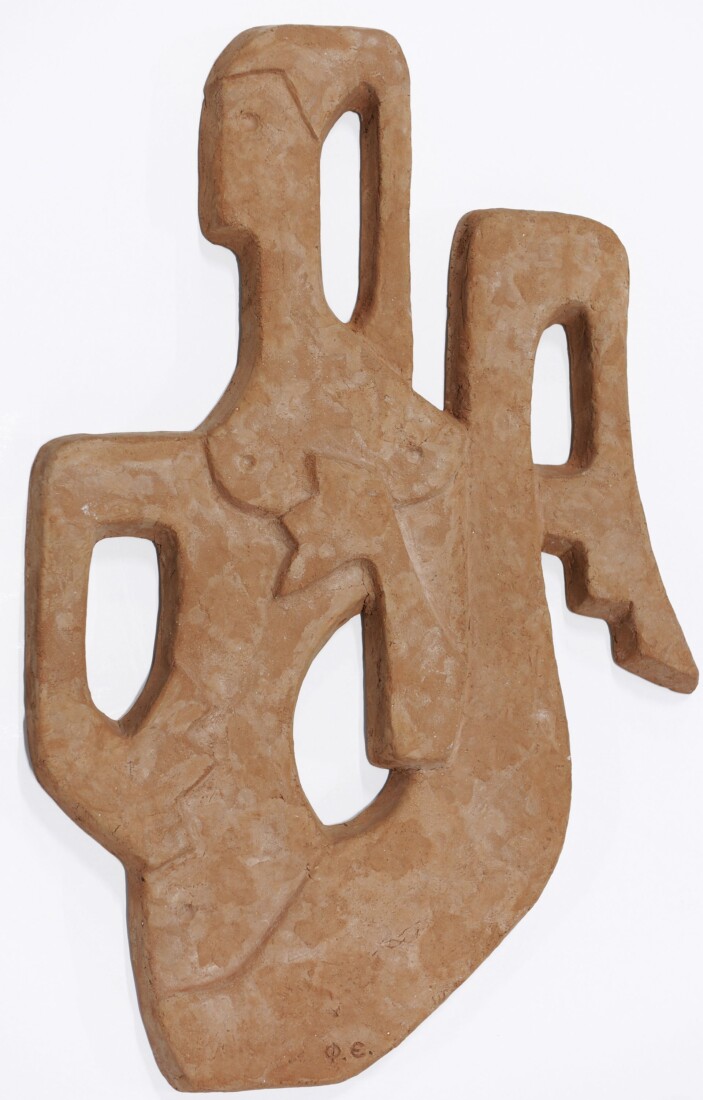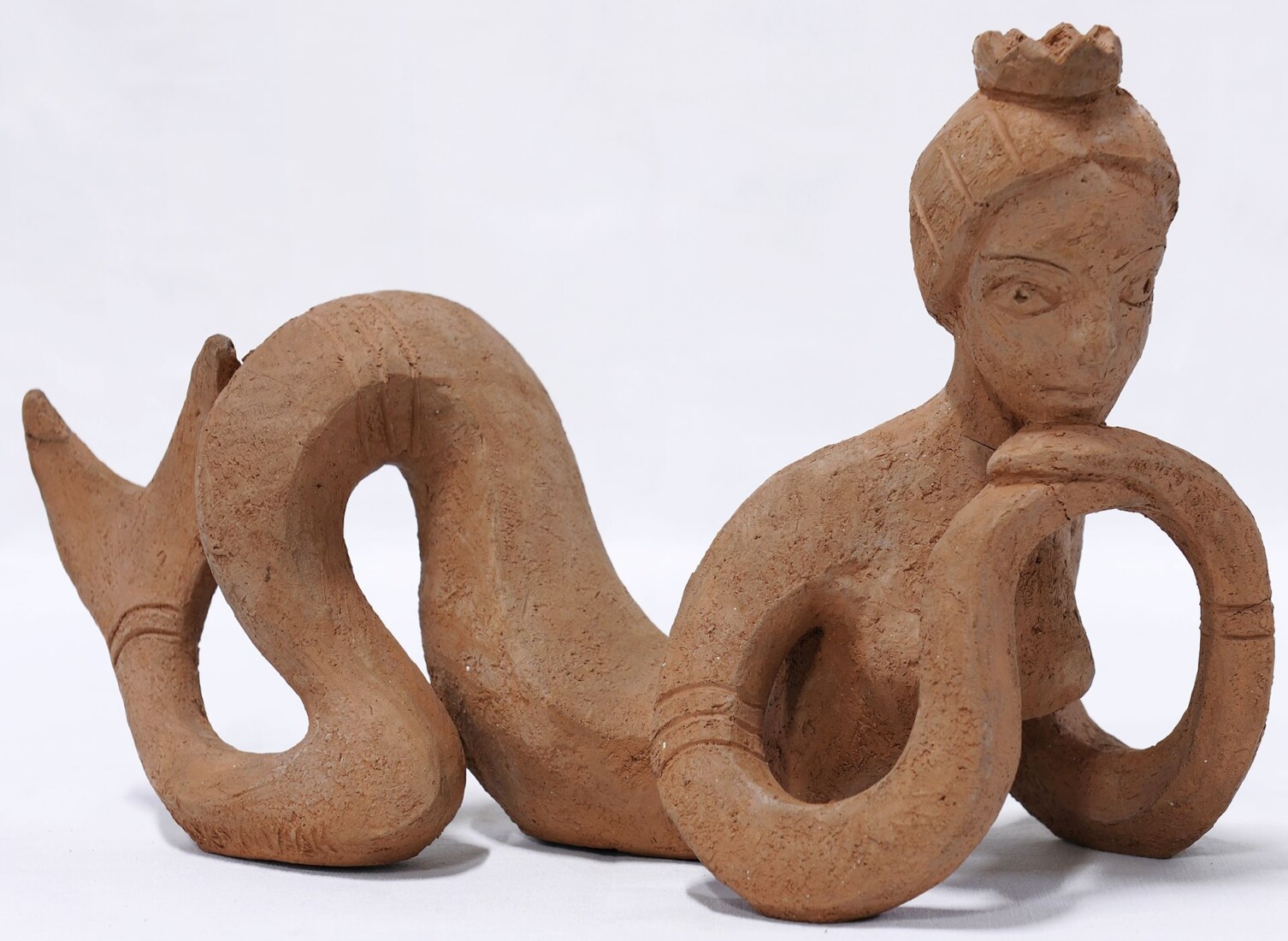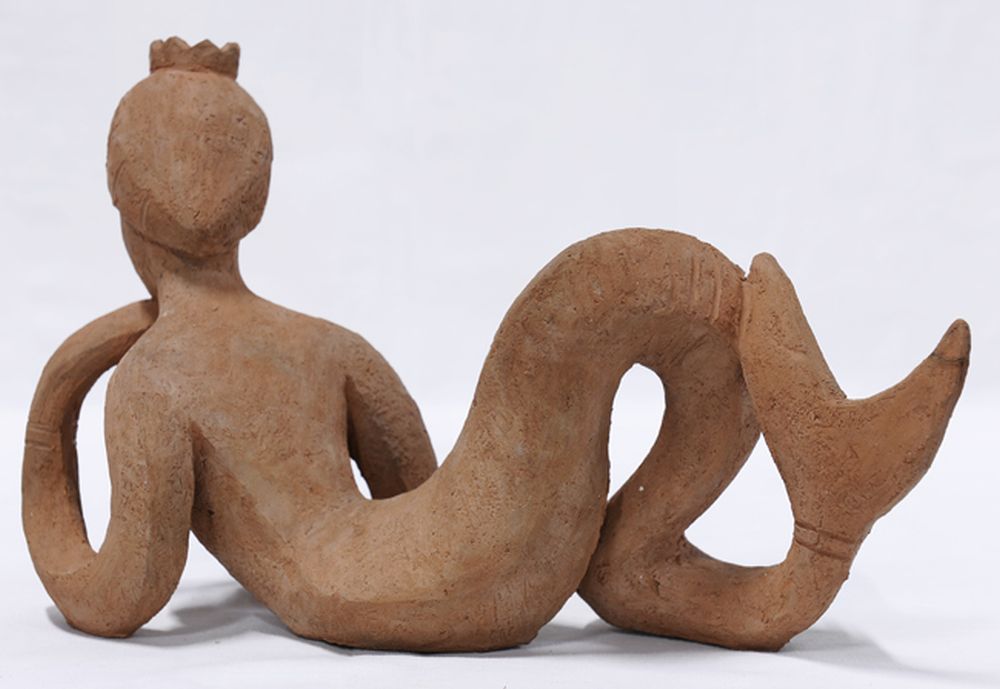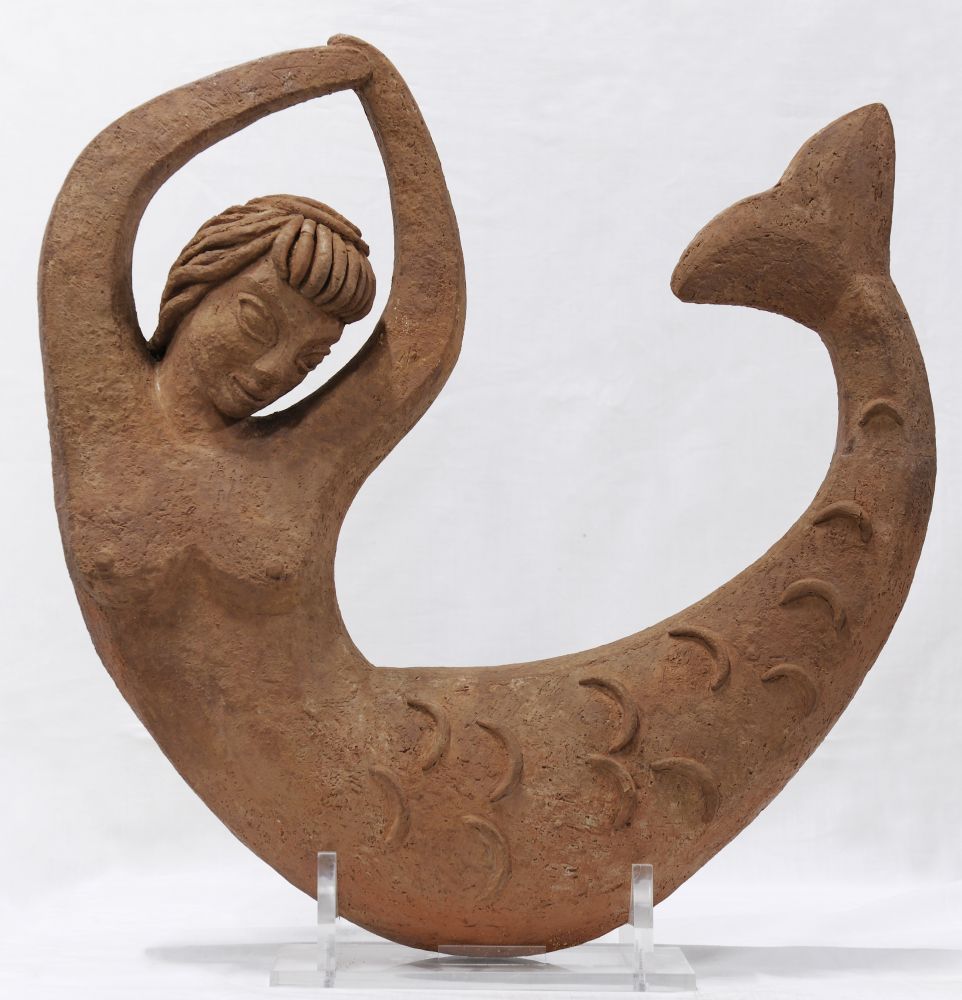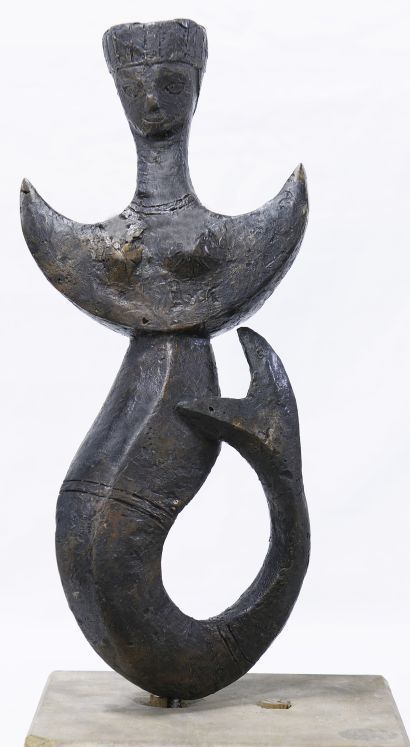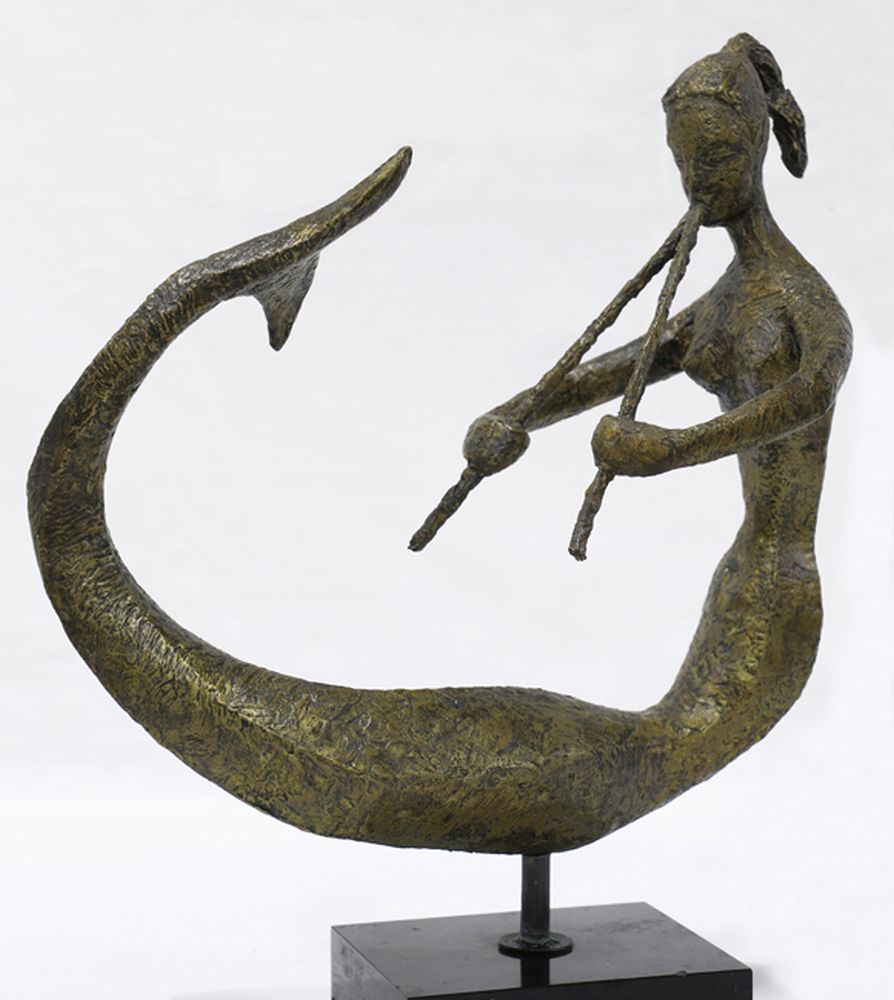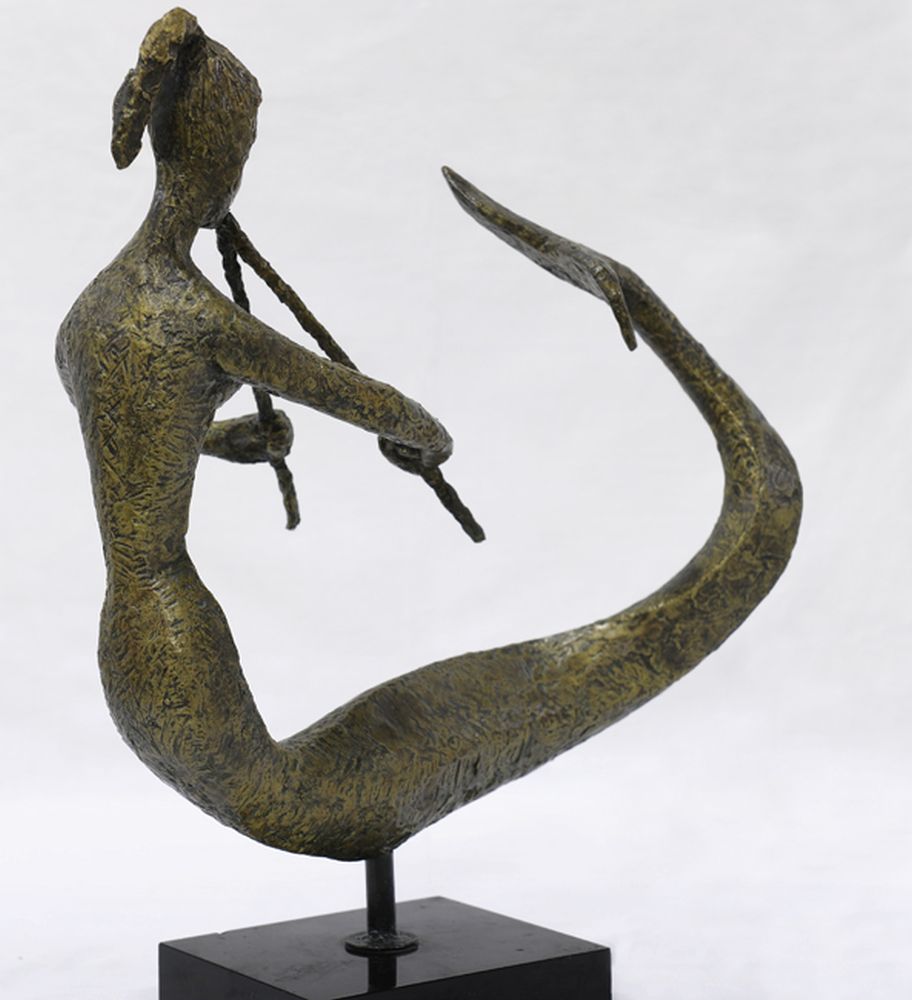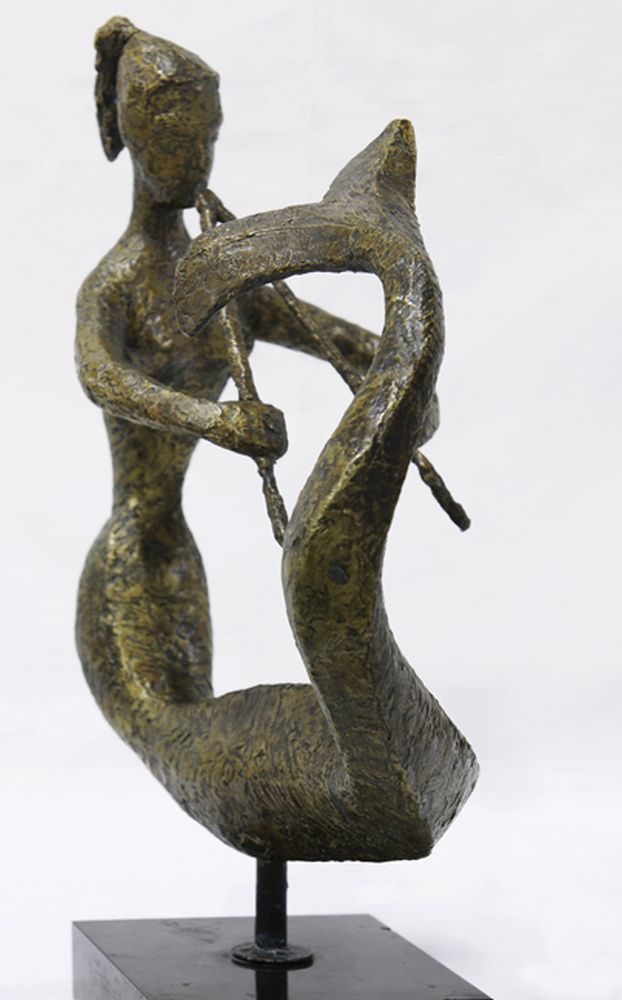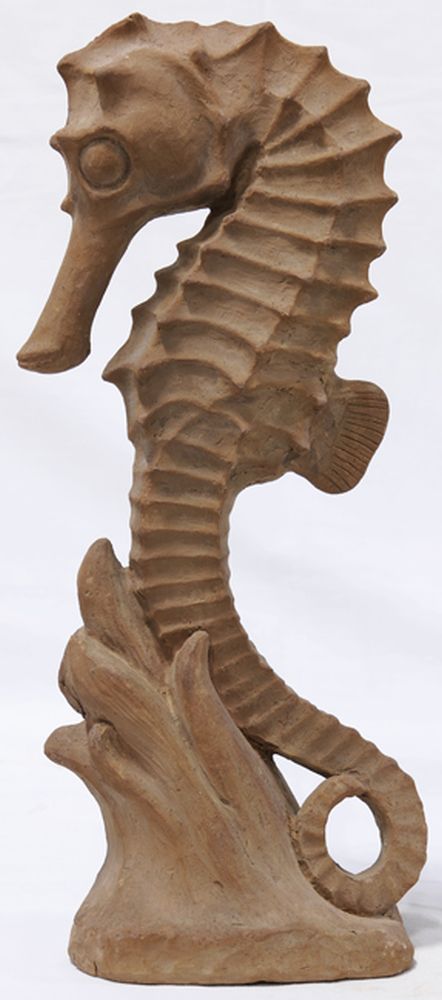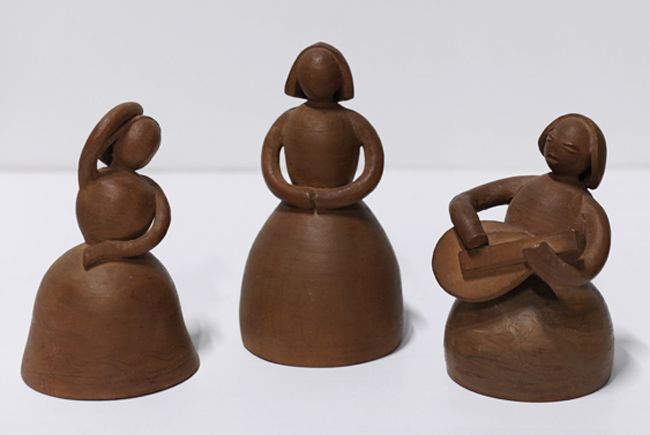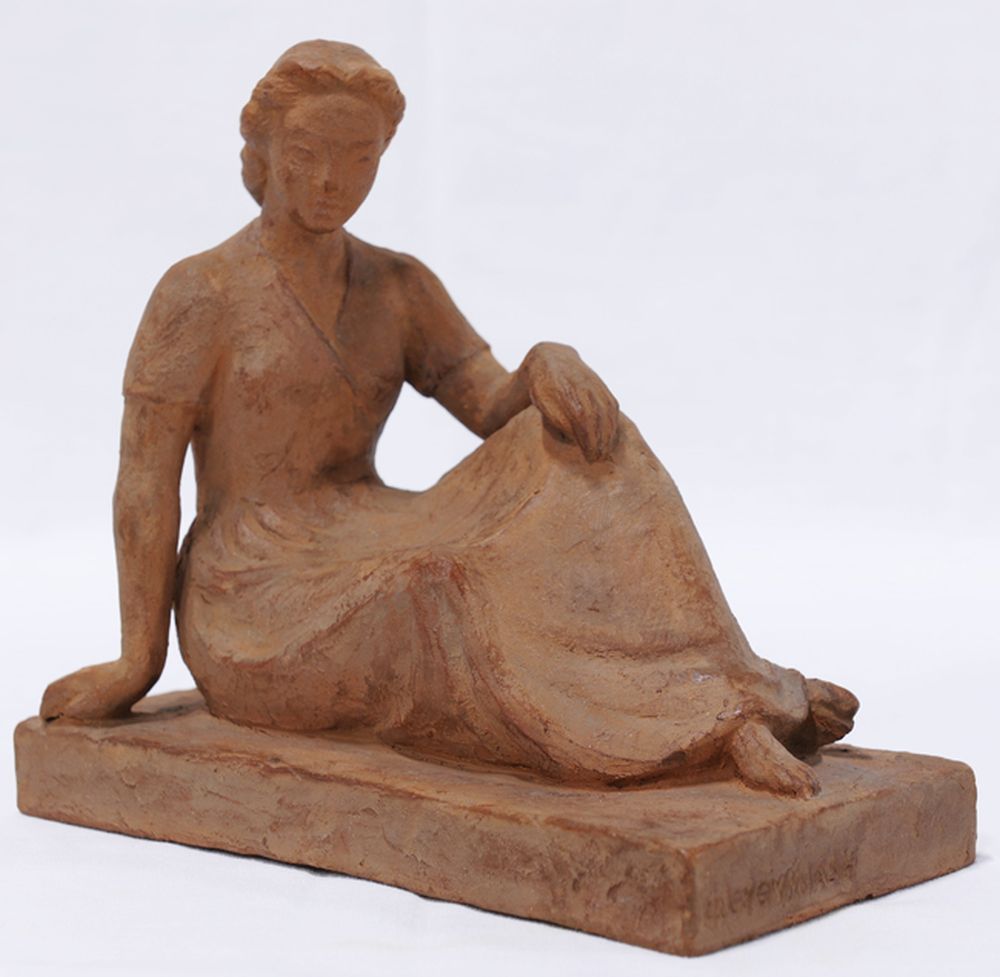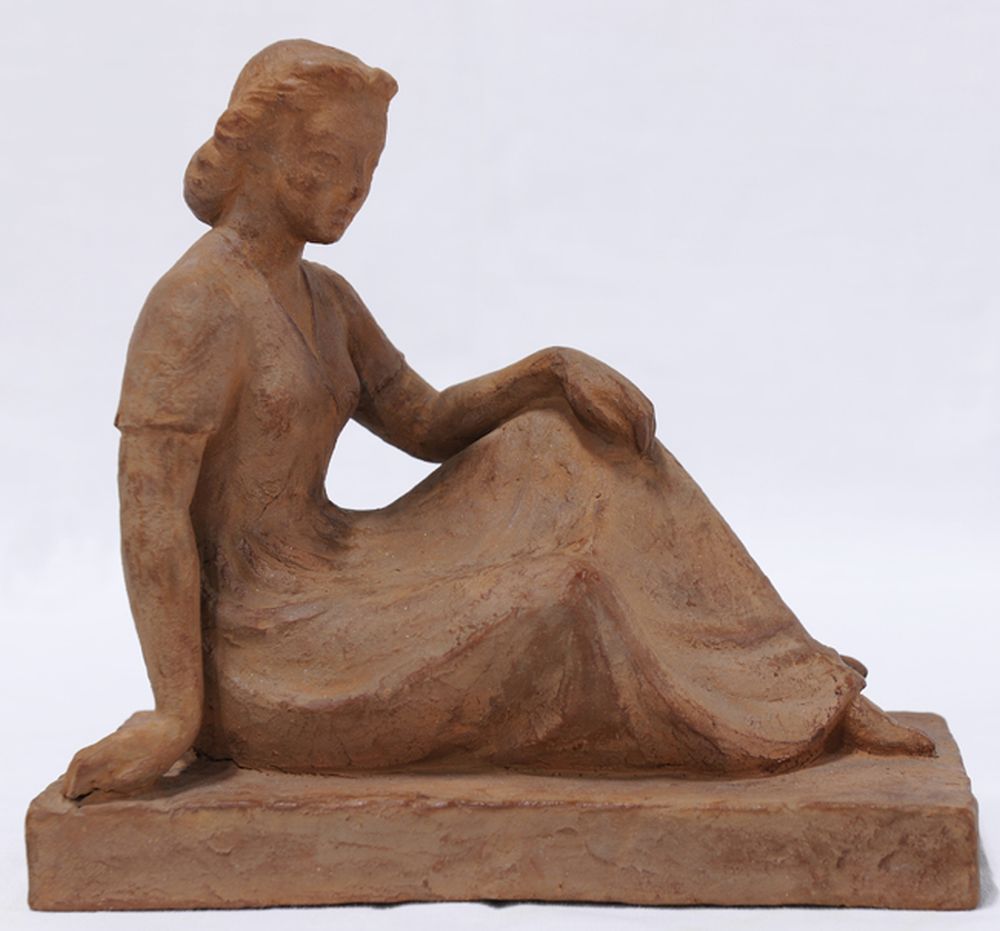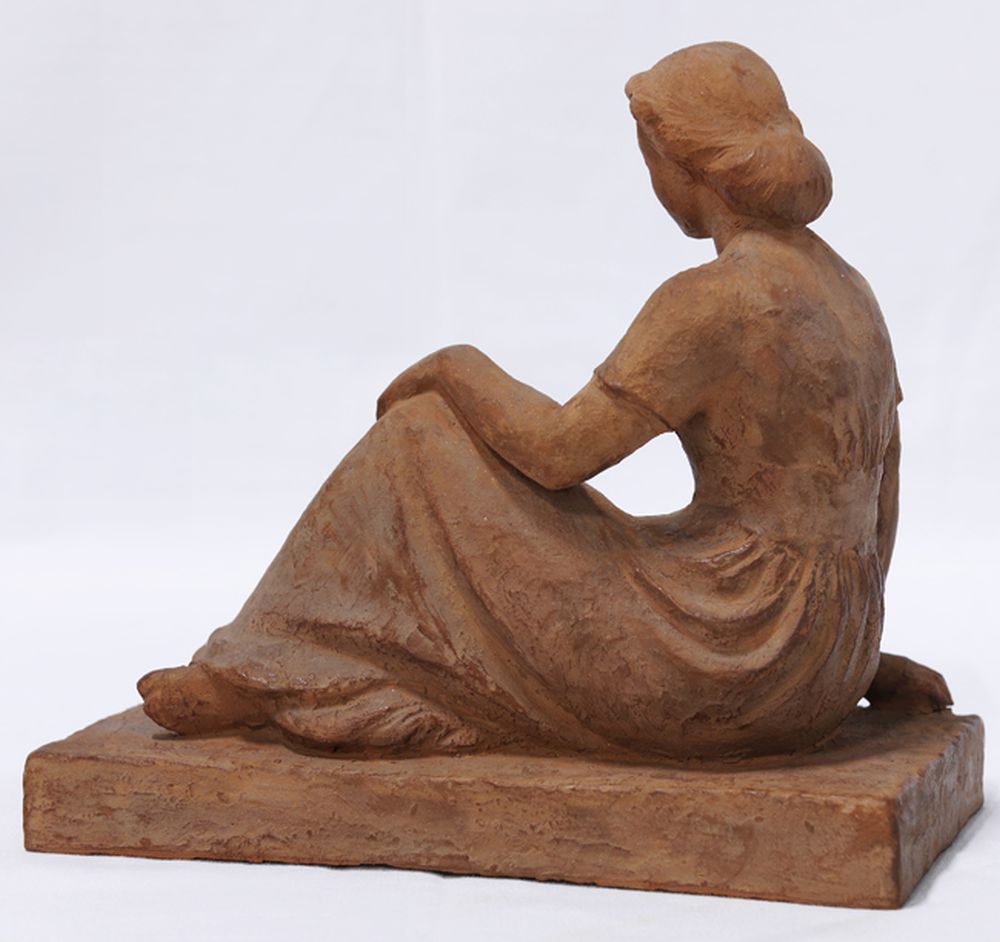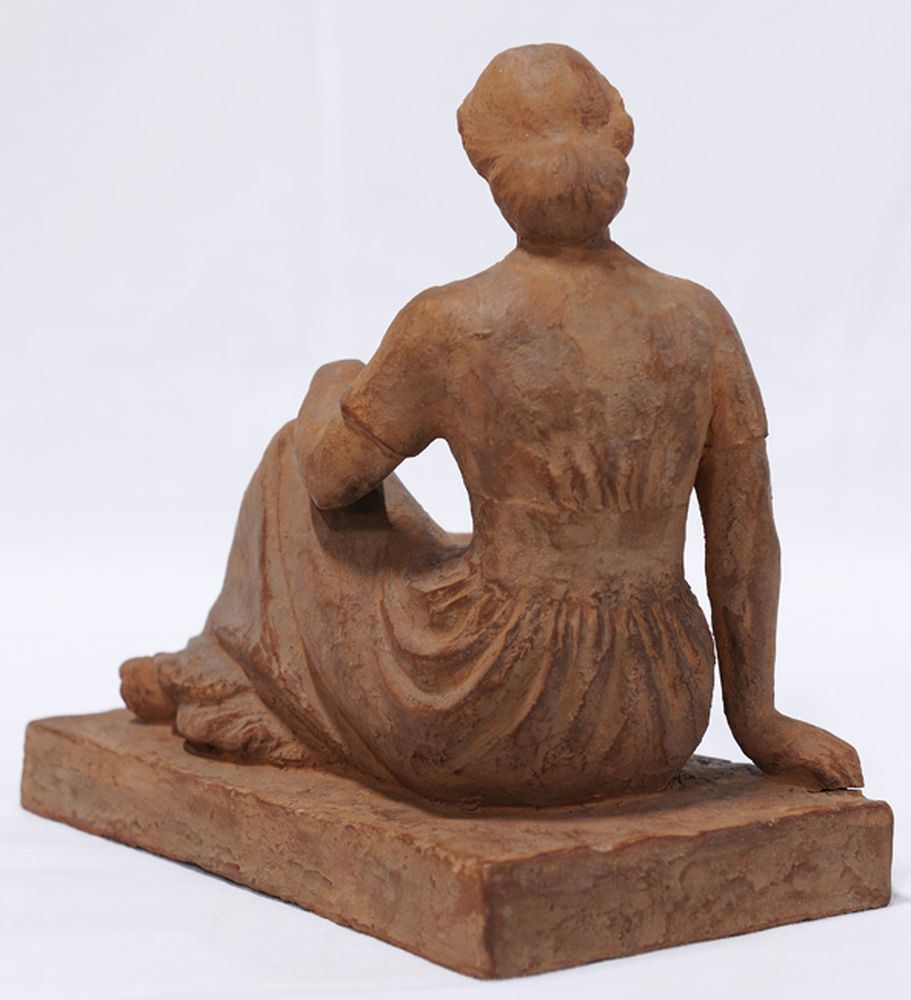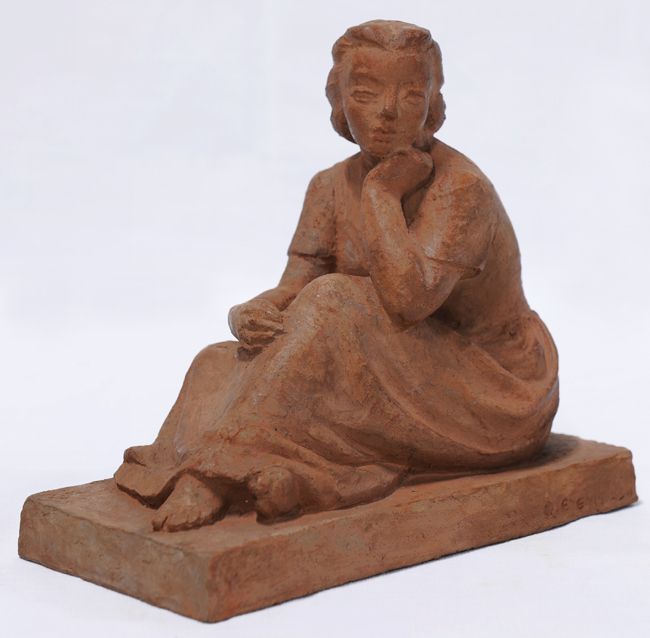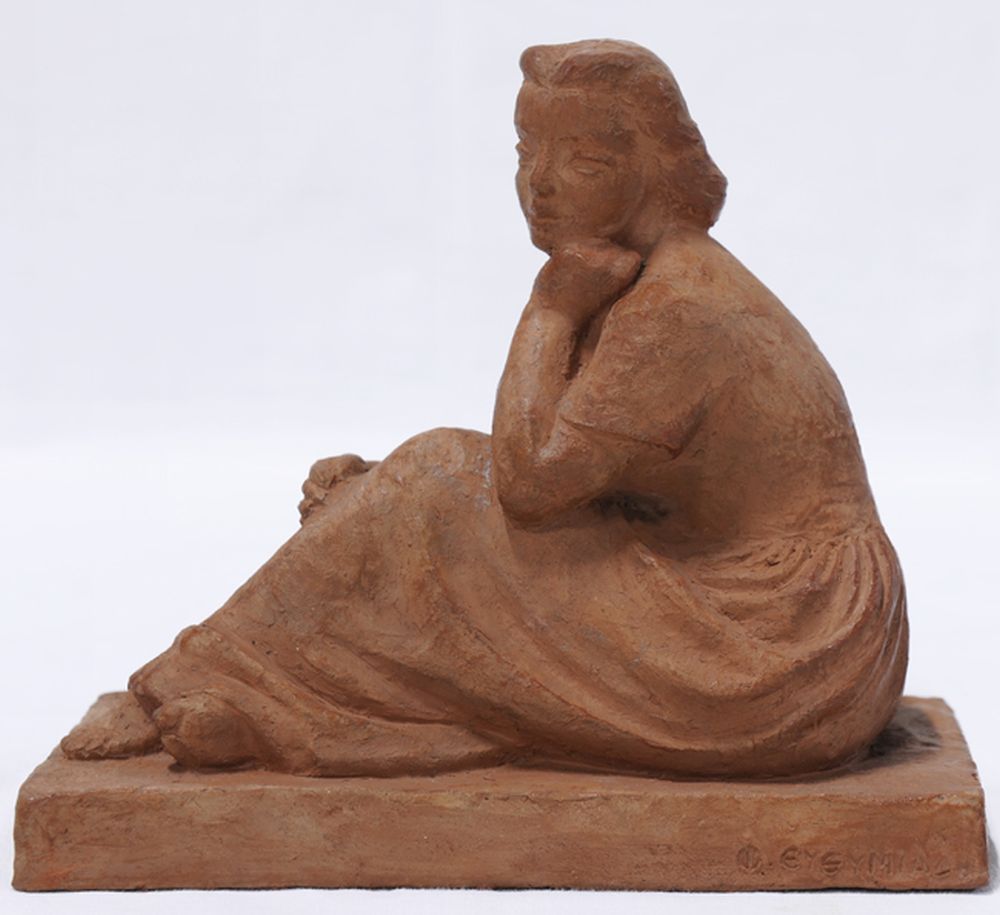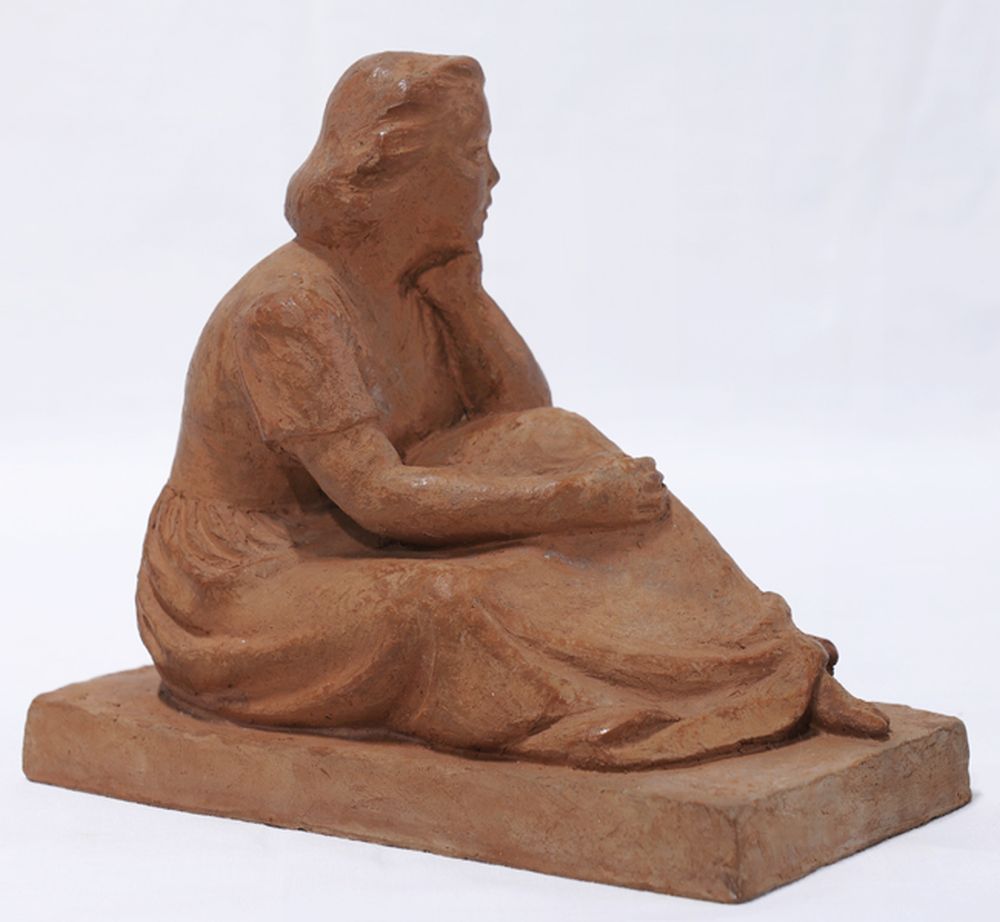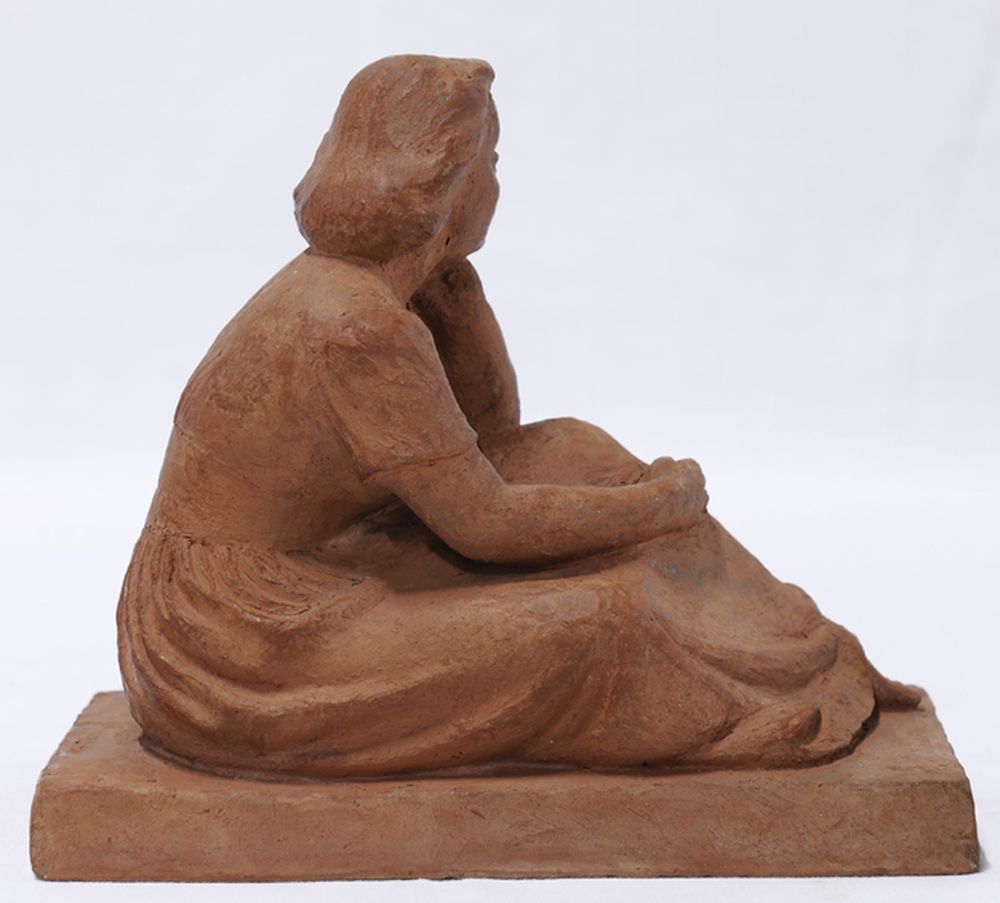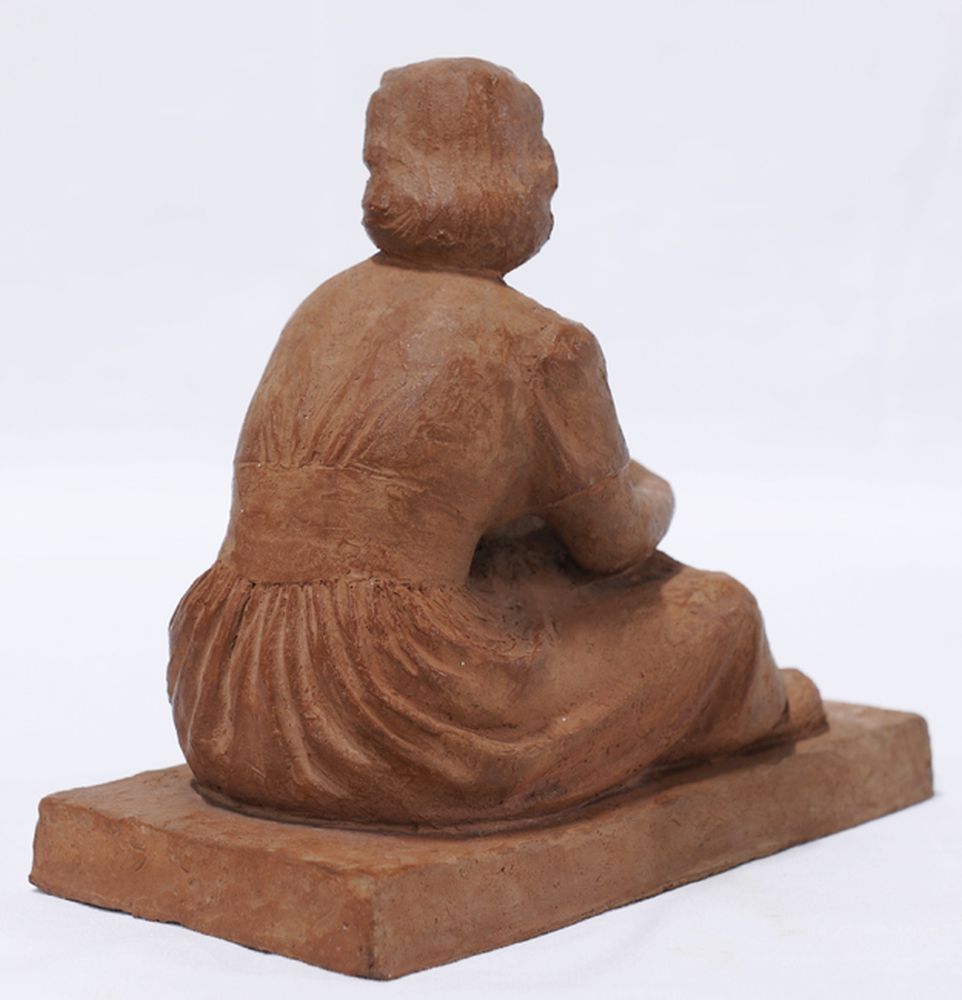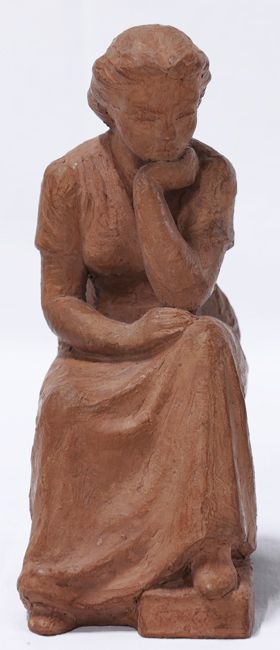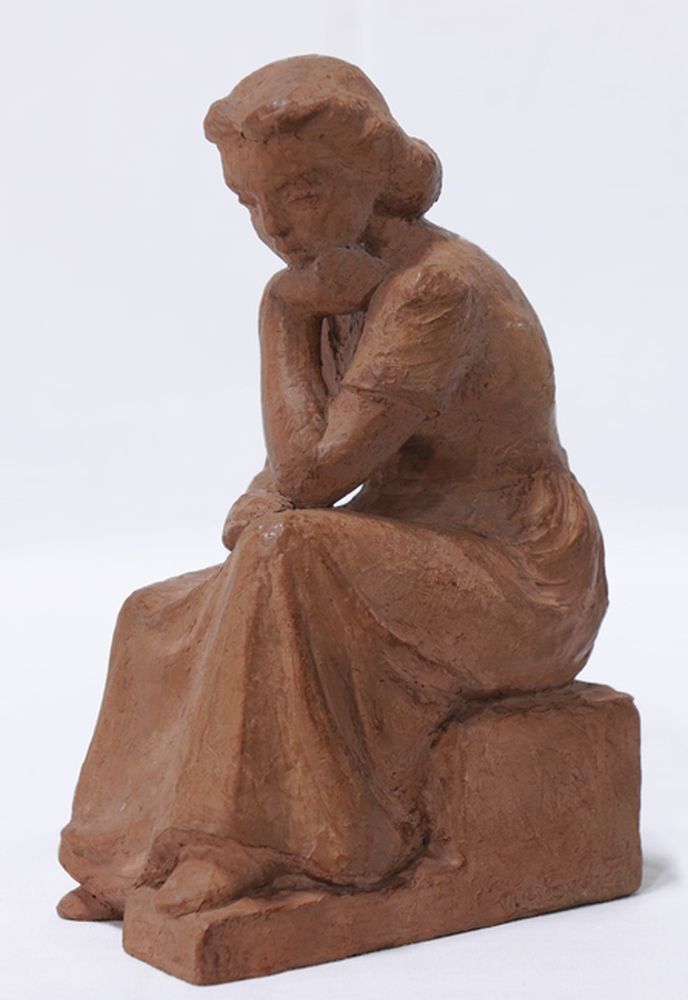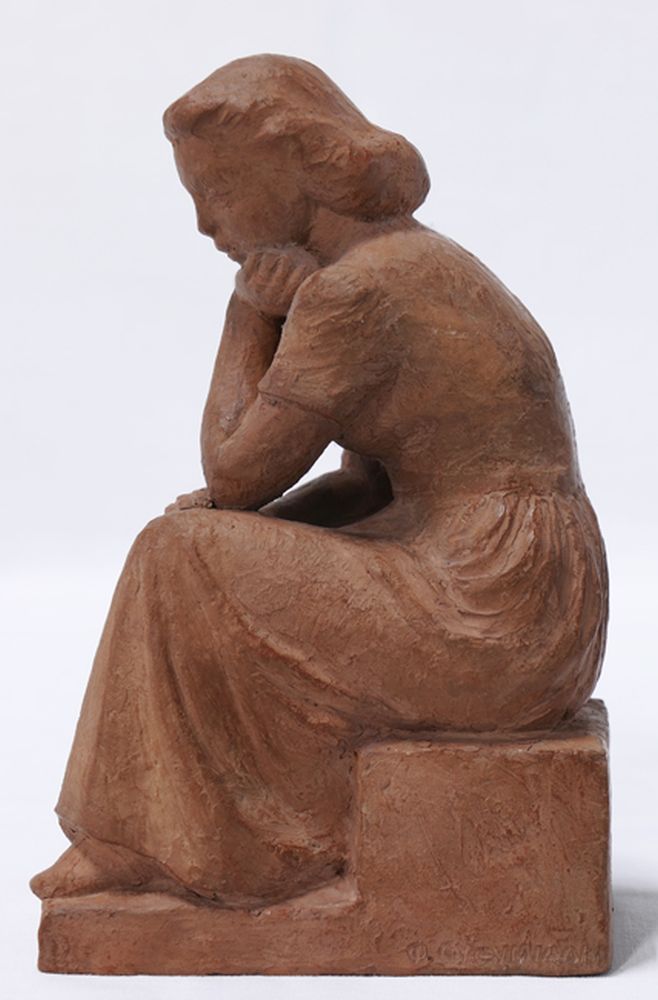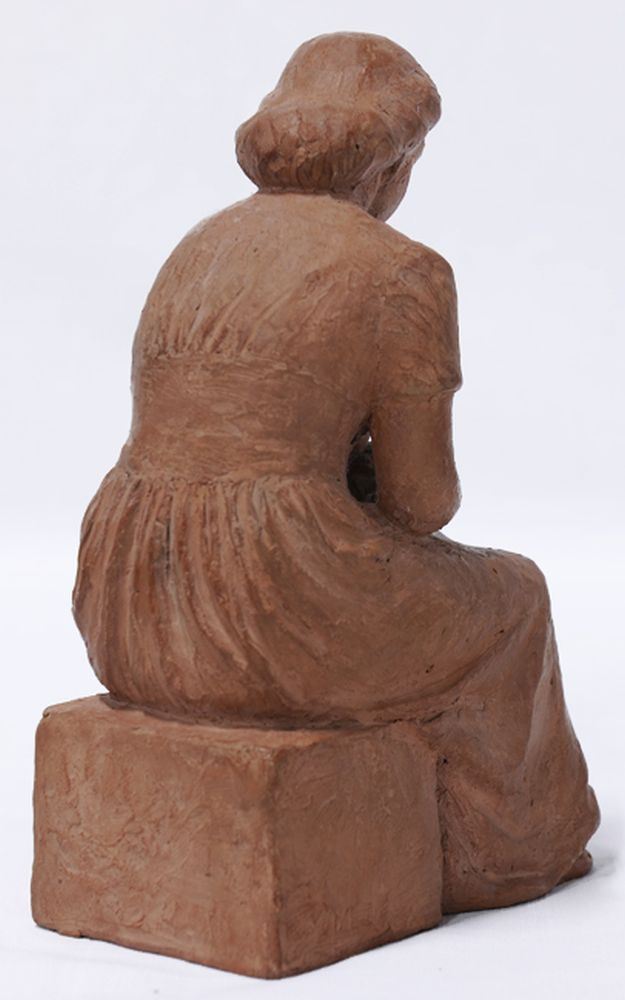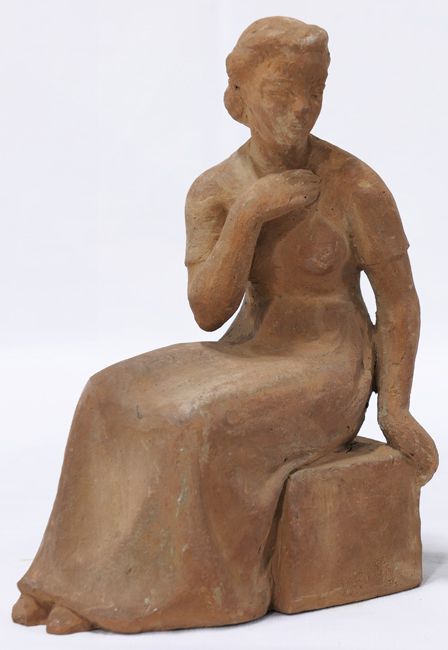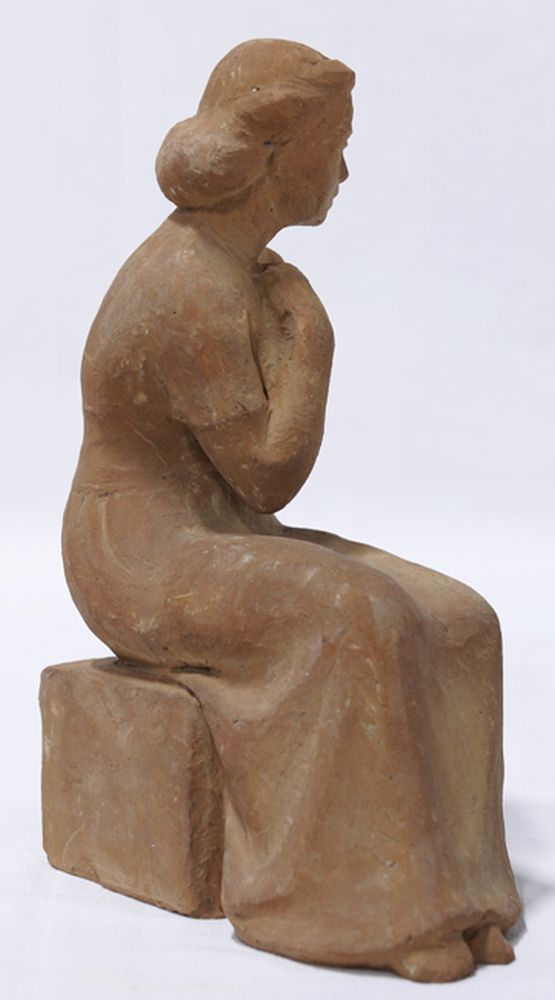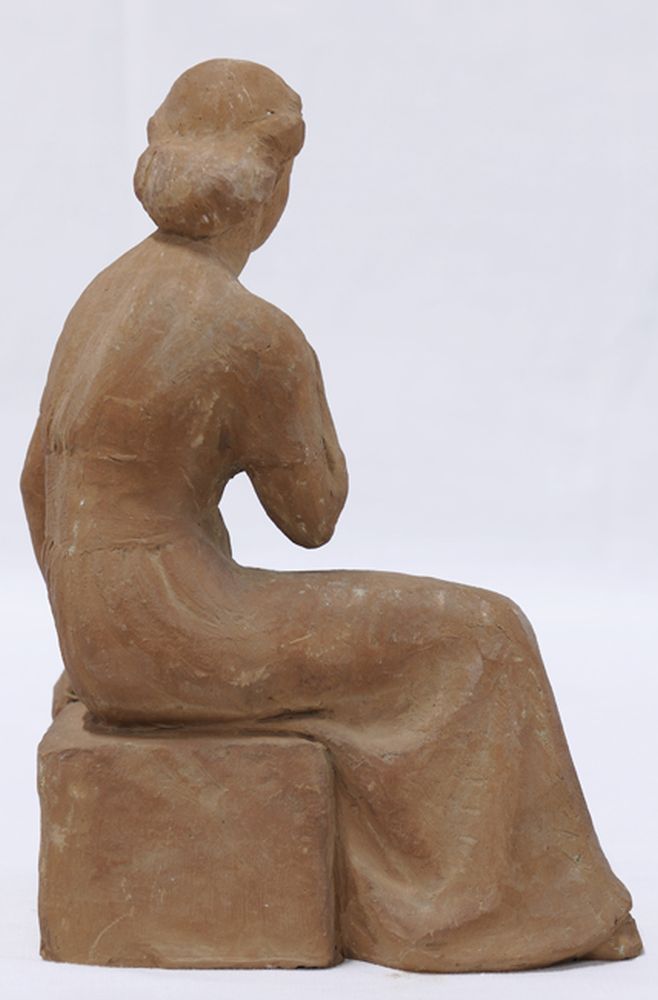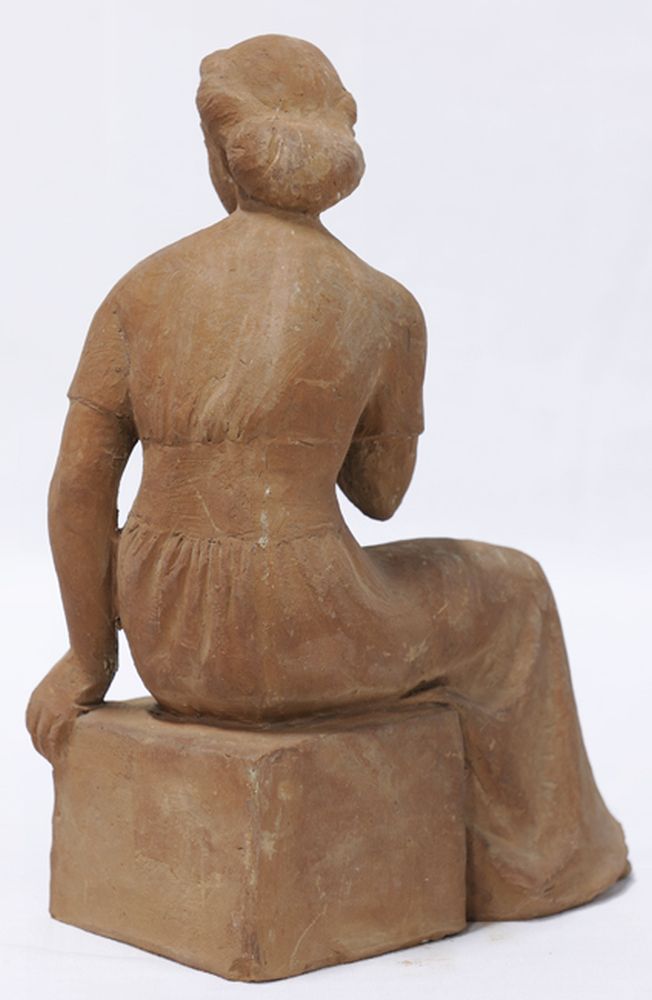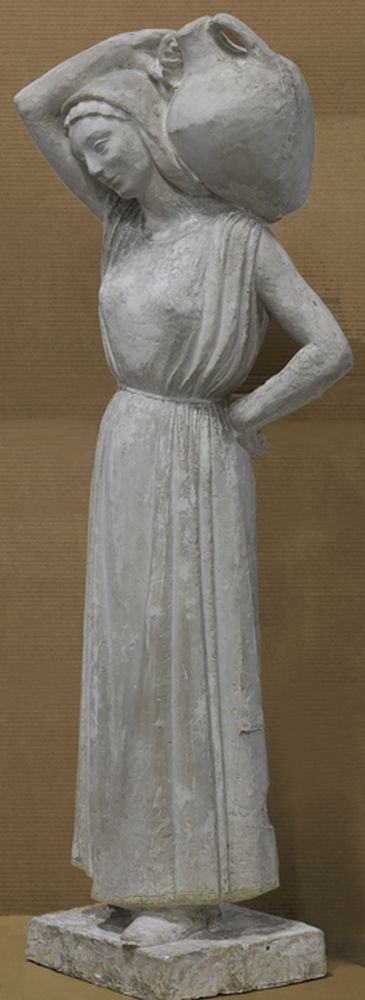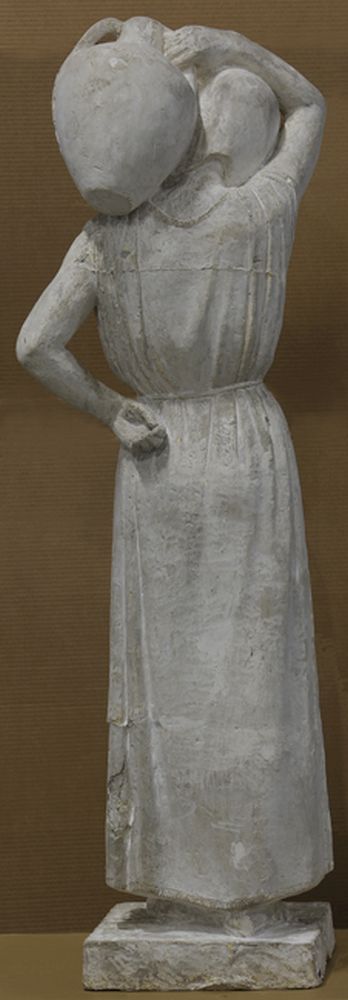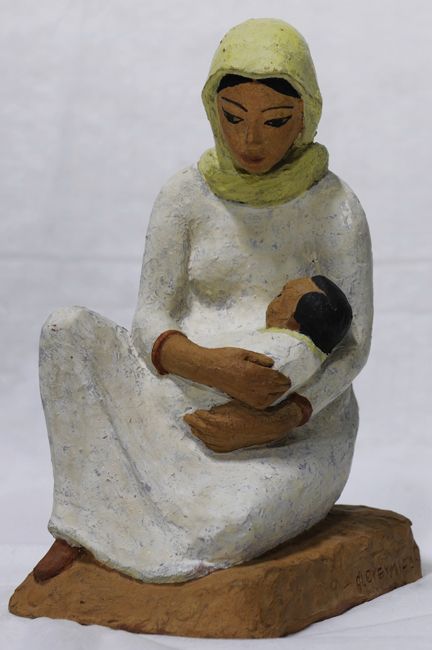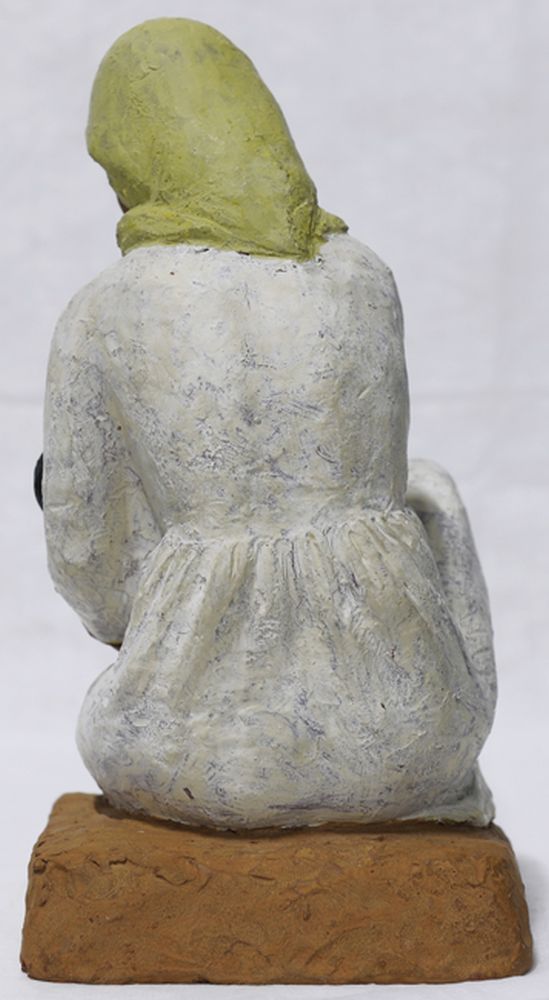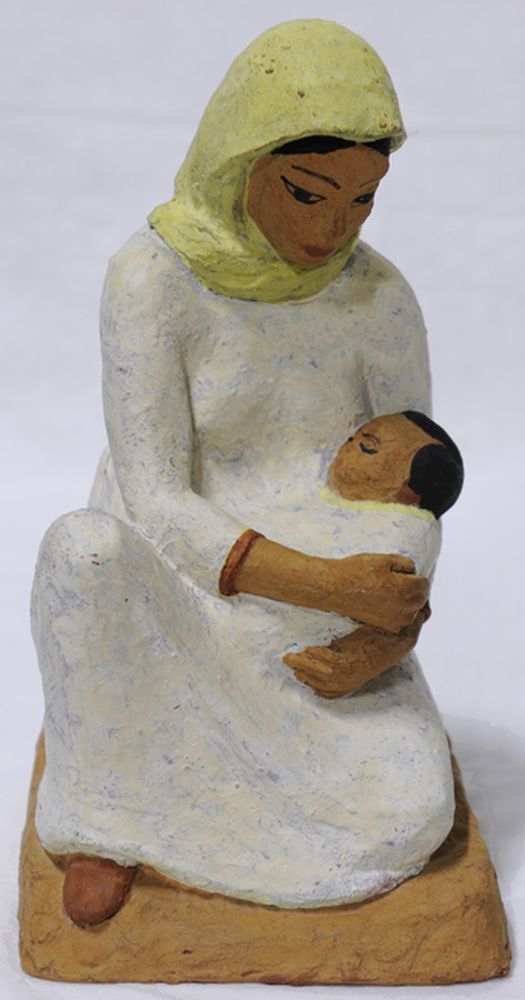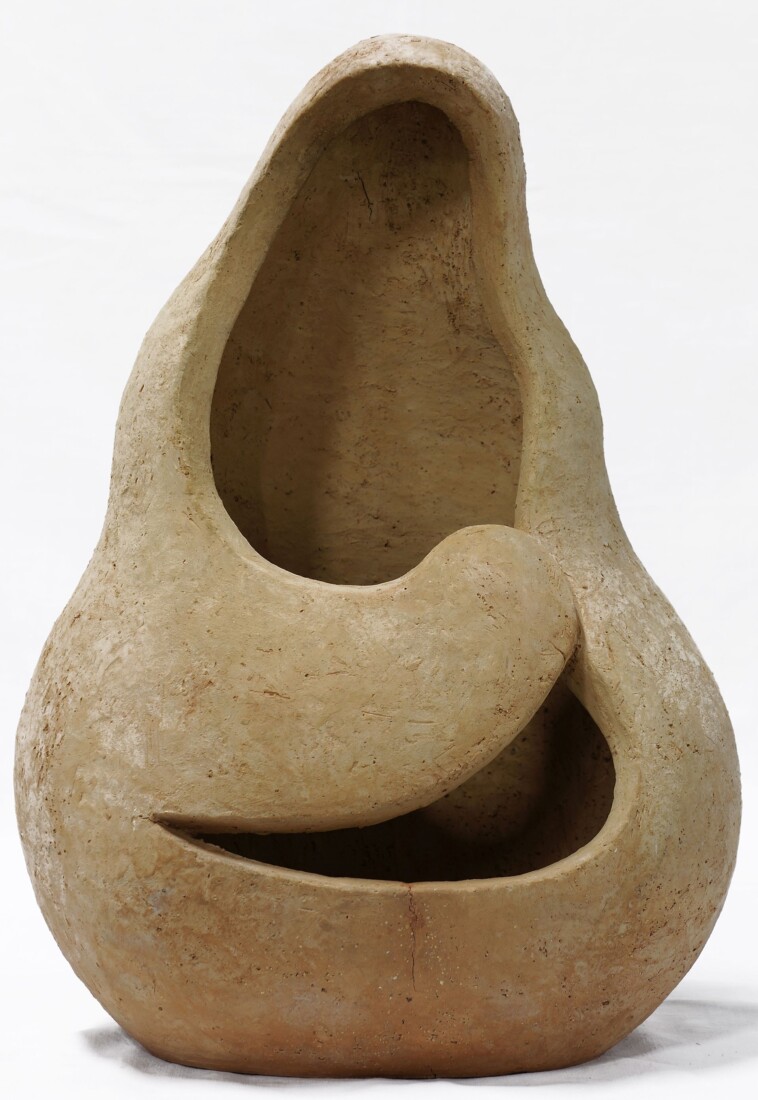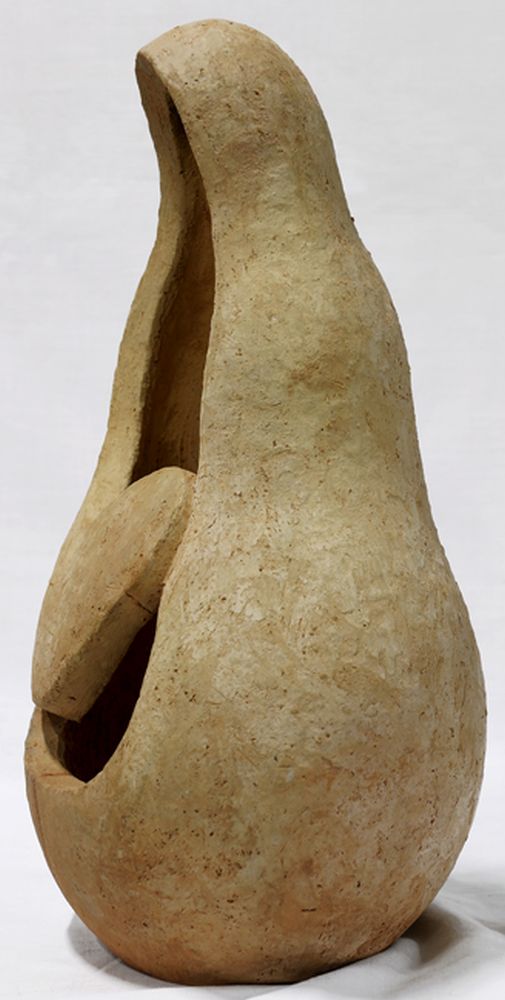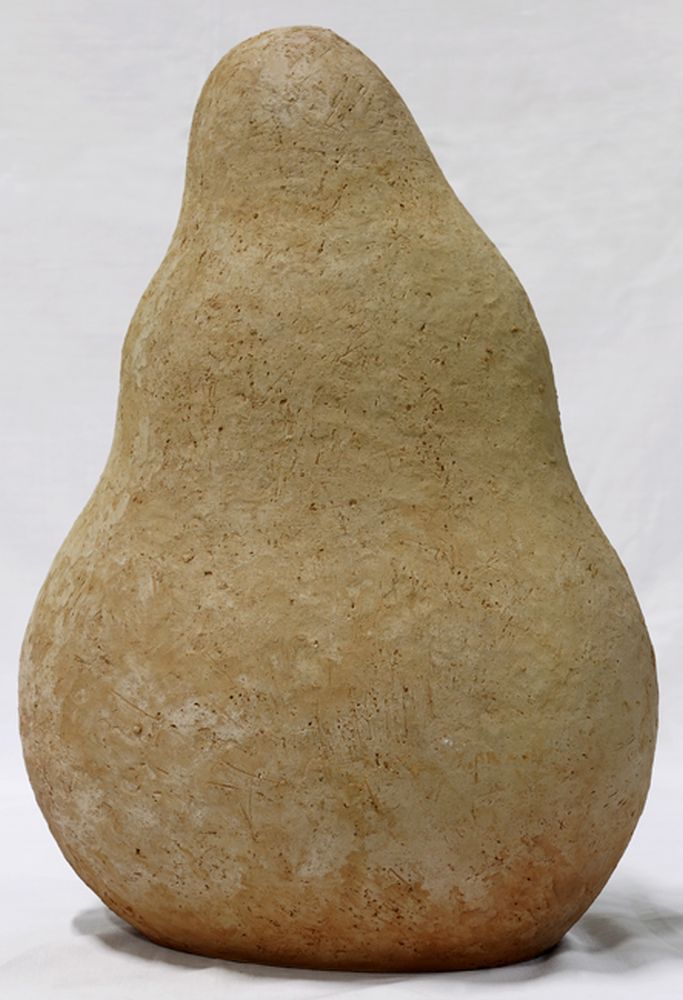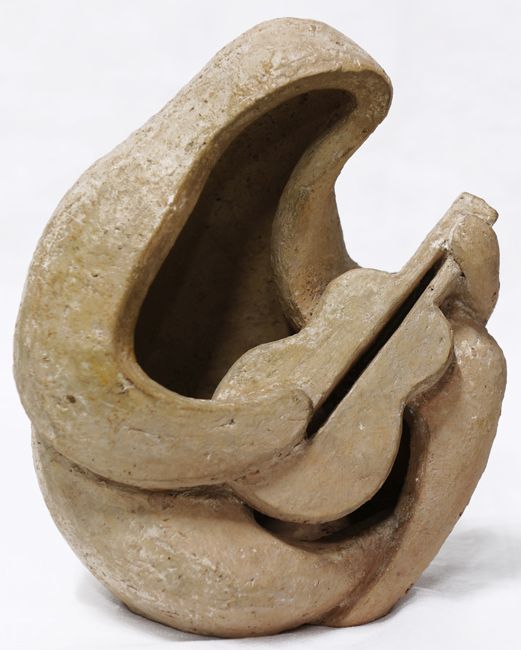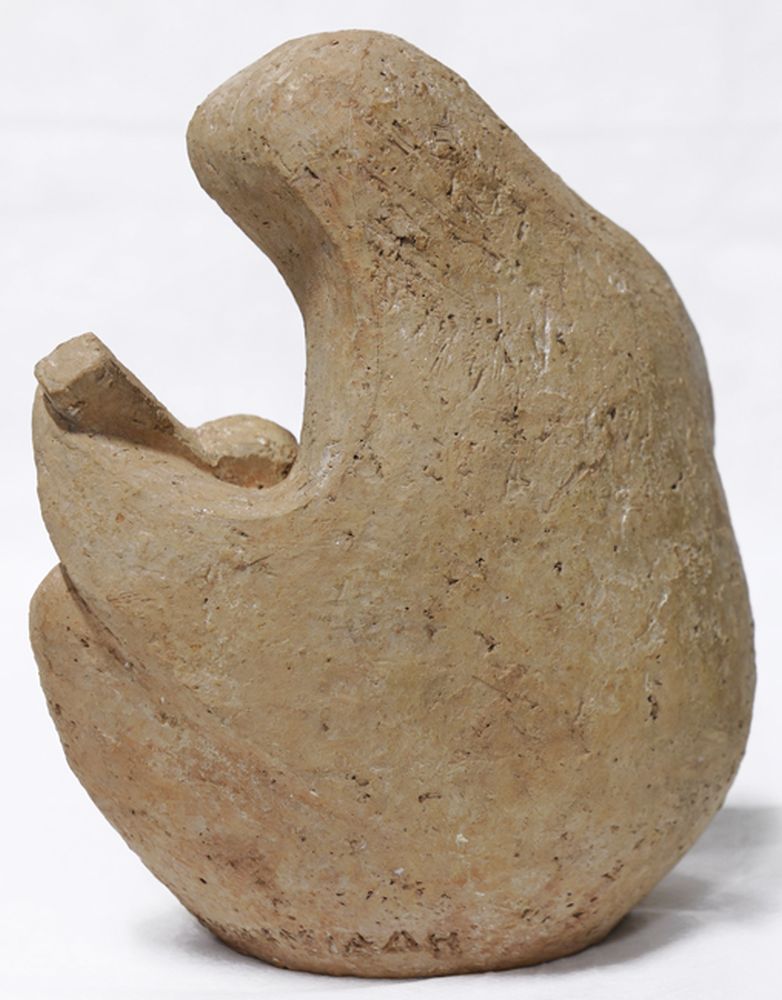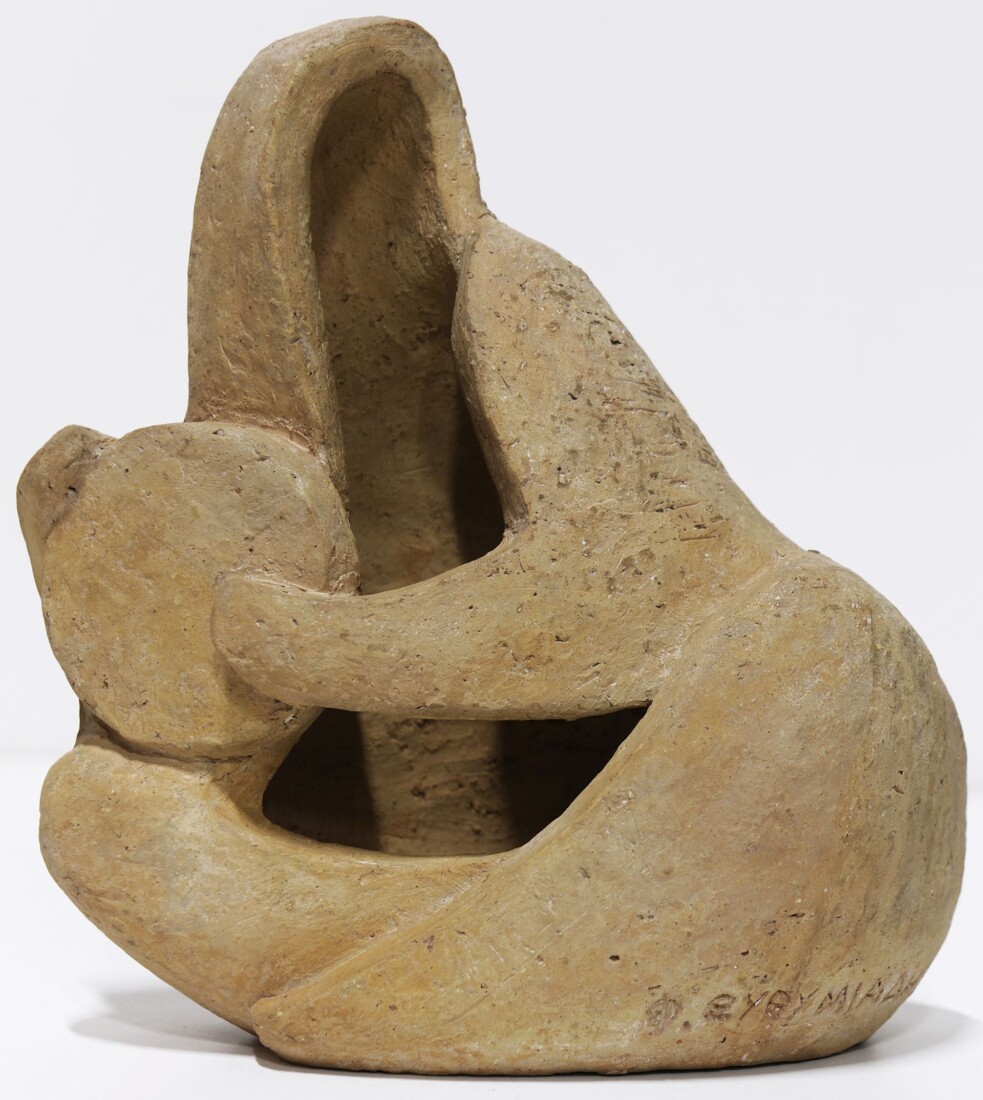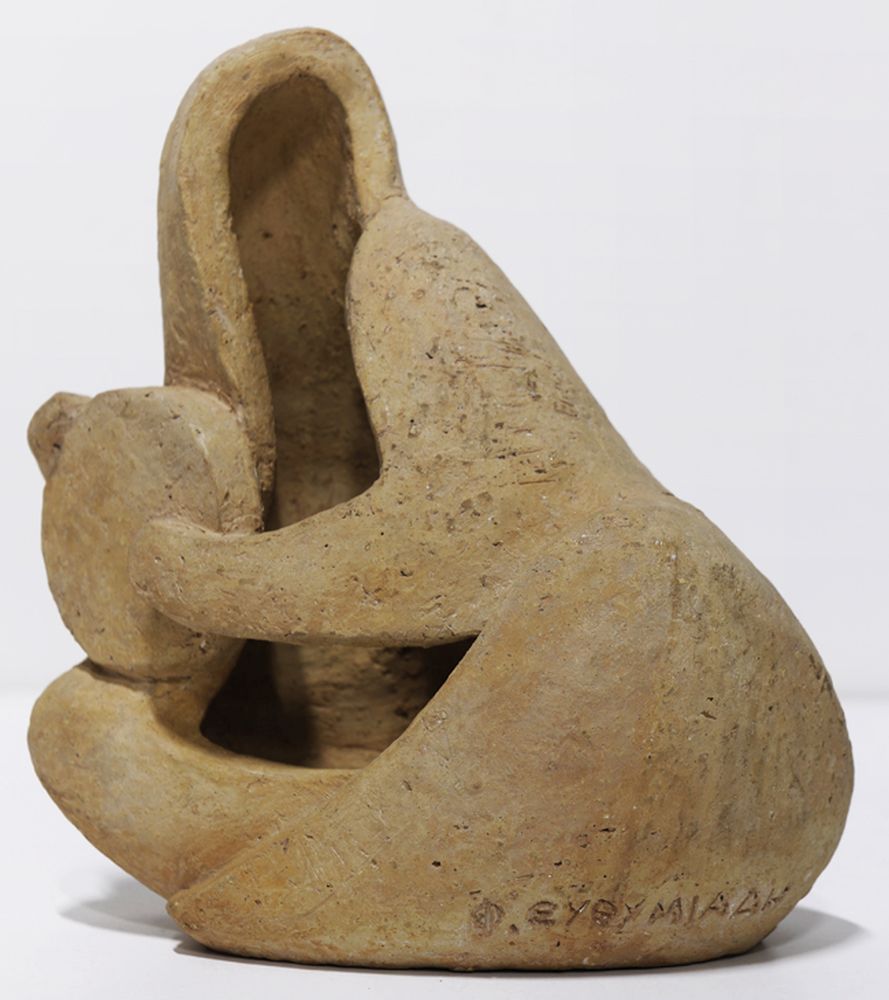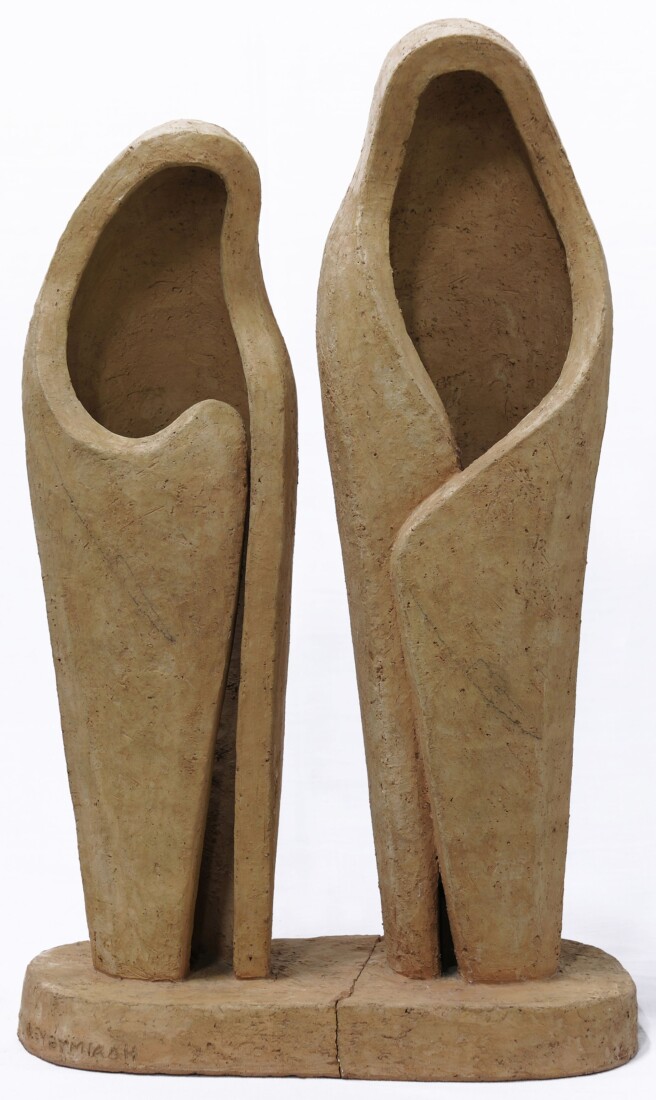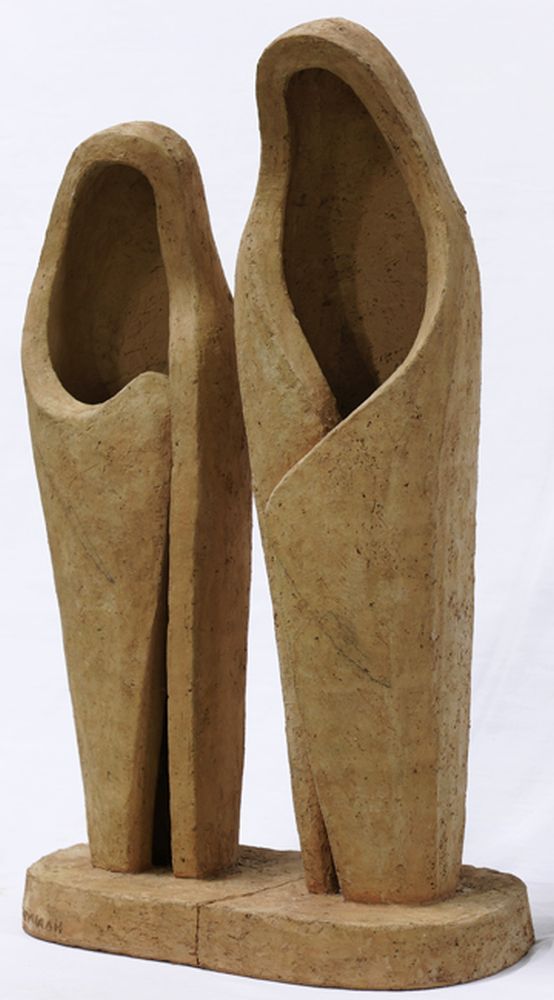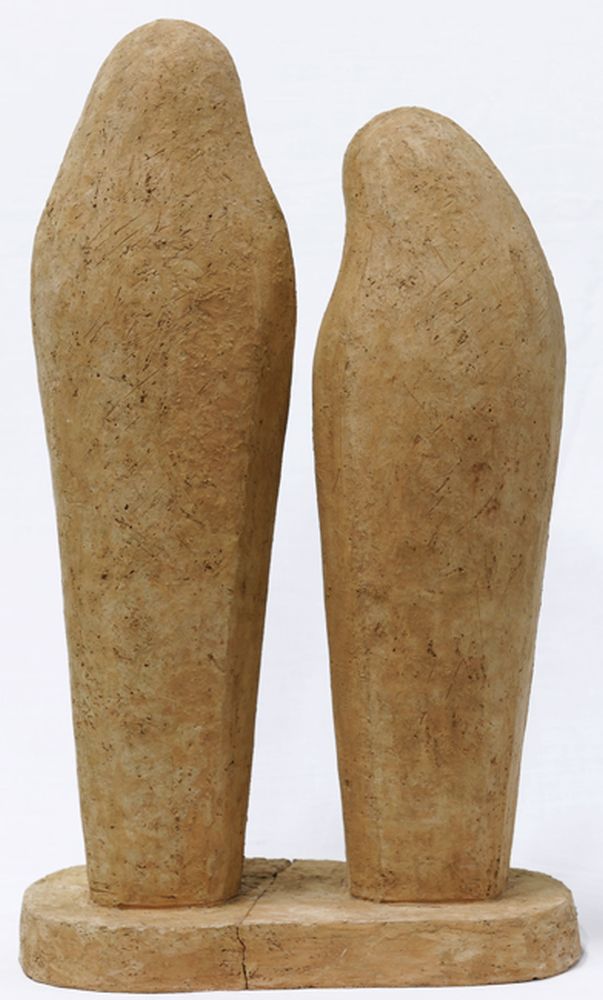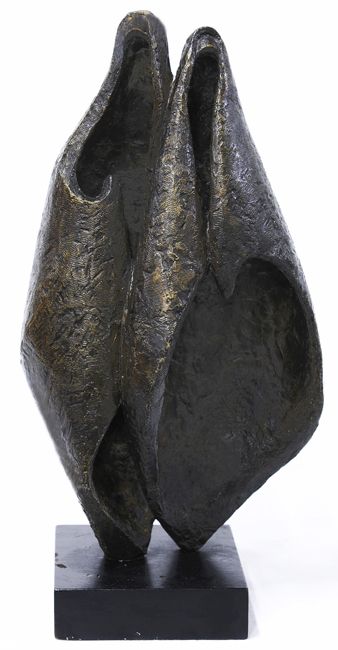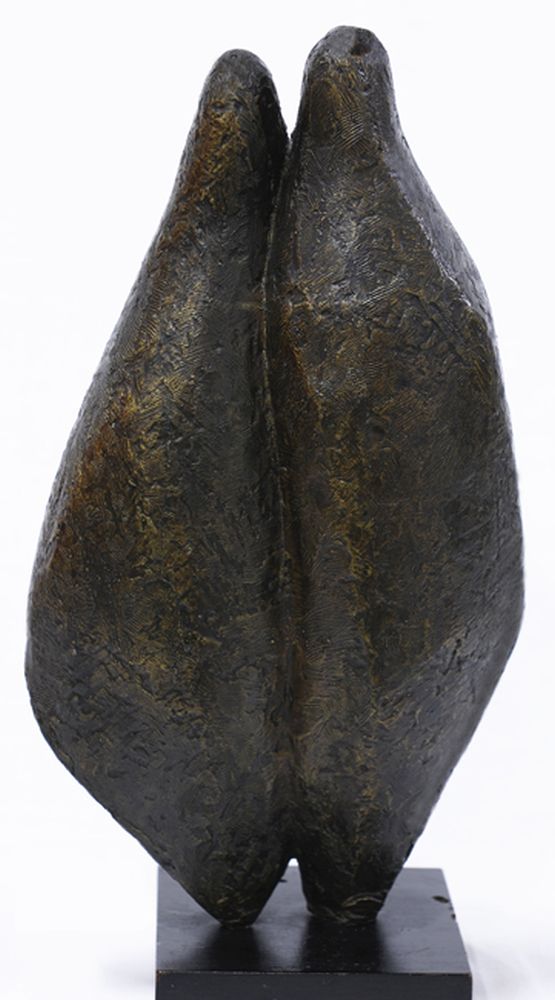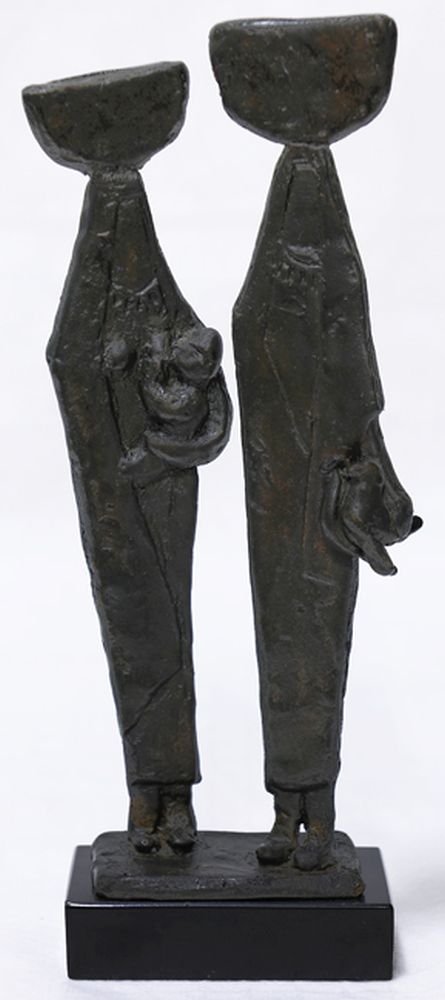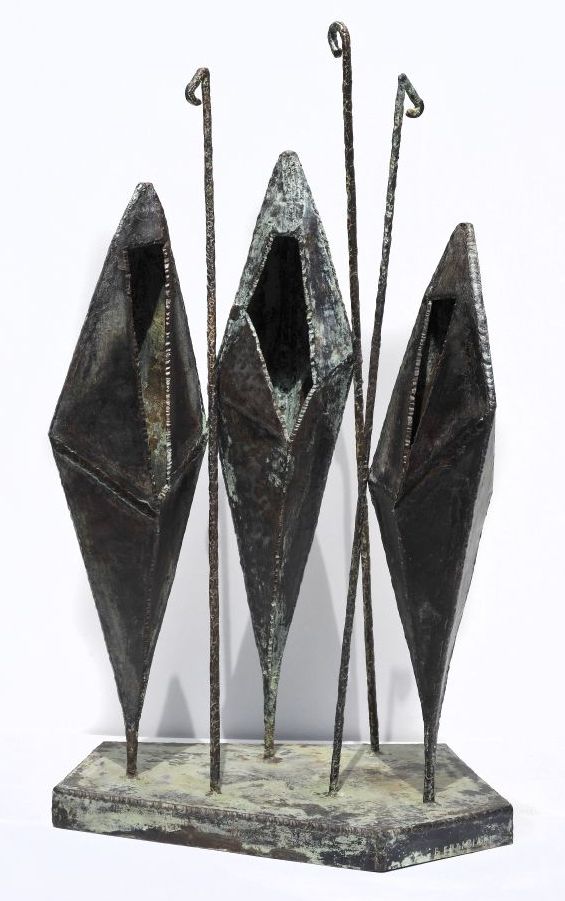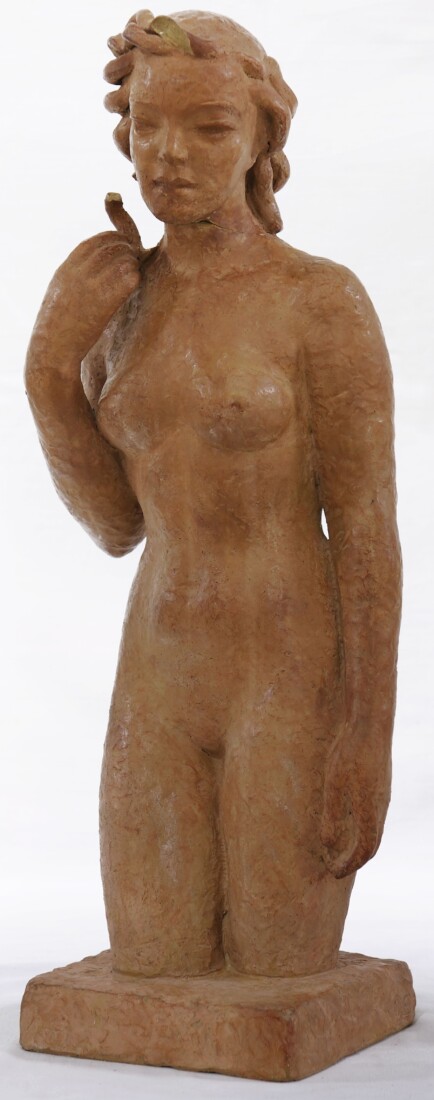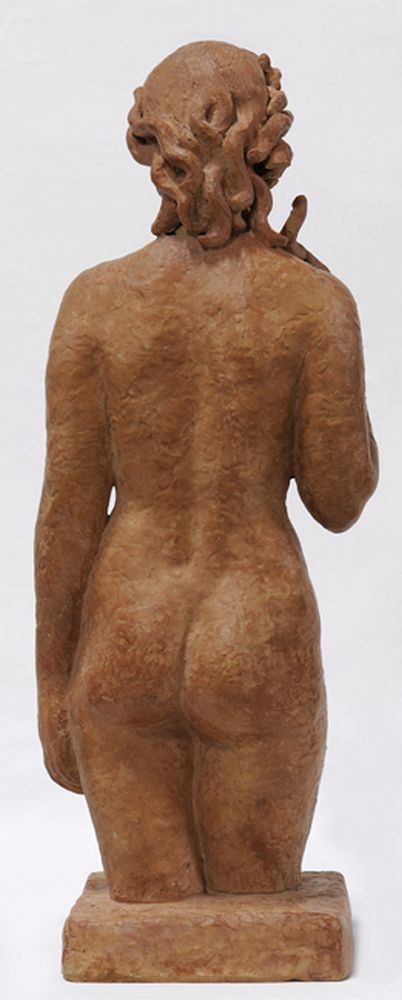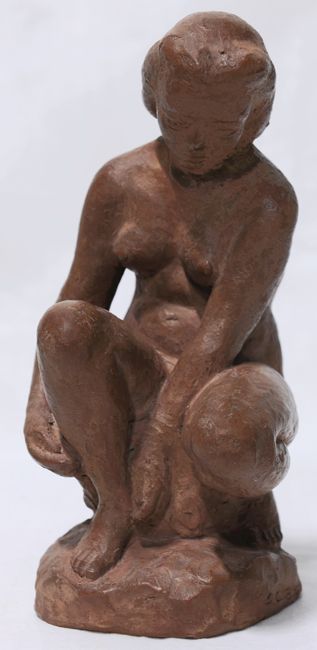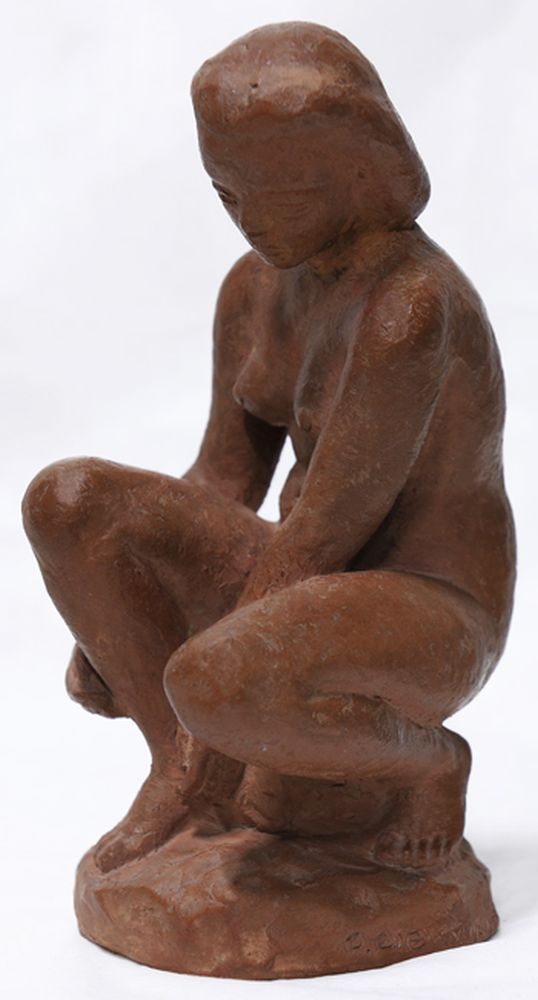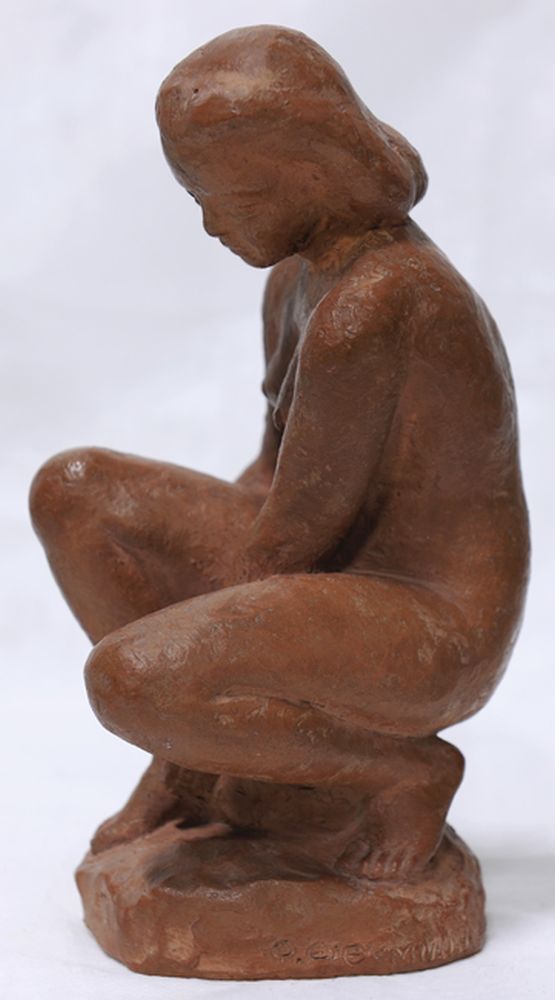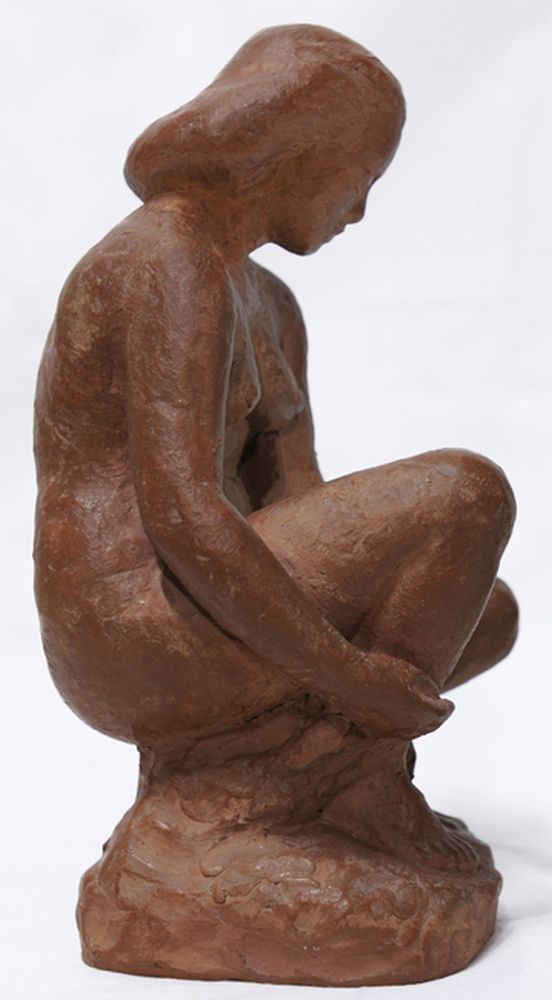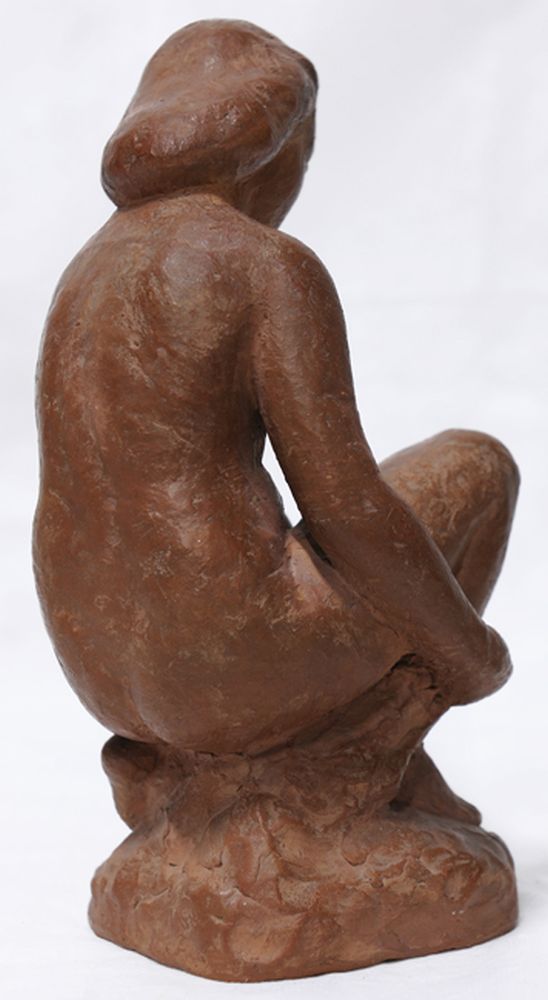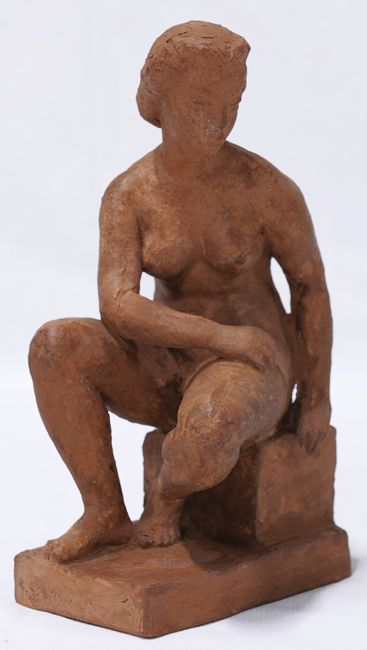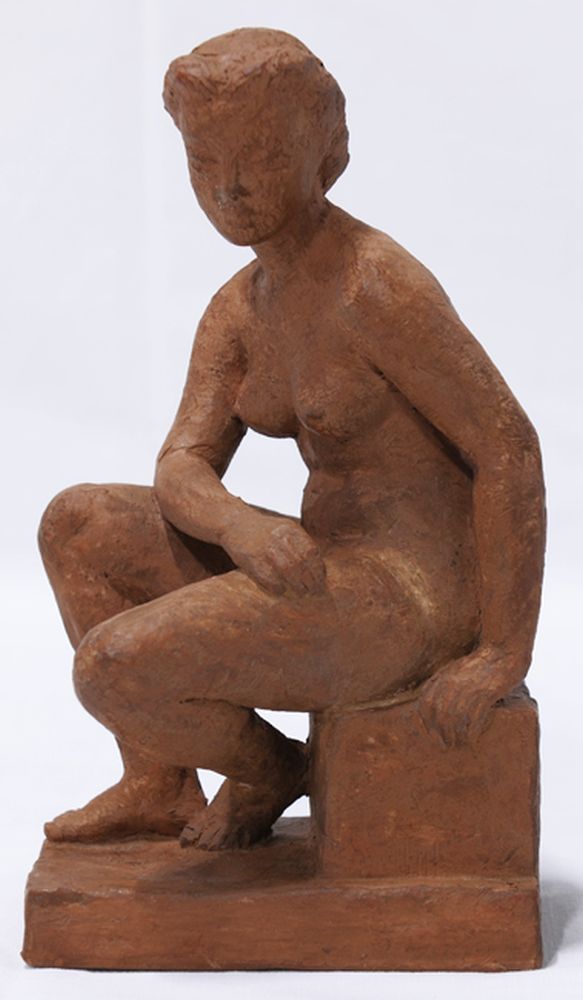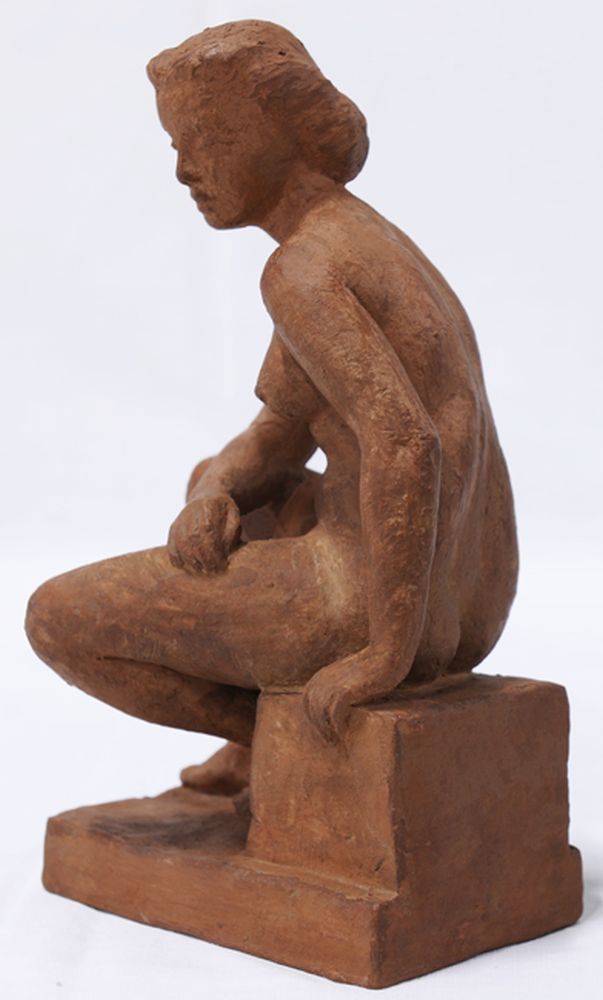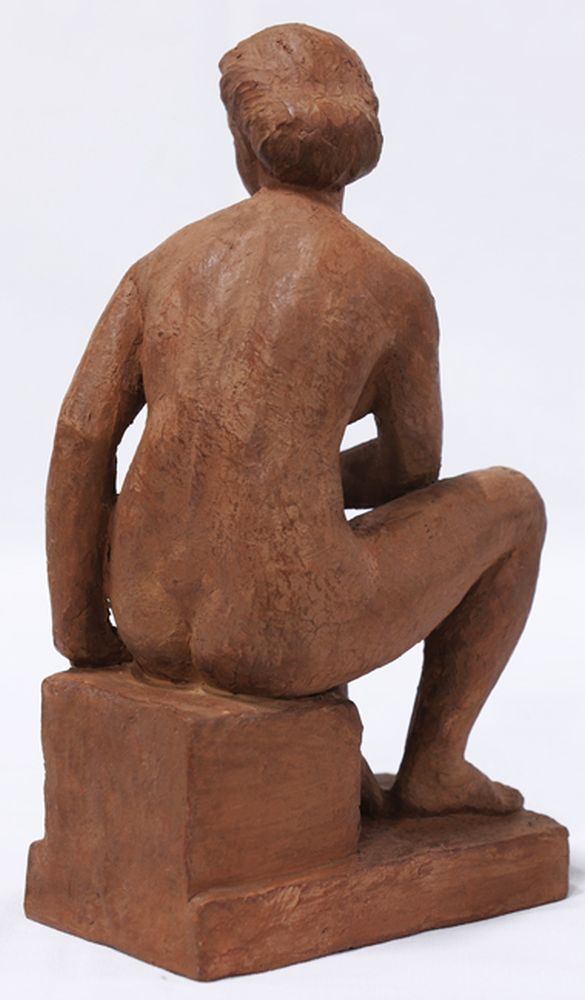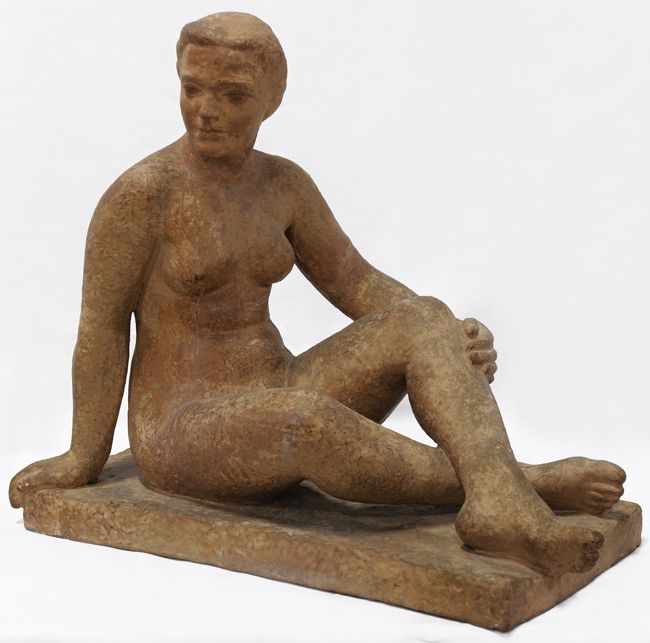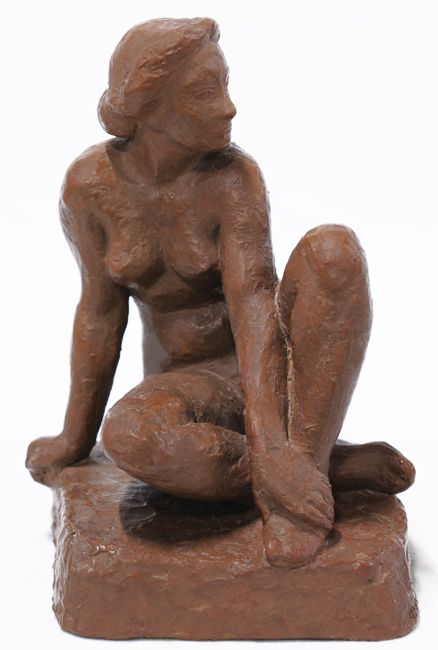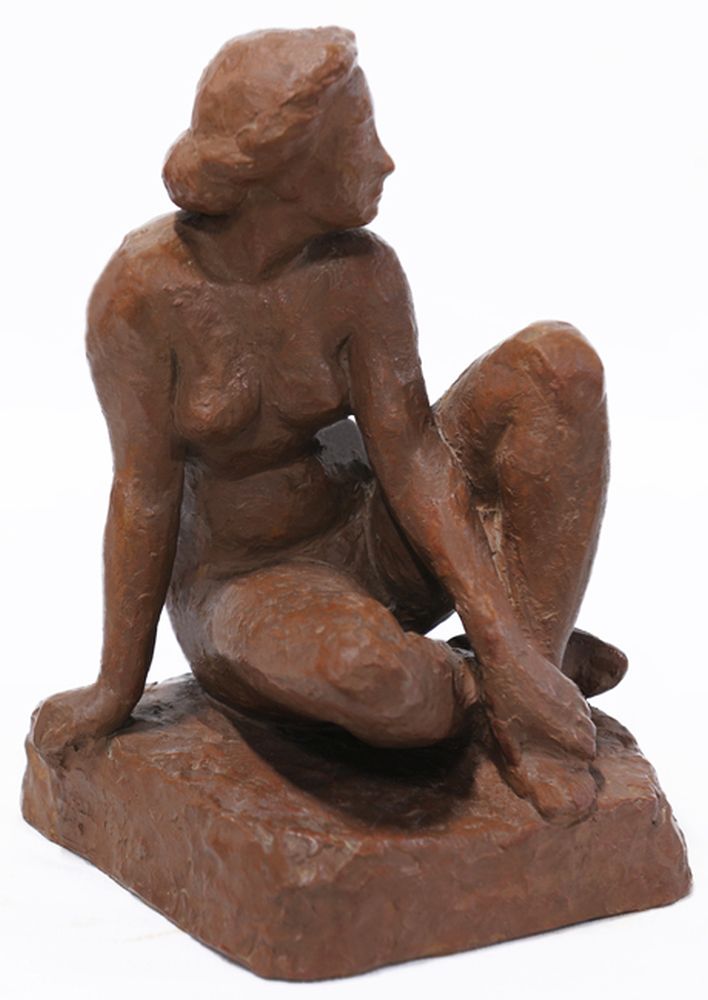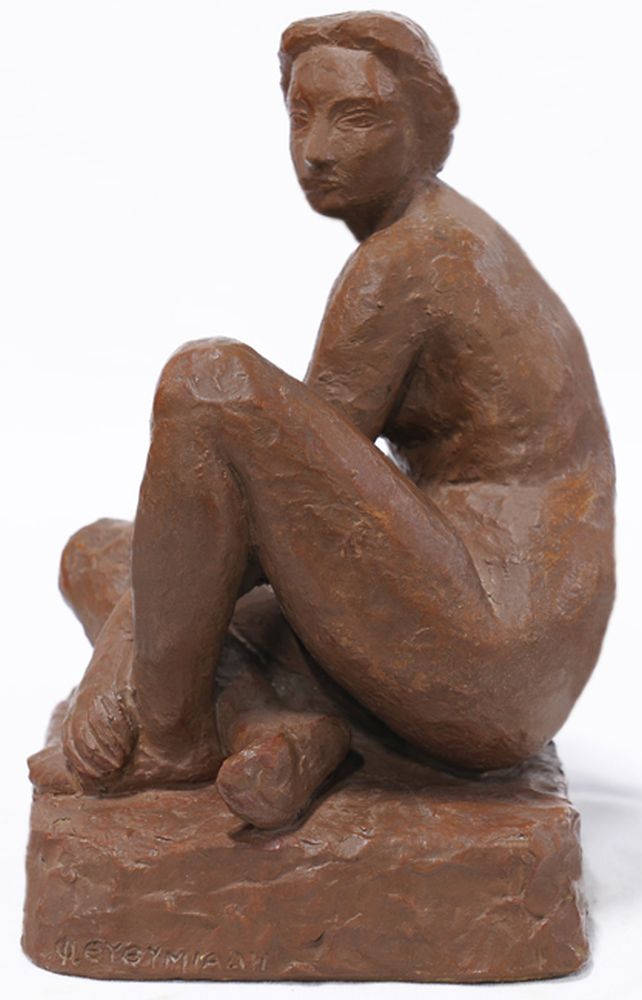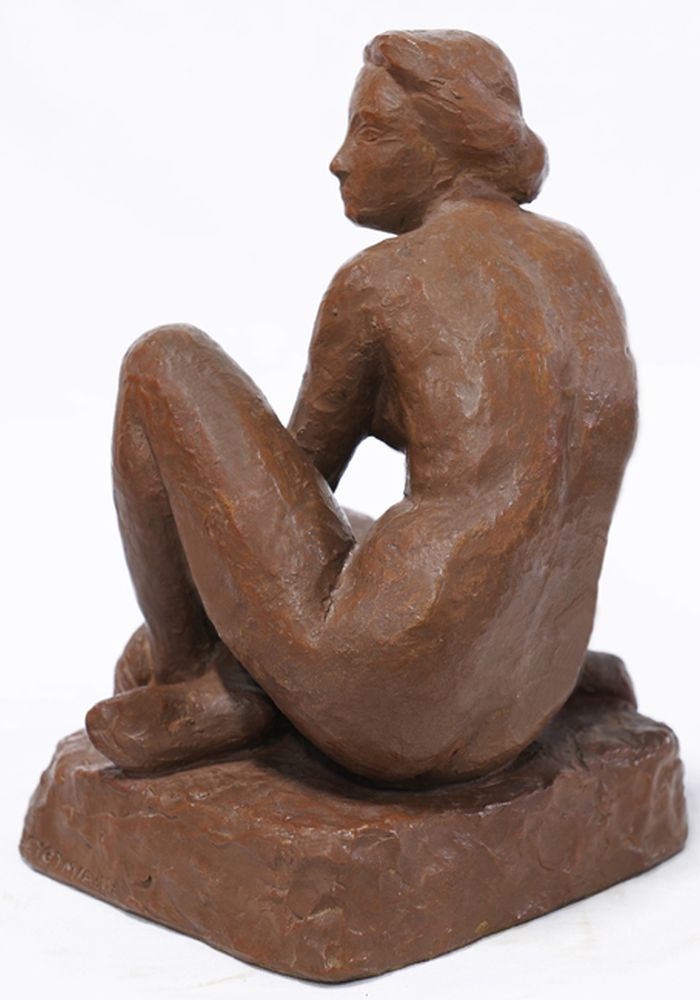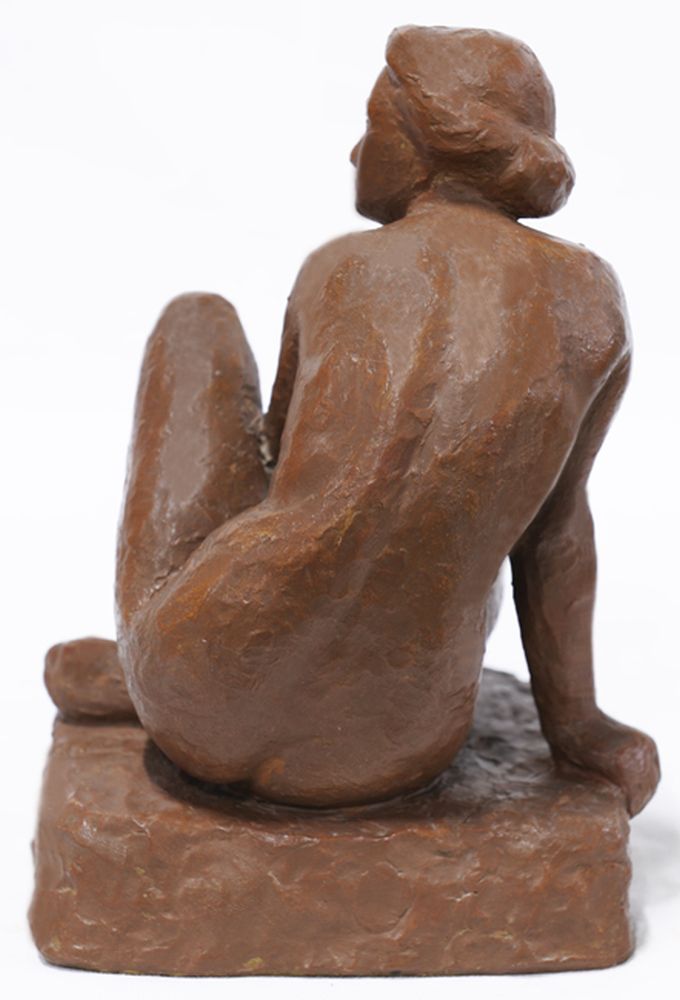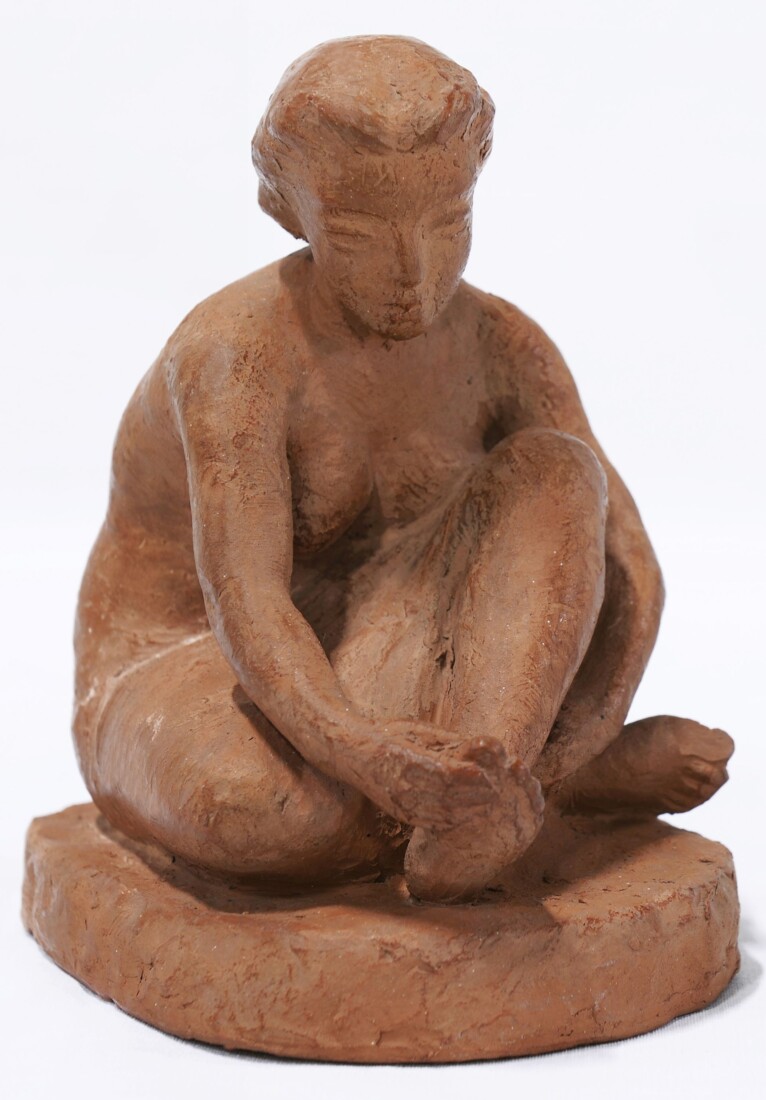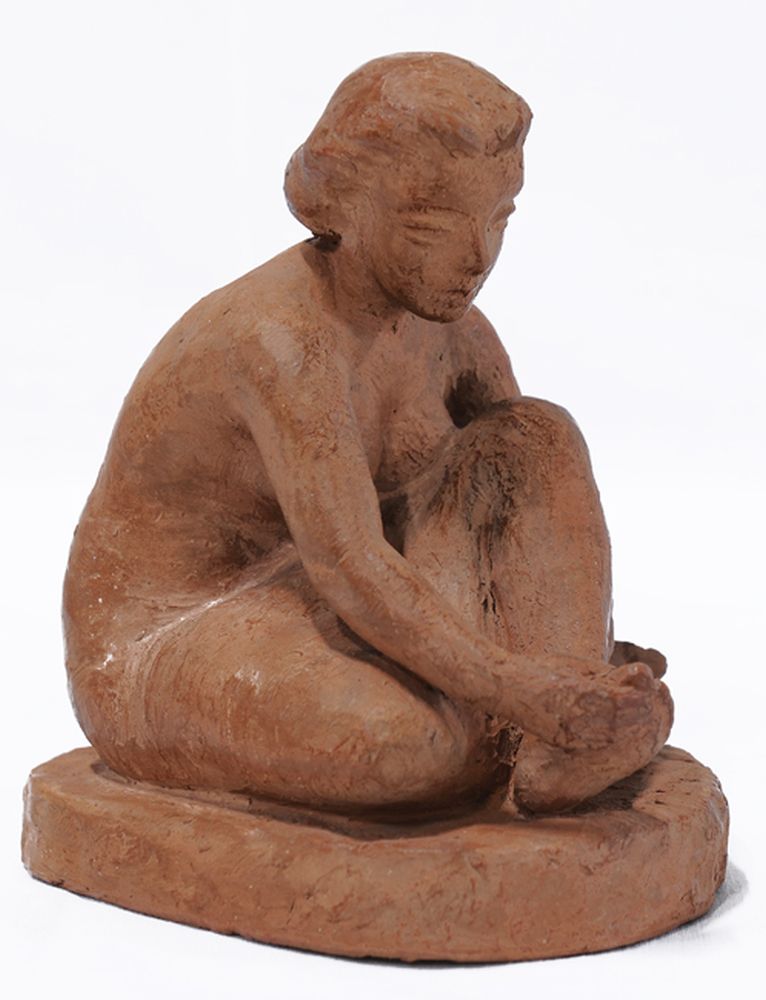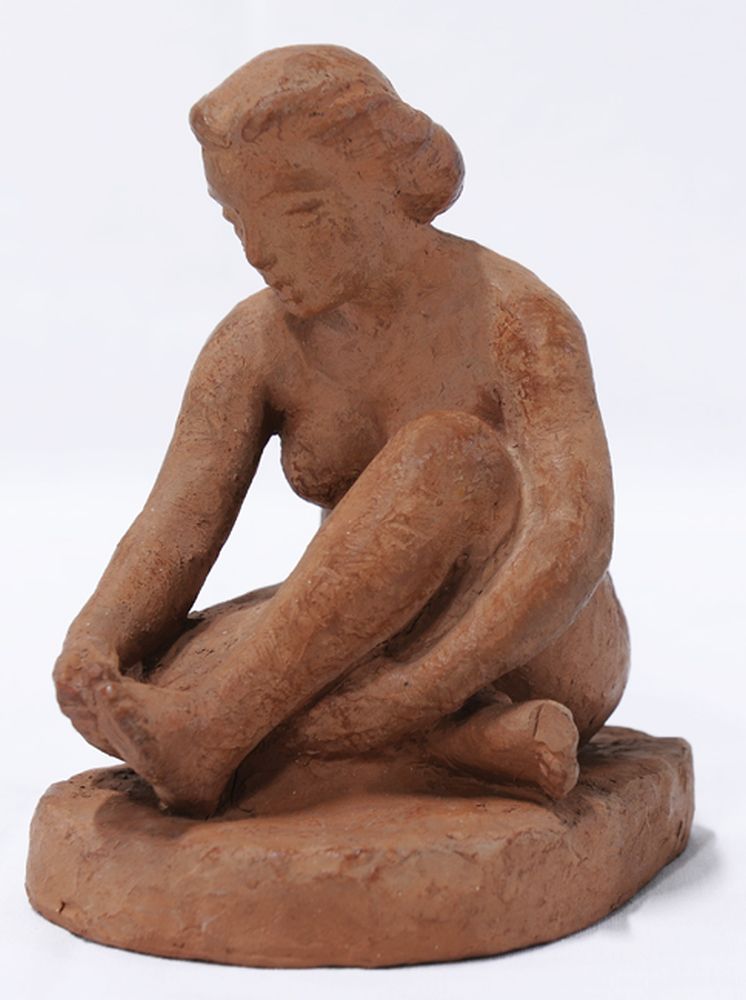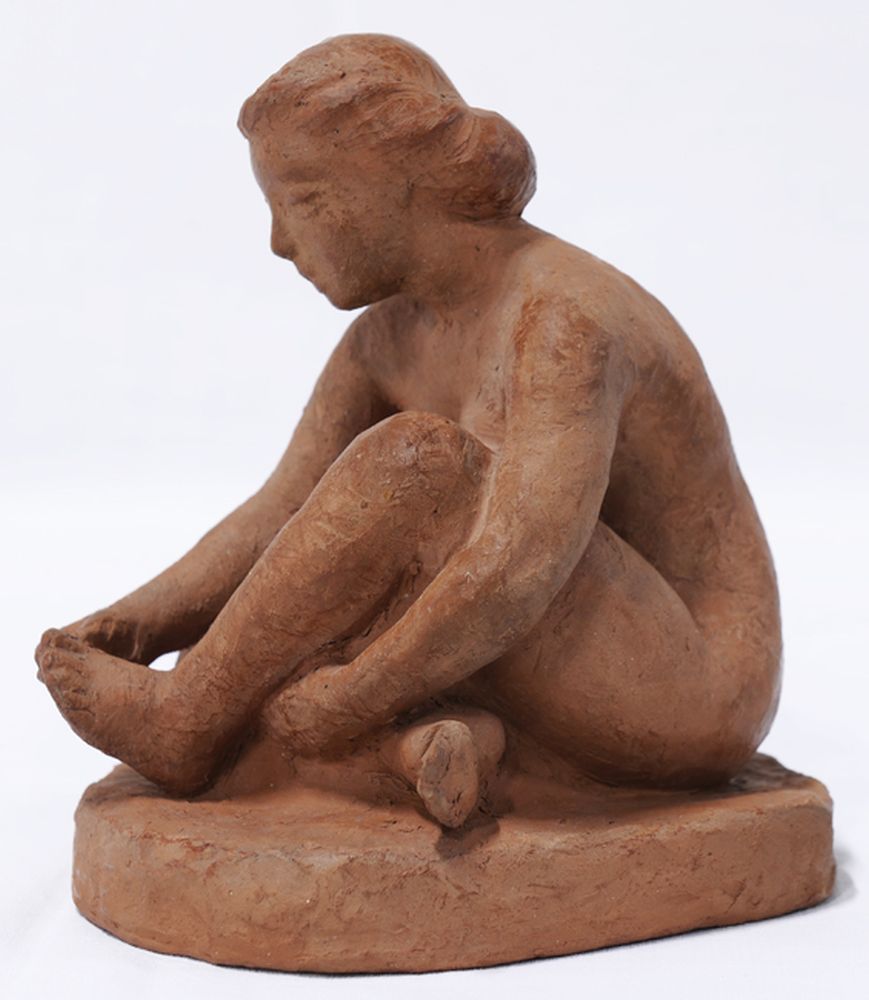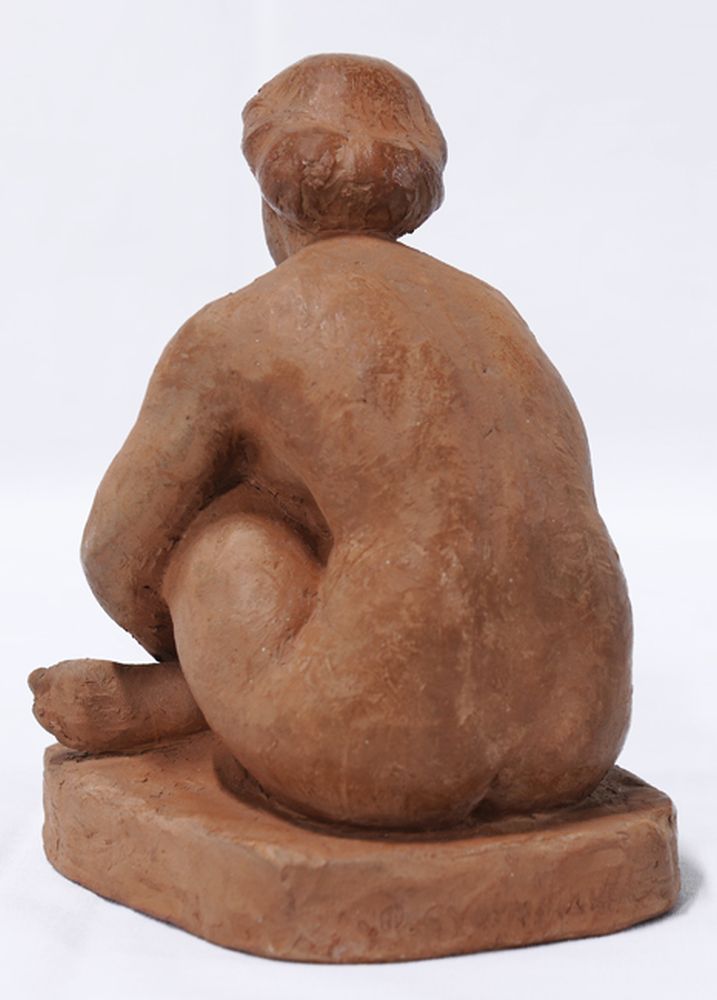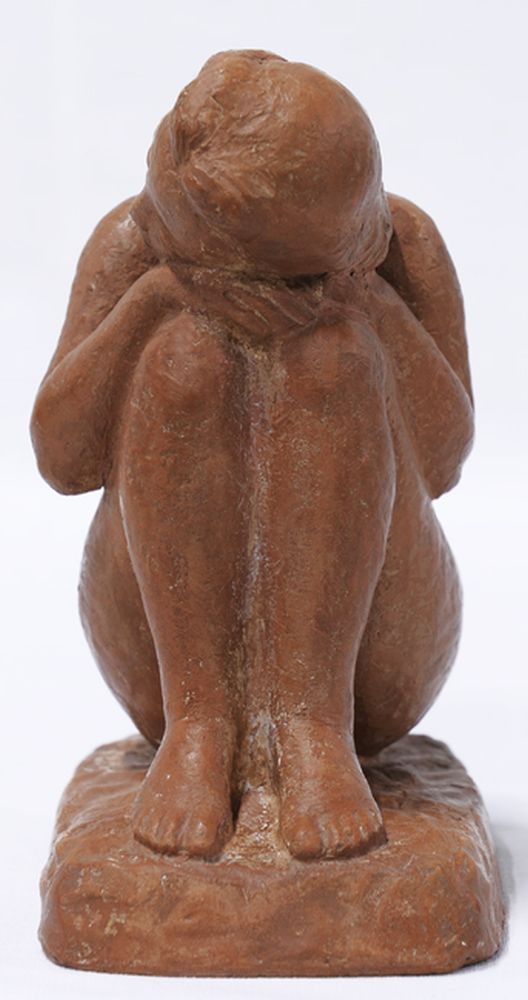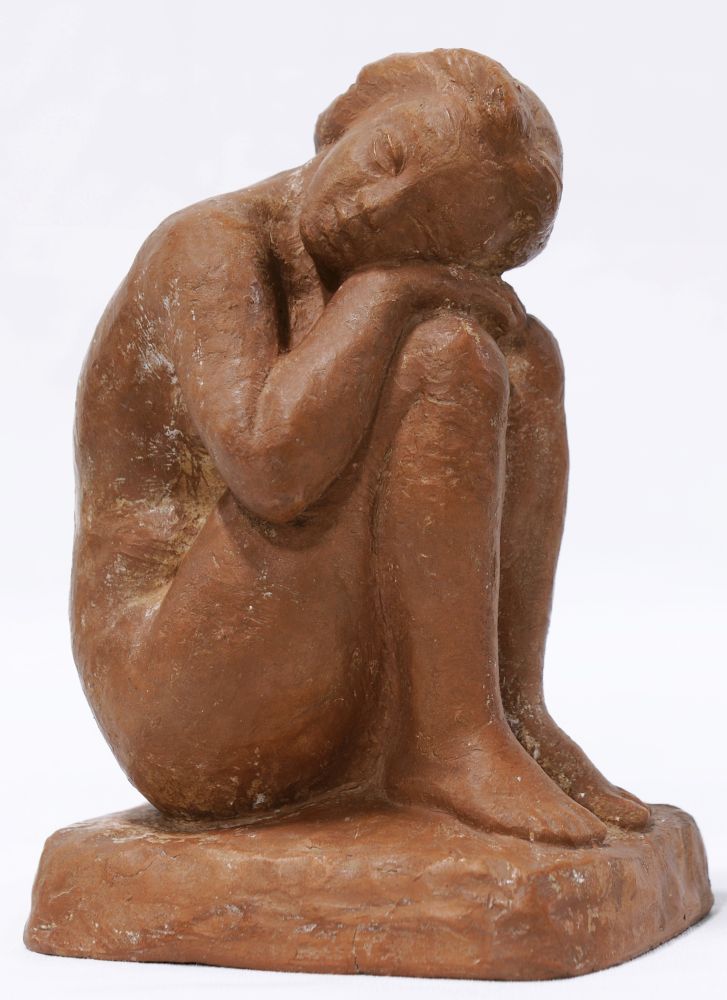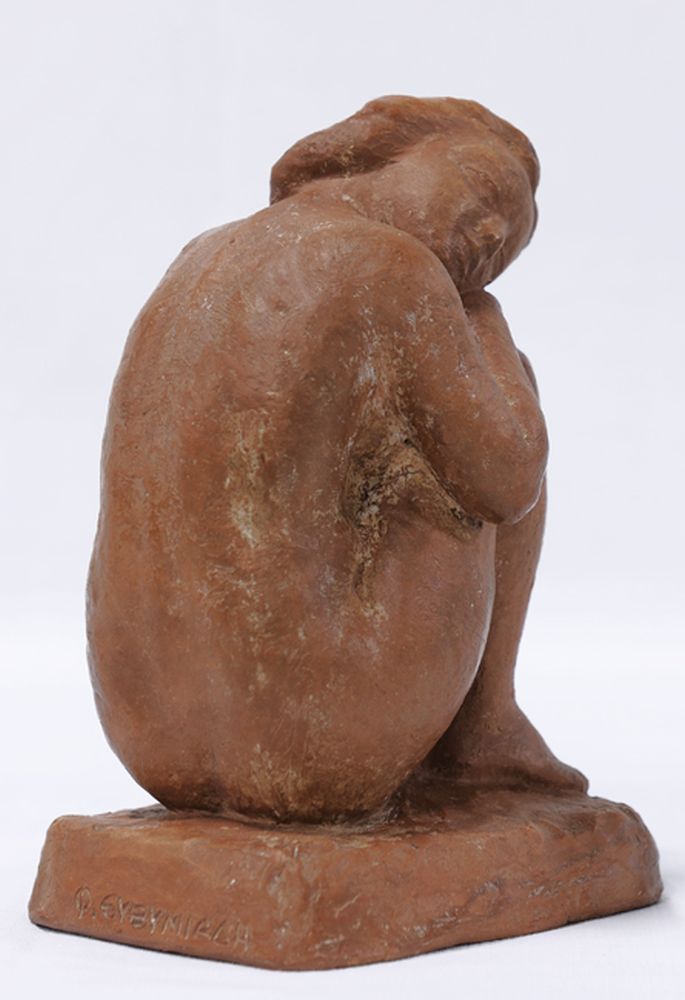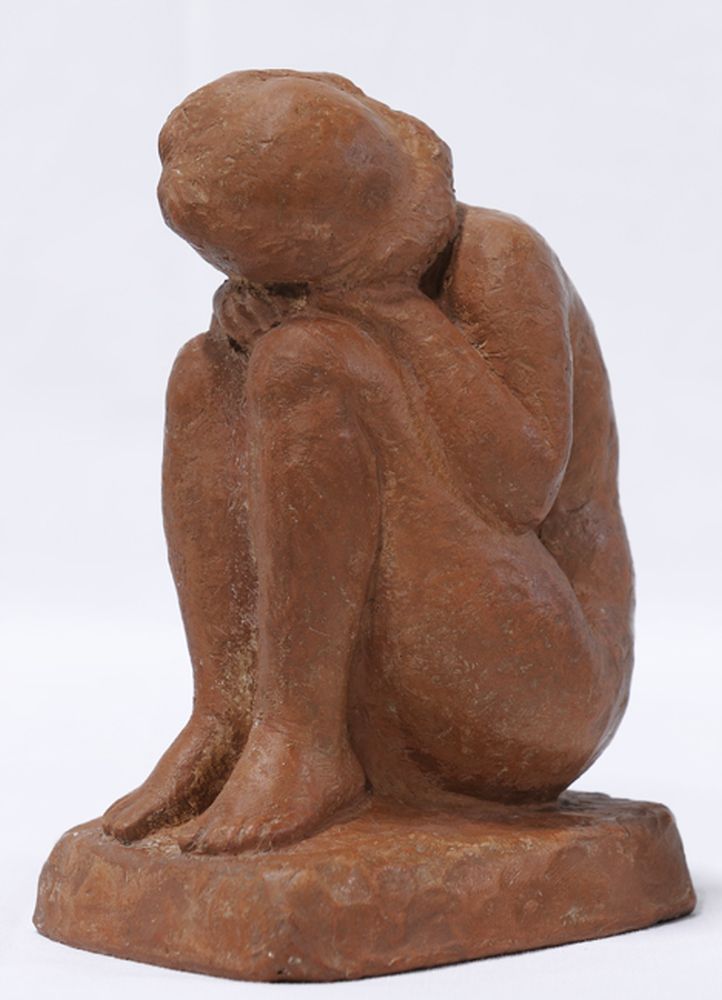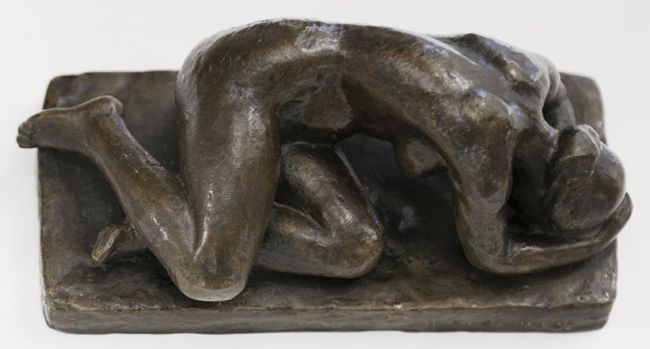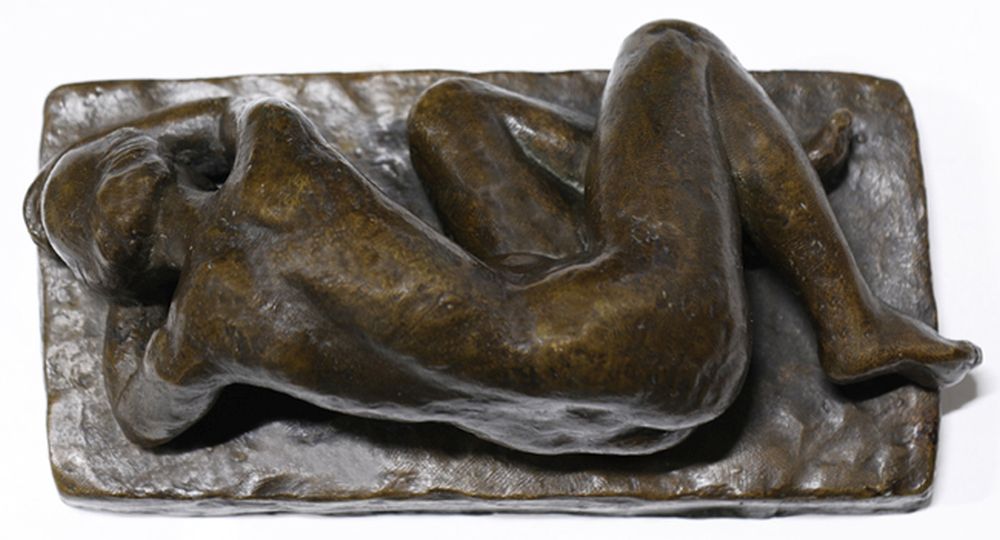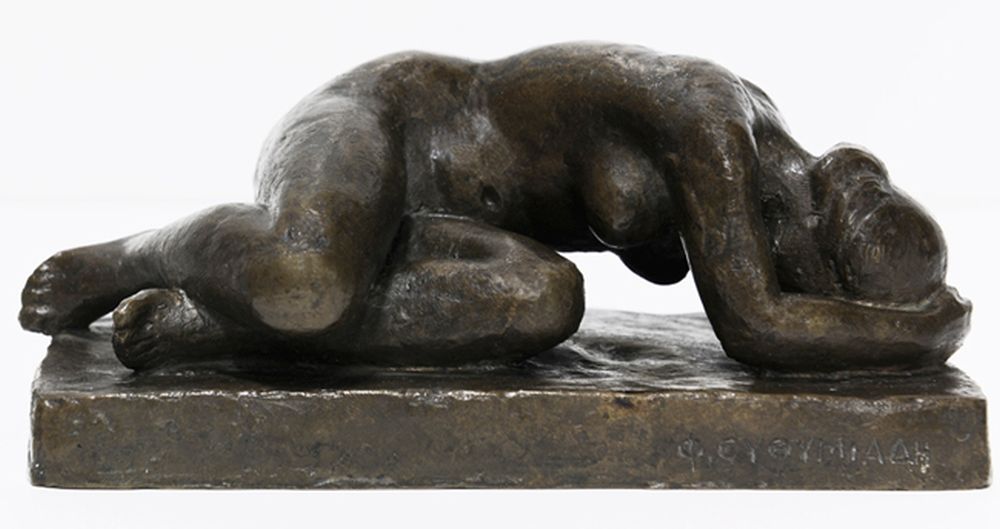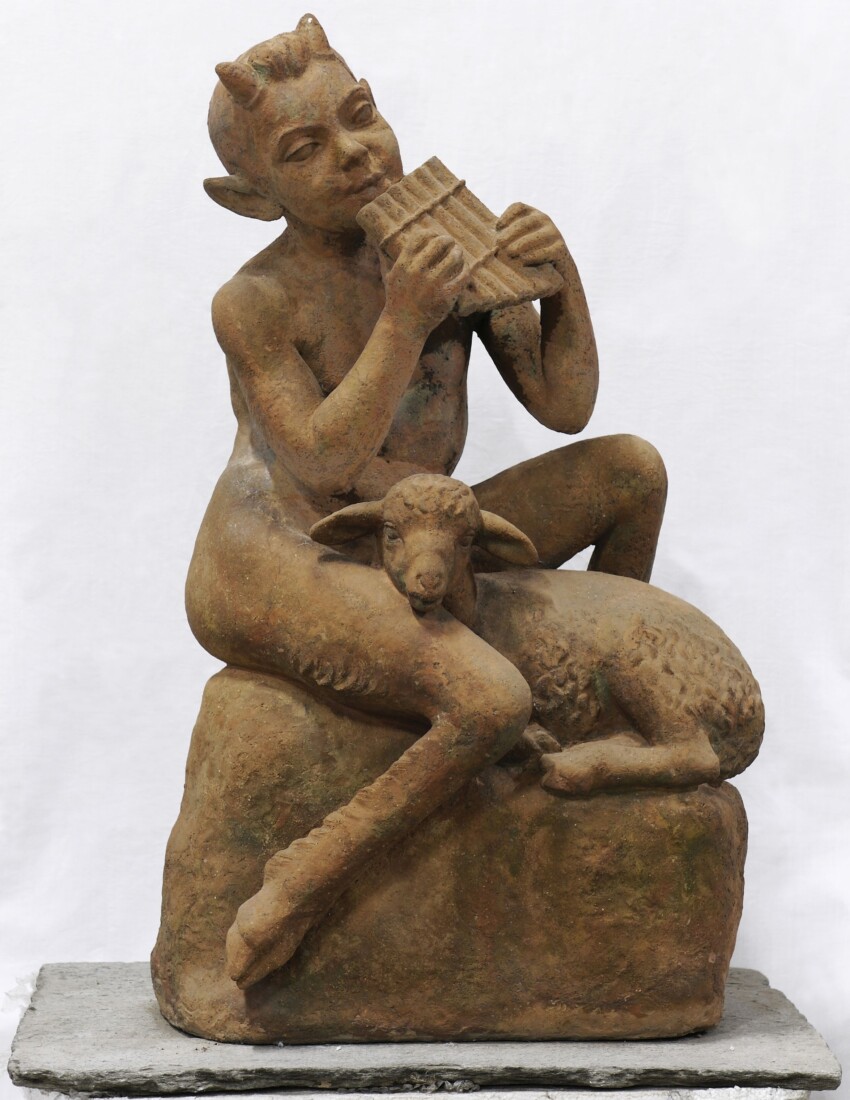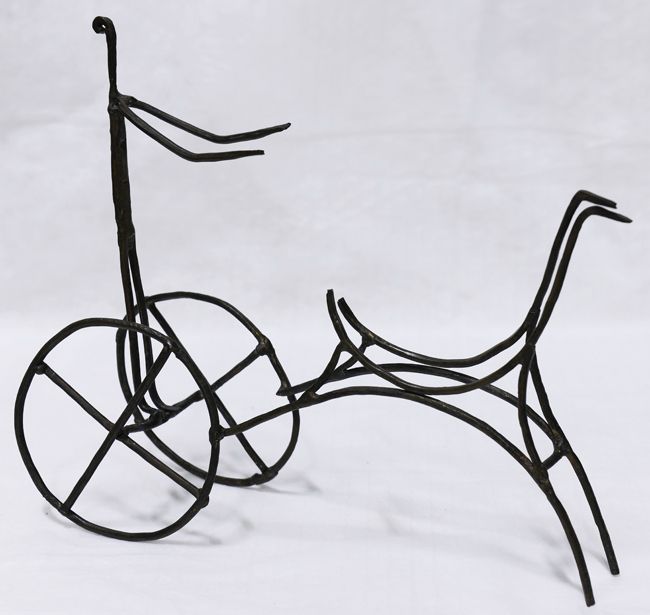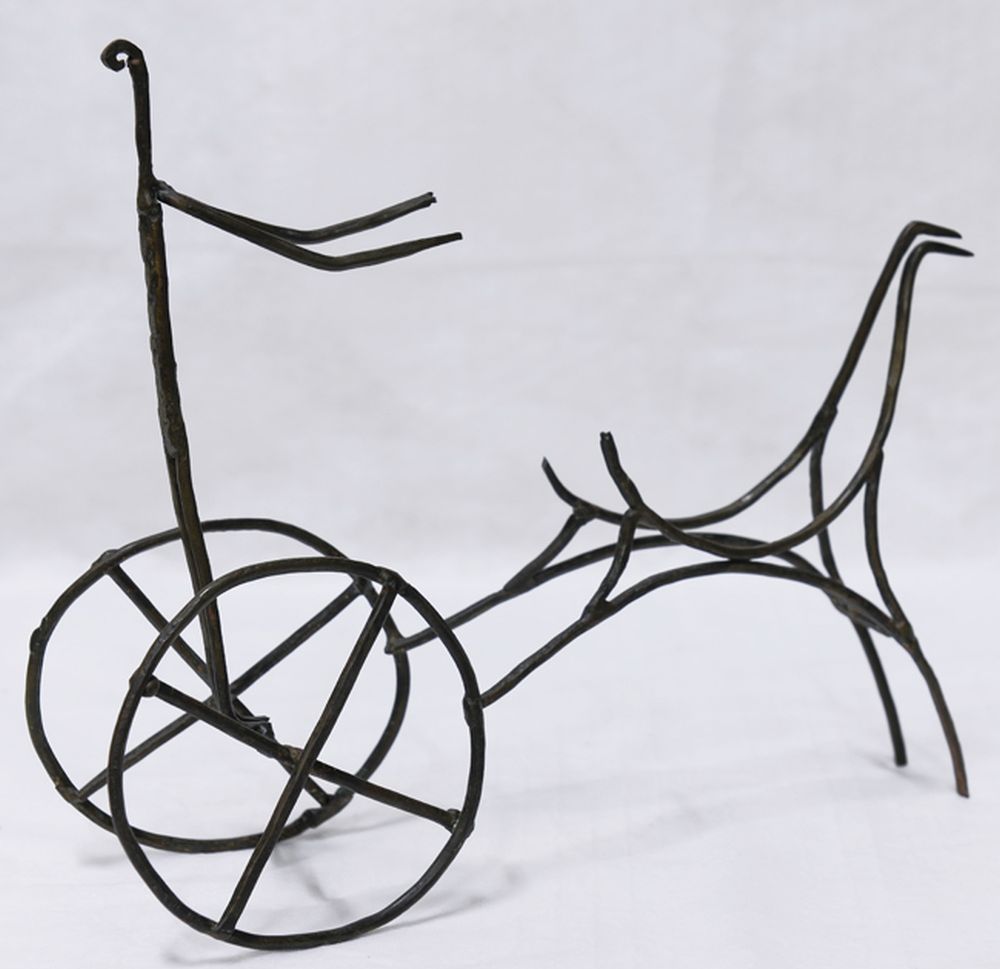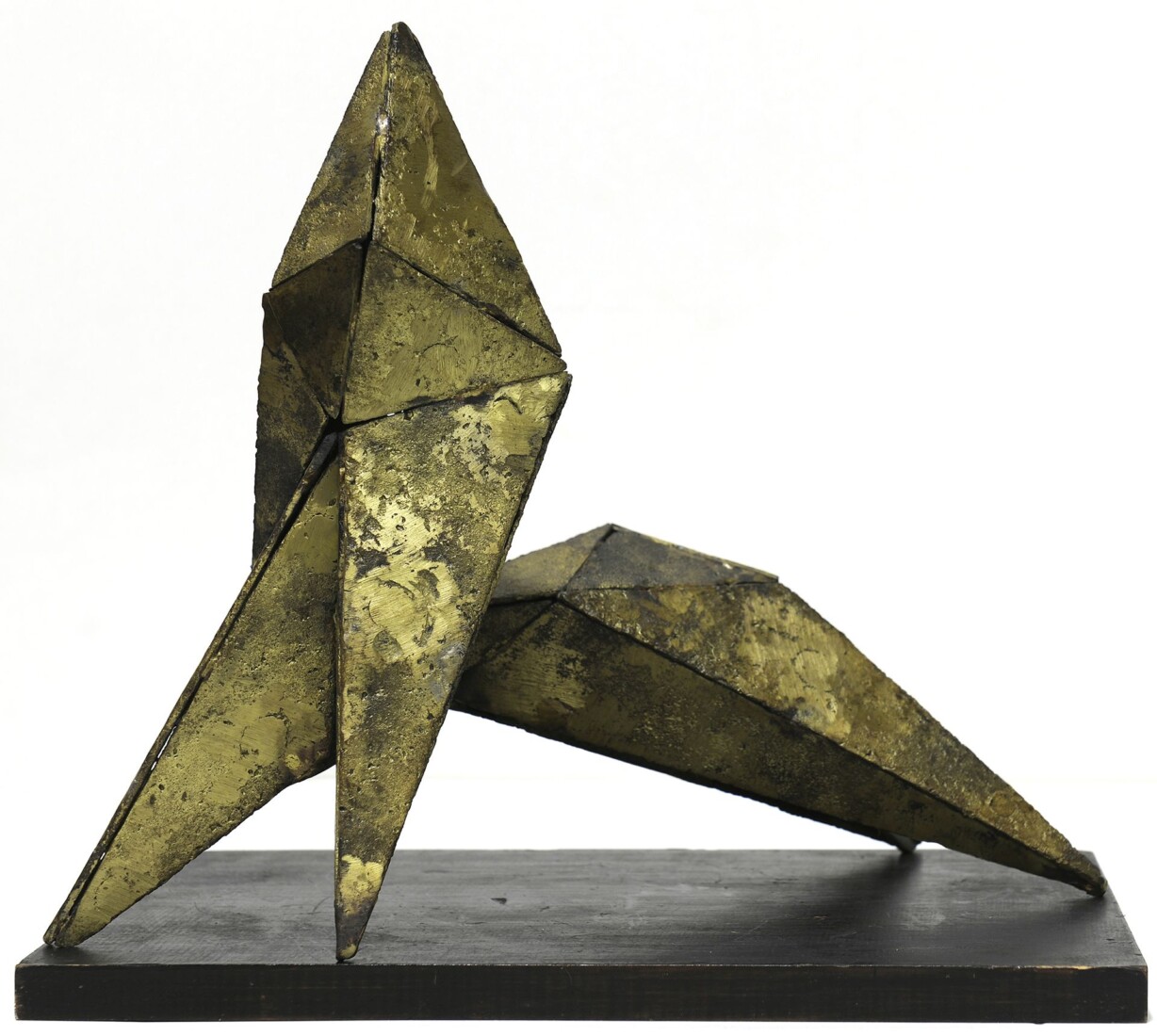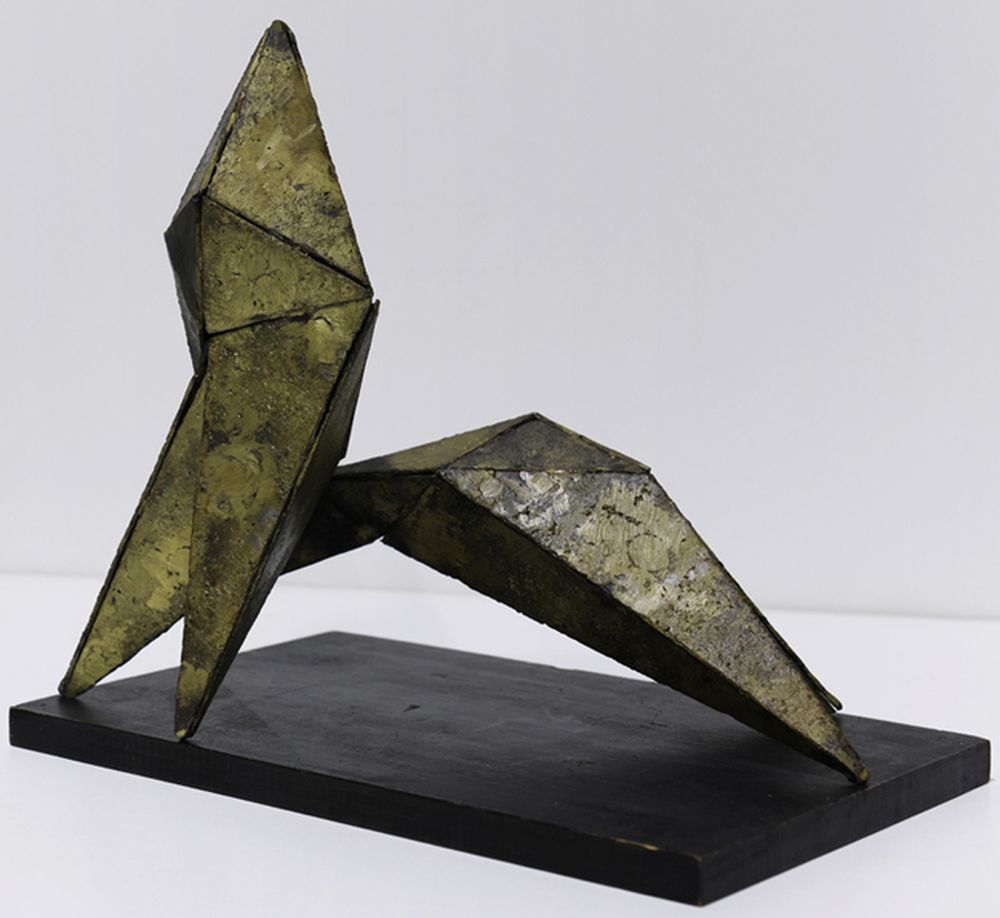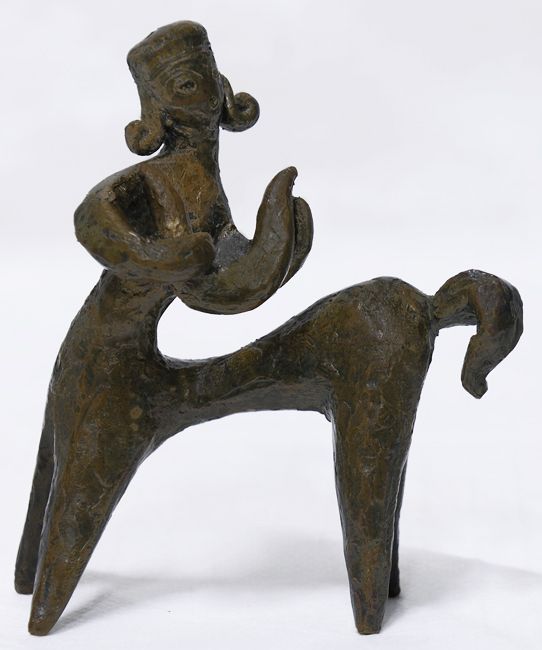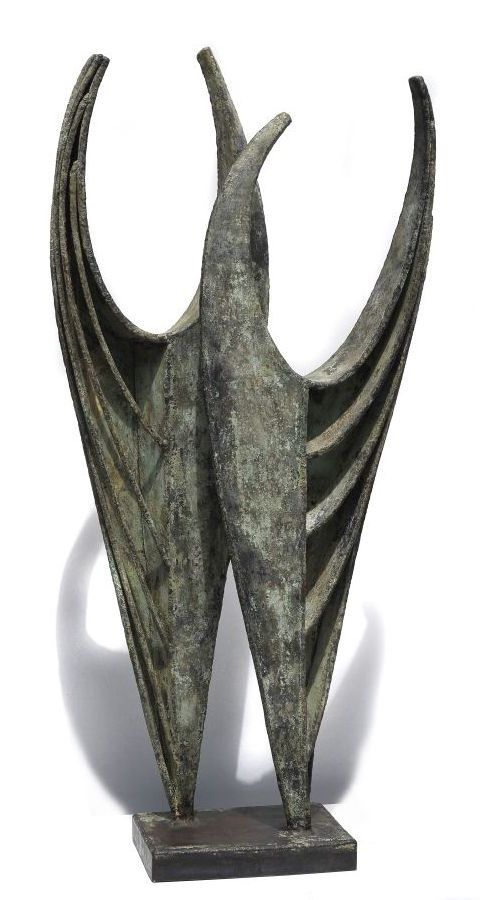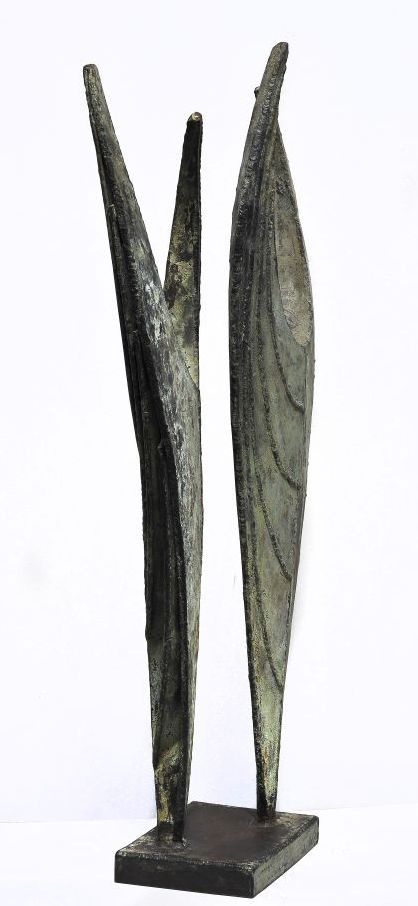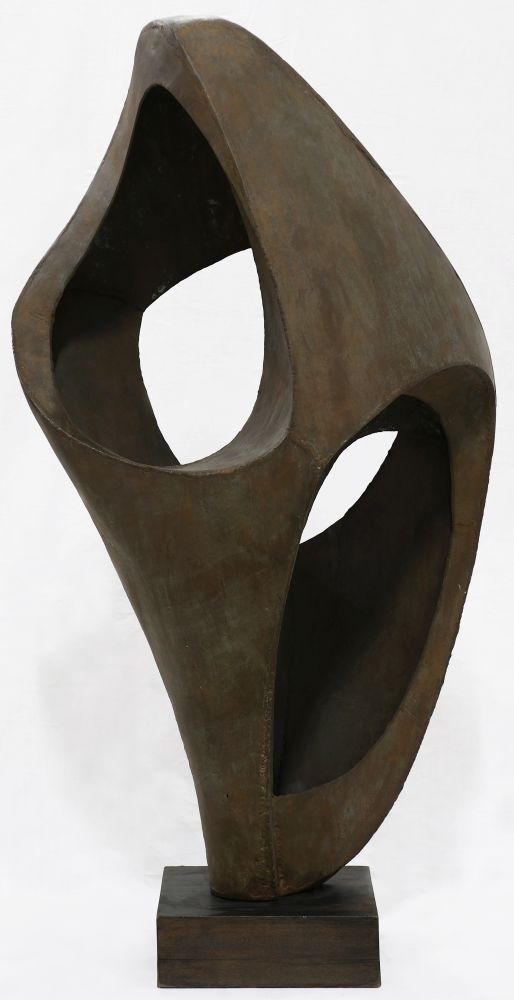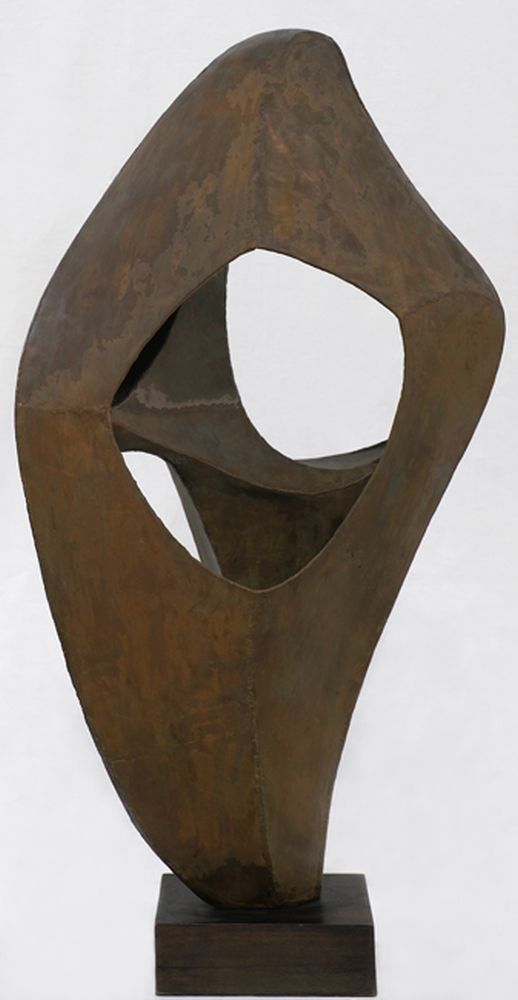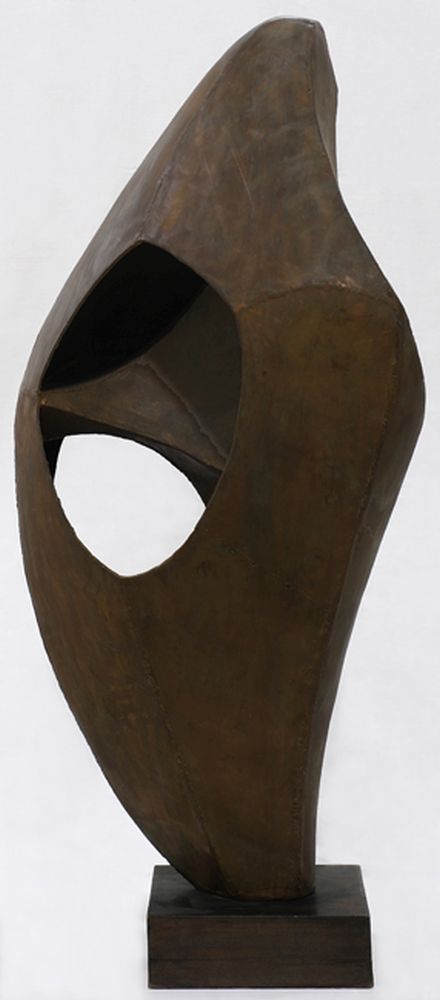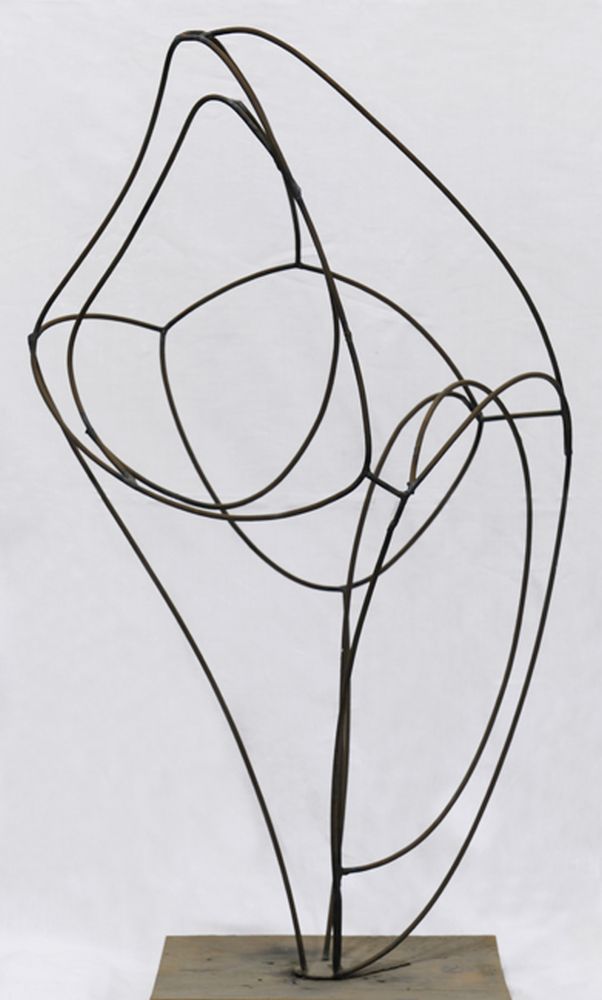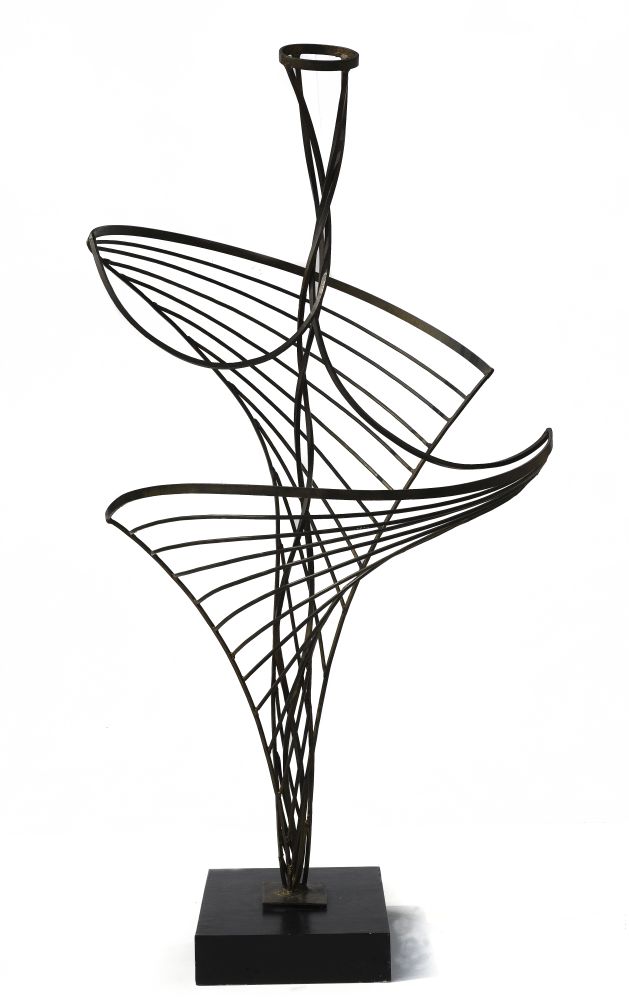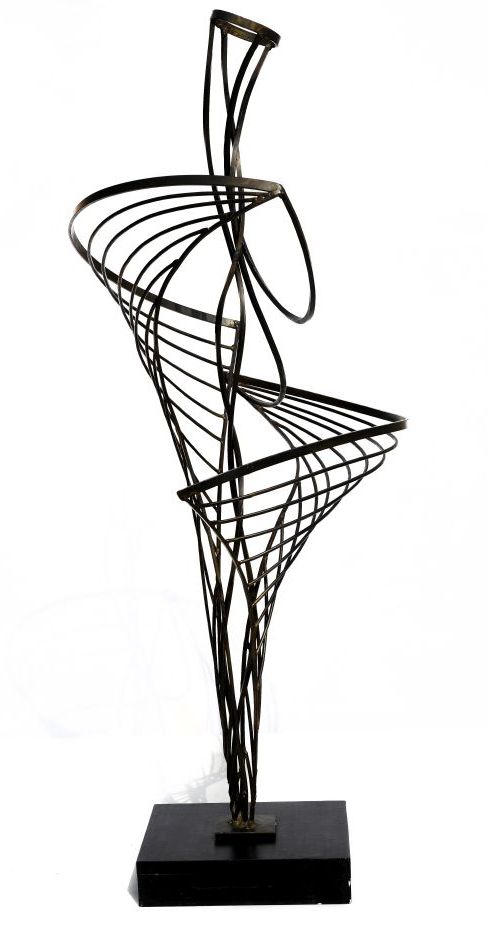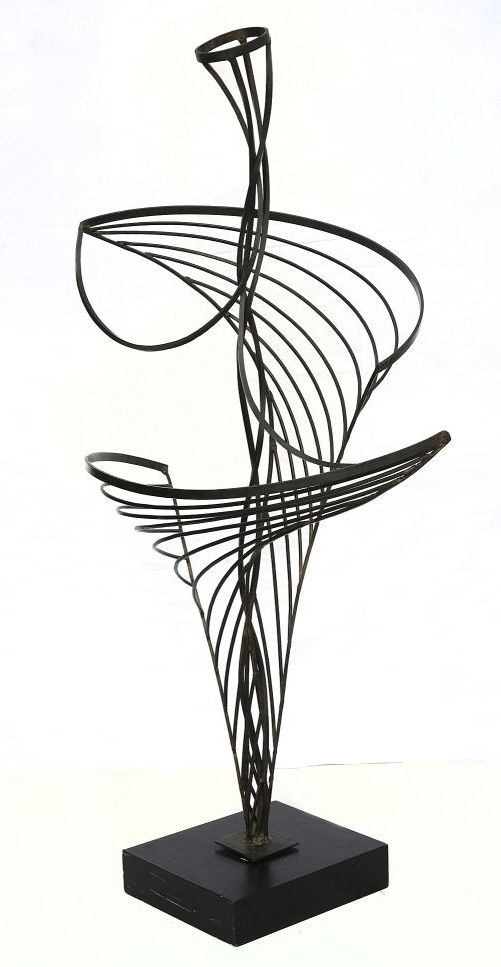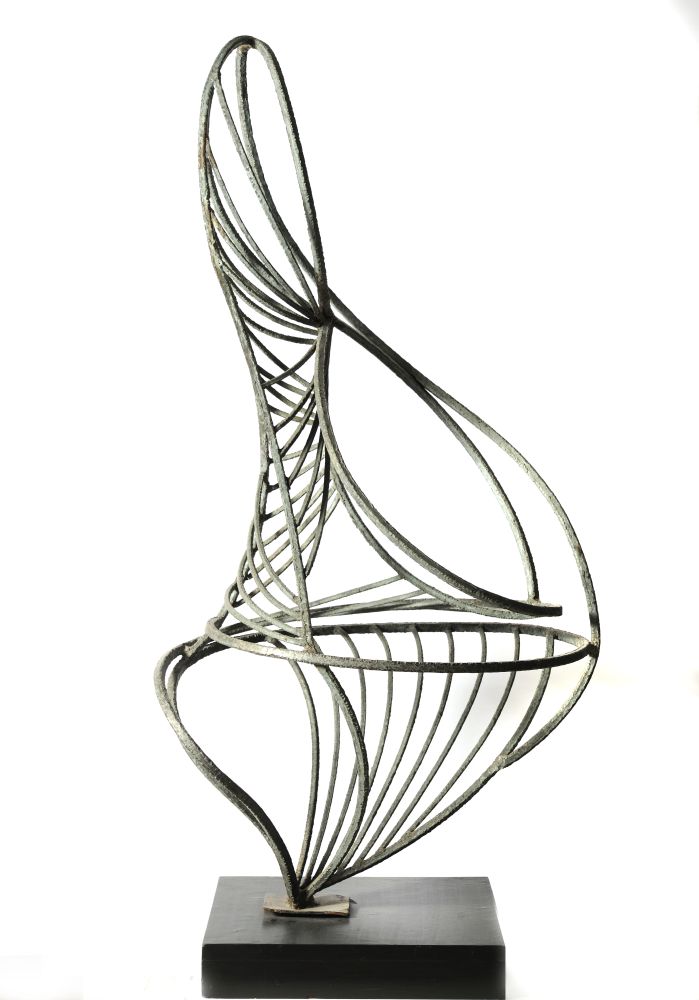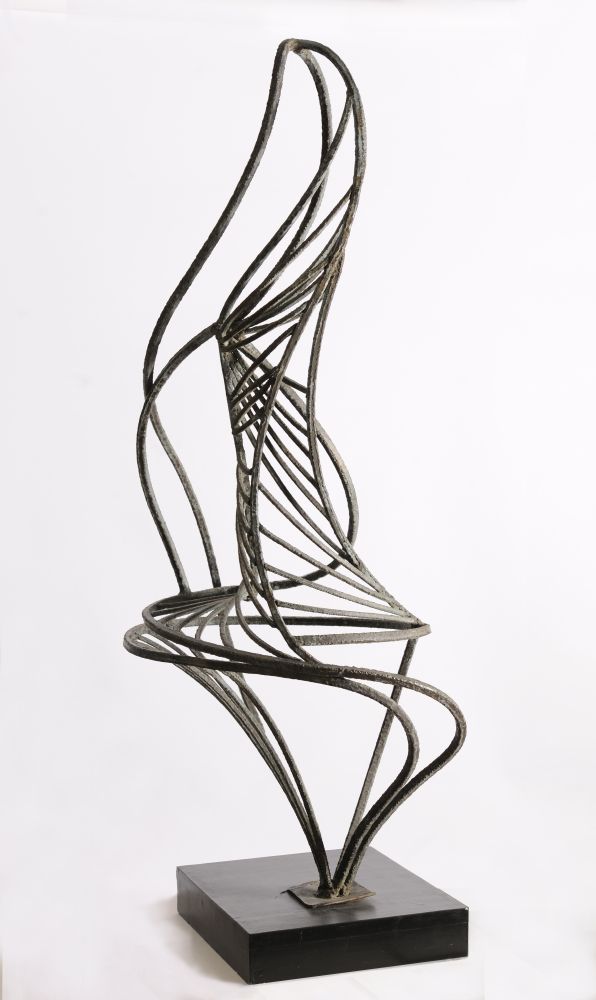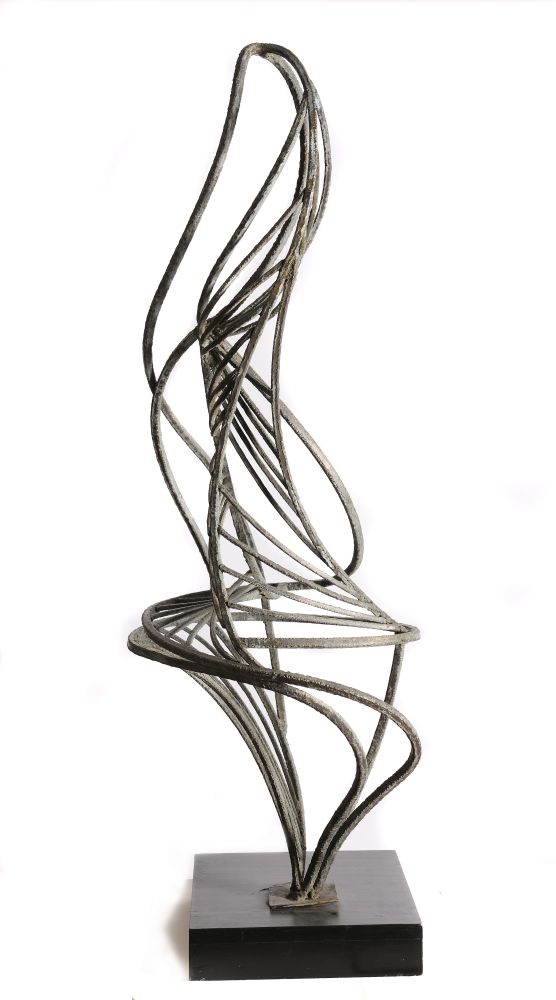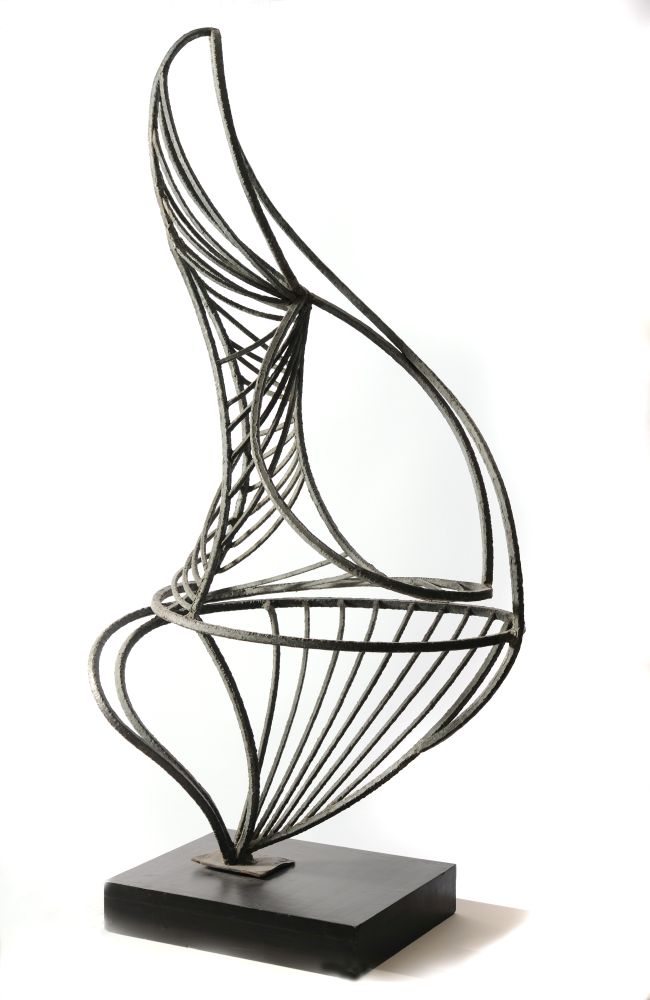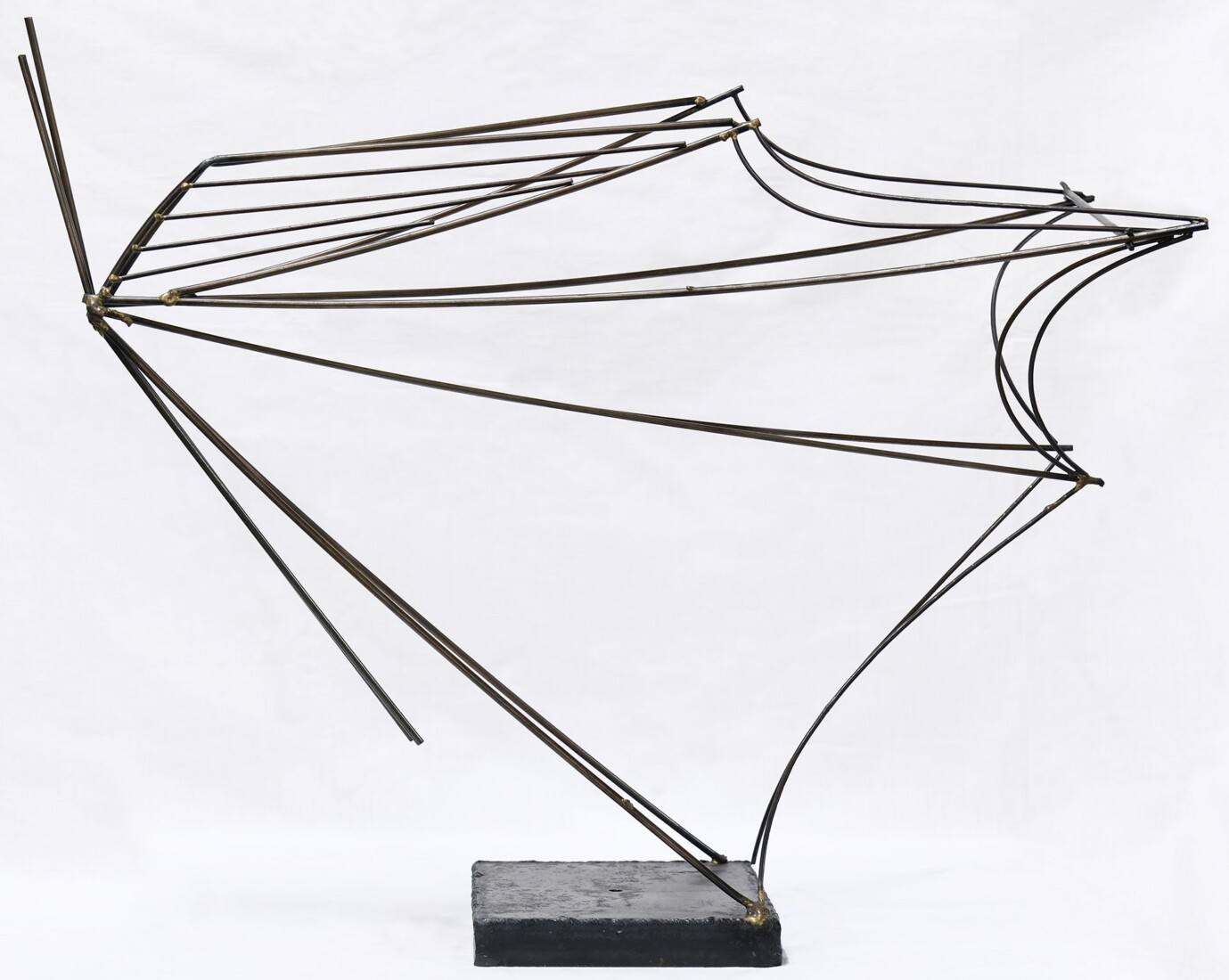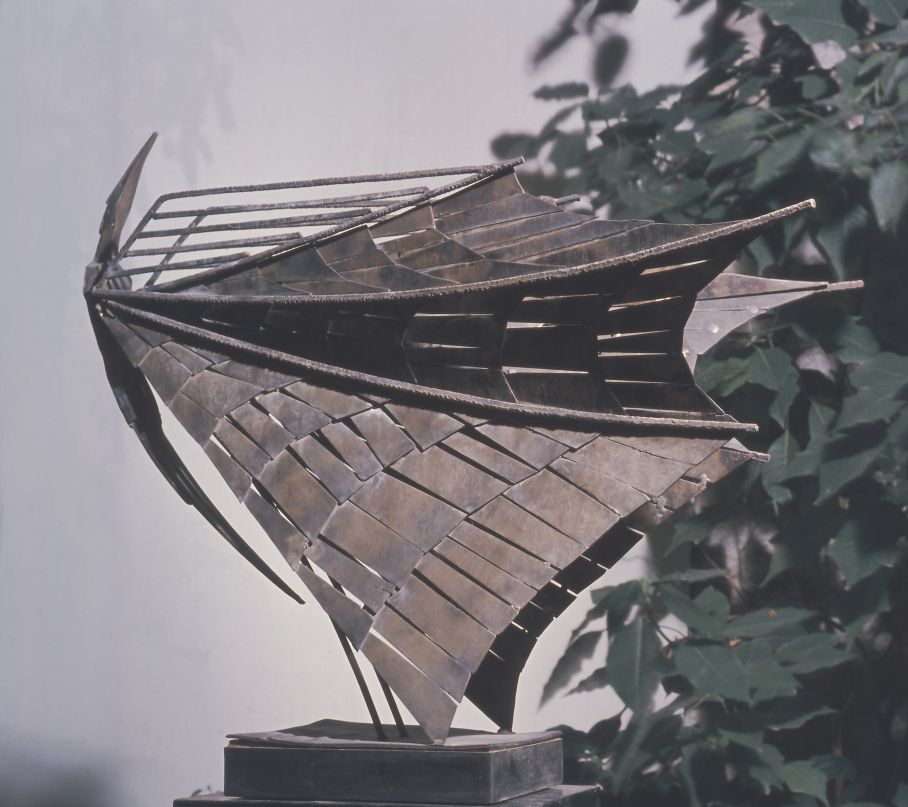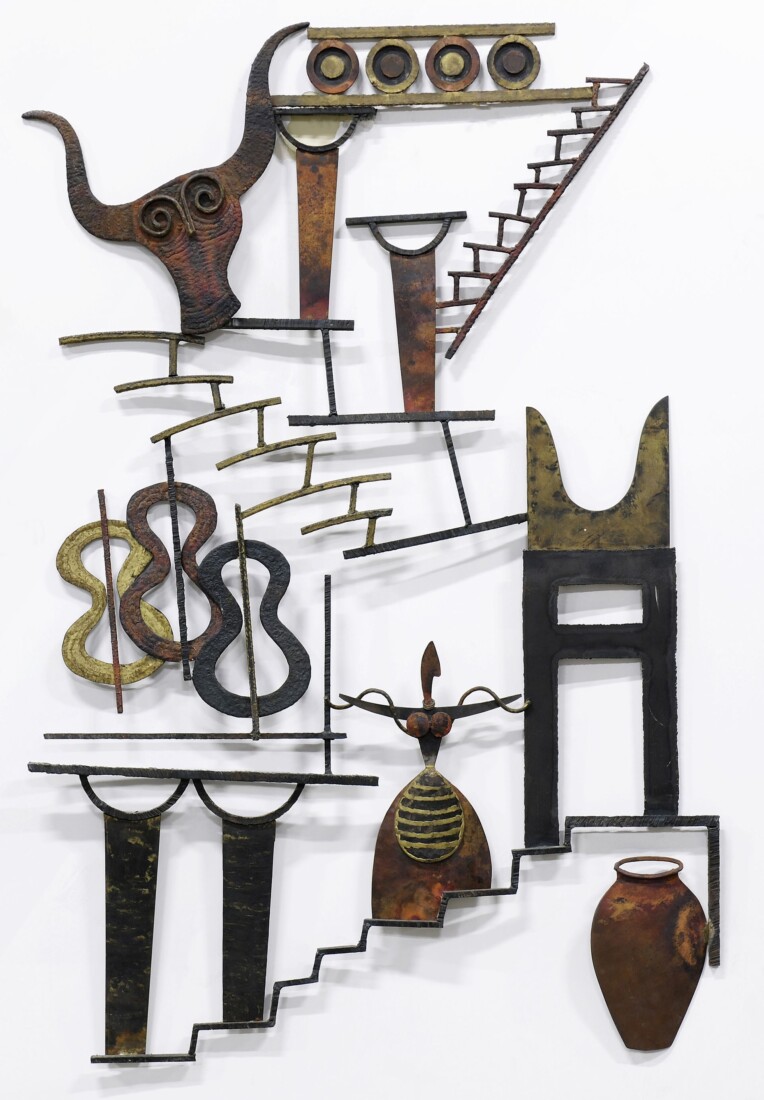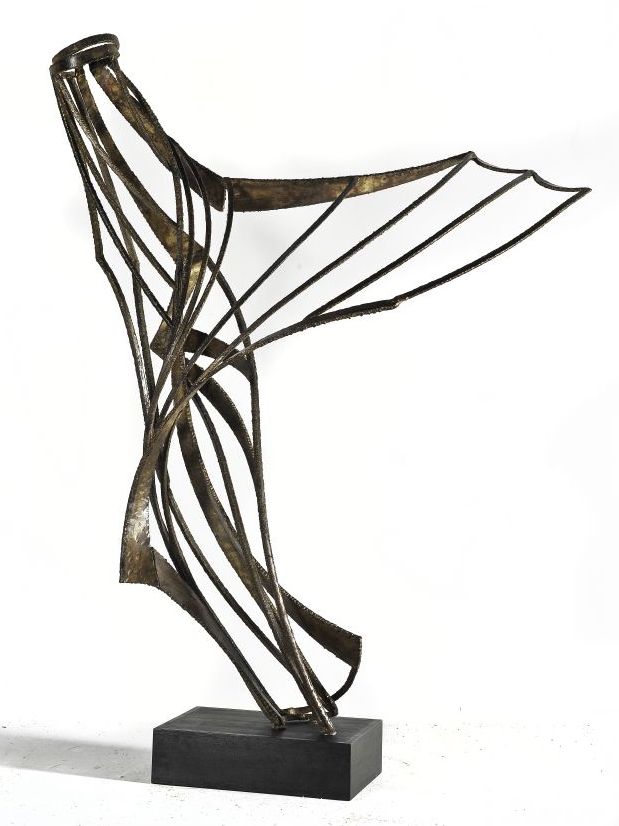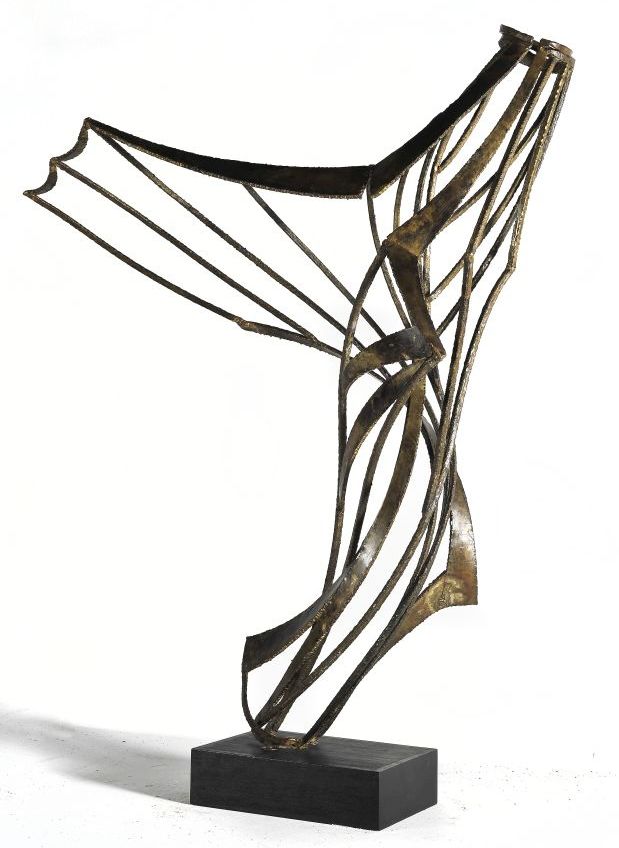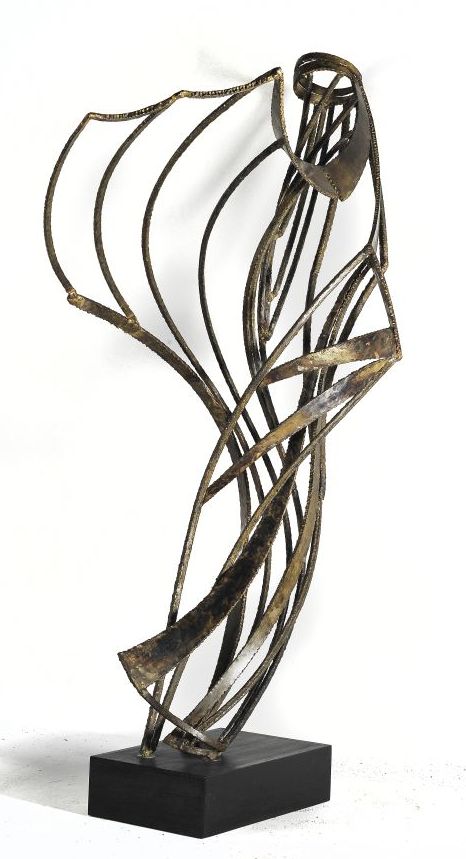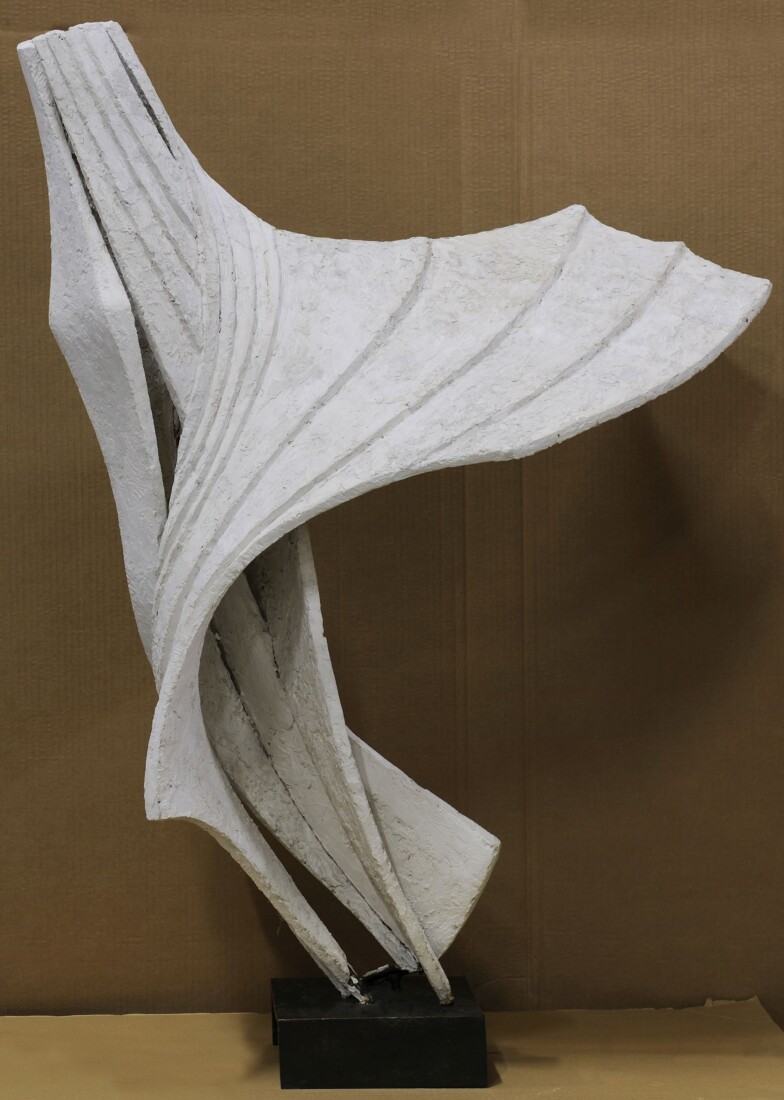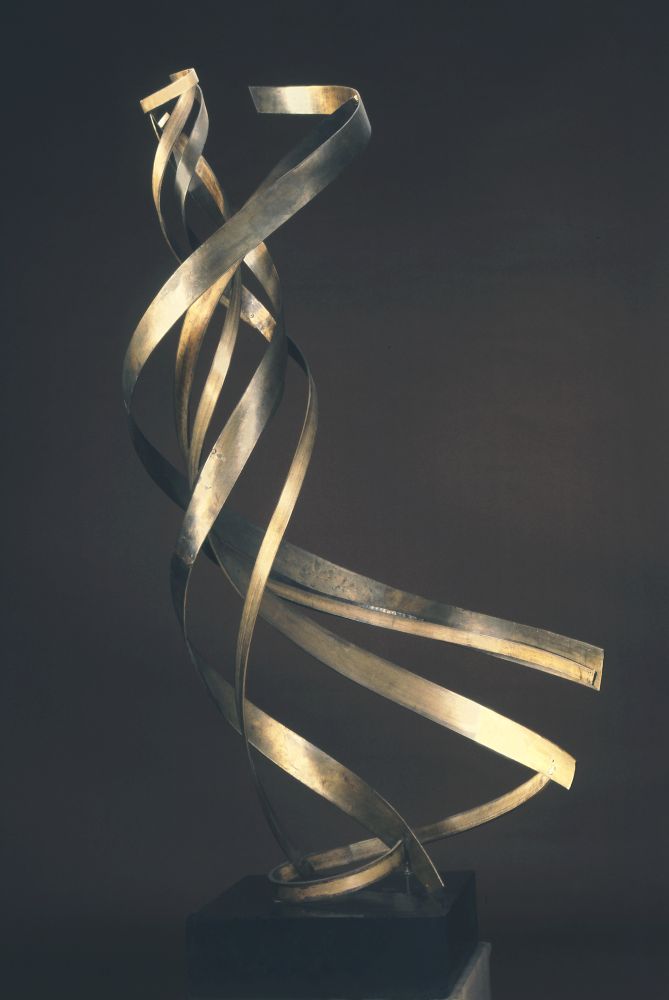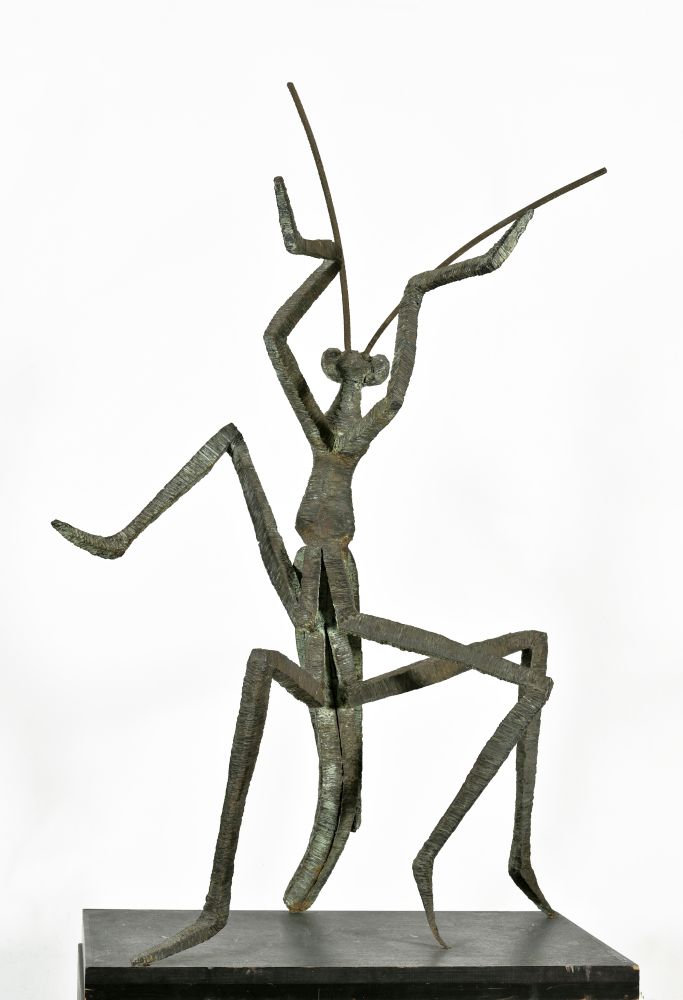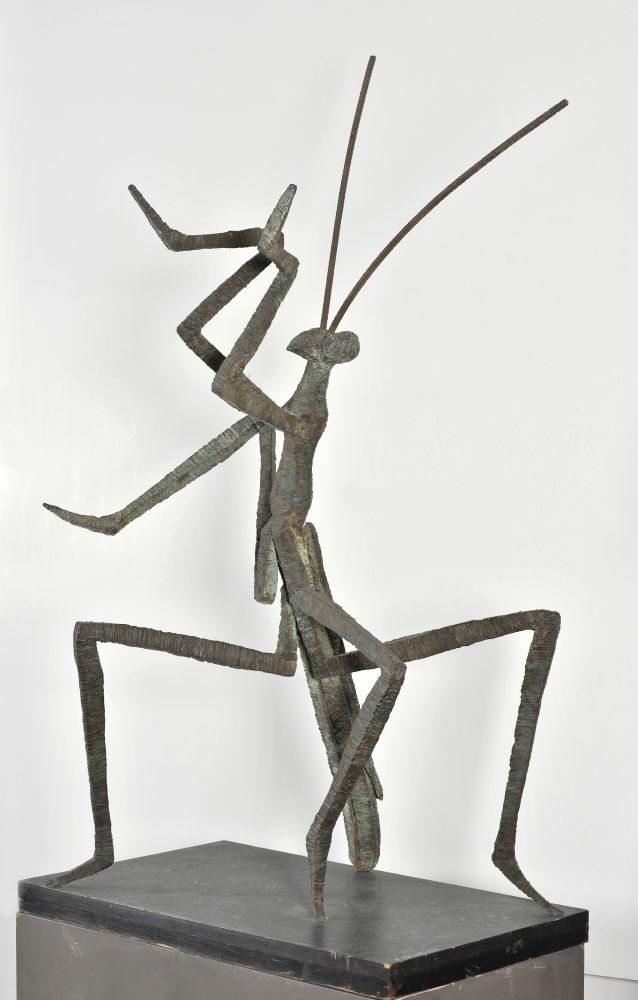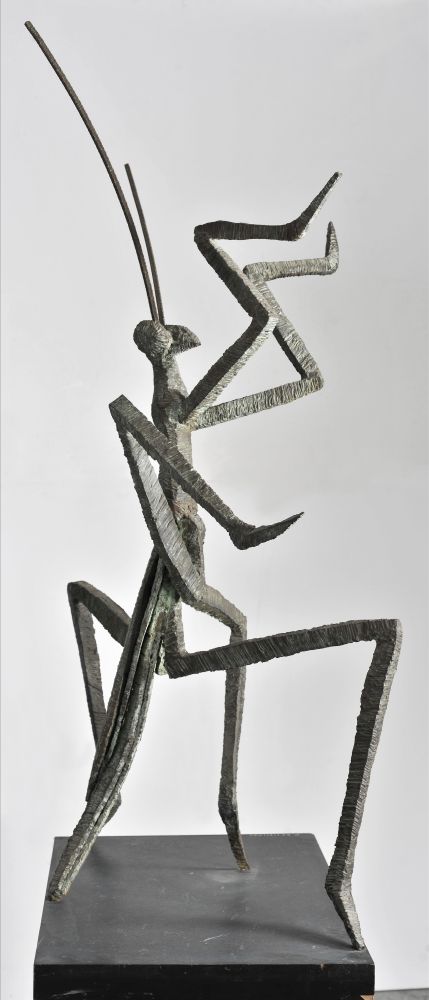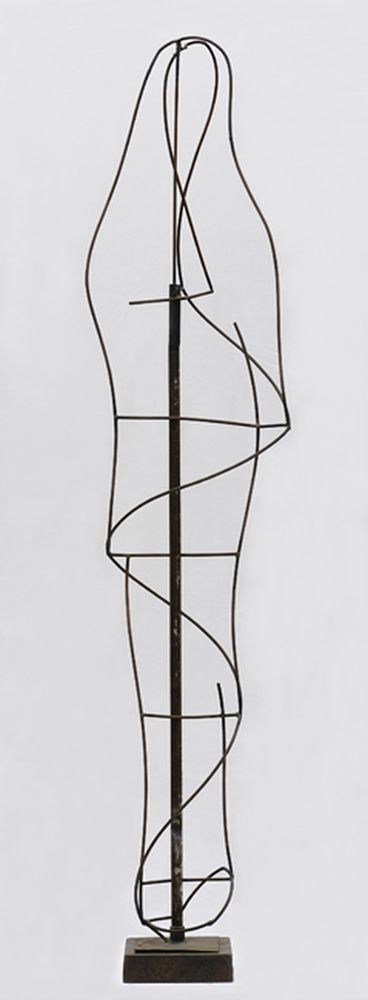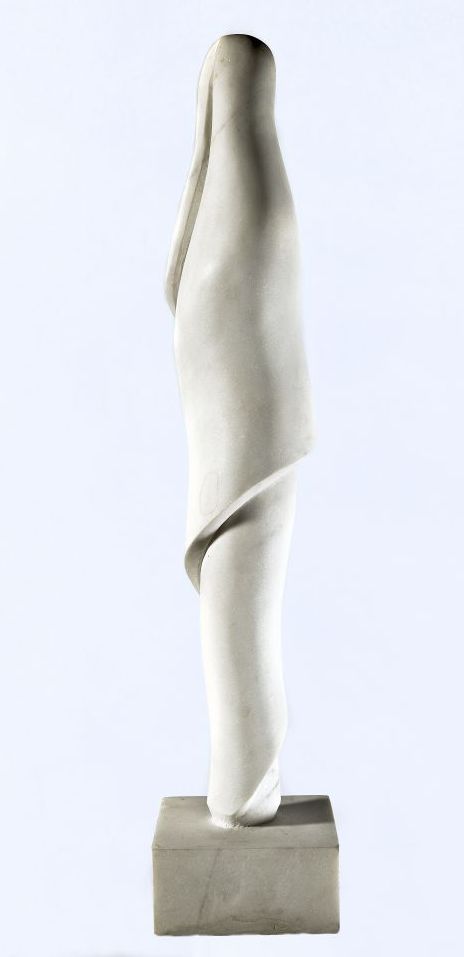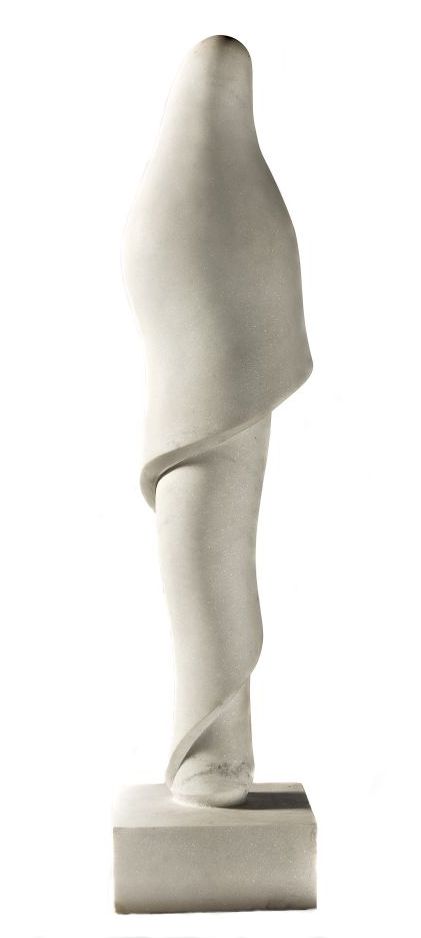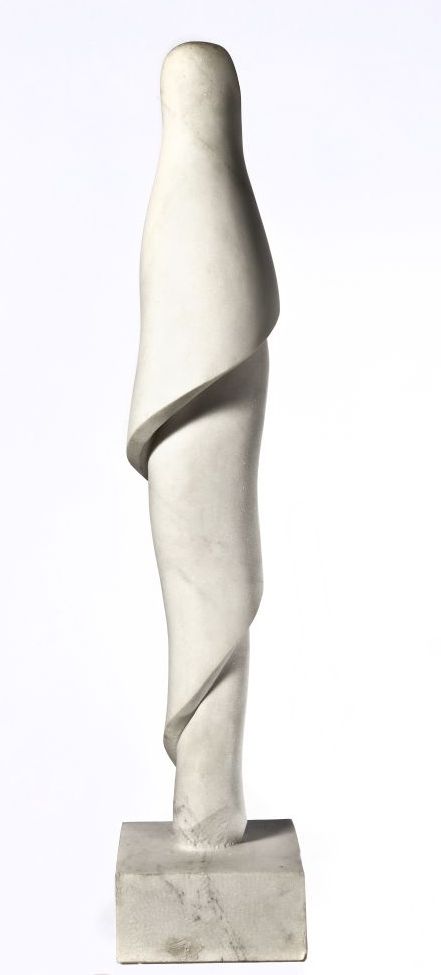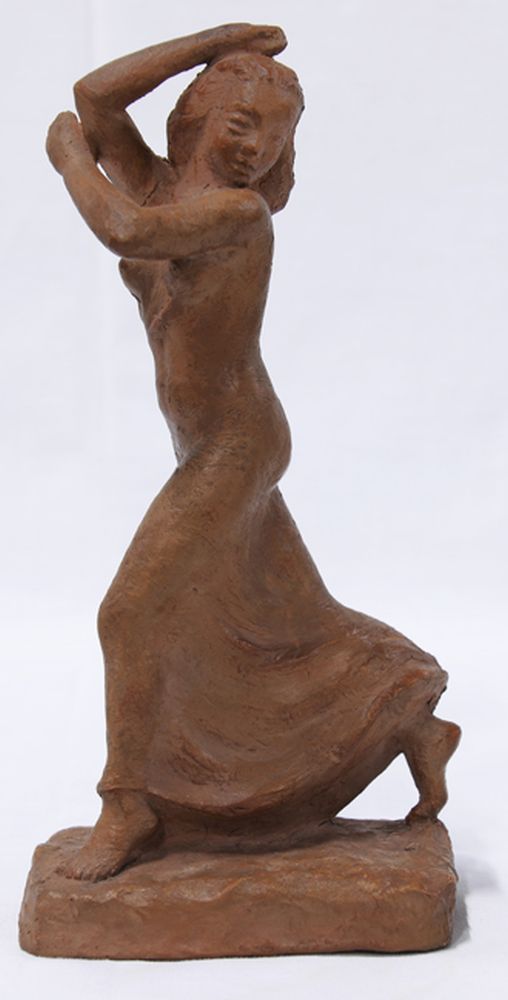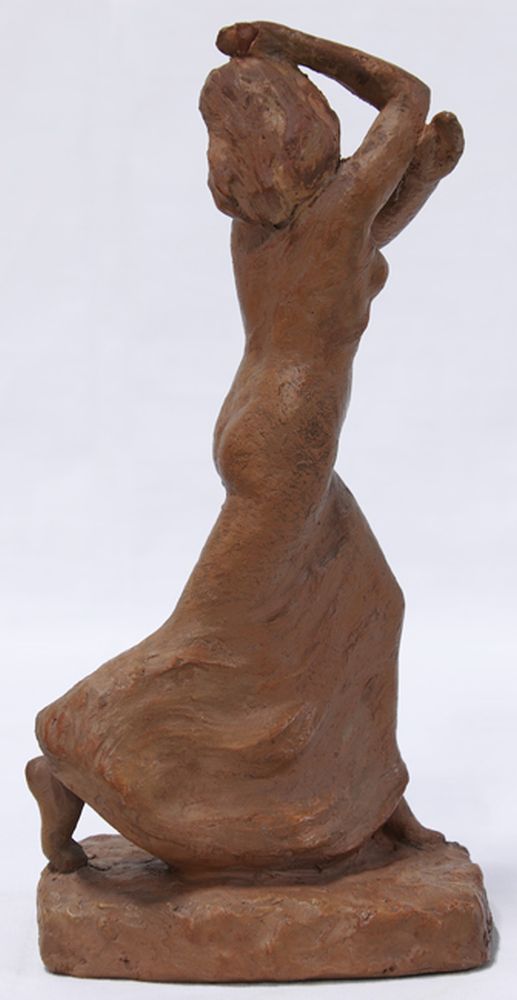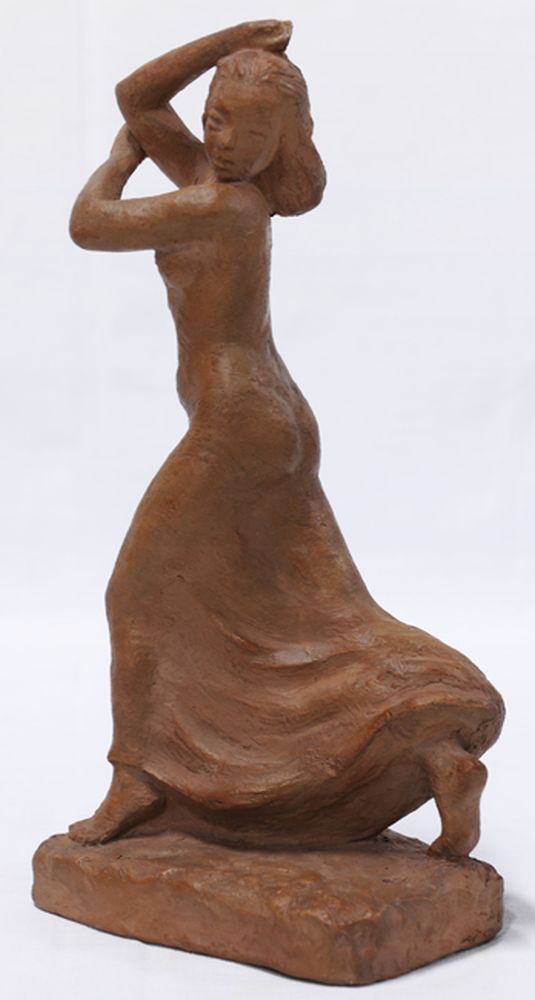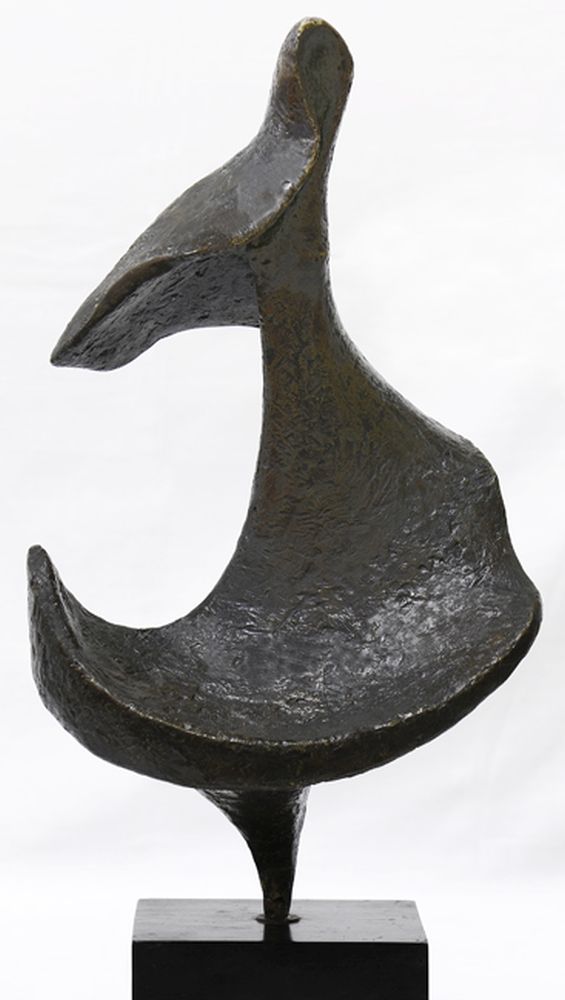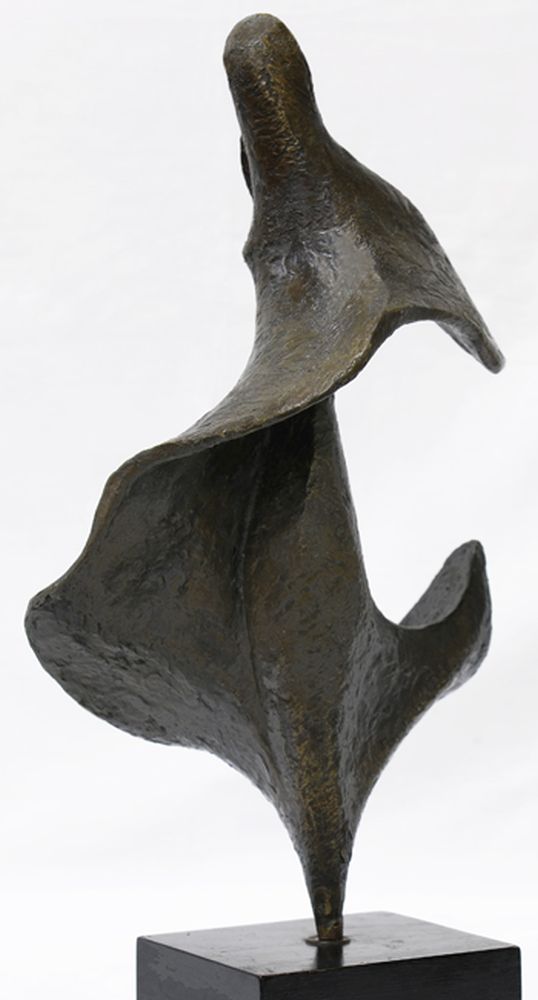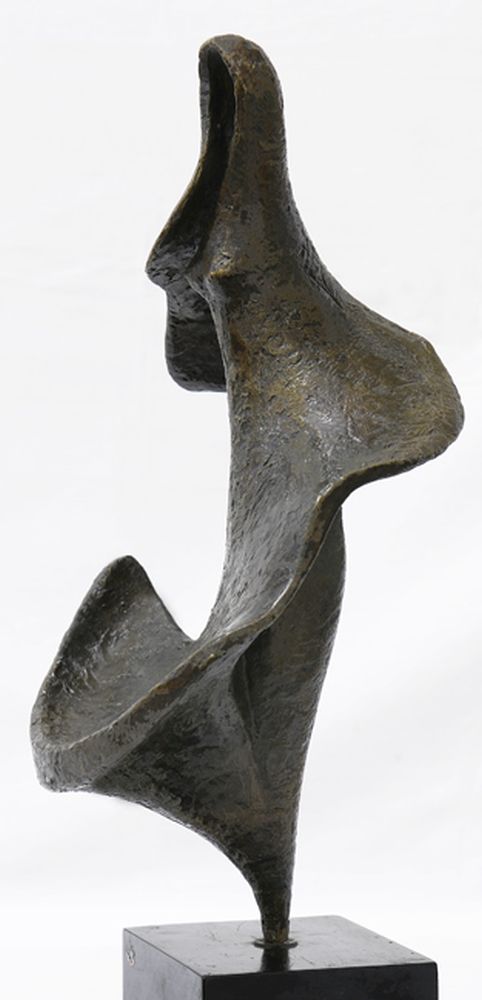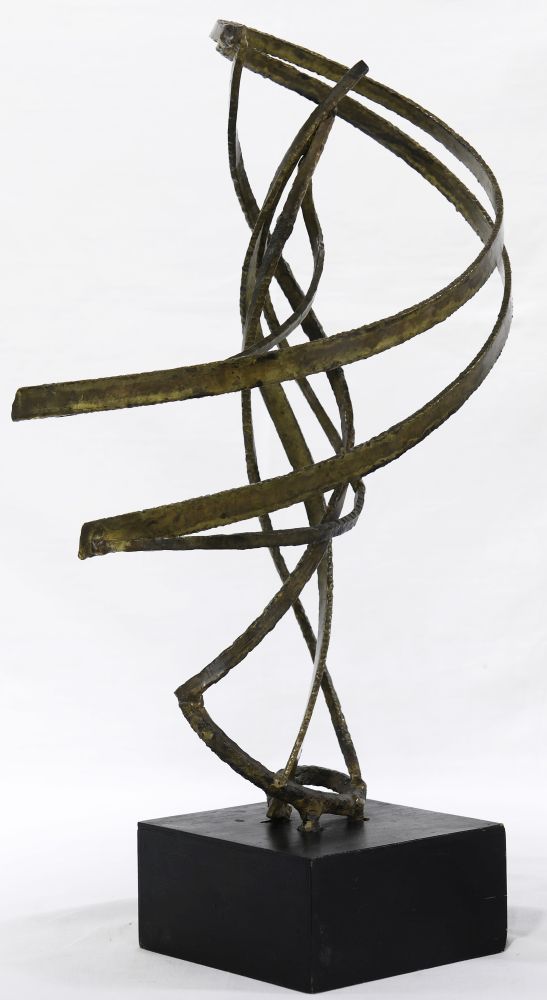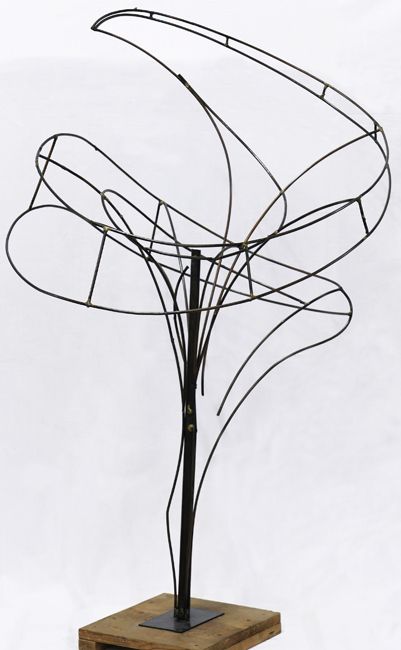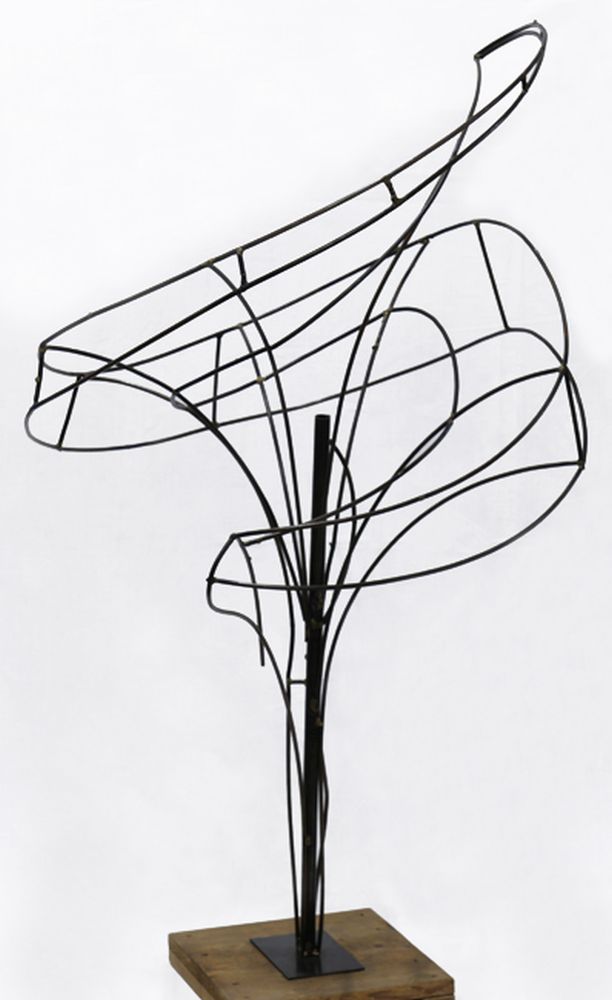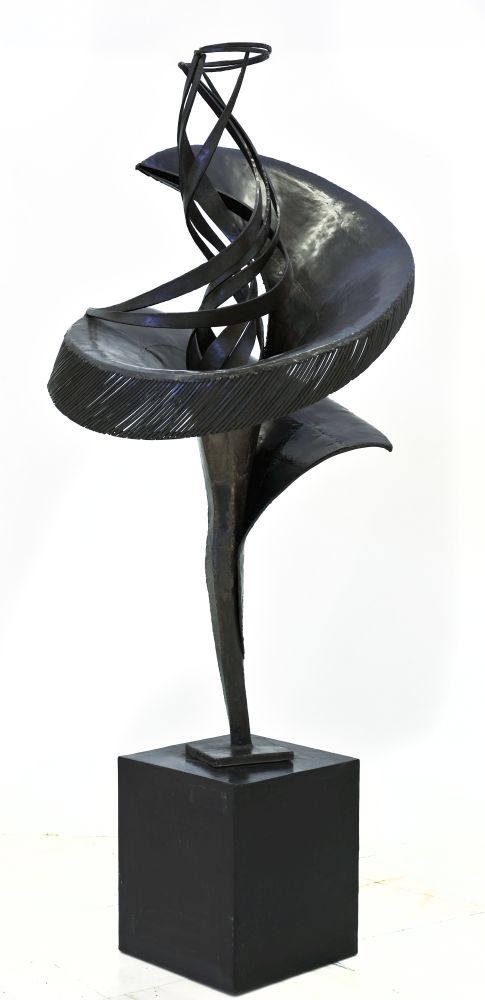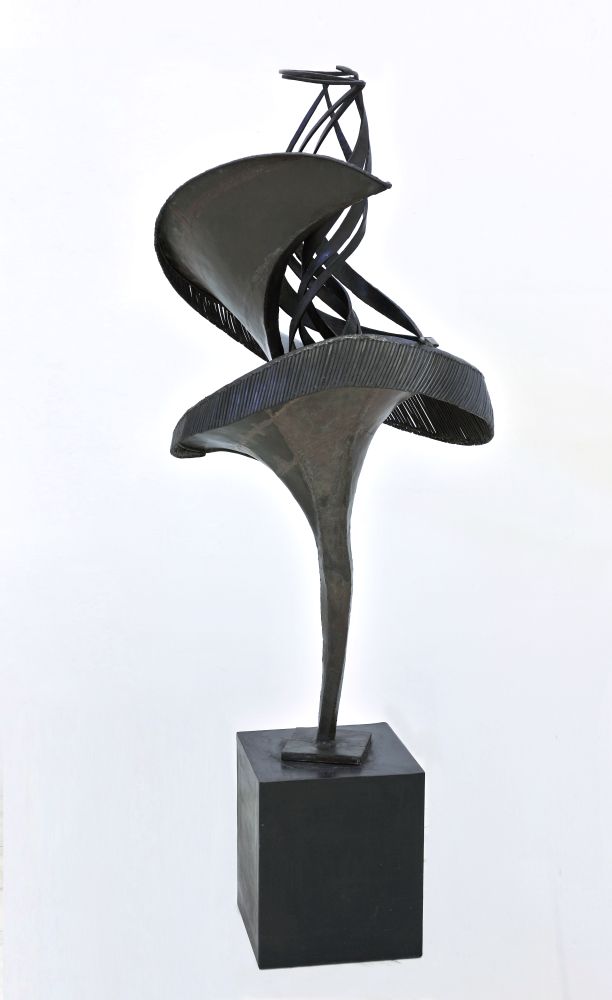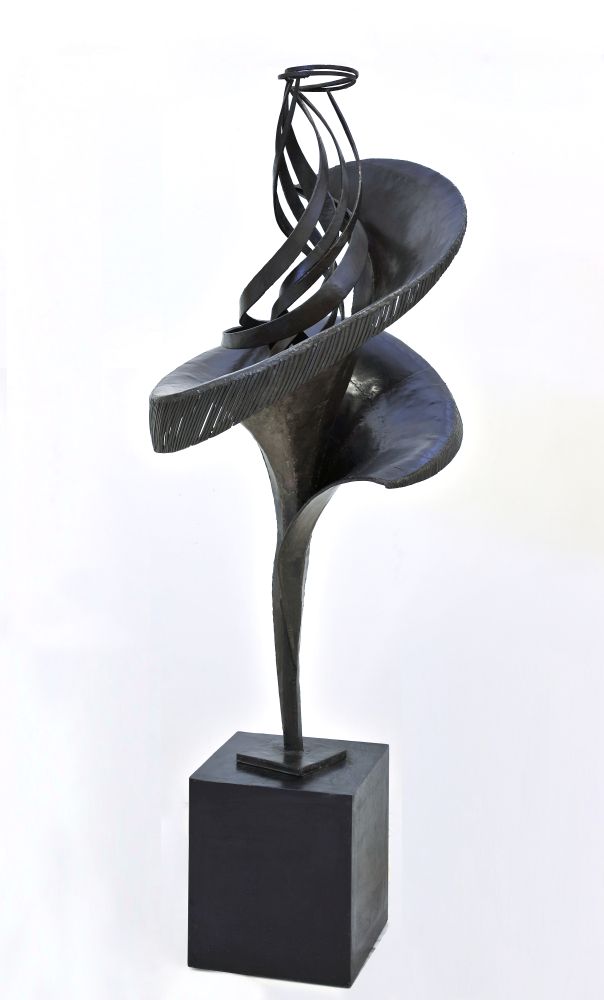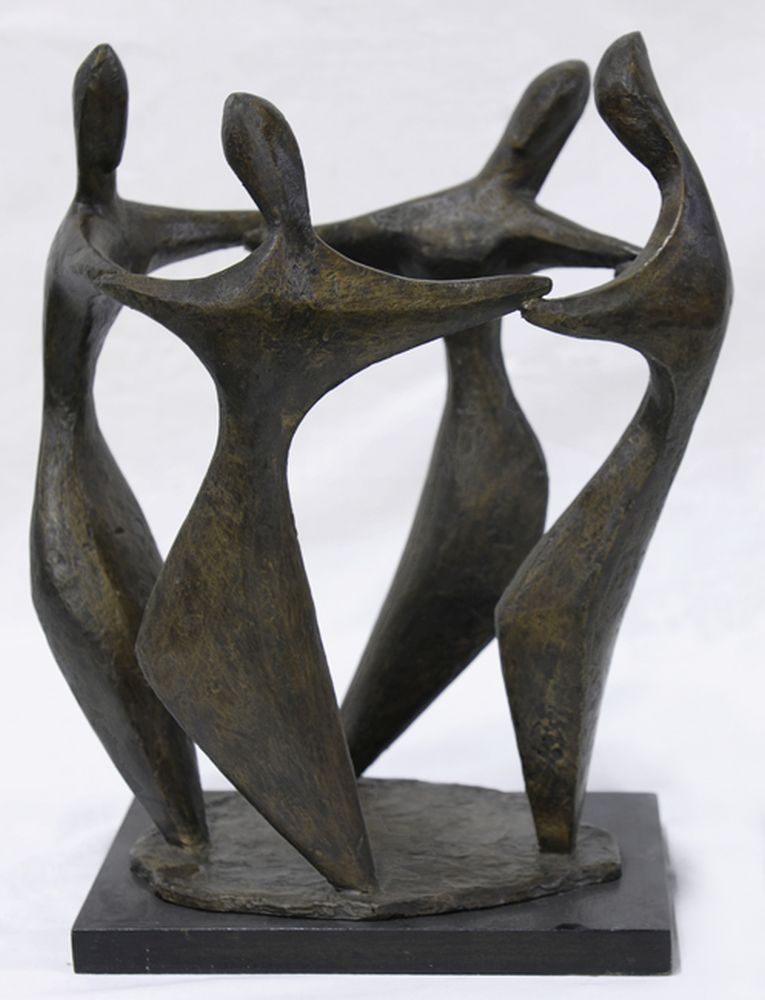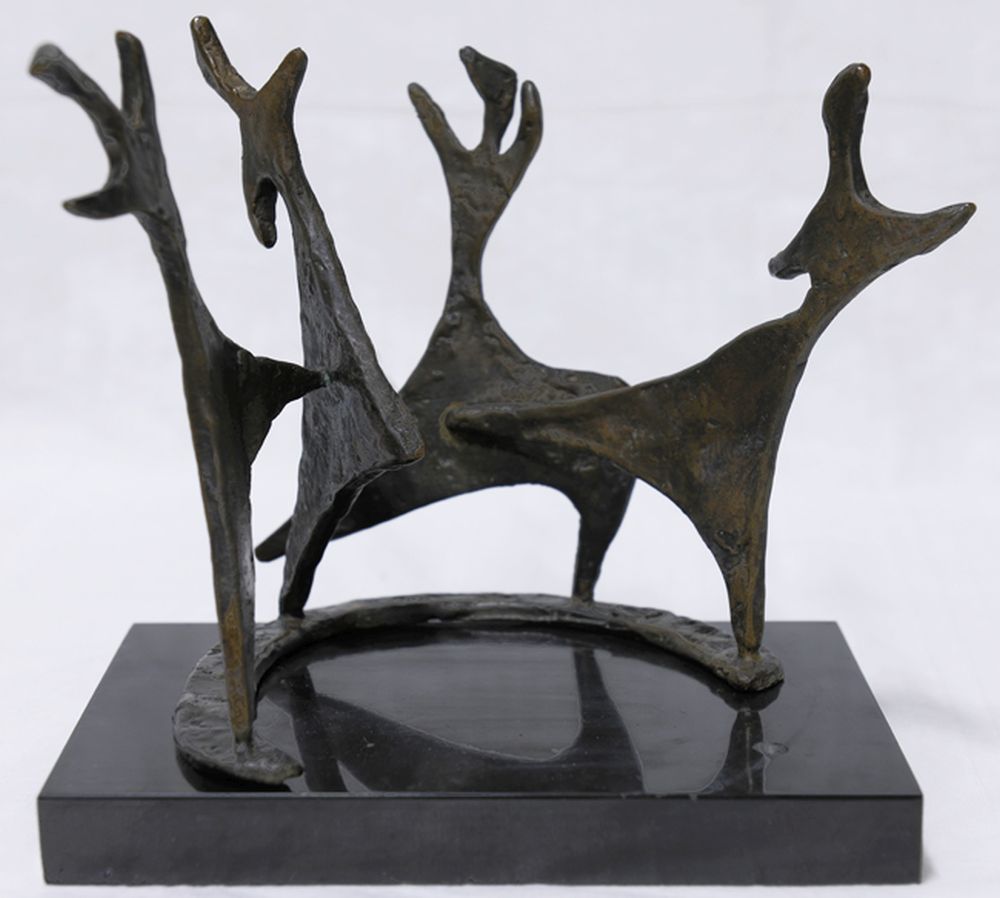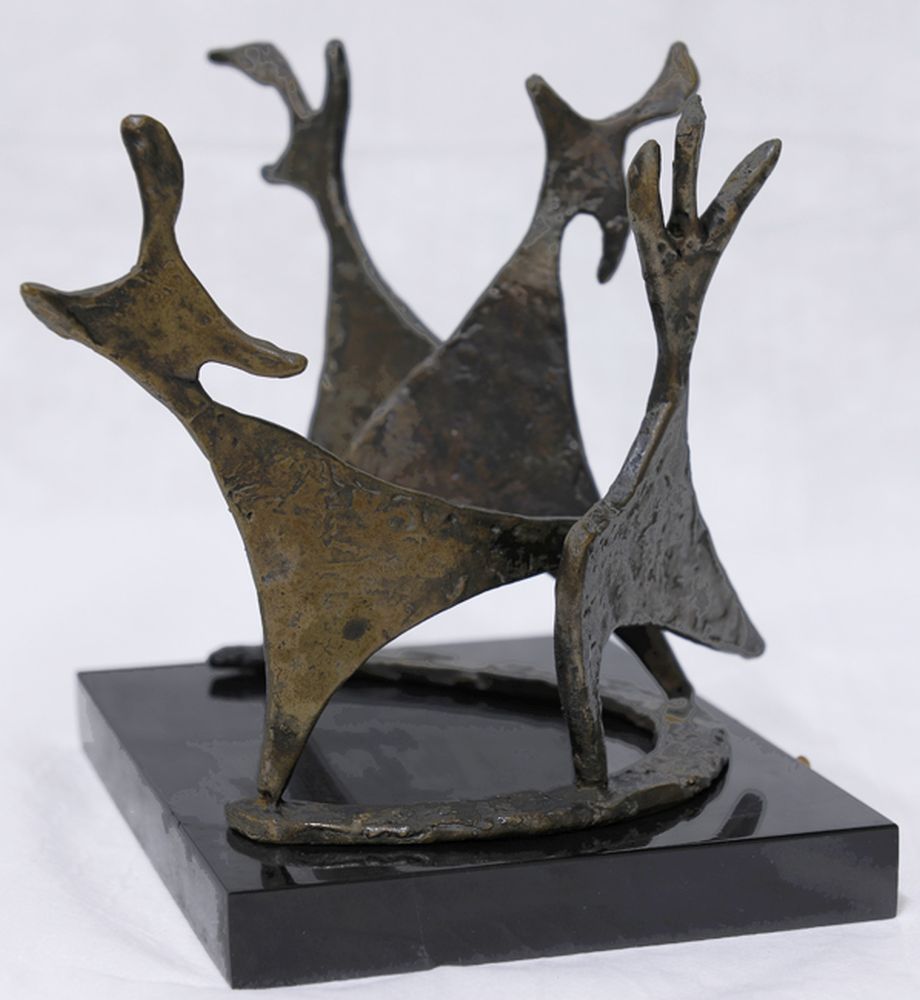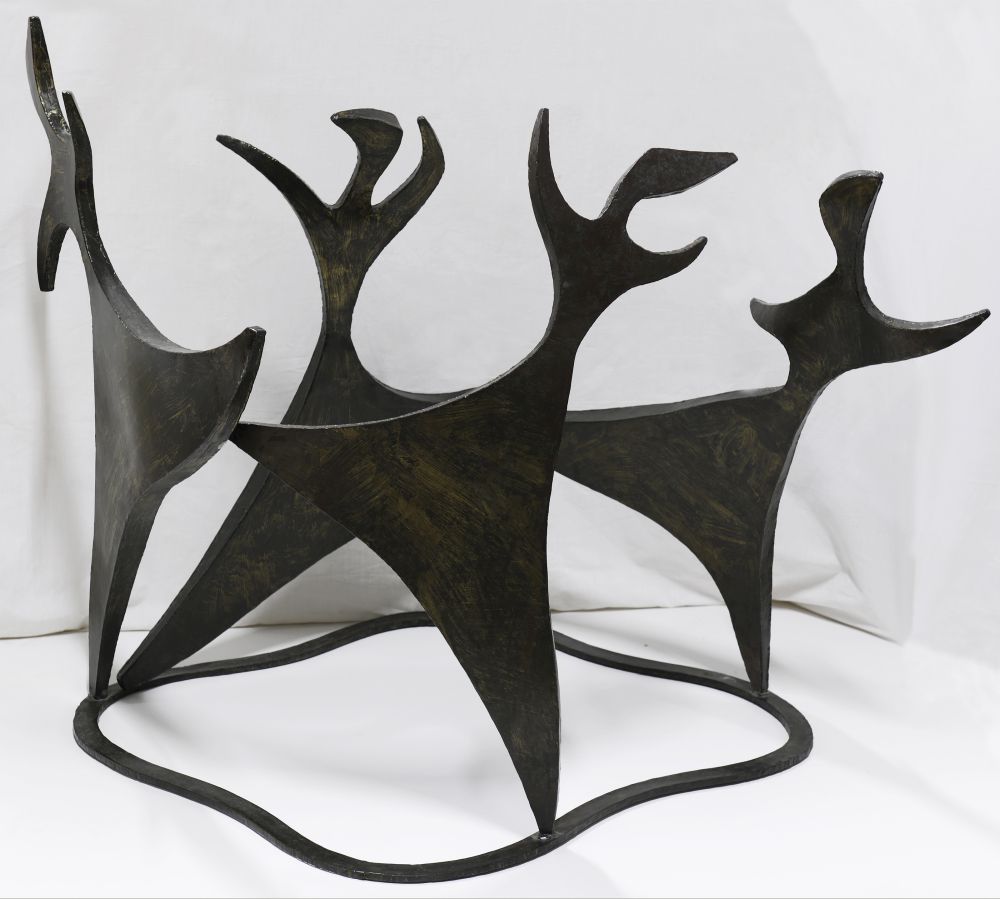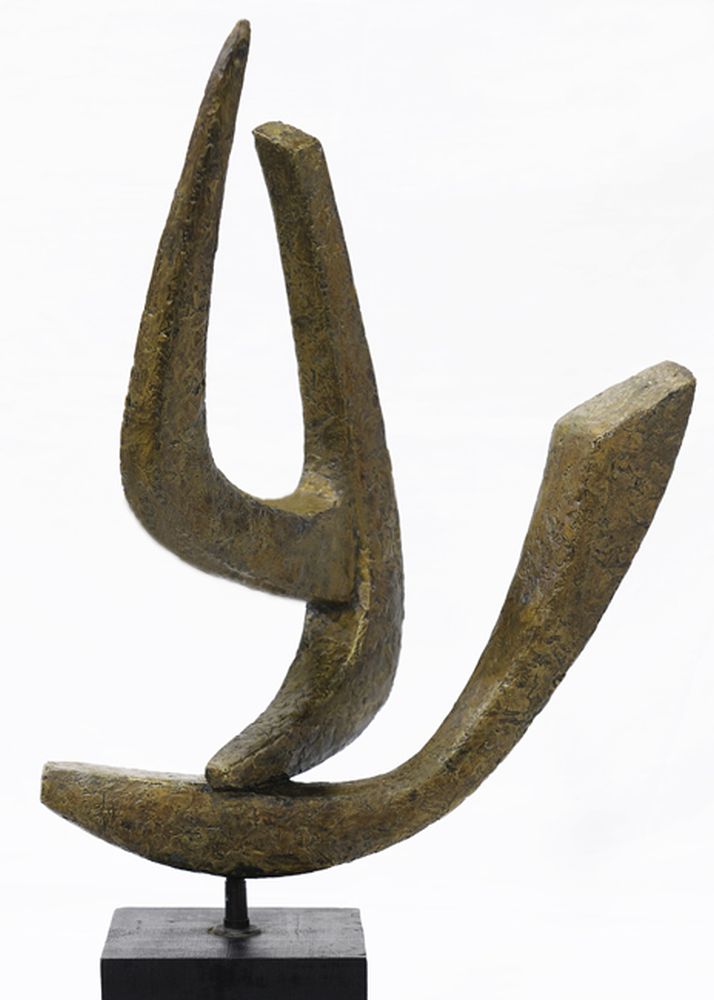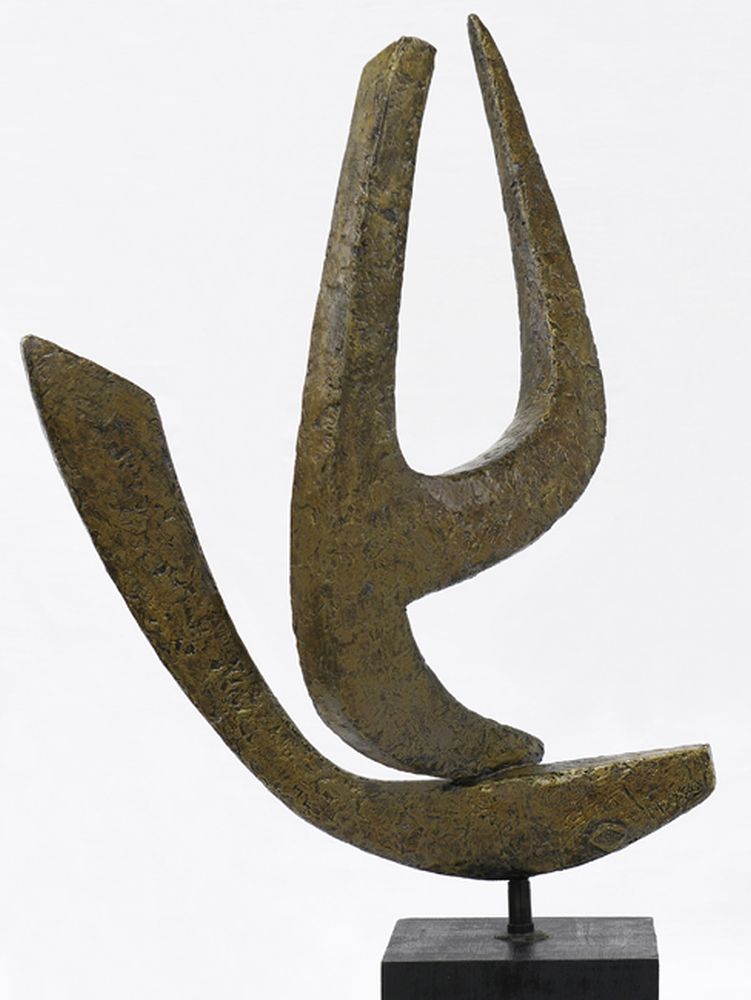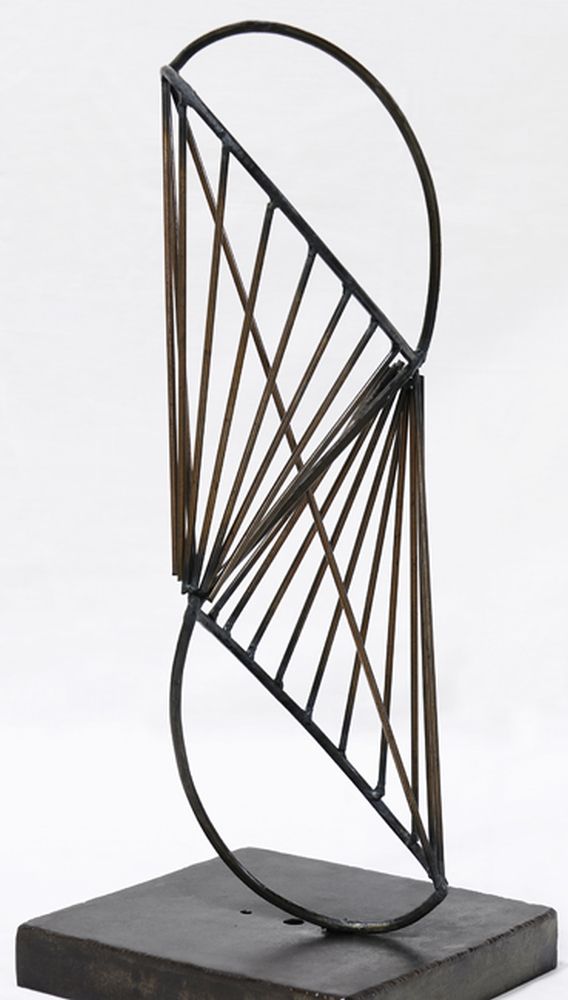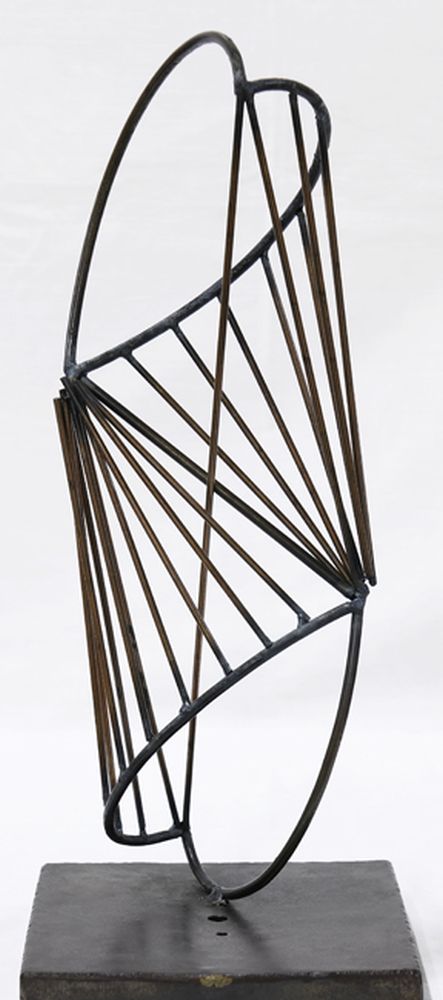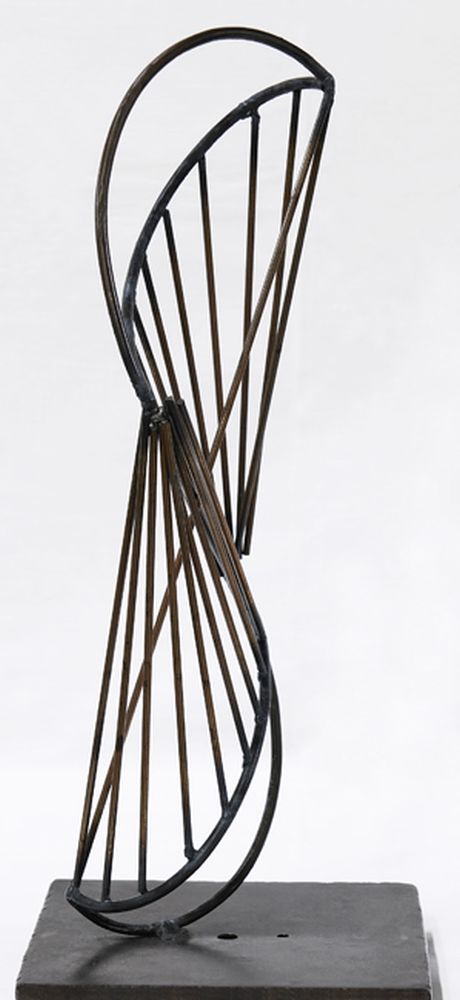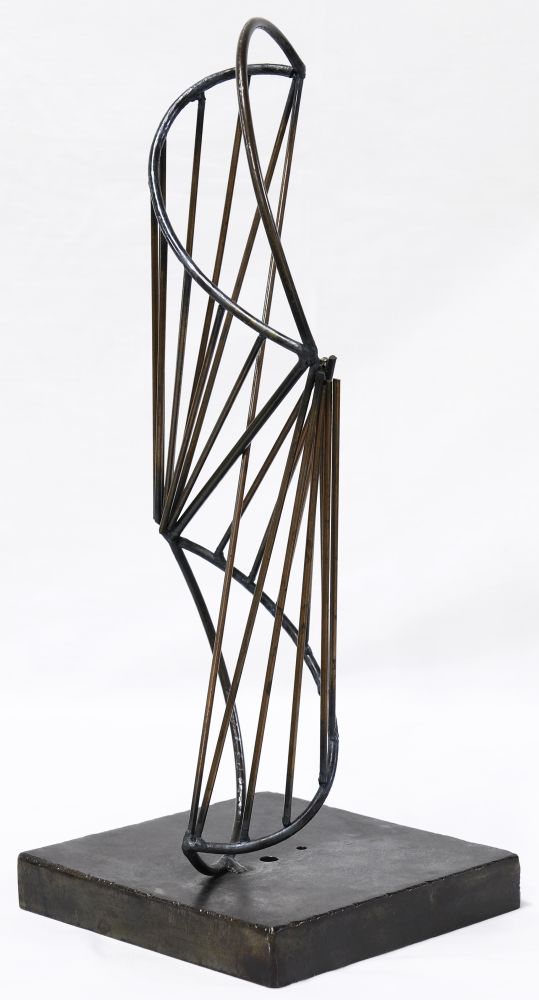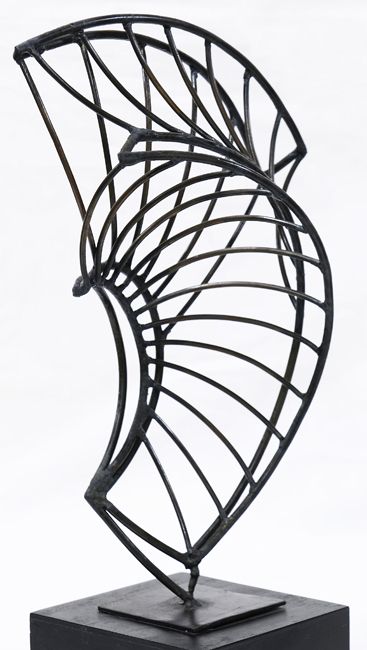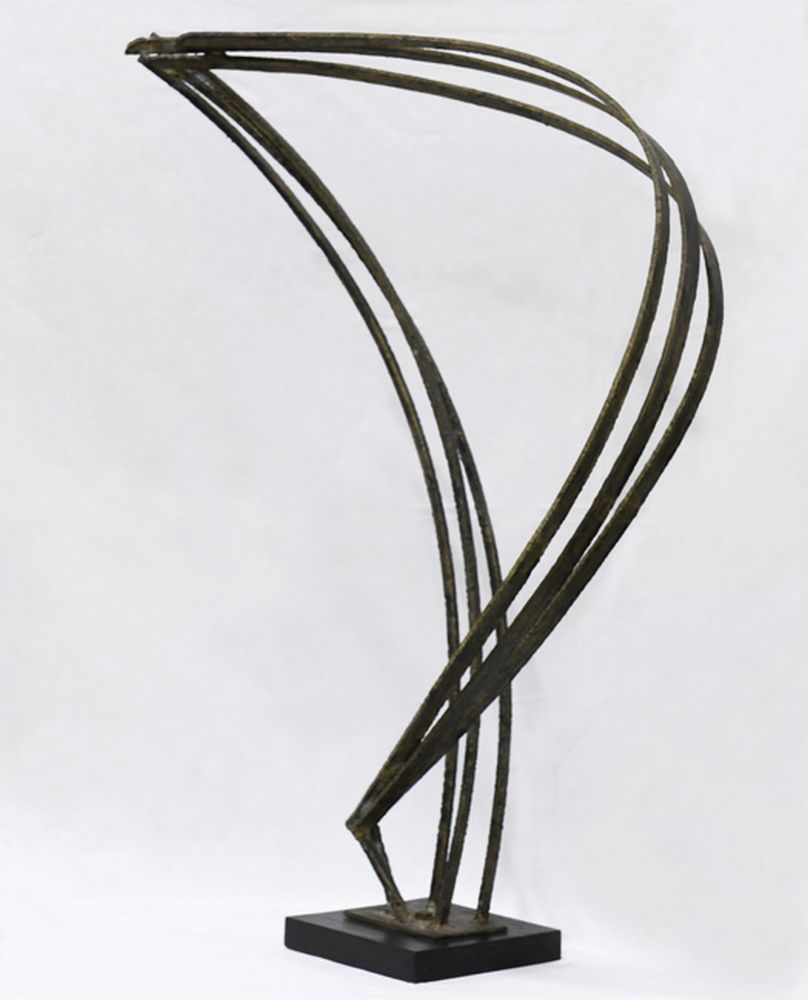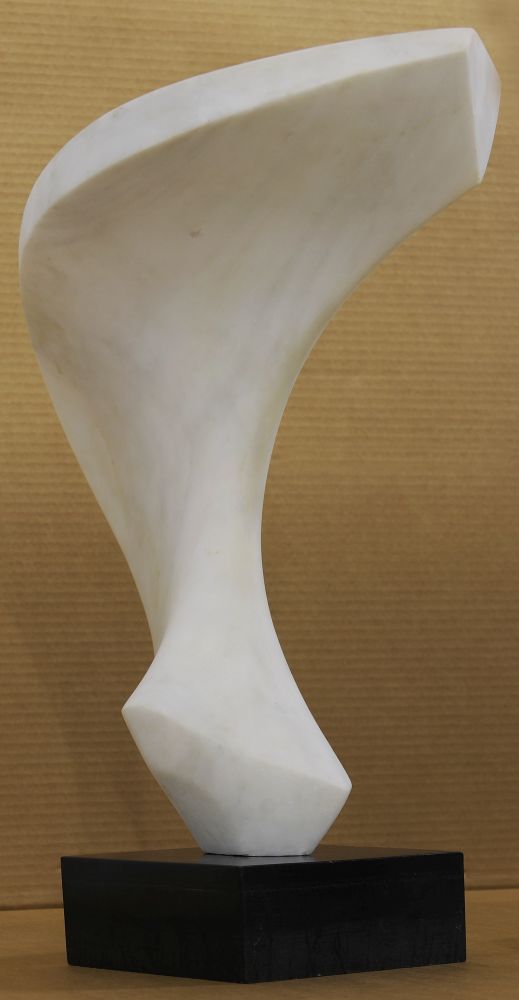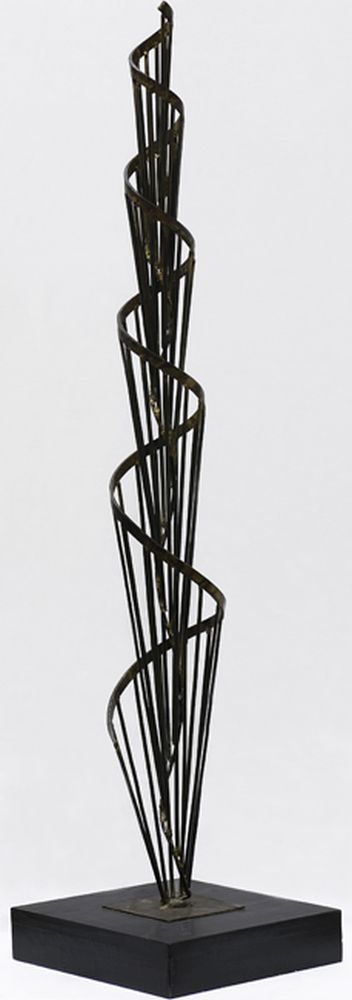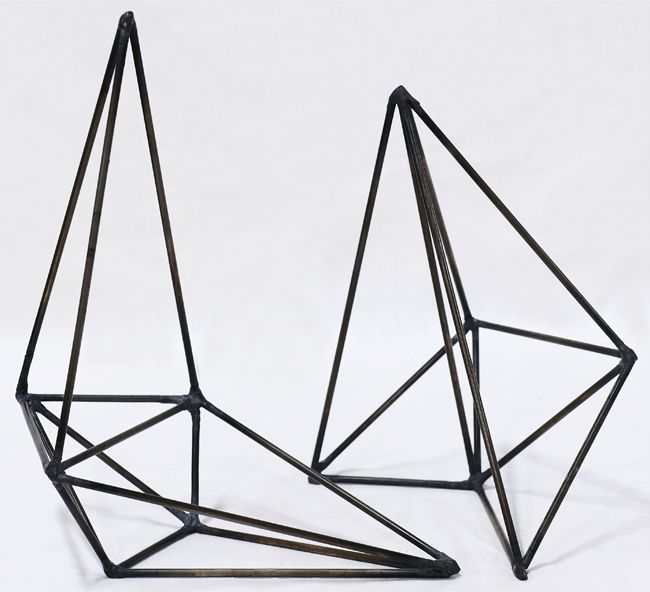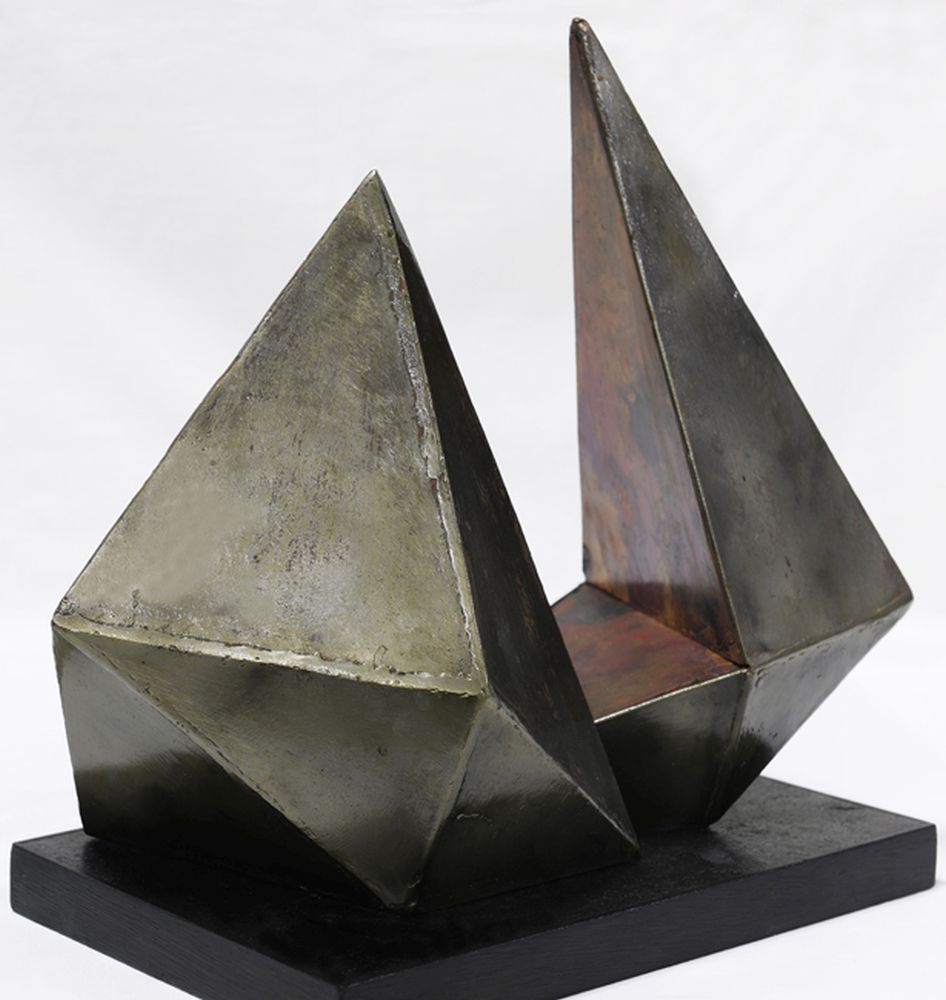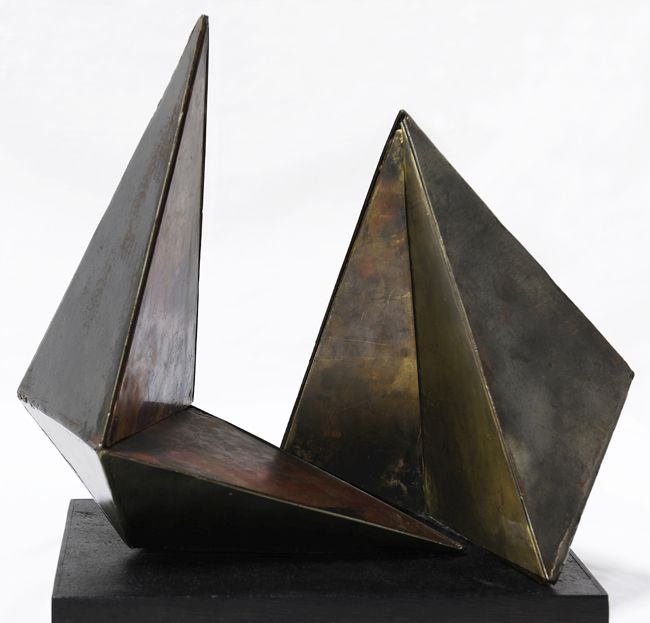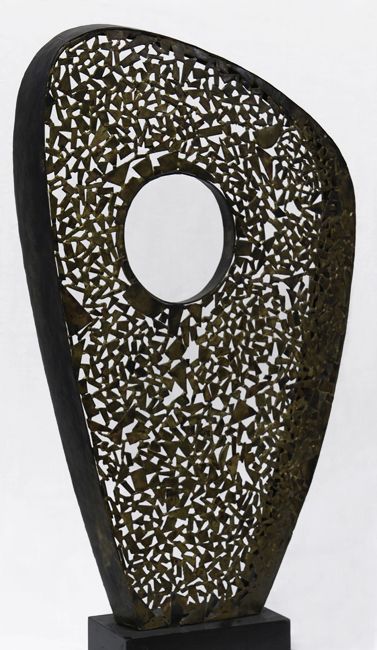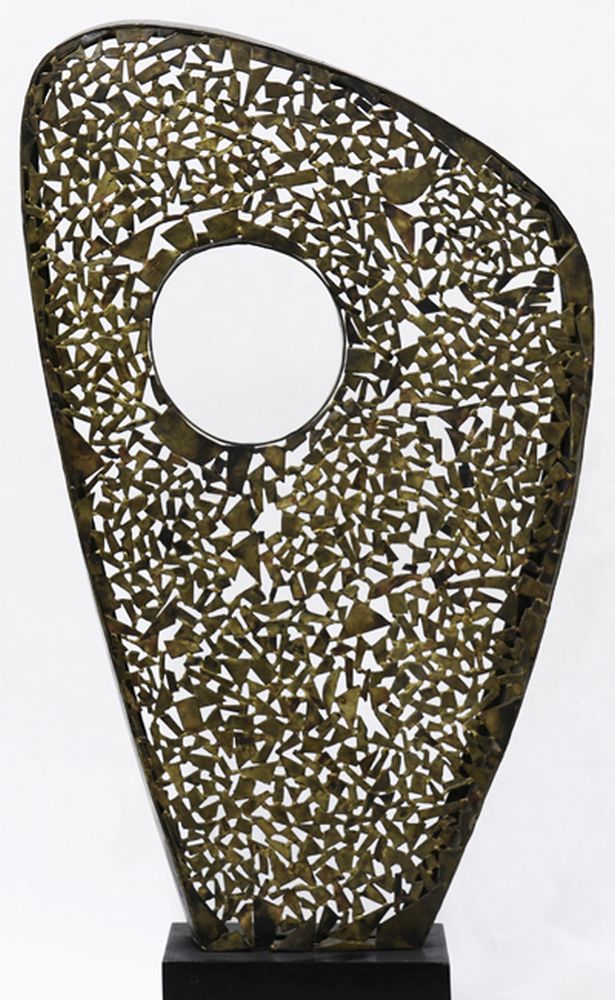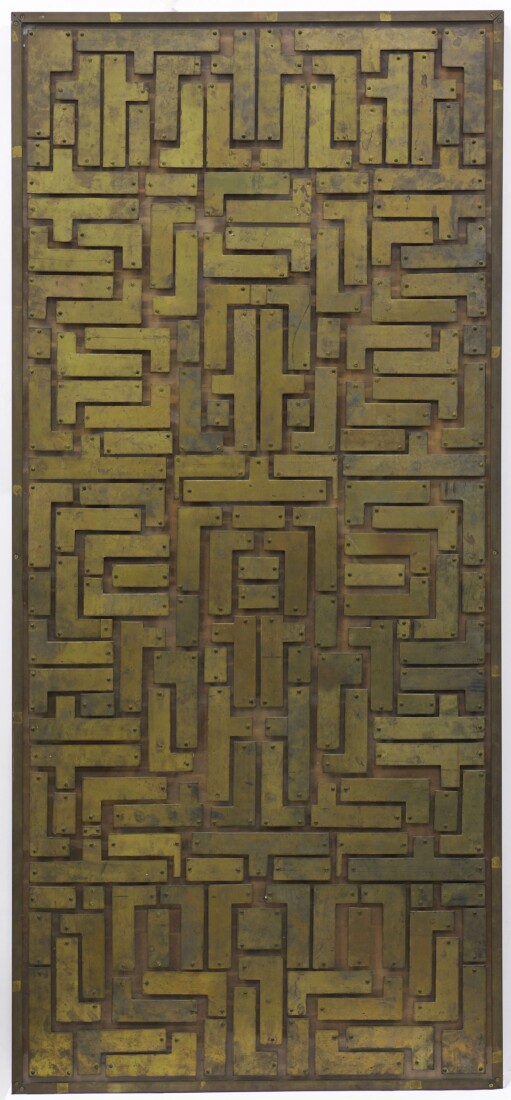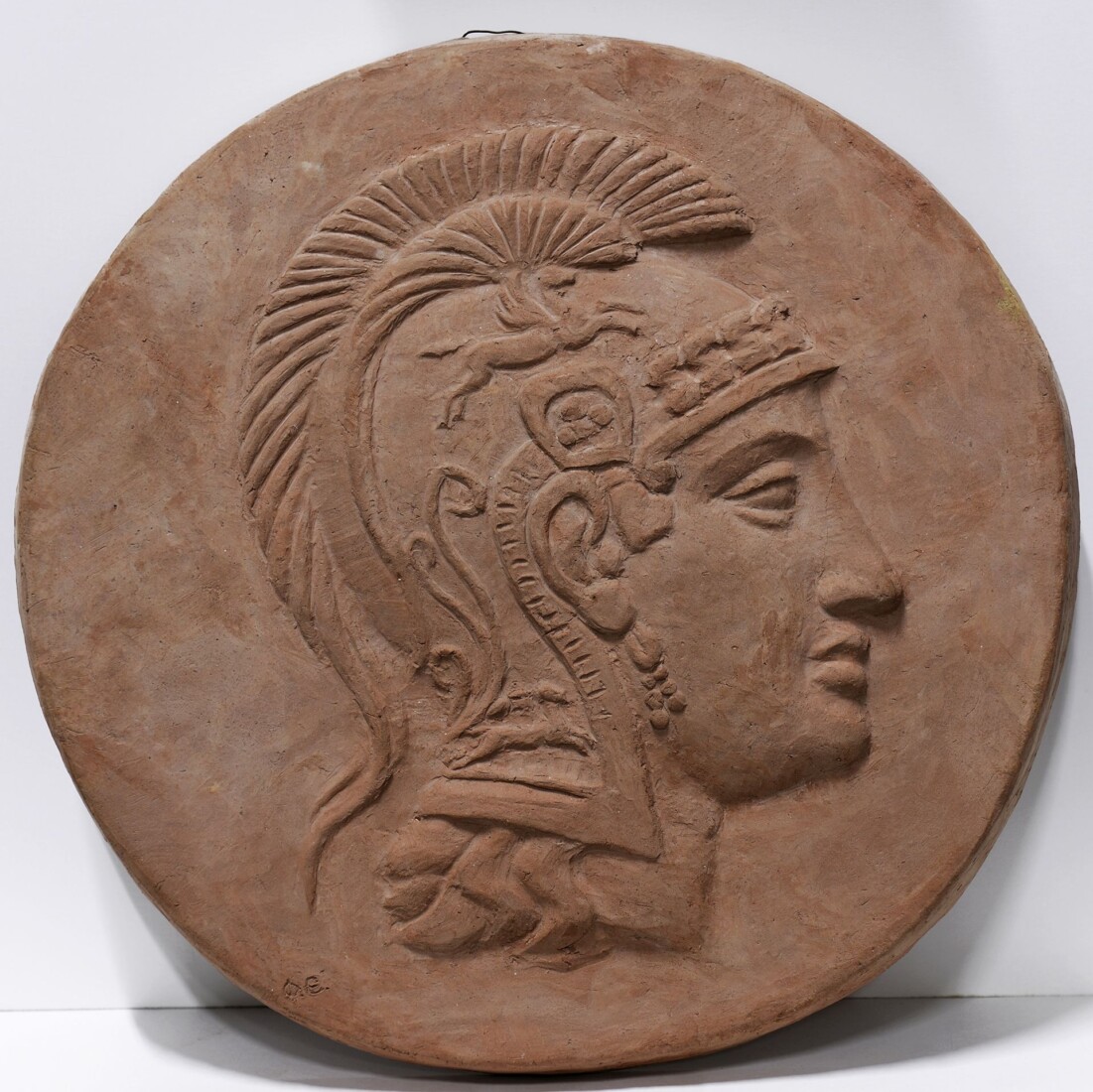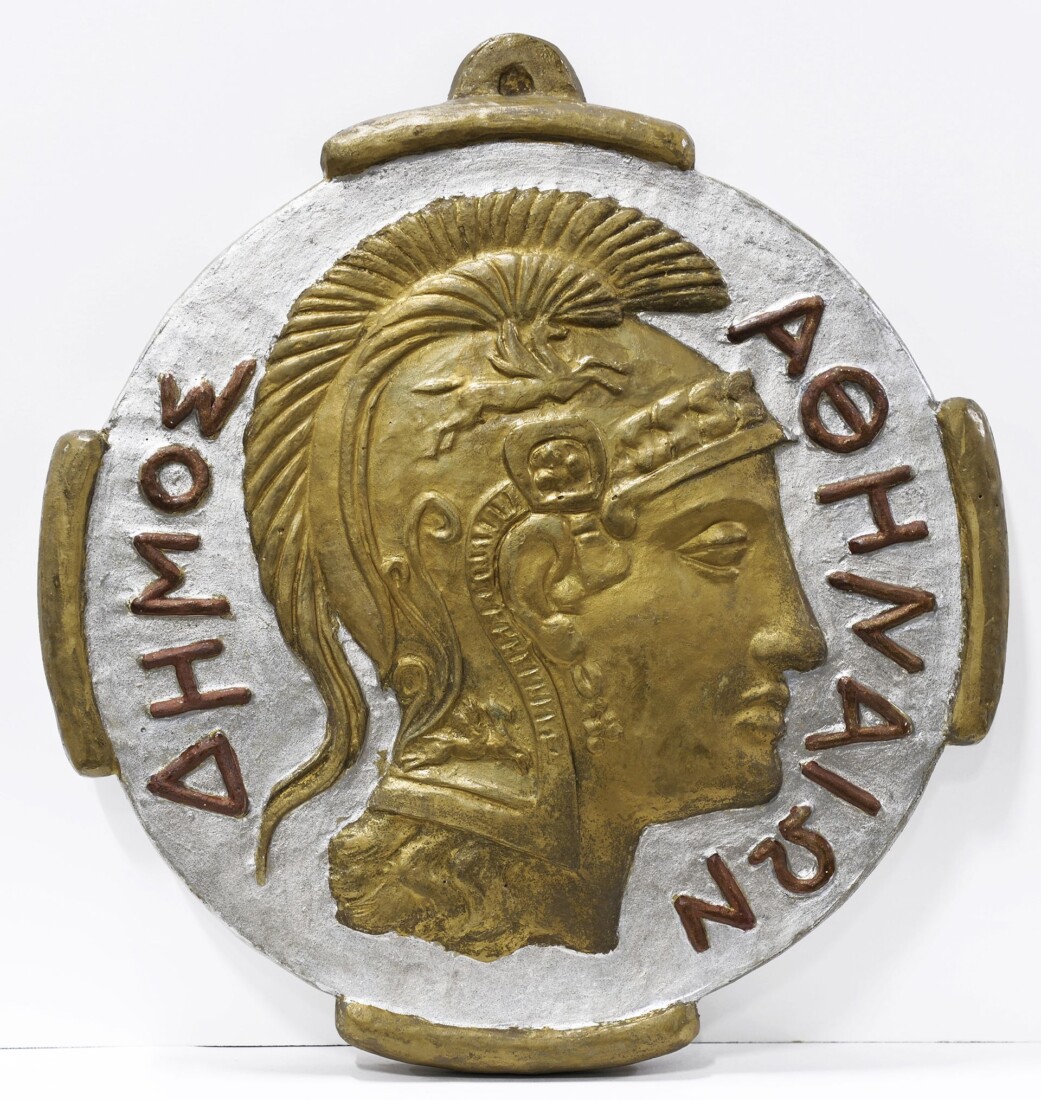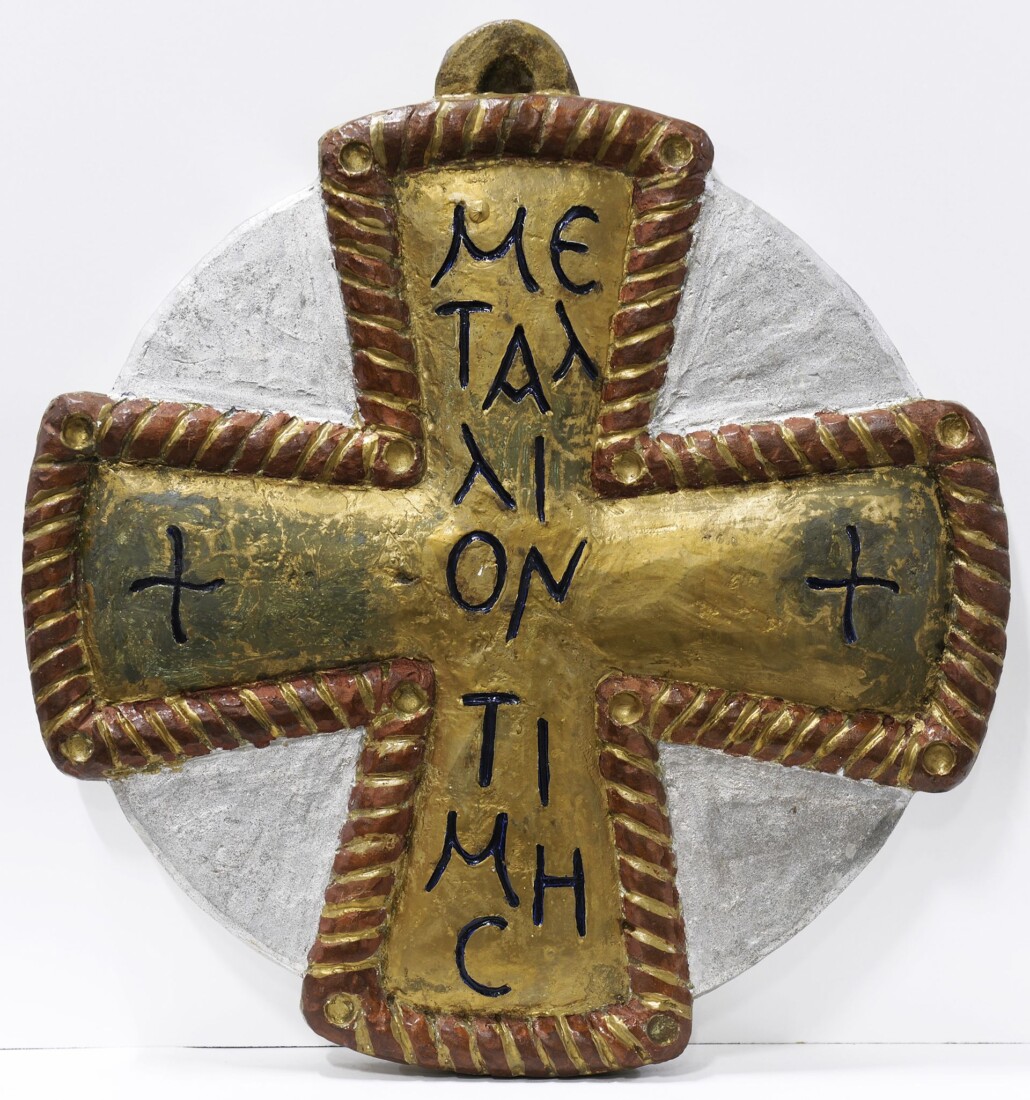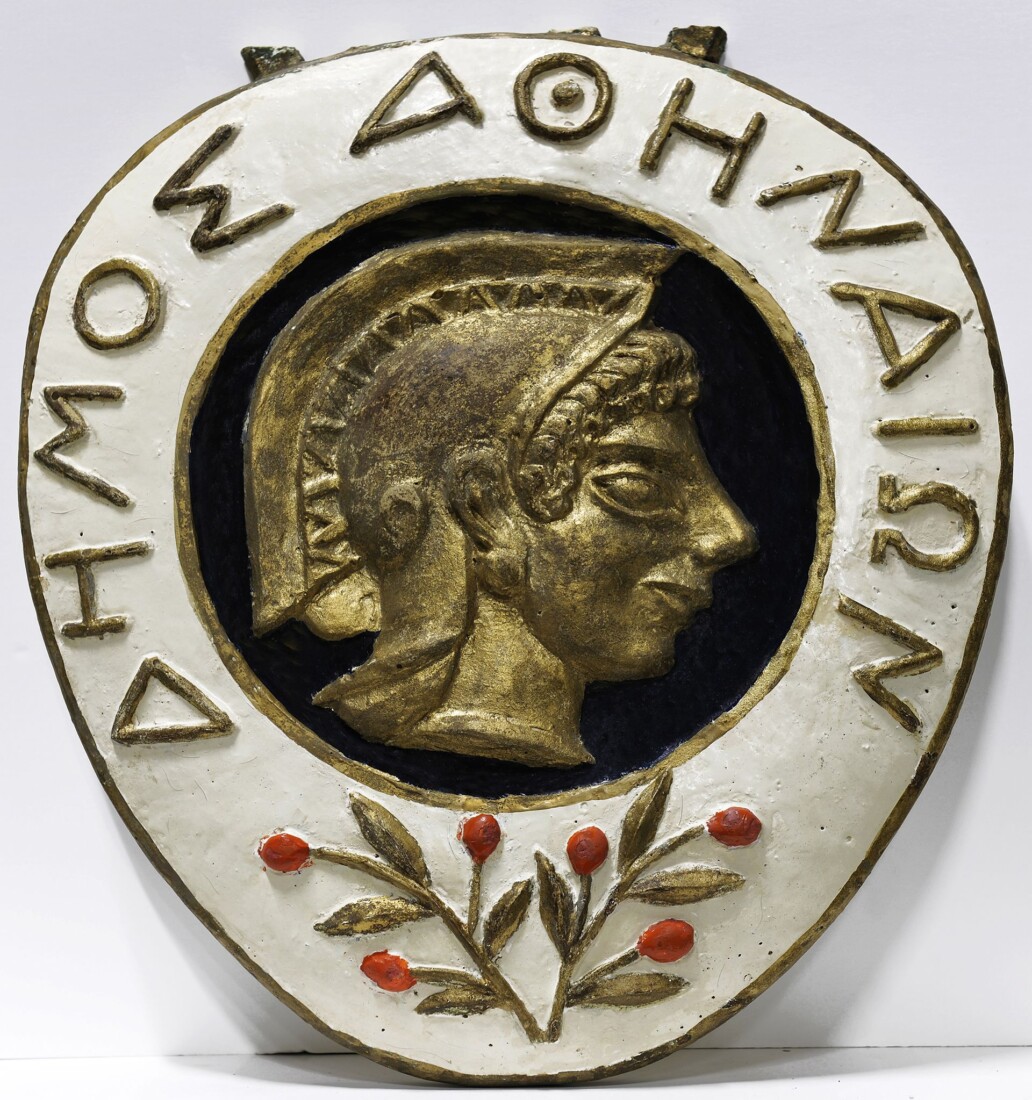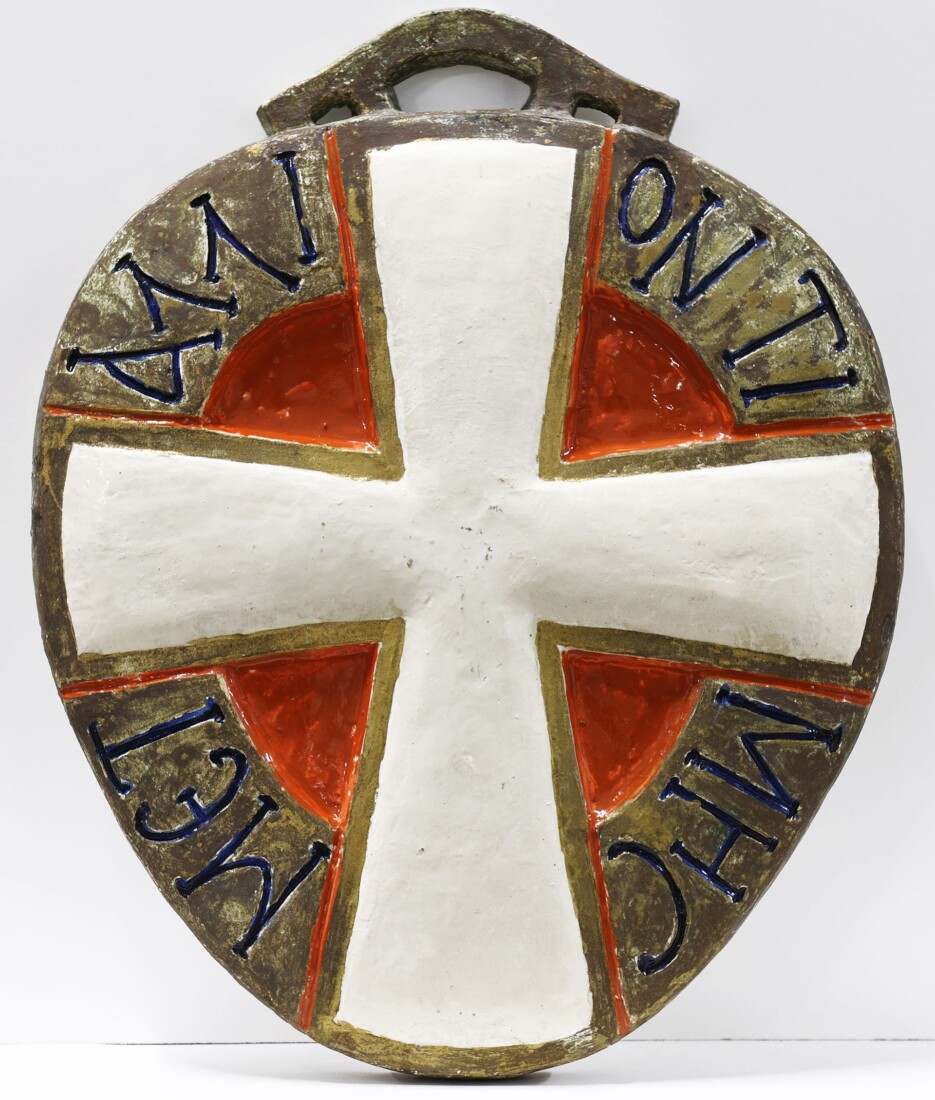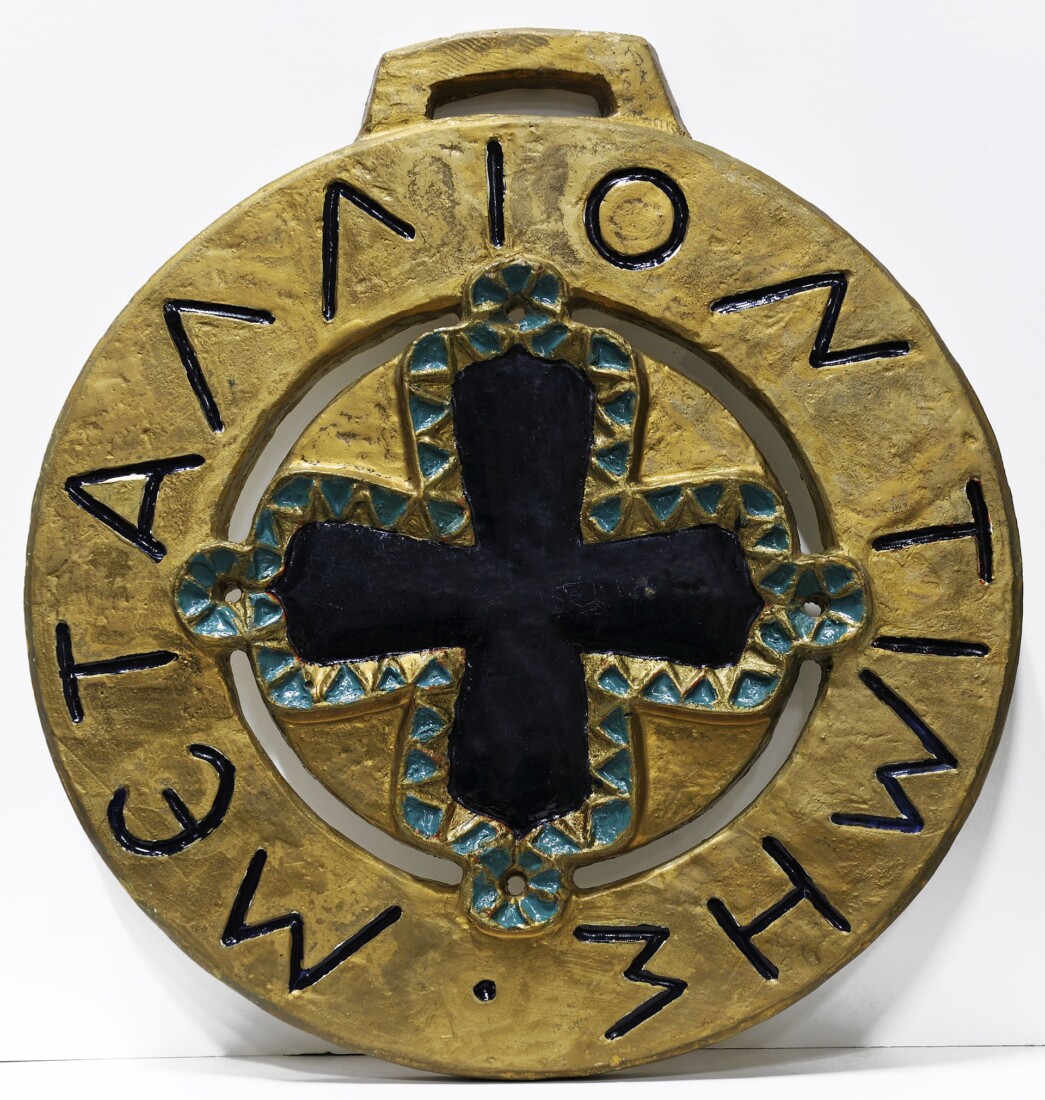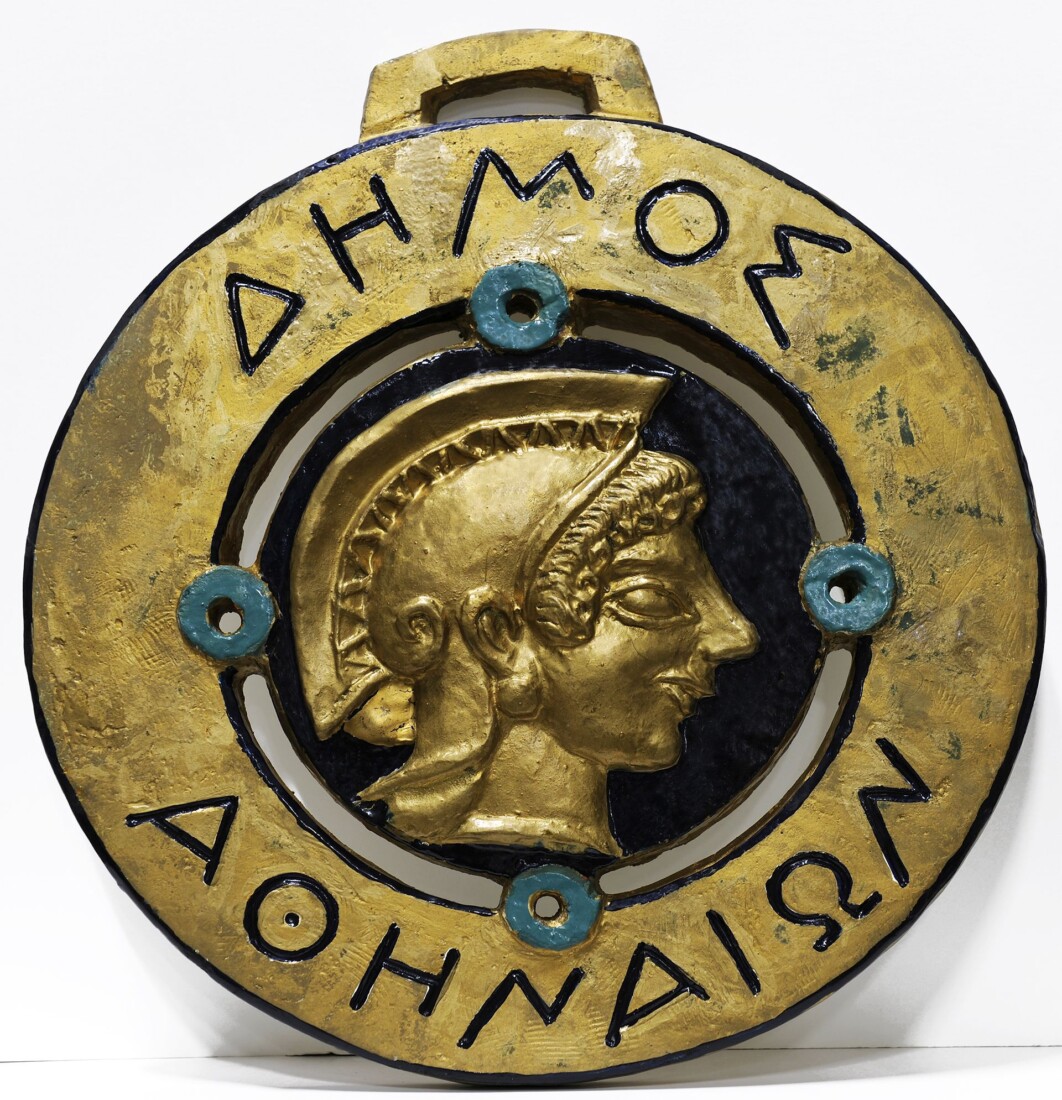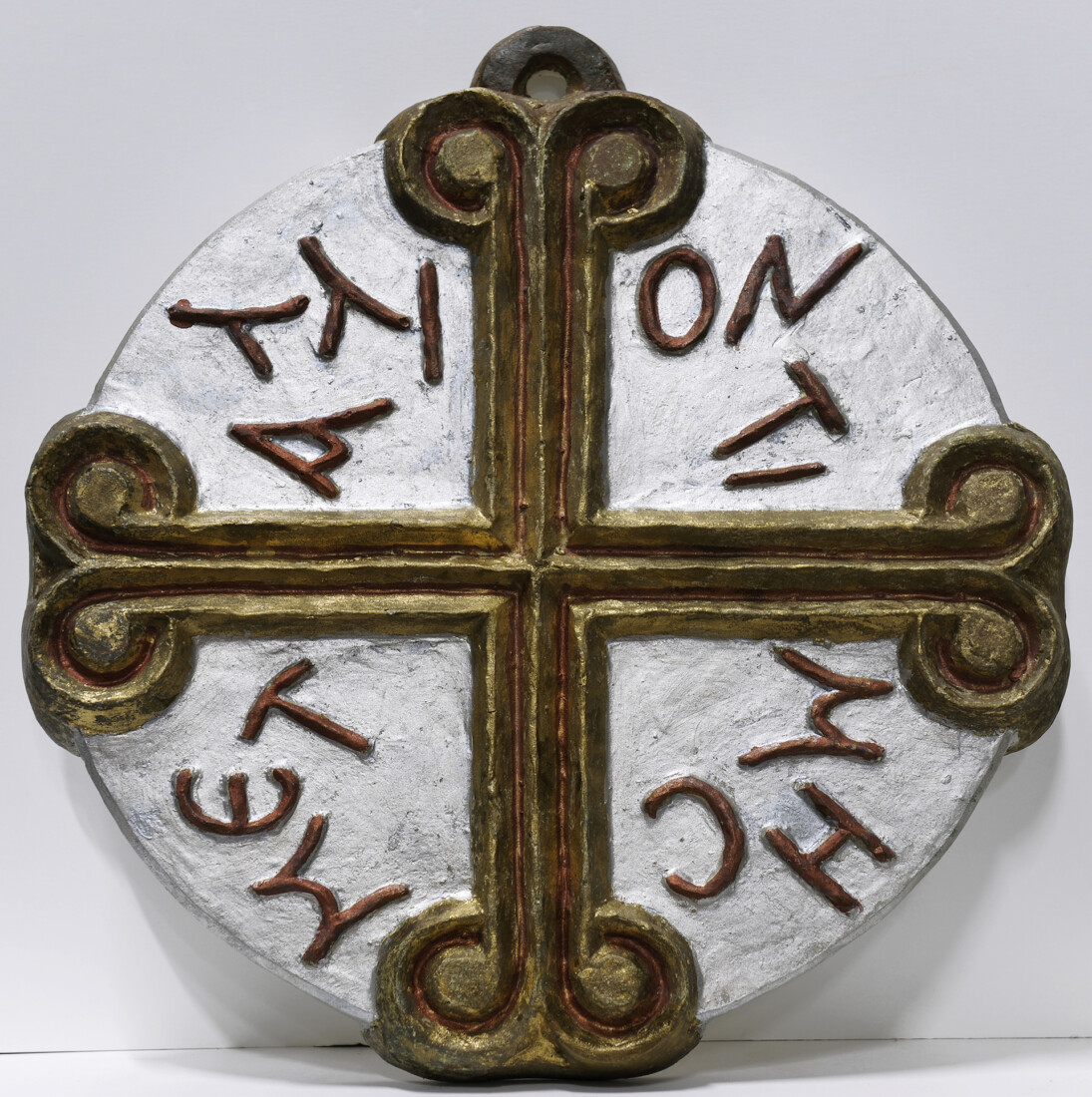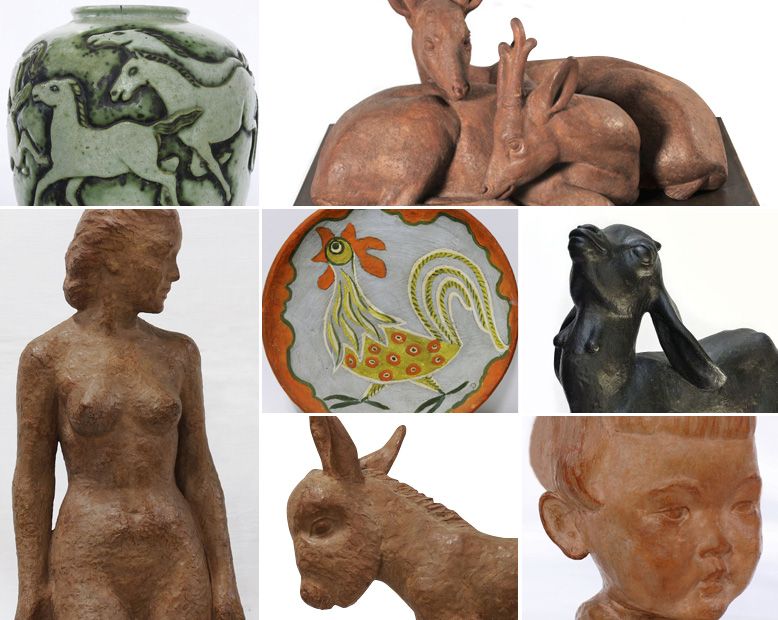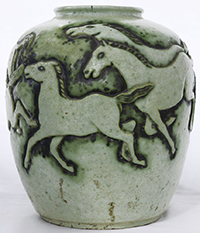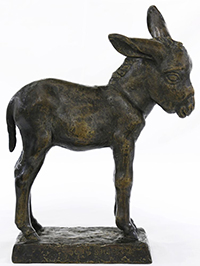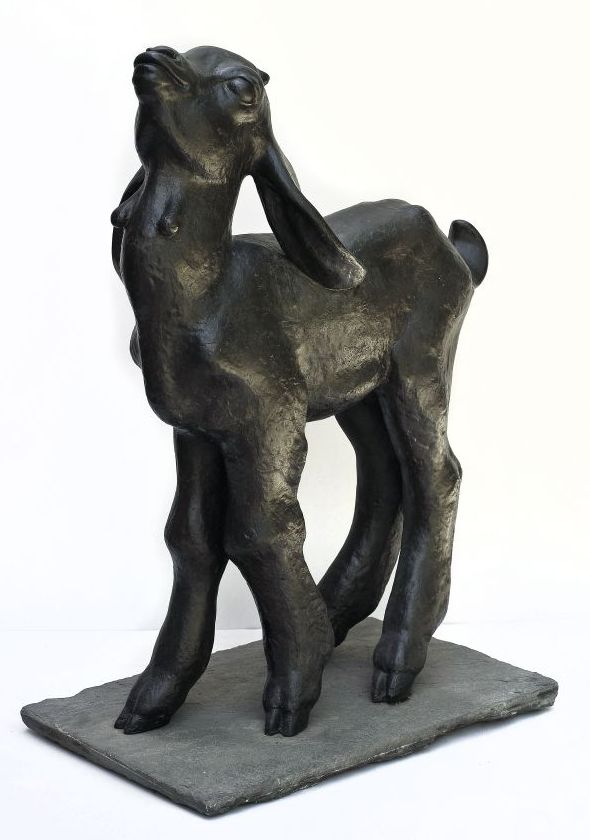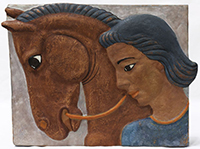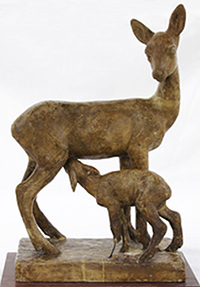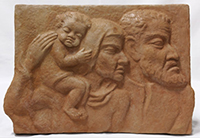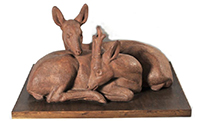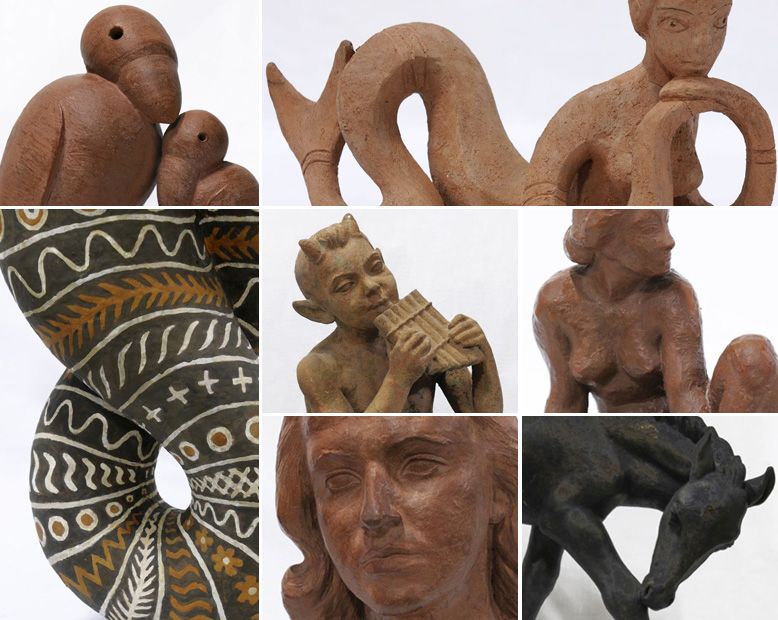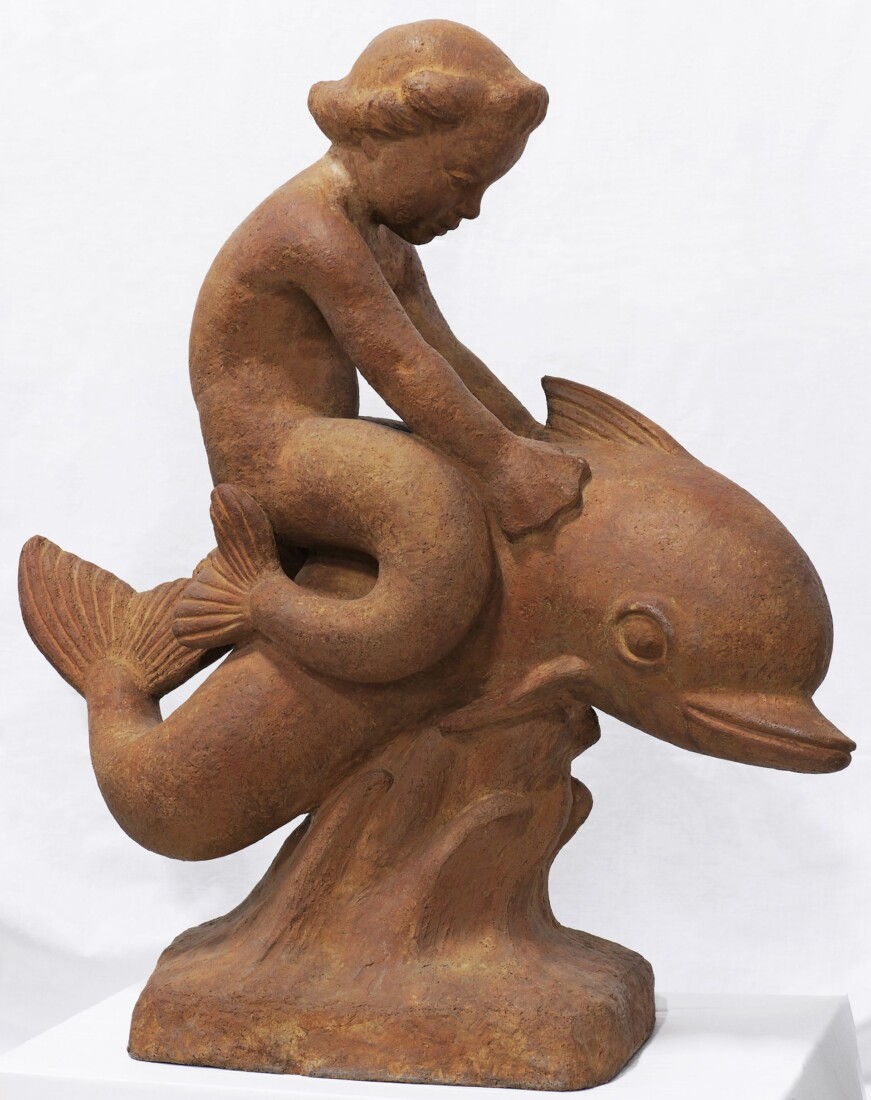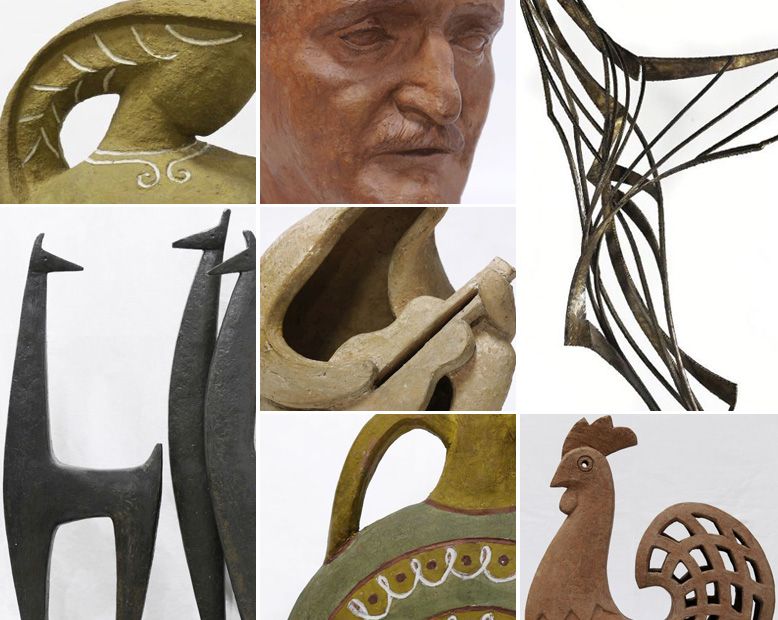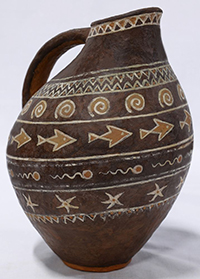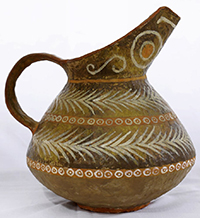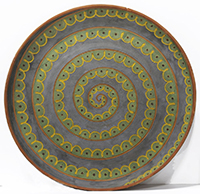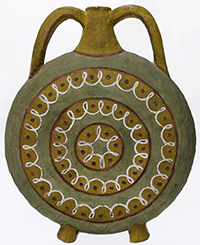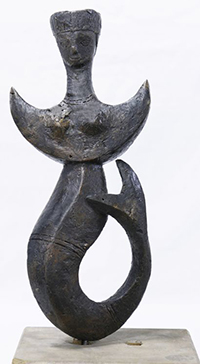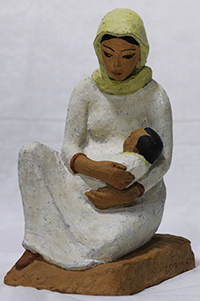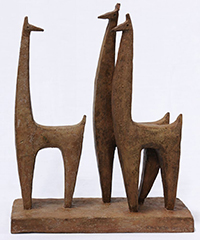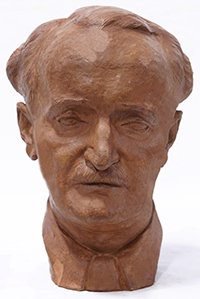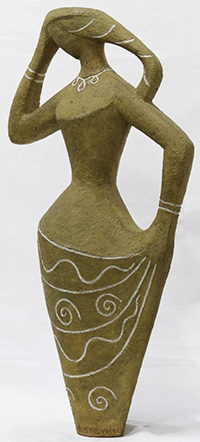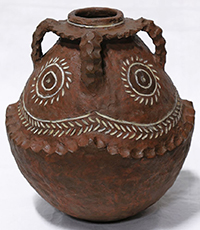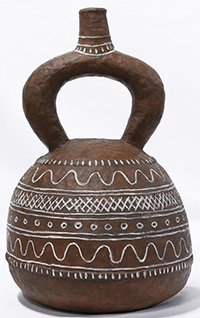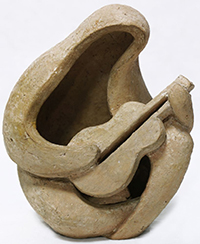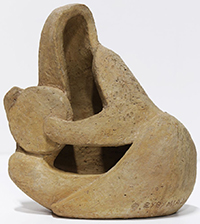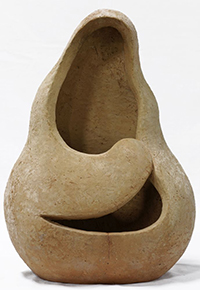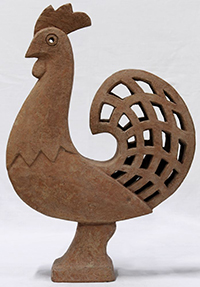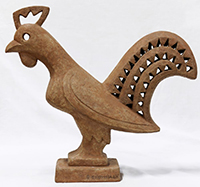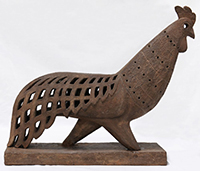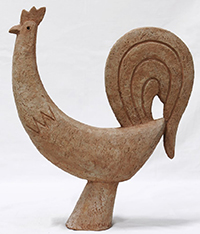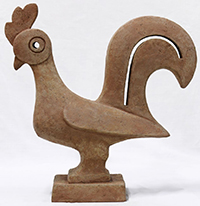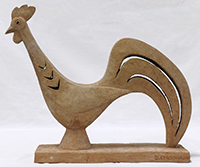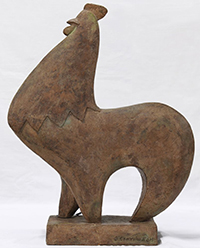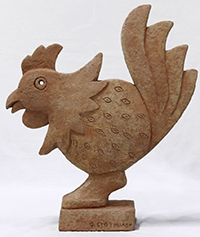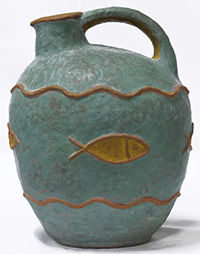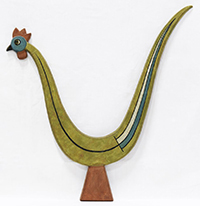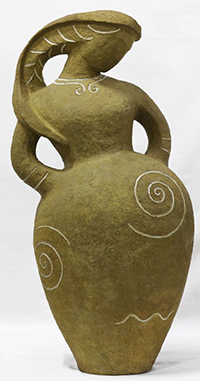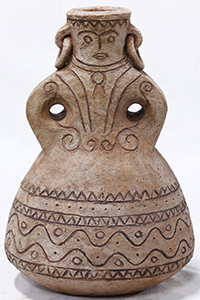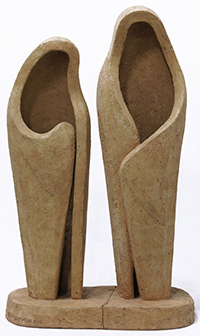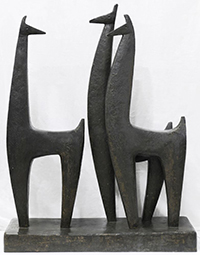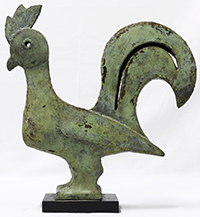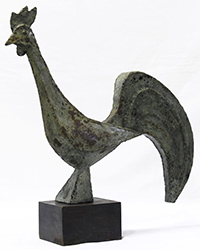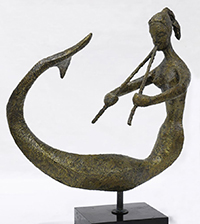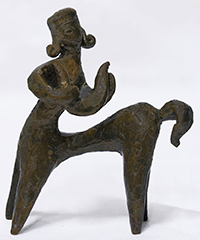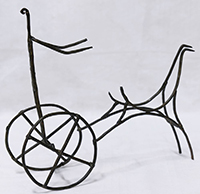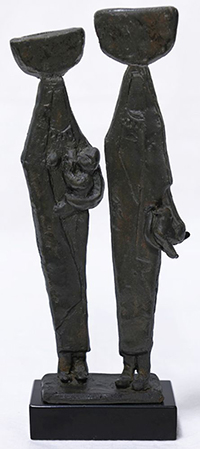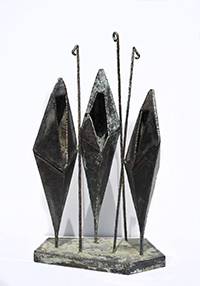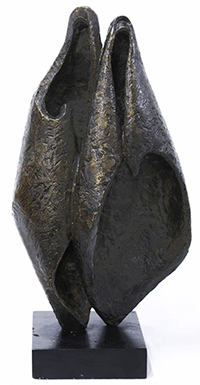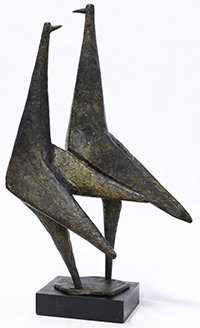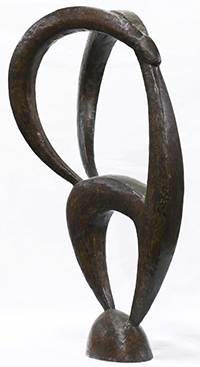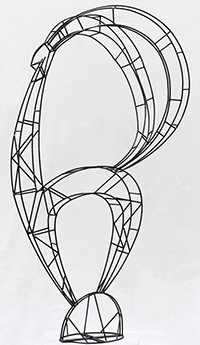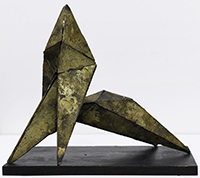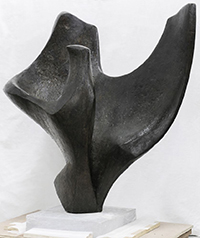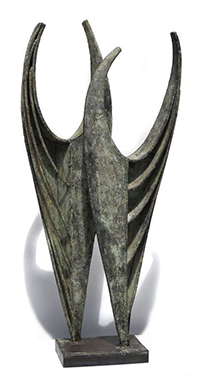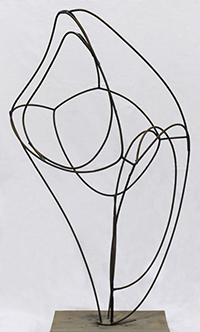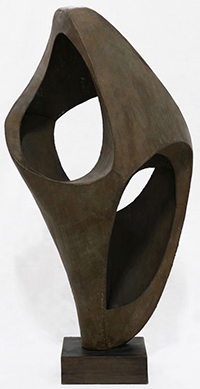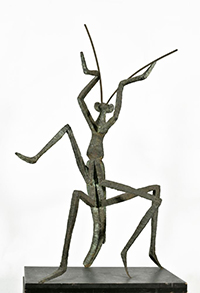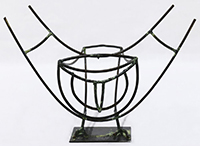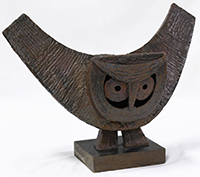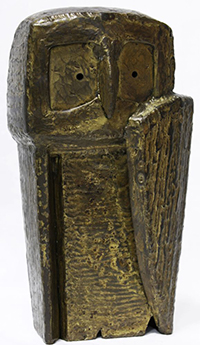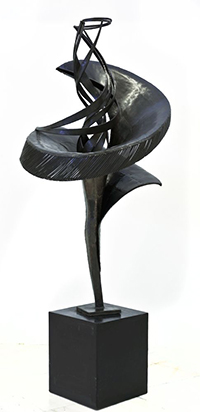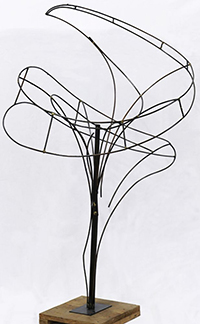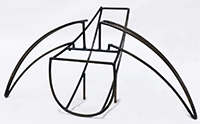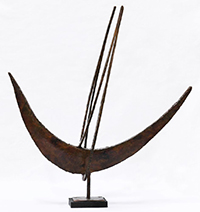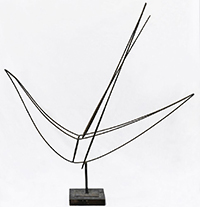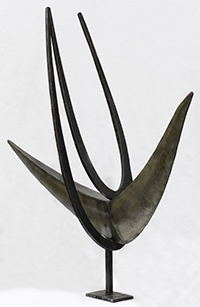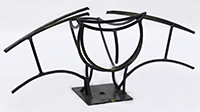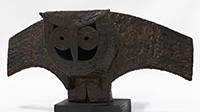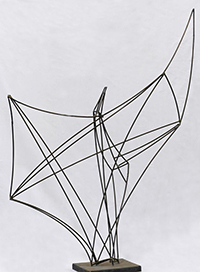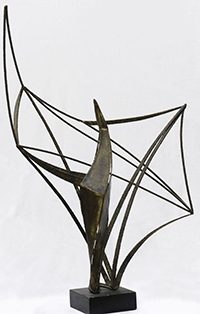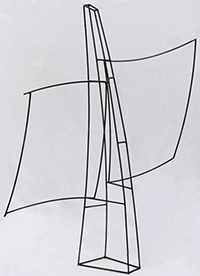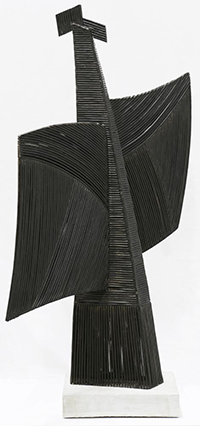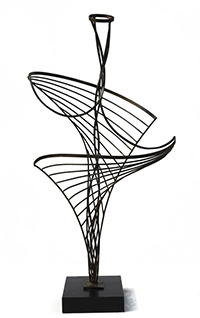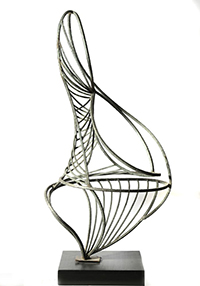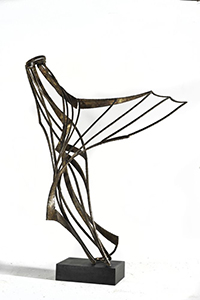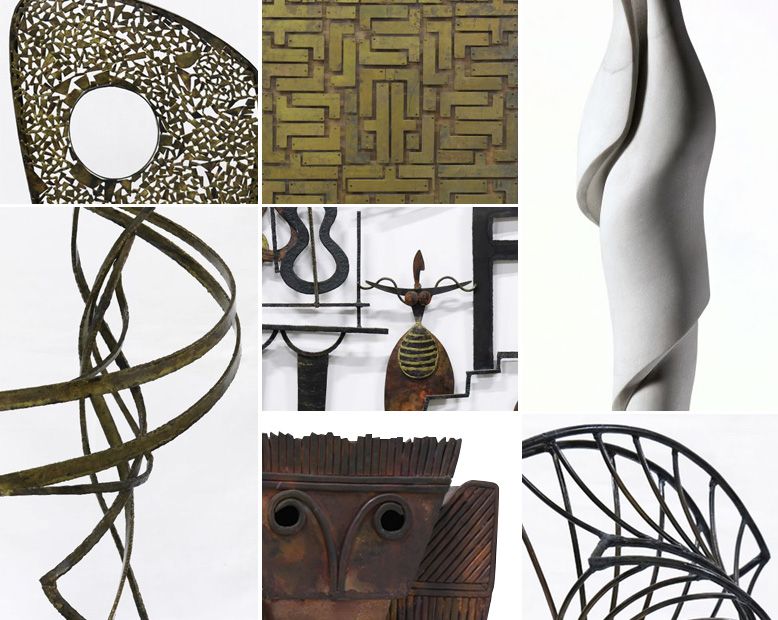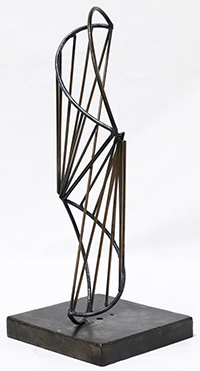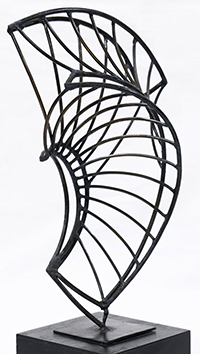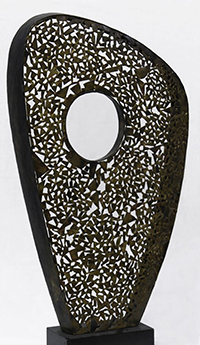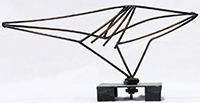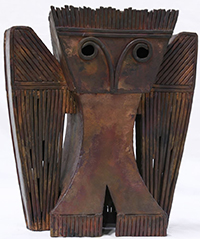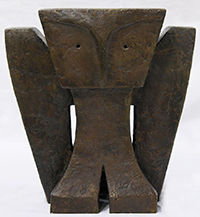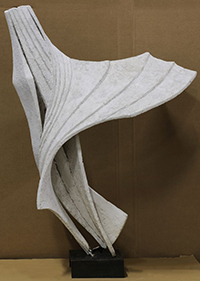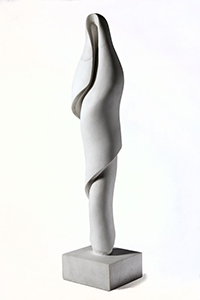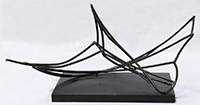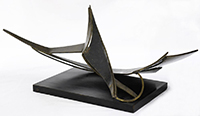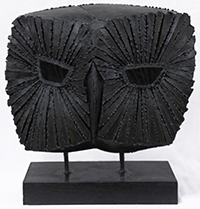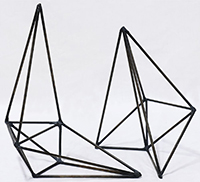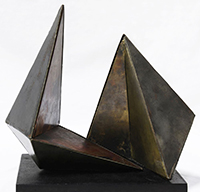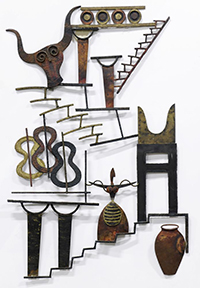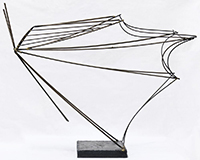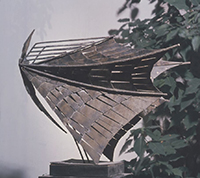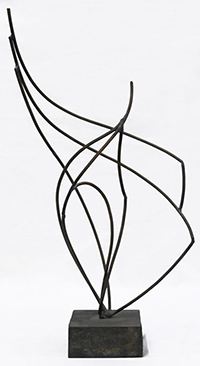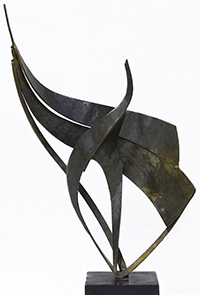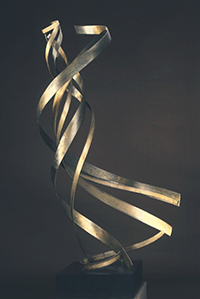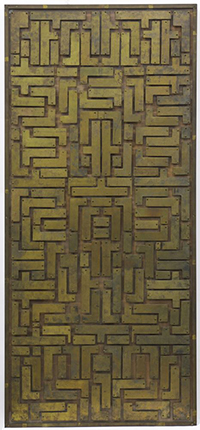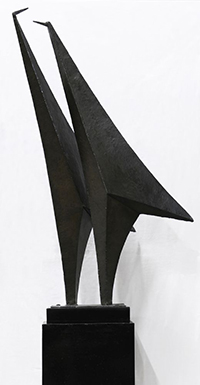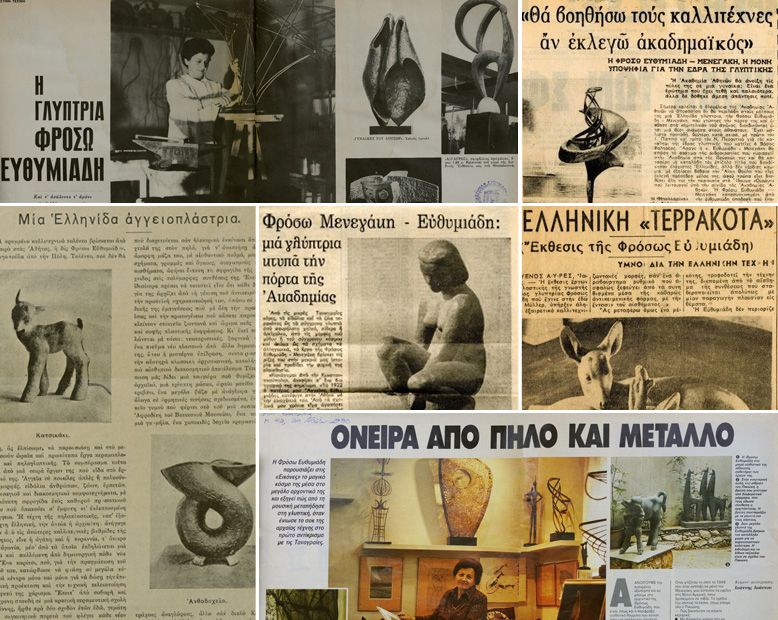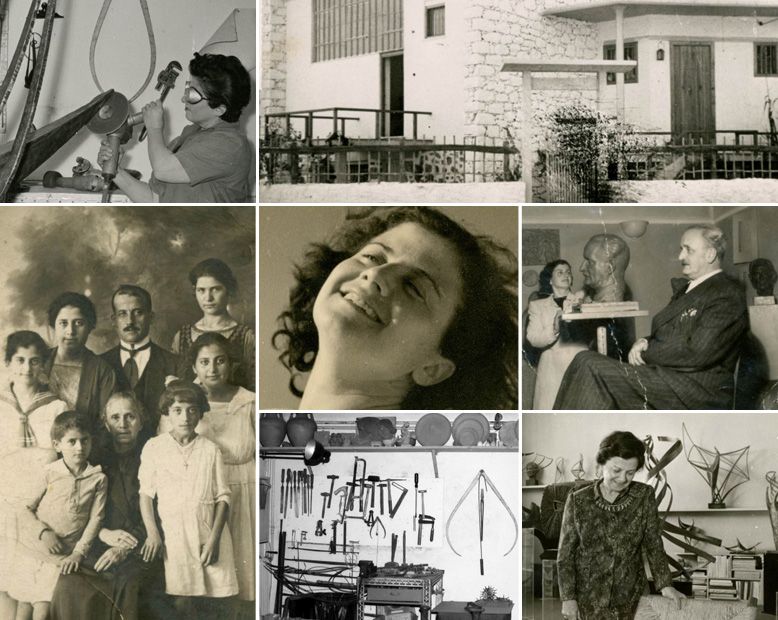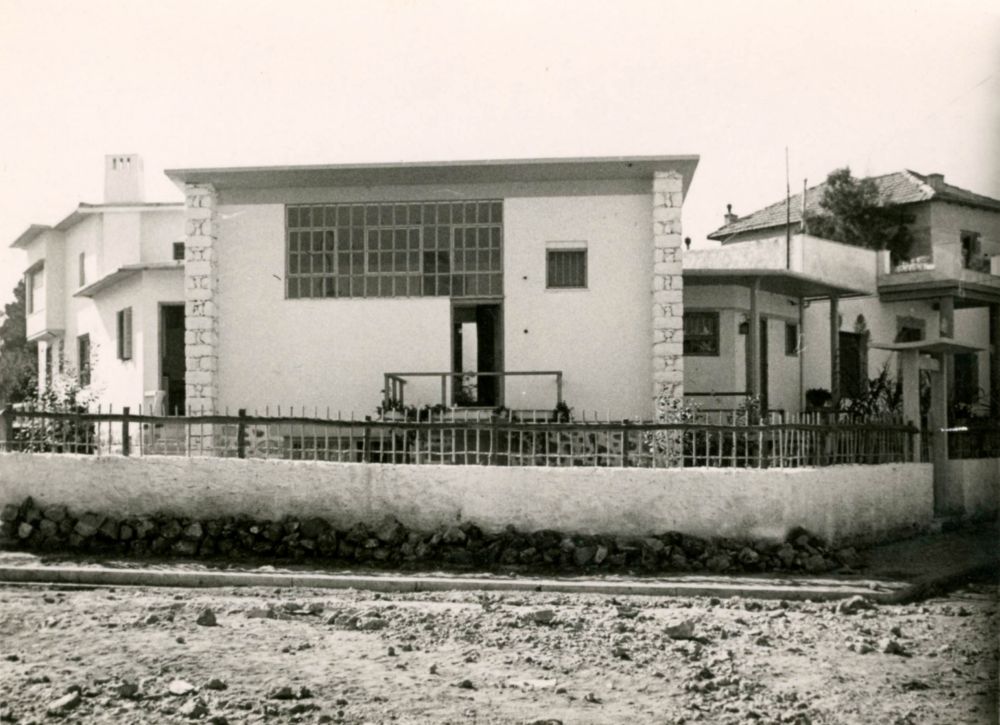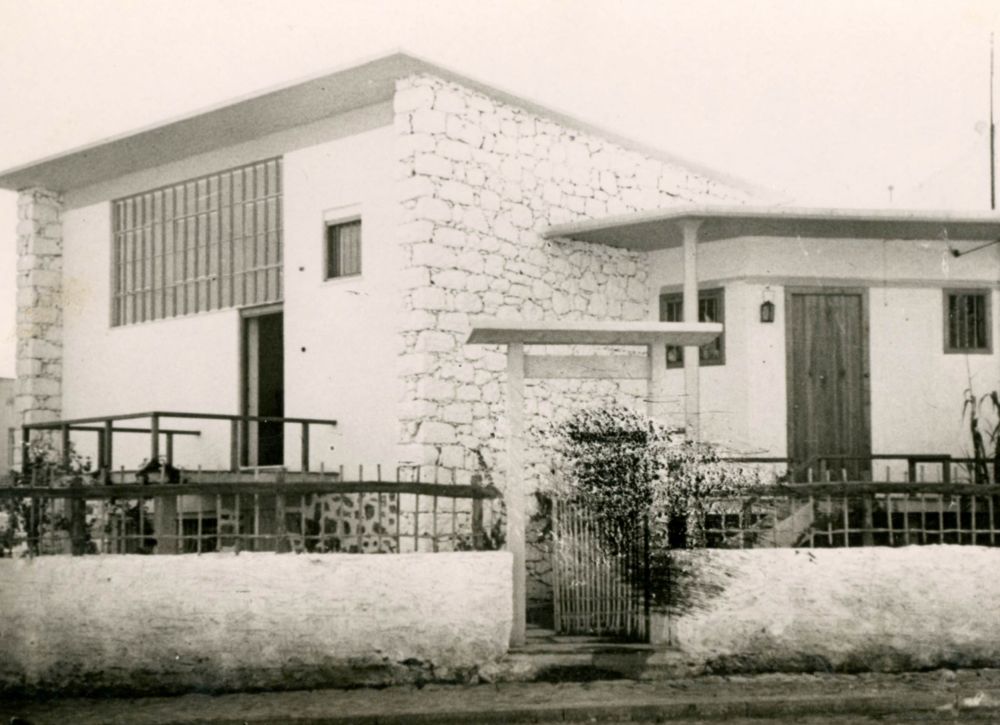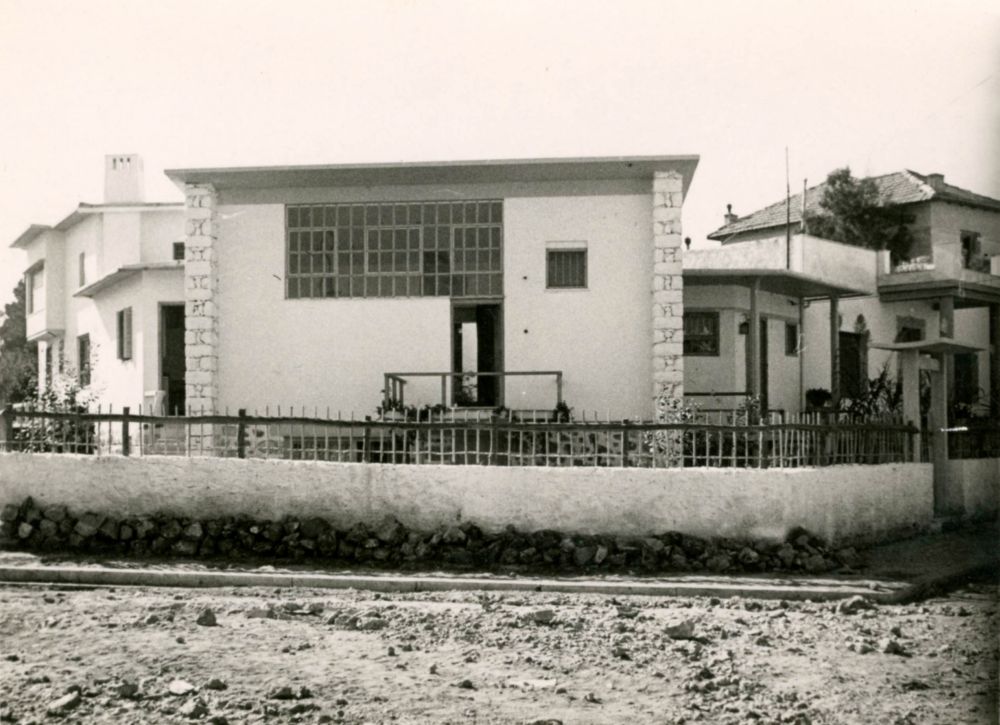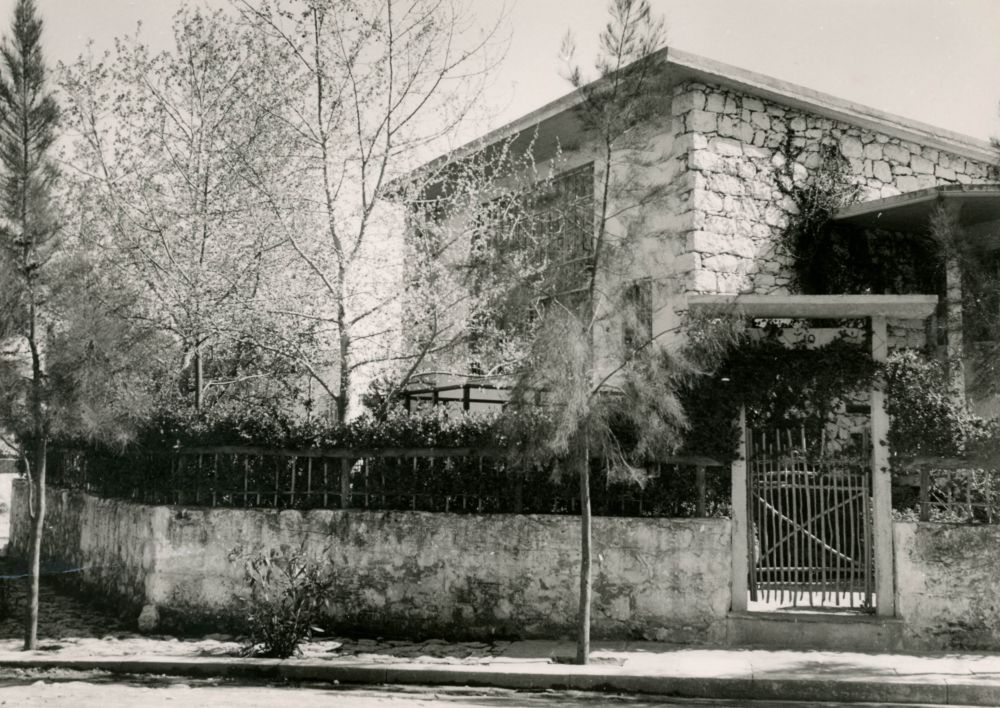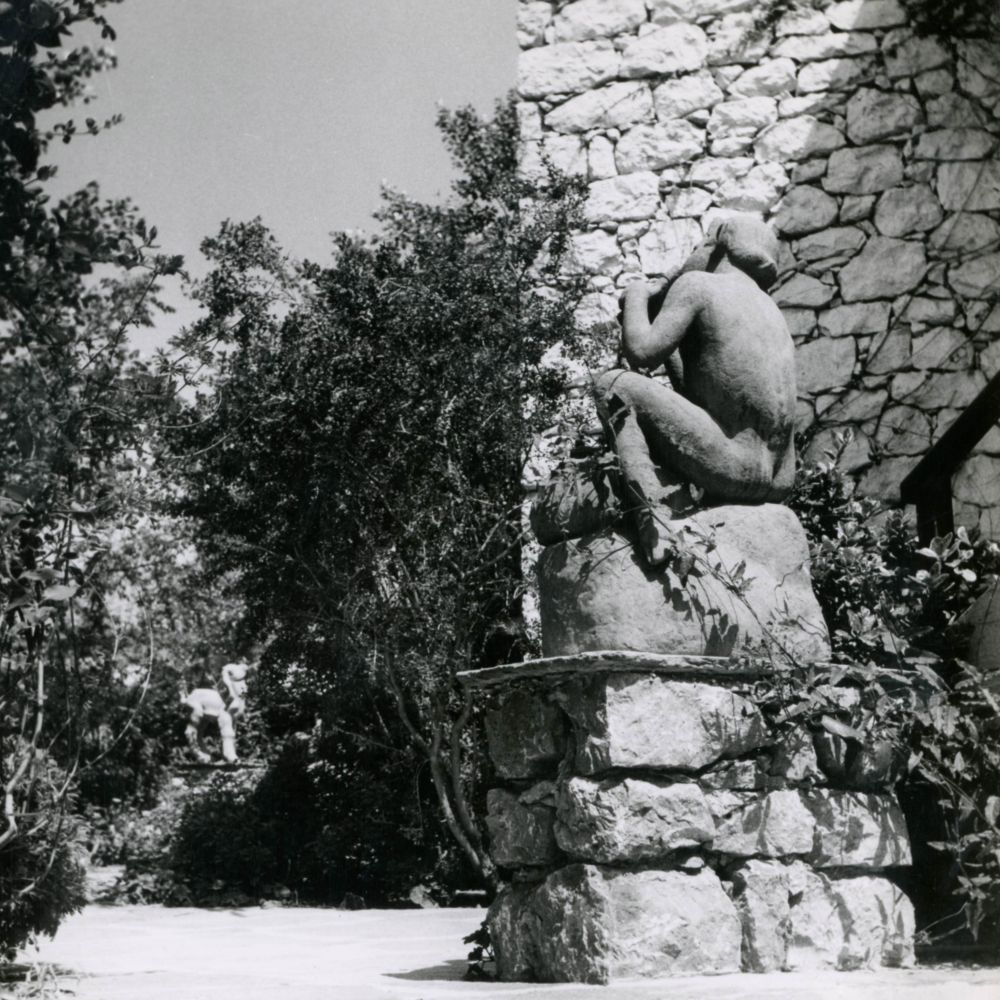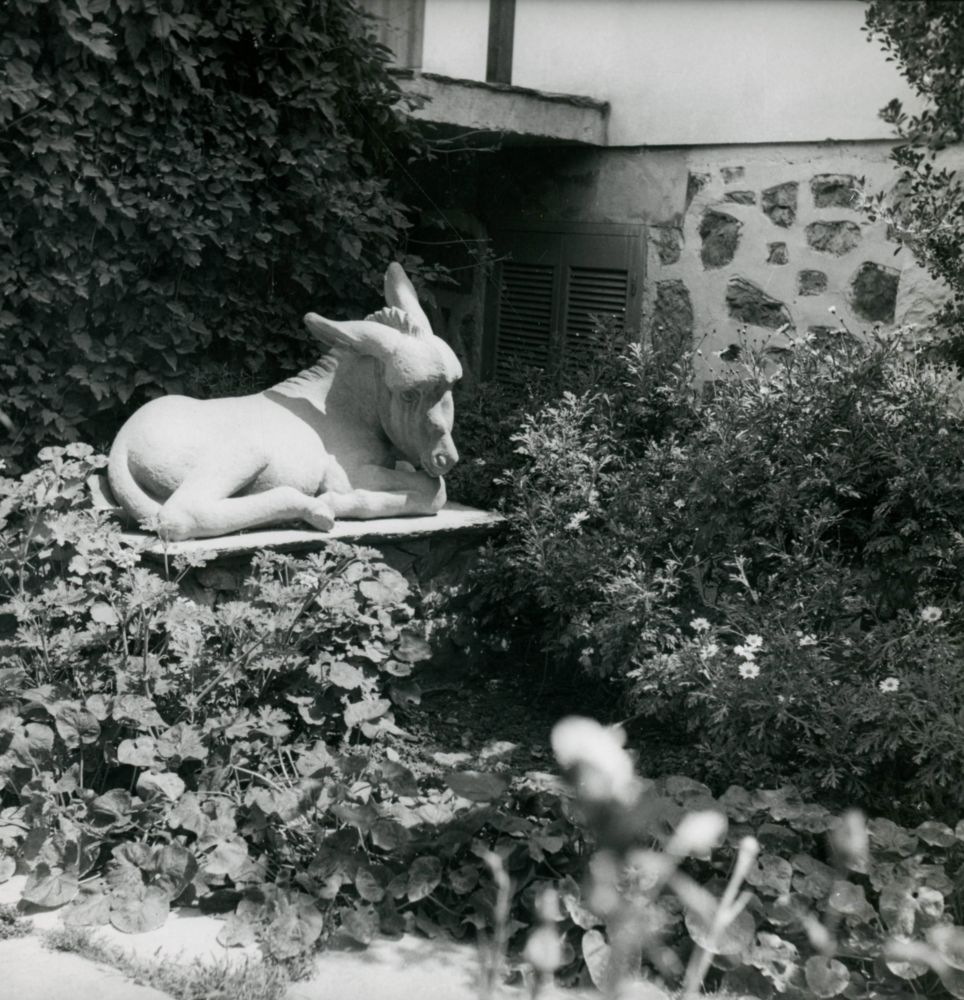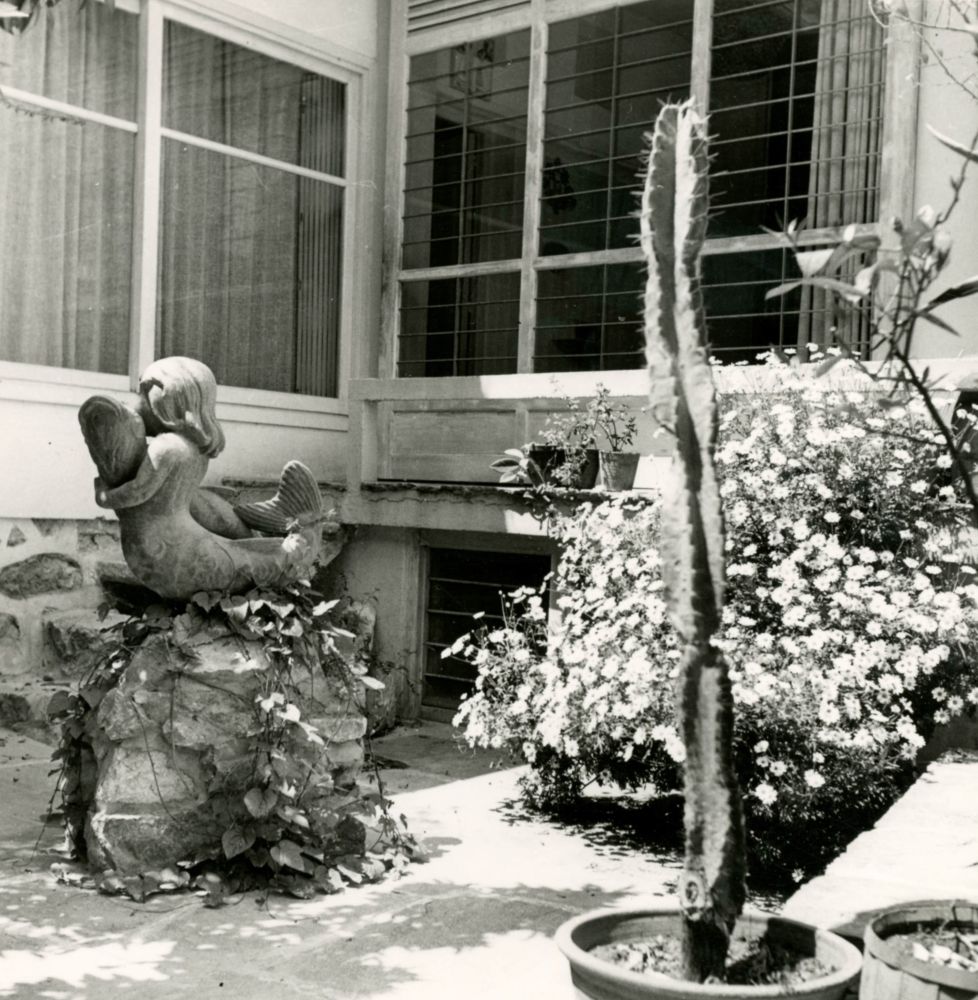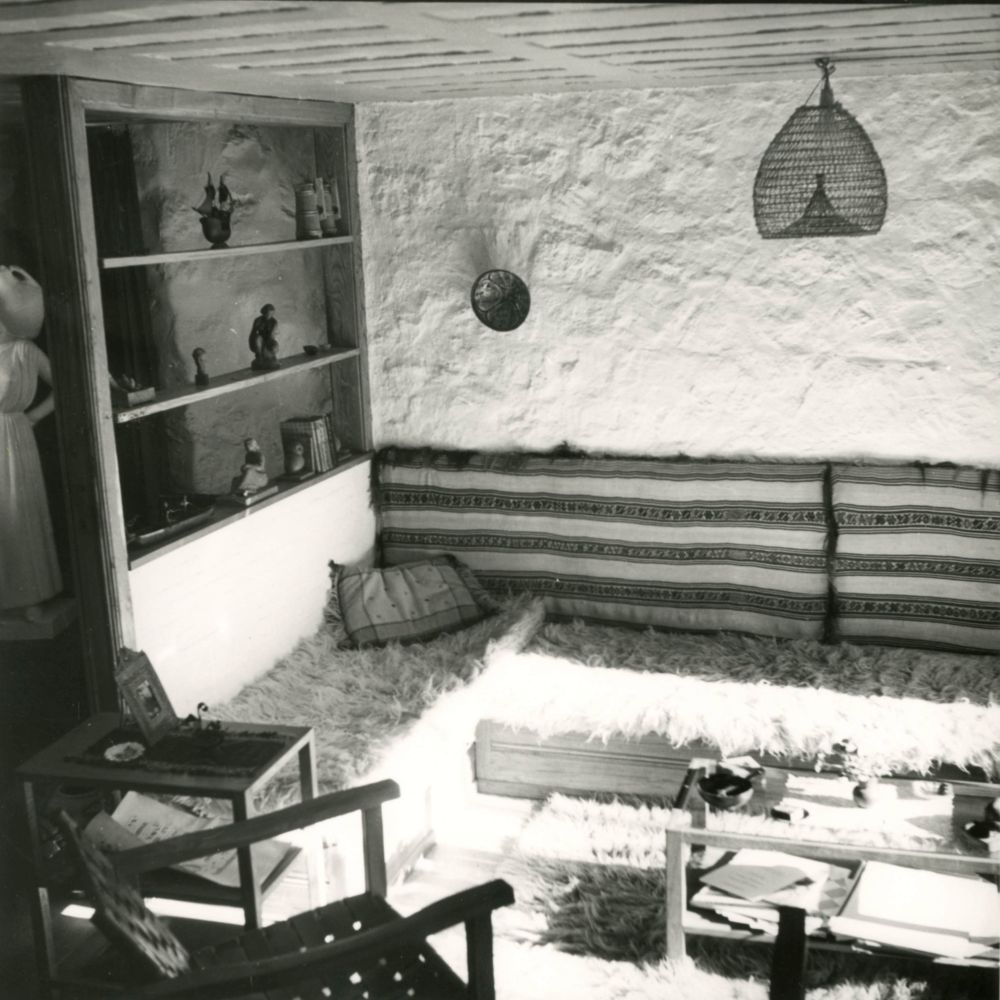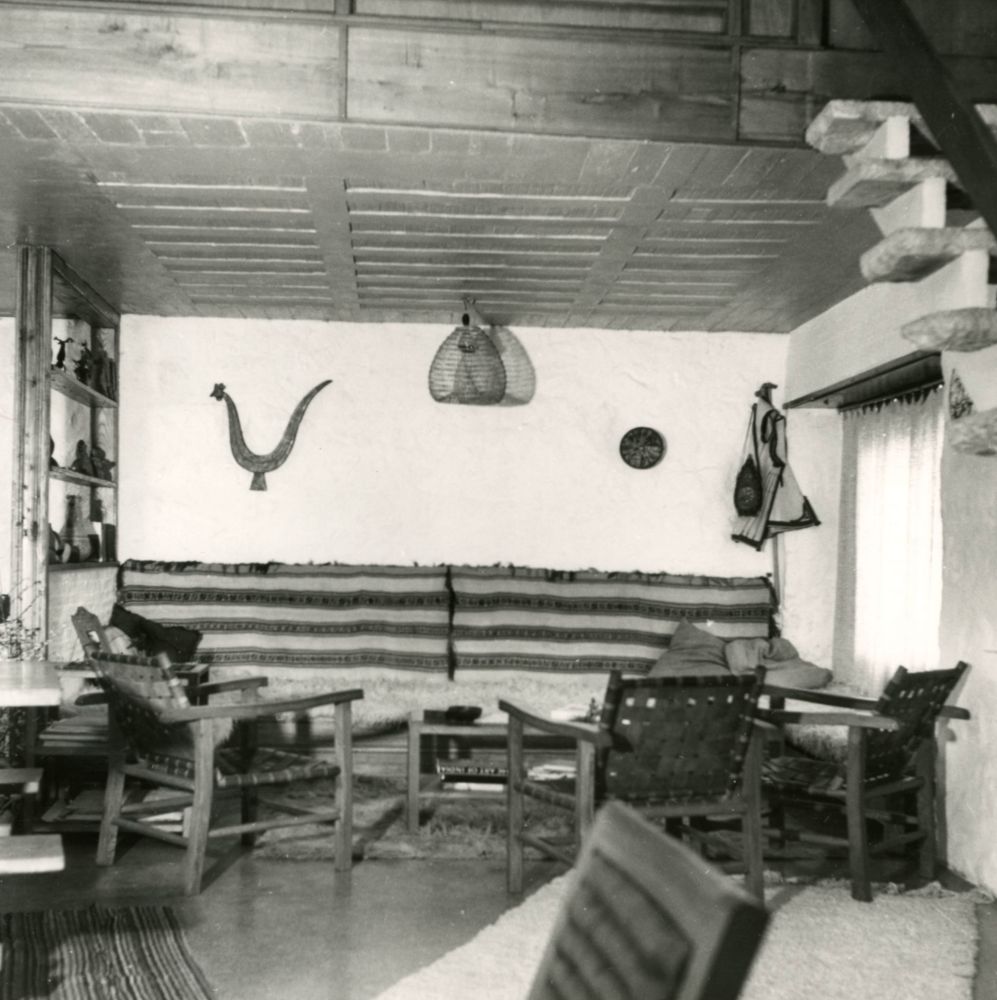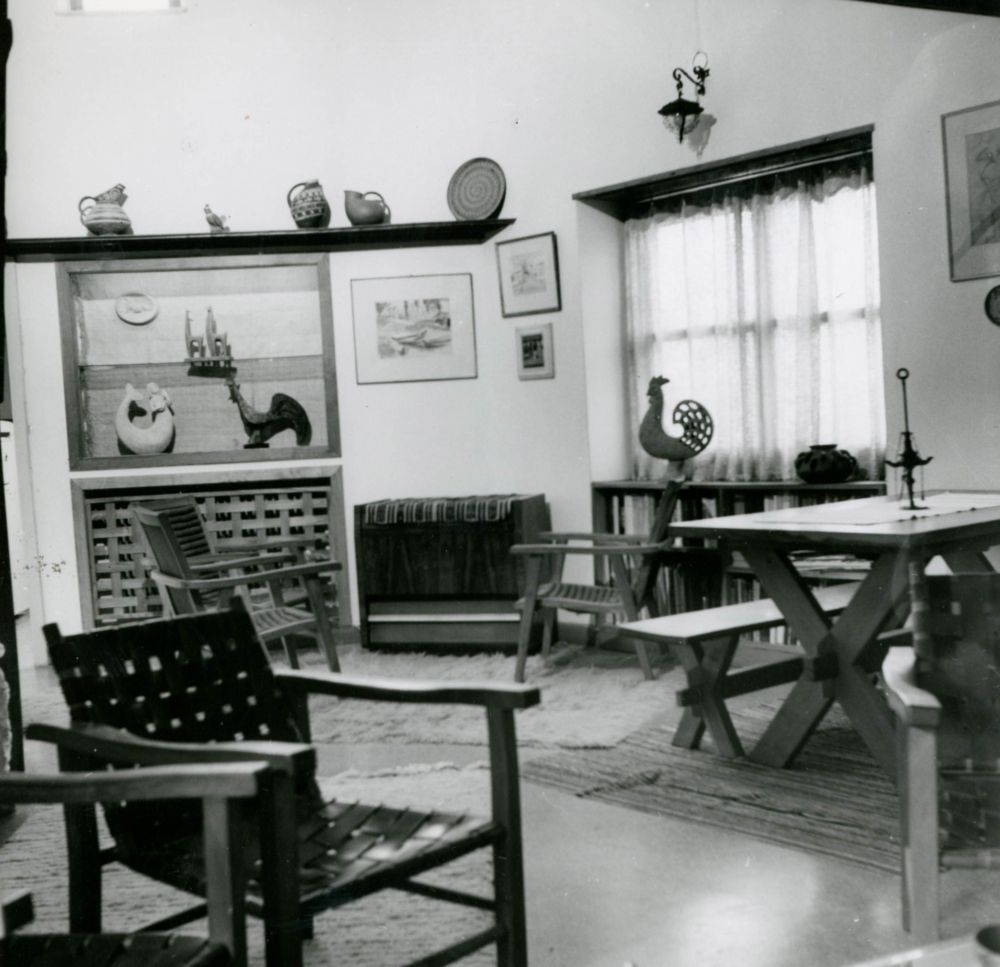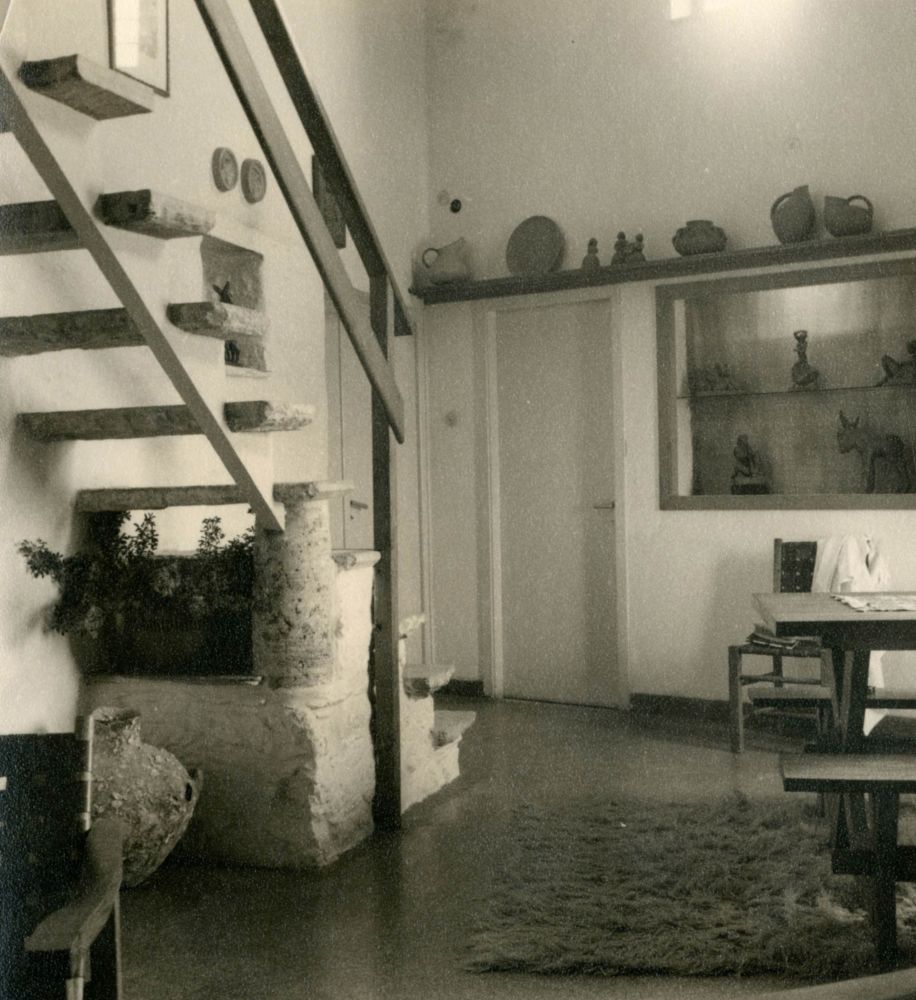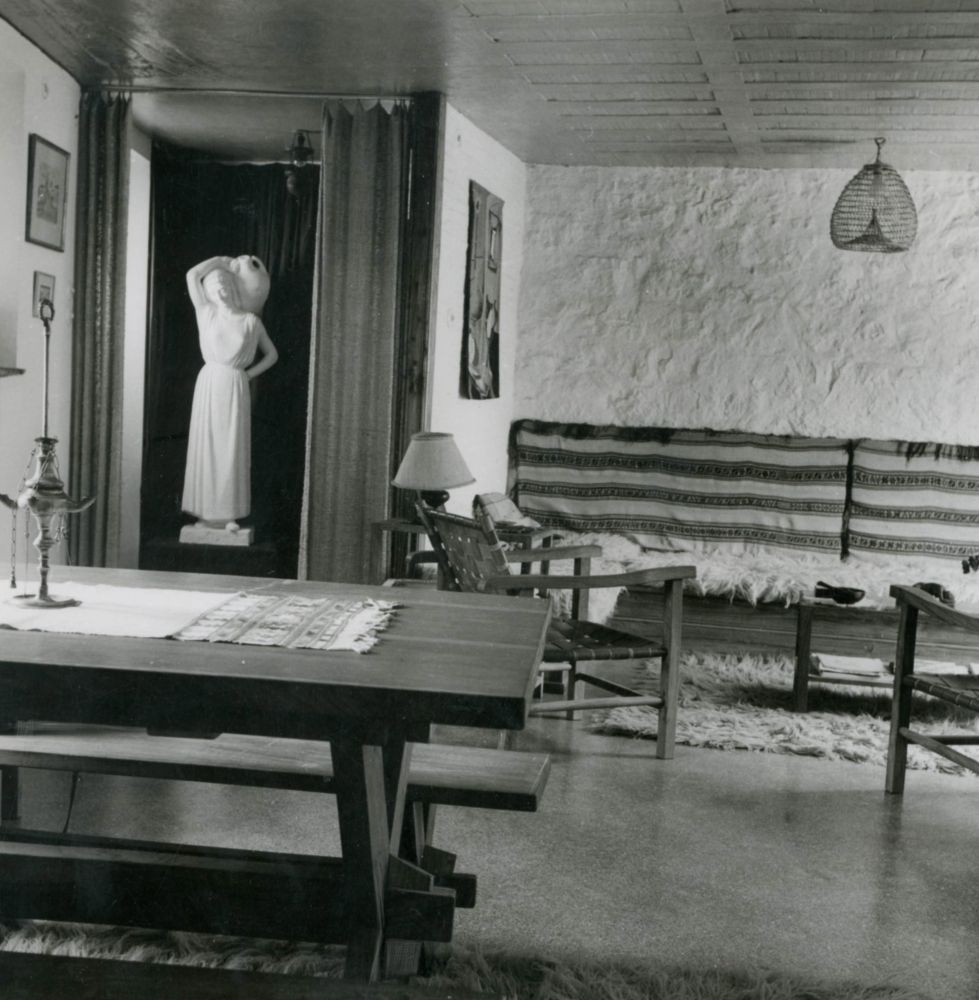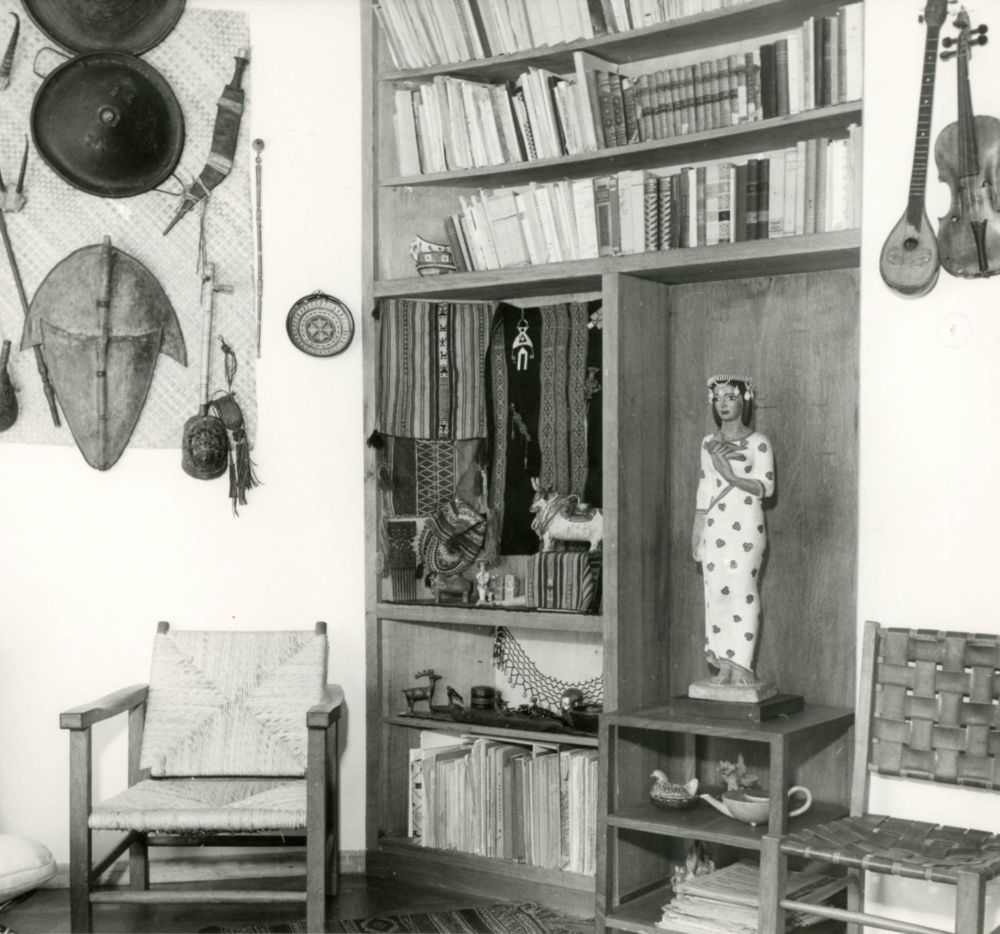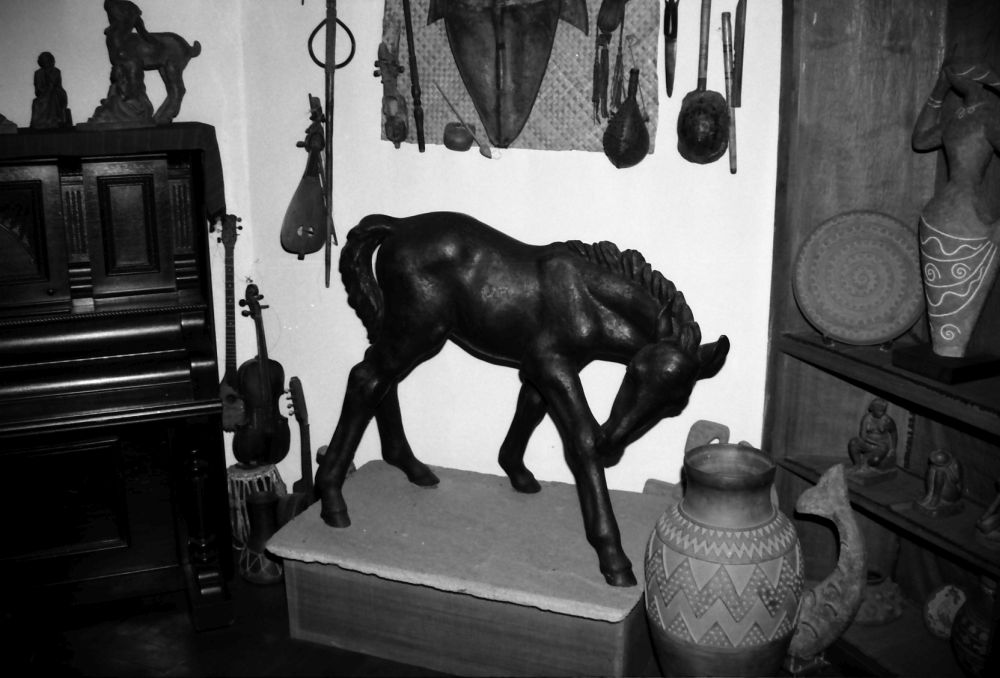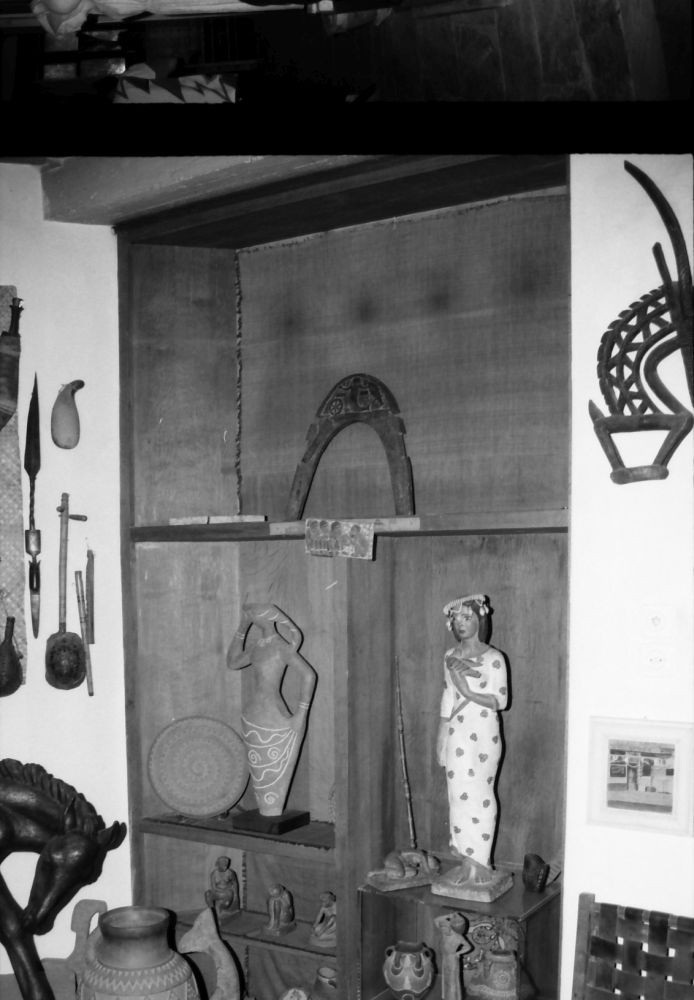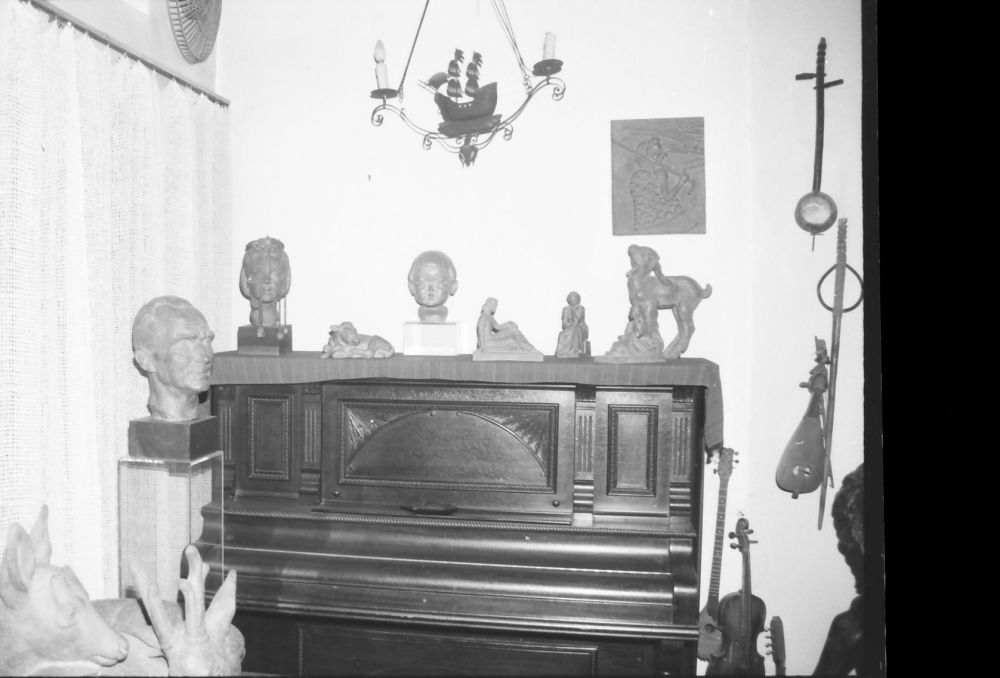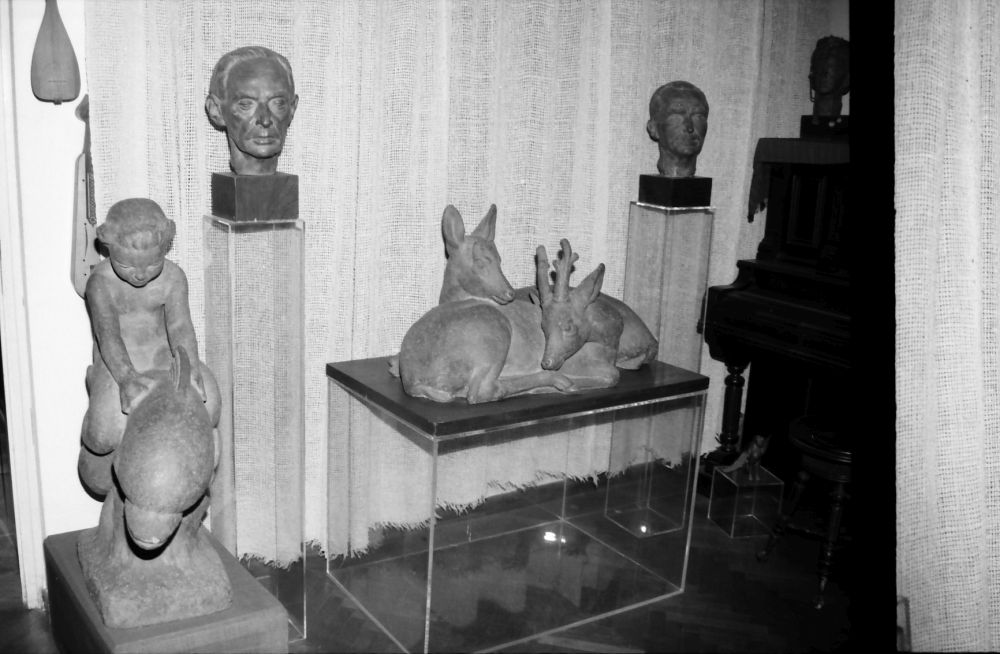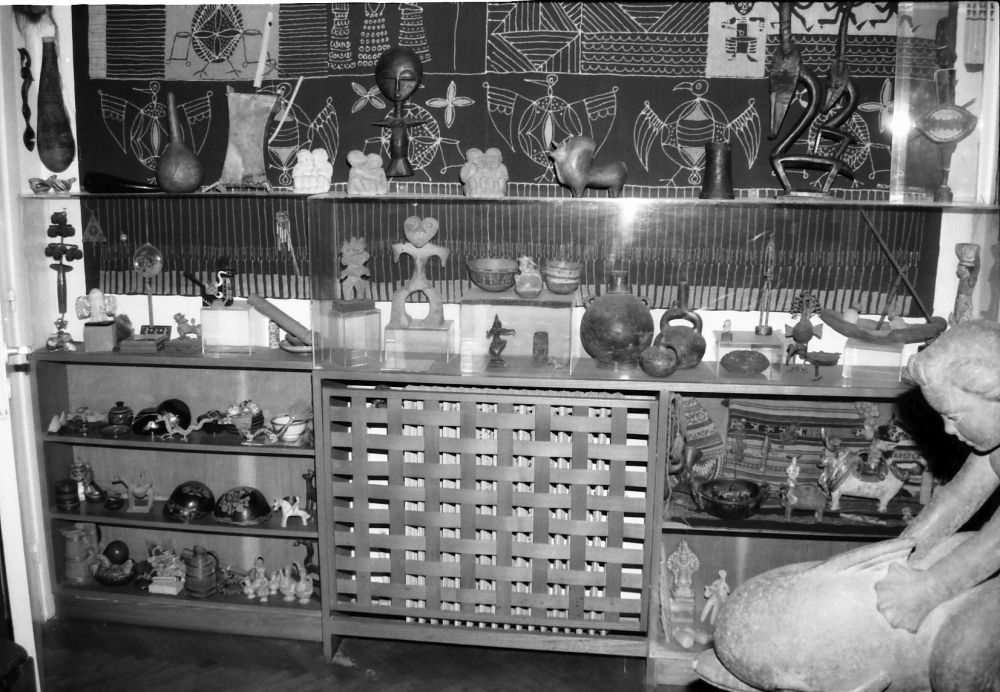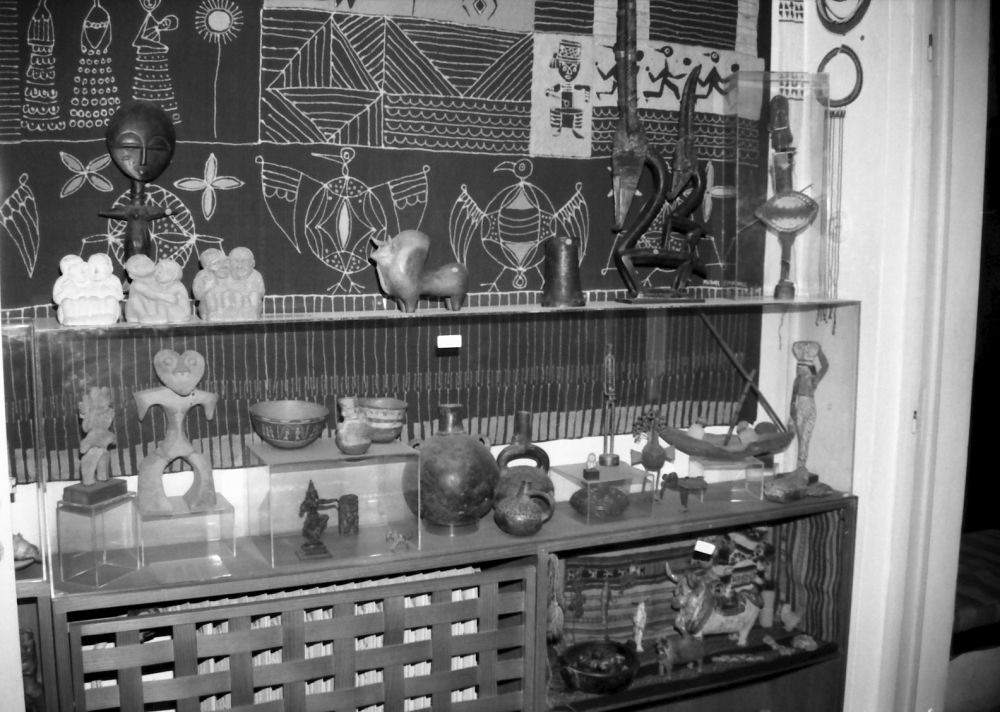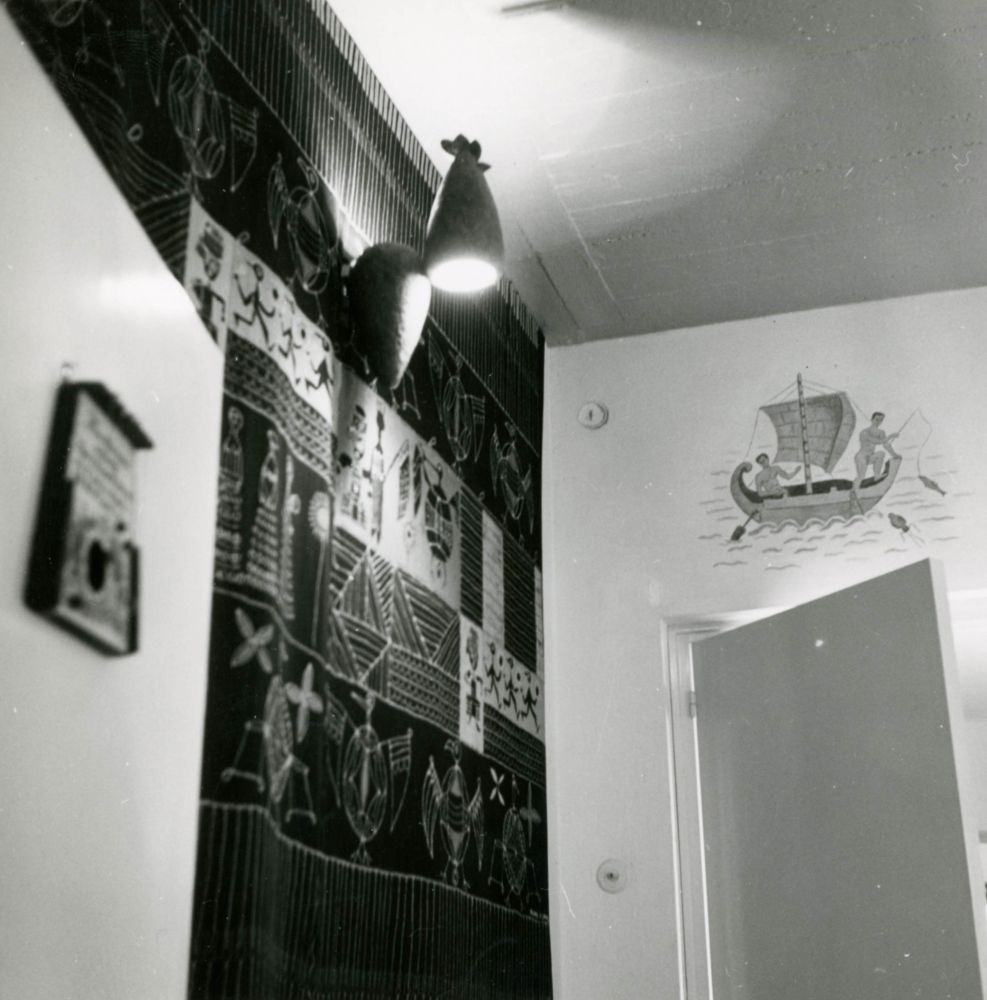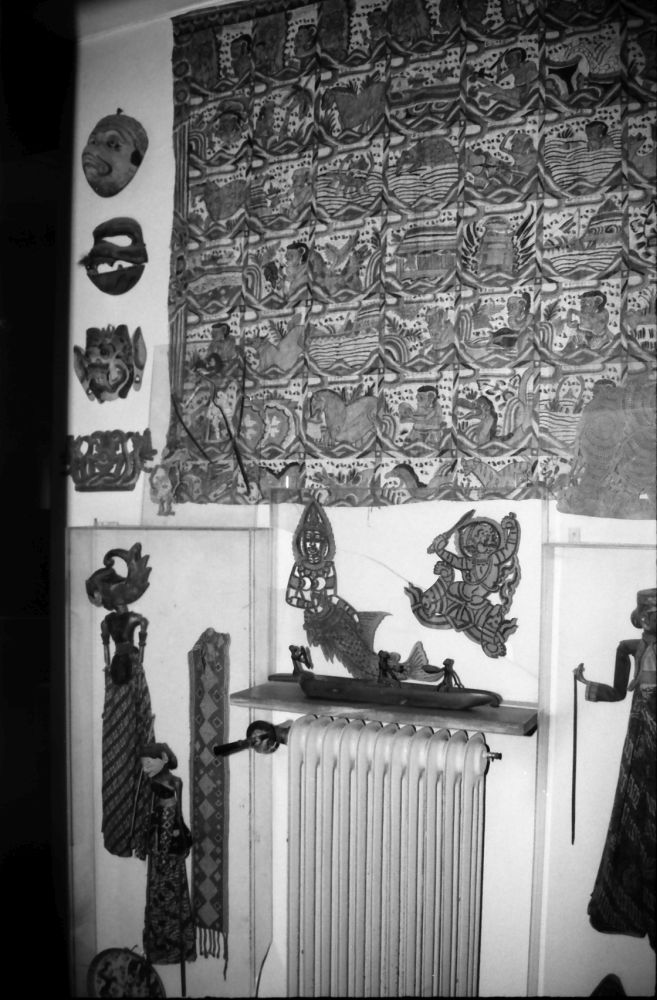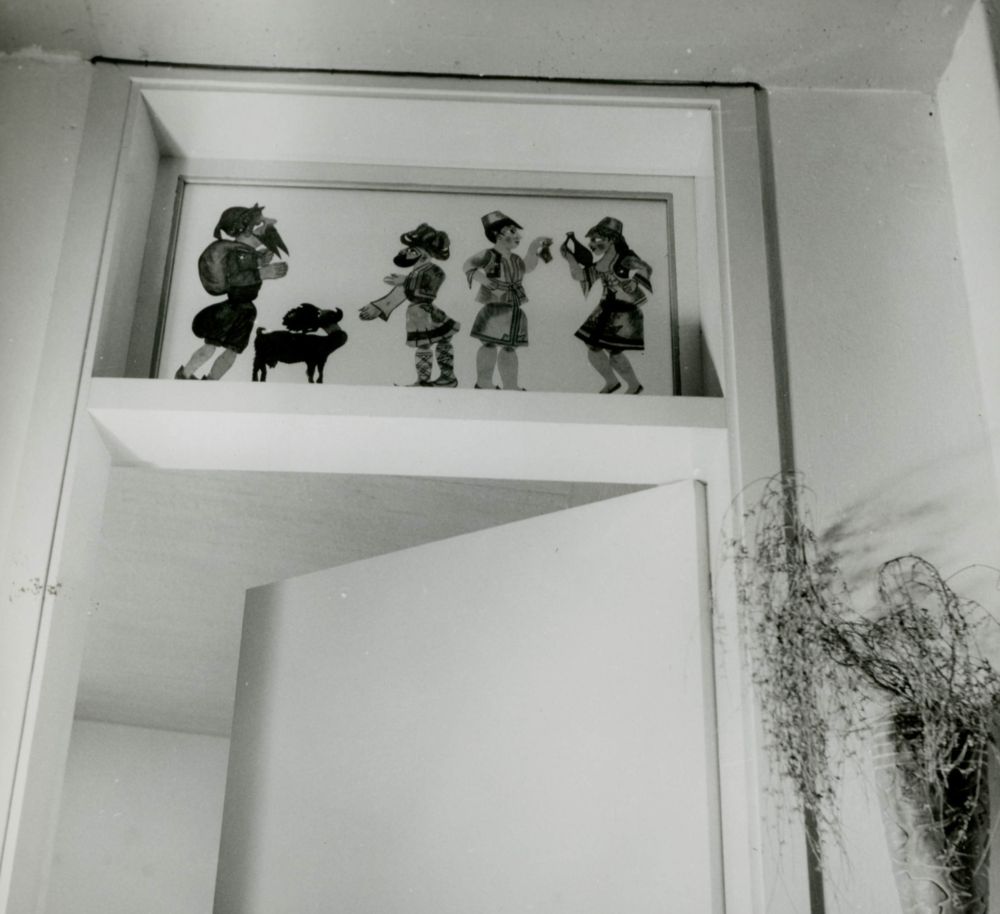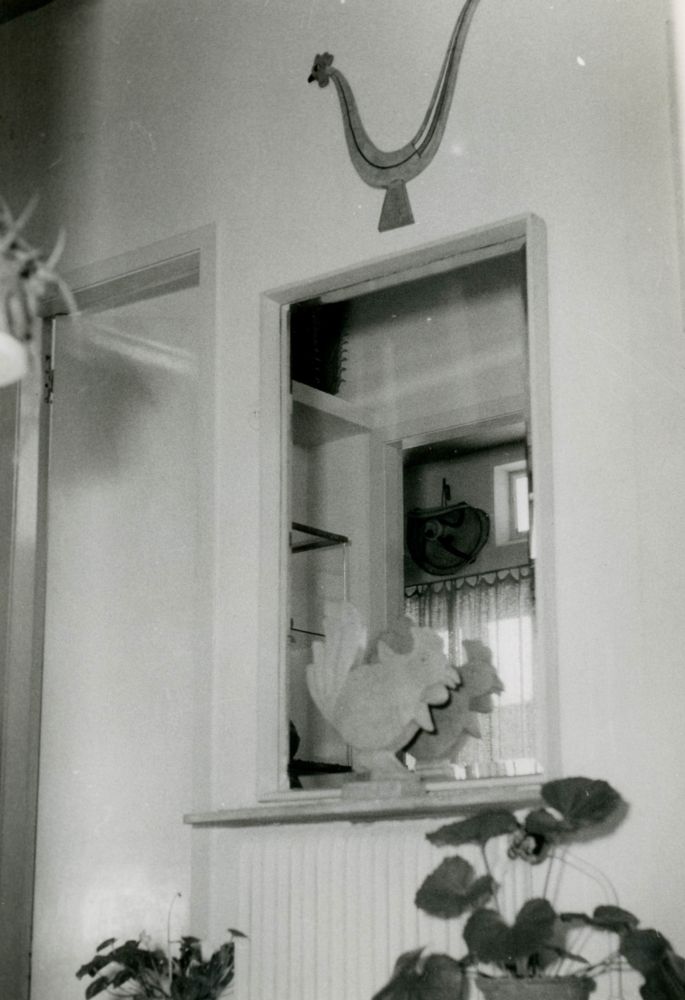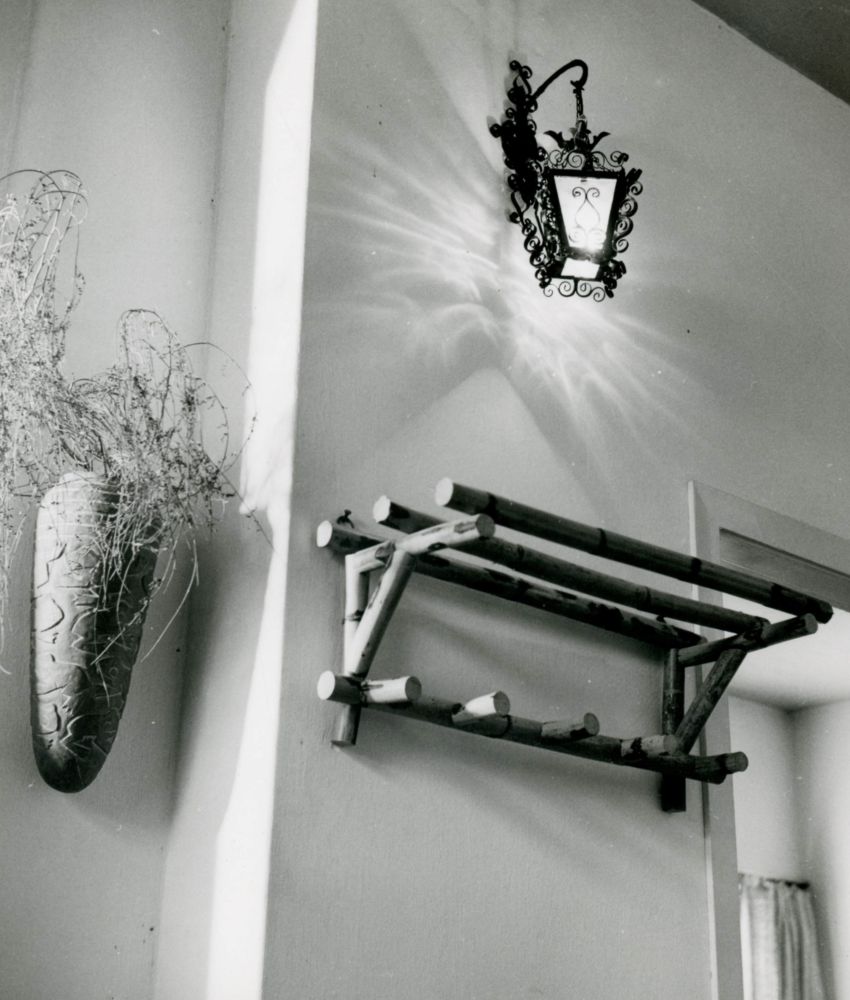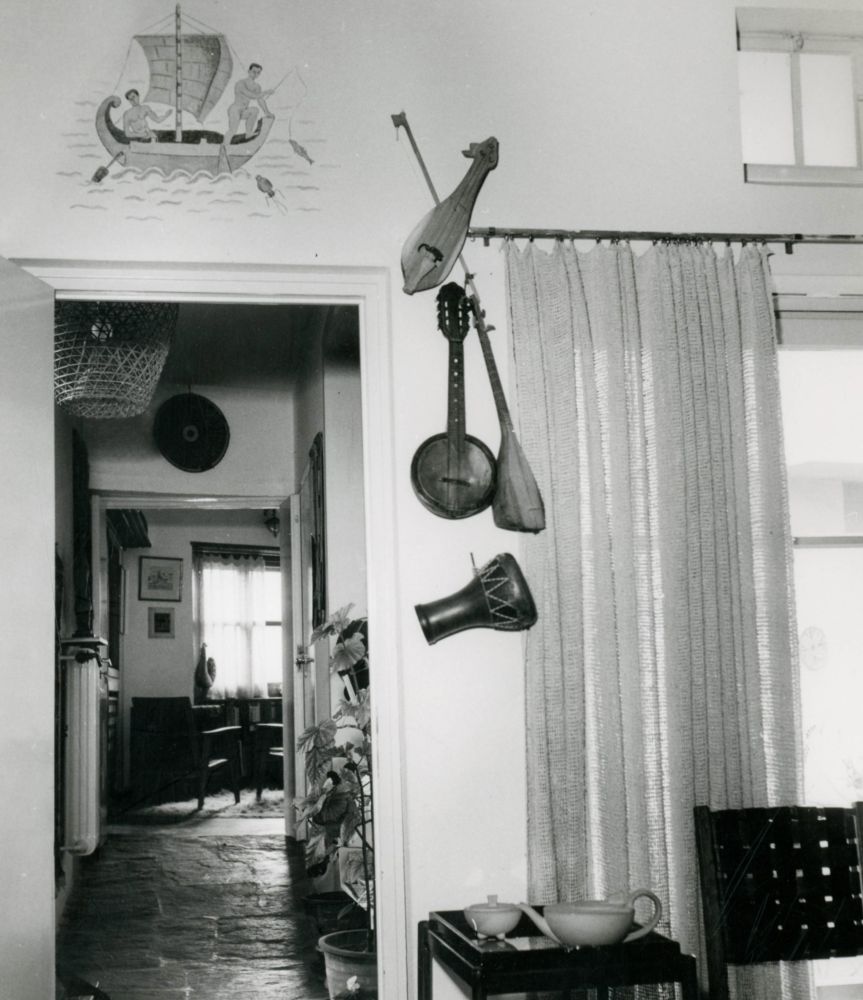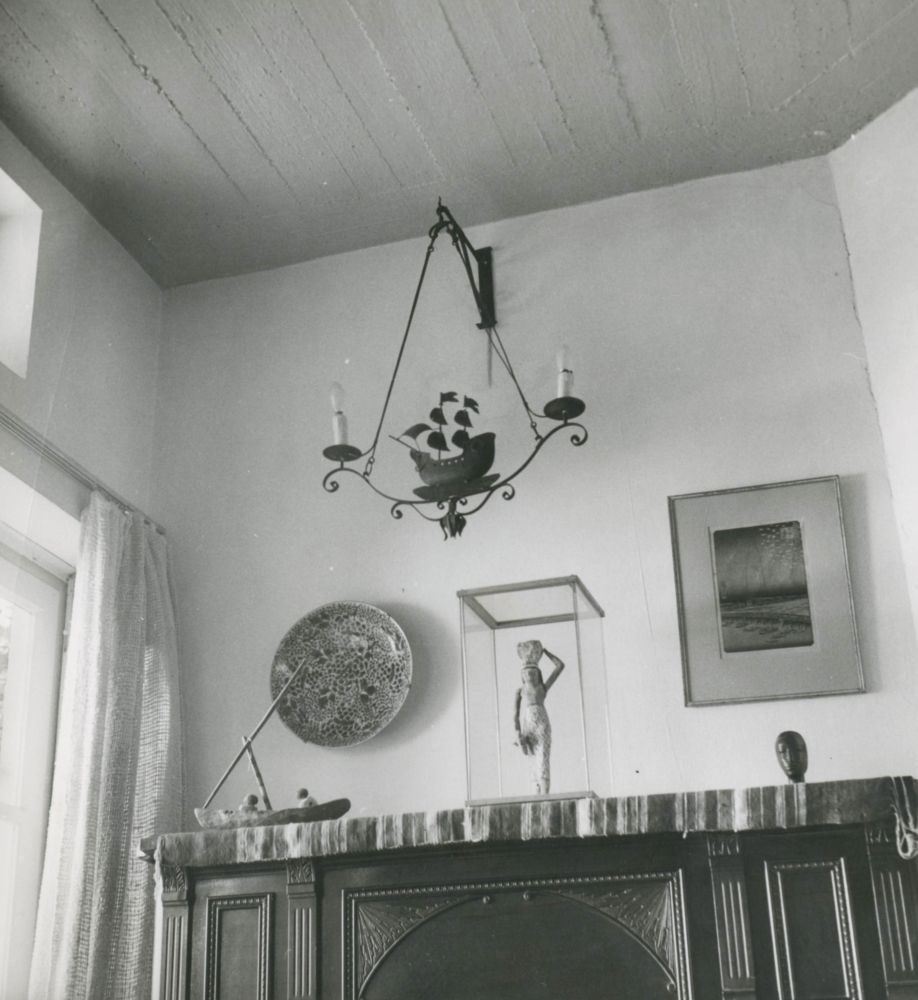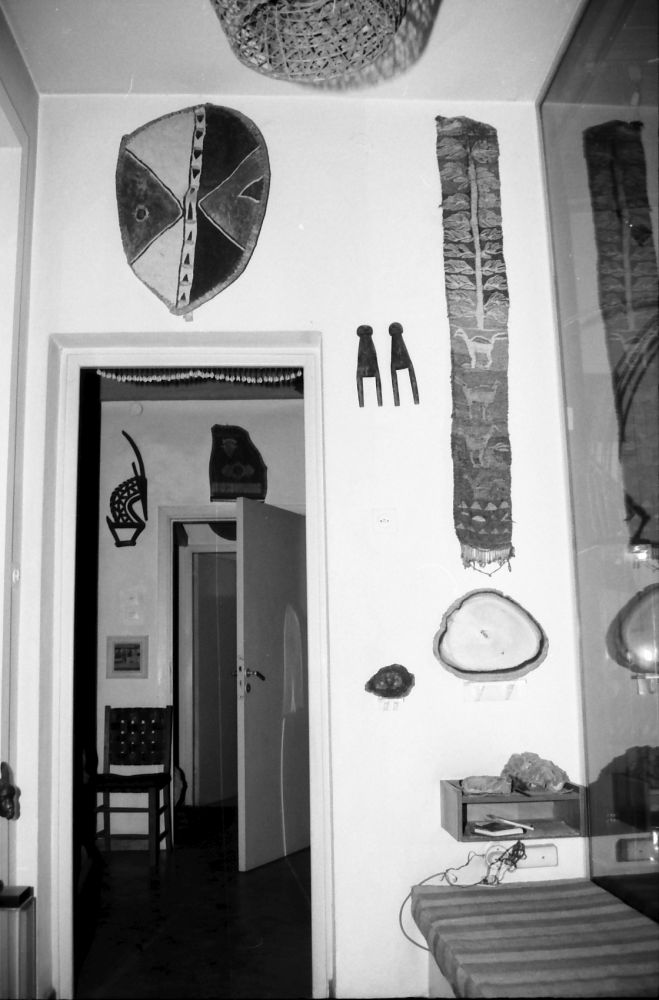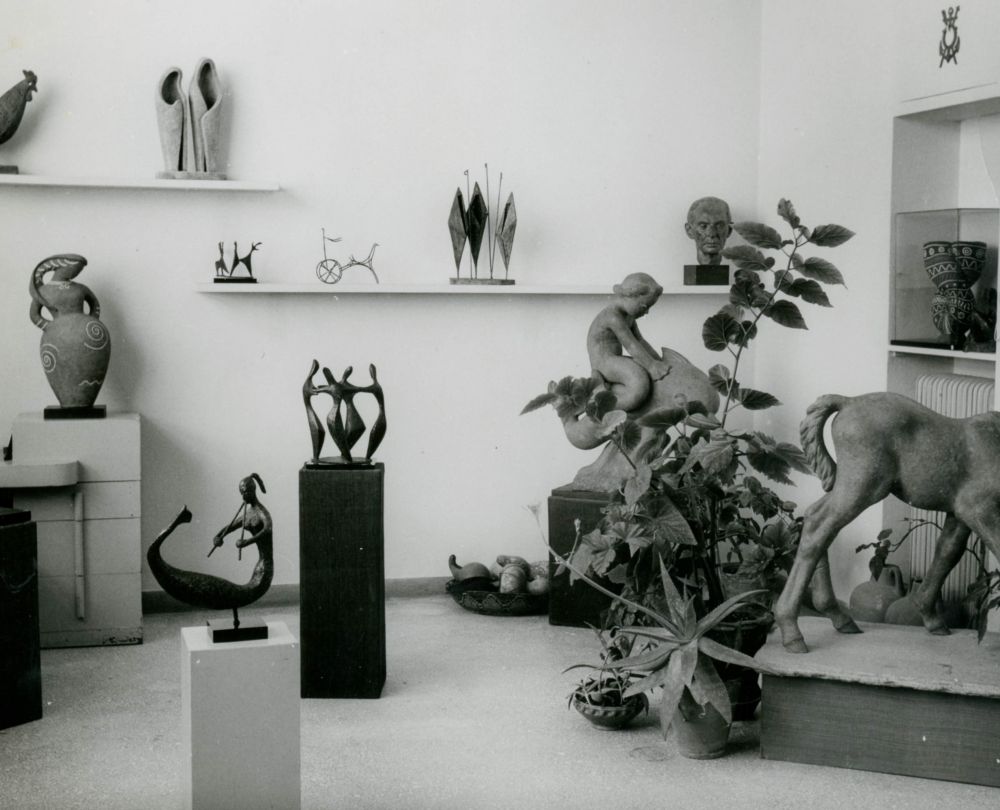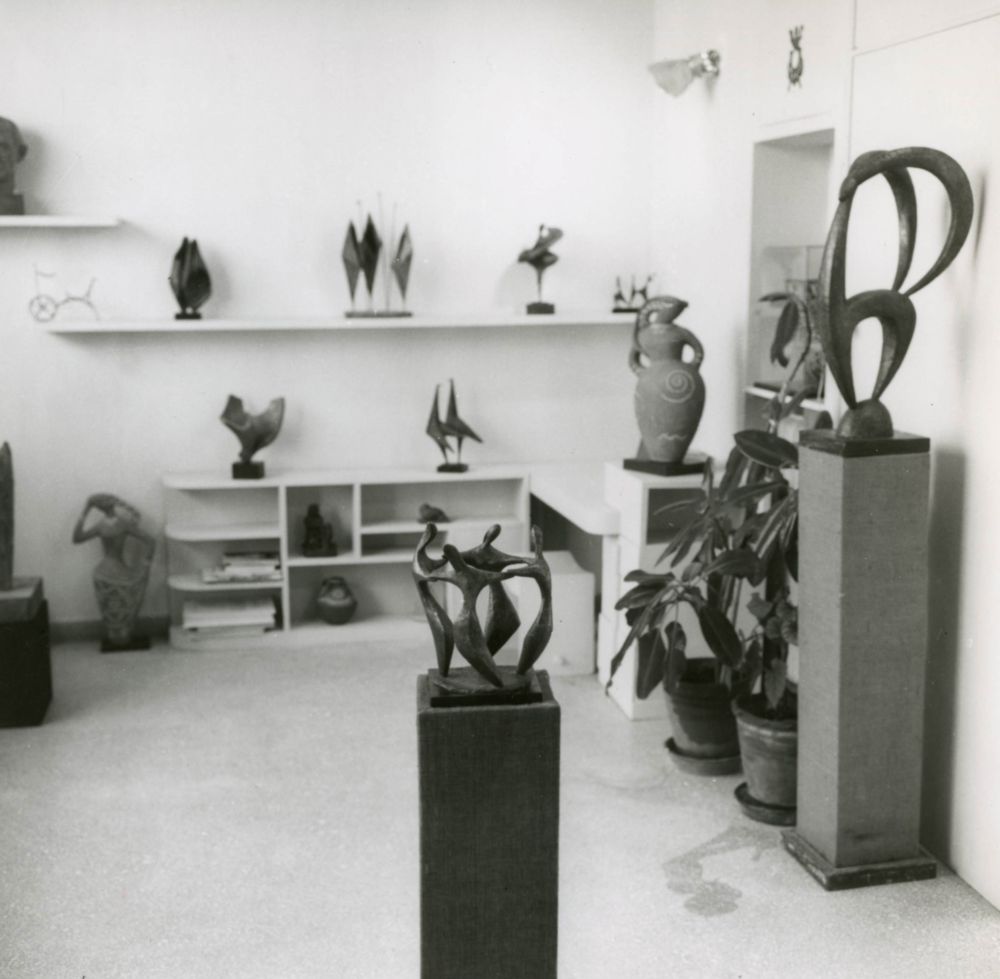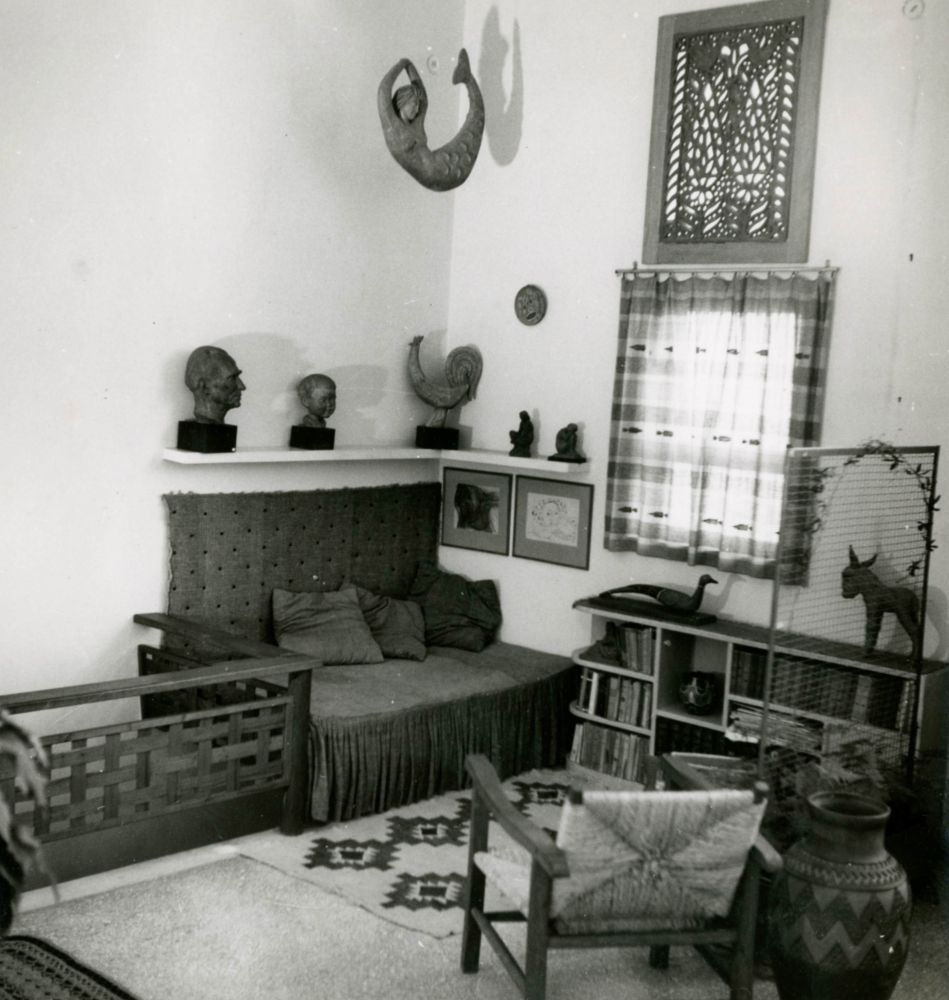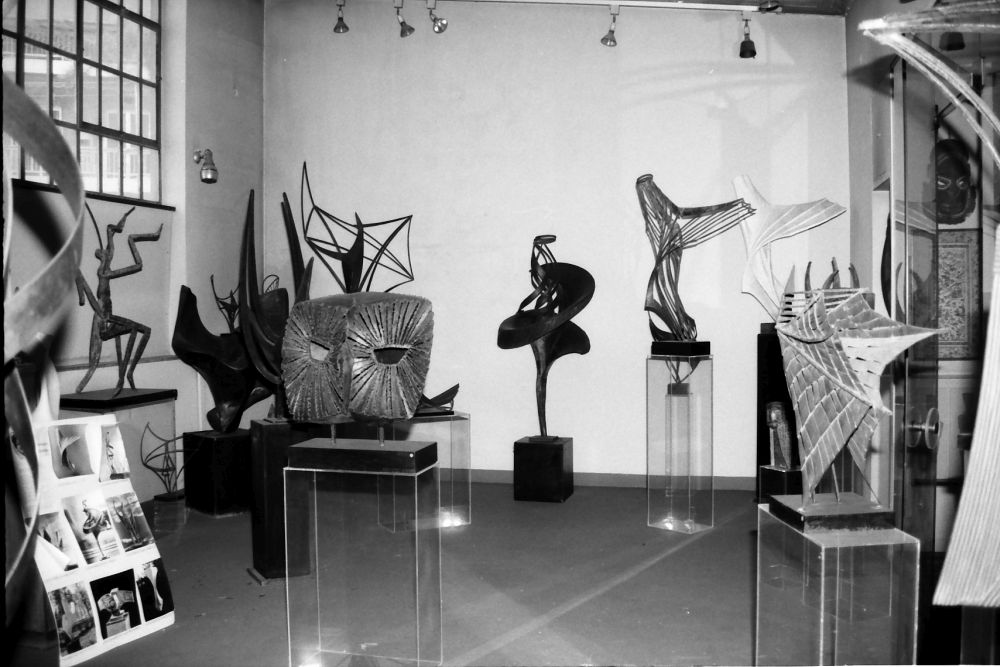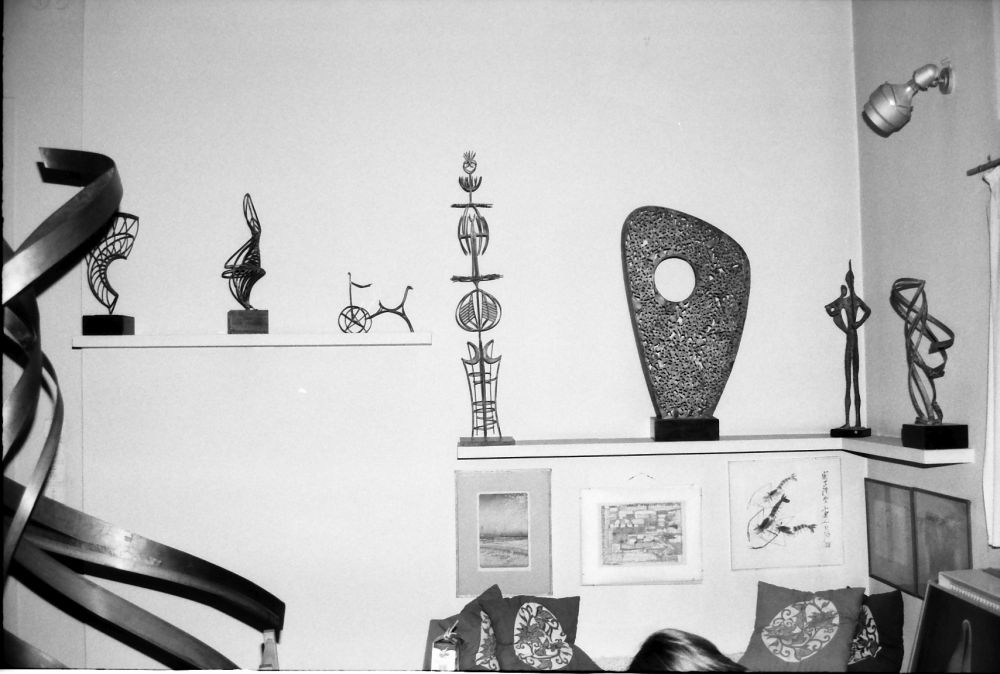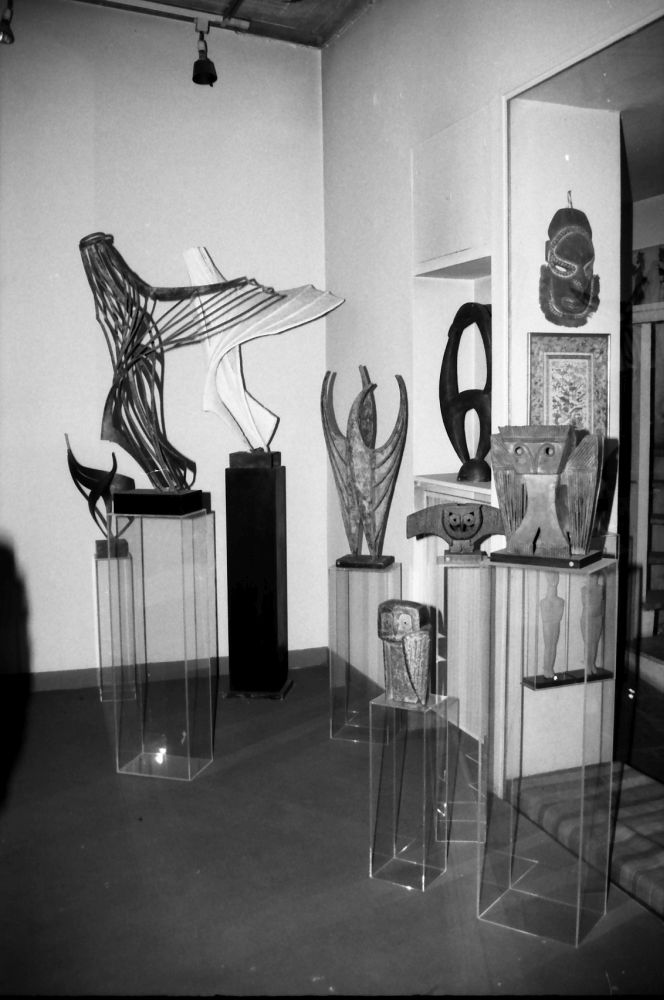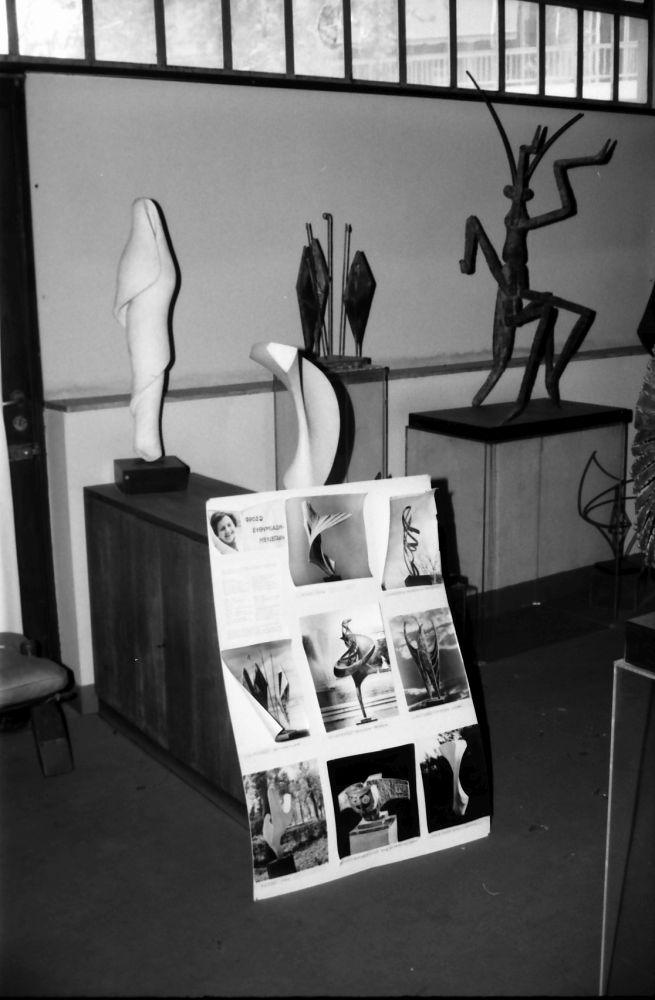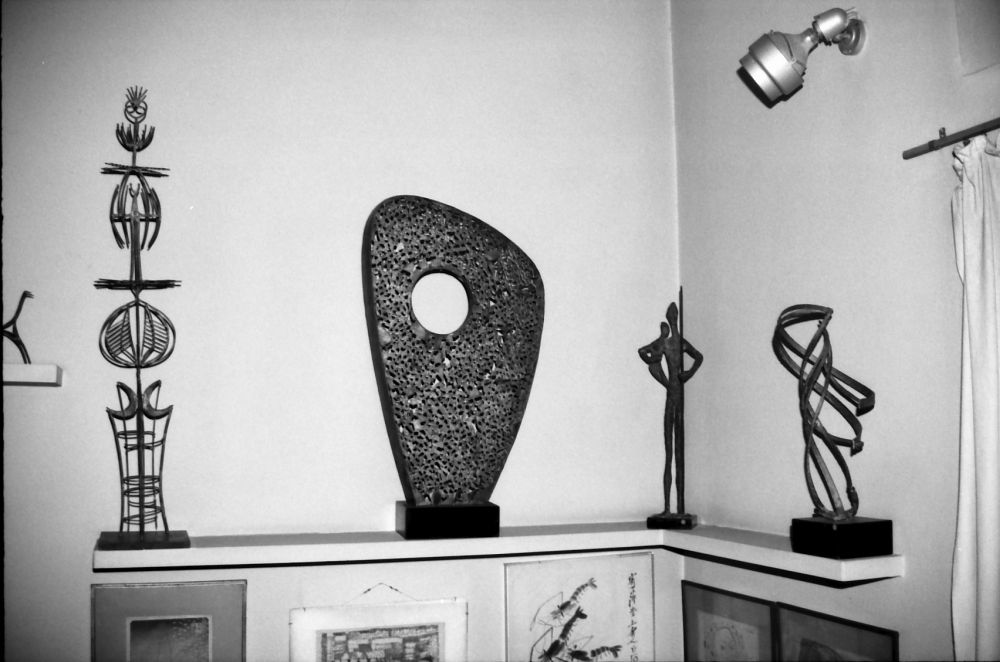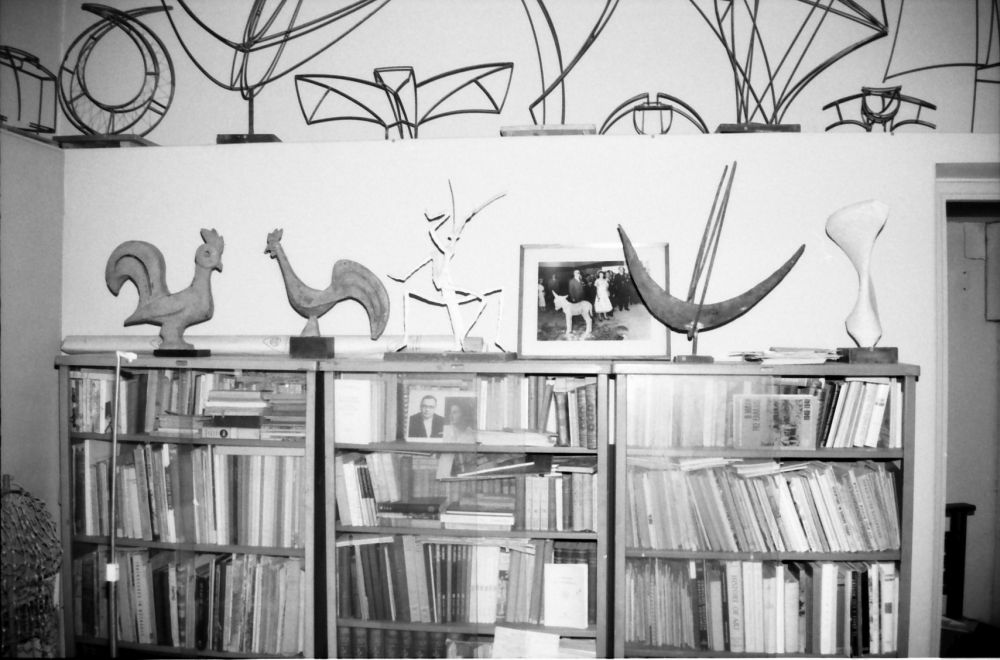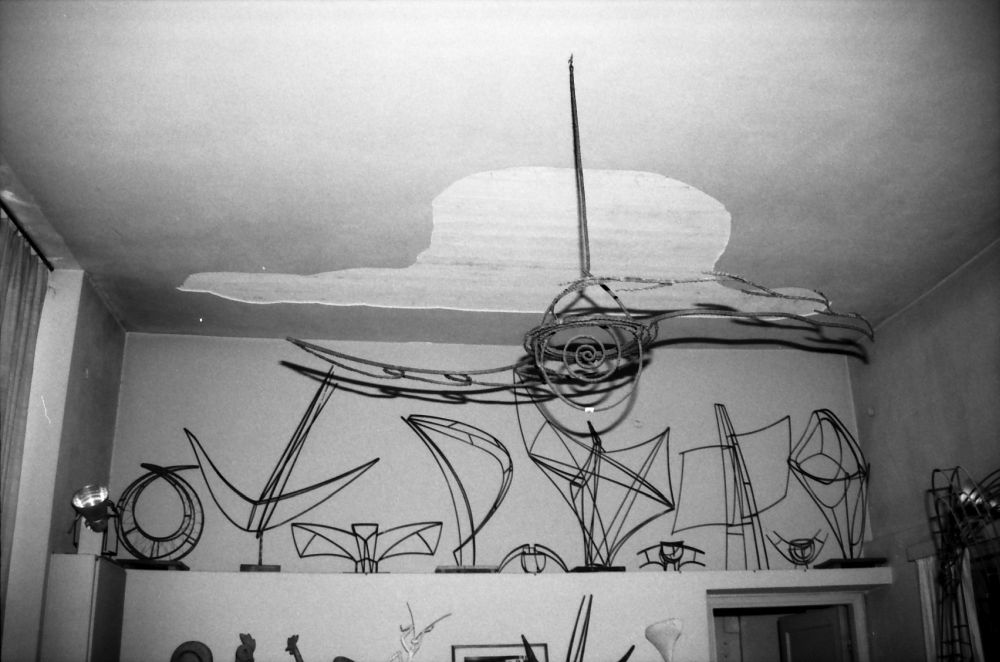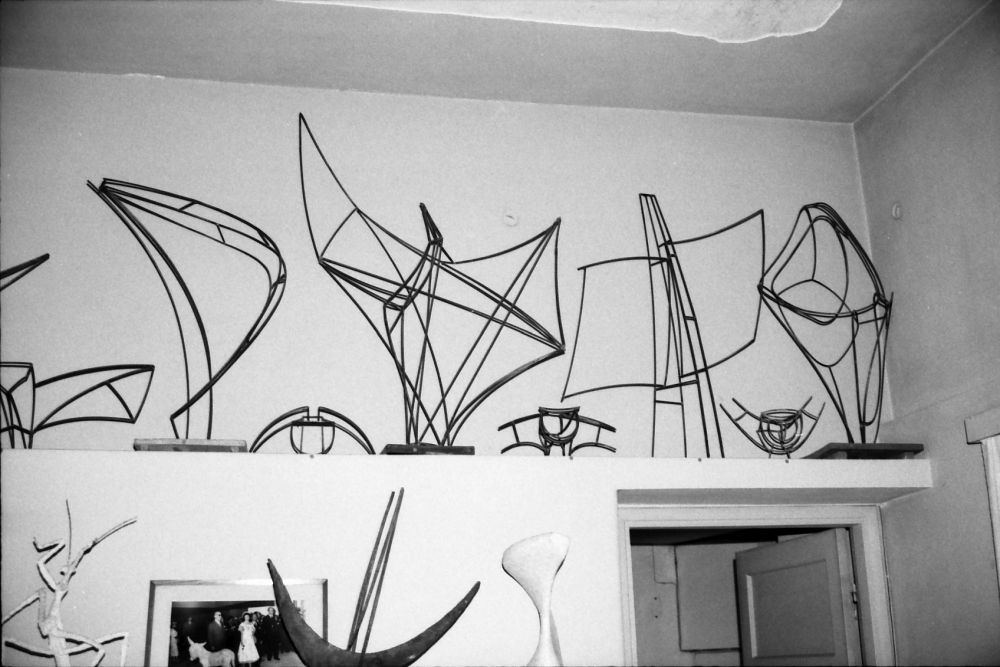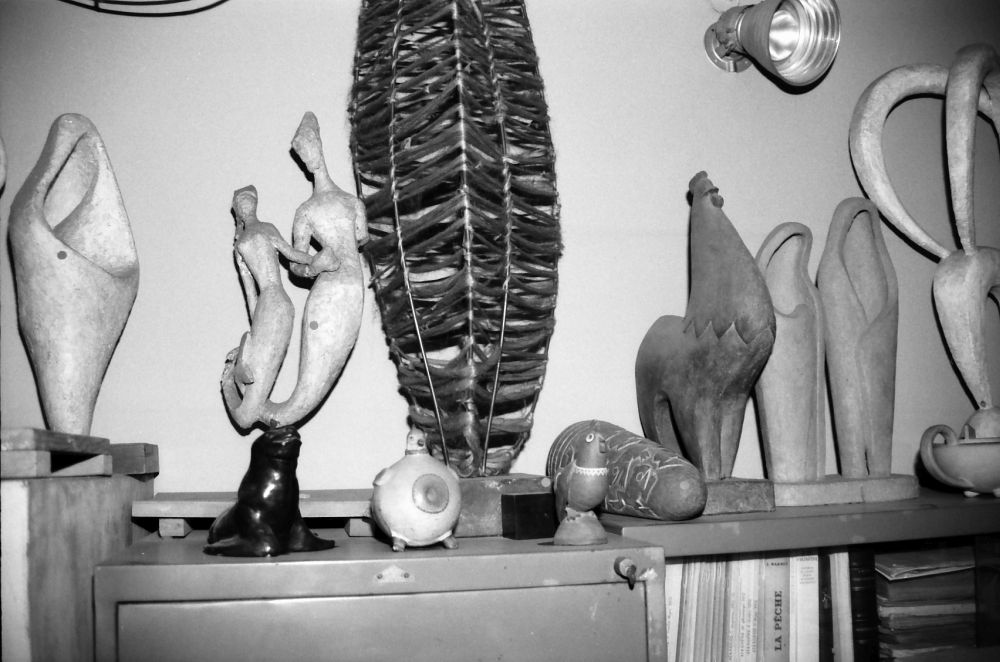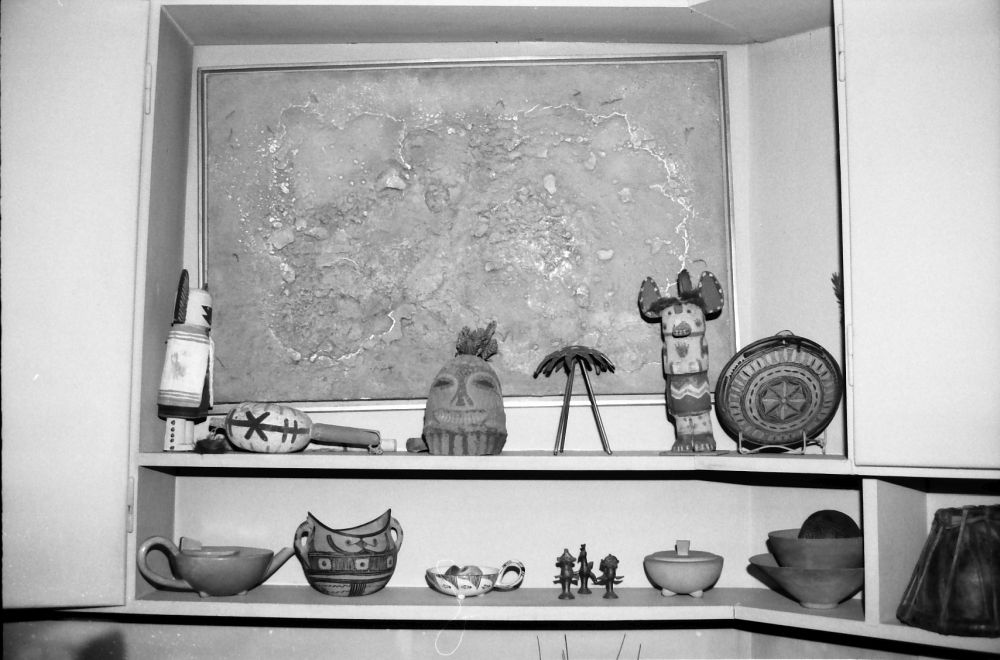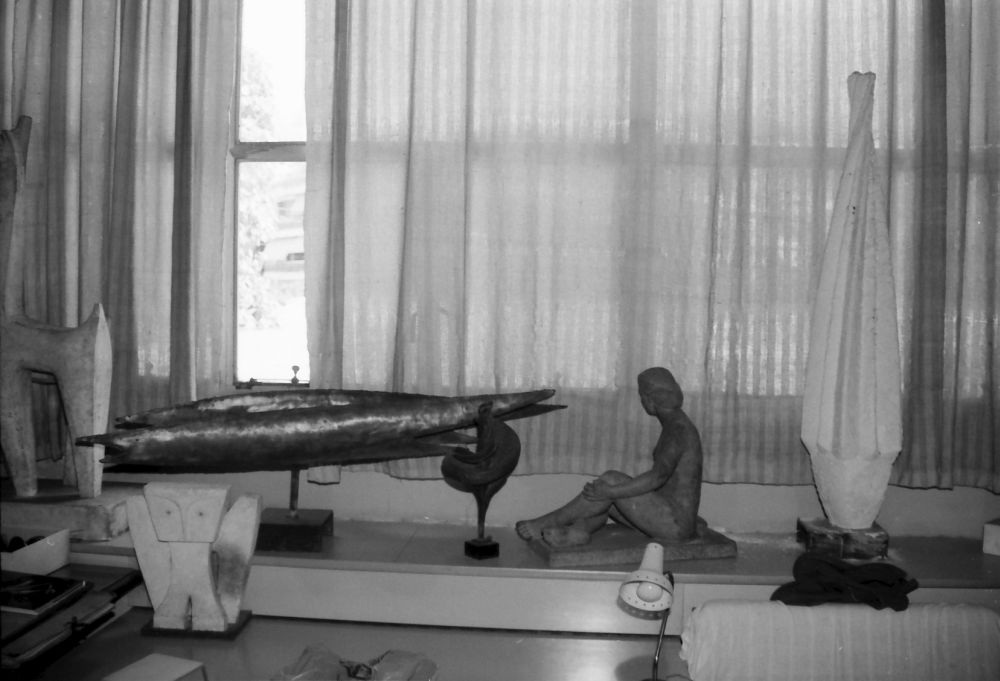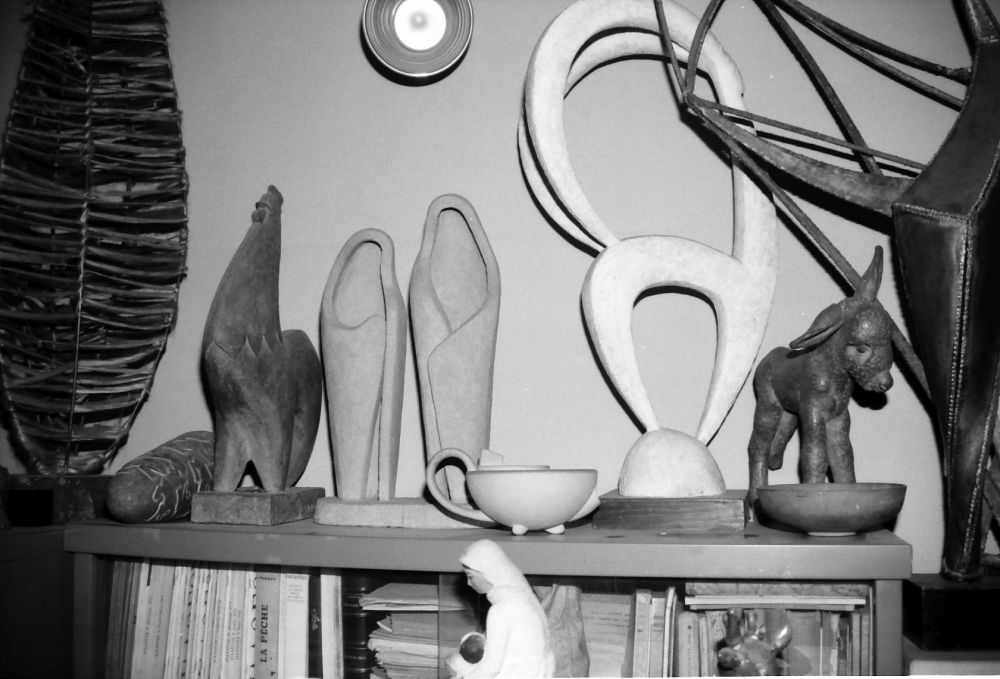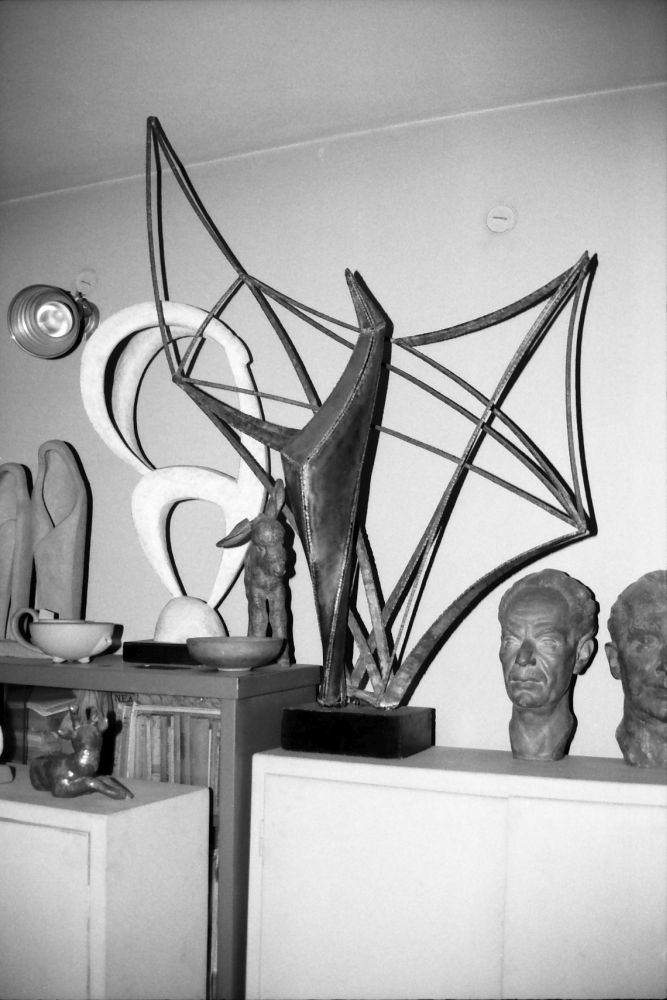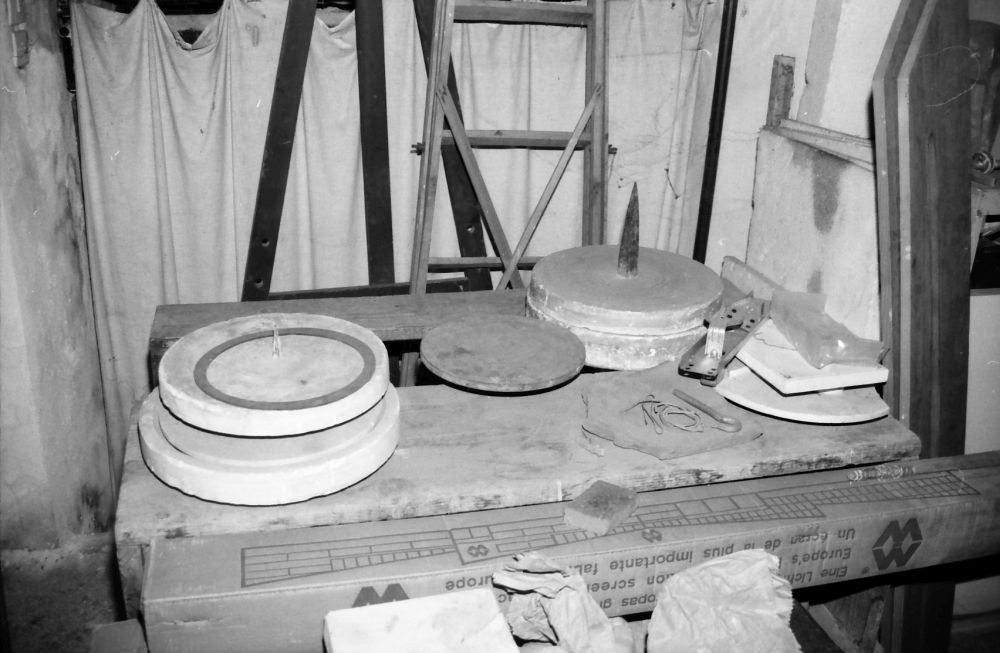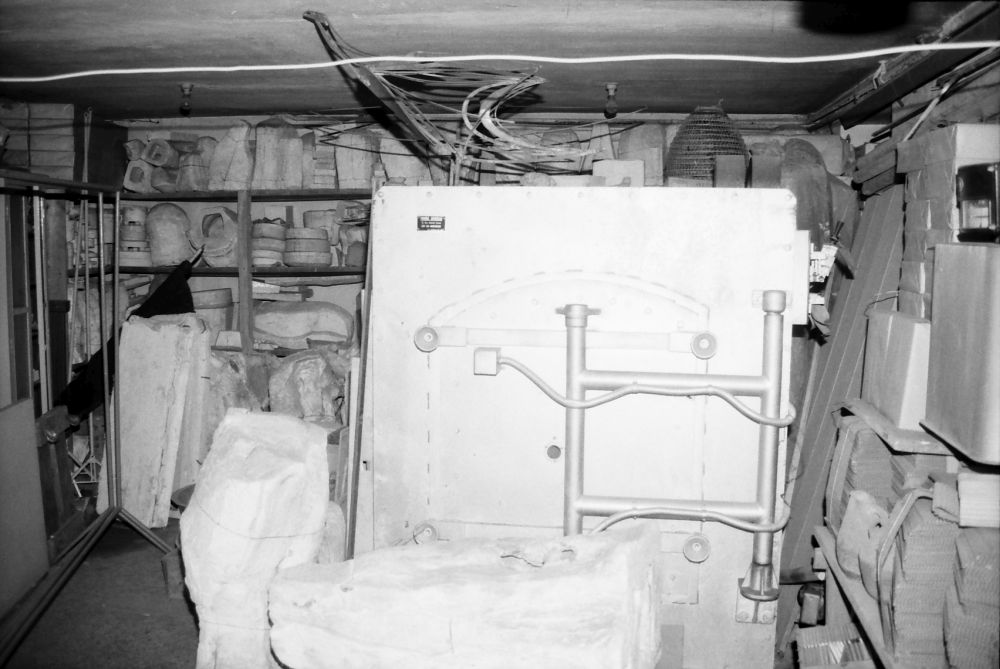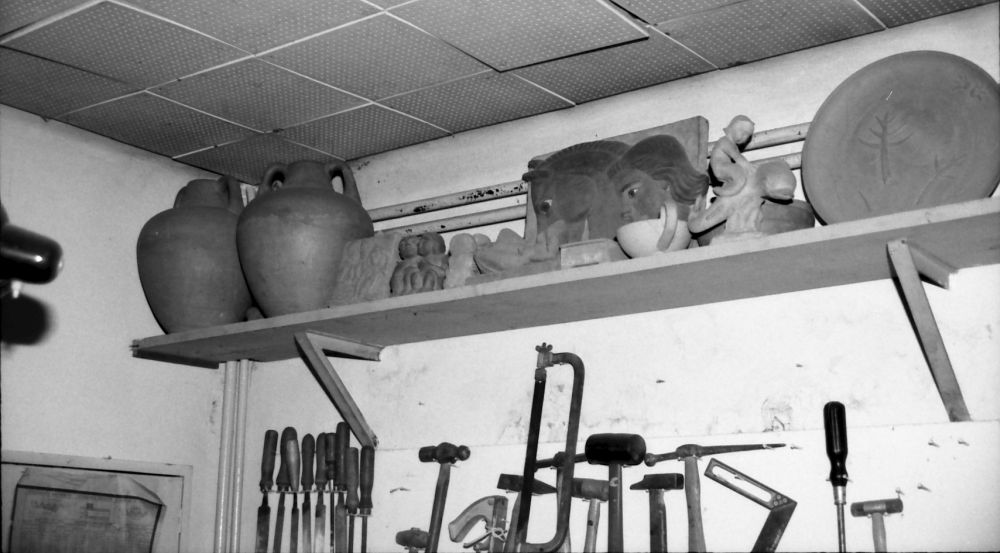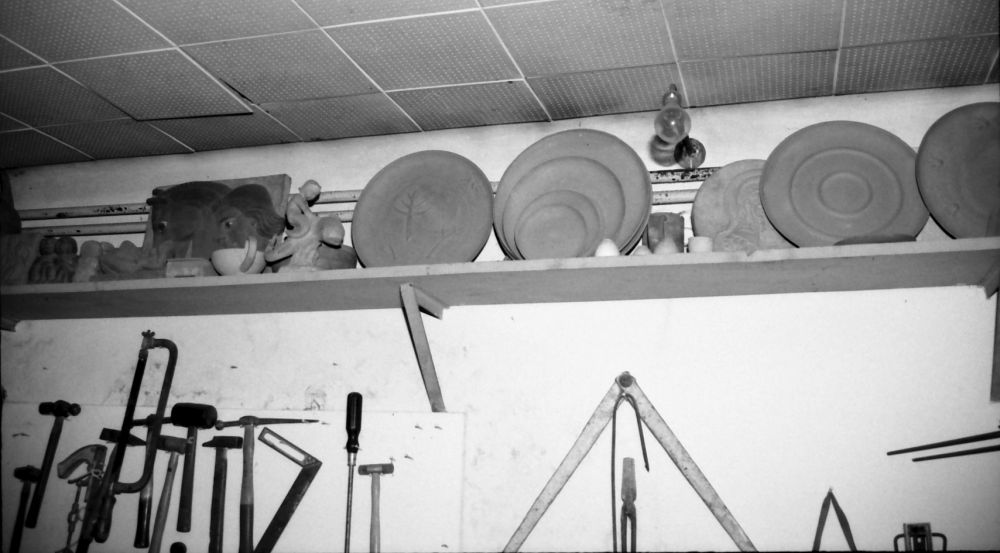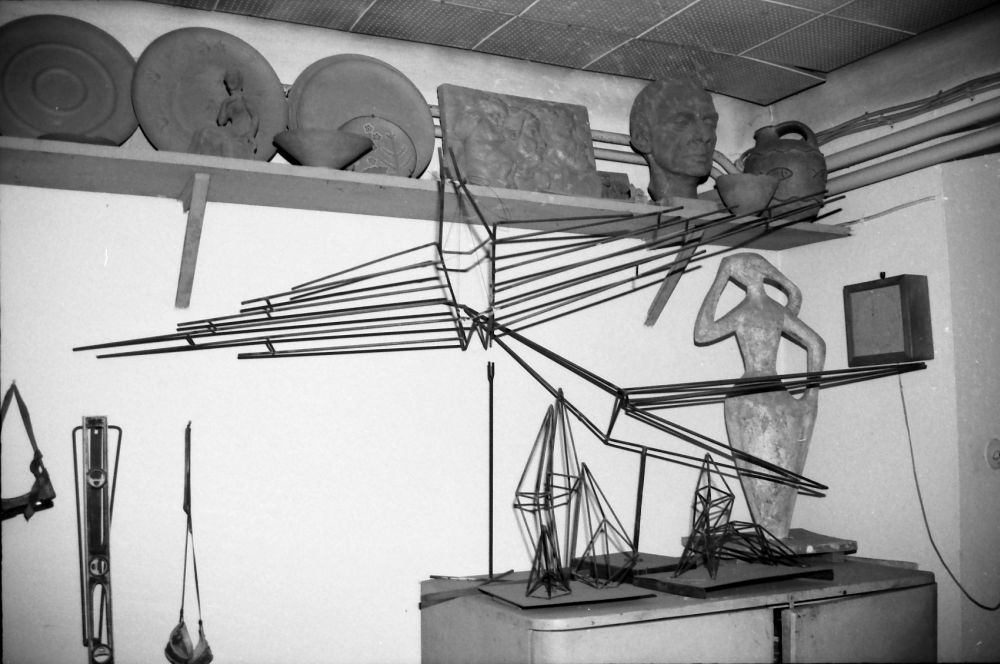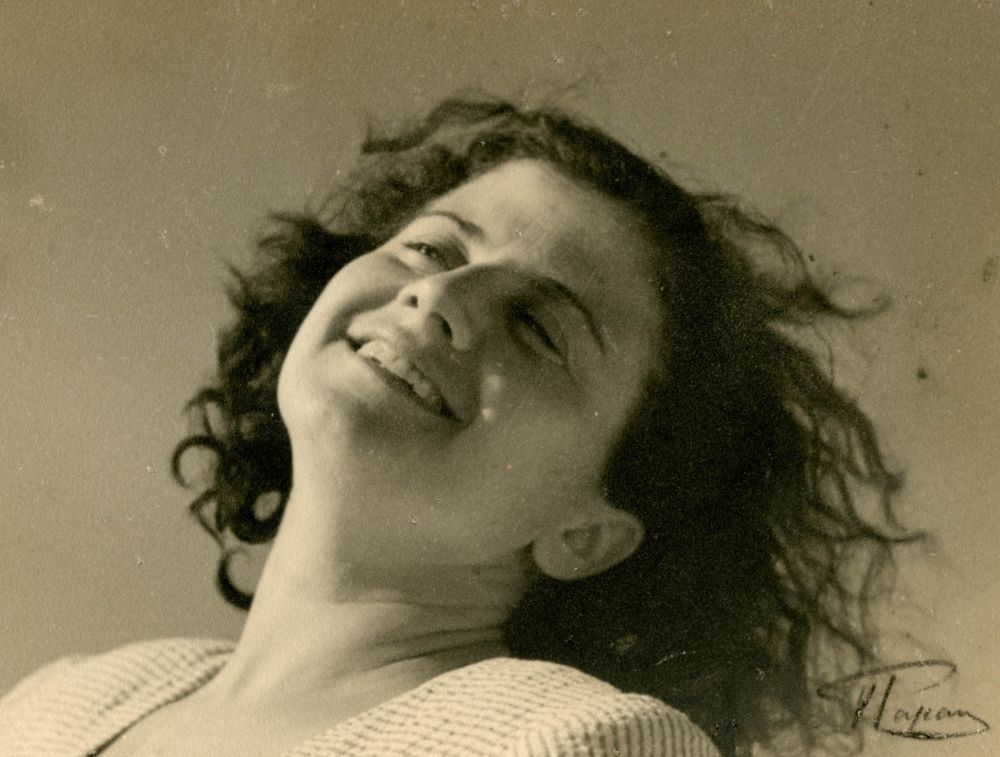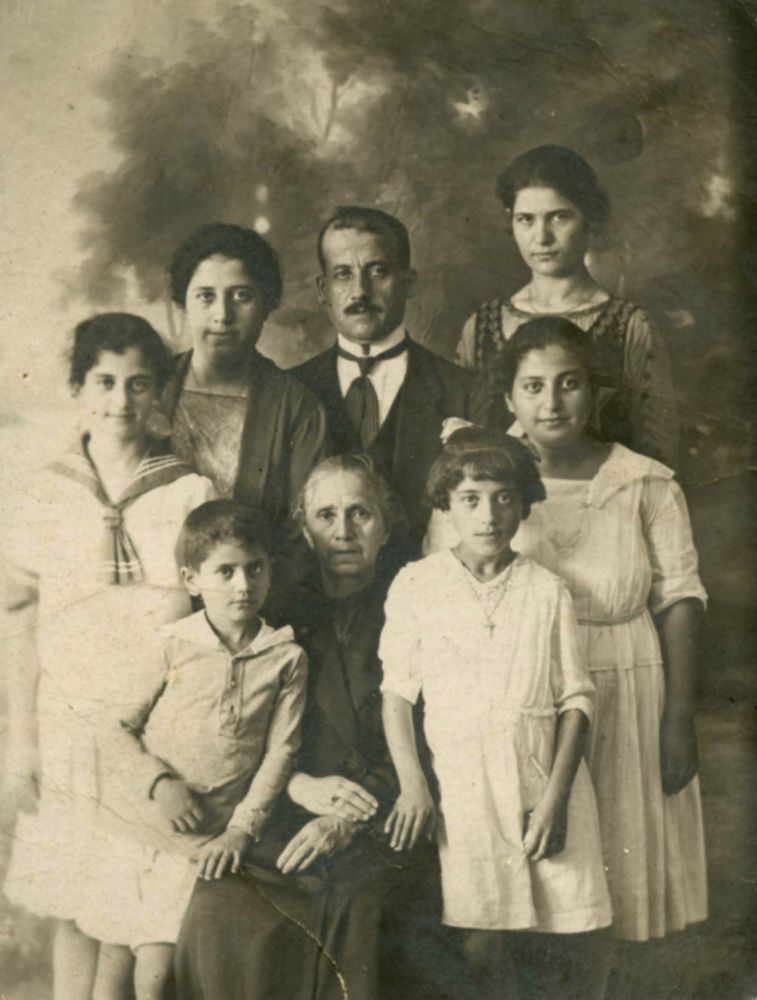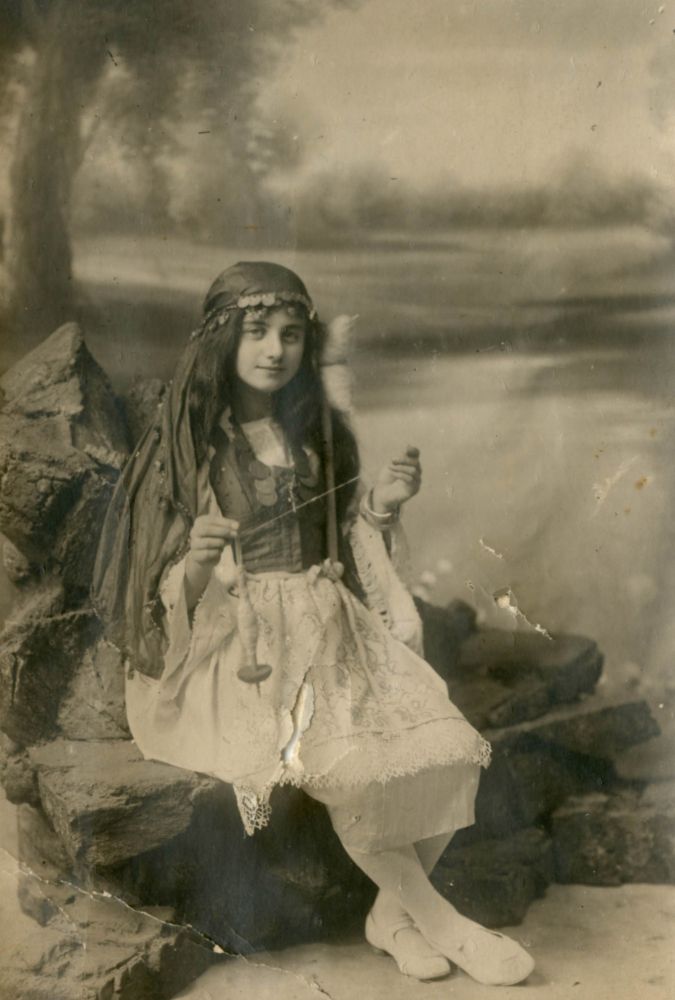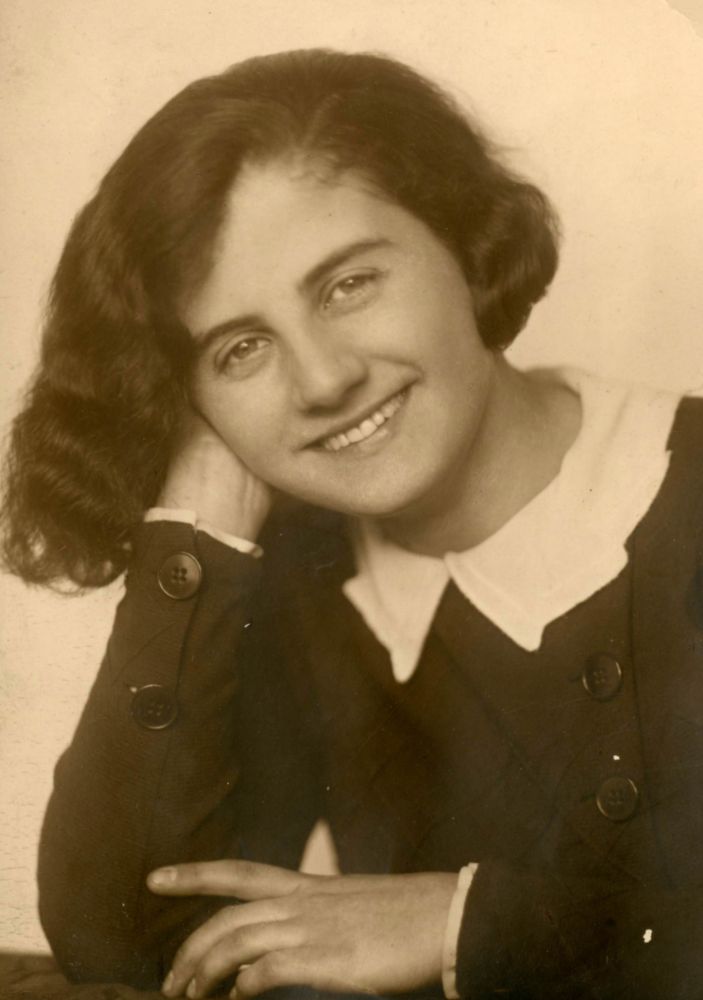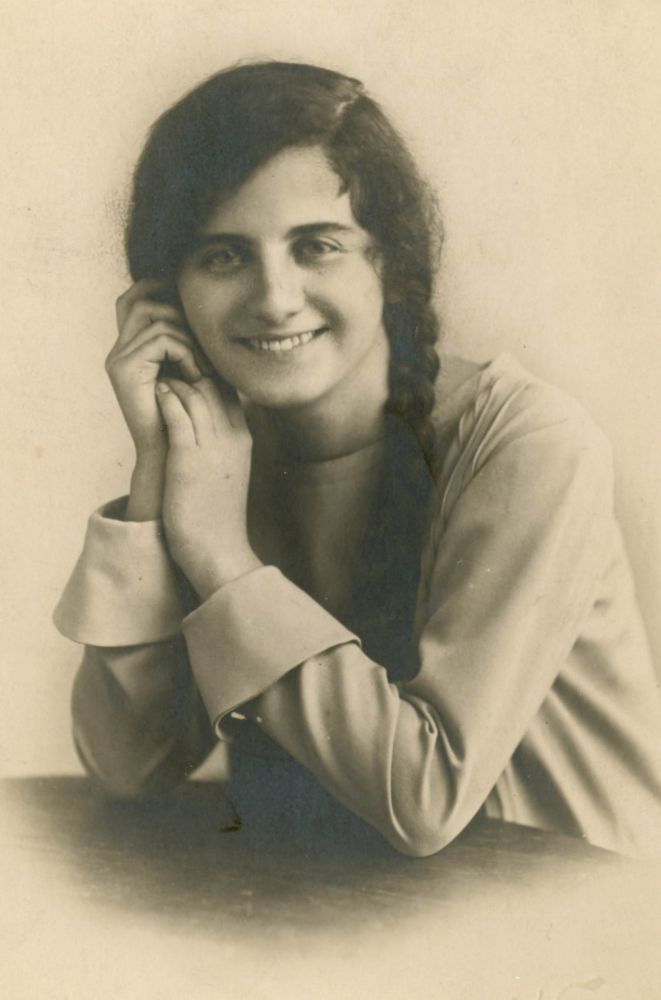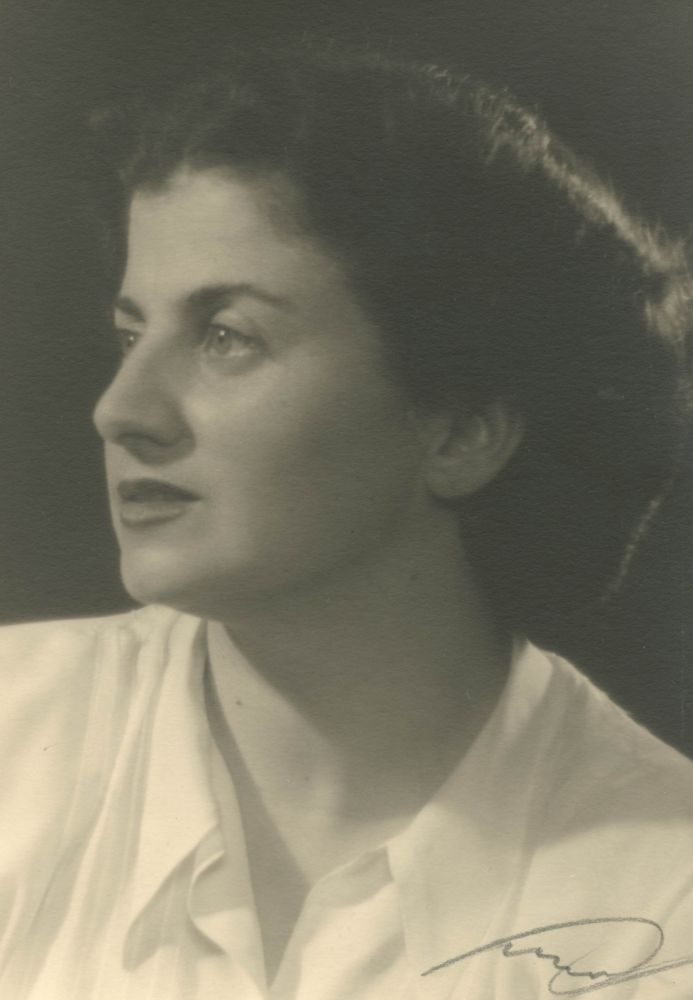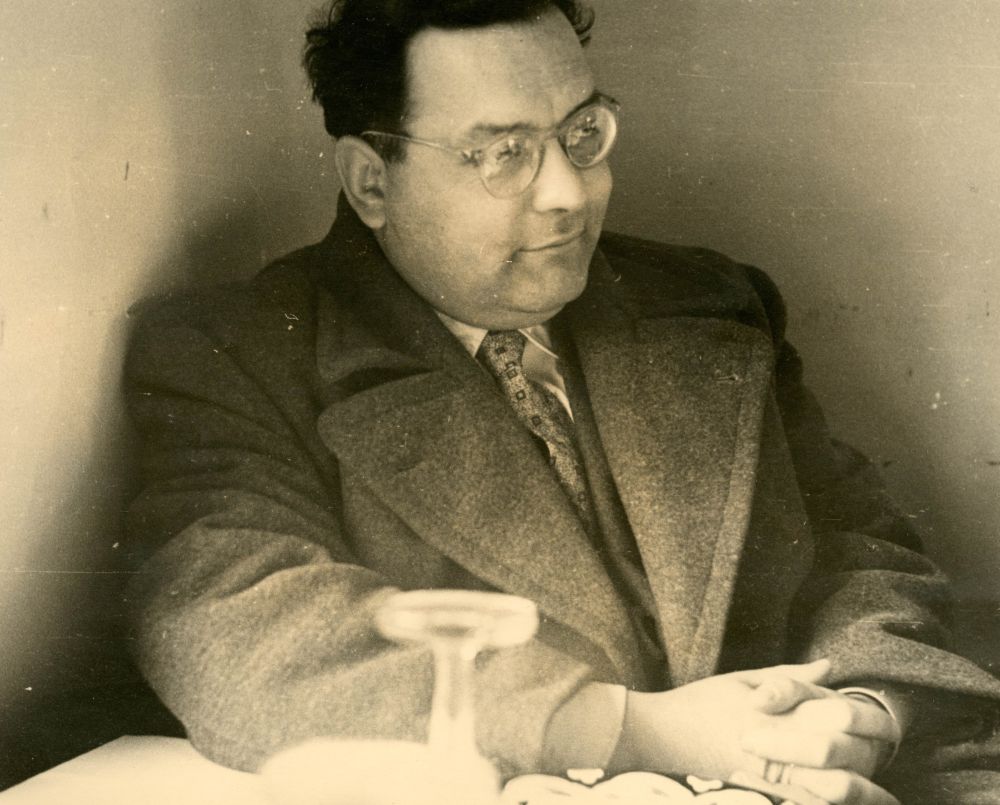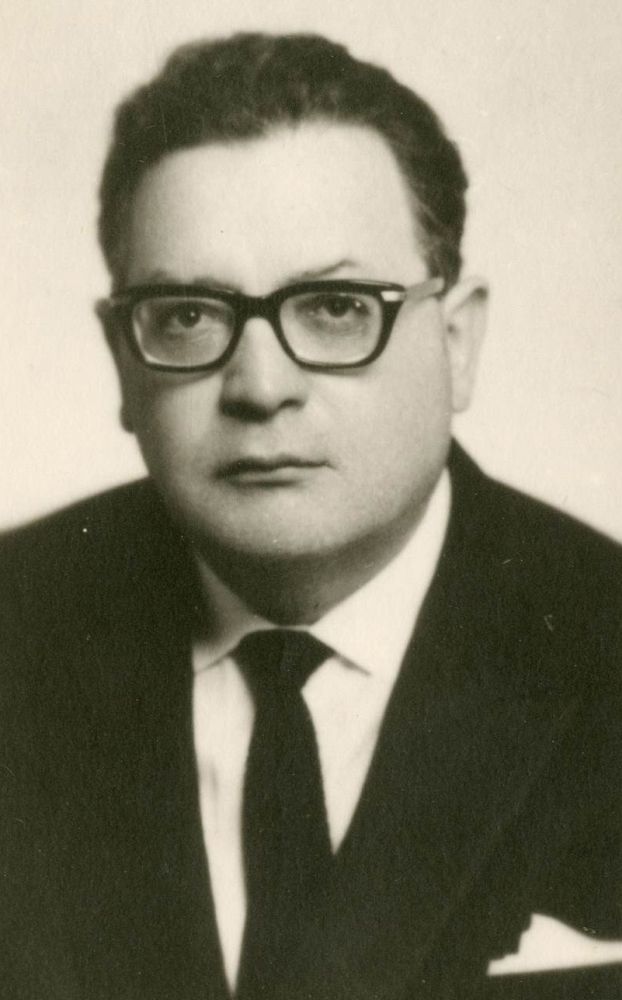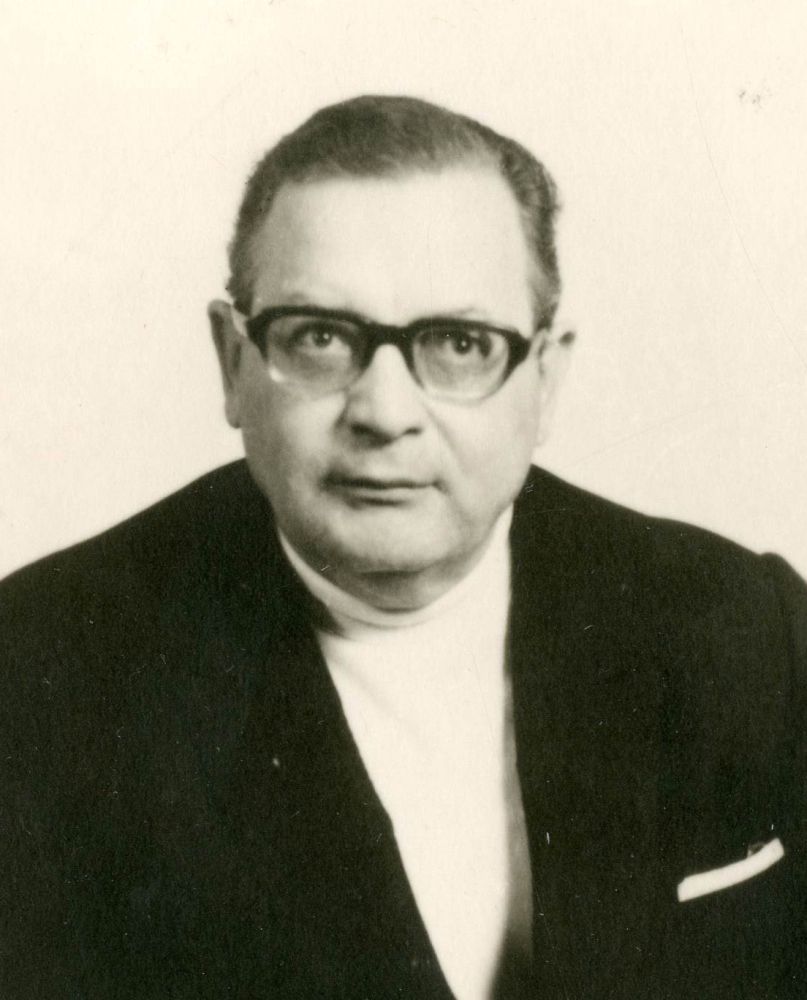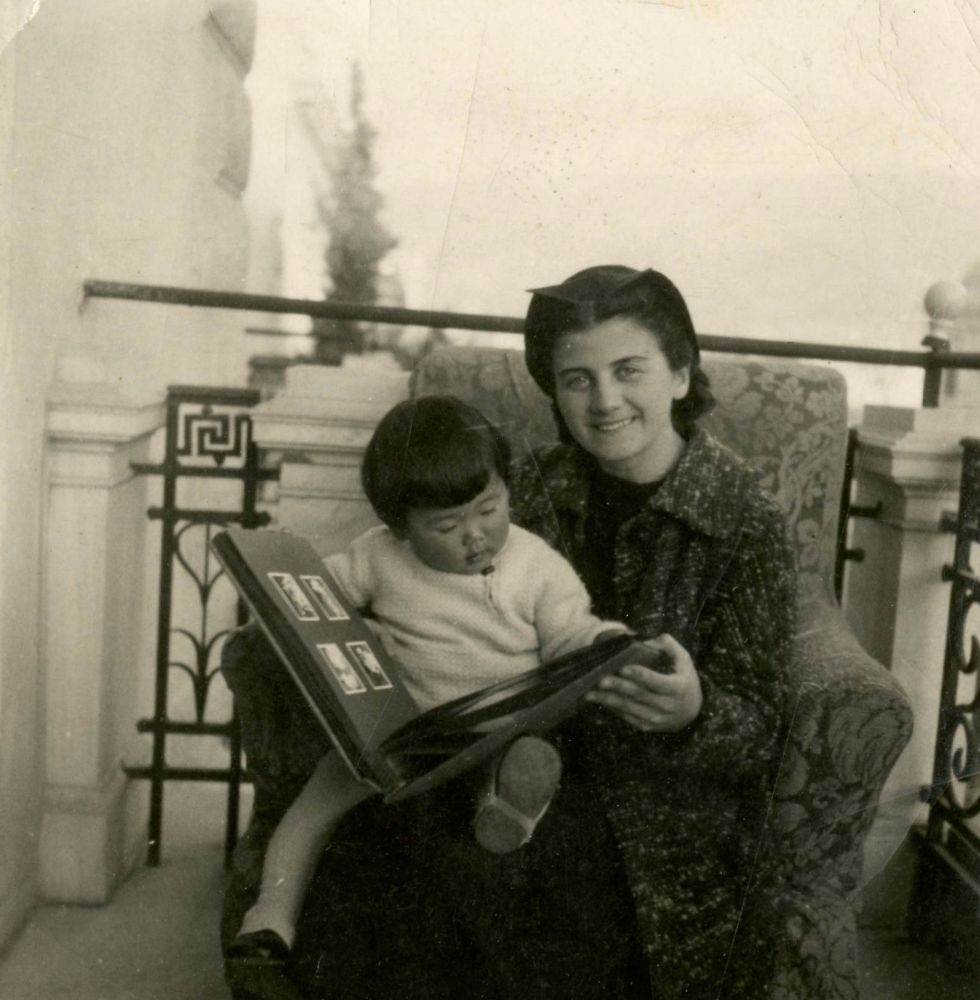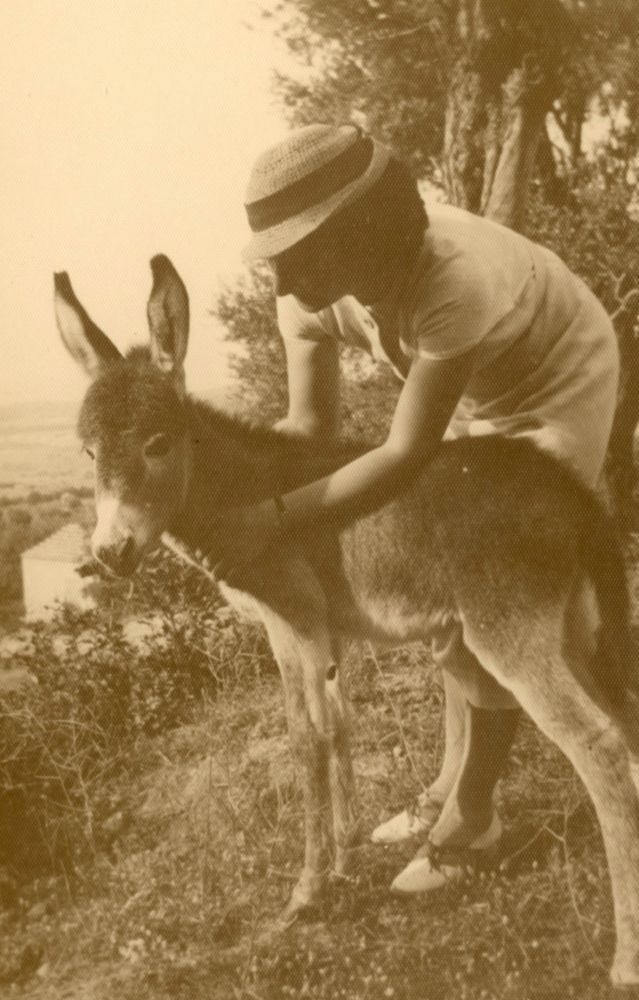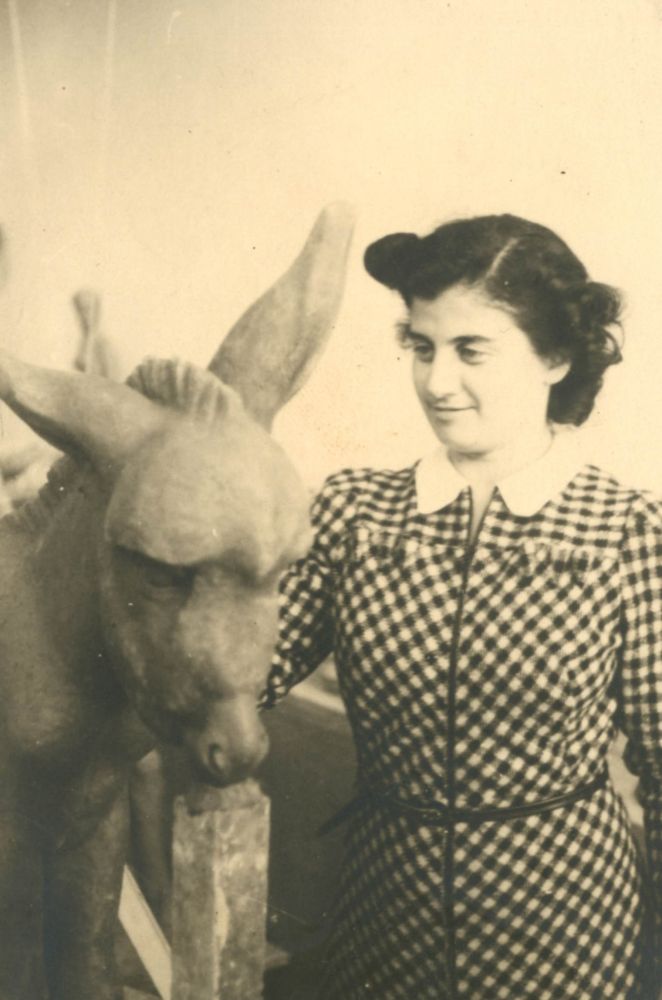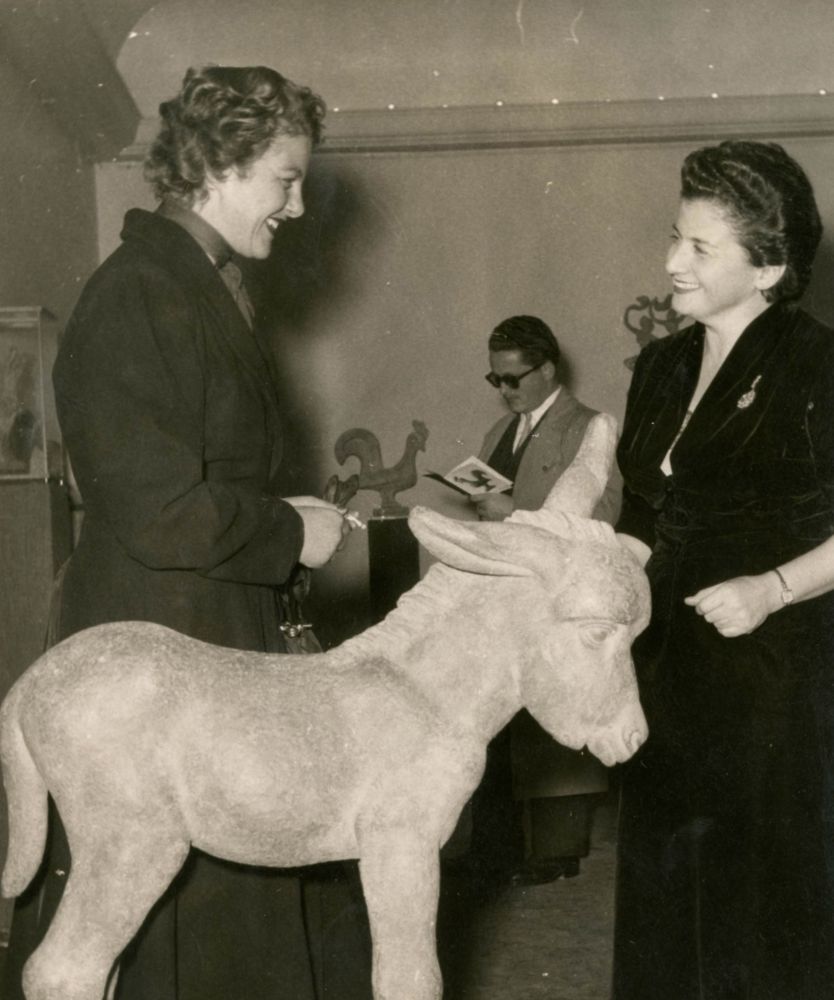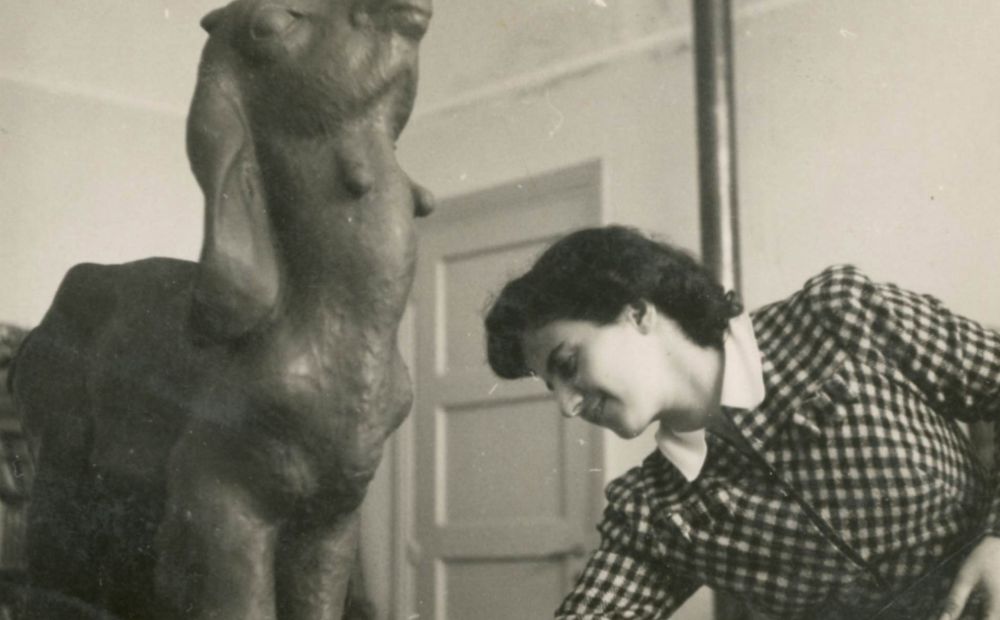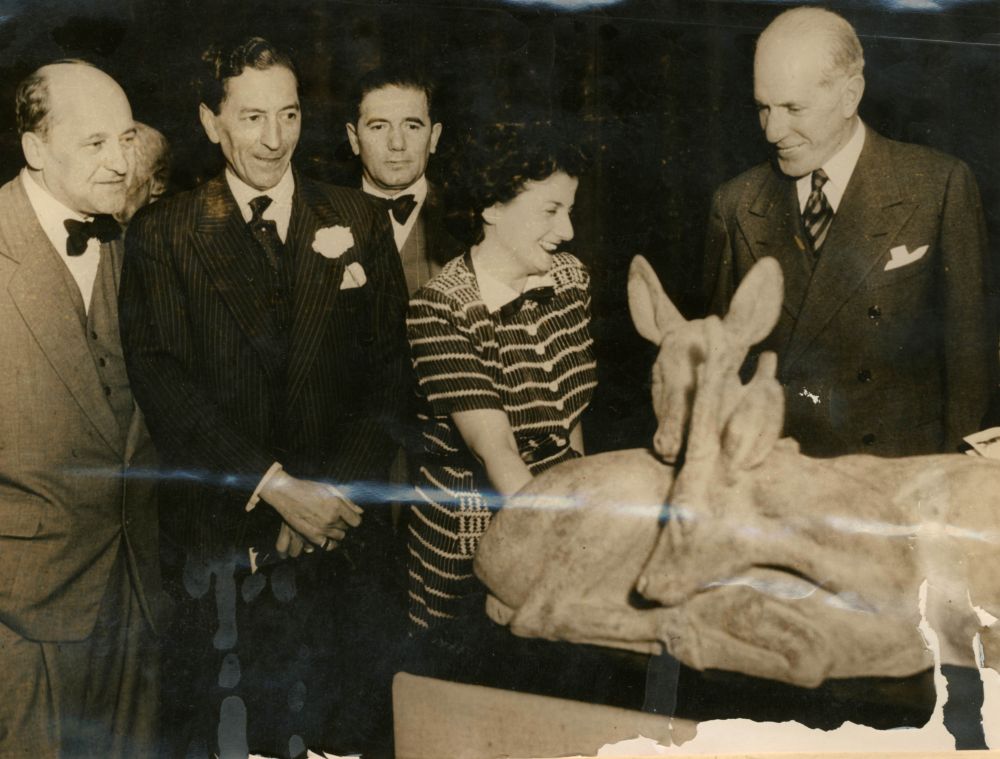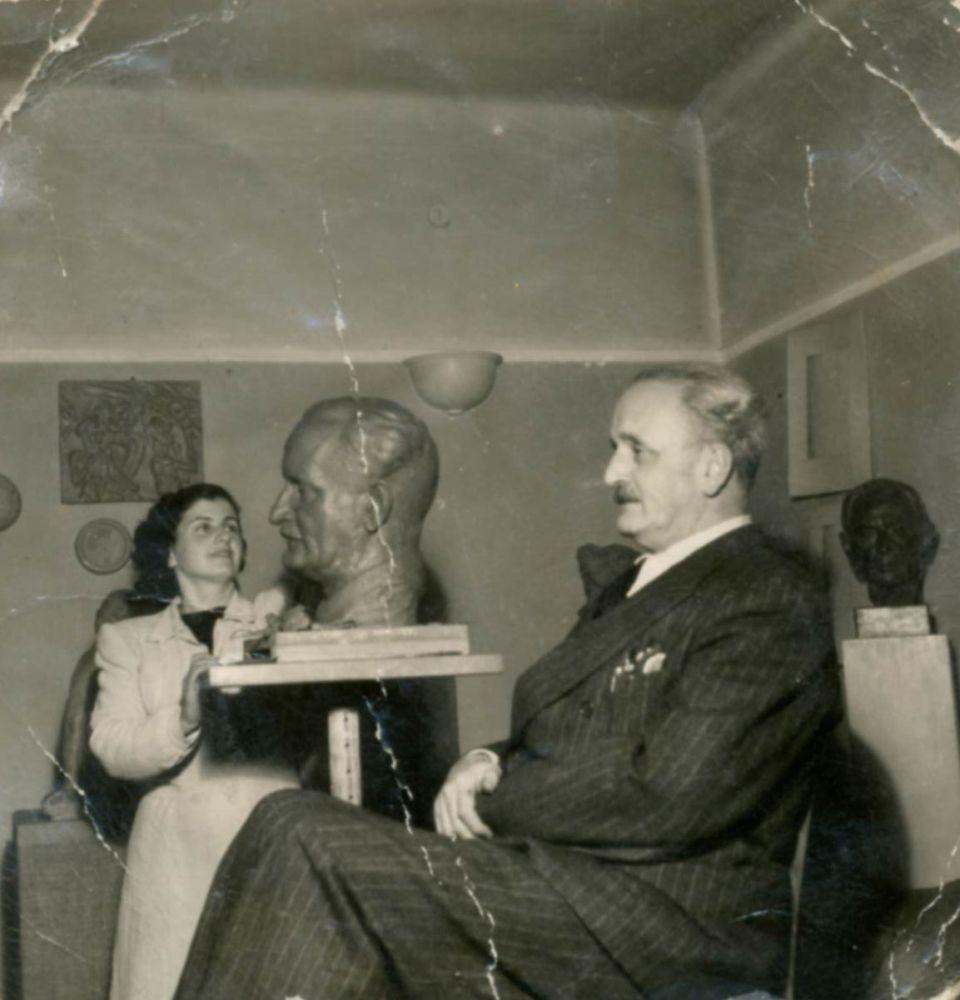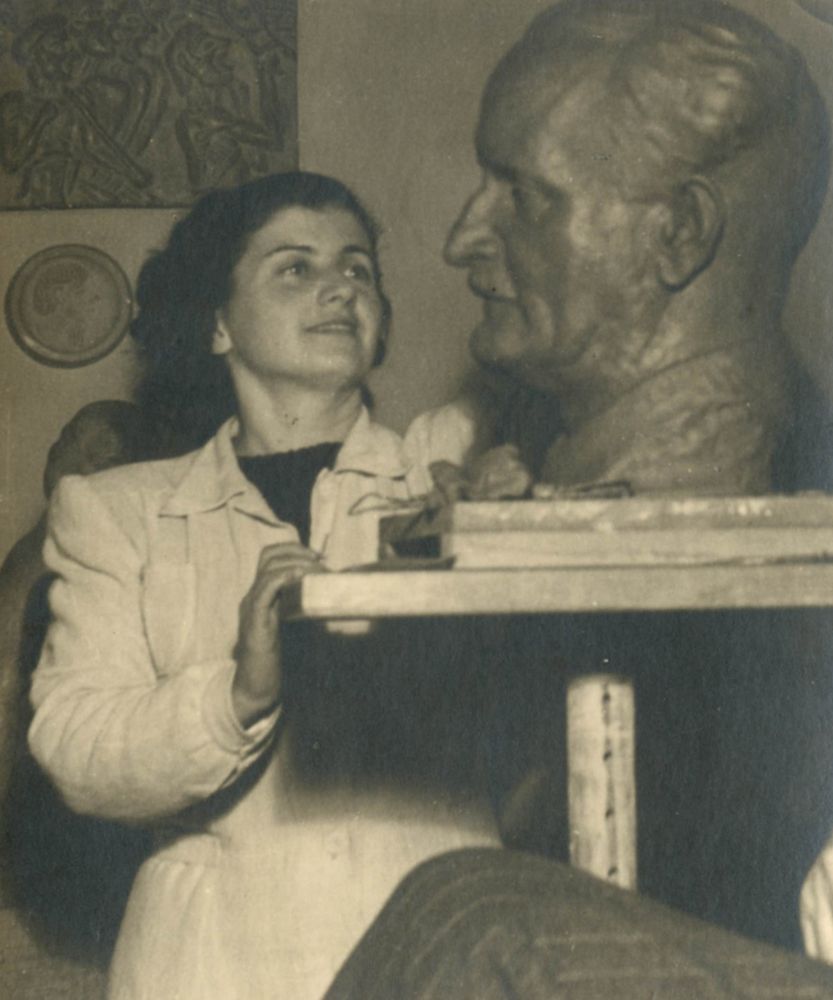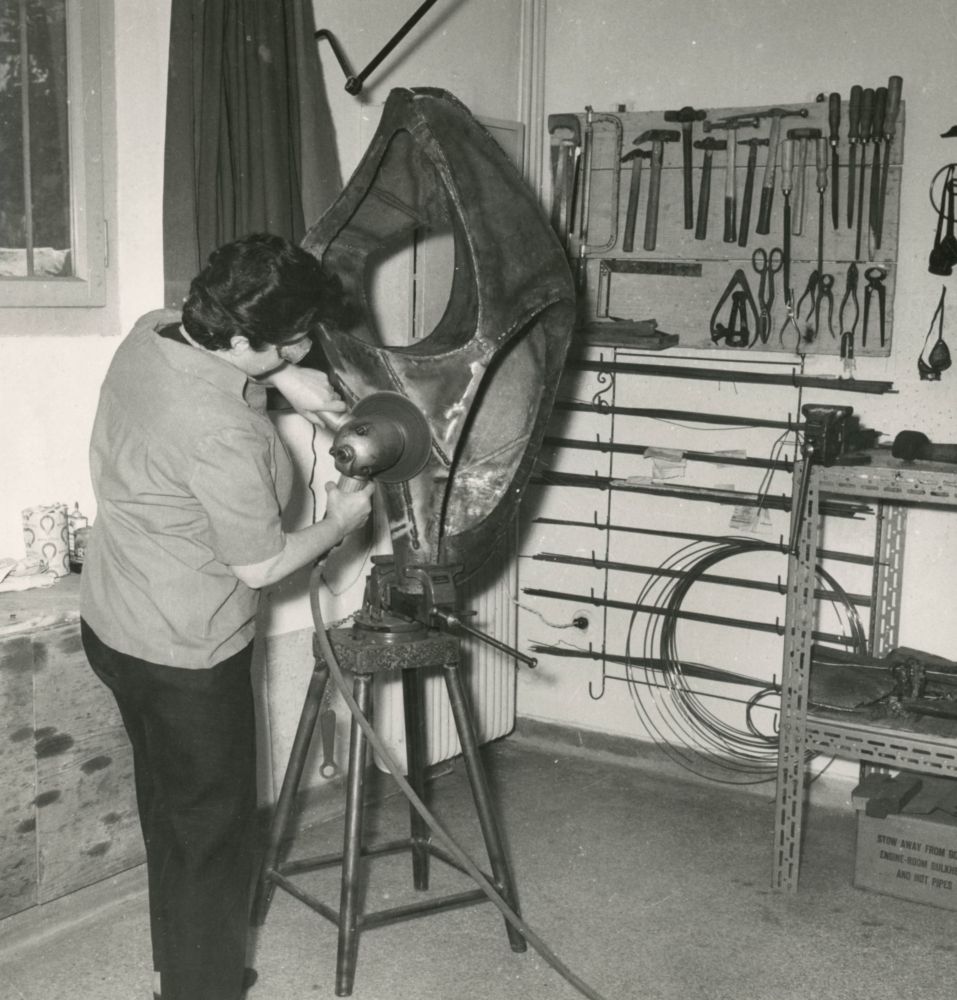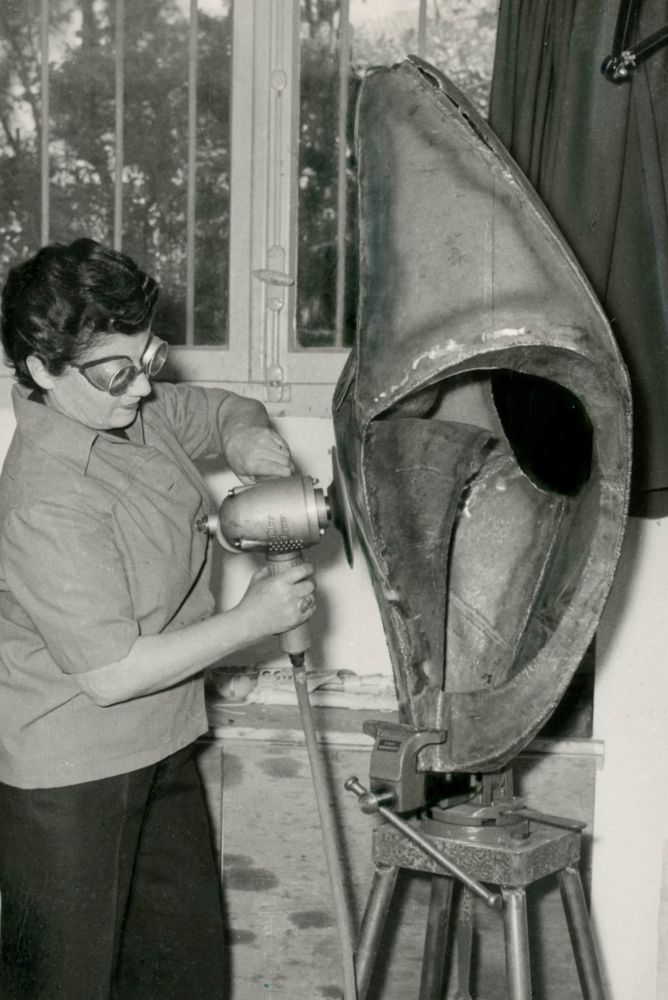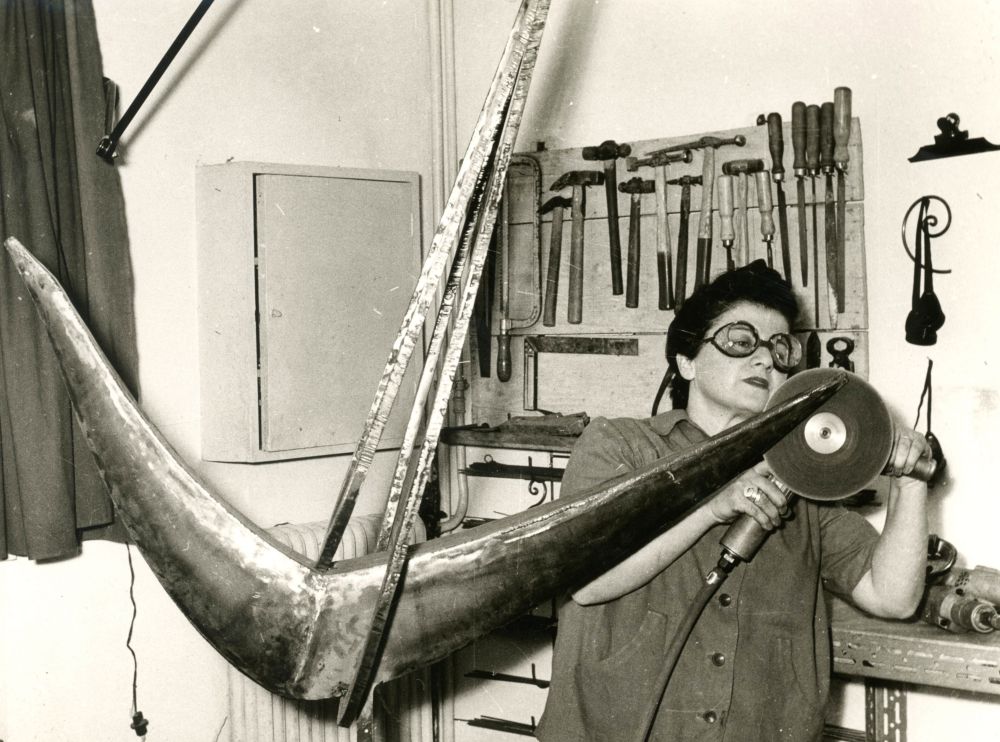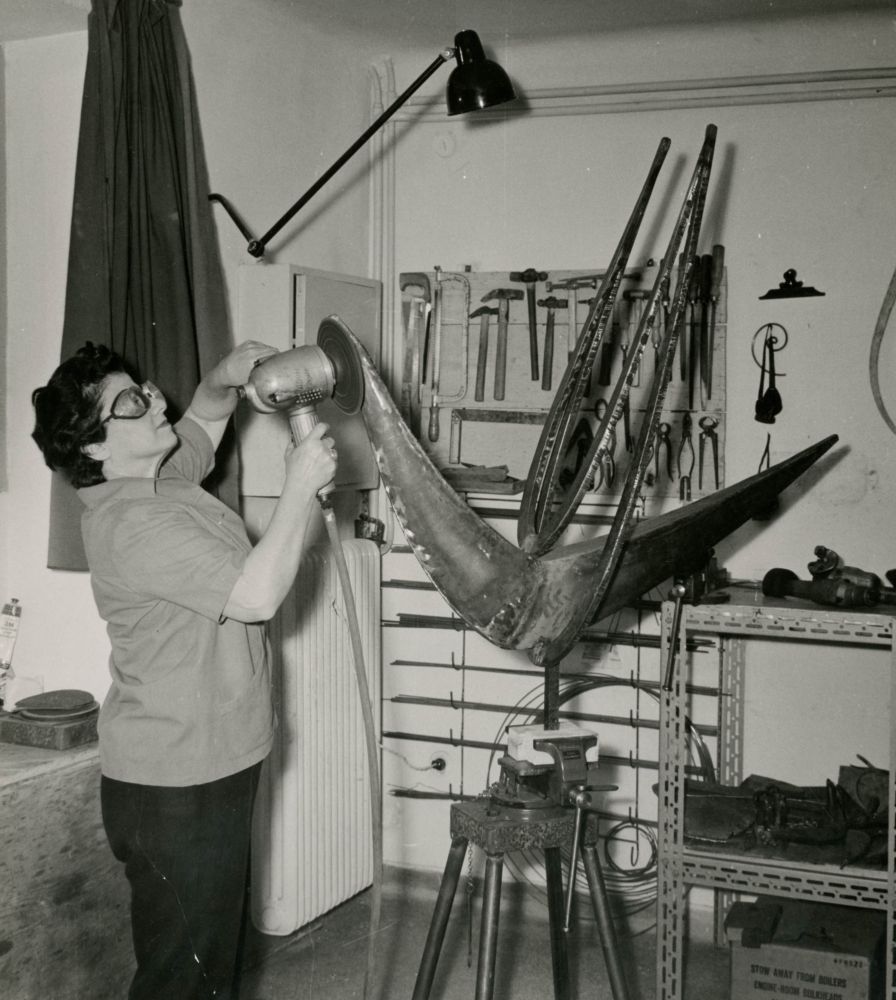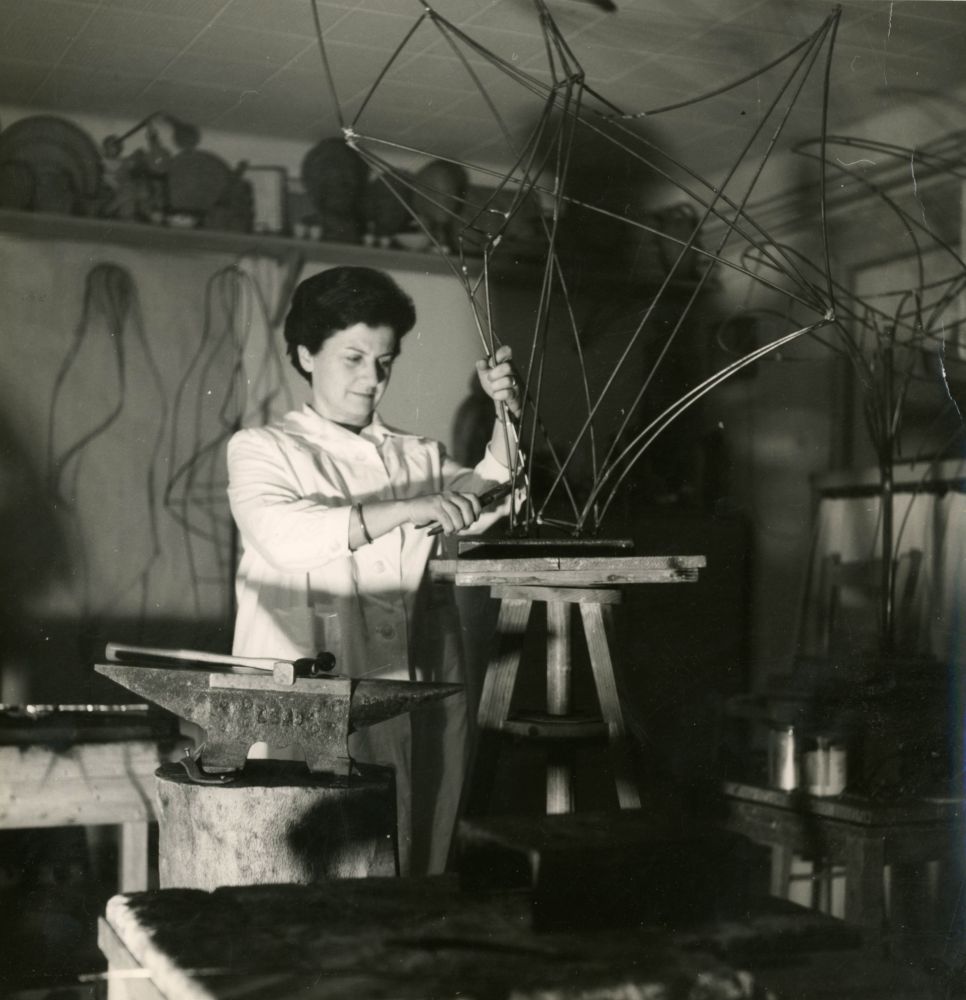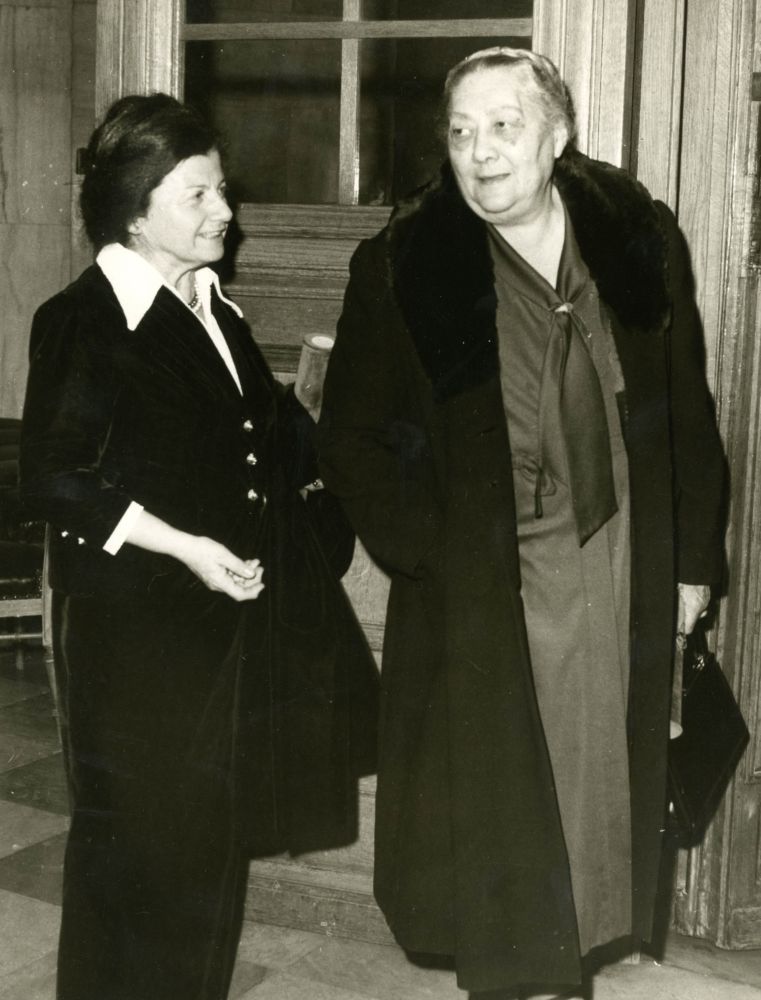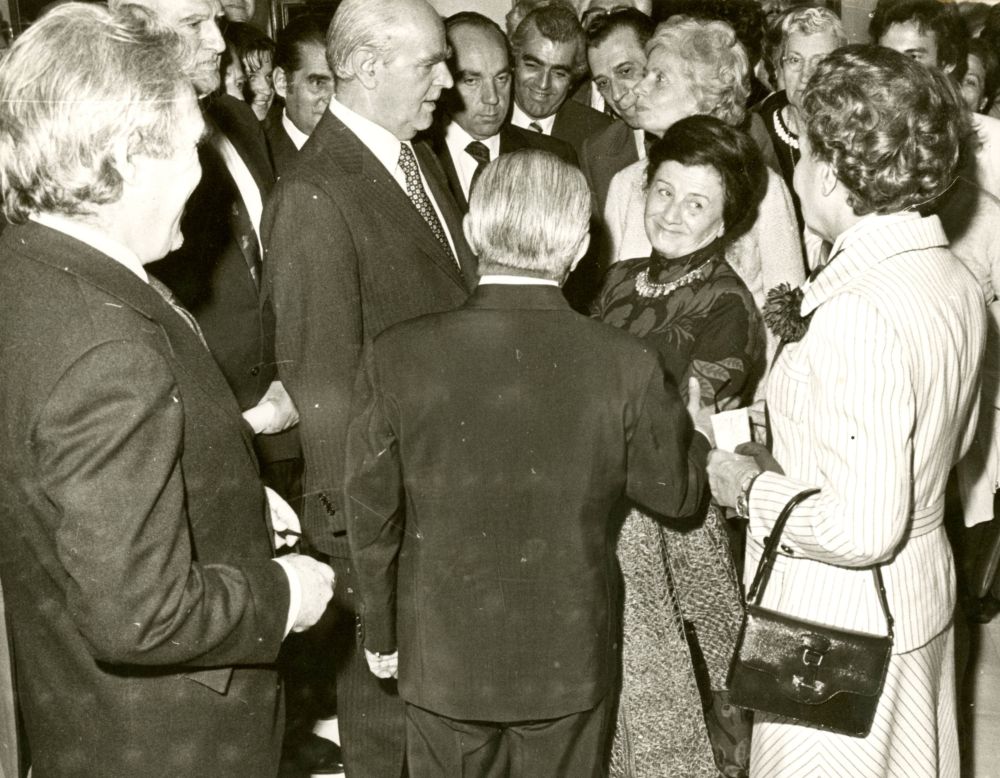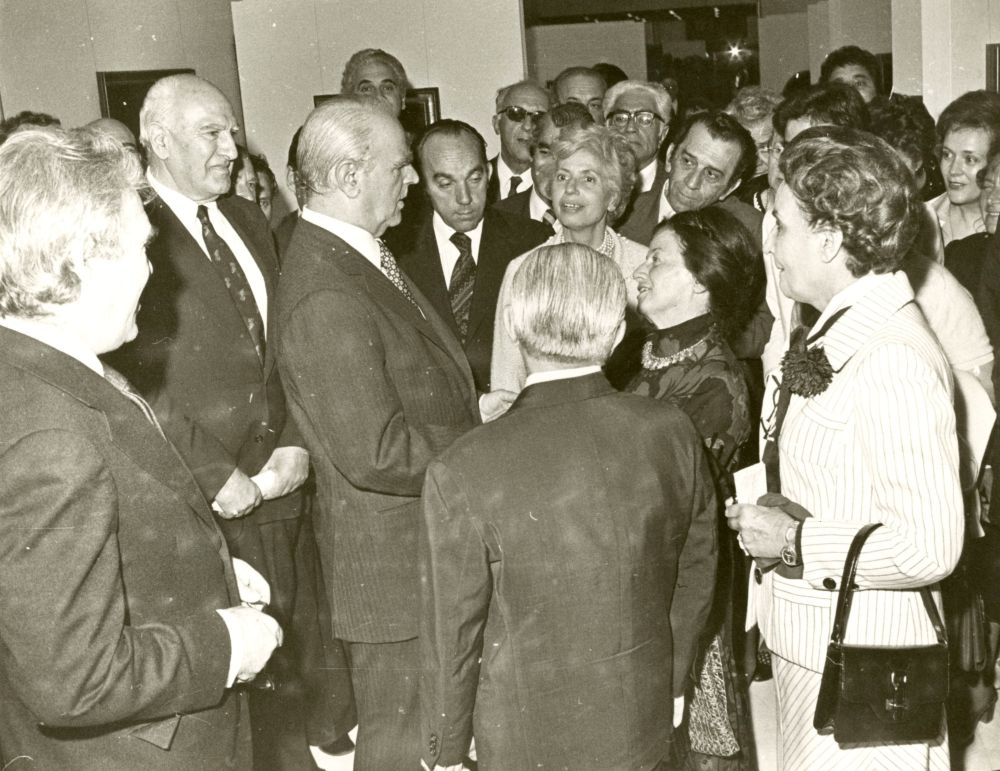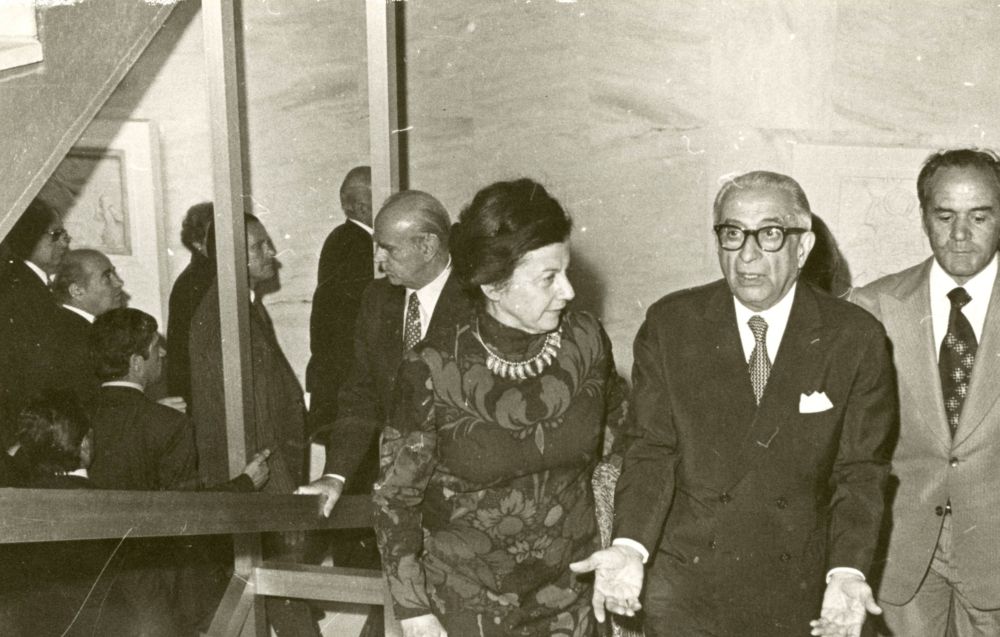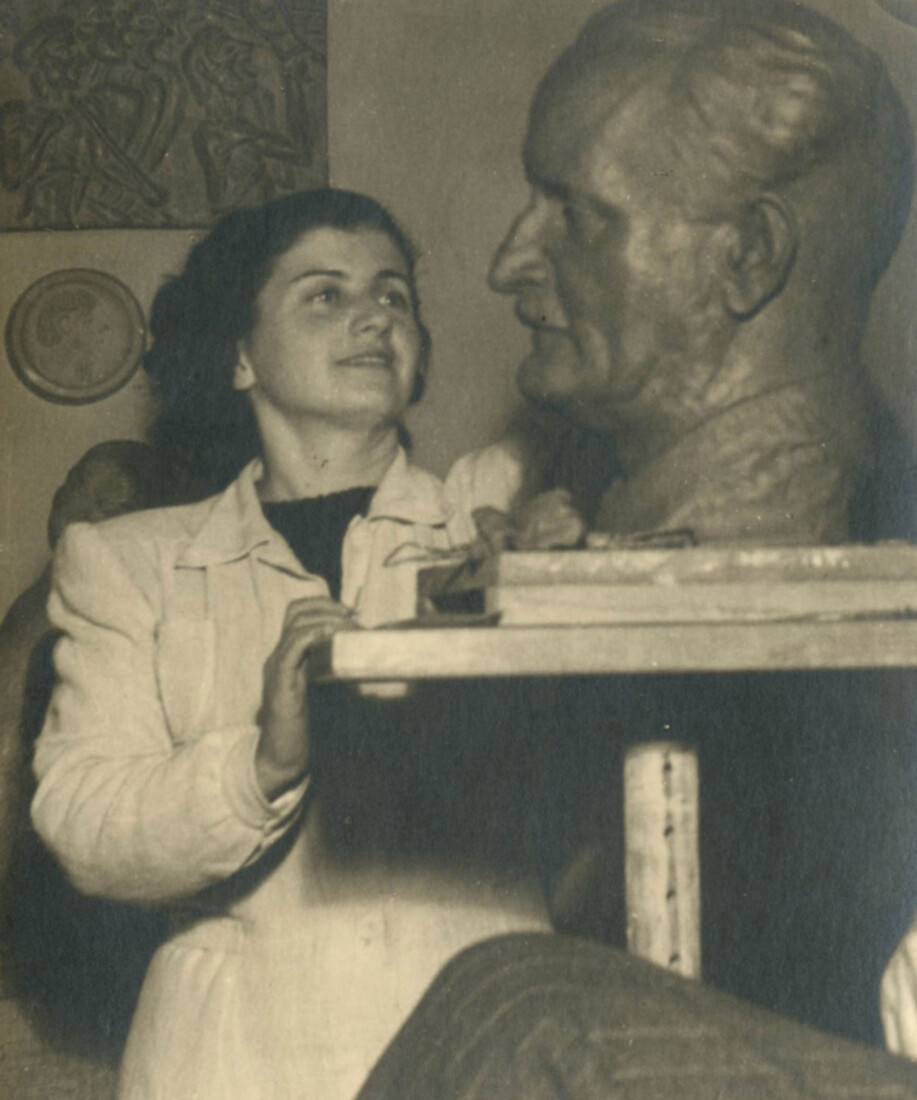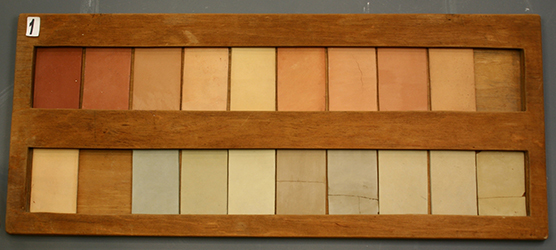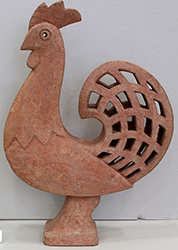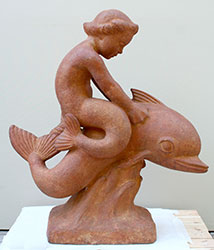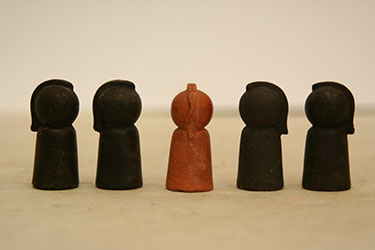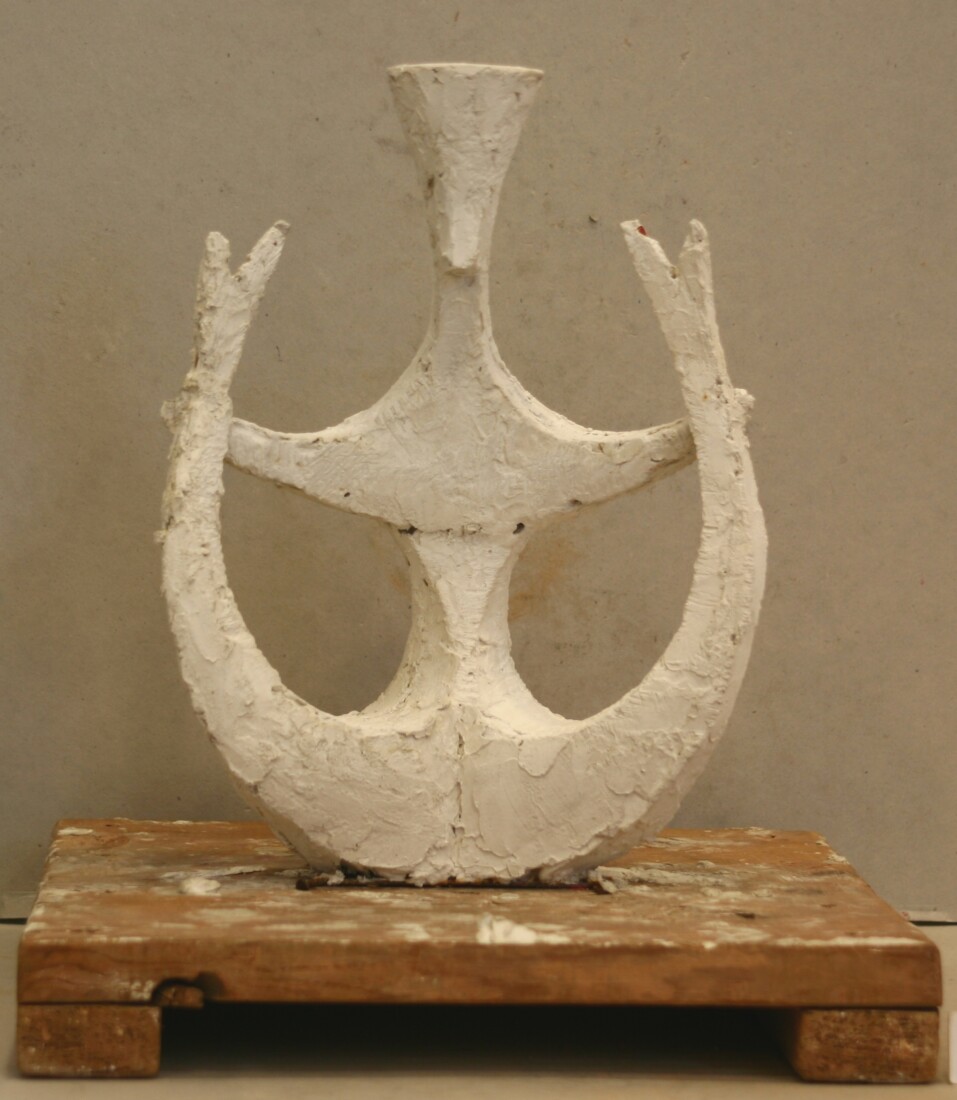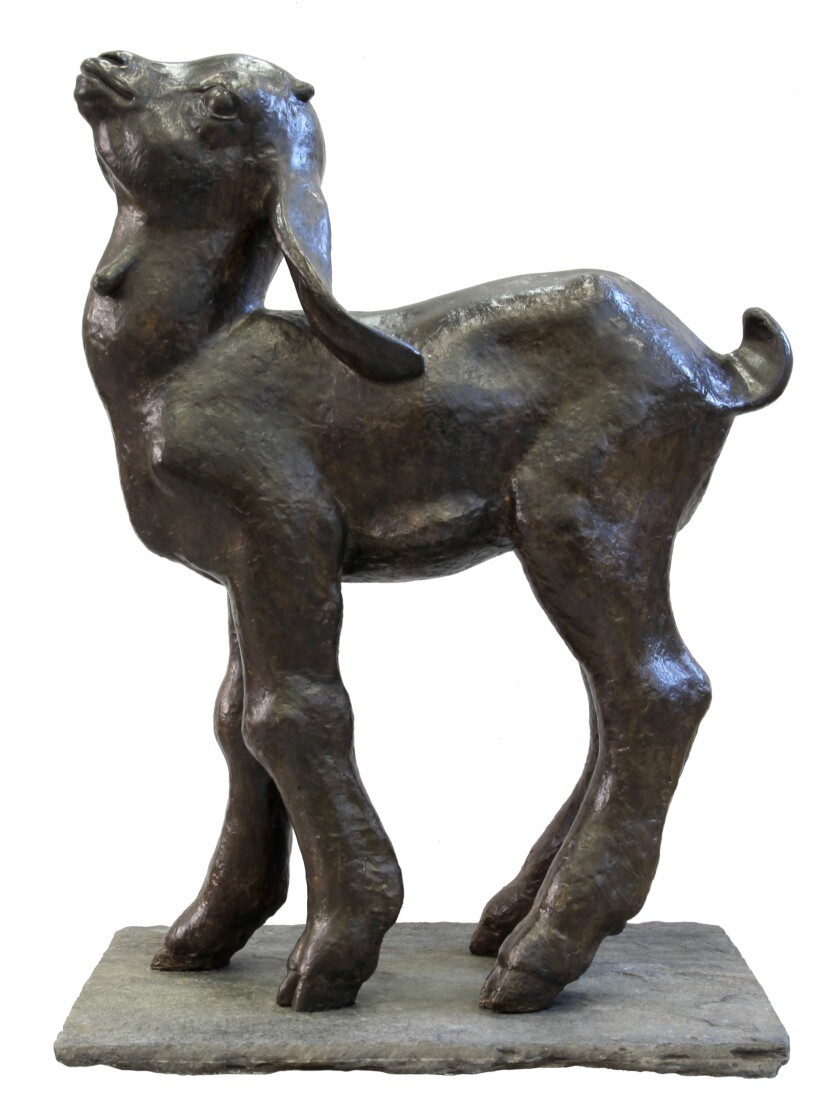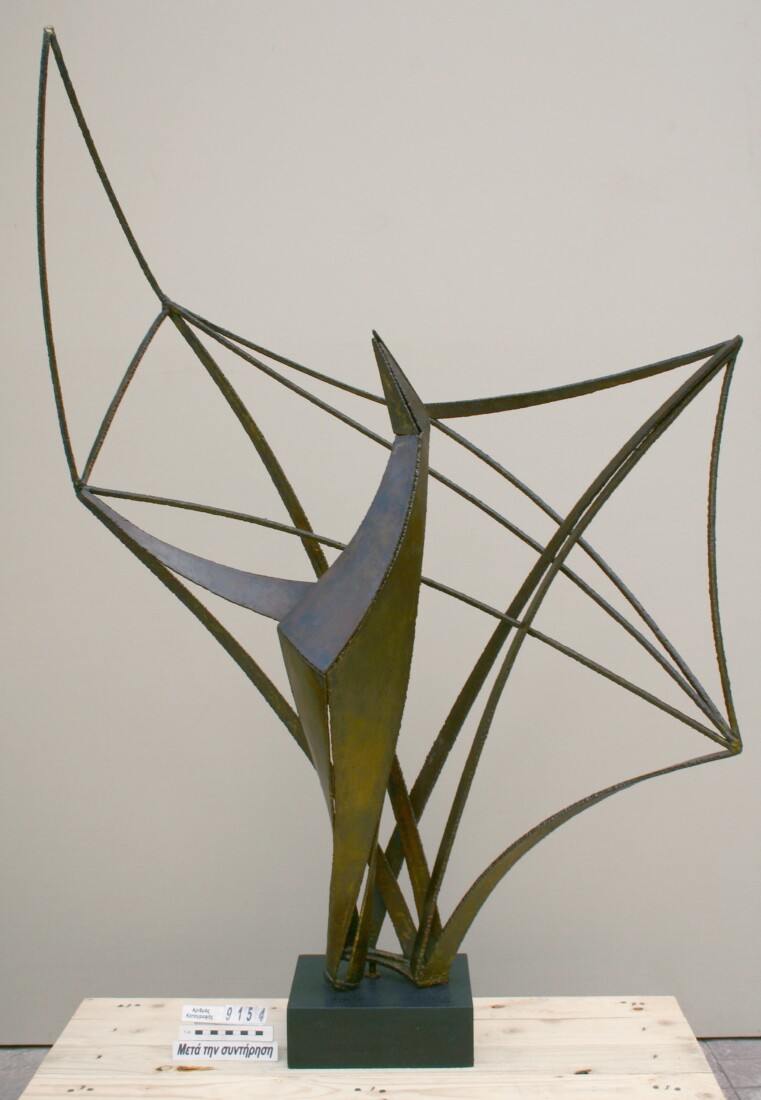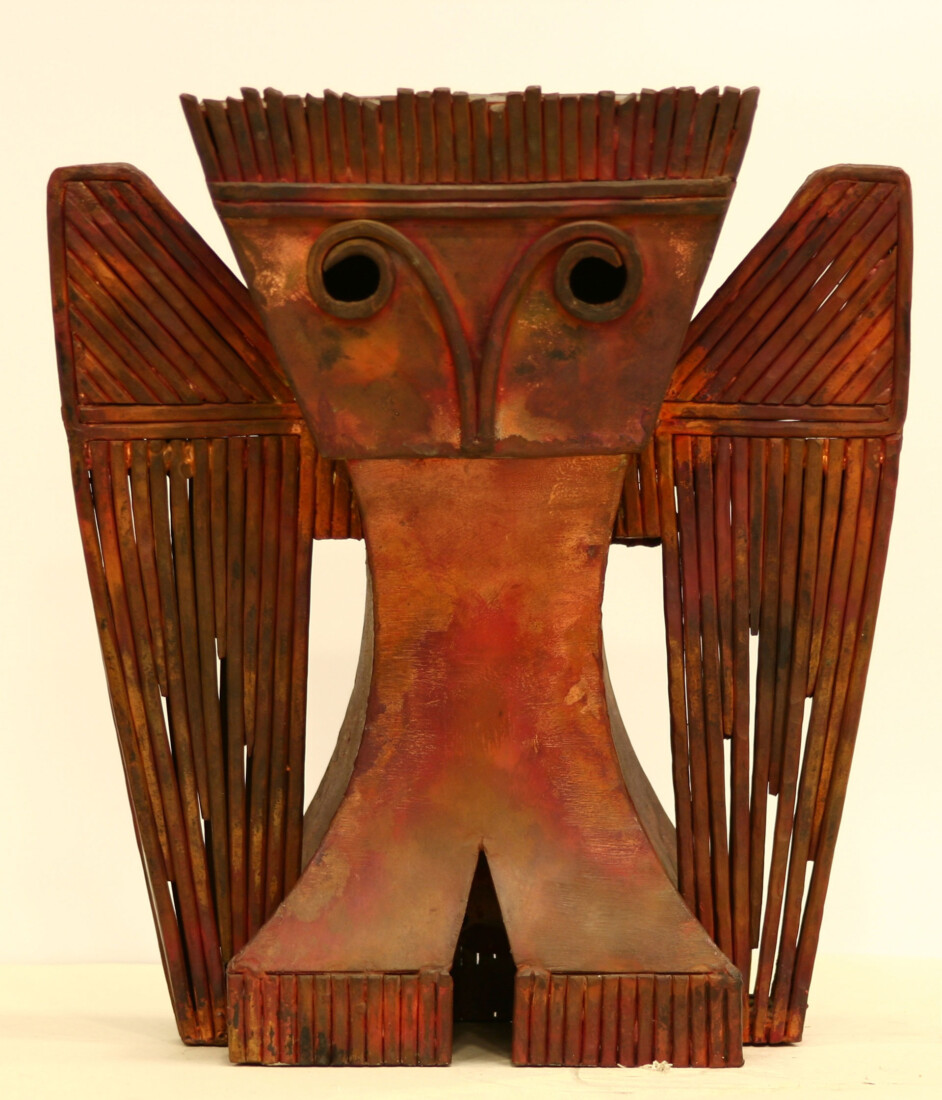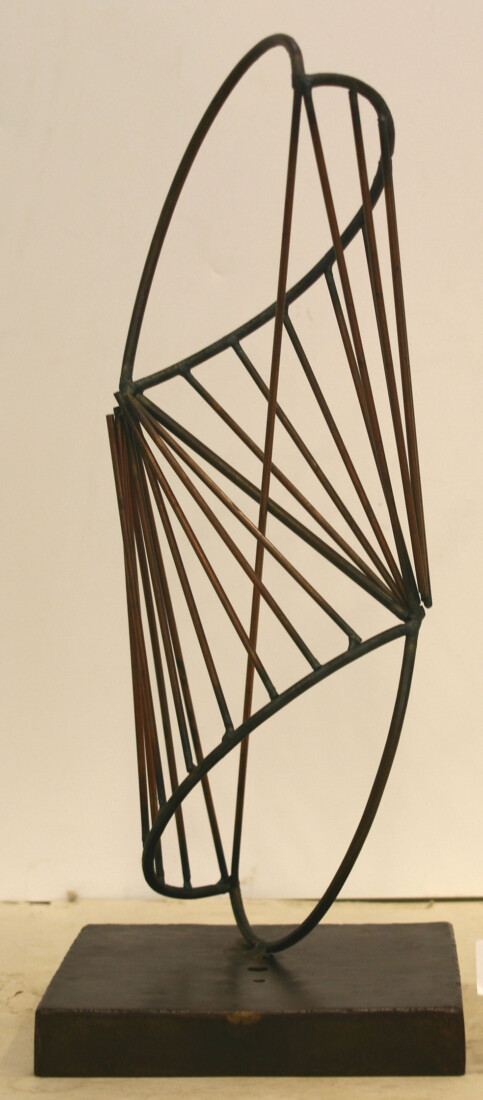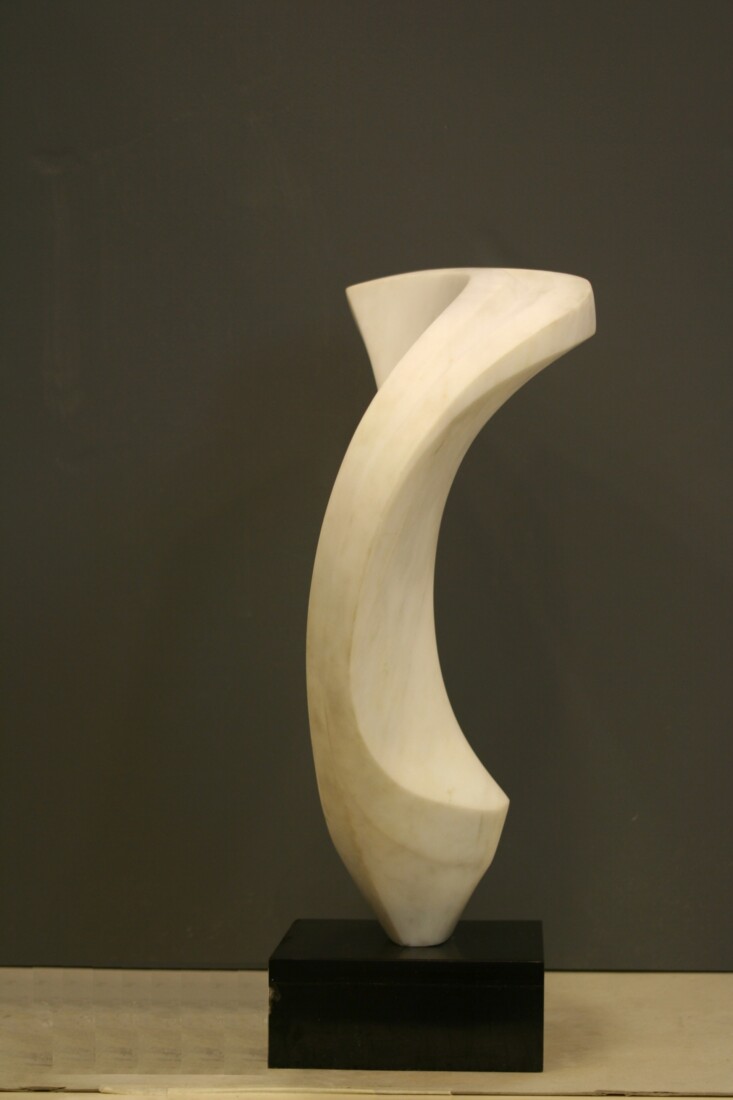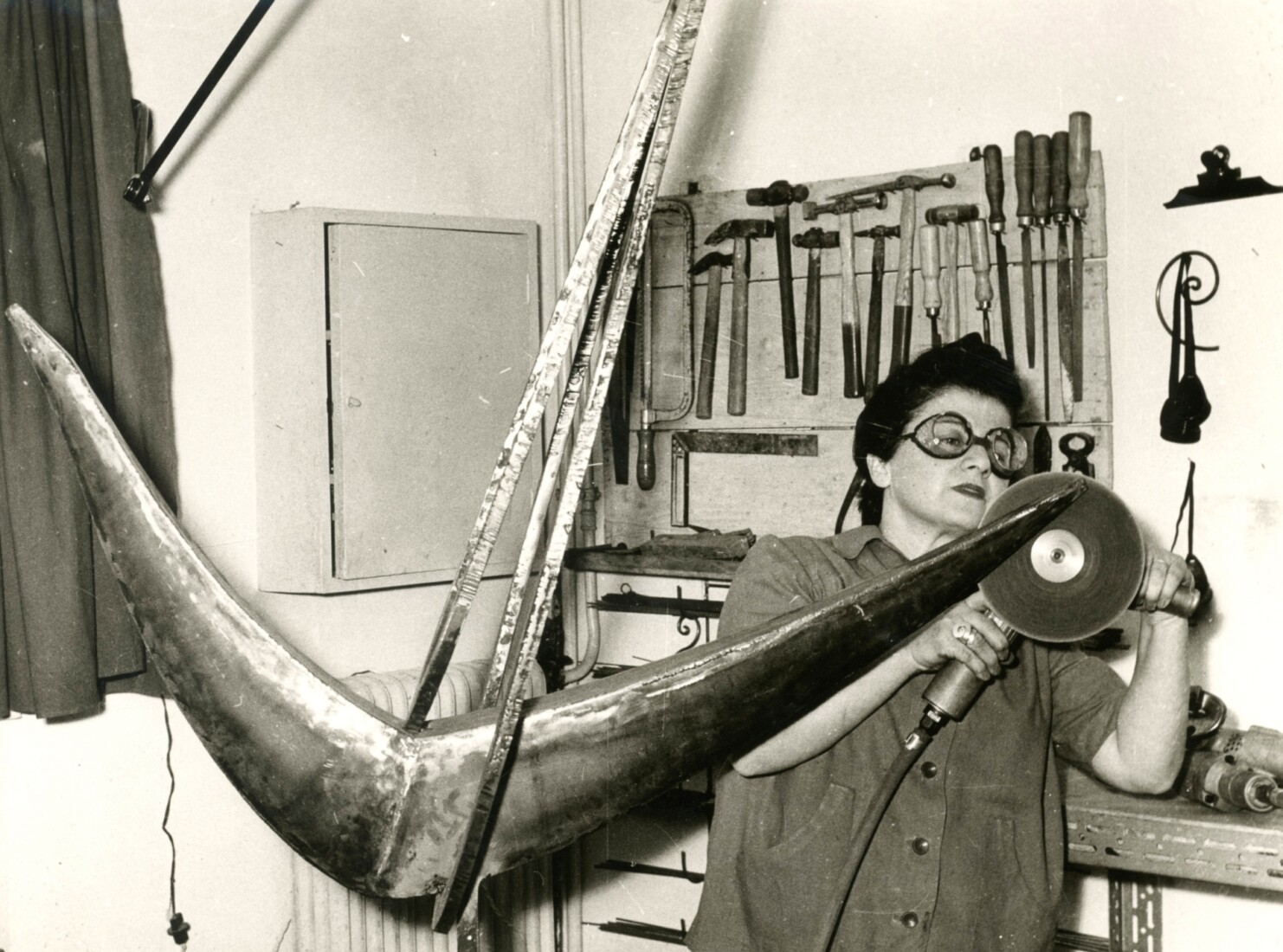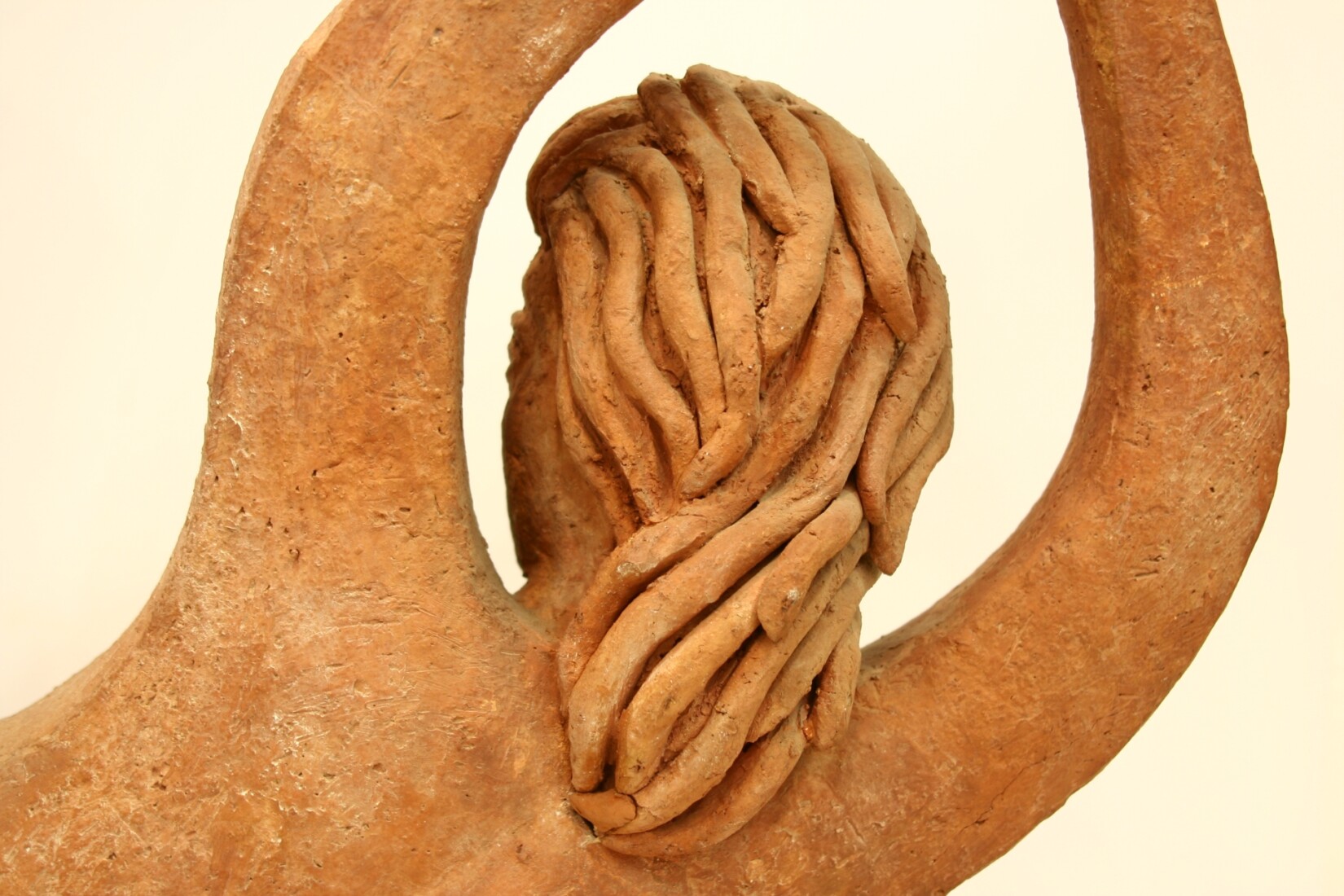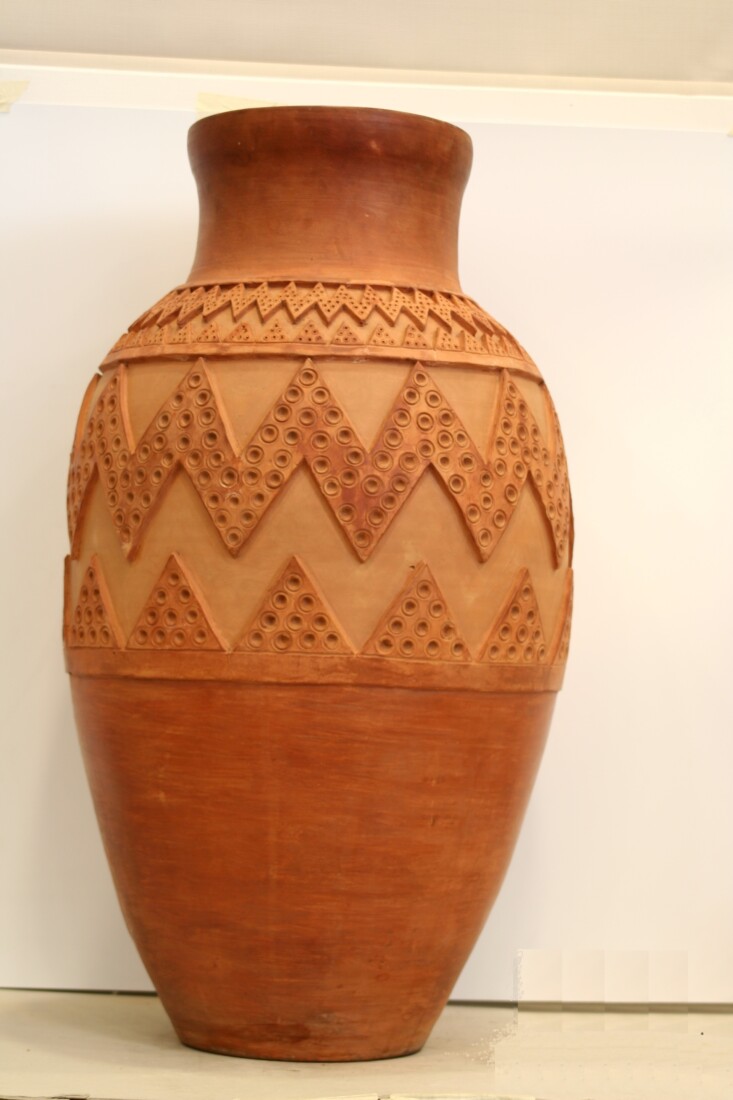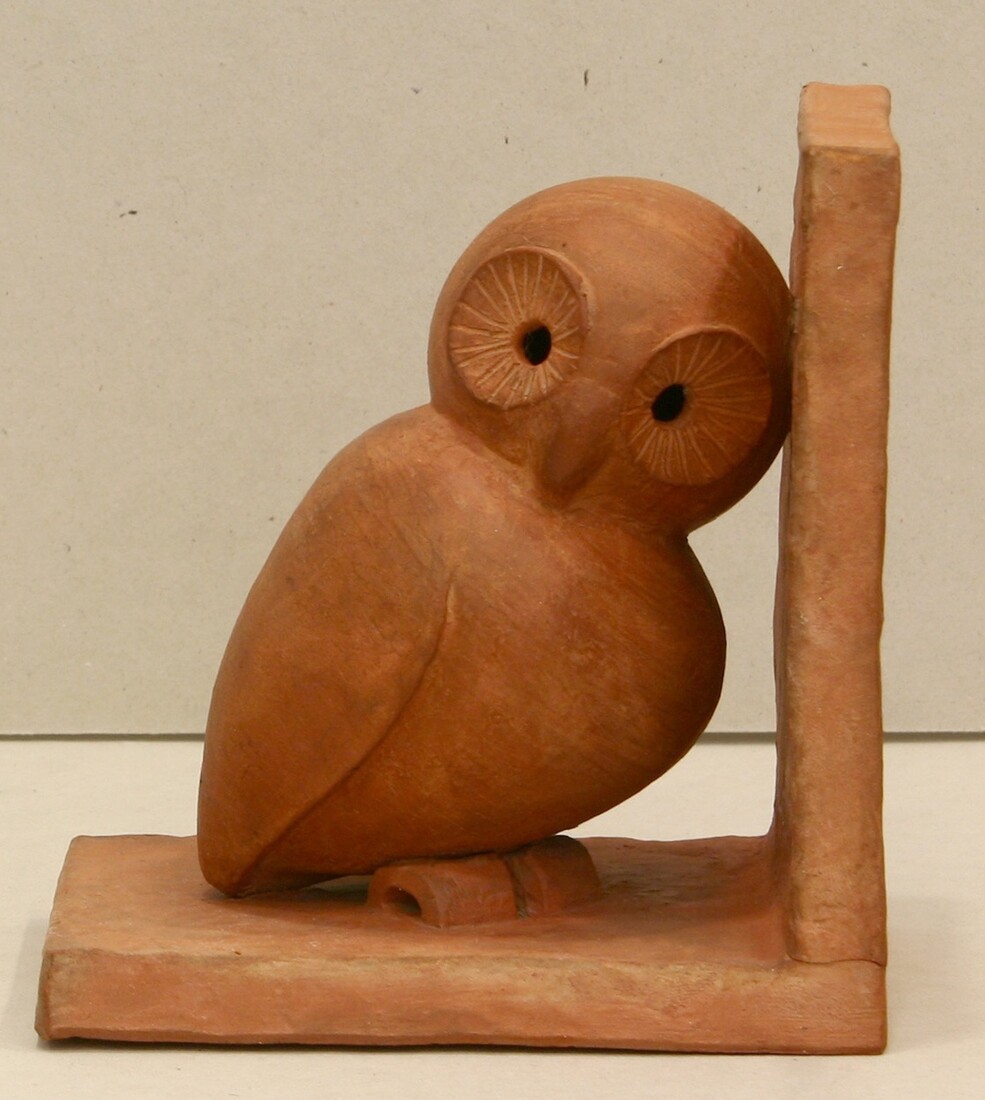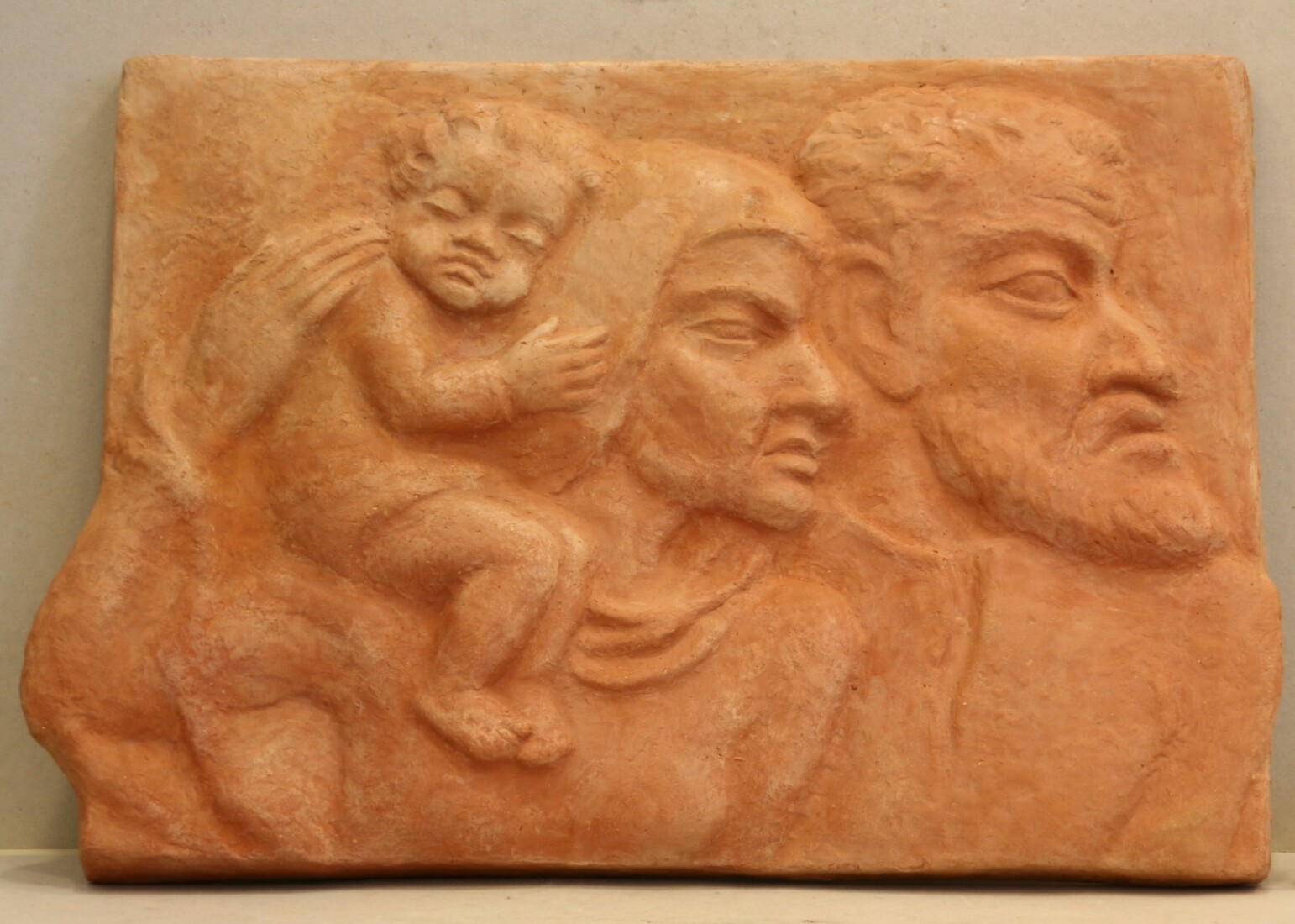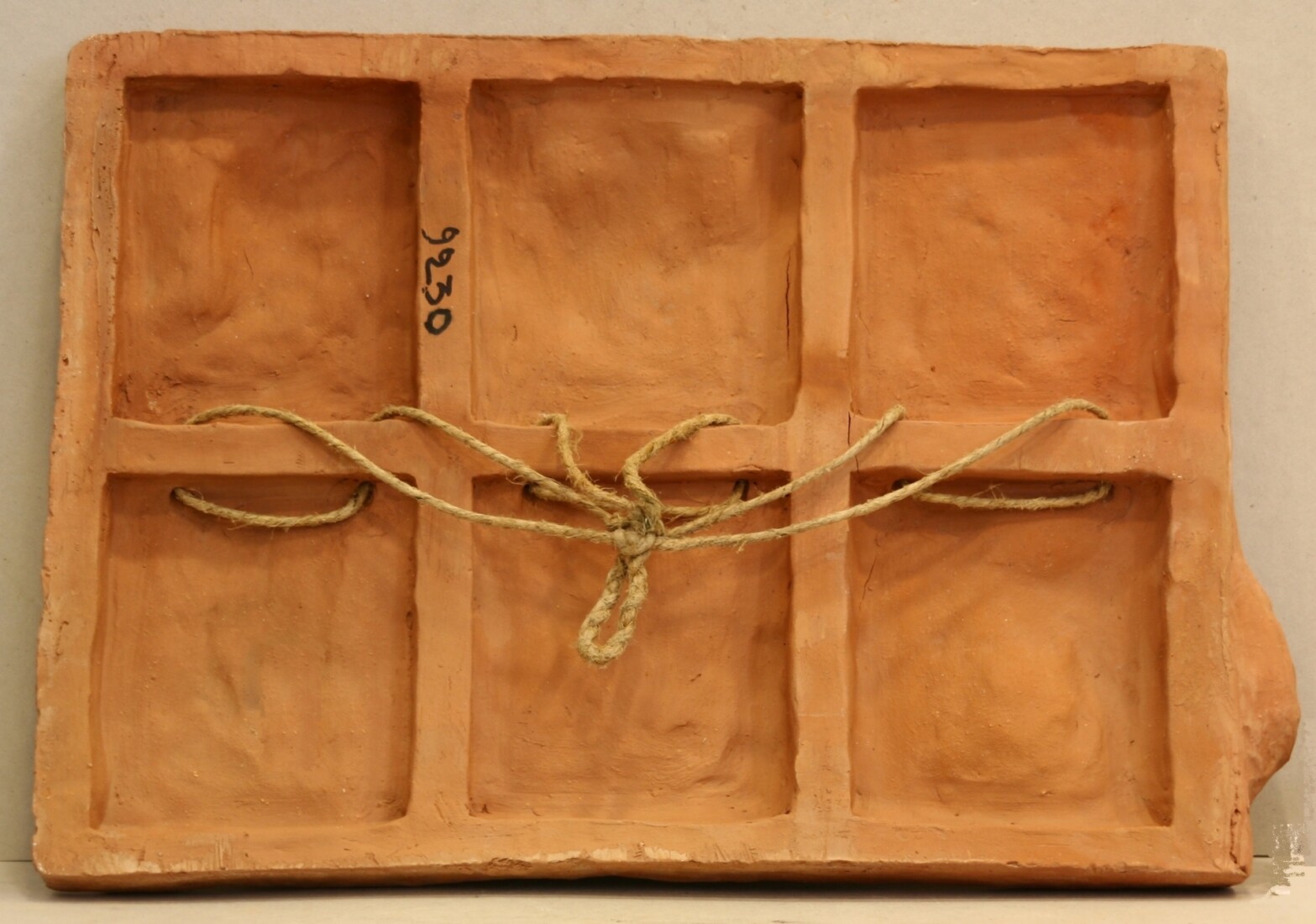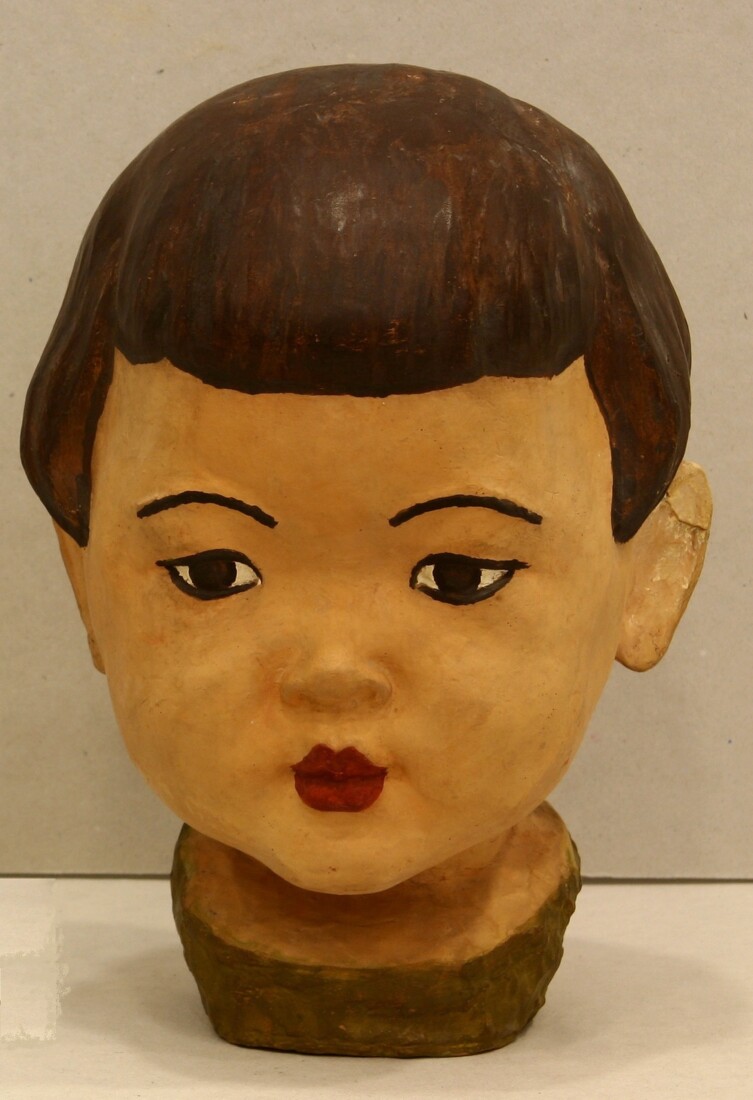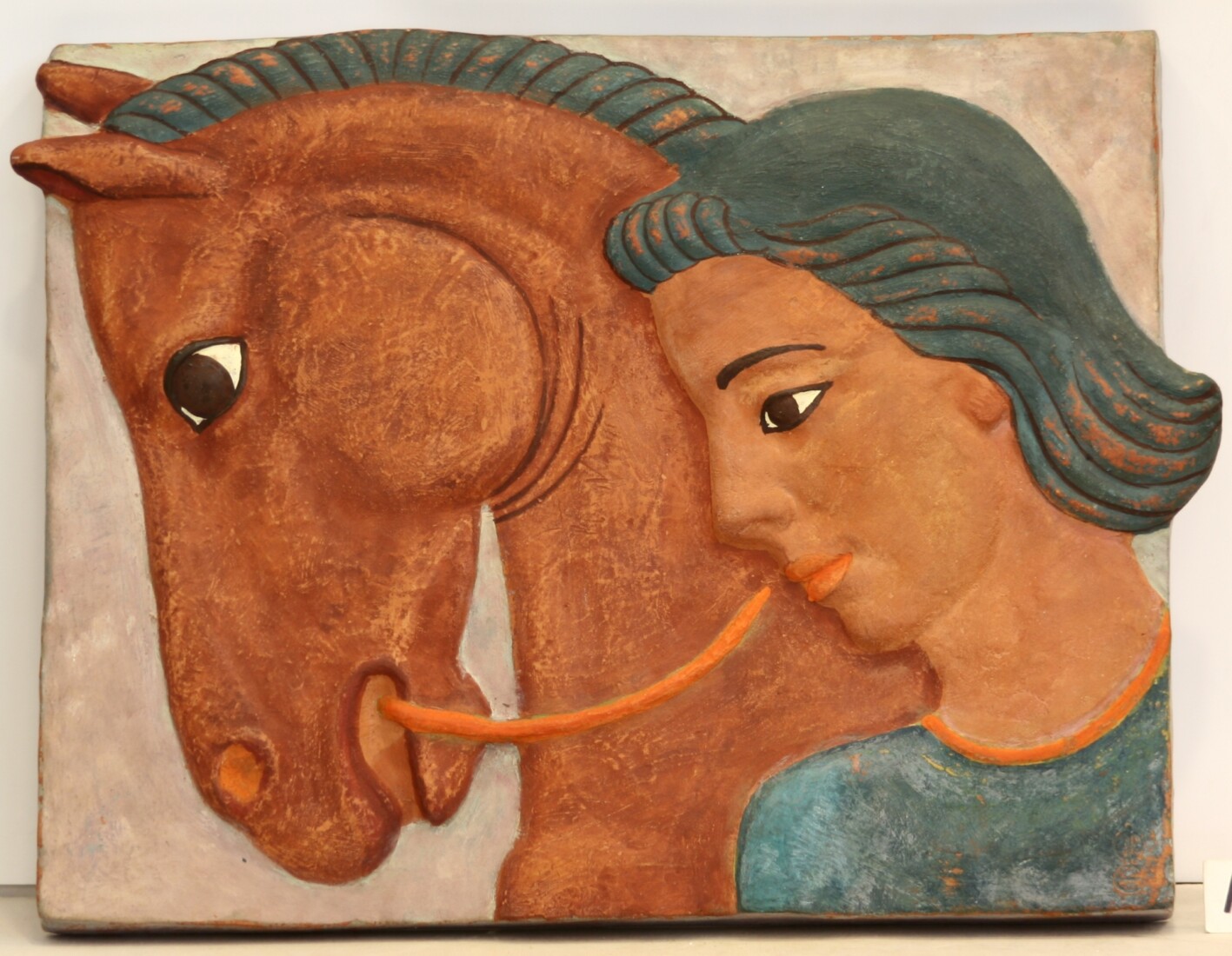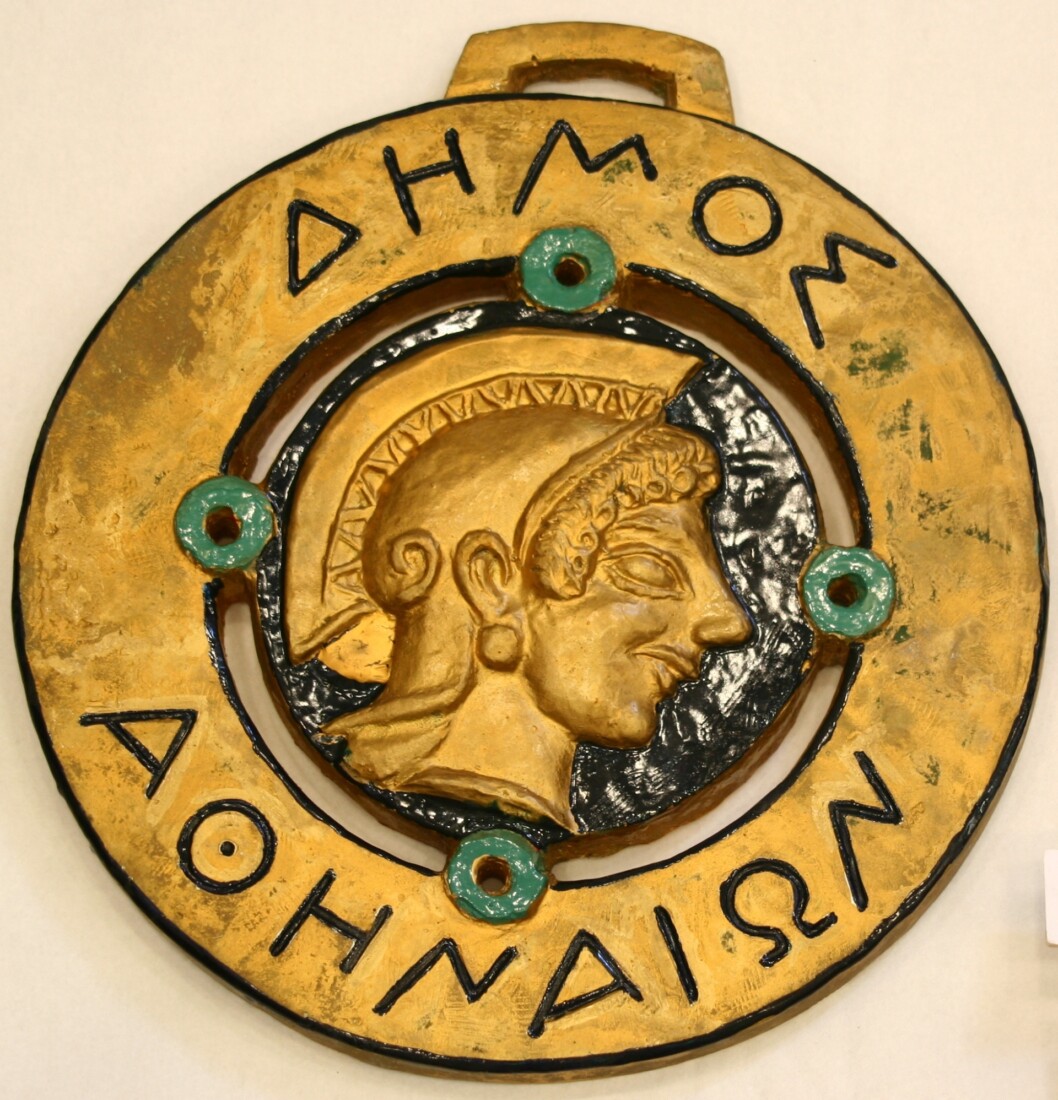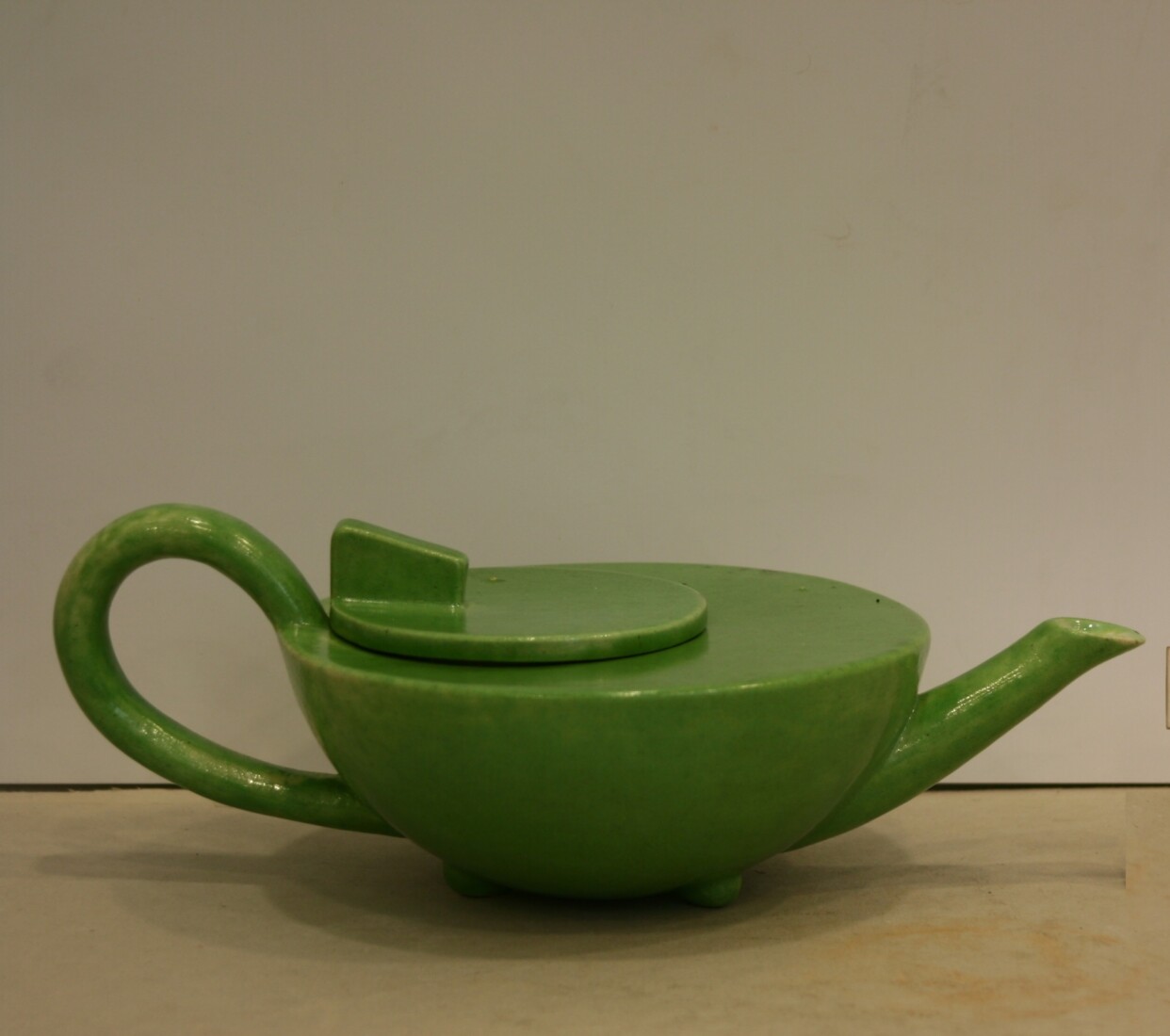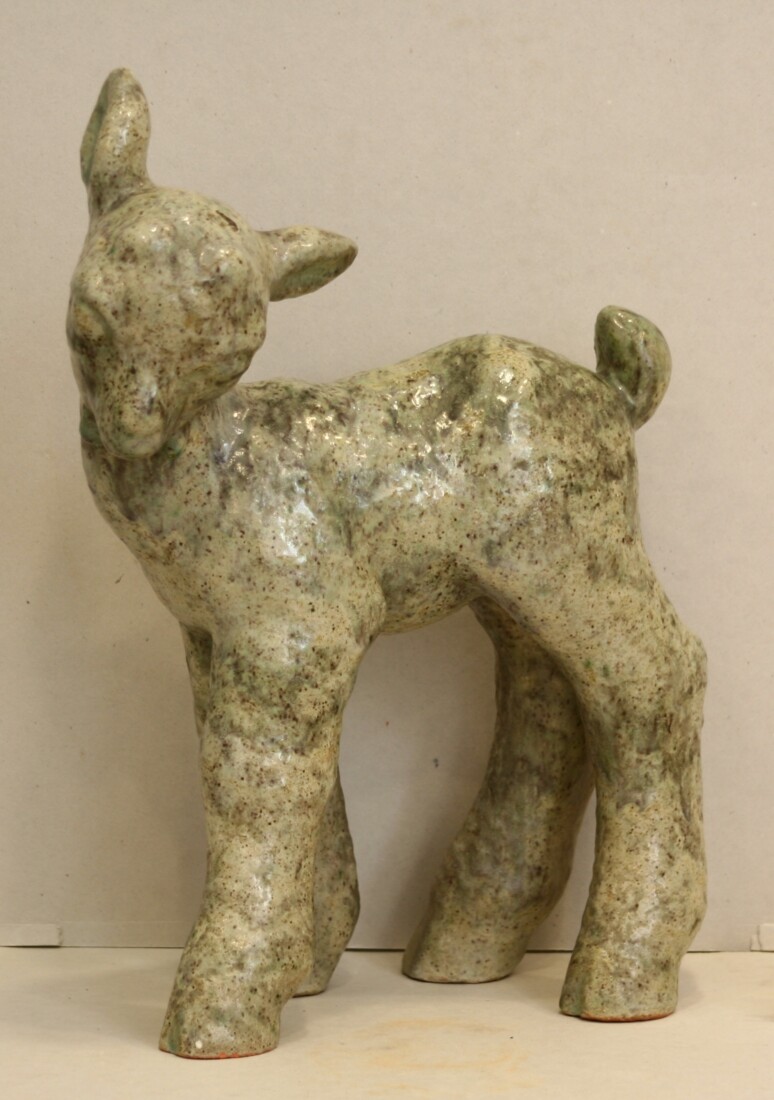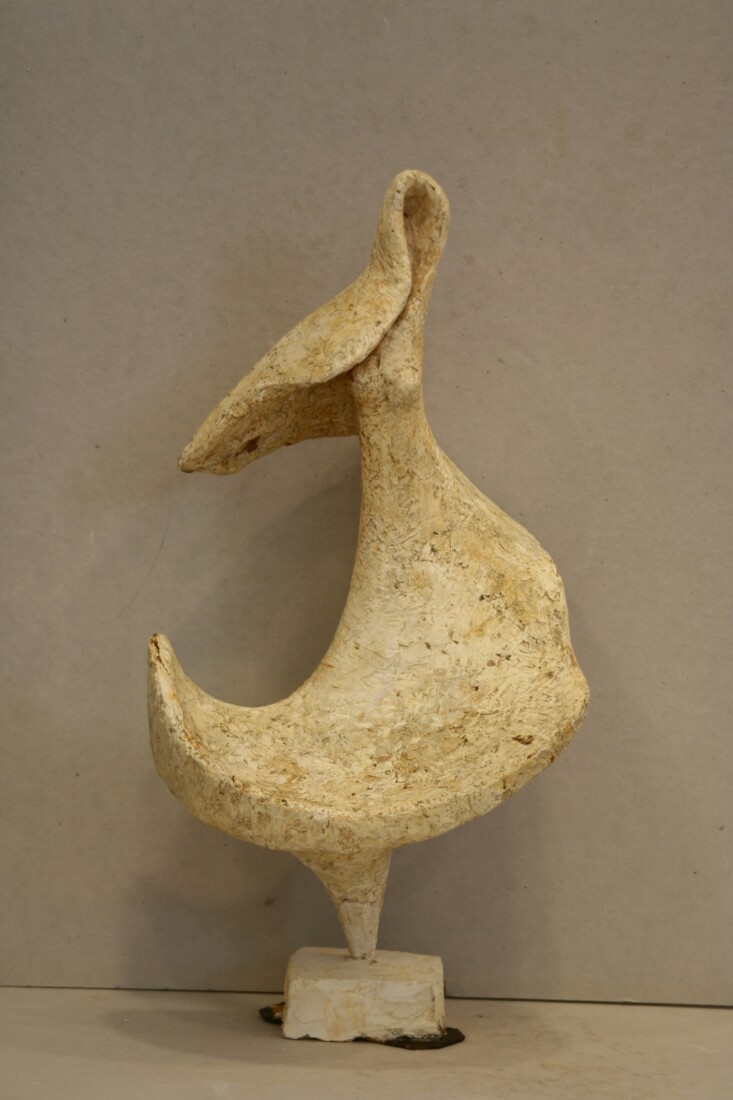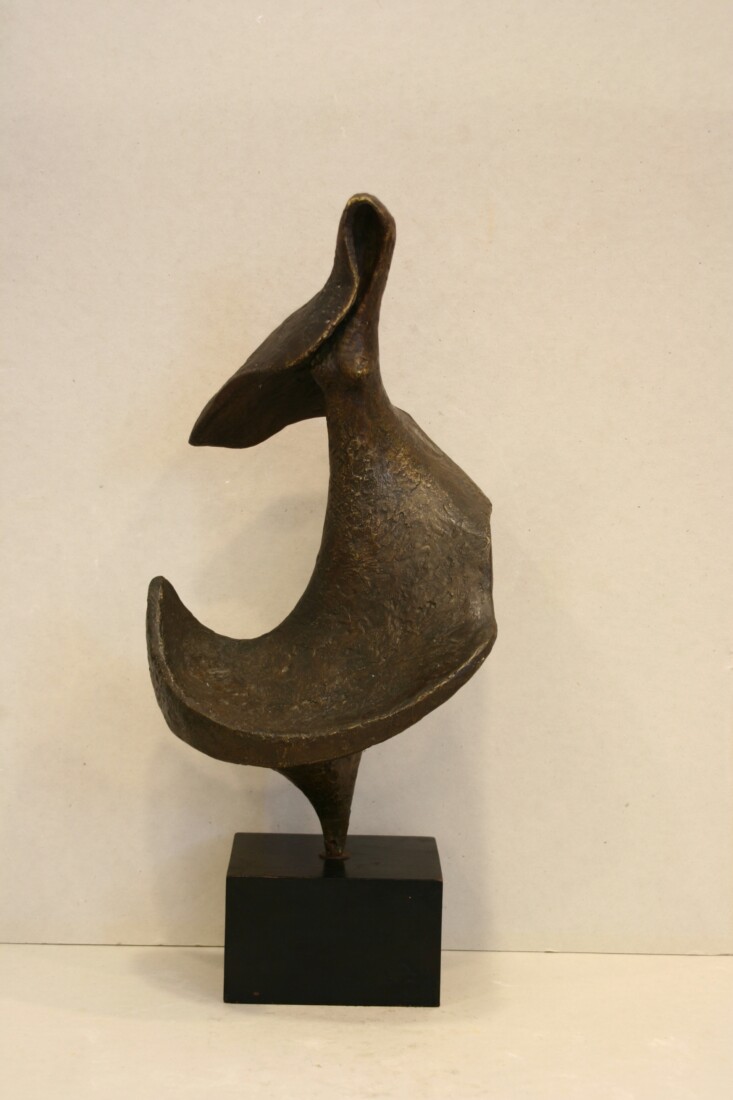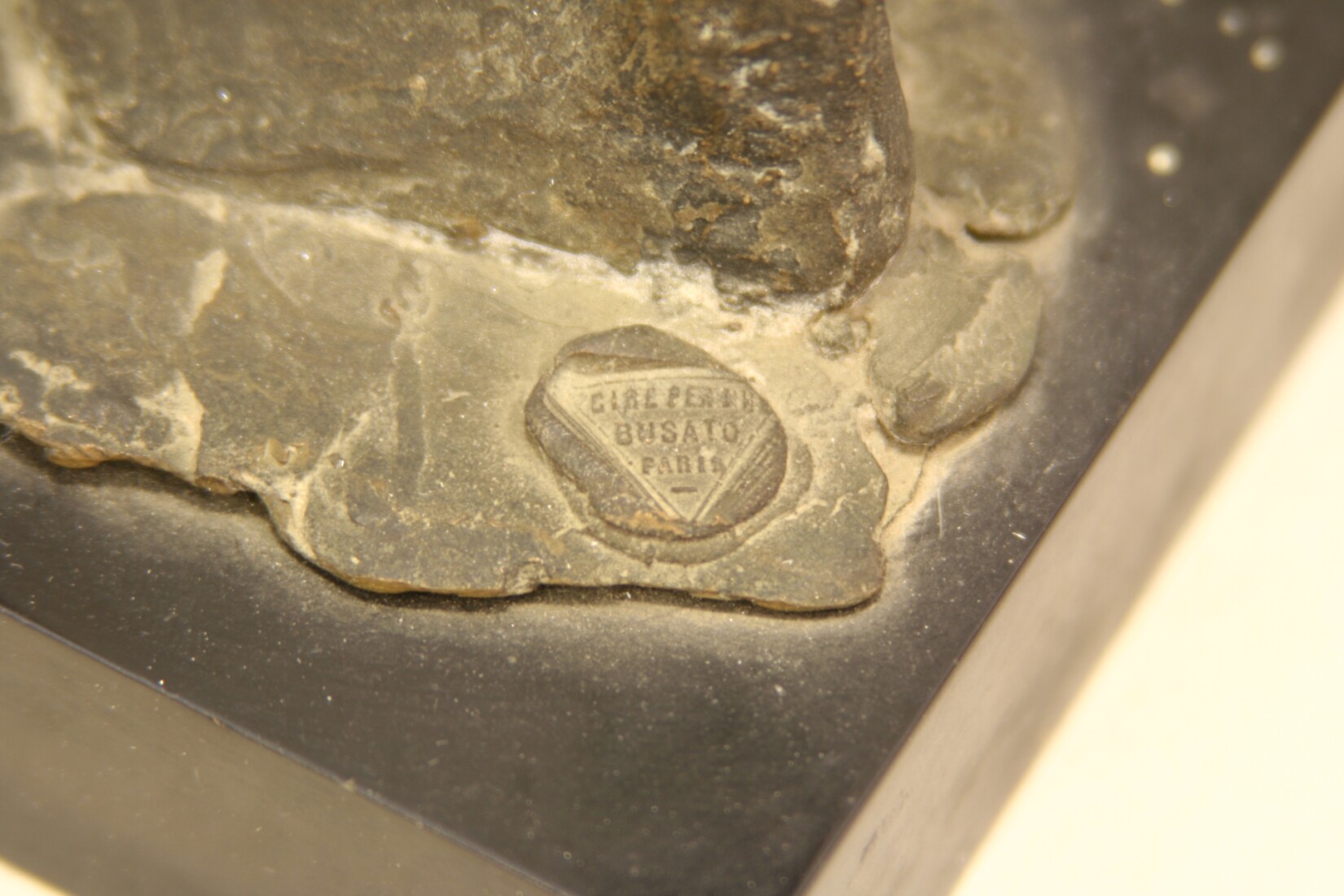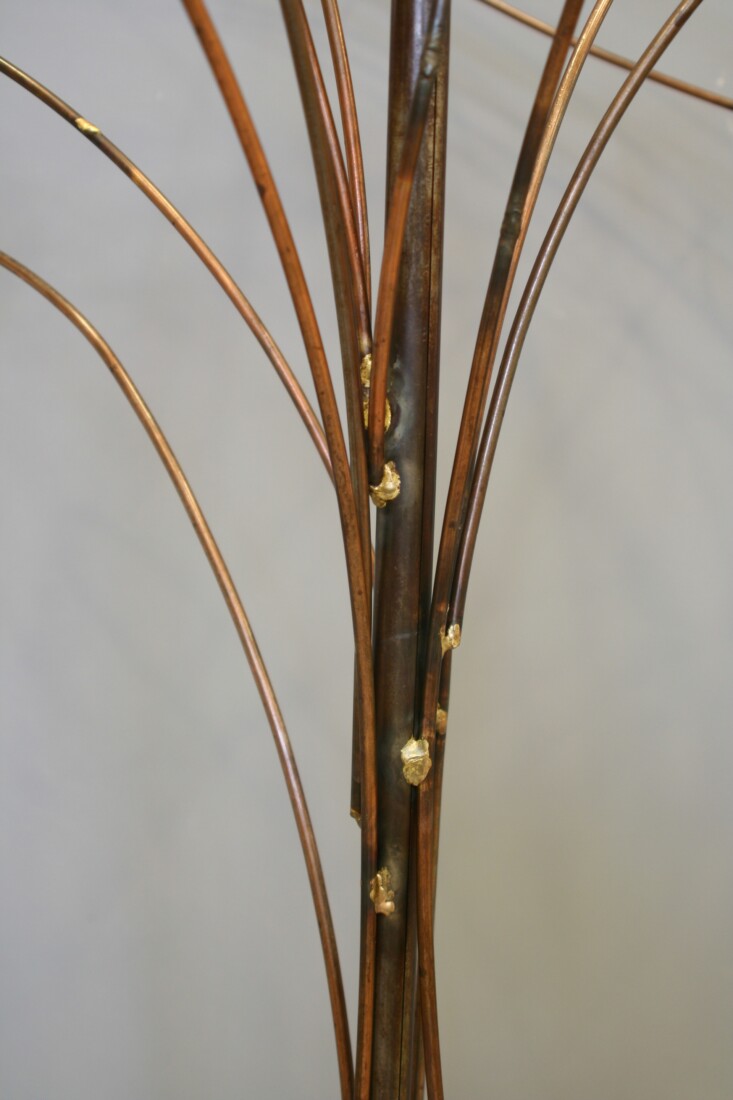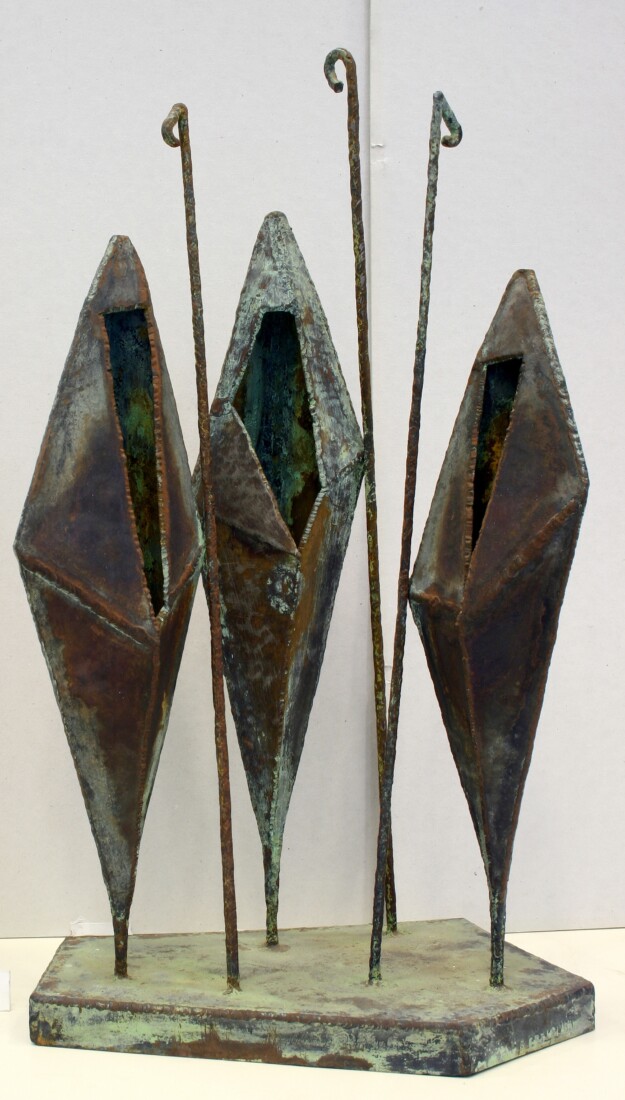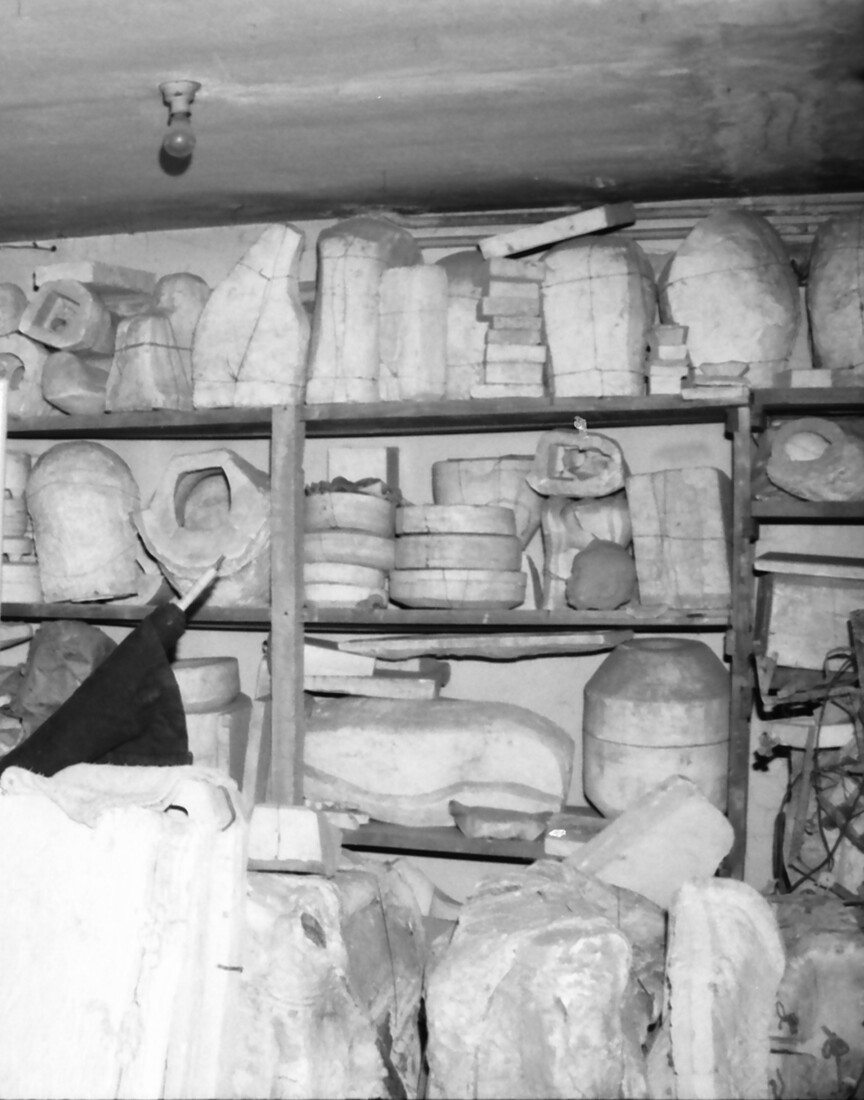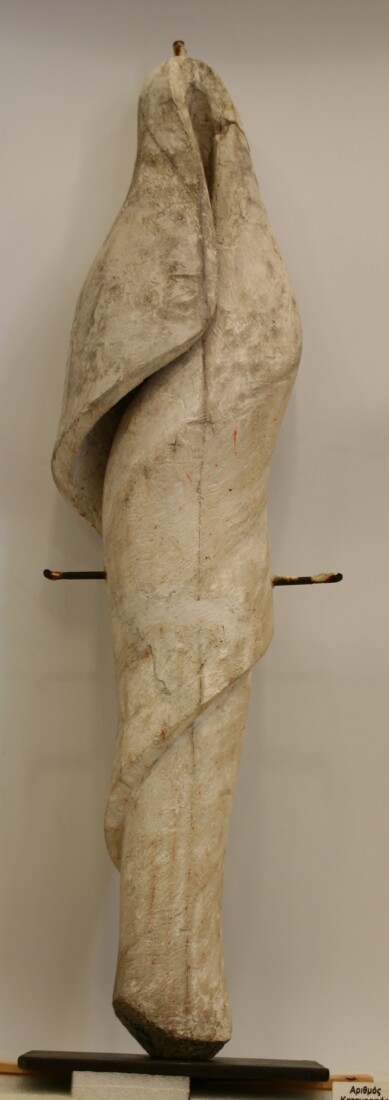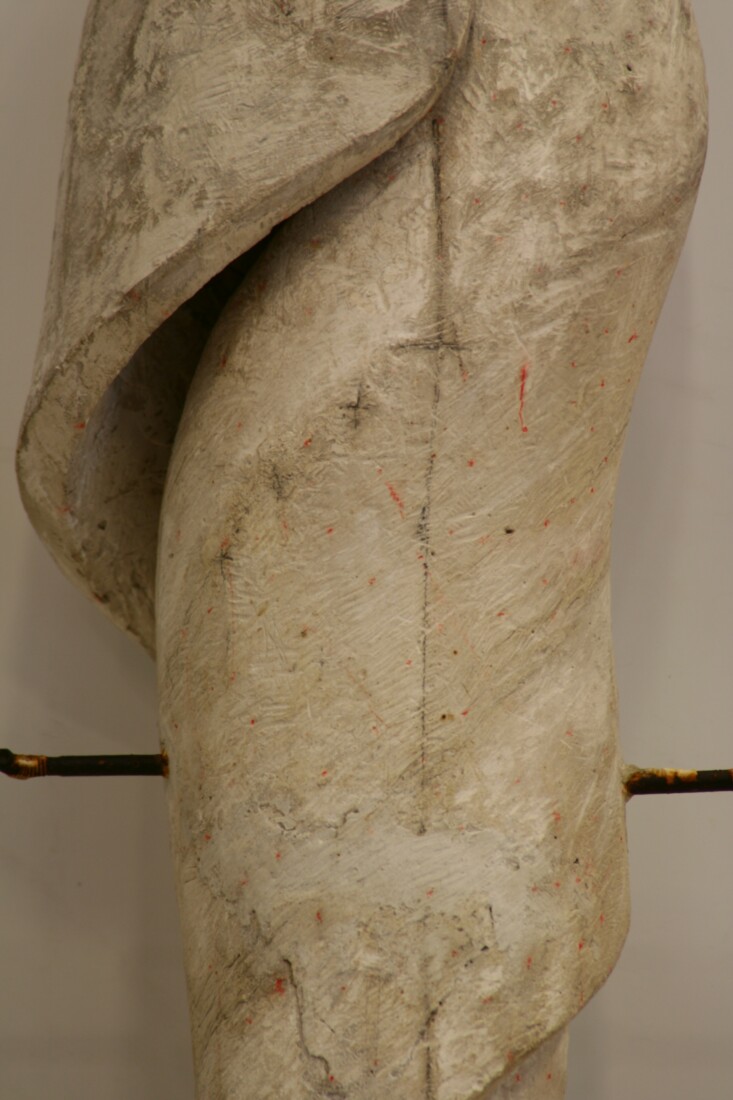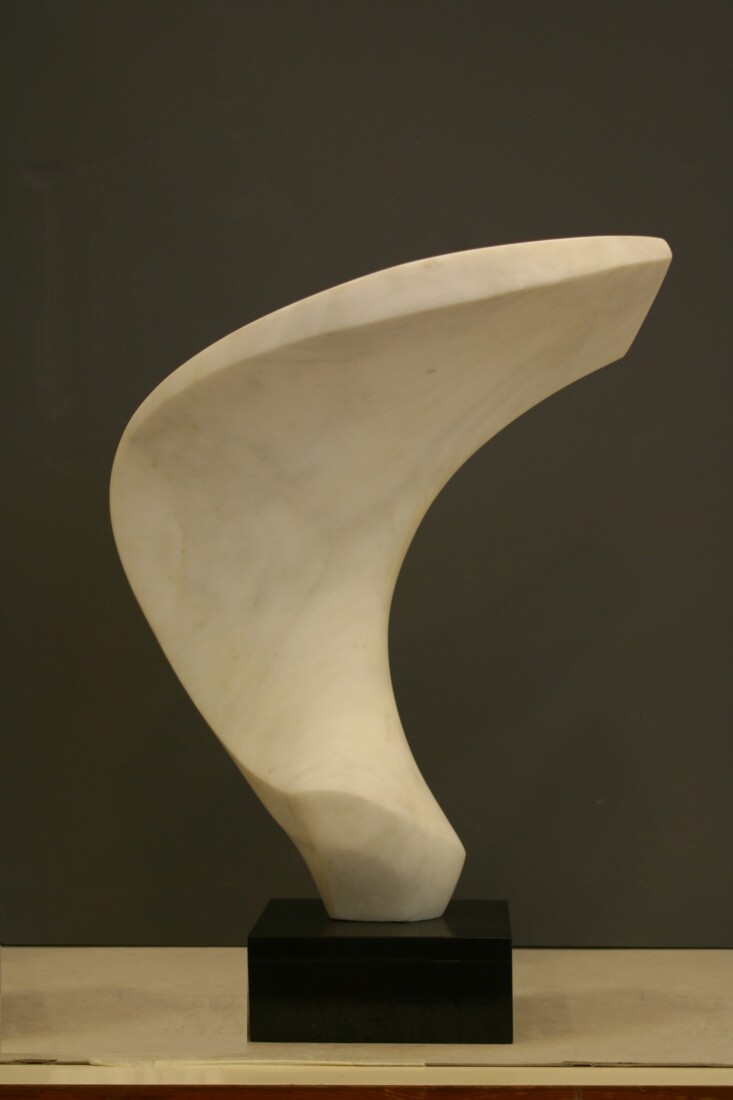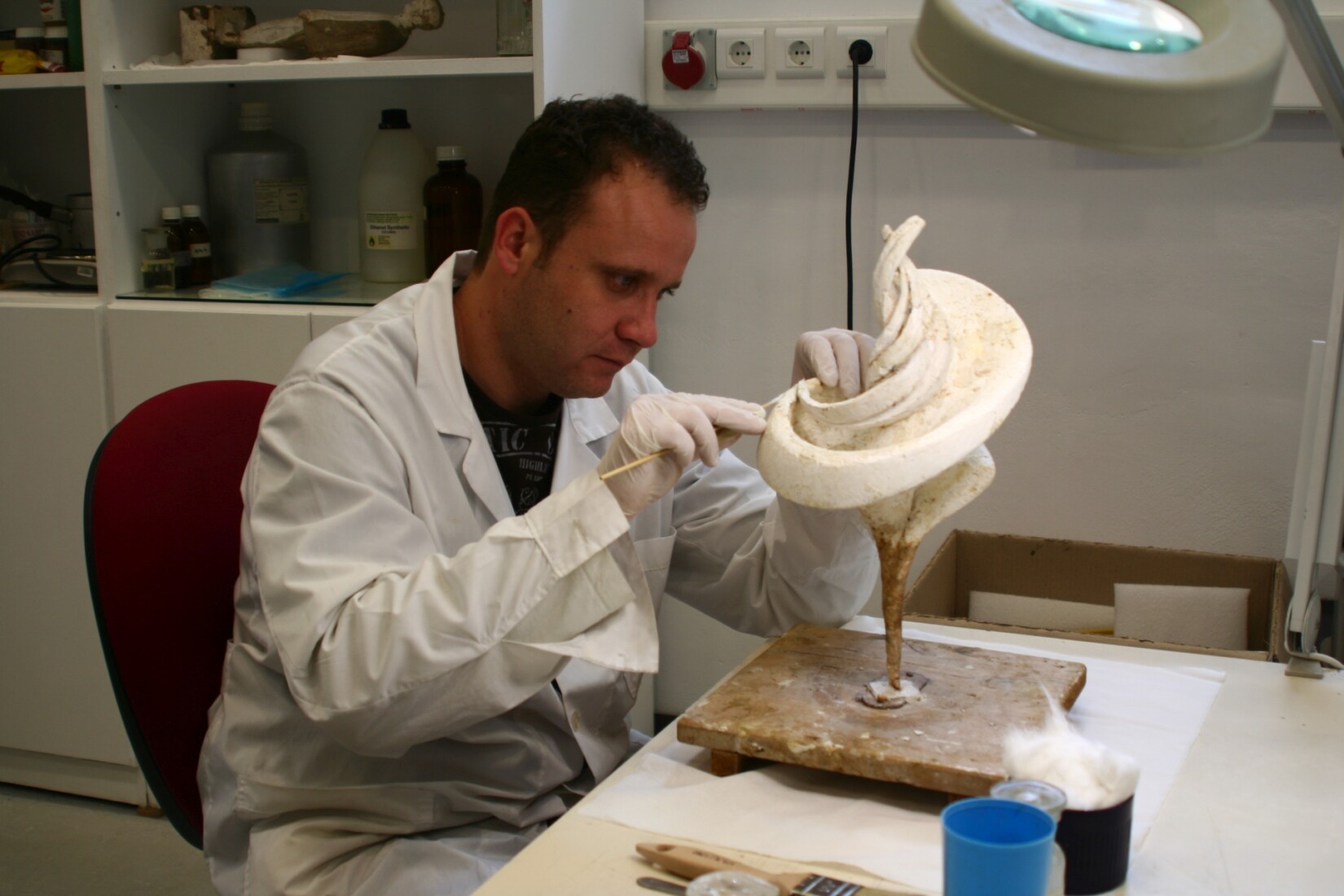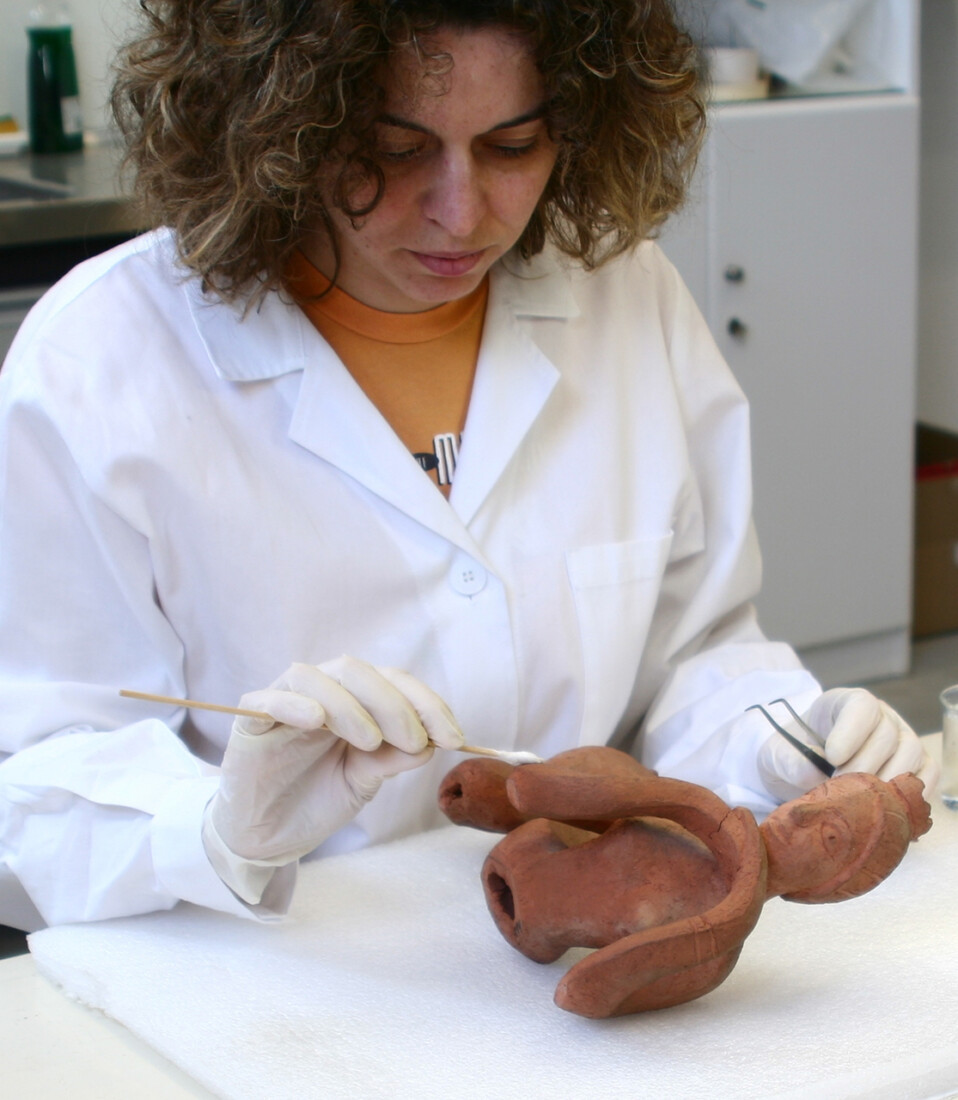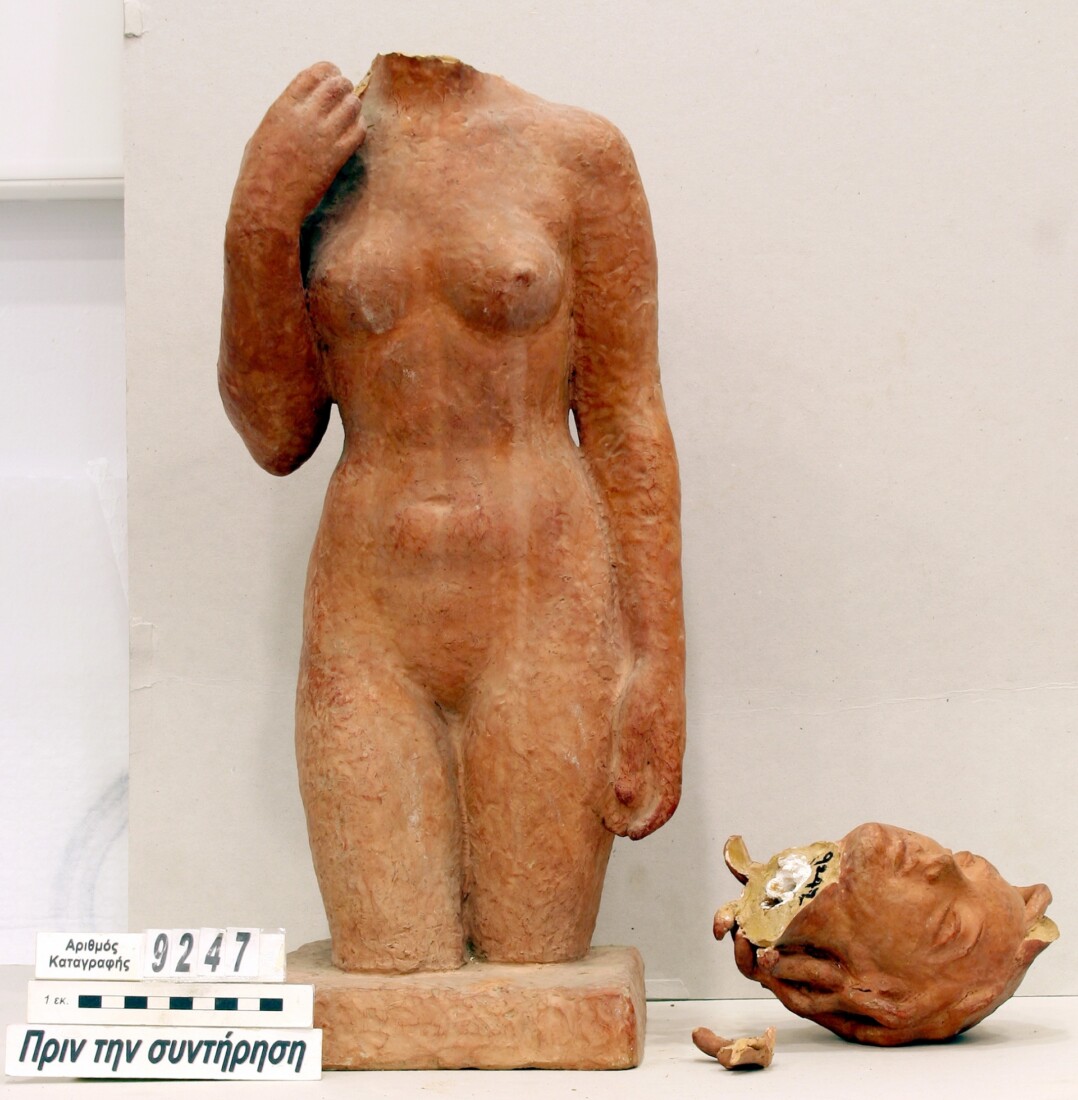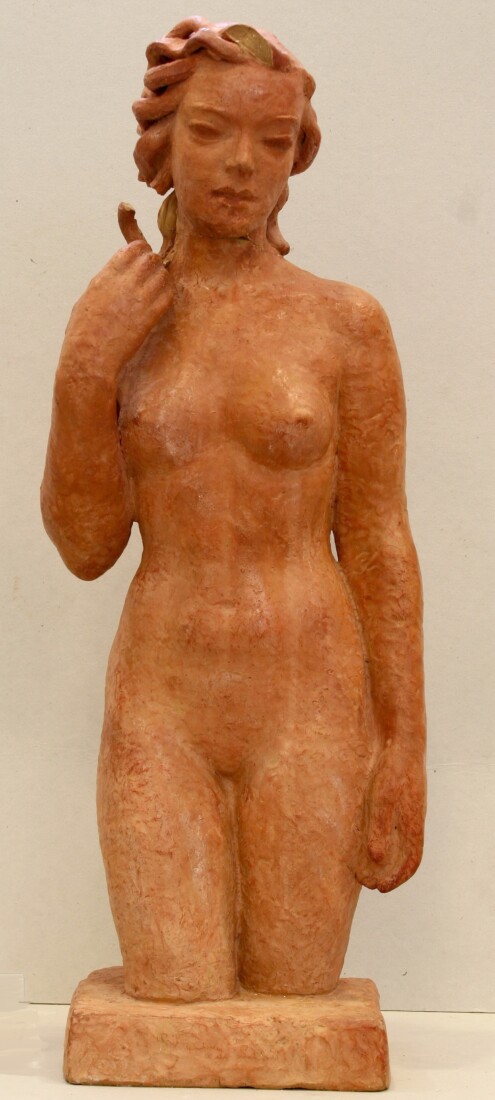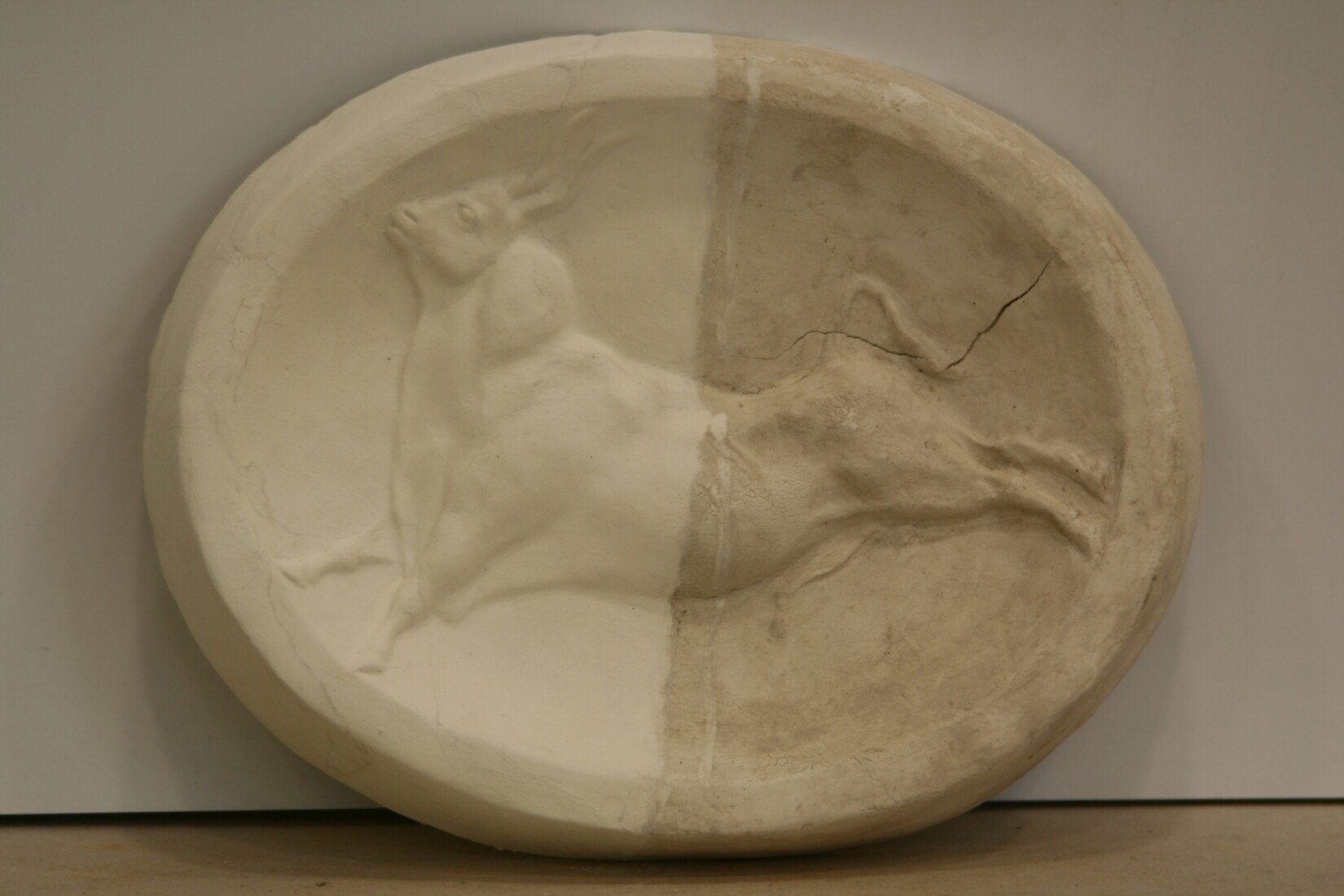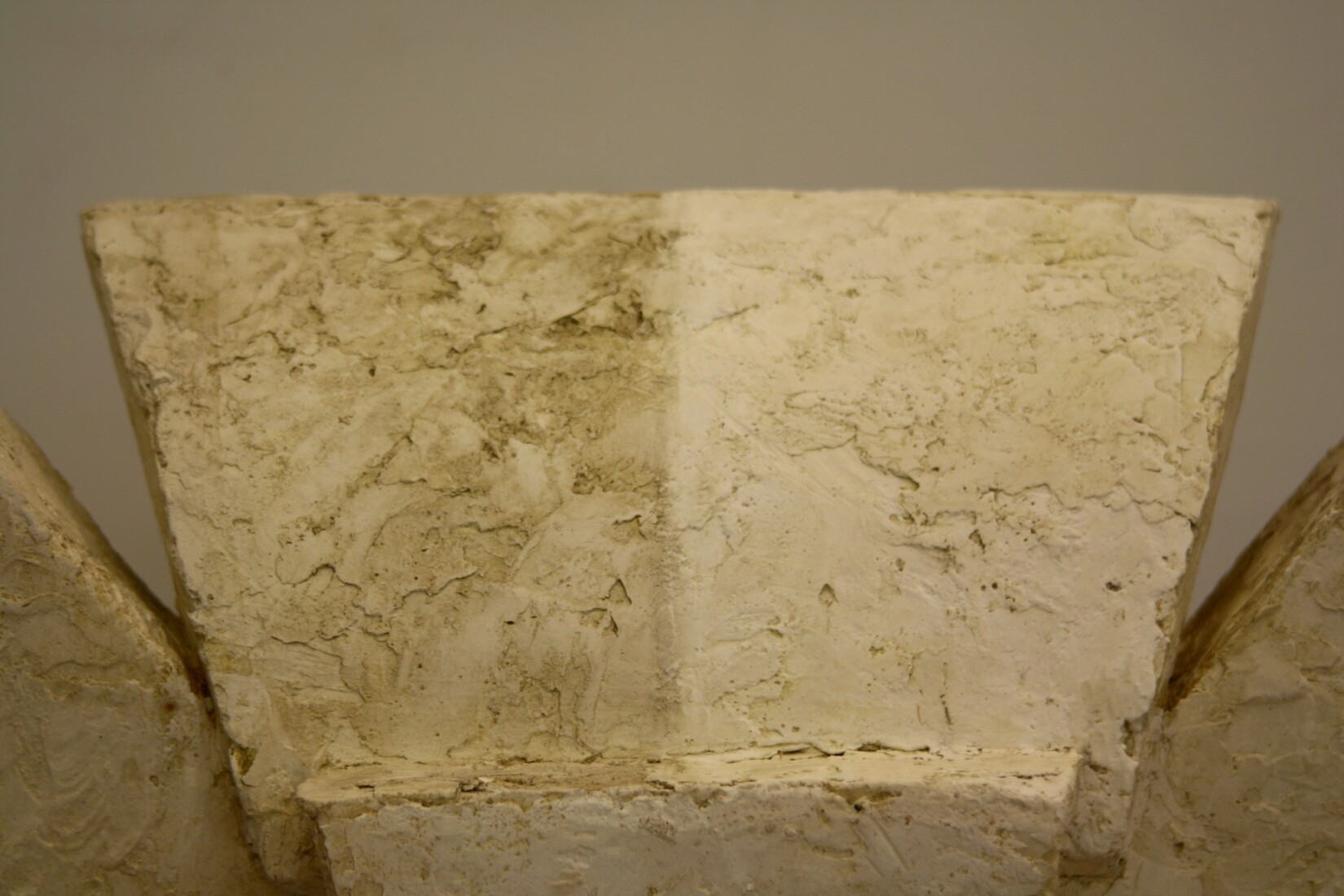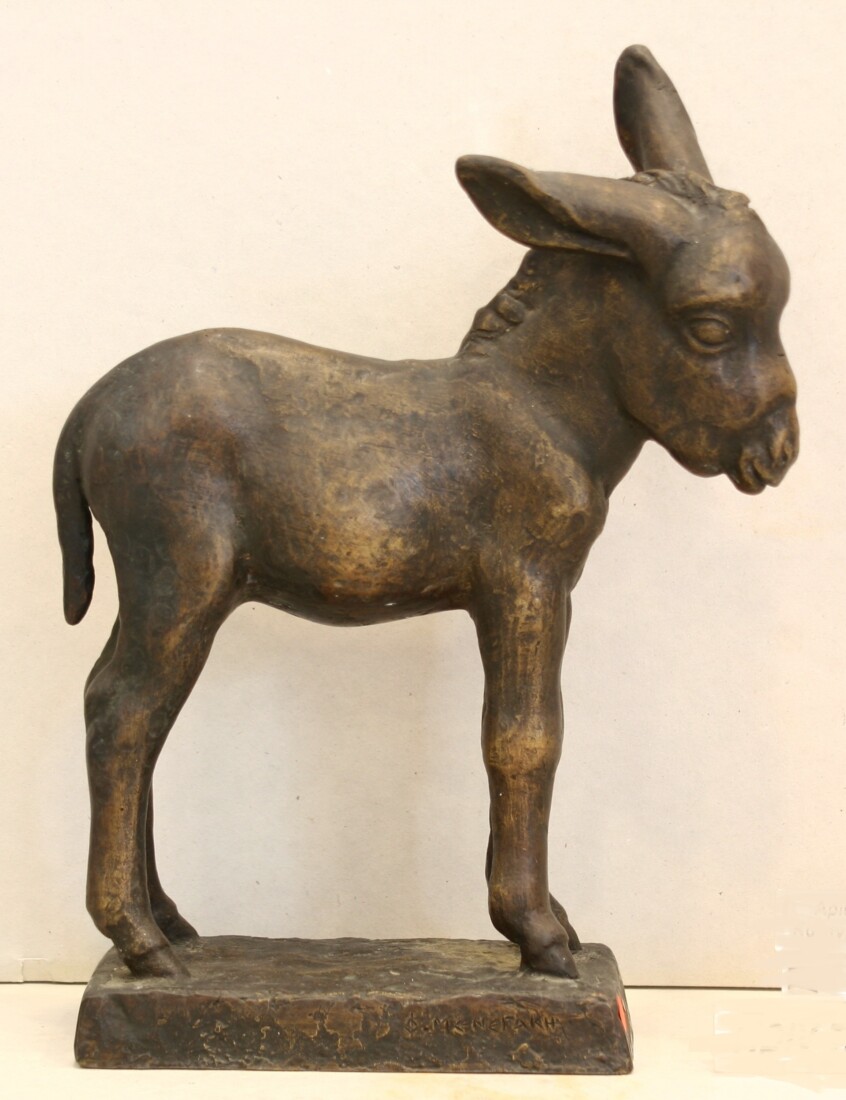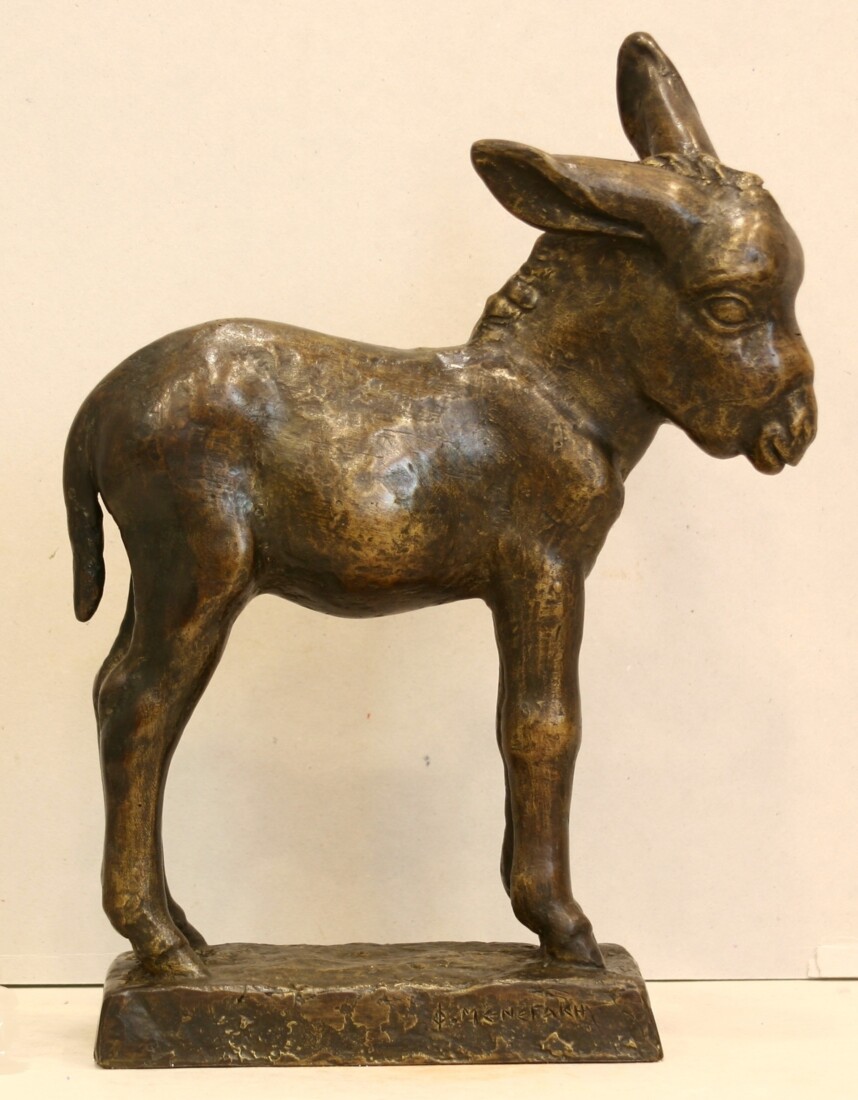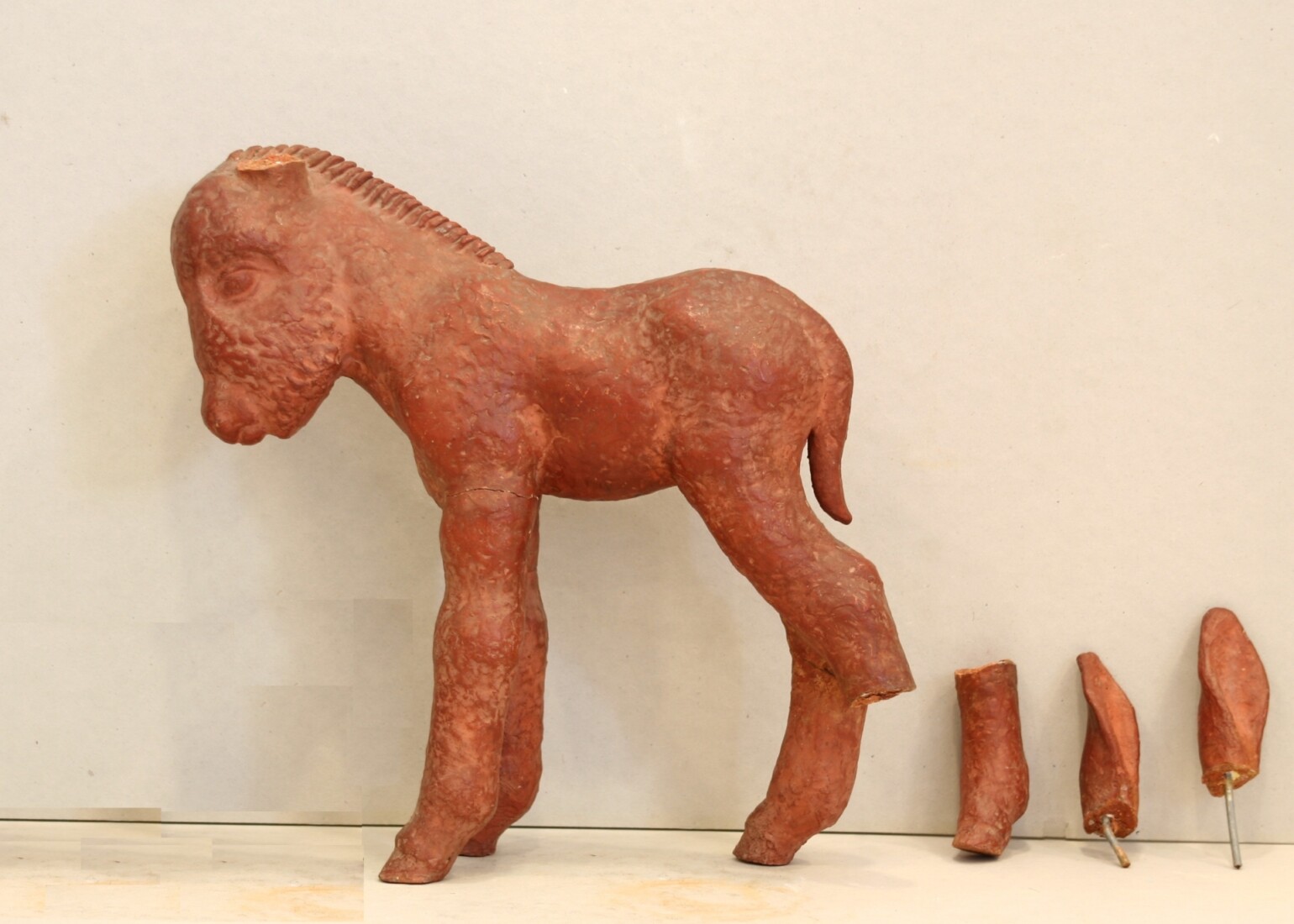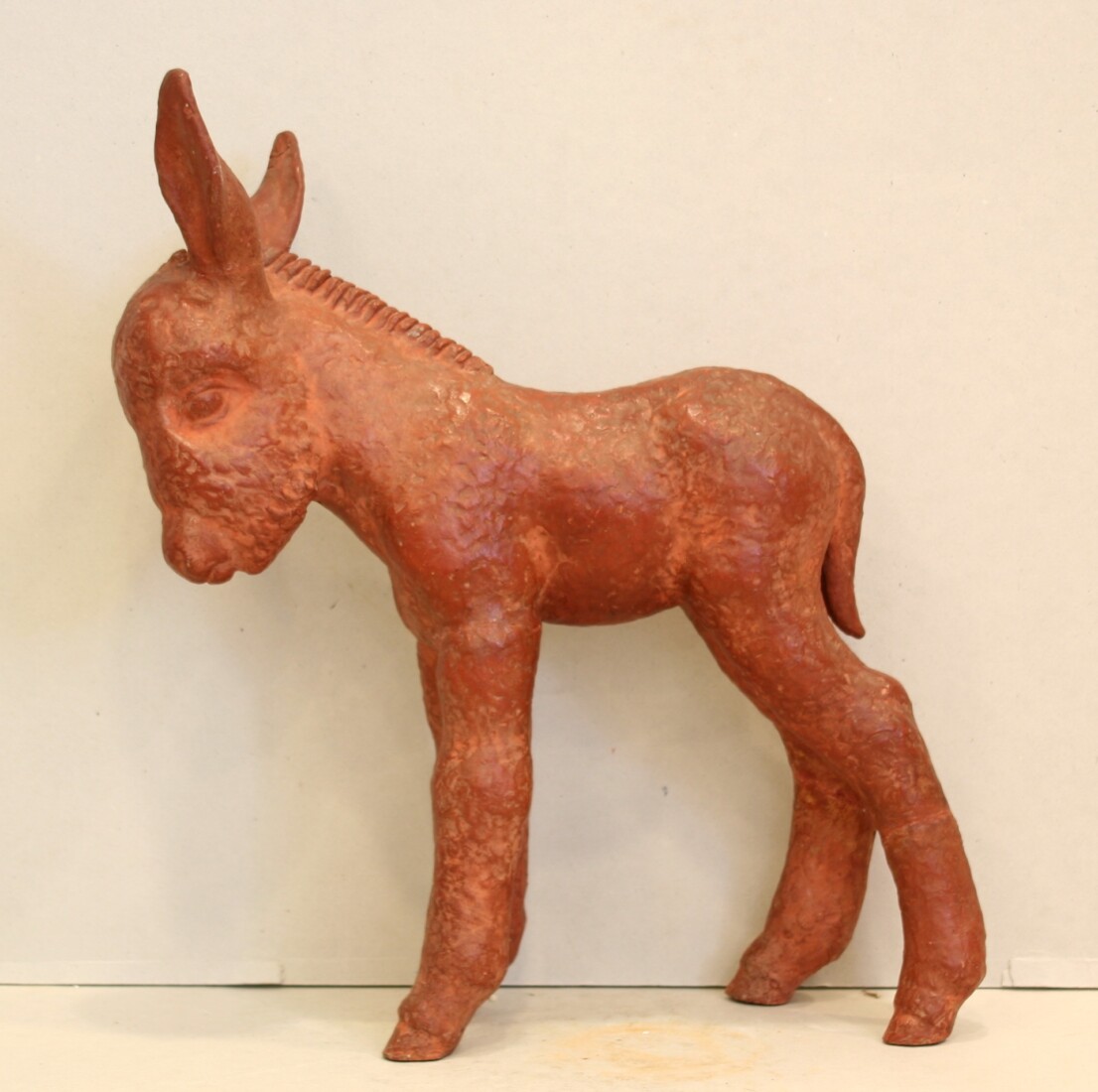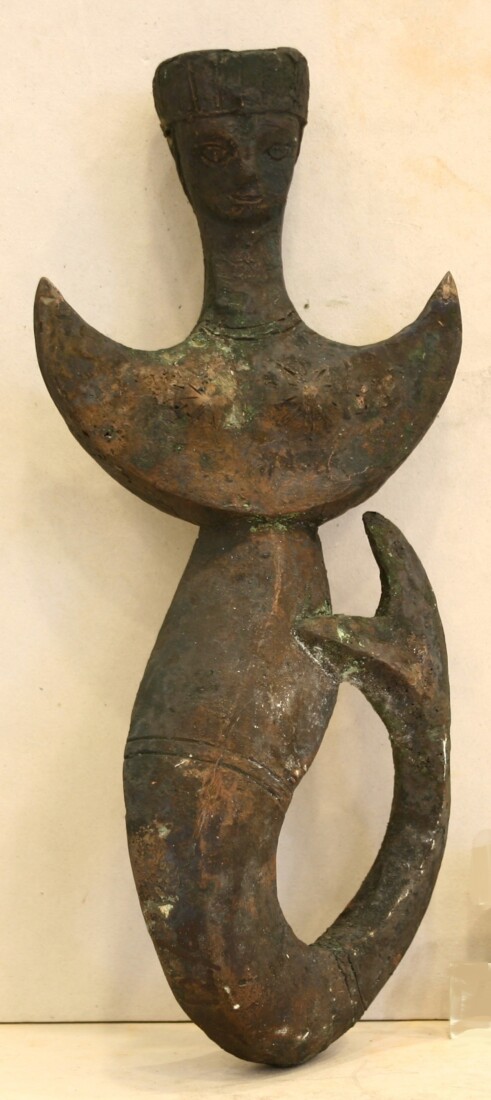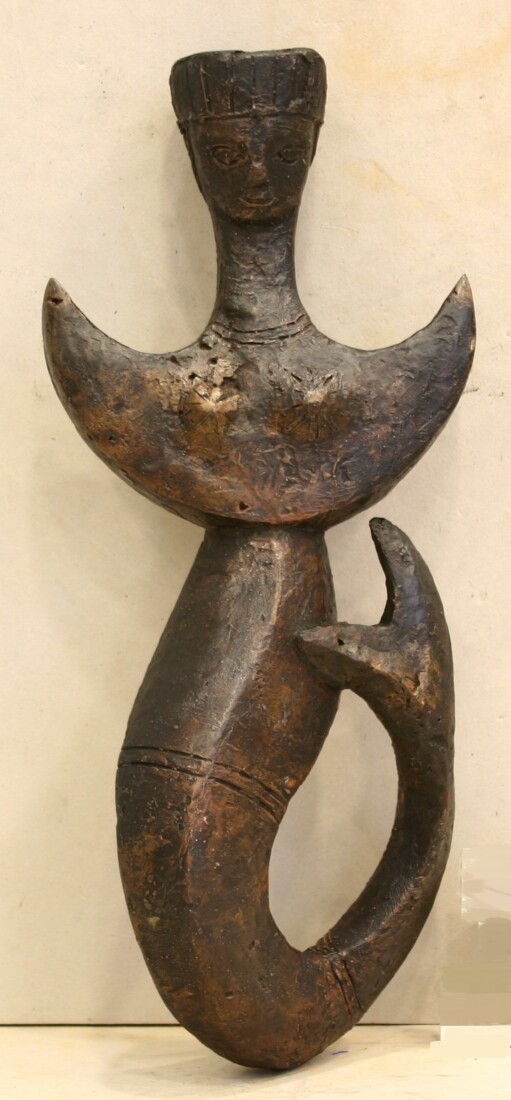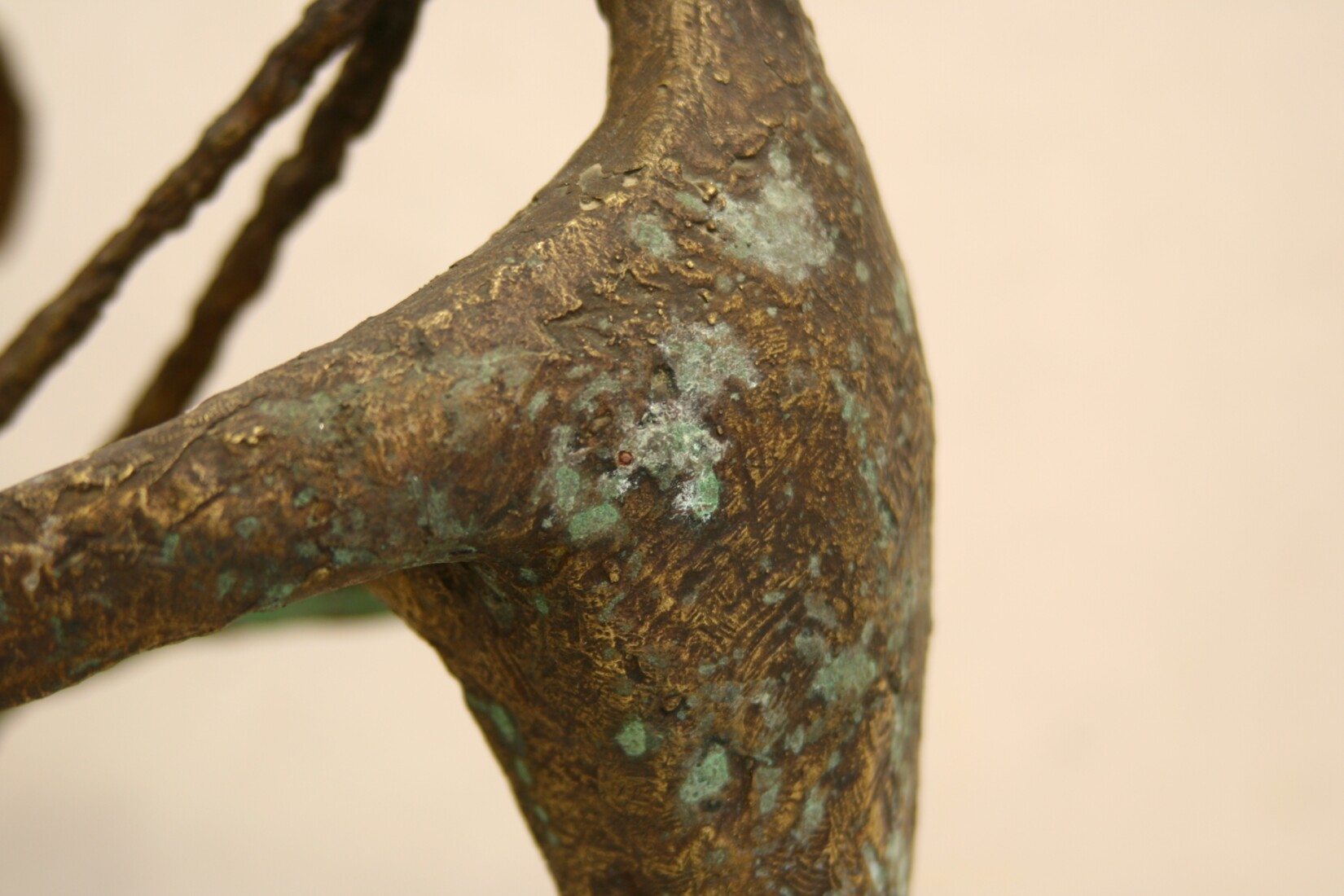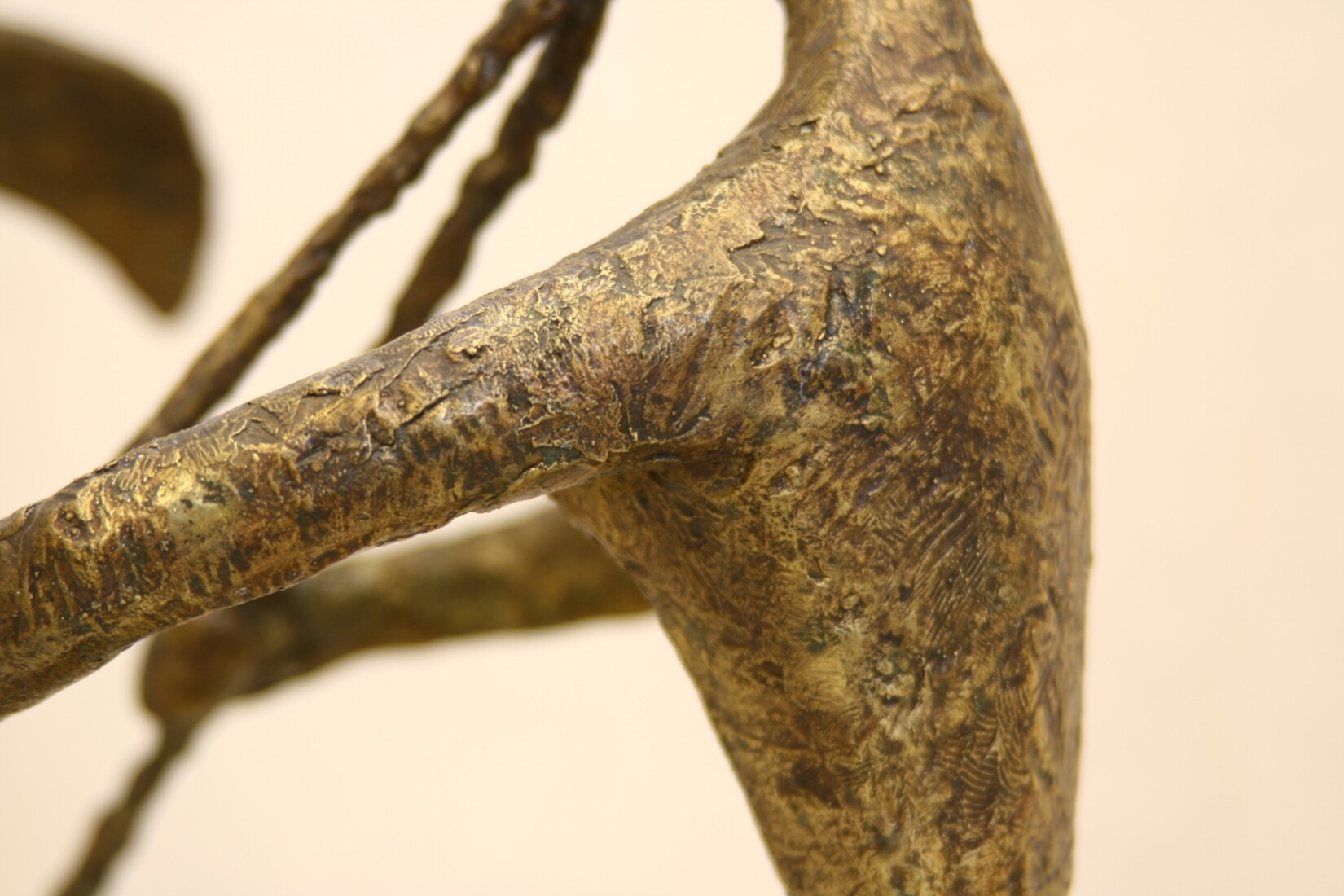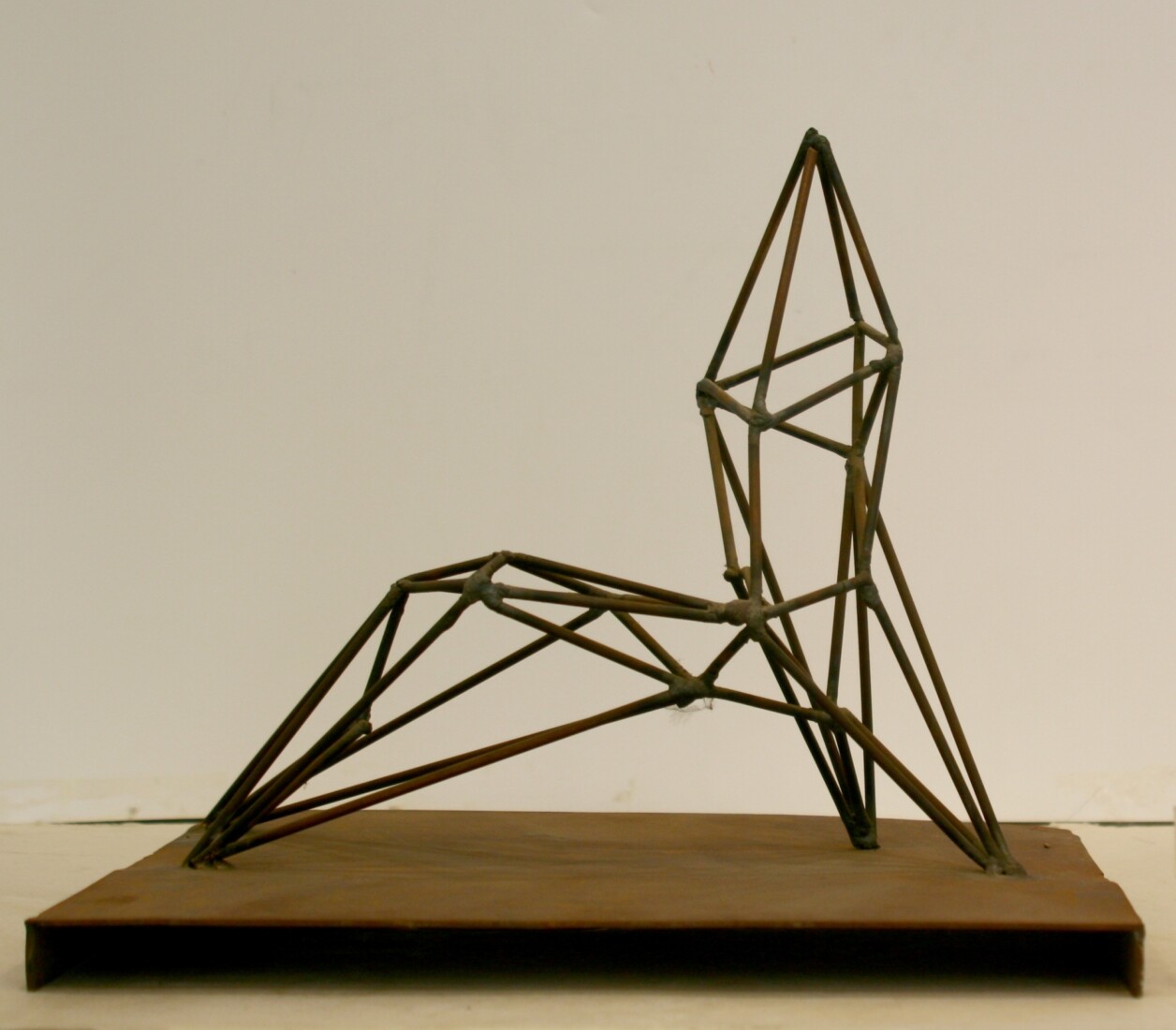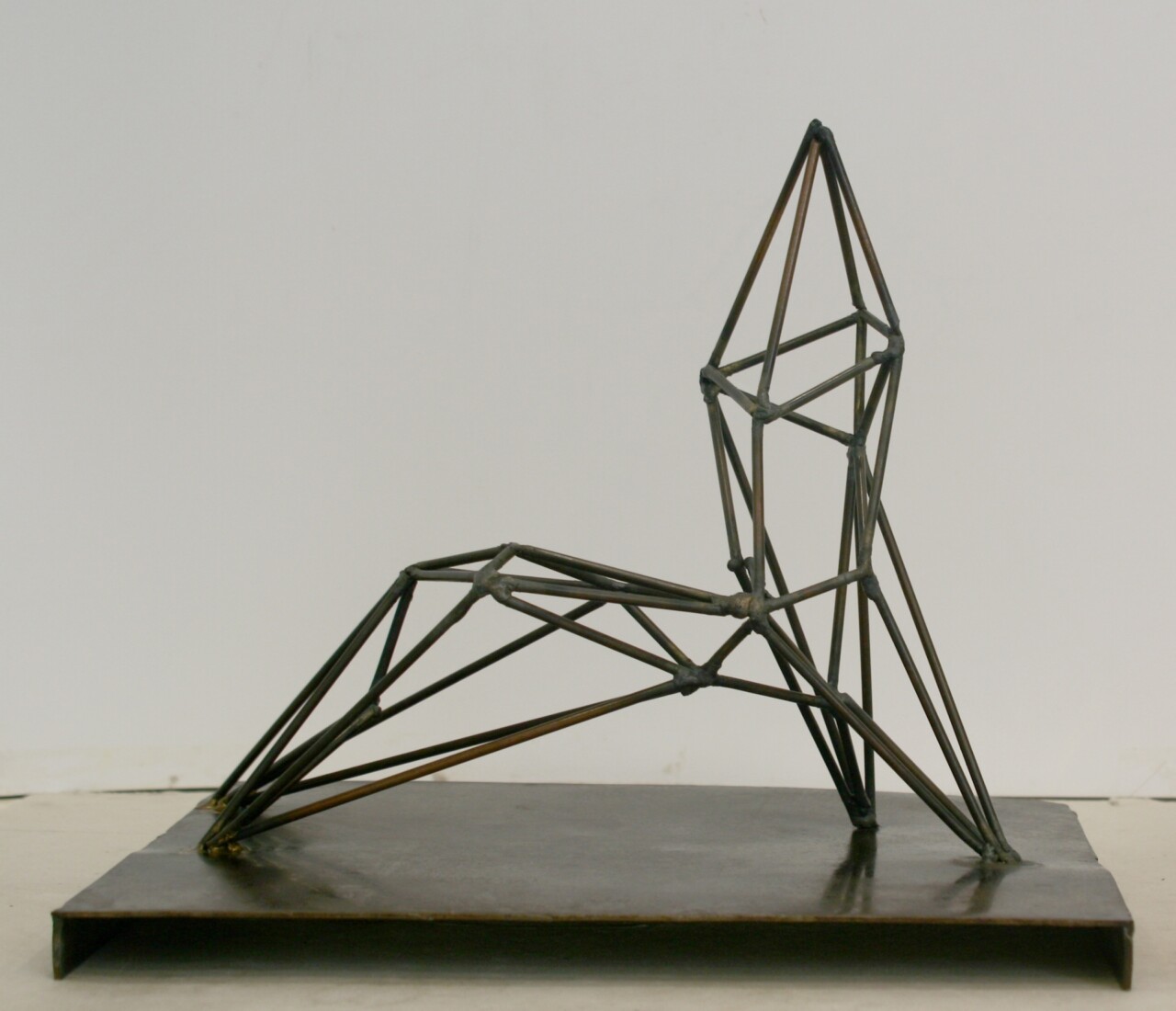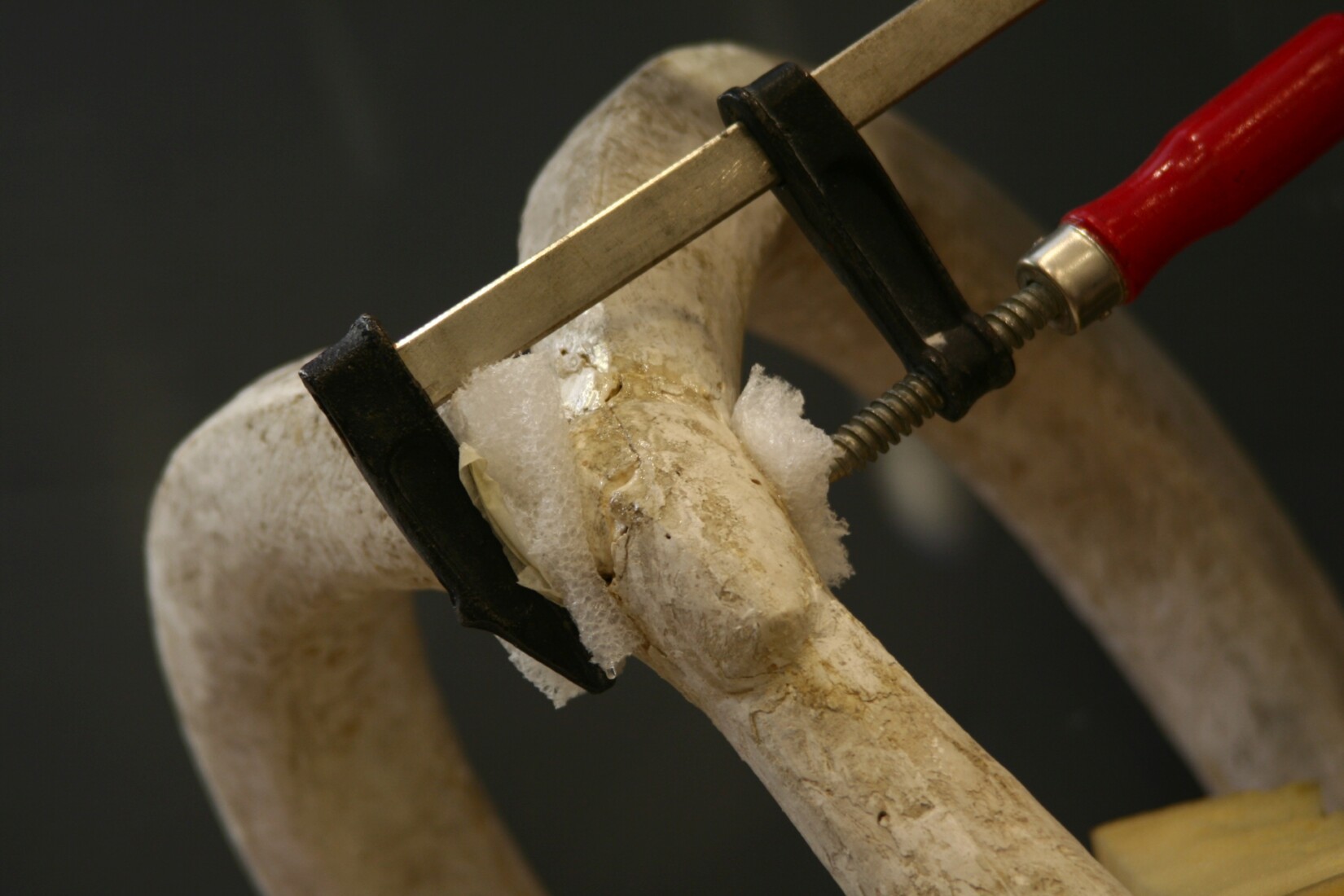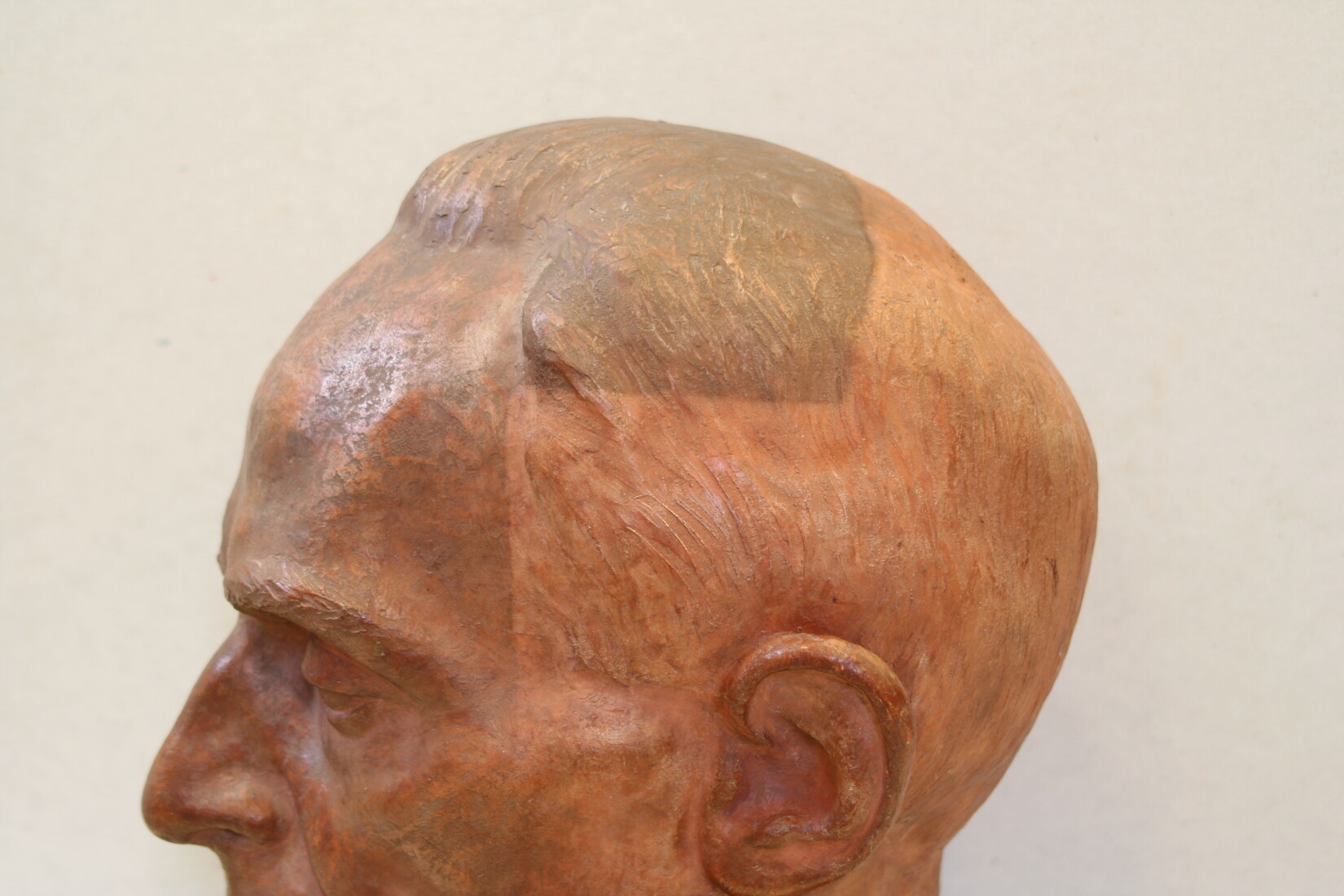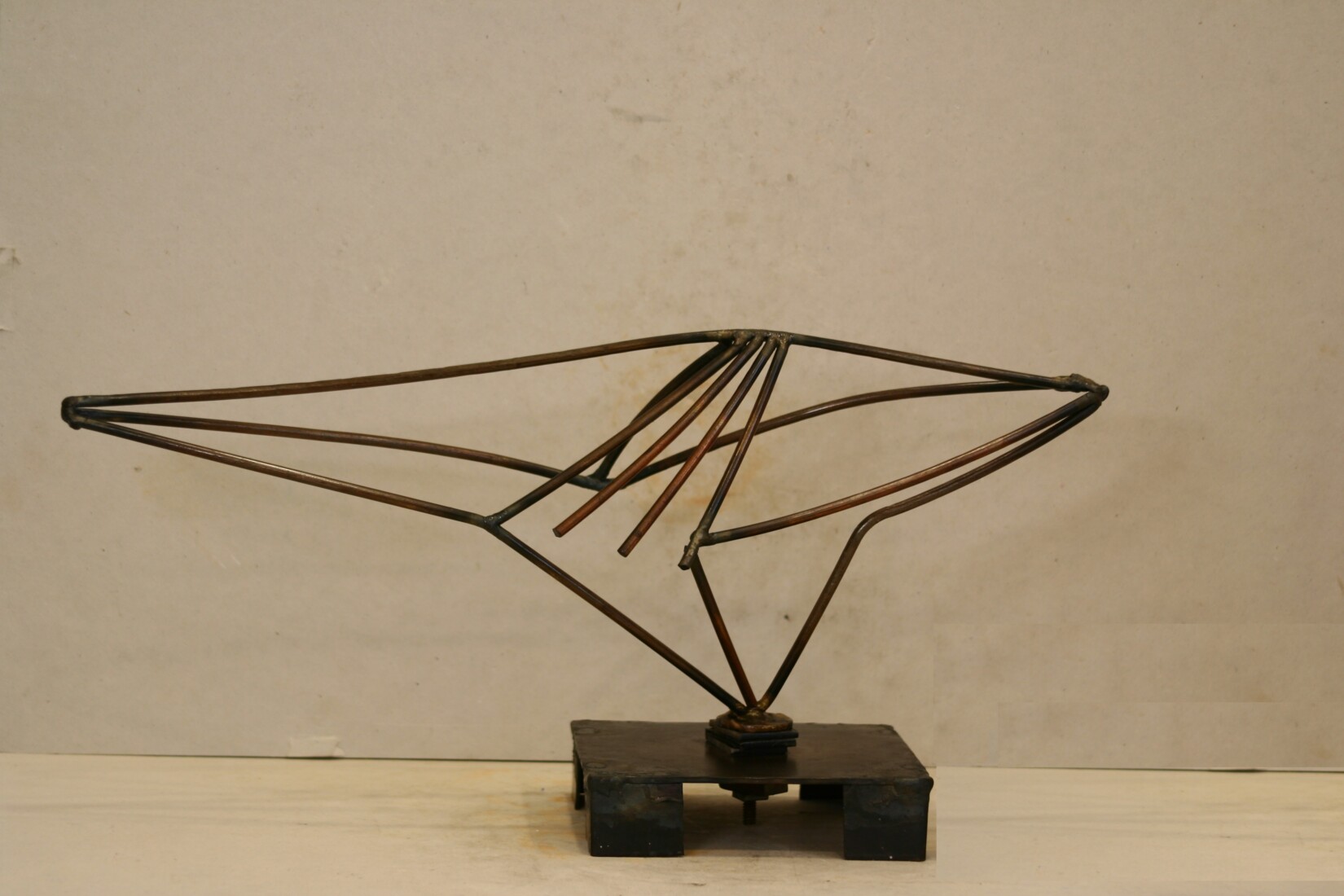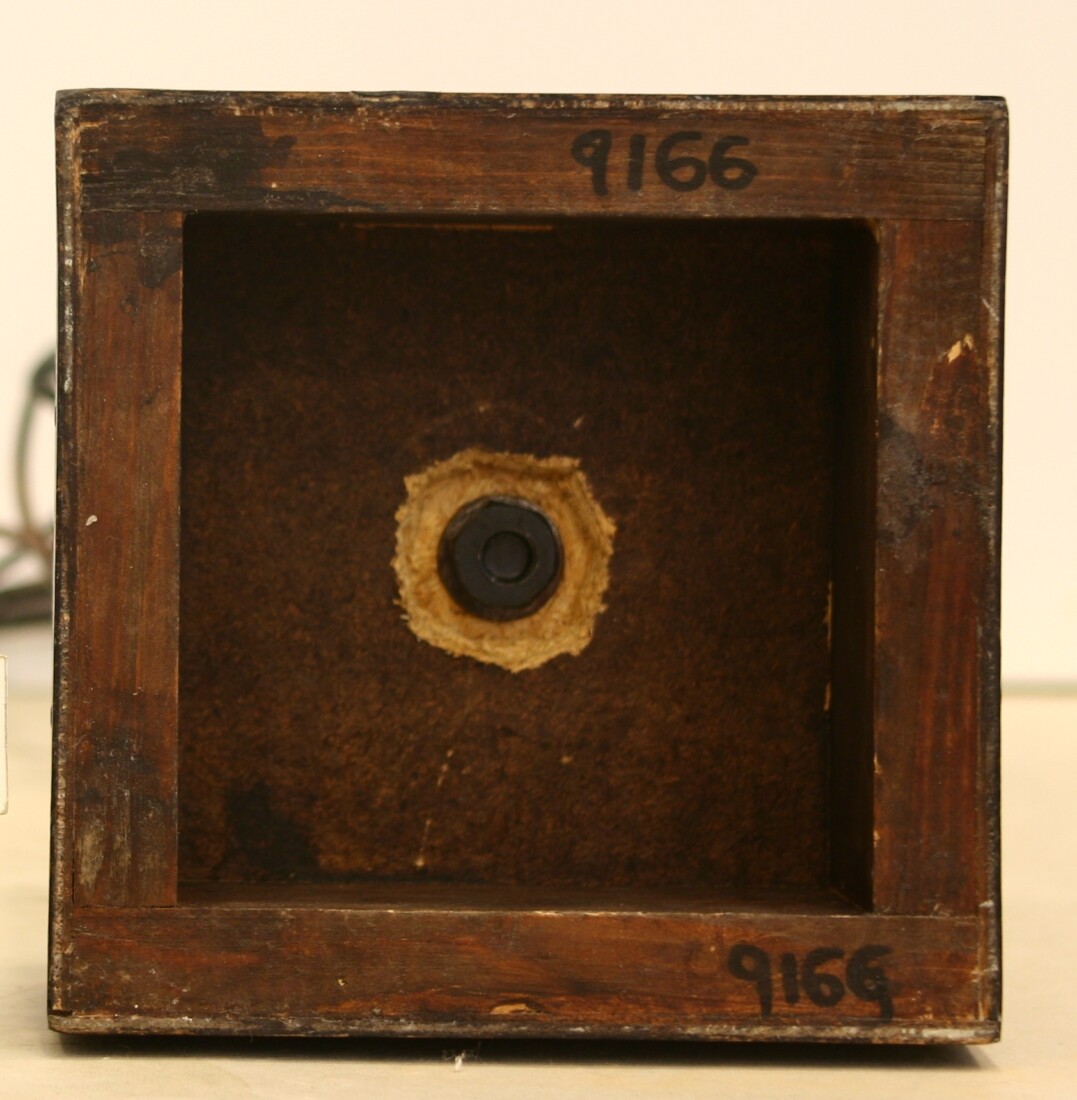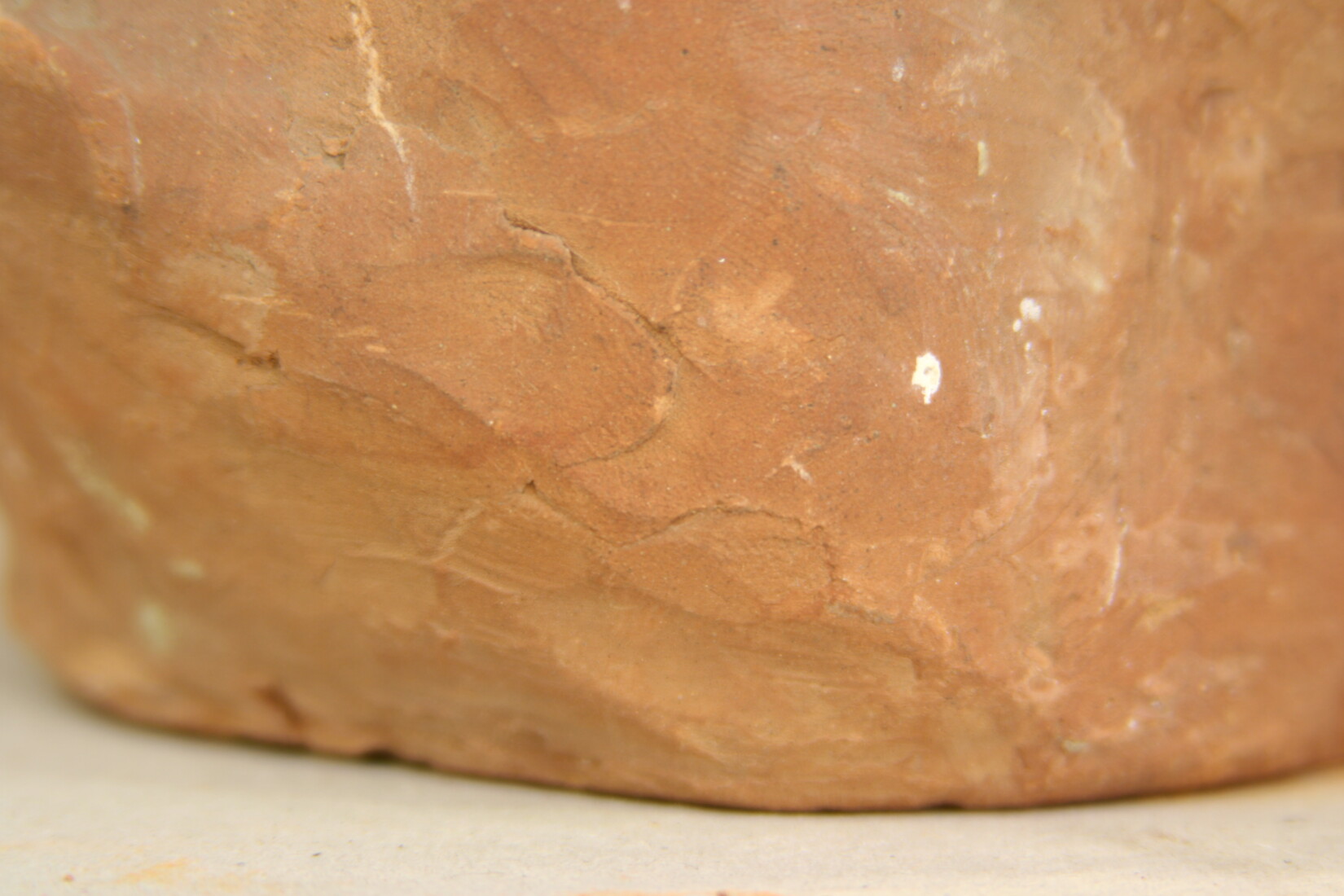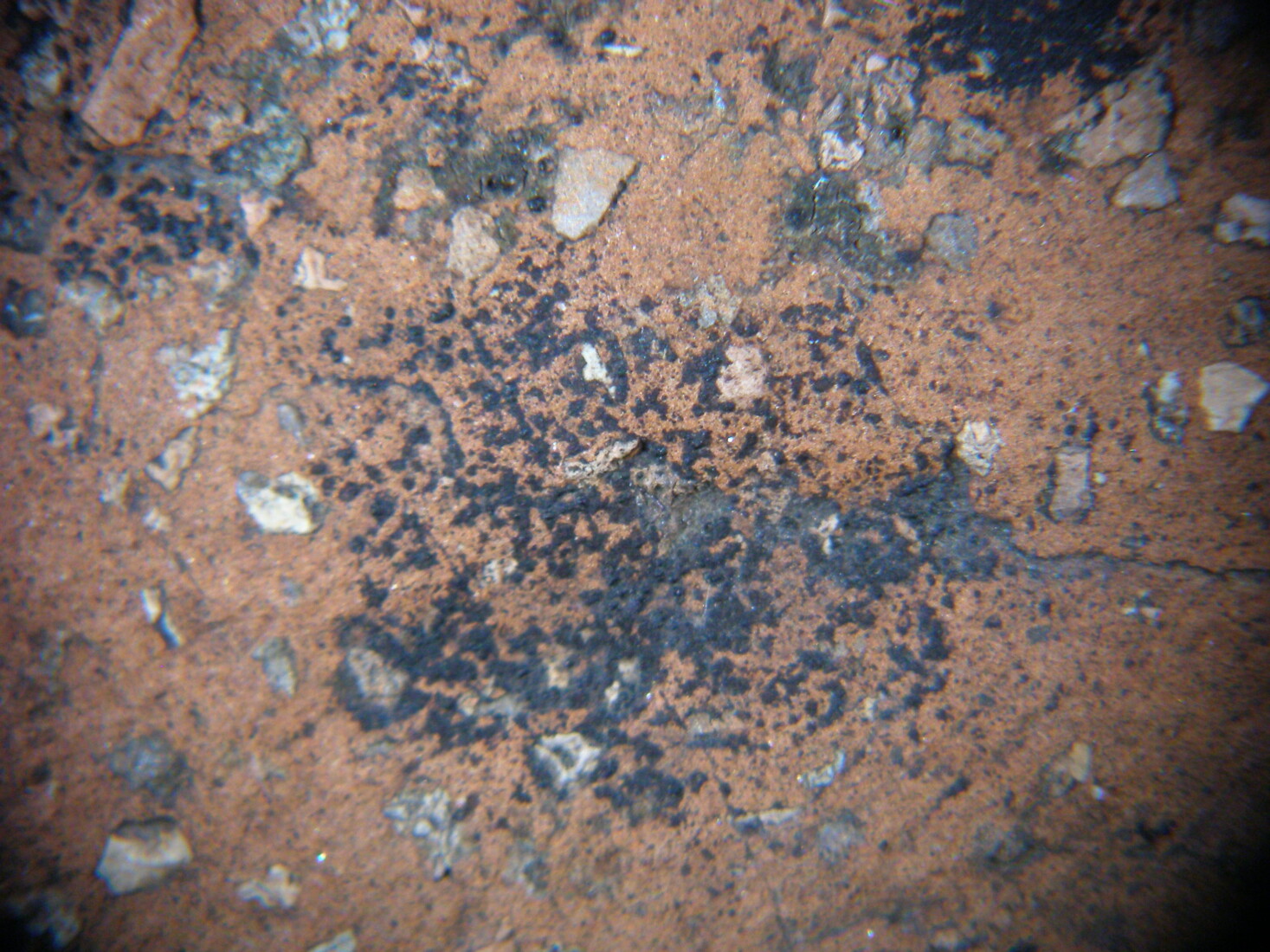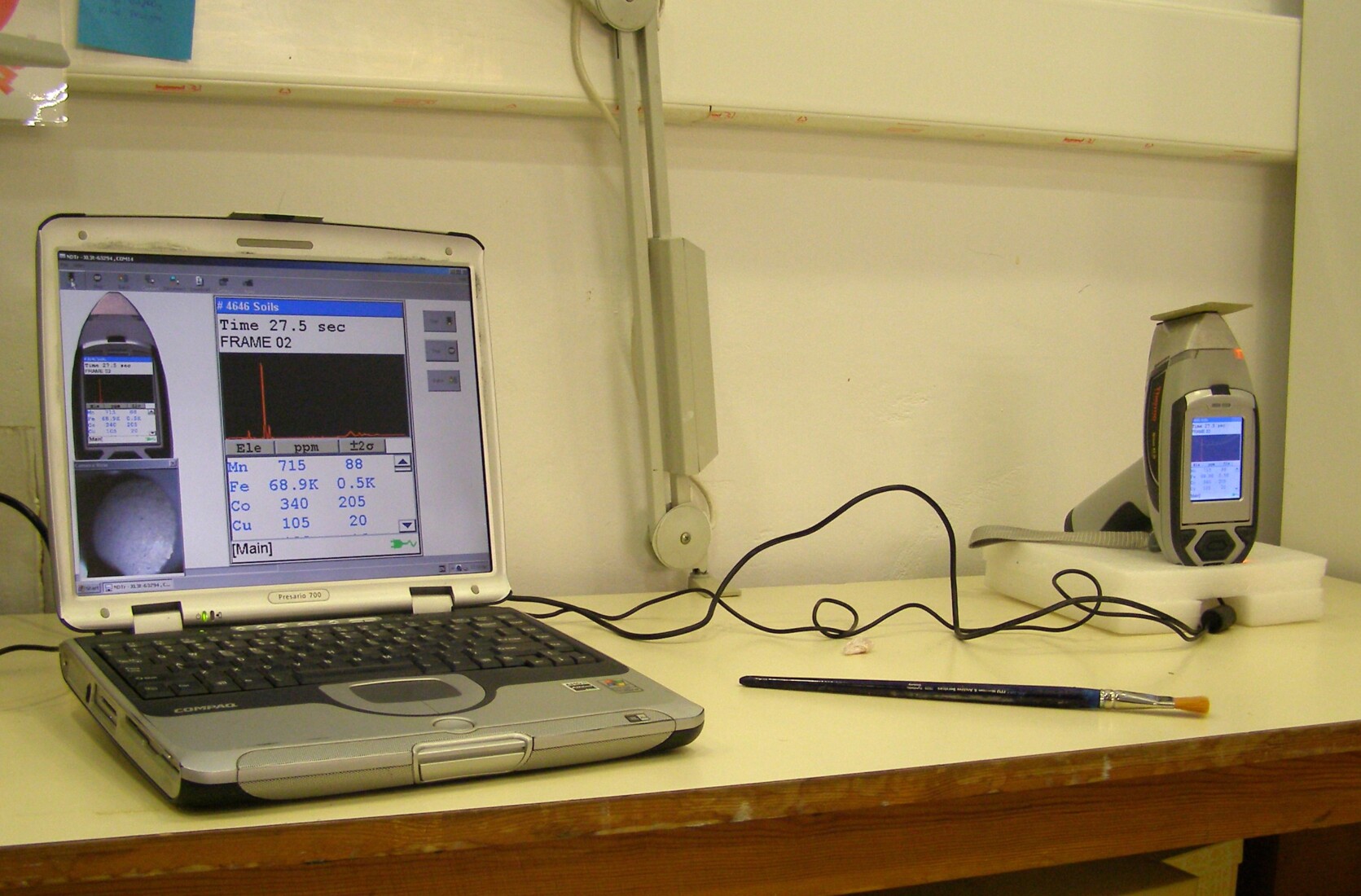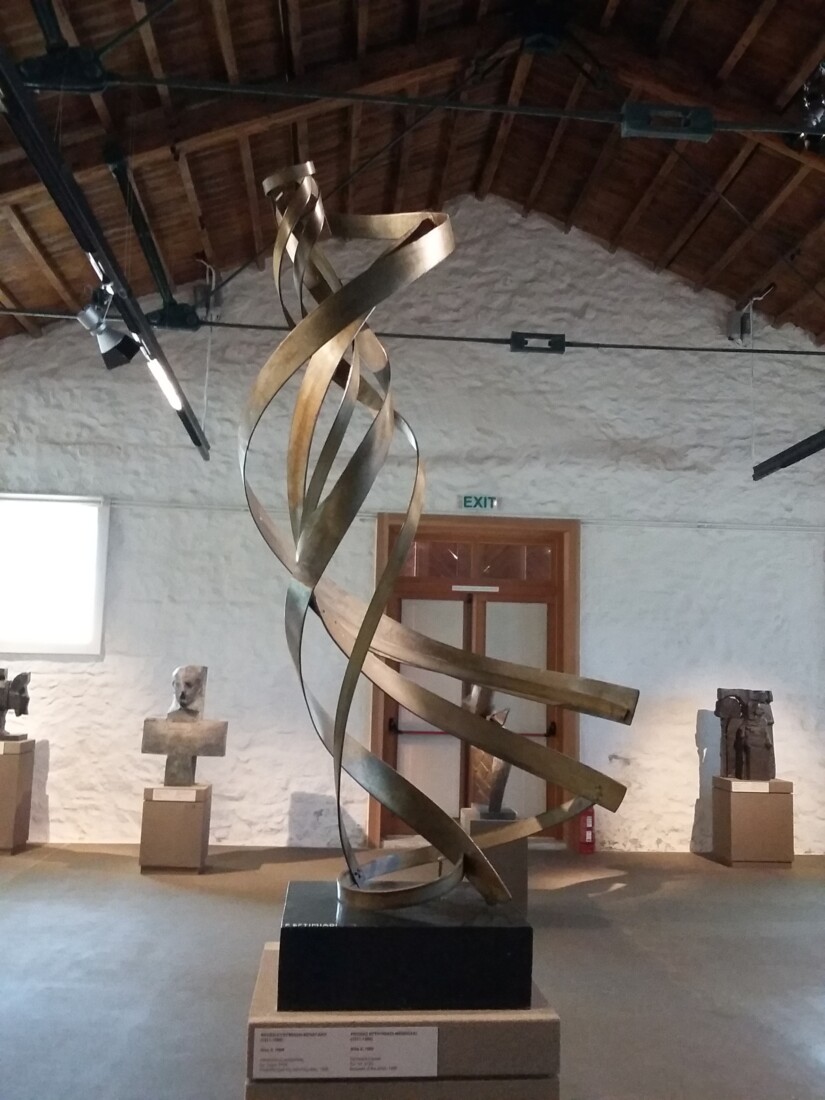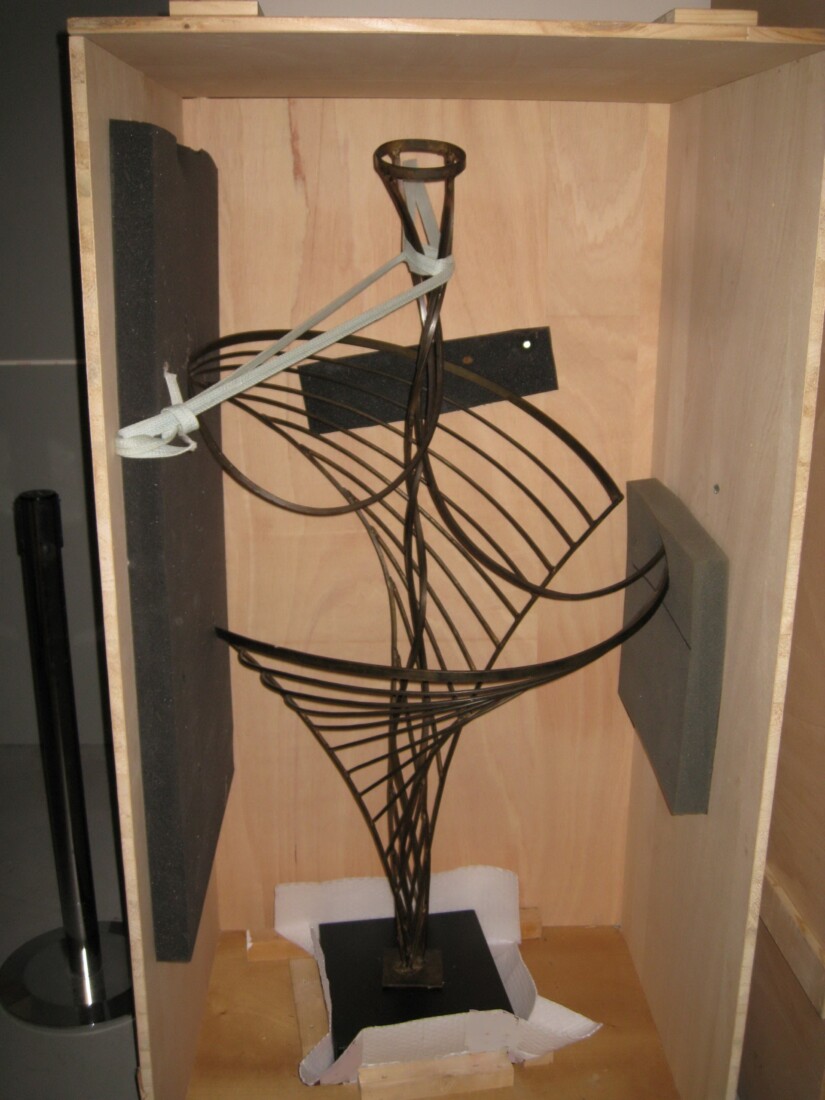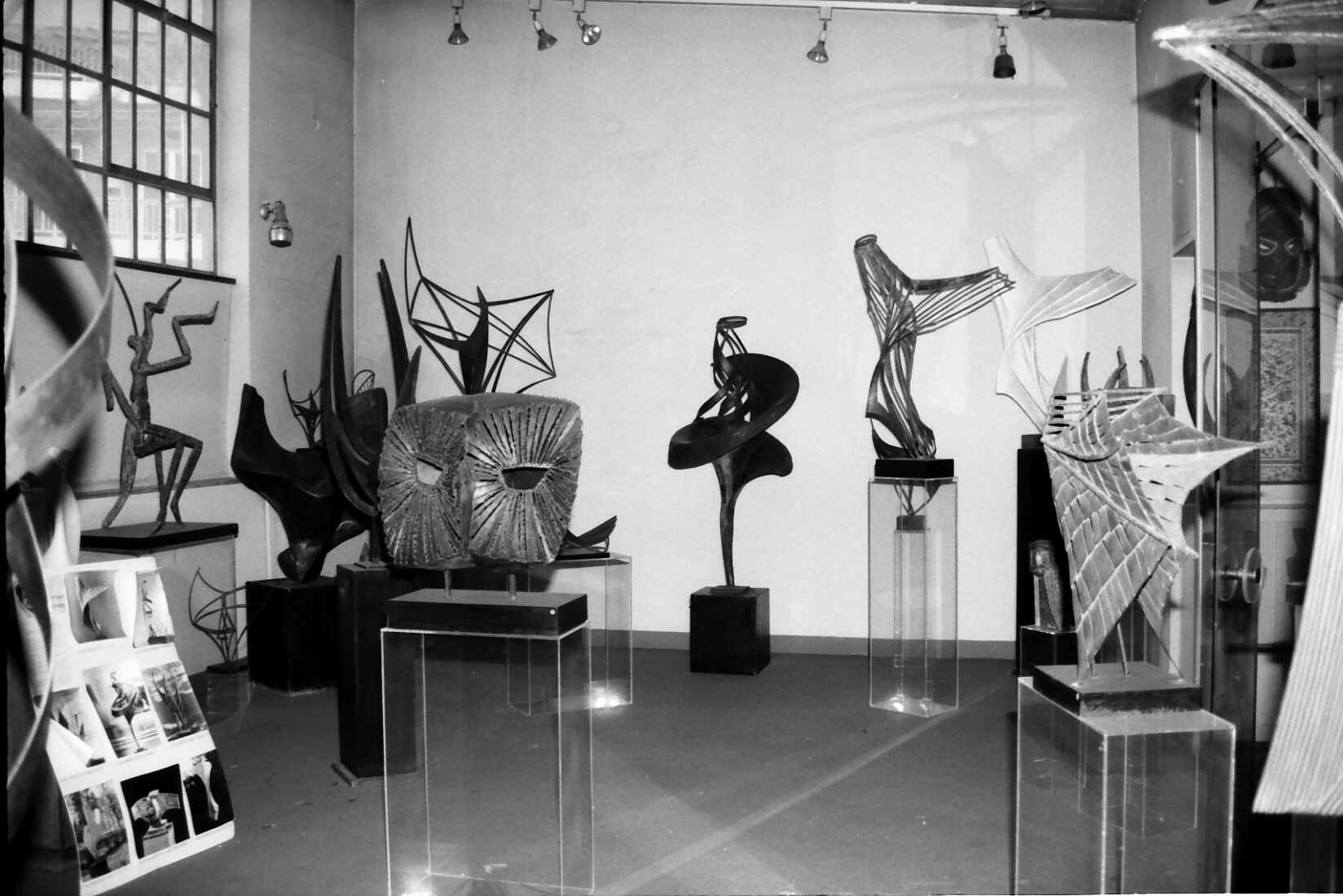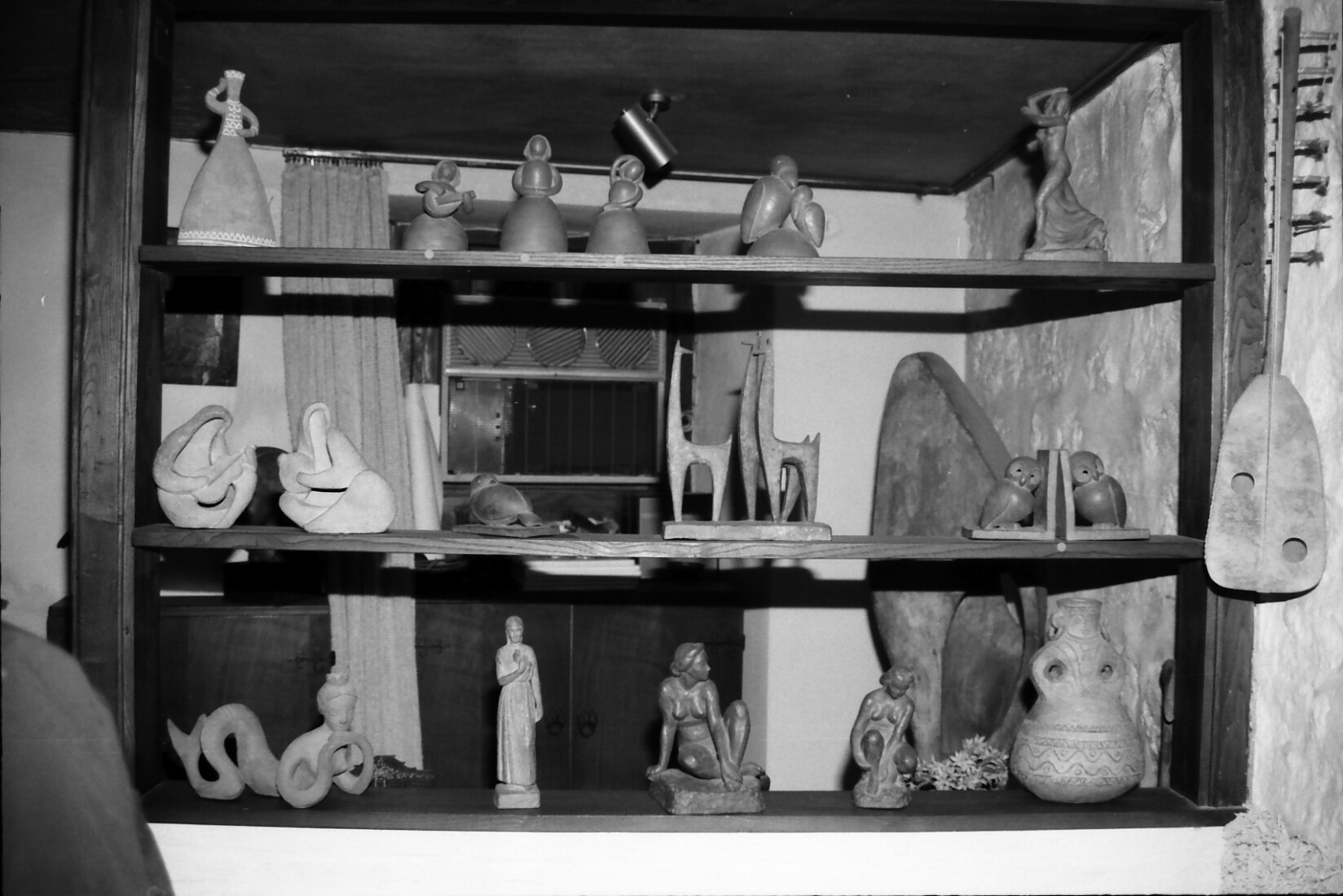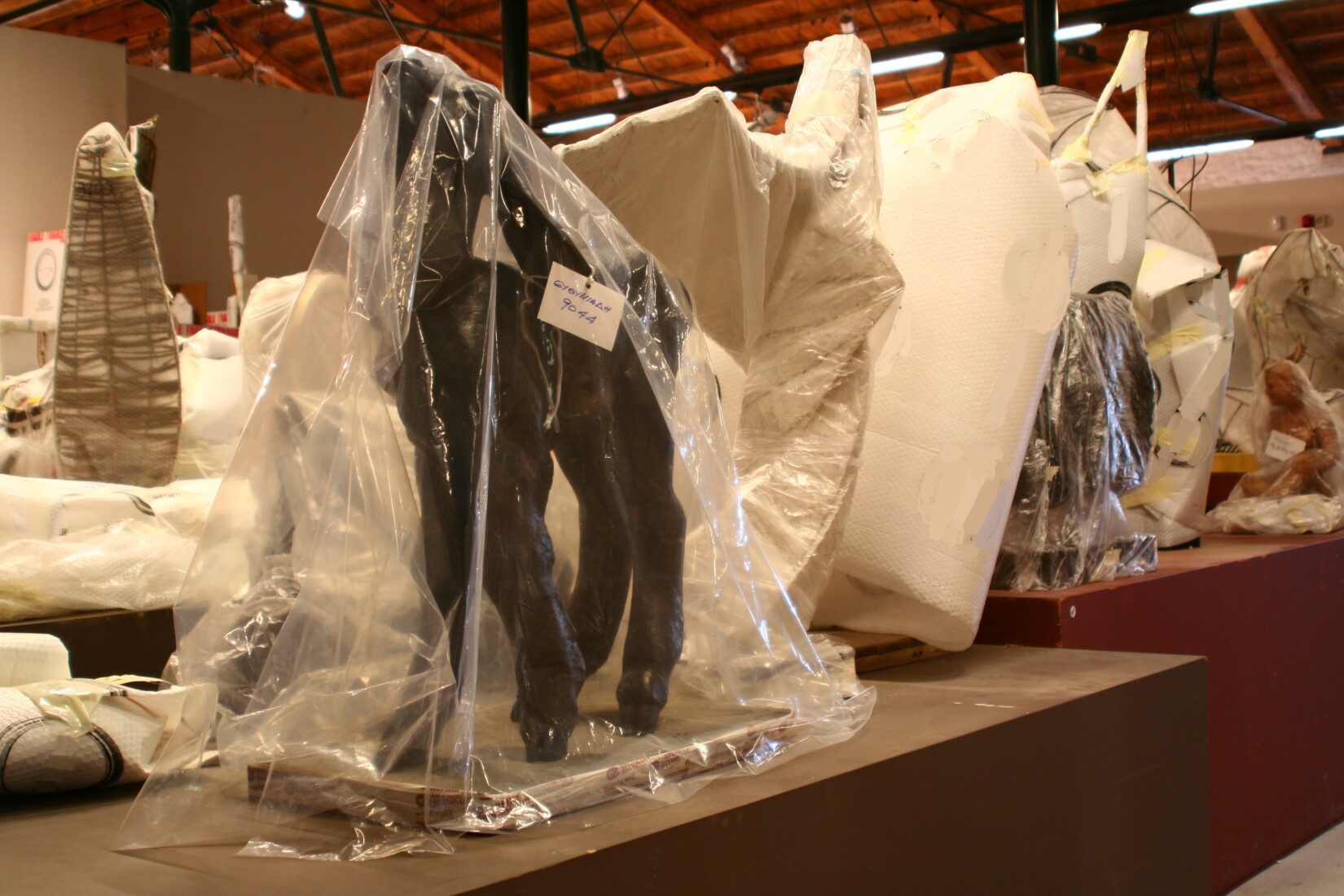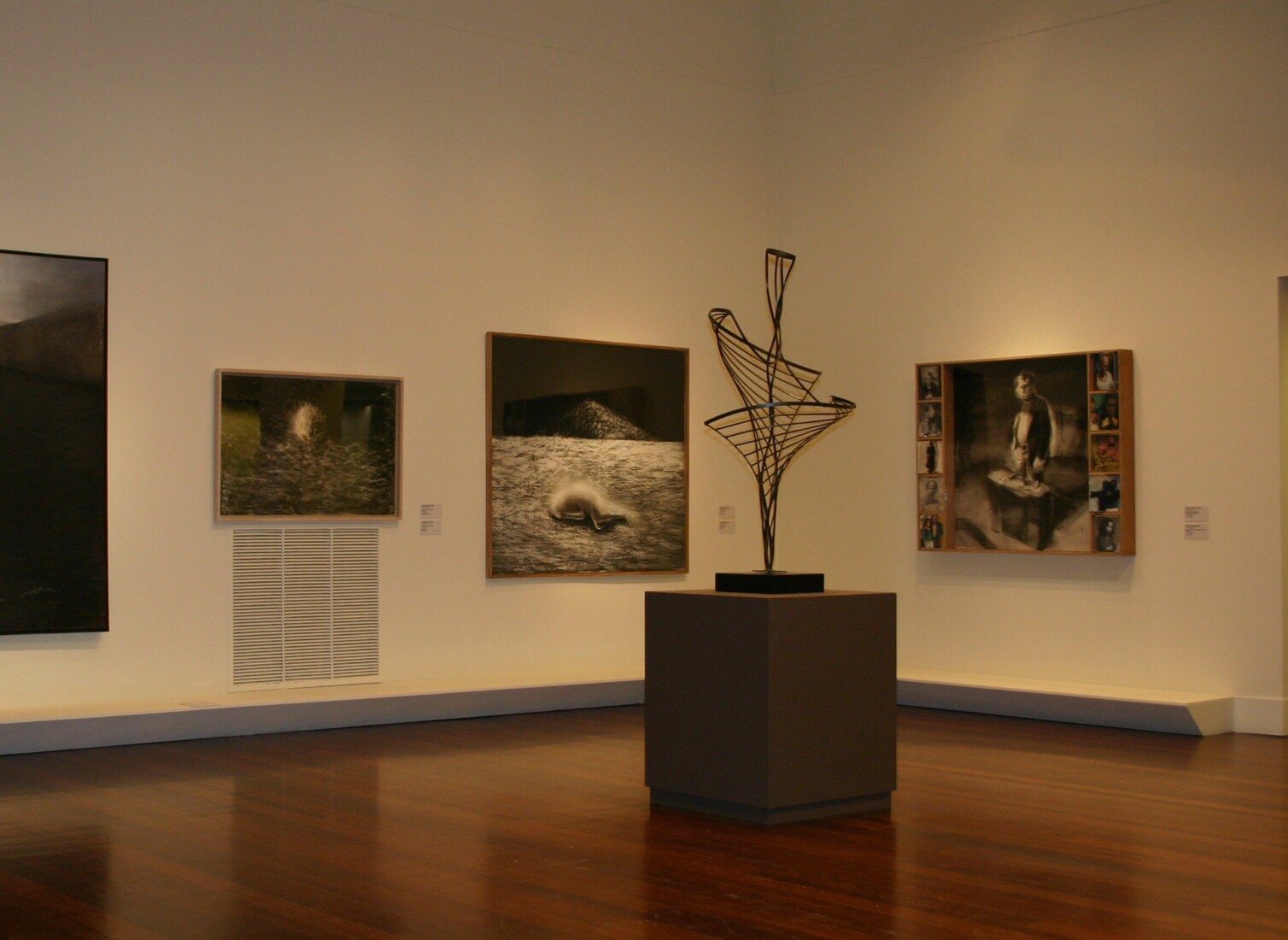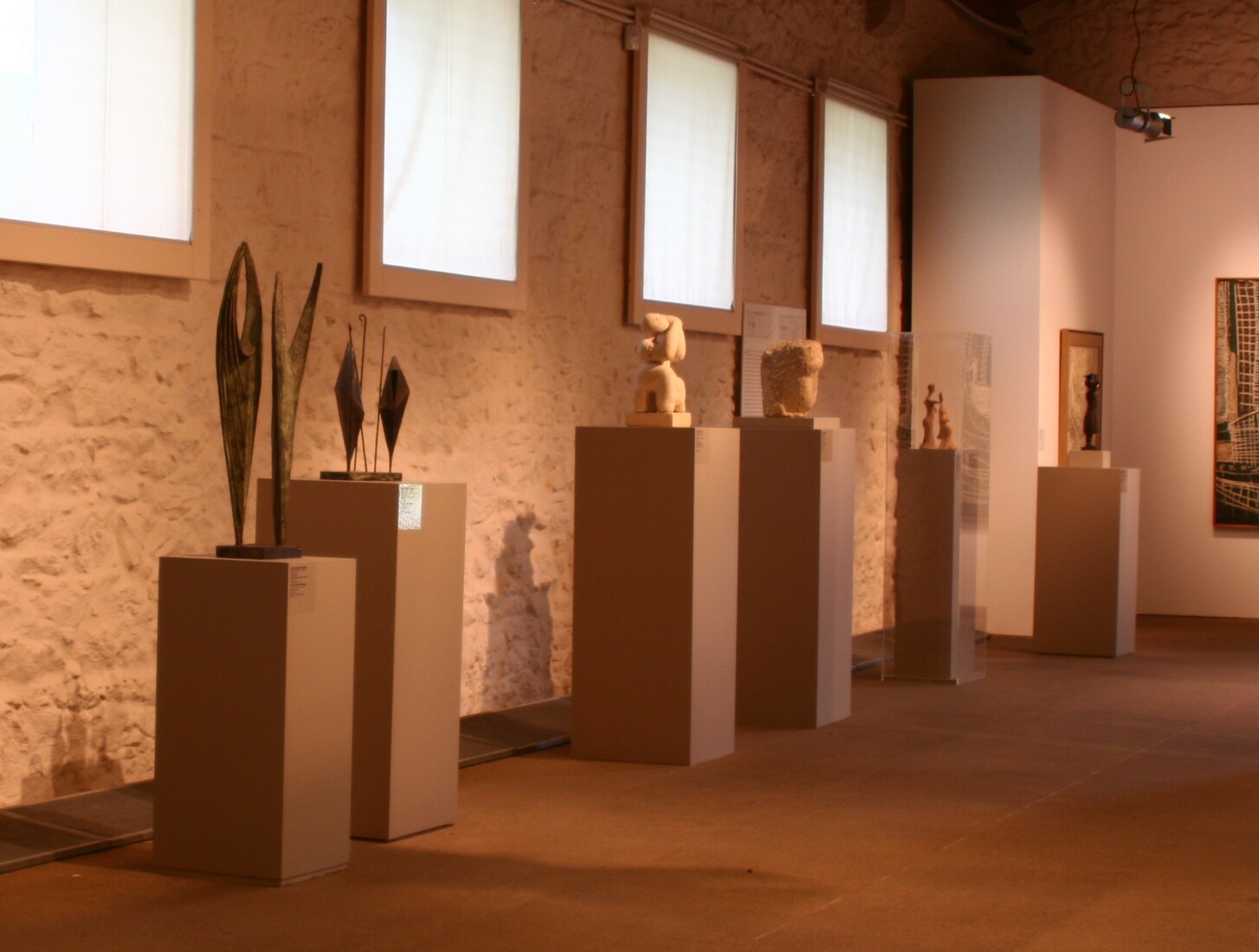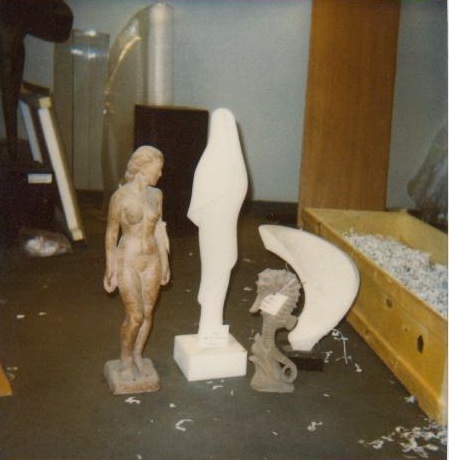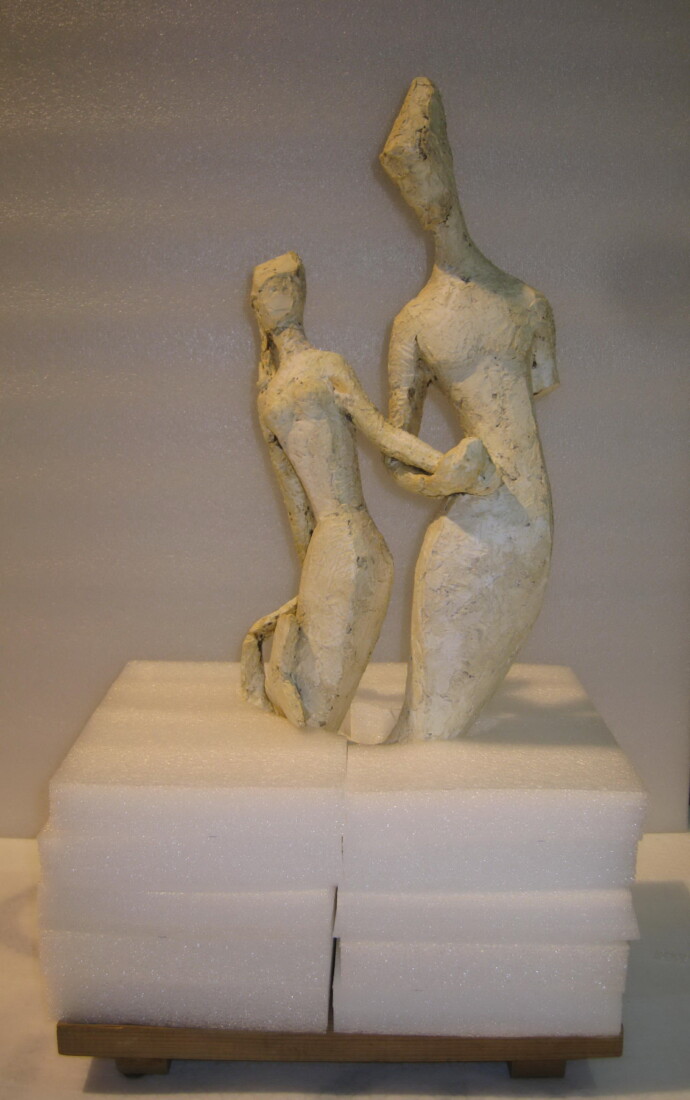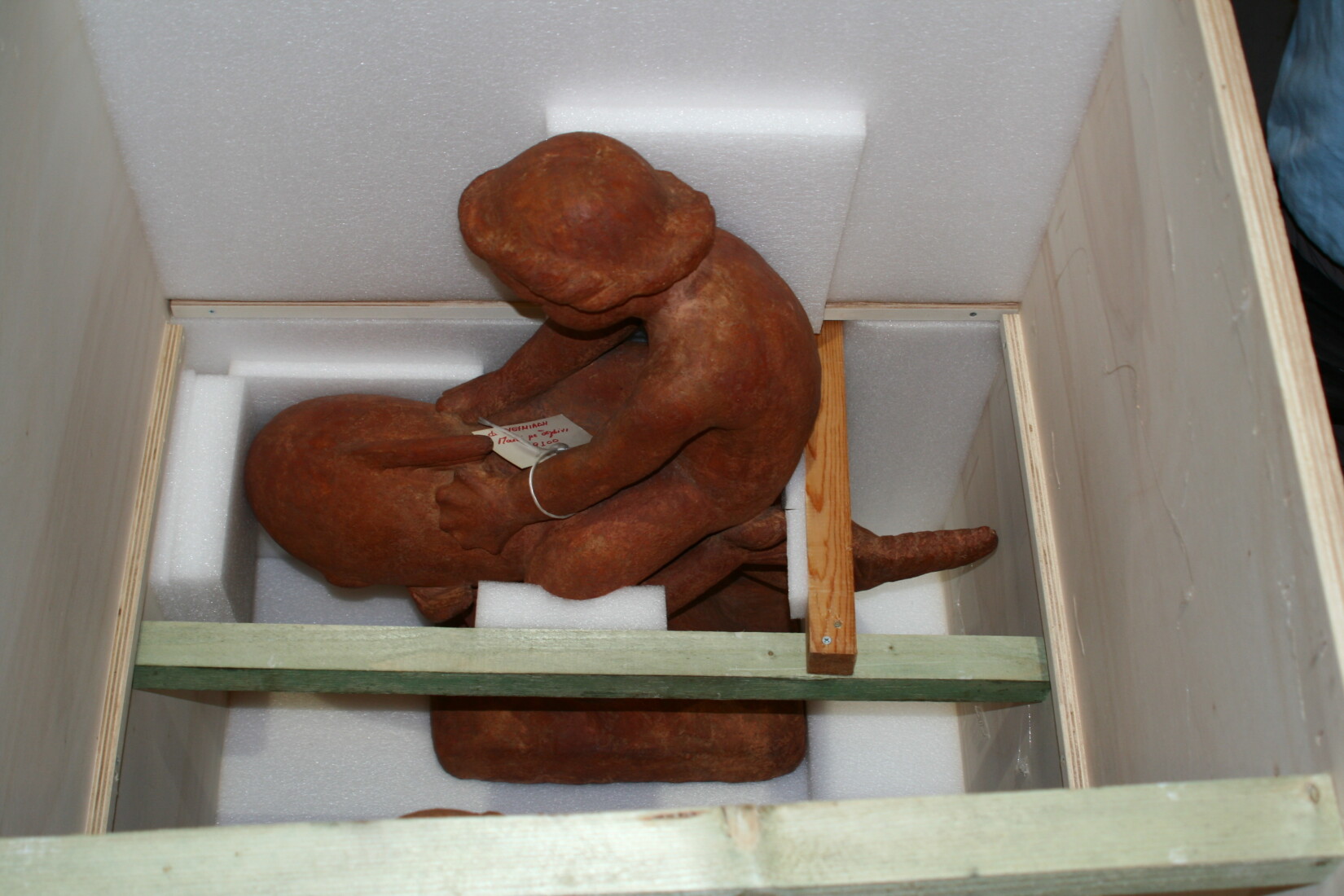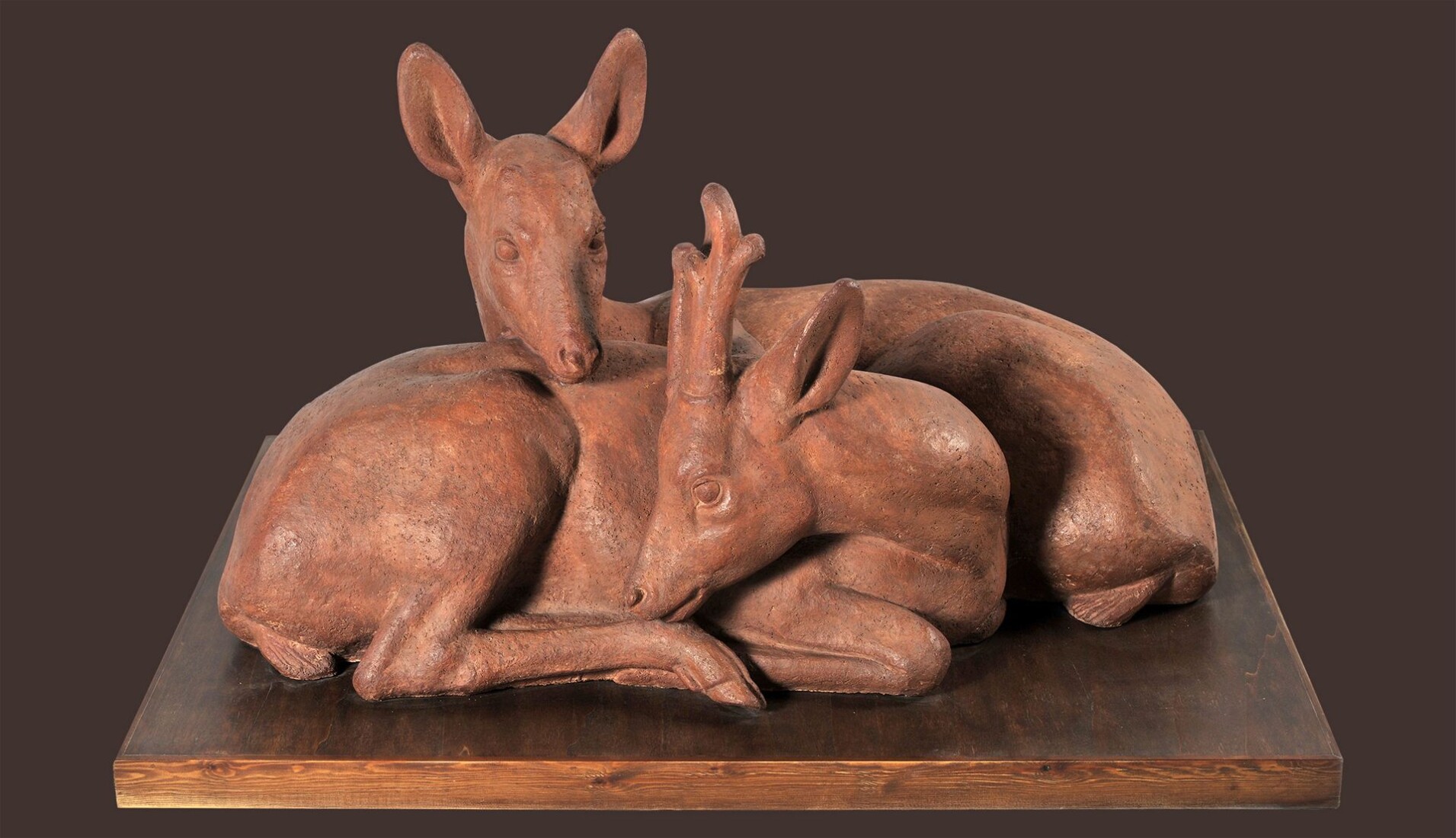
On May 11, 1989, in her will, the sculptor Frosso Efthymiadi-Menegaki bequeathed her movable and immovable property to the National Gallery. On November 8, 1995, the National Gallery Board accepted the bequest, whereby her entire body of work became part of the museum’s collections – sculptures, models, moulds, a large number of preliminary sketches for sculptures, studies for everyday decorative or functional objects, studies for other works, as well as paintings, prints and drawings by other artists; furthermore, a collection of various objects from her travels around the world and her personal archive. This treasure trove of material helps to provide a complete overview of the oeuvre, life and personality of one of the most pre-eminent Greek sculptors – from her youth until her death.
Tonia Giannoudaki, Curator of the Sculpture Collection
with Maria Kliafa, Head of The Sculpture Conservation Studio
The bequest
On May 11, 1989, in her handwritten will, Frosso Efthymiadi-Menegaki bequeathed her movable and immovable property to the National Gallery. On November 8, 1995, the National Gallery Board accepted the bequest, through which her sculptures, models, moulds and many preliminary sketches for sculptures joined the museum’s collections; moreover, studies of everyday decorative objects and various other studies. These works provide a complete overview of the artistic creation of one of the most prominent Greek sculptresses, from her student years in Vienna in 1930, to 1971, the date of her last work.
The museum also received paintings, prints and drawings by Yannoulis Chalepas, Mimis Vitsoris, Yannis Tsarouchis, Dimitris Yannoukakis, Takis Marthas, Aristomenis Provelengios, Antonis Polykandriotis, Yanna Persaki, Ira Economidou, Michael O’Connell, Henri Matisse, engravings by Japanese artists, as well as a collection of various objects from her travels around the globe. Furthermore, the artist’s personal archive, including her extensive correspondence in Greek, English, French, German and Spanish, with family, friends, organisations, artists and important personalities with whom she maintained friendly relations. Among them, the writer Nikos Kazantzakis; minister and mayor of Athens Konstantinos Kotzias; her close friend, photographer Voula Papaioannou, who photographed some works; the art critic Tonis Spiteris and his wife, sculptress Ioanna Spiteris; sculptors Michael Lekakis and Costas Coulentianos; the painter Ira Economidou, the director of the New York Museum of Modern Art, Alfred Barr; and artist Vance Kirkland, director of the School of Fine Arts of the University of Denver. Her archive also includes laws and articles of association of entities such as the Hellenic Artists’ Chamber, the Cultural Association of Greek Women, the National Council of Greek Women, the Greek Sculptors’ Association, the Women`s International Art Club. Furthermore, personal photos, as well as photos and slides of almost all of her work, exhibition catalogues, books, newspaper clippings, personal documents, notes and a variety of other items, which help to form a complete picture of the artist’s work, life and personality.
Biography
1911
Frosso Efthymiadi was born on November 11 in Istanbul. She was the daughter of Angelos Efthymiadis and Despina Nicolaides, and had three siblings, Elli, Efi and Mimis.
1922
Her family sought refuge in Athens. Frosso attended the American College for Girls and the French School. She also studied the piano.
1930-1933
Between October 1, 1930 and June 30, 1933, she studied pottery and clay sculpture at the School of Applied Arts of the Austrian Art and Industry Museum (Kunstgewerbeschule des Österreichischen Museums für Kunst und Industrie), later the University of Applied Arts (Universität für Angewandte Kunst), under professors Michael Powolny and Robert Obsieger.
1933
In July, she returned to Greece and established a pottery workshop. She began travelling around Greece, looking for raw material for her work, gathering information and clay samples in many shades and grades. Small plates of many such samples were found in her studio.
1939
Kostas Kotzias, then minister of Capital City Administration, commissioned her to produce glazed or patinated terracotta animals to be installed in public gardens in Athens: the Kifissia, Pangrati, Evangelismos and Paleo Faliro parks, and the squares Eleftherias, Agiou Ioannou (Vouliagmenis), Messolongiou, Ioannou Metaxa (Lenorman), Kyriakou and the corner of Alexandras & Patission streets. Also, squares in Filothei, Psychiko and Glyfada, Pan’s Cave, the Fokionos Negri and Konstantinoupoleos streets. The outbreak of war prevented completion of the project; several pencil drawings for these works were found in the artist’s archive, including mention of their intended location, as well as the draft and copies of the commission contract, signed on June 5, 1939.
1940
She had sculptures installed in the courtyard of the Kifissia Gardening Fair and was awarded a certificate.
1945
In December, she left for Paris with the first group of post-war fellows of the French government.
1946
She studied under Marcel Gimond.
1947
In August, she left for South America, where she had family, in the hope of a career. She brought along more than 80 works and her electric kiln. She first settled in Montevideo and then in Buenos Aires.
During her sojourn, her brother Mimis, who had remained in Vienna after they had completed their studies, and worked as a set designer and cartoonist, drowned in the Danube. Frosso found out of his death much later.
1948
The Greek expatriate Nikos Konialidis acquired her Couple of Roe-Deer and, through the Greek ambassador, Kimon Kollas, donated it to the Museo Nacional de Bellas Artes in Buenos Aires. Similarly, the Museo de Bellas Artes de la Boca acquired a Seated Deer. Furthermore, mounting her first solo exhibition and participating in group shows gave her the opportunity to receive private commissions. Her correspondence with her later husband, Manolis Menegakis, indicates that she was eager to make a bust of Eva Perón, but the plan fell through.
She visited Bolivia and Peru to study the Inca civilization and traditional Indian art.
1949
In June, she returned to Greece, since living conditions in South America had proved difficult and possibilities for professional success limited.
She married Manolis Menegakis, a lawyer, who, during her absence had arranged for the construction of their home, designed by Dimitris Pikionis, on 10, Grypari Street in Kypriadou, an area in Athens.
1950
In October, she enrolled at Marcel Gimond’s studio in Académie Julian to pursue further studies in the school year 1950-1951.
1951-1953
She often travelled to Rome, Milan and Paris, mainly to cast works.
1953
She travelled to Morocco.
1954
She became founding member of Greek Women Artists’ Association.
1955
She was elected as vice president of the Greek Women Artists’ Association.
1955, 1956
Travelled to Egypt.
1957
Under an international educational exchange programme, she travelled to the United States as a fellow of the US government to visit museums, art centres and universities, meet with preeminent artists and study contemporary art. During her visit, she also visited Mexico and studied the Mayan culture. When she returned to Greece, she published articles on American museums and sculpture.
1959
A large-scale Ibex was installed in the Emporiki Bank pavilion at the Thessaloniki International Fair.
She travelled to Sao Paulo to participate in the Biennale and visited Peru and Colombia.
1960-1970
She travelled to Japan, India, Thailand, Cambodia, Java, Bali, New York, China, Iraq, Persia, Nepal and India. She also frequently visited Rome and Paris, while she had earlier on visited London, Switzerland, Germany, Austria, Spain and Portugal.
1970
In November, as part of the Rhythm and Movement in Art programme at the Hellenic American Union, the choreographer Karen Kanner presented choreographic pieces inspired by the “movement” of Frosso Efthymiadi’s sculpture.
On November 21, her husband, Manolis Menegakis, passed away. His death had a devastating effect on her personally and artistically, putting an end to a remarkable career extending from figuration to abstraction. Since then, her activity as an artist was limited to contributing earlier work to exhibitions.
1973
The large-format book Froso Eftimiadi was published, originally instigated by Manolis Menegakis.
1974
On the occasion of the book publication, on December 28 she was awarded by the Athens Academy for her overall body of work.
1976
She completed a large-scale marble Lot’s Wife, and had it installed on her husband’s grave.
1977
The monograph Froso Eftimiadi was released in Paris, with an essay by Ionel Jianou.
1980
Frosso Efthymiadi was the first woman nominated for Academy of Athens membership for Sculpture. The position was ultimately taken by Yannis Pappas.
1995
Died in Athens on July 22.
Solo exhibitions
1947
Exposition de escultura. Froso Efthymiadi, Galeria Müller, Buenos Aires
See works on display and newspaper clippings.
1948
Calle Florida 846, Buenos Aires
1954
Terracottas. Frosso Efthymiadi-Menegaki, To Vima newspaper exhibition space, Athens
See works on display, newspaper clippings and exhibition photographs.
1955
Frosso Efthymiadi. Sculpture, The Hanover Gallery, London
See works on display and a BBC programme.
1961
Domi S.A. Headquarters, Athens
See works on display, newspaper clippings and exhibition video.
1962
Athens Technological Institute, Athens
See works on display, newspaper clippings and exhibition photographs.
Group Exhibitions
1938
Panhellenic Art Exhibition, Zappeion Megaron, Athens
Frosso Efthymiadi won a bronze medal and a cash prize.
See works on display and newspaper clippings.
1939
Panhellenic Art Exhibition, Zappeion Megaron, Athens
See works on display.
New York World’s Fair, Flushing Meadows
International Women. Painters, Sculptors, Gravers, Riverside Museum, New York
The exhibition was organised by the National Council of Women of the United States of America.
See newspaper clippings.
1940
Panhellenic Art Exhibition, Zappeion Megaron, Athens
See works on display.
1941-1944
Professional Art Exhibition, National Archaeological Museum, Athens
See works on display.
1946
Greek-French Youth Association. Paintings, Sculpture, Engraving, French Institute, Athens
1947
International Contemporary Art Fair (Exposition internationale d`art contemporain), Palais de Ghézireh, Cairo
See works on display.
Women`s International Art Club. Contemporary European Women Painters. 45th Annual Exhibition of the Women`s International Art Club, RBA Galleries, London
Greek Art: Painting, Sculpture, Printmaking, Crafts, Royal Academy of Fine Arts, Stockholm (Grekisk konst: måleri, skulptur, grafik, konsthantverk, Kungliga Akademien för de fria konsterna Stockholm)
1948
Casino, Mar del Plata, Argentina
See works on display.
14th International Fair of Livestock, Art exhibition on themes from the countryside (XIVa Exposicion Internacional de Ganaderia, Salon de arte con temas de la campaña), Calle Florida 458, Buenos Aires
The exhibition was organised by the Argentinean Agricultural Union; Frosso Efthymiadi won the prize Adolfo Bullrich y Cia Ltda S.A. for her work Calf.
See works on display.
1951
Greek Women’s Art Exhibition, Efthymiadi-Menegaki’s studio, Athens.
The exhibition was organised during the International Women’s Council Conference.
1952
Panhellenic Art Exhibition, Zappeion Megaron, Athens
See works on display.
1953
Greek Women Artists’ Exhibition, Knossos Art Gallery, Athens
1954
International Architecture Exhibition, Zappeion Megaron, Athens
See works on display and newspaper clippings.
1955
International Ceramics Fair, Cannes
The exhibition was organised in the context of the First International Ceramics Festival. Frosso Efthymiadi garnered a silver award.
See works on display, newspaper articles and photographs from the exhibition.
Greek Women Artists’ Exhibition, Museum of Contemporary Art, Cairo
See works on display.
1956
International Exhibition of Contemporary Sculpture (Exposition Internationale de Sculpture Contemporaine), Rodin Museum, Paris
See works on display and press clippings.
1957
Panhellenic Art Exhibition, Zappeion Megaron, Athens
See works on display.
Exhibition of Painting, Sculpture, Printmaking by the Greek Women Artists’ Association, Zygos Art Gallery, Athens
See works on display.
1958
Modern-Art Exhibition, Kouros Art Gallery, Athens
See works on display.
1959
Sao Paulo Biennale
Frosso Efthymiadi received honours. Before the Biennale, from May 9 to 13, she had shown her recent work in her studio.
See works on display and newspaper clippings.
1960
Panhellenic Art Exhibition, Zappeion Megaron, Athens
See works on display.
1961
2nd International Exhibition of Contemporary Sculpture (2e Exposition Internationale de Sculpture Contemporaine), Rodin Museum, Paris
See works on display.
1962
Peace-Life, Zygos Art Gallery, Athens
See works on display.
Colorado Collects, Denver Art Museum, Denver, U.S.A.
See works on display.
1963
Panhellenic Art Exhibition, Zappeion Megaron, Athens
See works on display.
Greek Women’s Art Association Exhibition, Parnassos
See works on display.
5th Alexandria Biennale
See works on display.
1964-1965
New York World’s Fair, Flushing Meadows
See works on display, newspaper articles and photographs from the exhibition.
1965
Panhellenic Art Exhibition, Zappeion Megaron, Athens
See works on display.
Froso Eftimiadi, Greek Sculptress, Galerie des Deux Mondes, John F. Kennedy International Airport, New York
See works on display.
First International Sculpture Exhibition. “Panathenaea of Contemporary Sculpture”, Hill of the Muses – Filopappou, Athens
See works on display.
1966
Greek Artists’ Exhibition, Hellenic-American Union, Athens
See works on display.
1967
Greek Women’s Art Association, Techni Macedonian Art Society, Thessaloniki
See works on display.
Panhellenic Art Exhibition, Zappeion Megaron, Athens
See works on display.
1968
XXe Salon de la Jeune Sculpture, Palais Royal, Paris
See works on display.
1969
Greek Women’s Art Association Exhibition, Kennedy Hall, Hellenic-American Union, Athens
See works on display.
XXIe Salon de la Jeune Sculpture, Palais Royal, Paris
See works on display.
1972
Outdoor Sculpture Exhibition, Apollonio Community, Porto Rafti
See works on display.
1975
Panhellenic Art Exhibition, Zappeion Megaron, Athens
See works on display.
1979
Contemporary Sculpture. First Greek Sculptors’ Association Exhibition, Athens Conservatory, Athens
See works on display.
1980
Relief Exhibition, Greek Sculptors’ Association, Athens Conservatory, Athens
1981
Miniature Sculpture Exhibition, Greek Sculptors’ Association, Athens Conservatory, Athens
See works on display.
Sculpture ‘81. 3rd Outdoor Exhibition, Greek Sculptors’ Association, Athens Conservatory, Athens
See works on display.
1982
4th Outdoor Sculpture Exhibition, Greek Sculptors’ Association, Athens Conservatory, Athens
See works on display.
1983
5th Outdoor Sculpture Exhibition, Greek Sculptors’ Association, Athens Conservatory, Athens
See works on display.
Sculpture Exhibition, Greek Sculptors’ Association, Larissa
See works on display.
1984
The Nude. Sculpture-Drawings, Greek Sculptors’ Association, Athens Conservatory, Athens
See works on display.
1985
6th Outdoor Sculpture Exhibition, Greek Sculptors’ Association, Athens Conservatory, Athens
See works on display.
Reminiscences, Transformations, Quests. Painting, Sculpture, Engraving, Athens Conservatory, Athens
See works on display.
Sculpture ‘85, Greek Sculptors’ Association, Municipality of Paleo Faliro, Plateia Iroou, Floisvos, Paleo Faliro
See works on display.
1987
Panhellenic Art Exhibition, Piraeus Port Authority Exhibition Centre, Piraeus
See works on display.
Sculpture in the Attic Light, Korai pedestrian street, Athens
See works on display.
1988
Institut Français d’Athènes. 50 Years 1938-1988. 22 Greek Artists Former Fellows of the French Government, Kostis Palamas Building, Athens
See works on display.
Works
Navigate to the topics and discover the works of Frosso Efthymiadi.
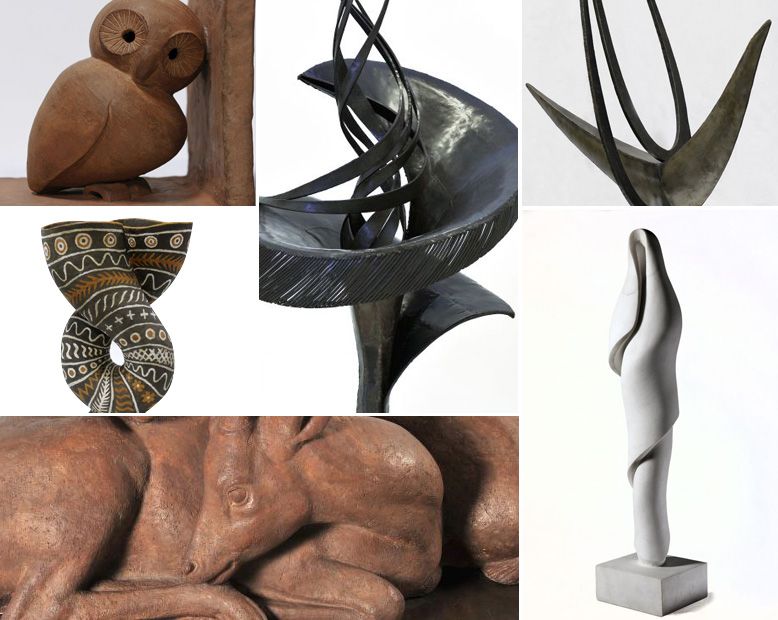
Ceramic Works
Frosso Efthymiadi studied pottery in Vienna and worked exclusively with terracotta until the mid-1950s. In this context, she became extensively involved with producing various decorative or functional objects, such as garden pottery, hanging and portable flower vases with relief decoration, plates for wall hanging and vases, lampshades, candlesticks, lamps, cups, teapots, as well as statuettes for home and office decoration. Of these items, the oldest of which date back to the artist’s student years (1930-1933), the National Gallery collection received plates, but mostly vases, painted with stylised images, or geometric patterns, sometimes adorned with embossed or engraved designs. In an interview to Dimis Apostolopoulos for «Ώρα τέχνης και επιστήμης» (Art and Science Hour) radio show on December 16, 1954, the sculptress explained her reasons for choosing these kinds of objects: «II love the subject of Water-Jars, both because even now they have not disappeared from everyday use in our country and because they have a functional shape that offers endless possibilities for producing many different forms – human figures, birds, animals». An interesting elaboration of this early work is the inventive Water-Jar Figures, made in the early 1950s, which aptly combine the female body with the form of the jug.
Cock (Wall Lamp)
terracotta, height 50 cm.
inv.no. 11704
Decorative plate with Cock, c. 1932
painted terracotta, diam. 15 cm.
inv.no 11698
Decorative plate with Mermaid, c. 1932
painted terracotta, diam. 20 cm.
inv.no 1169
Plate, c. 1932
painted terracotta, diam 20 cm.
inv.no 11700
Decorative plate, after 1949
terracotta, diam. 34 cm.
inv.no 9127
Vase with Horses in Relief, 1930-1933
glazed terracotta, 30X27X27 cm.
inv.no 11695
Vase with Horses in Relief, 1930-1933
glazed terracotta, 30X27X27 cm.
inv.no 11695
Jug Decorated with Fish, before 1954
terracotta, 29Χ21Χ18,5 cm.
inv.no. 9231
Jug Decorated with Fish, before 1954
terracotta, 29Χ21Χ18,5 cm.
inv.no. 9231
Wall Vase, before 1937
terracotta, height 35 cm., diam. 13,5 cm.
inv.no. 9206
Vase, before 1948
terracotta, height 65 cm., diam. 36,5 cm.
inv.no. 9112
Vase, 1949
painted terracotta, 39Χ27,5Χ20,5 cm.
inv.no. 9062
Vase, 1949
painted terracotta, 39Χ27,5Χ20,5 cm.
inv.no. 9062
Vase, 1949
painted terracotta, 39Χ27,5Χ20,5 cm.
inv.no. 9062
Vase
terracotta, height 12 cm., diam. 23,5 cm.
inv.no. 9128
Vase with 18 handles, before 1948
terracotta, 16Χ25Χ25 cm.
inv.no. 9180
Vase, after 1949
terracotta, height 16 cm., diam. 16 cm.
inv.no. 9124
Jug, 1952
terracotta, 21Χ18Χ16,5 cm.
inv.no. 9123
Jug, 1952
terracotta, 21Χ18Χ16,5 cm.
inv.no. 9123
Jug, after 1949
painted terracotta, 26Χ22,5Χ25,5 cm.
inv.no. 9182
Jug, after 1949
painted terracotta, 26Χ22,5Χ25,5 cm.
inv.no. 9182
Jug, after 1949
painted terracotta, 26Χ22,5Χ25,5 cm.
inv.no. 9182
Jug, after 1949
terracotta, 27Χ20Χ18,5 cm.
inv.no. 9122
Jug, after 1949
terracotta, 27Χ20Χ18,5 cm.
inv.no. 9122
Churn, after 1949
terracotta, 22Χ17,5Χ5 cm.
inv.no. 9121
Jug, 1952 or 1953
terracotta, 34,5Χ22Χ22,5 cm.
inv.no. 9181
Jug, 1952 or 1953
terracotta, 34,5Χ22Χ22,5 cm.
inv.no. 9181
Water-Jar Figure, 1954
terracotta, 31Χ20Χ16 cm.
inv.no. 9061
Water-Jar Figure, 1954
terracotta, 31Χ20Χ16 cm.
inv.no. 9061
Water-Jar Figure, 1954
terracotta, 31Χ20Χ16 cm.
inv.no. 9061
Water-Jar Figure, 1954
terracotta, 62Χ32Χ24,5 cm.
inv.no 9063
Water-Jar Figure, 1954
terracotta, 62Χ32Χ24,5 cm.
inv.no 9063
Water-Jar Figure, 1954
terracotta, 62Χ32Χ24,5 cm.
inv.no 9063
Water-Jar Figure, after 1951
terracotta, 67,5Χ34,5Χ17,5 εκ.
inv.no. 9120
Water-Jar Figure, after 1951
terracotta, 67,5Χ34,5Χ17,5 εκ.
inv.no. 9120
Figure
terracotta, 27Χ15Χ6,5 cm.
inv.no 9095
Animals
Alongside ceramics, since her student years Frosso Efthymiadi also pursued sculpture, working on specific topics, such as animals, birds, figures and busts. A special place among these topics is held by animals and birds, small- or large-scale, which makes her unique among Greek sculptors in working so extensively with animal forms. Her love for these subjects, as well as her use of terracotta until the mid-1950s, stems from her perception of the intention and function of sculpture, which she describes in an interview to Dimis Apostolopoulos for «Ώρα τέχνης και επιστήμης» (Art and Science Hour) radio show on December 16, 1954: «… My aim is not monumental sculpture but art that accompanies people in their everyday life – something I think is missing in Greece.». This is why she renders animals realistically, in casual poses, stressing their light-hearted, cute nature by soft modelling. Small-scale works were intended for interior decoration, as she felt that, «Terracotta sculpture is particularly suitable to the current perceptions of home decoration». Large-scale works were mainly intended for private gardens, or public spaces: «I do love themes suitable for garden decoration, and think that animals are most suitable for this. As you can see, all my animals – goat, donkey, calf, deer and horse – are realistically modelled, as dictated by their intended use. I sought to capture each animal’s characteristic movement and expression. In fact, I had to bring a live model to my studio each time. I let it run in my garden. …». For instance, for Pan and Baby Lamb, she borrowed a lamb from the neighbourhood; the model for Pan was Greek architect Pikionis’ son Tassos. Photos of animals that she used as models, such as the donkey employed for Baby Donkey were found in her photographic archive.
In 1939, Kostas Kotzias, then minister of Capital Administration, commissioned her to produce glazed or patinated terracotta animals to be installed in public gardens in Athens: Kifissia, Pangrati, Evangelismos and Paleo Faliro parks; Eleftherias, Agiou Ioannou (Vouliagmenis), Messolongiou, Ioannou Metaxa (Lenorman), Kyriakou squares and Alexandras & Patission street corner. Also, squares in Filothei, Psychiko and Glyfada, Pan’s Cave, and the Fokionos Negri and Konstantinoupoleos streets. The outbreak of war prevented the project from materialising; however, several pencil drawings were found in her archive. Other works planned for these locations were also Kid, Seated Donkey and Boy on a Dolphin, which was designed as a fountain. In 1940, she decorated with sculptures the Kifissia Gardening Fair and was awarded a certificate; she installed Pan with Lamb, Kid and Seated Donkey in her home garden.
Her interest in animals, however, faded in the mid-1950s. Having made in 1951 the small-scale terracottas Animals of the Andes – stylised evocations of llamas of South America, which she transferred, three years later, to large-scale casts and forged iron – in 1955 she completed the series with Ibex, a stylised , abstract and quite decorative version of a wild goat, which was but a nearly identical version of an early work in terracotta.
Kid, c. 1937
glazed terracotta , 38,5Χ29,5Χ15 cm.
inv.no. 9089
Kid, c. 1937
glazed terracotta , 38,5Χ29,5Χ15 cm.
inv.no. 9089
Kid, c. 1937
glazed terracotta , 38,5Χ29,5Χ15 cm.
inv.no. 9089
Kid, c. 1938
terracotta, 36Χ28Χ12 cm.
inv.no. 9107
Kid, c. 1938
terracotta, 36Χ28Χ12 cm.
inv.no. 9107
Kid, c. 1938
terracotta, 36Χ28Χ12 cm.
inv.no. 9107
Kid, c.1938
bronze, 88Χ26Χ66 cm.
inv.no 9044
Kid, c.1938
bronze, 88Χ26Χ66 cm.
inv.no 9044
Kid, c.1938
bronze, 88Χ26Χ66 cm.
inv.no 9044
Seated donkey, 1939
terracotta, 59,5Χ85Χ42 cm.
inv.no. 9043
Seated donkey, 1939
terracotta, 59,5Χ85Χ42 cm.
inv.no. 9043
Seated donkey, 1939
terracotta, 59,5Χ85Χ42 cm.
inv.no. 9043
Baby Donkey, after 1937
terracotta, 40Χ33,5Χ12,5 cm.
inv.no. 9136/b
Baby Donkey, after 1937
terracotta, 40Χ33,5Χ12,5 cm.
inv.no. 9136/b
Baby Donkey, after 1937
terracotta, 40Χ33,5Χ12,5 cm.
inv.no. 9136/b
Baby Donkey, after 1937
bronze, 35Χ26Χ8,5 cm.
inv.no. 9136
Baby Donkey, after 1937
bronze, 35Χ26Χ8,5 cm.
inv.no. 9136
Baby Donkey, after 1937
bronze, 35Χ26Χ8,5 cm.
inv.no. 9136
Baby Donkey, after 1940
bronze, 107Χ81Χ22 cm.
inv.no. 9135
Foal, after 1940
bronze, 82Χ100Χ40 cm.
inv.no 9111
Calf, c. 1939
terracotta, 11Χ23Χ10,5 cm.
inv.no 9105
Calf, c. 1939
terracotta, 11Χ23Χ10,5 cm.
inv.no 9105
Calf, c. 1939
terracotta, 11Χ23Χ10,5 cm.
inv.no 9105
Calf, after 1948
bronze, 75,5Χ90Χ35 cm.
inv.no 9047
Sea Lion, 1940 or 1941
glazed terracotta, 14Χ15,5Χ20 cm.
inv.no. 11702
Baby Deer, 1930-1933
glazed terracotta , 16,5Χ21Χ12 cm.
inv.no. 11701
Roe with her Young, 1939-1940
terracotta, 36Χ25Χ12 cm.
inv.no. 9073
Roe with her Young, 1939-1940
terracotta, 36Χ25Χ12 cm.
inv.no. 9073
Roe with her Young, 1939-1940
terracotta, 36Χ25Χ12 cm.
inv.no. 9073
Couple of Roe-Deer, c. 1940
terracotta, 49Χ87Χ50 cm.
inv.no. 9046/α
Couple of Roe-Deer, c. 1940
terracotta, 49Χ87Χ50 cm.
inv.no. 9046/α
Couple of Roe-Deer, c. 1940
terracotta, 49Χ87Χ50 cm.
inv.no. 9046/α
Couple of Roe-Deer, c. 1940
terracotta, 49Χ87Χ50 cm.
inv.no. 9046/α
Couple of Roe-Deer, c. 1940
terracotta, 49Χ87Χ50 cm.
inv.no. 9046/α
Animals of the Andes, 1951
terracotta, 30,5Χ24Χ8,5 cm.
inv.no. 9072
Animals of the Andes, 1951
terracotta, 30,5Χ24Χ8,5 cm.
inv.no. 9072
Animals of the Andes, 1951
terracotta, 30,5Χ24Χ8,5 cm.
inv.no. 9072
Animals of the Andes, 1954
hammered iron, 120Χ98Χ34 cm.
inv.no 9053
Animals of the Andes, 1954
hammered iron, 120Χ98Χ34 cm.
inv.no 9053
Ibex, 1955
bronze, 74Χ41Χ24 cm.
inv.no 9148
Ibex, after 1955
iron, 151,5Χ41,5Χ80,5 cm.
inv.no 9195
Ibex, after 1955
iron, 151,5Χ41,5Χ80,5 cm.
inv.no 9195
Ibex, after 1955
iron, 151,5Χ41,5Χ80,5 cm.
inv.no 9195
Ibex, after 1955
iron, 151,5Χ41,5Χ80,5 cm.
inv.no 9195
Birds
Frosso Efthymiadi studied pottery and sculpture and since her student years worked on specific topics, such as animals, birds, figures and busts. Among them, birds enjoy prime of place, having kept her undiminished interest from her early years to the late 1960s, when her creative career came to a close. The choice of these subjects, as well as of the medium of terracotta until the mid-1950s, reflects her perception of the purpose and function of sculpture, which she describes in an interview to Dimis Apostolopoulos for «Ώρα τέχνης και επιστήμης» (Art and Science Hour) radio show on December 16, 1954: «…My aim is not monumental sculpture but art that accompanies people in their everyday life – something I think is missing in Greece». Small-scale works were intended for interior decoration, as the artist felt that, «terracotta (…) lends itself very nicely to current interior decoration trends».
Unlike other thematic series, Birds are primarily characterised by abstraction and stylisation inspired by a variety of models; they are determined, however, also by their ornamental character. This is most evident in her earliest terracottas, as well as in the series of Cocks and Owls, also characteristically static. After the mid-1950s, abstraction and stylisation intensified, while terracotta is replaced by metal. A characteristic series is Eagles, which elaborates, in compositions of latent movement, on the dynamic, majestic effect of opened wings, the artist working with either solid surfaces or hammered sheets and rods that combine full and empty parts. From 1960 on, moreover, she produced solid, seemingly static compositions, such as Winged Chief, Angry Owl, Night Bird, Minerva, inspired by the technique of golden jewellery with densely collated rods that she had seen in her travels in Peru and Colombia in 1959; starting with Bird, with its distinctively dynamic movement in space, in the 1960s, reduction verged on abstraction in works such as Pheasant, Wounded Bird, Rising, First Flight.
On the other hand, the preliminary sketches for several art works made of thin iron rods, the finished works being in forged bronze, iron or brass, provide a more complete understanding of the creative process.
Pigeon, 1930-1933
terracotta, 9Χ13,5Χ8,5 cm.
inv.no. 9060
Birds, 1943
terracotta, 15,5Χ12,5Χ10 cm.
inv. no. 9097
Birds, 1943
terracotta, 15,5Χ12,5Χ10 cm.
inv. no. 9097
Cock, before 1947
terracotta, 14,5Χ7Χ11,5 cm.
inv.no. 9210
Cock, before 1947
terracotta, 14,5Χ7Χ11,5 cm.
inv.no. 9210
Owl (bookend), before 1947
terracotta, 13Χ12Χ9,2 cm.
inv.no. 9058
Owl (bookend), before 1947
terracotta, 13Χ12Χ9,2 cm.
inv.no. 9058
Pheasant, before 1954
painted terracotta, 20Χ59Χ13 cm.
inv.no. 9185
Cock (Wall decoration), 1954
painted terracotta, 59,5Χ55,5Χ2 cm.
inv.no. 9184
Cock, before 1954
terracotta, 45,5Χ41Χ10 cm.
inv.no. 9069
Cock, before 1954
terracotta, 45,5Χ41Χ10 cm.
inv.no. 9069
Cock, before 1954
terracotta, 45,5Χ41Χ10 cm.
inv.no. 9069
Cock, 1953
terracotta, 50Χ34,5Χ9 cm.
inv.no. 9064
Cock, 1953
terracotta, 50Χ34,5Χ9 cm.
inv.no. 9064
Cock, 1953
terracotta, 50Χ34,5Χ9 cm.
inv.no. 9064
Cock, before 1954
terracotta, 41,5Χ46,5Χ12 cm.
inv.no. 9065
Cock, before 1954
terracotta, 41,5Χ46,5Χ12 cm.
inv.no. 9065
Cock, before 1954
terracotta, 41,5Χ46,5Χ12 cm.
inv.no. 9065
Cock, before 1954
terracotta, 43Χ51,5Χ12,5 cm.
inv.no. 9196
Cock, before 1954
terracotta, 43Χ51,5Χ12,5 cm.
inv.no. 9196
Cock, before 1954
terracotta, 43Χ35Χ10 cm.
inv.no. 9068
Cock, before 1954
terracotta, 43Χ35Χ10 cm.
inv.no. 9068
Cock, before 1954
terracotta, 45Χ42,5Χ13 cm.
inv.no. 9066
Cock, before 1954
terracotta, 45Χ42,5Χ13 cm.
inv.no. 9066
Cock, after 1954
hammered iron, 43Χ44Χ9 cm.
inv.no. 9188
Cock, after 1954
hammered iron, 43Χ44Χ9 cm.
inv.no. 9188
Cock, after 1954
hammered iron, 43Χ44Χ9 cm.
inv.no. 9188
Cock, after 1954
hammered iron, 43Χ44Χ9 cm.
inv.no. 9188
Cock, before 1954
terracotta, 37,5Χ44Χ11 cm.
inv.no. 9067
Cock, before 1954
terracotta, 37,5Χ44Χ11 cm.
inv.no. 9067
Cock, after 1954
hammered iron, 38Χ43Χ9 cm.
inv.no. 9189
Cock, after 1954
hammered iron, 38Χ43Χ9 cm.
inv.no. 9189
Cock, after 1954
hammered iron, 38Χ43Χ9 cm.
inv.no. 9189
Cock, before 1954
terracotta, 53Χ41,5Χ13 cm.
inv.no. 9207
Cock, before 1954
terracotta, 53Χ41,5Χ13 cm.
inv.no. 9207
Owl, before 1959
hammered iron and welded brass, 33Χ19Χ15 cm.
inv.no. 9141
Owl, before 1959
hammered iron and welded brass, 33Χ19Χ15 cm.
inv.no. 9141
Owl, before 1959
iron, 26Χ38Χ24,5 cm.
inv.no. 9082/α
Owl, before 1959
hammered iron and welded copper, 26Χ40,5Χ27 cm.
inv.no 9082
Owl, before 1959
hammered iron and welded copper, 26Χ40,5Χ27 cm.
inv.no 9082
Owl, before 1959
hammered iron and welded copper, 26Χ40,5Χ27 cm.
inv.no 9082
Owl, 1960
iron, 18,5Χ39Χ24 cm.
inv.no. 9142/α
Owl, 1960
hammered iron and welded copper, 17Χ39Χ25 cm.
inv.no. 9142
Owl, 1960
hammered iron and welded copper, 17Χ39Χ25 cm.
inv.no. 9142
Owl, 1960
hammered iron and welded copper, 17Χ39Χ25 cm.
inv.no. 9142
Owl, 1960
hammered iron and welded copper, 17Χ39Χ25 cm.
inv.no. 9142
Angry Owl, after 1959
iron, 18Χ41,5Χ20 cm.
inv.no 9083/α
Angry Owl, after 1959
hammered copper, 18Χ42Χ25 cm.
inv.no. 9083
Angry Owl, after 1959
hammered copper, 18Χ42Χ25 cm.
inv.no. 9083
Angry Owl, after 1959
hammered copper, 18Χ42Χ25 cm.
inv.no. 9083
Nightbird, 1961
iron, 28,5Χ86Χ25 cm.
inv.no 9084/α
Nightbird, 1961
hammered brass, 28Χ86Χ22 cm.
inv.no 9084
Nightbird, 1961
hammered brass, 28Χ86Χ22 cm.
inv.no 9084
Nightbird, 1961
hammered brass, 28Χ86Χ22 cm.
inv.no 9084
Minerva, 1961
hammered copper, 36Χ33Χ16 cm.
inv. no 9143
Minerva, 1961
hammered copper, 36Χ33Χ16 cm.
inv. no 9143
Minerva, 1961
hammered copper, 36Χ33Χ16 cm.
inv. no 9143
Minerva, 1961
bronze, 36,5Χ35,5Χ17,5 cm.
inv. no 9144
Minerva, 1961
bronze, 36,5Χ35,5Χ17,5 cm.
inv. no 9144
Minerva, 1961
bronze, 36,5Χ35,5Χ17,5 cm.
inv. no 9144
Owl`s Head
copper, 9Χ12,5Χ4 cm.
inv.no. 9088
Owl`s Head, before 1963
hammered iron, 58Χ64Χ26 cm.
inv.no. 9140
Eagle
hammered iron, 46Χ41Χ18 cm.
inv.no. 9172
Eagle
hammered iron, 46Χ41Χ18 cm.
inv.no. 9172
Eagle
hammered iron, 46Χ41Χ18 cm.
inv.no. 9172
Eagle, 1956-1957
hammered iron, 100Χ95Χ59 cm.
inv. no. 9049
Eagle, 1956-1957
hammered iron, 100Χ95Χ59 cm.
inv. no. 9049
Eagle, 1956-1957
hammered iron, 100Χ95Χ59 cm.
inv. no. 9049
Eagle, 1956-1957
hammered iron, 100Χ95Χ59 cm.
inv. no. 9049
Eagle II, 1960
iron, 127Χ91Χ33,5 cm.
inv. no. 9154/α
Eagle ΙΙ, 1960
hammered brass, 125Χ89Χ33 cm.
inv. no. 9154
Bird
iron, 47Χ46Χ20 cm
inv.no 9173
Bird
iron, 47Χ46Χ20 cm
inv.no 9173
Bird
iron, 47Χ46Χ20 cm
inv.no 9173
Winged Chief, 1960
hammered brass, 116Χ75Χ23 cm.
inv.no. 9145
Winged Chief, 1960
hammered brass, 116Χ75Χ23 cm.
inv.no. 9145
Winged Chief, 1960
iron, 109Χ94Χ23 cm.
inv.no. 9145/α
Birds, 1955
bronze, 39,5Χ23,5Χ14 cm.
inv. no. 9081/α
Birds, 1955
bronze, 39,5Χ23,5Χ14 cm.
inv. no. 9081/α
Birds, 1955
bronze, 39,5Χ23,5Χ14 cm.
inv. no. 9081/α
Birds (Dialogue), before 1972
hammered brass, 118Χ67Χ34 cm.
inv.no 9050
Bird, c. 1959
hammered brass, 64,5Χ60,5Χ26 cm.
inv.no 9191
Bird, c. 1959
iron, 115Χ113,5Χ31 cm.
inv.no 9153/α
Bird, c. 1959
iron, 115Χ113,5Χ31 cm.
inv.no 9153/α
Bird, c. 1959
hammered brass, 126,5Χ113,5Χ38 cm.
inv.no 9153
Bird, c. 1959
hammered brass, 126,5Χ113,5Χ38 cm.
inv.no 9153
Wounded Bird, 1962
iron, 24Χ56Χ30 cm.
inv.no 9164/α
Wounded Bird, 1962
hammered brass, 24Χ56Χ25 cm.
inv.no 9164
Wounded Bird, 1962
hammered brass, 24Χ56Χ25 cm.
inv.no 9164
Wounded Bird, 1962
hammered brass, 24Χ56Χ25 cm.
inv.no 9164
Rising, 1968
iron, 59Χ35Χ15 cm.
inv no. 9163/α
Rising, 1968
hammered brass, 58Χ37Χ16 cm.
inv no.9163
Rising, 1968
hammered brass, 58Χ37Χ16 cm.
inv no.9163
First Flight
hammered brass, 57Χ35Χ14 cm.
inv.no 9093
Pheasant, after 1960
hammered brass, 34Χ90Χ22 cm.
inv no. 9146
Pheasant, after 1960
iron, 18,5Χ45Χ10 cm.
inv.no. 11709
Busts
Since her student years and until around 1955, Frosso Efthymiadi produced busts, some in terracotta and some cast in bronze. The sitters are usually her friends, or persons from the artist’s inner or outer social circle. Modelled in a realistic vein, these busts reflect an interest in psychological insights, acknowledged by the artist in an interview to Dimis Apostolopoulos for «Ώρα τέχνης και επιστήμης» (Art and Science Hour) radio show on December 16, 1954: «… In addition to the sitter’s characteristic features, the artist must capture and convey the person’s inner world. It is not always easy, you know, because, in this case, the, usually complex, personality requires individuality of expression. That is why in busts I avoid a lot of abstraction, and in some busts I think we need to maintain a certain documentation».
In the collection of the National Gallery there are two busts of the writer Nikos Kazantzakis, the older of which was made on Aegina in 1937; busts of the archaeologist Gabriel Welter, who carried out excavations on Aegina, of the architect Dimitris Pikionis, of the writer Stratis Myrivilis, of the mayor of Athens Kostas Kotzias and Dimitris Galanis’ grand-daughter, Catherine; the Japanese Girl is Kazuko Watanabe, daughter of Νobuo Watanabe, the Japanese ambassador, with whose family the artist was on friendly terms and corresponded until 1989.
Some of the busts exist in more than one copy. Some belong to the sitters’ families, such as Japanese Girl and Kostas Kotzias’ bust; others have been installed in outdoor or indoor sites, for instance Gabriel Welter’s bust, which was installed on Aegina in 1938, or one of the Nikos Kazantzakis’ busts, in the eponymous museum on Crete.
In the sculptress’s studio were also found one copy each of the Japanese Girl and Girl from Mykonos on terracotta, with hand-painted features, as, after 1950, Frosso Efthymiadi experimented with hand-painting certain works, most of which had been made in previous years.
The Archaeologist Gabriel Welter, c. 1938
terracotta, 34,5Χ20Χ26 cm.
inv. no. 9234
The Archaeologist Gabriel Welter, c. 1938
terracotta, 34,5Χ20Χ26 cm.
inv. no. 9234
The Archaeologist Gabriel Welter, c. 1938
terracotta, 34,5Χ20Χ26 cm.
inv. no. 9234
Lord Byron
terracotta, 36Χ22,5Χ28,5 cm.
inv.no. 9235
Lord Byron
terracotta, 36Χ22,5Χ28,5 cm.
inv.no. 9235
Lord Byron
terracotta, 36Χ22,5Χ28,5 cm.
inv.no. 9235
The Architect Dimitris Pikionis, 1941
terracotta, 31Χ22Χ27 cm.
inv.no 9101
The Architect Dimitris Pikionis, 1941
terracotta, 31Χ22Χ27 cm.
inv.no 9101
The Architect Dimitris Pikionis, 1941
terracotta, 31Χ22Χ27 cm.
inv.no 9101
The Writer Nikos Kazantzakis, 1947
terracotta, 31Χ20,5Χ25 cm
inv.no 9102
The Writer Nikos Kazantzakis, 1947
terracotta, 31Χ20,5Χ25 cm
inv.no 9102
The Writer Nikos Kazantzakis, 1947
terracotta, 31Χ20,5Χ25 cm
inv.no 9102
The Writer Nikos Kazantzakis, 1947
terracotta, 31Χ20,5Χ25 cm
inv.no 9102
The Writer Stratis Myrivilis, c. 1943
terracotta, 35Χ18Χ27 cm.
inv.no 9209
The Writer Stratis Myrivilis, c. 1943
terracotta, 35Χ18Χ27 cm.
inv.no 9209
The Writer Stratis Myrivilis, c. 1943
terracotta, 35Χ18Χ27 cm.
inv.no 9209
The Mayor of Athens Kostas Kotzias, before 1952
terracotta, 35,5Χ24Χ24,5 cm.
inv.no 9236
The Mayor of Athens Kostas Kotzias, before 1952
terracotta, 35,5Χ24Χ24,5 cm.
inv.no 9236
The Mayor of Athens Kostas Kotzias, before 1952
terracotta, 35,5Χ24Χ24,5 cm
inv.no 9236
Man`s head
terracotta, 36,5Χ19Χ26,5 cm.
inv.no. 9238
Man`s head
terracotta, 36,5Χ19Χ26,5 cm.
inv.no. 9238
Man`s head
terracotta, 36,5Χ19Χ26,5 cm.
inv.no. 9238
Man`s head
terracotta, 36,5Χ19Χ26,5 cm.
inv.no. 9238
Aliki R. c. 1943
terracotta, 28Χ22,5Χ24,5 cm.
inv. no. 9079
Aliki R., c. 1943
terracotta, 28Χ22,5Χ24,5 cm.
inv. no. 9079
Aliki R., c. 1943
terracotta, 28Χ22,5Χ24,5 cm.
inv. no. 9079
Catherine (granddaughter of the Greek artist Dimitrios Galanis), 1946
terracotta, 26Χ16Χ20 cm.
inv.no. 9103
Catherine (granddaughter of the Greek artist Dimitrios Galanis), 1946
terracotta, 26Χ16Χ20 cm.
inv.no. 9103
Catherine (granddaughter of the Greek artist Dimitrios Galanis), 1946
terracotta, 26Χ16Χ20 cm.
inv.no. 9103
Catherine (granddaughter of the Greek artist Dimitrios Galanis), 1946
terracotta, 26Χ16Χ20 cm.
inv.no. 9103
Japanese Girl (Kazuko Watanabe), c. 1938
terracotta, 24Χ16Χ18 cm.
inv.no. 9104
Japanese Girl (Kazuko Watanabe), c. 1938
terracotta, 24Χ16Χ18 cm.
inv.no. 9104
Japanese Girl (Kazuko Watanabe), c. 1938
terracotta, 24Χ16Χ18 cm.
inv.no. 9104
Japanese Girl (Kazuko Watanabe), c. 1938
terracotta, 24Χ16Χ18 cm.
inv.no. 9104
Japanese Girl (Kazuko Watanabe), after 1938
painted terracotta, 23Χ16Χ16 cm.
inv.no. 9104/α
Japanese Girl (Kazuko Watanabe), after 1938
painted terracotta, 23Χ16Χ16 cm.
inv.no. 9104/α
Girl from Mykonos, after 1939
painted terracotta 29Χ20Χ21,5 cm.
inv.no 9239
Girl from Mykonos, after 1939
painted terracotta 29Χ20Χ21,5 cm.
inv.no 9239
Girl from Mykonos, after 1939
painted terracotta 29Χ20Χ21,5 cm.
inv.no 9239
Mermaids and Sea Themes
The most frequently encountered mythological theme in Frosso Efthymiadi’s works is the mermaid. The earliest example is Mermaid with Fish, a realistic terracotta intended for outdoor use, which can be seen on the patio in photographs of the house. Boy on a Dolphin, respectively, which was designed as a fountain, was intended for public installation in Athens, as in 1939 Kostas Kotzias had commissioned from the artist works to be installed in public gardens and squares of the capital city.
Smaller-scale mermaids were intended for indoor placement. Similarly to other small-scale terracottas, they express the sculptress’s desire for «an art that accompanies people in their daily lives» and reflect her belief that «terracotta sculpture is particularly well-suited to the current perceptions about home decoration». Characterised by bold simplification and stylisation, they echo folk pictorial models. They are sculpted in the round, or almost flat, often fully frontal, with a single or double tail, either bent back or to the side of the suspended body, or even curved, extending gracefully, long and lithe; on other occasions, flanking the body in a more rigid, stylised, static rendering.
Boy on a Dolphin, c. 1938
terracotta, 22Χ20Χ10,5 cm.
inv.no 9227
Boy on a Dolphin, c. 1938
terracotta, 22Χ20Χ10,5 cm.
inv.no 9227
Boy on a Dolphin, c. 1938
terracotta, 22Χ20Χ10,5 cm.
inv.no 9227
Boy on a Dolphin, c. 1938
terracotta, 22Χ20Χ10,5 cm.
inv.no 9227
Boy on a Dolphin, 1941
terracotta, 95Χ30Χ83 cm.
inv.no 9100
Mermaid, early 1940`s
terracotta, 55,5Χ37Χ3 cm.
inv. no. 9114
Mermaid, early 1940`s
terracotta, 18,5Χ33Χ13 cm.
inv. no. 9094
Mermaid, early 1940`s
terracotta, 18,5Χ33Χ13 cm.
inv. no. 9094
Mermaid, early 1940`s
terracotta, 58Χ54,5Χ13 cm.
inv. no. 9113
Mermaid, 1950`s
bronze, 30Χ13Χ8,5 cm.
inv.no. 9212/α
Mermaid, 1955
bronze, 41Χ33Χ14 cm.
inv.no. 9080
Mermaid, 1955
bronze, 41Χ33Χ14 cm.
inv.no. 9080
Mermaid, 1955
bronze, 41Χ33Χ14 cm.
inv.no. 9080
Hippocampus, c. 1942
terracotta, 41,5Χ11Χ18,5 cm.
inv.no. 9248
Figures
Alongside pottery, since her student years Frosso Efthymiadi also pursued sculpture, working on specific themes, such as animals, birds, figures and busts. Her choice of subjects and use of terracotta until the mid-1950s reflects her perception of the intended role and function of sculpture, which she describes in an interview to Dimis Apostolopoulos for Ώρα τέχνης και επιστήμης (Art and Science Hour) radio show on December 16, 1954: … My aim is not monumental sculpture but art that accompanies people in their everyday life – something I think is missing in Greece. Furthermore, terracotta sculpture is particularly well-suited to the current perceptions of home decoration.
Figures, female in their majority, are among her most characteristic themes. They started from small-scale, decorative compositions and a series of Girls (Kores), simple everyday presences, often in a contemplative posture, which seeks to convey a romantic mood and emphasise feminine grace and finesse; moreover, stark presences that echo ancient models, such as Girl with Dove and Girl with Water Jar. During the same period, she also did nudes, some of which echo Aristide Maillol’s small-scale terracottas, as well as female dancers. After 1950, moreover, seeking to achieve a different effect, she began experimenting with hand-painting of sculptures, most of which had been produced in previous years. This experimentation did not last long; in her interview to Dimis Apostolopoulos in 1954, she remarked on the challenges: It was very common for the ancient Greeks, of course; for us, however, it presents a very complex challenge. My painted figure you see here is very elaborate, so as to be suitable for painting, as it is extremely risky to paint a realistically modelled figure.
Efthymiadi’s involvement with Girls and Nudes lasted from her student years in 1930-1933 to the early 1950s. In the early 1950s, she made a dramatic stylistic shift towards a very abstract direction. This shift first manifested itself in everyday women`s evocations in terracotta inspired by her travels in North Africa. Thus, realism was succeeded by a simplified, highly stylised, or suggestive rendering of the figures, in compositions such as the two Moroccan Figures, Mother and Child, Moroccan Figures and Women of Luxor, where the stylised djellabas envelop the void that evokes the body. Similar in style, Greek Shepherds are three totally sketchy yet still recognisable figures with crooks, in which the diamond-shaped capes envelop the void that, here too, evokes the body.
Three Figures (Music, Song, Dance), 1940
terracotta, 16Χ10Χ10 cm, 18Χ9,5Χ9,5 cm, 14,5Χ9,5Χ9,5 cm.
inv.no 9055, 9056, 9057
Seated Girl, before 1947
terracotta, 19Χ20,5Χ11 cm.
inv.no. 9106
Seated Girl, before 1947
terracotta, 19Χ20,5Χ11 cm.
inv.no. 9106
Seated Girl, before 1947
terracotta, 19Χ20,5Χ11 cm.
inv.no. 9106
Seated Girl, before 1947
terracotta, 19Χ20,5Χ11 cm.
inv.no. 9106
Seated Girl, before 1947
terracotta, 17Χ19,5Χ9,5 cm.
inv.no. 9109
Seated Girl, before 1947
terracotta, 17Χ19,5Χ9,5 cm.
inv.no. 9109
Seated Girl, before 1947
terracotta, 17Χ19,5Χ9,5 cm.
inv.no. 9109
Seated Girl, before 1947
terracotta, 17Χ19,5Χ9,5 cm.
inv.no. 9109
Seated Girl, before 1947
terracotta, 17Χ19,5Χ9,5 cm.
inv.no. 9109
Seated Girl (or Thoughtful Girl), before 1947
terracotta, 20,5Χ8,5Χ13 cm.
inv.no. 9108
Seated Girl (or Thoughtful Girl), before 1947
terracotta, 20,5Χ8,5Χ13 cm.
inv.no. 9108
Seated Girl (or Thoughtful Girl), before 1947
terracotta, 20,5Χ8,5Χ13 cm.
inv.no. 9108
Seated Girl (or Thoughtful Girl), before 1947
terracotta, 20,5Χ8,5Χ13 cm.
inv.no. 9108
Seated Girl, before 1947
terracotta, 21Χ15Χ8,5 cm.
inv.no. 9228
Seated Girl, before 1947
terracotta, 20,5Χ8,5Χ13 cm.
inv.no. 9228
Seated Girl, before 1947
terracotta, 20,5Χ8,5Χ13 cm.
inv.no. 9228
Seated Girl, before 1947
terracotta, 20,5Χ8,5Χ13 cm.
inv.no. 9228
Girl with Water-Jar, ca. 1951
plaster, 147Χ53,5Χ32 cm.
inv. no. 9137
Girl with Water-Jar, ca. 1951
plaster, 147Χ53,5Χ32 cm.
inv. no. 9137
Girl with Water-Jar, ca. 1951
plaster, 147Χ53,5Χ32 cm.
inv. no. 9137
Girl with Water-Jar, ca. 1951
plaster, 147Χ53,5Χ32 cm.
inv. no. 9137
Girl with Dove, 1951
painted terracotta, 82Χ23,5Χ17,5 cm.
inv.no. 9119
Girl with Dove, 1951
painted terracotta, 82Χ23,5Χ17,5 cm.
inv.no. 9119
Girl with Dove, 1951
painted terracotta, 82Χ23,5Χ17,5 cm.
inv.no. 9119
Mother and Child, after 1950
painted terracotta, 21,5Χ11Χ13 cm.
inv. no. 9211
Mother and Child, after 1950
painted terracotta, 21,5Χ11Χ13 cm.
inv. no. 9211
Mother and Child, after 1950
painted terracotta, 21,5Χ11Χ13 cm.
inv. no. 9211
Mother and Child, 1952
terracotta, 42,5Χ30Χ19,5 cm.
inv.no. 9187
Mother and Child, 1952
terracotta, 42,5Χ30Χ19,5 cm.
inv.no. 9187
Mother and Child, 1952
terracotta, 42,5Χ30Χ19,5 cm.
inv.no. 9187
Moroccan Figure, 1952
terracotta, 18Χ17,5Χ9 cm.
inv.no. 9071
Moroccan Figure, 1952
terracotta, 18Χ17,5Χ9 cm.
inv.no. 9071
Moroccan Figure, 1952
terracotta, 17,5Χ14,5Χ9,5 cm.
inv.no. 9070
Moroccan Figure, 1952
terracotta, 17,5Χ14,5Χ9,5 cm.
inv.no. 9070
Moroccan Figures, 1954
terracotta, 51Χ30Χ14 cm.
inv.no 9208
Moroccan Figures, 1954
terracotta, 51Χ30Χ14 cm.
inv.no 9208
Moroccan Figures, 1954
terracotta, 51Χ30Χ14 cm.
inv.no 9208
Women of Luxor, 1955
bronze, 33Χ18Χ12 cm.
inv.no. 9090
Women of Luxor, 1955
bronze, 33Χ18Χ12 cm.
inv.no. 9090
Women of Egypt, 1955
bronze, 19X9,5X4 cm.
inv.no. 9087
Greek Shepherds, 1955
hammered iron, 53Χ30Χ20,5 cm.
inv.no. 9152
Standing Nude (Kaiti), 1930-1933
terracotta, 78Χ21,5Χ17 cm.
inv.no. 9246
Standing Nude (Kaiti), 1930-1933
terracotta, 78Χ21,5Χ17 cm.
inv.no. 9246
Standing Nude
terracotta, 28,5Χ23,5Χ16 cm.
inv.no. 9247
Standing Nude
terracotta, 28,5Χ23,5Χ16 cm.
inv.no. 9247
Bathing Woman, after 1945
terracotta, 21Χ9Χ11,5 cm.
inv.no 9076
Bathing Woman, after 1945
terracotta, 21Χ9Χ11,5 cm.
inv.no 9076
Bathing Woman, after 1945
terracotta, 21Χ9Χ11,5 cm.
inv.no 9076
Bathing Woman, after 1945
terracotta, 21Χ9Χ11,5 cm.
inv.no 9076
Bathing Woman, after 1945
terracotta, 21Χ9Χ11,5 cm.
inv.no 9076
Seated Nude, before 1947
terracotta, 22Χ13Χ11 cm.
inv.no. 9115
Seated Nude, before 1947
terracotta, 22Χ13Χ11 cm.
inv.no. 9115
Seated Nude, before 1947
terracotta, 22Χ13Χ11 cm.
inv.no. 9115
Seated Nude, before 1947
terracotta, 22Χ13Χ11 cm.
inv.no. 9115
Nude Seated, after 1940
terracotta, 52Χ61Χ32 cm.
inv.no. 9200
Nude, before 1947
terracotta, 24,5Χ16Χ16 cm.
inv.no. 9075
Nude, before 1947
terracotta, 24,5Χ16Χ16 cm.
inv.no. 9075
Nude, before 1947
terracotta, 24,5Χ16Χ16 cm.
inv.no. 9075
Nude, before 1947
terracotta, 24,5Χ16Χ16 cm.
inv.no. 9075
Nude, before 1947
terracotta, 24,5Χ16Χ16 cm.
inv.no. 9075
Nude, after 1945
terracotta, 17,5Χ11,5Χ16 cm.
inv.no. 9117
Nude, after 1945
terracotta, 17,5Χ11,5Χ16 cm.
inv.no. 9117
Nude, after 1945
terracotta, 17,5Χ11,5Χ16 cm.
inv.no. 9117
Nud,e after 1945
terracotta, 17,5Χ11,5Χ16 cm.
inv.no. 9117
Nude, after 1945
terracotta, 17,5Χ11,5Χ16 cm.
inv.no. 9117
Nude, after 1945
terracotta, 15Χ11Χ8 cm.
inv.no. 9116
Nude, after 1945
terracotta, 15Χ11Χ8 cm.
inv.no. 9116
Nude, after 1945
terracotta, 15Χ11Χ8 cm.
inv.no. 9116
Nude, after 1945
terracotta, 15Χ11Χ8 cm.
inv.no. 9116
Prostrate Nude, after 1947
bronze, 8Χ22Χ11 cm.
inv.no. 9074
Prostrate Nude, after 1947
bronze, 8Χ22Χ11 cm.
inv.no. 9074
Prostrate Nude, after 1947
bronze, 8Χ22Χ11 cm.
inv.no. 9074
Mythological, Religious, Allegorical Themes
Alongside pottery, since her student years Frosso Efthymiadi also pursued sculpture, working on specific themes, such as animals, birds, figures and busts. Her choice of subjects and use of terracotta until the mid-1950s reflects her perception of the intended role and function of sculpture, which she describes in an interview to Dimis Apostolopoulosfor Ώρα τέχνης και επιστήμης (Art and Science Hour) radio show on December 16, 1954: «… My aim is not monumental sculpture but art that accompanies people in their everyday life – something I think is missing in Greece». Furthermore, terracotta sculpture is particularly well suited to the current perceptions about home decoration». Since the mid-1950s, she abandoned terracotta in favour of metal, forging by herself sheets or rods of brass and iron, which she then joined by welding or soldering. This technique she now used for all her works, including female figures, which developed from simple everyday presences and nudes into mythological, allegorical, or religious figures. Furthermore, the earlier realism was succeeded by a totally sketchy, suggestive rendering verging on abstraction; solid surfaces were penetrated by the void, which gradually became a key element in the compositions.
This thematic and stylistic evolution can be traced in works such as Sibylla, Sprite, Nymph, Lot’s Wife, Supplicants, Nikes. With the exceptions of Sibylla, with its balance of solid and void forms, of Suppliants and of Lot’s Wife, which is a magnification of a tiny shell into a solid marble volume to convey the static standing figure of the woman who became a pillar of salt, the rest of Efthymiadi’s works are composed of forged metal rods evoking the body by means of vacuum and are characterised by a strong rotational or impulsive forward motion. On the other hand, the sketches of Sibyl and Lot’s Wife, made of thin iron rods, which are the preliminary studies in space for the definitive works, provide a fuller picture of the creative process.
Pan with Baby Lamb, 1941
terracotta, 96Χ54Χ39 cm
inv. no. 9045
Charioteer, 1955
hammered brass , 23,5Χ27,5Χ8,5 cm.
inv.no. 9170
Charioteer, 1955
hammered brass , 23,5Χ27,5Χ8,5 cm.
inv.no. 9170
Centaur, after 1955
brass, 26Χ31Χ14 cm.
inv.no. 9174
Centaur, after 1955
brass, 26Χ31Χ14 cm.
inv.no. 9174
Female Centaur, 1955
brass, 11,5Χ8,5Χ3,5 cm.
inv.no. 9086
Supplicants, 1958
hammered iron, 92Χ42Χ16 cm.
inv.no. 9150
Supplicants, 1958
hammered iron, 92Χ42Χ16 cm.
inv.no. 9150
Sibylla, 1958
hammered iron and copper, 98Χ54Χ37 cm.
inv.no 9091
Sibylla, 1958
hammered iron and copper, 98Χ54Χ37 cm.
inv.no 9091
Sibylla, 1958
hammered iron and copper, 98Χ54Χ37 cm.
inv.no 9091
Sibylla, 1958
iron, 94Χ56Χ35 cm.
inv.no 9091/α
Sprite, 1960
hammered brass, 140Χ82Χ58 cm.
inv.no 9158
Sprite, 1960
hammered brass, 140Χ82Χ58 cm.
inv.no 9158
Sprite, 1960
hammered brass, 140Χ82Χ58 cm.
inv.no 9158
Sprite, 1960
hammered brass, 140Χ82Χ58 cm.
inv.no 9158
Nymph, 1960
hammered brass, 138Χ67Χ43,6 cm.
inv.no 9051
Nymph, 1960
hammered brass, 138Χ67Χ43,6 cm.
inv.no 9051
Nymph, 1960
hammered brass, 138Χ67Χ43,6 cm.
inv.no 9051
Nymph, 1960
hammered brass, 138Χ67Χ43,6 cm.
inv.no 9051
Icarus, before 1965
iron, 66Χ85,5Χ34 cm.
inv.no. 9147/α
Icarus, before 1965
hammered brass, 62Χ82,5Χ36 cm.
inv.no. 9147
Minoan, before 1964
iron, copper, brass (hammered), 139Χ94Χ2,5cm.
inv.no 9183
Nike, 1960
hammered brass, 103,5Χ84Χ35,5 cm.
inv.no 9157
Nike, 1960
hammered brass, 103,5Χ84Χ35,5 cm.
inv.no 9157
Nike, 1960
hammered brass, 103,5Χ84Χ35,5 cm.
inv.no 9157
Nike, 1962
plaster, 107Χ80Χ25 cm.
inv.no 9156
Nike II, 1969
hammered brass, 170Χ90Χ57 cm.
inv.no 9165
Adam and Eve, 1955
bronze, 64,5Χ18,5Χ10 cm.
inv. no. 9139
Adam and Eve, 1955
bronze, 64,5Χ18,5Χ10 cm.
inv. no. 9139
Salome, 1958 or 1959
welded iron 130Χ89,5Χ55,5 cm.
inv.no 9149
Salome, 1958 or 1959
welded iron 130Χ89,5Χ55,5 cm.
inv.no 9149
Salome, 1958 or 1959
welded iron 130Χ89,5Χ55,5 cm.
inv.no 9149
Lot’s Wife, after 1962
iron, 167,5Χ33Χ27,5 cm.
inv.no. 9151/γ
Lot’s Wife, after 1962
iron, 167,5Χ33Χ27,5 cm.
inv.no. 9151/γ
Lot’s Wife, after 1962
iron, 167,5Χ33Χ27,5 cm.
inv.no. 9151/γ
Lot’s Wife, 1962
marble, 85Χ21Χ19 cm.
inv.no. 9151
Lot’s Wife, 1962
marble, 85Χ21Χ19 cm.
inv.no. 9151
Lot’s Wife, 1962
marble, 85Χ21Χ19 cm.
inv.no. 9151
Lot’s Wife, 1962
marble, 85Χ21Χ19 cm.
inv.no. 9151
Dance
Alongside pottery, since her student years Frosso Efthymiadi also pursued sculpture, working on specific themes, such as animals, birds, figures and busts. Her choice of subjects and use of terracotta until the mid-1950s reflects her perception of the intended role and function of sculpture, which she describes in an interview to Dimis Apostolopoulos for Ώρα τέχνης και επιστήμης (Art and Science Hour) radio show on December 16, 1954: «… My aim is not monumental sculpture but art that accompanies people in their everyday life – something I think is missing in Greece». Furthermore,«terracotta sculpture is particularly well-suited to the current perceptions about home decoration».
Female figures are among her most characteristic subjects, including compositions on the theme of dance, which preoccupied the artist from the 1940s to the 1960s, and in which we can follow her development from the realistic style of the early terracottas to abstract treatment by the mid-1950s. Thus, Dancer in hammered brass, dating from the 1960s, is a very abstract version of the terracotta Dancer from the 1940s. On the other hand, the hammered bronze Ballerina (1959) on display at the Panathenaea of Contemporary Sculpture exhibition on Filopappou in 1965, swirling balanced on one leg, brilliantly combines solid and void forms, verging on abstraction. Moreover, it is the culmination of the evocation of fleeting whirling motion, which began around 1956, with a small-scale Dancer in bronze and continued with the small-scale Ballerina almost a year later.
In addition to the individual figure, dance preoccupied Frosso Efthymiadi also in terms of a team endeavour. Inspired by a Minoan composition of the New Palace period on Crete, she produced in 1955 two very stylised and abstract small-scale compositions titled Dance and Greek Dance, before arriving at a similar, though flat, large-scale composition.
Dancer, before 1947
terracotta, 27Χ13Χ9,5 cm.
inv.no. 9096
Dancer, before 1947
terracotta, 27Χ13Χ9,5 cm.
inv.no. 9096
Dancer, before 1947
terracotta, 27Χ13Χ9,5 cm.
inv.no. 9096
Dancer, c. 1956
bronze, 40,5Χ24Χ19 cm.
inv. no. 9092
Dancer, c. 1956
bronze, 40,5Χ24Χ19 cm.
inv. no. 9092
Dancer, c. 1956
bronze, 40,5Χ24Χ19 cm.
inv. no. 9092
Dancer, before 1965
hammered brass , 46,5Χ29,5Χ18 cm.
inv.no. 9160
Ballerina, 1959
iron, 129Χ70,5Χ75 cm.
inv.no 9155/α
Ballerina, 1959
iron, 129Χ70,5Χ75 cm.
inv.no 9155/α
Ballerina, 1959
hammered bronze, 150Χ72Χ50 cm.
inv.no 9155
Ballerina, 1959
hammered bronze, 150Χ72Χ50 cm.
inv.no 9155
Ballerina, 1959
hammered bronze, 150Χ72Χ50 cm.
inv.no 9155
Greek Dance, 1955
bronze, 35,5Χ30Χ27 cm.
inv.no. 9138
Dance, 1955
brass, 16Χ16Χ15,5 cm.
inv. no 9085
Dance, 1955
brass, 16Χ16Χ15,5 cm.
inv. no 9085
Dance, 1955
hammered brass, 109Χ149Χ104 cm.
inv. no 9048
Abstraction
Since her student years, Frosso Efthymiadi also pursued sculpture alongside ceramics, working on specific topics, such as animals, birds, figures and busts. Until her compositions of the early 1950s, she had been a realist, but then made a dramatic shift towards a very abstract direction, which, since 1958, led to the production of abstract compositions, too. Furthermore, since 1955 she had shifted her focus from working on terracotta to working almost exclusively with forging metal. Using mainly brass and iron, or metal rods, she created abstract compositions, often resembling linear drawings in space, drawing on biomorphic shapes, or constructivist models, as well as from life. Accordingly, Chinatown is apparently inspired by Chinese ideograms, Totem of the Depths evokes vegetal patterns and Endless Spiral is reminiscent of Vladimir Tatlin’s Monument for the Third International. Her Study in Space, one of only two works she made in marble, is an abstract version of sails full of wind, which she then transferred using forged brass rods as a linear drawing in space in Movement into Space. Frosso Efthymiadi’s series of abstract compositions ended around 1971, when she created Labyrinth, a two-dimensional geometric construction resulting from the combination of repeating patterns of small brass plates, which was to be her last work.
Chinatown, 1958
copper, 49Χ30Χ17 cm.
inv.no 9175
Chinatown, 1958
copper, 49Χ30Χ17 cm.
inv.no 9175
Geometric Study, after 1960
hammered iron, 46Χ17Χ16,5 cm.
inv. no. 9159
Geometric Study, after 1960
hammered iron, 46Χ17Χ16,5 cm.
inv. no. 9159
Geometric Study, after 1960
hammered iron, 46Χ17Χ16,5 cm.
inv. no. 9159
Geometric Study, after 1960
hammered iron, 46Χ17Χ16,5 cm.
inv. no. 9159
Geometric Study, after 1960
hammered iron, 39Χ26Χ14 cm.
inv. no. 9166
Movement into Space, 1960
hammered brass, 90Χ70Χ28 cm.
inv.no. 9161
Study in Space, 1964
marble, height 46 cm.
inv.no. 9162
Endless Spiral, after 1960
hammered brass, 132X19X18 cm.
inv. no. 9186
Endless Spiral, after 1960
hammered brass, 132X19X18 cm.
inv. no. 9186
Totem of the Depths, 1962
hammered brass, 330Χ56,5Χ55,5 cm.
inv.no 9052
Dialogue, 1963
iron, 35Χ30Χ17,5 cm., 29Χ23,5Χ11 cm.
inv.no. 9167/α
Dialogue (study for stage scenery), 1963
iron, copper, brass , 35,5Χ41,5Χ18,5 cm.
inv.no. 9167
Dialogue (study for stage scenery), 1963
iron, copper, brass , 35,5Χ41,5Χ18,5 cm.
inv.no. 9167
Sound or Musical Instrument, after 1960
hammered brass , 79Χ49Χ12 cm.
inv.no. 9171
Sound or Musical Instrument, after 1960
hammered brass , 79Χ49Χ12 cm.
inv.no. 9171
Labyrinth, before 1971
brass and Plexiglass, 150 Χ68Χ1 cm.
inv.no. 9134
Medals
Frosso Efthymiadi’s studio also contained some medal models for the City of Athens. It is likely that they were commissioned by Kostas Kotzias, who had served as mayor of Athens in 1934-1936 and again in 1951, as he had also commissioned some works in terracotta for outdoor installation in Athens. These medals come in different shapes, yet carry similar images: the cross on one side and the head of the city’s patron, the goddess Athena, on the other; in other words, a version of the emblem of the municipality to date.
Athena (medal for the Municipality of Athens)
terracotta, diam. 25 cm., depth 3 cm.
inv. no. 9229
Medal for the Municipality of Athens
painted plaster, 29Χ27Χ3 cm.
inv.no 9242/α
Medal for the Municipality of Athens
painted plaster, 29Χ27Χ2,5 cm.
inv.no 9242/β
Medal for the Municipality of Athens
painted plaster, 26Χ23,5Χ2,5 cm.
inv.no 9240/α
Medal for the Municipality of Athens
painted plaster, 29Χ23,5Χ2,5 cm.
inv.no 9240/β
Medal for the Municipality of Athens
painted plaster, 28Χ25,5Χ3,5 cm.
inv.no 9241/α
Medal for the Municipality of Athens
painted plaster, 27,5Χ25Χ3 cm.
inv.no 9241/β
Medal for the Municipality of Athens
painted paster, 27,5Χ26Χ3 cm.
inv.no 9244
Timeline
Navigate to the thumbnails and see the evolution of the project Frosso Efthymiadi per decade.
View the development of her work by clicking here.
1930 – 1940
1930-1940
Vase with Horses in Relief, 1930-1933
glazed terracotta, 30Χ27Χ27 cm.
inv. no. 11695
1930-1940
Baby Deer, 1930-1933
glazed terracotta 16,5Χ21Χ12 cm.
inv. no. 11701
1930-1940
Pigeon, 1930-1933
terracotta, 9Χ13,5Χ8,5 cm.
inv. no. 9060
1930-1940
Standing Nude (Kaiti), 1930-1933
terracotta, 78Χ21,5Χ17 cm.
inv. no. 9246
1930-1940
Decorative plate with Cock, c. 1932
painted terracotta, diam. 15 cm
inv. no. 11698
1930-1940
Decorative plate with Mermaid, c. 1932
painted terracotta, diam. 20 cm
inv. no. 11699
1930-1940
Wall Vase, before 1937
terracotta, 35Χ13,5Χ13,5 cm.
inv. no. 9206
1930-1940
Baby Donkey, before 1937
terracotta, 40Χ33,5Χ12,5 cm.
inv. no. 9136/β
1930-1940
Kid, c. 1937
glazed terracotta, 38,5Χ29,5Χ15 cm.
inv. no. 9089
1930-1940
Baby Donkey, after 1937
bronze, 35Χ26Χ8,5 cm.
inv. no. 9136
1930-1940
Kid, c. 1938
terracotta, 36Χ28Χ12 cm.
inv. no. 9107
1930-1940
Kid, c. 1938
bronze, 88Χ26Χ66 cm
inv. no. 9044
1930-1940
Boy on a Dolphin, c. 1938
terracotta, 22Χ20Χ10,5 cm.
inv. no. 9227
1930-1940
The Archeologist G. Welter, c. 1938
terracotta, 34,5Χ20Χ26 cm.
inv. no. 9234
1930-1940
Japanese Girl (Kazuko Watanabe), c. 1938
terracotta, 24Χ16Χ18 cm.
inv. no. 9104
1930-1940
Japanese Girl (Kazuko Watanabe), after 1938
painted terracotta, 23Χ16Χ16 cm
inv. no. 9104/α
1930-1940
Girl with Horse, before 1939
painted terracotta, 30Χ40,5Χ4 cm.
inv. no. 9226
1930-1940
Calf, c. 1939
terracotta, 11Χ23Χ10,5 cm.
inv. no. 9105
1930-1940
Seated Donkey, 1939
terracotta, 59,5Χ85Χ42 cm.
inv. no. 9043
1930-1940
Girl from Mykonos, after 1939
painted terracotta, 29Χ20Χ21,5 cm.
inv. no. 9239
1930-1940
Roe with her Young, 1939-1940
terracotta, 36Χ25Χ12 cm.
inv. no. 9073
1930-1940
The Refugees, before 1940
terracotta, 30Χ43,5Χ5 cm.
inv. no. 9230
1930-1940
Couple of Roe-Deer, c. 1940
terracotta, 49Χ87Χ50 cm.
inv. no. 9046/α
1930 – 1940
Three Figures (Music, Song, Dance), 1940
terracotta, 16Χ10Χ10 cm 18Χ9,5Χ9,5 cm 14,5Χ9,5Χ9,5 cm.
inv. no. 9055, 9056, 9057
1940 – 1950
1940-1950
Baby Donkey, after 1940
bronze, 107Χ81Χ22 cm.
inv. no. 9135
1940-1950
Foal, after 1940
bronze, 82Χ100Χ40 cm.
inv. no. 9111
1940-1950
Nude Seated, after 1940
terracotta, 52Χ61Χ32 cm.
inv. no. 9200
1940-1950
Sea Lion, 1940 or 1941
glazed terracotta, 14Χ15,5Χ20 cm.
inv. no. 11702
1940-1950
Mermaid, early 1940s
terracotta, 58Χ54,5Χ13 cm.
inv. no. 9113
1940-1950
Mermaid, early 1940s
terracotta, 55,5Χ37Χ3 cm.
inv. no. 9114
1940-1950
Mermaid, early 1940s
terracotta, 18,5Χ33Χ13 cm.
inv. no. 9094
1940-1950
Pan with Baby Lamb, 1941
terracotta, 96Χ54Χ39 cm.
inv. no. 9045
1940-1950
Boy on a Dolphin, 1941
terracotta, 95Χ30Χ83 cm.
inv. no. 9100
1940-1950
The Architect Dimitris Pikionis, 1941
terracotta, 31Χ22Χ27 cm.
inv. no. 9101
1940-1950
Hippocampus, c. 1942
terracotta, 41,5Χ11Χ18,5 cm.
inv. no. 9248
1940-1950
Aliki R., c. 1943
terracotta, 28Χ22,5Χ24,5 cm.
inv. no. 9079
1940-1950
The Writer Stratis Myrivilis, c. 1943
terracotta, 35Χ18Χ27 cm.
inv. no. 9209
1940-1950
Birds, 1943
terracotta, 15,5Χ12,5Χ10 cm.
inv. no. 9097
1940-1950
Nude, after 1945
terracotta 17,5Χ11,5Χ16 cm.
inv. no. 9117
1940-1950
Bathing Woman, after 1945
terracotta, 21Χ9Χ11,5 cm.
inv. no. 9076
1940-1950
Nude, after 1945
terracotta, 15Χ11Χ8 cm.
inv. no. 9116
1940-1950
Catherine (granddaughter of the Greek artist Dimitrios Galanis), 1946
terracotta, 26Χ16Χ20 cm.
inv. no. 9103
1940-1950
Cock, before 1947
terracotta, 14,5Χ7Χ11,5 cm.
inv. no. 9210
1940-1950
Owl, before 1947
terracotta, 13Χ12Χ9,2 cm.
inv. no. 9058
1940-1950
Owl, before 1947
terracotta, 13Χ12Χ9,2 cm.
inv. no. 9059
1940-1950
Seated Girl, before 1947
terracotta, 19Χ20,5Χ11 cm.
inv. no. 9106
1940-1950
Seated Girl, before 1947
terracotta, 17Χ19,5Χ9,5 cm.
inv. no. 9109
1940-1950
Seated Girl (or Thoughtful Girl), before 1947
terracotta, 20,5Χ8,5Χ13 cm.
inv. no. 9108
1940-1950
Seated Girl, before 1947
terracotta, 21Χ15Χ8,5 cm.
inv. no. 9228
1940-1950
Dancer, before 1947
terracotta, 27Χ13Χ9,5 cm.
inv. no. 9096
1940-1950
Nude, before 1947
terracotta, 24,5Χ16Χ16 cm.
inv. no. 9075
1940-1950
Seated Nude, before 1947
terracotta, 22Χ13Χ11 cm.
inv. no. 9115
1940-1950
The Writer Nikos Kazantzakis, 1947
terracotta, 31Χ20,5Χ25 cm.
inv. no. 9102
1940-1950
Prostrate Nude, after 1947
bronze, 8Χ22Χ11 cm.
inv. no. 9074
1940-1950
Vase with 18 handles before 1948
terracotta, 16Χ25Χ25 cm.
inv. no. 9180
1940-1950
Vase, before 1948
terracotta, 65Χ36,5Χ36,5 cm.
inv. no. 9112
1940-1950
Calf, after 1948
bronze, 75,5Χ90Χ35 cm.
inv. no. 9047
1940-1950
Vase, 1949
terracotta, 39Χ27,5Χ20,5 cm.
inv. no. 9062
1950 – 1960
1950-1960
Jug, after 1949
terracotta, 27Χ20Χ18,5 cm.
inv. no. 9122
1950-1960
Jug, after 1949
terracotta 26Χ22,5Χ25,5 cm.
inv. no. 9182
1950-1960
Decorative plate, after 1949
terracotta, diam. 34 cm.
inv. no. 9127
1950-1960
Churn, after 1949
terracotta, 22Χ17,5Χ5 cm.
inv. no. 9121
1950-1960
Mermaid, 1950s
bronze, 30Χ13Χ8,5 cm.
inv. no. 9212/α
1950-1960
Mother and Child, after 1950
painted terracotta, 21,5Χ11Χ13 cm.
inv. no. 9211
1950-1960
Girl with Water-Jar, c. 1951
plaster, 147Χ53,5Χ32 cm.
inv. no. 9137
1950-1960
Girl with Dove, 1951
terracotta, 82Χ23,5Χ17,5 cm.
inv. no. 9119
1950-1960
Animals of the Andes, 1951
terracotta, 30,5Χ24Χ8,5 cm.
inv. no. 9072
1950-1960
The Mayor of Athens Kostas Kotzias, before 1951
terracotta, 35,5Χ24Χ24,5 cm.
inv. no. 9236
1950-1960
Water-Jar Figure, after 1951
terracotta, 67,5Χ34,5Χ17,5 cm.
inv. no. 9120
1950-1960
Jug, 1952
terracotta, 21Χ18Χ16,5 cm.
inv. no. 9123
1950-1960
Jug, 1952 or 1953
terracotta, 34,5Χ22Χ22,5 cm.
inv. no. 9181
1950-1960
Moroccan Figure, 1952
terracotta, 18Χ17,5Χ9 cm.
inv. no. 9071
1950-1960
Moroccan Figure, 1952
terracotta, 17,5Χ14,5Χ9,5 cm.
inv. no. 9070
1950-1960
Mother and Child, 1952
terracotta, 42,5Χ30Χ19,5 cm.
inv. no. 9187
1950-1960
Cock, 1953
terracotta, 50Χ34,5Χ9 cm.
inv. no. 9064
1950-1960
Cock, before 1954
terracotta, 41,5Χ46,5Χ12 cm.
inv. no. 9065
1950-1960
Cock, before 1954
terracotta, 43Χ51,5Χ12,5 cm.
inv. no. 9196
1950-1960
Cock, before 1954
terracotta, 43Χ35Χ10 cm.
inv. no. 9068
1950-1960
Cock, before 1954
terracotta, 45Χ42,5Χ13 cm.
inv. no. 9066
1950-1960
Cock, before 1954
terracotta, 37,5Χ44Χ11 cm.
inv. no. 9067
1950-1960
Cock, before 1954
terracotta, 53Χ41,5Χ13 cm.
inv. no. 9207
1950-1960
Cock, before 1954
terracotta, 45,5Χ41Χ10 cm.
inv. no. 9069
1950-1960
Pheasant, before 1954
terracotta, 20Χ59Χ13 cm.
inv. no. 9185
1950-1960
Jug Decorated with Fish before 1954
terracotta, 29Χ21Χ18,5 cm.
inv. no. 9231
1950-1960
Cock, 1954
painted terracotta, 59,5Χ55,5Χ2 cm.
inv. no. 9184
1950-1960
Water-Jar Figure, 1954
terracotta, 62Χ32Χ24,5 cm.
inv. no. 9063
1950-1960
Water-Jar Figure, 1954
terracotta, 31Χ20Χ16 cm.
inv. no. 9061
1950-1960
Moroccan Figures (or Women of Egypt), 1954
terracotta, 51Χ30Χ14 cm.
inv. no. 9208
1950-1960
Animals of the Andes, 1954
hammered iron, 120Χ98Χ34 cm.
inv. no. 9053
1950-1960
Cock, after 1954
hammered iron, 43Χ44Χ9 cm.
inv. no. 9188
1950-1960
Cock, after 1954
hammered iron, 38Χ43Χ9 cm.
inv. no. 9189
1950-1960
Mermaid, 1955
bronze, 41Χ33Χ14 cm.
inv. no. 9080
1950-1960
Female Centaur, 1955
brass, 11,5Χ8,5Χ3,5 cm.
inv. no. 9086
1950-1960
Charioteer, 1955
hammered brass 23,5Χ27,5Χ8,5 cm.
inv. no. 9170
1950-1960
Adam and Eve, 1955
bronze, 64,5Χ18,5Χ10 cm.
inv. no. 9139
1950-1960
Greek Dance, 1955
bronze, 35,5Χ30Χ27 cm.
inv. no. 9138
1950-1960
Dance, 1955
brass, 16Χ16Χ15,5 cm.
inv. no. 9085
1950-1960
Dance, 1955
hammered brass, 109Χ149Χ104 cm.
inv. no. 9048
1950-1960
Women of Egypt, 1955
bronze, 19X9,5X4 cm.
inv. no. 9087
1950-1960
Greek Shepherds, 1955
hammered iron, 53Χ30Χ20,5 cm.
inv. no. 9152
1950-1969
Women of Luxor, 1955
bronze, 33Χ18Χ12 cm.
inv. no. 9090
1950-1960
Birds, 1955
bronze, 39,5Χ23,5Χ14 cm.
inv. no. 9081/α
1950-1960
Ibex, 1955
hammered brass, 74Χ41Χ24 cm.
inv. no. 9148
1950-1960
Ibex, after 1955
iron, 151,5Χ41,5Χ80,5 cm.
inv. no. 9195
1950-1960
Centaur, after 1955
brass, 26Χ31Χ14 cm.
inv. no. 9174
1950-1960
Dancer, c. 1956
bronze, 40,5Χ24Χ19 cm.
inv. no. 9092
1950-1960
Eagle, 1956-1957
hammered iron, 100Χ95Χ59 cm.
inv. no. 9049
1950-1960
Supplicants, 1958
hammered iron, 92Χ42Χ16 cm.
inv. no. 9150
1950-1960
Sibylla, 1958
iron, 94Χ56Χ35 cm.
inv. no. 9091/α
1950-1960
Sibylla, 1958
hammered iron and copper, 98Χ54Χ37 cm.
inv. no. 9091
1950-1960
Chinatown, 1958
bronze, 49Χ30Χ17 cm.
inv. no. 9175
1950-1960
Salome, 1958 or 1959
welded iron, 130Χ89,5Χ55,5 cm.
inv. no. 9149
1950-1960
Lot’s Wife, 1958-1960
plaster, 83Χ20Χ16,5 cm.
inv. no. 9151/β
1950-1960
Owl, before 1959
iron, 26Χ38Χ24,5 cm.
inv. no. 9082/α
1950-1960
Owl, before 1959
hammered iron and welded copper, 26Χ40,5Χ27 cm.
inv. no. 9082
1950-1960
Owl, before 1959
hammered iron and welded brass, 33Χ19Χ15 cm.
inv. no. 9141
1950-1960
Ballerina, 1959
hammered bronze, 150Χ72Χ50 cm.
inv. no. 9155
1950-1960
Ballerina, 1959
iron, 129Χ70,5Χ75 cm.
inv. no. 9155/α
1950-1960
Angry Owl, after 1959
iron, 18Χ41,5Χ20 cm.
inv. no. 9083/α
1950-1960
Angry Owl, after 1959
hammered copper, 18Χ42Χ25 cm.
inv. no. 9083
1950-1960
Bird, c. 1959
hammered brass, 64,5Χ60,5Χ26 cm.
inv. no. 9191
1950-1960
Bird, c. 1959
iron, 115Χ113,5Χ31 cm.
inv. no. 9153/α
1950-1960
Bird, c. 1959
hammered brass, 126,5Χ113,5Χ38 cm.
inv. no. 9153
1950-1960
Totem of the Depths, 1959-1960
hammered brass, 108Χ18Χ15 cm.
inv. no. 9168
1950-1960
Owl, 1960
iron, 18,5Χ39Χ24 cm.
inv. no. 9142/α
1950-1960
Owl, 1960
hammered iron and welded copper, 17Χ39Χ25 cm.
inv. no. 9142
1950-1960
Eagle II, 1960
iron, 127Χ91Χ33,5 cm.
inv. no. 9154/α
1950-1960
Eagle II, 1960
hammered brass, 125Χ89Χ33 cm.
inv. no. 9154
1950-1960
Winged Chief, 1960
iron, 109Χ94Χ23 cm.
inv. no. 9145/α
1950-1960
Winged Chief, 1960
hammered brass, 116Χ75Χ23 cm.
inv. no. 9145
1950-1960
Sprite, 1960
hammered brass, 140Χ82Χ58 cm.
inv. no. 9158
1950-1960
Nymph, 1960
hammered brass, 138Χ67Χ43,6 cm.
inv. no. 9051
1950-1960
Nike, 1960
hammered brass, 103,5Χ84Χ35,5 cm.
inv. no. 9157
1950-1960
Movement into Space, 1960
hammered brass, 90Χ70Χ28 cm.
inv. no. 9161
1960- after 1970
1960- after 1970
Geometric Study, after 1960
hammered iron, 46Χ17Χ16,5 cm.
inv. no. 9159
1960- after 1970
Geometric Study, after 1960
hammered iron 39Χ26Χ14 cm.
inv. no. 9166
1960- after 1970
Endless spiral, after 1960
hammered brass, 132X19X18 cm.
inv. no. 9186
1960- after 1970
Sound or Musical Instrument, after 1960
hammered brass, 79Χ49Χ12 cm.
inv. no. 9171
1960- after 1970
Pheasant, after 1960
iron, 18,5Χ45Χ10 cm.
inv. no. 11709
1960- after 1970
Pheasant, after 1960
hammered brass, 34Χ90Χ22 cm.
inv. no. 9146
1960- after 1970
Minerva, 1961
hammered copper, 36Χ33Χ16 cm.
inv. no. 9143
1960- after 1970
Minerva, 1961
bronze, 36,5Χ35,5Χ17,5 cm.
inv. no. 9144
1960- after 1970
Nightbird, 1961
iron, 28,5Χ86Χ25 cm.
inv. no. 9084/α
1960- after 1970
Nightbird, 1961
hammered brass, 27Χ86Χ22 cm.
inv. no. 9084
1960- after 1970
Nike, 1962
plaster, 107Χ80Χ25 cm.
inv. no. 9156
1960- after 1970
Lot’s Wife, 1962
marble, 85Χ21Χ19 cm.
inv. no. 9151
1960- after 1970
Lot’s Wife, after 1962
iron, 167,5Χ33Χ27,5 cm.
inv. no. 9151/γ
1960- after 1970
Wounded Bird, 1962
iron, 24Χ56Χ30 cm.
inv. no. 9164/α
1960- after 1970
Wounded Bird, 1962
hammered brass, 24Χ56Χ25 cm.
inv. no. 9164
1960- after 1970
Totem of the Depths, 1962
hammered brass, 330Χ56,5Χ55,5 cm.
inv. no. 9052
1960- after 1970
Owl`s Head, before 1963
hammered iron, 58Χ64Χ26 cm.
inv. no. 9140
1960- after 1970
Dialogue, 1963
iron, 35Χ30Χ17,5 cm 29Χ23,5Χ11 cm.
inv. no. 9167/α
1960- after 1970
Dialogue, 1963
(study for stage scenery)
iron, copper, brass 35,5Χ41,5Χ18,5 cm.
inv. no. 9167
1960- after 1970
Minoan, before 1964
iron, copper, brass (hammered)
139Χ94Χ2,5 cm.
inv. no. 9183
1960- after 1970
Study in Space, 1964
marble, height 46 cm.
inv. no. 9162
1960- after 1970
Icarus, before 1965
iron, 66Χ85,5Χ34 cm.
inv. no. 9147/α
1960- after 1970
Icarus, before 1965
hammered brass 62Χ82,5Χ36 cm.
inv. no. 9147
1960- after 1970
Dancer, before 1965
hammered brass, 46,5Χ29,5Χ18 cm.
inv. no. 9160
1960- after 1970
Rising, 1968
iron, 59Χ35Χ15 cm.
inv. no. 9163/α
1960- after 1970
Rising, 1968
hammered brass, 58Χ37Χ16 cm.
inv. no. 9163
1960- after 1970
Nike II, 1969
hammered brass, 170Χ90Χ57 cm.
inv. no. 9165
1960- after 1970
Nike II, 1969
hammered brass, 170Χ90Χ57 cm.
inv. no. 9165
1960- after 1970
Birds, before 1972
hammered brass, 118Χ67Χ34 cm.
inv. no. 9050
Articles & Interviews
Discover the articles, interviews and TV shows related to Frosso Efthymiadi by choosing one of the thumbnails below.
Articles & Interviews
Articles & TV shows
Proia (Πρωΐα), 8 February 1937 (Ι.Μ. Παναγιωτόπουλος, «Αγγεία και ειδώλια»)
Athinaika nea (Αθηναϊκά Νέα), 4 October 1937 (Ε. Τζαμουράνης, «Μία καλλιτέχνις που ασχολείται μόνο με τα ζώα»)
Ellinis (Ελληνίς), 26 March 1938 (Αθηνά Ταρσούλη, «Μία ελληνίδα αγγειοπλάστρια»)
Gynaika (Γυναίκα), 8 April 1938 (Διδώ Σωτηρίου, «Η Μεγάλη Πανελλήνιος Καλλιτεχνική Έκθεσις Ζαππείου»)
Elliniki Epitheorisis (Ελληνική Επιθεώρησις), July 1938, σ. 186 (Σπ. Παναγιωτόπουλος, «Φρόσω Ευθυμιάδη»)
Gynaika (Γυναίκα), 3 May 1939 (Λιλίκα Νάκου, «Οι εξέχουσες Ελληνίδες. Μια νεαρή γλύπτρια. Η Φρόσω Ευθυμιάδη και το έργον της»)
Kathimerini (Καθημερινή), 4 September 1943 (Σπύρος Μελάς, «Κεραμική»)
Ethnos (Έθνος, 29 December 1946) (Ο Καλλιτέχνης, «Η γλύπτρια Φρόσω Ευθυμιάδη»)
Vradyni (Βραδυνή), 16 January 1948 (Νίκος Γιαβής, «Η ελληνική τερρακότα»)
Ta Nea (Τα Νέα), 11 December 1954 (Ε. Βακαλό, «Μια ωραία έκθεσις»)
Ethnos (Έθνος), 10 December 1954 (Σπ. Παναγιωτόπουλος, «Εκθέσεις»)
Ethnos (Έθνος), 20 July 1955 (Αχ. Μαμάκης, «Το καλλιτεχνικόν ρεπορτάζ της εβδομάδος»)
Zygos (Ζυγός), no. 9, July 1956 («Η διεθνής έκθεσις του Μουσείου Ροντέν. Εντυπώσεις της γλύπτριας κ. Φρόσως Ευθυμιάδη-Μενεγάκη»)
Zygos (Ζυγός), no. 16, February 1957 (Φρόσω Ευθυμιάδη-Μενεγάκη, «Για μια νεοελληνική κεραμική»)
Architektoniki (Αρχιτεκτονική), no. 5, September-October 1957 (Φρόσω Ευθυμιάδη, «Πλαστικές επιτεύξεις στην Αμερικανική Αρχιτεκτονική»)
Zygos (Ζυγός), no. 24, October 1957 (Φρόσω Ευθυμιάδη, «Το νέο πλαστικό ιδεώδες στην Αμερικανική γλυπτική»)
Zygos (Ζυγός), no. 26, December 1957 (Φρόσω Ευθυμιάδη, «Our Museum. Οι Αμερικανοί για τα μουσεία τους»
Eleftheria (Ελευθερία), 8 November 1959 (Μ.Γ. Αναγνωστοπούλου, «Γλυπτά και κεραμικά της Φρόσως Ευθυμιάδη»)
Zygos (Ζυγός), no. 60, November 1959 (Φρόσω Ευθυμιάδη, «Η V Bienal του Sao Paulo»)
Anexartitos Typos (Ανεξάρτητος Τύπος), 14 March 1961 (Άγγελος Δόξας,«Γλυπτική Ευθυμιάδη»)
Eleftheria (Ελευθερία), 14 March 1961 (Μ.Γ. Αναγνωστοπούλου, «Μία έκθεσι γλυπτικής»)
Ta Nea (Τα Νέα), 17 March 1961 (Ελένη Βακαλό, «Η έκθεσις Φρόσως Ευθυμιάδη»)
Ethnos (Έθνος), 3 April 1961 (Σπ. Παναγιωτόπουλος, «Εκθέσεις»)
Ethnikos Kyrix (Εθνικός Κήρυξ), 9 April 1961 (Χ. Παπαγεωργίου, «Έκθεσις γλυπτικής Φρόσως Ευθυμιάδη-Μενεγάκη»)
Kathimerini (Καθημερινή), 9 April 1961 (Άγγελος Προκοπίου, «Εκθέσεις»)
To Vima (Το Βήμα), 20 April 1961 (Μαρίνος Καλλιγάς, «Μια σειρά εκθέσεων»)
To Vima (Το Βήμα), 15 February 1962 («Η πρόσφατη εργασία της Φρ. Ευθυμιάδη»)
Eleftheria (Ελευθερία), 15 February 1962 (Μ.Α., «Μία Ελληνίς γλύπτρια που απέσπασε της διεθνή αναγνώριση»)
Mesimvrini (Μεσημβρινή), 20 February 1962, («Έκθεσις γλυπτικής της κας Μενεγάκη-Ευθυμιάδη»)
Athinaiki (Αθηναϊκή), 24 February 1962 (Αλέκος Δράκος, «Φρόσω Ευθυμιάδη»)
Gynaika (Γυναίκα), no. 316, 28 February-13 March1962 (Μαριάννα Μουτζουρίδου, «Η γλύπτρια Φρόσω Ευθυμιάδη»)
Eleftheria (Ελευθερία), 24 May 1964 («Σύγχρονα ελληνικά γλυπτά στη Διεθνή έκθεση της Νέας Υόρκης»)
Mesimvrini (Μεσημβρινή), 13 February 1980 («Μια γυναίκα στην Ακαδημία;»)
Eleftheros Kosmos (Ελεύθερος Κόσμος), 29 May 1980 («Θα βοηθήσω τους καλλιτέχνες αν εκλεγώ ακαδημαϊκός»)
Eikones (Εικόνες), 28 May 1986, σ. 34-38 (Ιωάννης Ιωάννου, «Όνειρα από πηλό και μέταλλο»)
Keramika Chronika (Κεραμικά Χρονικά), no. 45, July-September 1987 (Γεώργιος Νικολακόπουλος, «Φρόσω Ευθυμιάδη. Κεραμική αναγέννηση της Ελλάδος»)
Interviews
Vradyni (Βραδυνή), 8 December 1949 (Παύλος Κριναίος, «Η καλλιτέχνις της οπτής γης»)
Vradyni (Βραδυνή), 13 January 1954
Tachydromos (Ταχυδρόμος), year A΄, no. 15, 24 July 1954, p. 3 (Αθηνά Λοράνδου, «Η σημερινή γυναίκα είναι σκλάβα ή τύραννος;»)
Interview to Dimis Apostolopoulos for Ώρα τέχνης και επιστήμης (Art and Science Hour) radio show on December 16, 1954
Mesimvrini (Μεσημβρινή), 7 May 1980 (Κίτσα Μπόντζου, Φρόσω Μενεγάκη-Ευθυμιάδη: μια γλύπτρια κτυπά την πόρτα της Ακαδημίας»)
Photographs
Photographs
Meet Frosso Efthymiadi through photographs of her own archive.
Frosso’s Eftymiadi House
Frosso’s Efthymiadi and Manolis’ Menegakis house at Gripari 10 str. in Kipriadou area.
Frosso’s Efthymiadi and Manolis’ Menegakis house at Gripari 10 str. in Kipriadou area.
The entrance of the house
View from the garden “Pan with Baby Lamb” and “Kid” at the bottom of the photograph
“Seated donkey” at the garden of the house
The patio of the house The “Mermaid with fish” at the center
View from the living room Small scale terracotta sculptures on the shelves, on the left of the photograph
View from the living room with Frosso’s Efthymiadi works and furniture designed by her
View from the living room with works, ornamental objects and furniture designed by Frosso Efthymiadi
View from the living room with Frosso’s Efthymiadi works
View from the living room Photograph taken after the artist’s death
View from the living room Photograph taken after the artist’s death
View from the living room Photograph taken after the artist’s death
View from the living room Photograph taken after the artist’s death
View from the living room Photograph taken after the artist’s death
View from the living room “Girl with Water-Jar” in a prominent place
View from the “Piano Room” with Frosso’s Efthymiadi works and memorabilia from her journeys
View from the “Piano Room” with Frosso’s Efthymiadi works and memorabilia from her journeys
View from the “Piano Room” with Frosso’s Efthymiadi works and memorabilia from her journeys
View from the “Piano Room” with Frosso’s Efthymiadi works and memorabilia from her journeys
View from the “Piano Room” with Frosso’s Efthymiadi works and memorabilia from her journeys
View from the “Piano Room” with Frosso’s Efthymiadi works and memorabilia from her journeys
View from the “Piano Room” with Frosso’s Efthymiadi works and memorabilia from her journeys
View from the house The bantam-wall fitting is designed by Frosso Efthymiadi
View from the house with memorabilia from the artist’s journeys Photograph taken after the artist’s death
View from the house with silhouettes from Shadow Play
View from the house with terracotta sculptures made by the artist
View from the house Wall fitting and vase are designed by Frosso Efthymiadi
View from the house with ornamental objects designed by Frosso Efthymiadi along with memorabilia from her journeys
View from the house Wall fitting is designed by Frosso Efthymiadi
View from the house with memorabilia from her journeys Photograph taken after the artist’s death
View from the exhibition space
View from the exhibition space
View from the exhibition space
View from the exhibition space Photograph taken after the artist’s death
View from the exhibition space Photograph taken after the artist’s death
View from the exhibition space Photograph taken after the artist’s death
View from the exhibition space Photograph taken after the artist’s death
View from the exhibition space Photograph taken after the artist’s death
View from the exhibition space Photograph taken after the artist’s death
View from the artist’s studio on the first floor Photograph taken after the artist’s death
View from the artist’s studio on the first floor Photograph taken after the artist’s death
View from the artist’s studio on the first floor Photograph taken after the artist’s death
View from the artist’s studio on the first floor Photograph taken after the artist’s death
View from the artist’s studio on the first floor Photograph taken after the artist’s death
View from the artist’s studio on the first floor Photograph taken after the artist’s death
View from the artist’s studio on the first floor Photograph taken after the artist’s death
View from the artist’s studio on the first floor Photograph taken after the artist’s death
View from the artist’s studio on the basement Photograph taken after the artist’s death
View from the artist’s studio on the basement Photograph taken after the artist’s death
View from the artist’s studio on the basement Photograph taken after the artist’s death
View from the artist’s studio on the basement Photograph taken after the artist’s death
View from the artist’s studio on the basement Photograph taken after the artist’s death
View from the artist’s studio on the basement Photograph taken after the artist’s death
View from the artist’s studio on the basement Photograph taken after the artist’s death
View from the artist’s studio on the basement Photograph taken after the artist’s death
View from the artist’s studio on the basement Photograph taken after the artist’s death
View from the artist’s studio on the basement Photograph taken after the artist’s death
View from the artist’s studio on the basement Photograph taken after the artist’s death
Personal Photographs
Personal Photographs
Frosso Efthymiadi standing on the left of the photograph with her family
Frosso Efthymiadi in traditional costume
Frosso Efthymiadi as a schoolgirl
Frosso Efthymiadi at a young age
Frosso Efthymiadi
Frosso Efthymiadi
Frosso’s Efthymiadi spouse, Manolis Menegakis
Frosso’s Efthymiadi spouse, Manolis Menegakis
Frosso’s Efthymiadi spouse, Manolis Menegakis
Frosso Efthymiadi with Kazuko Watanabe the model of the artwork “Japanese Girl”
Frosso Efthymiadi with the donkey used as the model for the artworks “Donkeys”
Frosso Efthymiadi next to the “Donkey”
Frosso Efthymiadi with actress Aleka Katseli at the opening of her solo exhibition at the hall of the newspaper “To Vima”, 1954
Frosso Efthymiadi working the Kid
Frosso Efthymiadi in front of “Couple of roe-deer” at the opening of exhibition (?)
Mayor of Athens Kostas Kotzias posing at Frosso’s Efthymiadi studio for the making of his bust
Frosso Efthymiadi working at Kostas’s Kotzias bust
Frosso Efthymiadi working at “Sibylla”
Frosso Efthymiadi working at “Sibylla”
Frosso Efthymiadi working at “Bird”
Frosso Efthymiadi working at “Bird”
Frosso Efthymiadi working on “Eagle II” with iron rods
Frosso Efthymiadi working at large scale “Lot’s wife”, which was installed at Manolis’s Menegakis tomb
Frosso Efthymiadi with Koula Pratsika choreographer and founder of the Greek National School of Dance, when the artist was granted the award of the Academy of Athens
Frosso Efthymiadi at the opening of the National Gallery of Greece on the 17th of May 1976, with the prime minister Konstantinos Karamanlis, the president of the Hellenic Republic Konstantinos Tsatsos, Ioanna Tsatsou and Dimitris Papastamos, director of the National Gallery
Frosso Efthymiadi at the opening of the National Gallery of Greece on the 17th of May 1976, with the prime minister Konstantinos Karamanlis, the president of the Hellenic Republic Konstantinos Tsatsos, Ioanna Tsatsou and Dimitris Papastamos, director of the National Gallery
Frosso Efthymiadi at the opening of the National Gallery of Greece on the 17th of May 1976 with the president of the Hellenic Republic Konstantinos Tsatsos
Conservation
The vast majority of works produced by Frosso Efthymiadi-Menegaki is in the National Gallery collection. Enjoying unique access to almost all of the sculptress’s works, the Sculpture Conservation Department is responsible for the study of materials and construction techniques, as well as the maintenance and conservation of sculptures..
Frosso Efthymiadi-Menegaki photographed in the yard of her house-studio, applying the final finish to the marble surface of Lot’s Wife.
Media
Frosso Efthymiadi-Menegaki initially used clay, extensively studying the material, even indexing Greek clay types, compiling samples that she collected while traveling around the country. She later turned to metal alloys, using bronze, and to iron bars. The National Gallery collection includes a large part of her plaster models and works, as well as two sculptures in white marble.
The sculptress working on a bust in clay
Clay
Efthymiadi was involved with pottery for at least twenty years, her interests ranging from the raw material and clay processing methods to developing her own method of firing in order to produce large-scale one-piece works. She studied the natural properties of clay, travelled all over Greece to collect clay samples, and sought to identify solutions to many sculptural issues that concerned her and other potters.
At first, she directly modelled the figures but later used the wheel, producing more abstract figures (birds, female figures) and vases, or other functional objects (jugs, plates, teapots, toys). Experimenting in all techniques, she also produced a few painted and glazed terracottas.
A large group of works were commissioned by the mayor of Athens, Kostas Kotzias, to be installed in the city’s parks and fountains. Efthymiadi made a series of zoomorphic works using as models live animals, which she brought into her studio to observe; initially, all works were meant to have a glass coating to make them more resilient to agents of deterioration when exposed to the elements. In the end, because of the war initiation, the commission was not awarded; the art works remained without glazing, and the sculptress produced copies in metal alloys.
One of the frames with Greek clay samples collected and documented by Efthymiadi.
One of the artist’s ceramic cock
One of the ceramic works intended for outdoor placement in Athens
Ceramic chess pawns
Plaster
Plaster is used by sculptors in various stages of their work. After being started on clay, art works are copied to plaster, and then clay, plaster, or metal casts are produced. In Efthymiadi’s studio there were many casts, either copies or unique works. She used plaster moulds, without the addition of other materials, such as silicone or rubber, and therefore, they could be used in the future for producing new copies, or casting.
Plaster model on wooden stand; from that, a bronze work was later produced.
Bronze
Following the traditional technique, Efthymiadi produced works in clay or plaster which she then cast in copper alloys (mostly bronze). At the same time, however, she also produced more abstract works by welding together bronze plates.
Kid, bronze cast
Art work made of bronze plates
Iron
Efthymiadi used iron for a limited number of art works, but she worked extensively with iron rods, with which she made a series of 3D sketches, which she also sometimes made in other materials, such as plaster, or bronze.
Iron work
3D sketch made of iron rods
Marble
Marble was not Efthymiadi’s medium of choice, perhaps due to the difficulty of marble carving, as a certain physical strength is required, or to the fact that is an expensive material and difficult to manage (especially compared with clay, which is easy to work on and to store). Finally, it may simply not have been the ideal medium for her to convey what she sought in her works. The marble chosen for these few works is white (probably Pentelic).
Marble work by Eythmiadi
Techniques
Efthymiadi used a number of techniques. With respect to clay, she produced works on a potter’s wheel, by hand and impressed into moulds, painted or glazed, while also developing the process of firing large ceramic works. She was also concerned with waterproofing the surface so that ceramic works could be safely placed in outdoor settings. When she later turned to metal, she also used various processing techniques – casting, welding, forging. In order to produce plaster moulds and casts, she adopted the traditional process of using iron armature, while two works in white marble have been produced in the traditional manner, using chisel and hammer.
The sculptress smoothing out welds on a metal work
Shaping clay by hand
The classic way of working with clay is to model by hand. Efthymiadi, who was especially fond of producing works in clay, used different types of Greek clay for their individual properties, especially with regard to colour and plasticity.
Detail of a work where the mermaid ’s hair has been shaped by hand.
Wheel pottery
Efthymiadi quite often used a pottery wheel, for producing both vases, which is the most common purpose to use a wheel, and other kinds of art works.
Ceramic vase made on the wheel
Ceramic work partly processed on the wheel
Mould-pressed pottery
Some pottery has been made by hand-pressing clay into a mould, usually plaster. In this way, the sculptress was able to produce large-scale, one-piece art works, as well as reliefs, which were usually designed to be wall-mounted. Using a mould to produce pottery was regarded as quite an achievement by the sculptress, as firing large ceramics is one of the most demanding pottery skills.
Ceramic art work pressed into a ceramic or plaster mould
Rear view of the terracotta relief, showing how the art work was reinforced as well as the special method of suspension.
Painted art works
Most of Efthymiadi’s pottery is simply the natural colour of clay, or plaster. In some works, however, she experimented with painting the surface. These were usually human figures, or vases. She also produced a series of coloured plaster medals, as proposals for metal medals.
Hand-coloured ceramic head of girl
Hand-coloured ceramic relief
Painted plaster medallion
Glazing
Glazing is an amorphous solid, either transparent or coloured with metal oxides, applied by firing to cover the ceramic surface by following its contours. It is applied either to make ceramics impervious to liquids, or for decorative purposes.
Ceramic teapot with green glazing
Glazed ceramic Kid
Casting
Following the traditional technique of producing sculptures, many of the art works created by Efthymiadi in clay or plaster were subsequently cast to copper alloys, mostly bronze and brass. In some cases, the foundry mark is embossed on the works.
Plaster work from which the metal was produced, after casting.
Bronze work made by casting
Embossed foundry mark on art work base
Welding
Efthymiadi produced several works by welding together iron rods. She gave rods the desired size and angle, and then, without any further processing, joined them by welding.
Detail, art work made from welded rods
Forging
In some of her works, Efthymiadi used metal sheets, which she cut into the desired shapes, hammered them to shape on the anvil and joined them by oxy-fuel welding to give works their definitive form. Finally, she mechanically smoothed out the joints and applied an artificial patina. As stated by the sculptress herself in an the same interview (to Dimis Apostolopoulos for Ώρα τέχνης και επιστήμης (Art and Science Hour) radio show, Deftero Programma, Thursday, December 16, 1954, 18:00), she learned the art of forging from the sculptor Kostas Koulentianos.
The sculptress while smoothing out the joints created by welding forged parts of the art work
Patinas
The artificial patina in metal alloy works serves to protect the metal, as well as to enhance the aesthetic appearance of the art work. To most of her works, Efthymiadi applied a brown patina, which is the most common in Greek sculpture; for a few works she opted for a greenish patina.
Forged iron work with greenish patina.
Moulds
Following the traditional sculptural process for works moulded in clay or plaster, plaster moulds are produced, either to produce copies or to mould metal works. In Efthymiadi’s production, there are also many instances where moulds were used to create internally empty copies in clay, so as to be able to be fired. These moulds were stored in the sculptress’s home studio and now provide important historical documentation of her work.
Plaster moulds stored in Efthymiadi’s studio
Plaster models
According to the traditional method, plaster models are used for copying an art work to another, usually more robust and permanent material, such as marble.
Plaster model used to produce the marble ‘Lot’s Wife’
Detail of plaster model, with marks used in transferring the art work to a different material
Stone sculpture
Efthymiadi did not engage with sculpture in stone so extensively. In the National Gallery collection, there are only two works on marble, crafted using a traditional technique.
Marble sculpture
Conservation Work
Conservation work on Efthymiadi’s works involved cleaning the surface, adhesion, consolidation, stabilization of the work, filling in the minor losses, as well as aesthetic restoration and surface protection.
Adhesion of ceramic art work fragments
One of the most common kinds of damage in sculptures is fracturing, which can occur due to either material failure or mechanical stress. The detached parts are glued together to restore the art work in its original form, while the choice of adhesive depends on the material of the art work and the location of fracture (taking into account the potential forces it must withstand).
Ceramic art work with two detached sections
Ceramic work after restoring the fragments
Cleaning a plaster work or model
The surface of plaster works or models is usually coated with deposits of dust and soot. In the case of Efthymiadi’s works, they were stored in the basement under unfavourable environmental conditions. Surface cleaning was carried out using gentle means and preserving the copying marks, where applicable.
Plaster model during cleaning
Plaster model during cleaning (detail)
Metal art work surface protection
After cleaning the surface and removing deposits, the metal works need their surface to be covered with a material to protect it from agents of deterioration. This material, typically a special wax, also provides the brilliance required for the aesthetic enhancement of art works.
Metal work without surface protection
Metal work with surface protection
Aesthetic restoration
After bonding parts of an art work, aesthetic considerations often necessitate the aesthetic restoration of welding points; this is almost always the case when completing a missing part. The purpose of aesthetic restoration is for the appearance of the art work to remain unaffected after filling or adhesion procedure. These interventions comply with conservation principles, according to which they should not be discernible from a distance, but should be visible from up close.
A typical example of conservation work on a ceramic by Efthymiadi is Little Donkey, which involved adhesion of detached parts, filling the gaps at points of fracture with filler material and restoring the colour.
The art work state prior to conservation
The art work after re-attachment and aesthetic restoration
Surface cleaning and surface protection of metal art work
Bronze art work before cleaning the surface
Bronze art work after cleaning the surface
Corrosion products on bronze art work surface
The surface after cleaning the corrosion products (detail)
Cleaning and protection of metal 3D sketches
The art works made by welding iron rods into armatures also called “skeletons” often suffer from corroded sections or detached parts. First, structural stability at the base (when applicable) is evaluated, and the corresponding connection is strengthened, where necessary. The surface dirt is cleaned and then, corrosion products are removed, any detached parts are welded and the surface is protected.
3D sketch before conservation
3D sketch after conservation
Fragments adhesion of a plaster art work
In many of the plaster art works or casts there are fractures, mainly resulting from mechanical stress, to which the material is not very resistant. Fragments are reattached, using an adhesive that is capable of holding the pieces together, as well as providing resistance to ultraviolet radiation (to prevent yellowing) and is reversible (so that it may safely be replaced if required).
Joining plaster art work sections together
Ceramic art work cleaning
Ceramic works stored indoors have been preserved in very good condition. Dust had accumulated on their surface, however. This can be predominantly an aesthetic issue, and needed to be removed. Mild cleaning methods were used, compatible with the material.
Ceramic work during cleaning
Securing an art work to its base
In order to stand upright, sculptures are often attached to a base. In Efthymiadi’s case, this is usually effected by pins inserted into or screwed to a base. In some cases, the base exists; in others, the pins are simply there waiting for future construction. Stability of mounting is the first point of inspection for conservators.
Metal 3D sketch attached to a metal base
Metal 3D sketch mounted on a wooden base
Analysis – Examination
Sometimes during conservation of Efthymiadi’s works, methods of analysis and examination were used to obtain information on individual art work materials, or to study factors of deterioration. These included macro photography, stereo microscopy to observe the surface; in collaboration with N.C.S.R. Demokritos, X-ray fluorescence was used to identify metal alloys, as well as the composition of ceramic tiles in the Efthymiadi collection.
Macro photo where the sculptress’s fingerprints are visible on the clay
Photo from observation under microscope of biological deposits on the surface of a ceramic work by Efthymiadi
Table of analysis results by portable x-ray fluorescence of the art work Nike II. Containing copper (65.60%), zinc (34.74%), and a minimum of lead and manganese, the alloy was identified as Cast Brs-260.
| Element | Cu | Zn | Pb | Mn | Fe | Ni | Sn |
| % content in the alloy | 65,5 | 34,74 | 0,03 | 0,02 | 0 | 0 | 0 |
Photo during analysing a ceramic tile by portable X-ray fluorescence device
Display Storage Transport
Art work display and storage conditions are important factors in preventive conservation, as appropriate choices may help prevent deterioration and ensure better state of preservation. Recommended environmental conditions depend on art work materials and techniques, but the extent to which conditions can be controlled depends on a number of factors, such as technical and engineering features of the exhibition or storage facilities, and financial resources available. Similarly, art work packaging and transport choices are made so as to provide maximum protection from environmental conditions, mechanical stress and to prevent any potential interaction of art work materials with packaging.
A work by Efthymiadi in the permanent display of the National Glyptotheque
Art work packed in a wooden crate for safe transport
A display by the sculptress
Although Efthymiadi’s house was not up to museum standards and was small for the sheer number of works, the sculptress took care to ensure a minimum degree of environmental conditions in order to protect her works from agents of deterioration. Thus, in the following photo we can see that she had placed her works on pedestals so as not to be in contact with the floor in the event of a flood; she moreover choose materials compatible with the art work material (wood, stone, Plexiglas® or metal); in addition, the floor was bare (no carpet, which could contribute to decay by microorganisms and accumulation of dirt), while art works were placed at some distance from the window (to prevent direct contact with any water that might seep through the edges) and from the exterior wall (to avoid direct contact with moisture). In the second photo can be seen the air conditioning and ventilation system, which helped to prevent extreme fluctuations in interior humidity and temperature; art works are arranged according to size, without touching each other or being stacked, although this left them exposed in case of earthquake. Other art works were arranged in recesses in the wall, in wooden display cases, on shelves, hung on walls, placed upon large objects (e.g. the piano or television set), both inside the house and in the yard.
Display at the sculptress’s home studio
Display at the sculptress’s home studio
Storage
In 1995, when Efthymiadi’s works became part of the National Gallery collection, most were in her home studio, where they were inventoried and taken delivery of. They were transferred to the National Gallery vaults, and in 2006 to the National Glyptotheque vaults and finally, in 2013, to the National Gallery’s warehouses.
Storage conditions today comply to international standards, providing safety from most factors of deterioration, including extreme temperature/humidity fluctuations, biological attack, dust, fire and flood.
Caching art works in the National Glyptotheque vaults
Display
Works by Frosso Efthymiadi-Menegaki were on display at the National Gallery permanent exhibition, and are now part of the permanent display of the National Glyptotheque and the permanent display of the National Gallery Corfu Annexe. Efthymiadi’s works have occasionally been featured in temporary exhibitions at the National Gallery, the National Glyptotheque, and other venues. In each case, the conditions of display are evaluated, and appropriate solutions are recommended regarding support, lighting and environmental conditions.
From the exhibition New Acquisitions of the National Gallery from 1992 to 2010, “A Century of Modern-Greek Art`
From the exhibition “Unknown Treasures from the National Gallery Collections“
Transport
Efthymiadi’s works have been transported on several occasions. The sculptress herself ensured safe packaging, transport and storage of her works, especially for the ceramics, which are more fragile. Some of them had to be packed to travel to and from Greece, even across the Atlantic. Some relevant information is provided in her letters and diaries, for instance that “large works were transported one by one on a trolley with sacks filled with meadow grass, or packets of paper with grass to protect them (August 1948), or her suggestion to package art works wrapped in burlap and meadow grass. Nevertheless, there were some inevitable failures, involving works that broke during transport – particularly ceramics.
Upon original delivery of the works from Efthymiadi’s home studio, they were grouped and packed in wooden crates with filler material. Since then, the art works are packaged and transported whenever they go on display in temporary exhibitions.
The packaging materials used and procedures followed are consistent with international standards. This means that materials must be compatible with the art work materials, must not cause any interaction, and provide surface protection. Art work packaging procedures in crates and their stabilisation in them are carried out in a way that ensures maximum protection against mechanical stress.
During the initial art work packaging-transport, when taken delivery of by the National Gallery
Example of plaster art work requiring particular protection from mechanical stress. The material used is gradually cut following the shape of the work to create a protective case so that the art work in this casing can then be placed in a cardboard box of similar dimensions.
Example of ceramic work transport in a wooden crate, with appropriate support
Credits
Concept, texts, editing
Dr Tonia Giannoudaki
Curator of the National Gallery Sculpture Collection
Conservation Texts
Dr Maria Kliafa
Head of the National Gallery Sculpture Conservation Studio
Conservation of works of art
Dr Maria Kliafa, Giorgos Margaritis
National Gallery Sculpture Conservation Studio
Dr Maria Petrou, Asimina Kourouni, Spiros Hatzidakis
Photos
Stavros Psiroukis
National Gallery Photo Studio
Frosso Efthymiadi-Menegaki Archive, National Gallery
Thaleia Kibari
Handling of artworks
Orphee Beinoglou S.A.
Digital Strategy Consultant
PostScriptum
Design & implementation
Steficon
